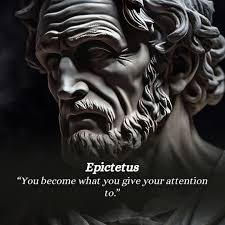
Saturday 22 March 2025
Landschlacht, Canton Thurgau, Switzerland

Above: St. Leonhard’s Chapel, Landschlacht, Canton Thurgau, Switzerland
As I try to revitalize my spirits in regards to my dual ambitions as teacher and writer, I slowly return to life through the writing of this blog.

I have tried to keep a chronicle of calendar dates since 1 February 2025 but life has been very distracting, so I have fallen far behind today’s actual calendar date.
Since my involuntary return to and exile in Switzerland I have lain relatively dormant in my communication, but a visit to nearby Konstanz, Germany, and the purchase of this weekend’s edition of the New York Times has inspired me to speak of the headlines that captured my attention and incorporate these events with those of 20 February where I left off in my calendar chronicles.

Above: Konstanz, Baden-Württemberg, Germany

Friday 21 February 2025
Eskişehir, Türkiye
Time is a river, carrying the echoes of voices past into the present, where they mingle with our own.

Above: Bridge over Porsuk River in Eskişehir, Türkiye
February 21 is a day marked by the births of three literary giants —José Zorrilla, W.H. Auden and Anaïs Nin — each of whom shaped our understanding of passion, tragedy, artistic creation, and the search for meaning.
Their words continue to resonate, transcending the limitations of time and culture, speaking to the universal struggles and desires that define human experience.

José Zorrilla was a Spanish poet and dramatist (21 February 1817 – 23 January 1893).
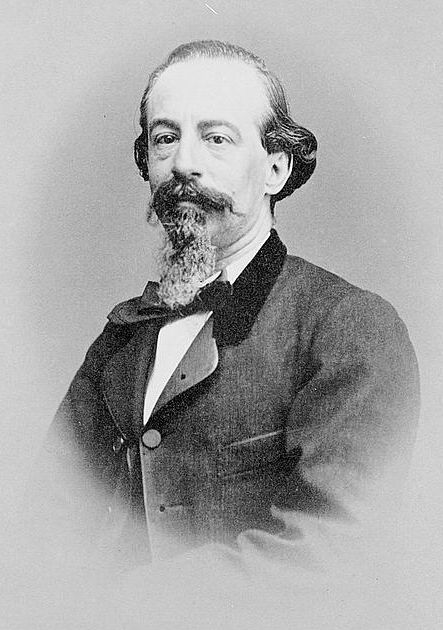
Above: Spanish author José Zorrilla
Zorrilla was born in Valladolid to a magistrate in whom Fernando VII placed special confidence.

Above: Valladolid, Castile and León, Spain
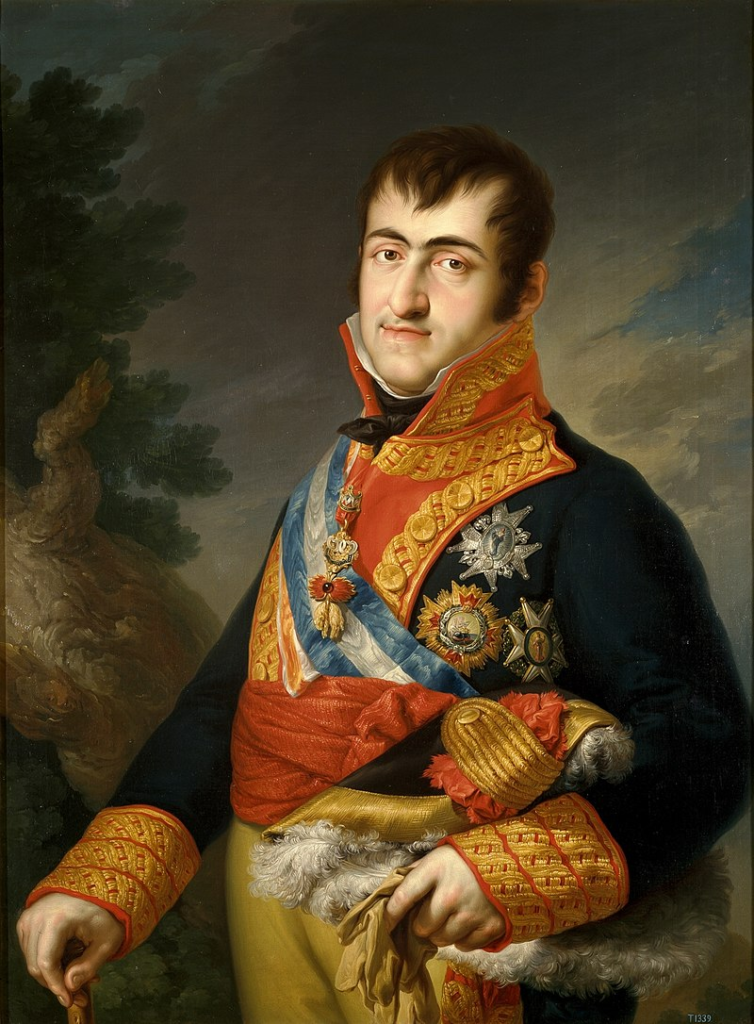
Above: Spanish King Fernando VII (1784 – 1833)
He was the son of José Zorrilla Caballero, an old-fashioned man with a traditionalist ideology, a follower of the pretender
Carlos María Isidro de Borbón and a reporter for the
Royal Chancellery.
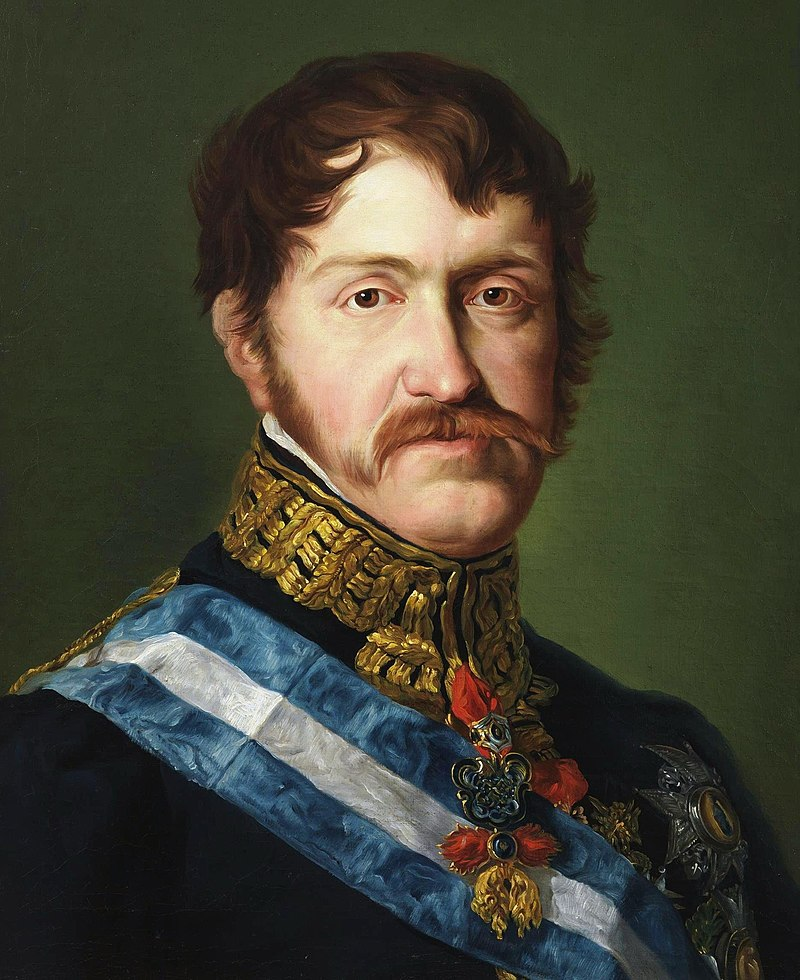
Above: Spanish Infante Don Carlos (1788 – 1855)
His mother, Nicomedes Moral, was a very pious woman.
After several years in Valladolid, the family passed through
Burgos (where his father was appointed Governor) and
Seville, finally settling, when the boy was nine years old (1827),
in Madrid, where his father worked with great zeal as mayor of the house and court and superintendent of police under the orders of
Francisco Tadeo Calomarde.
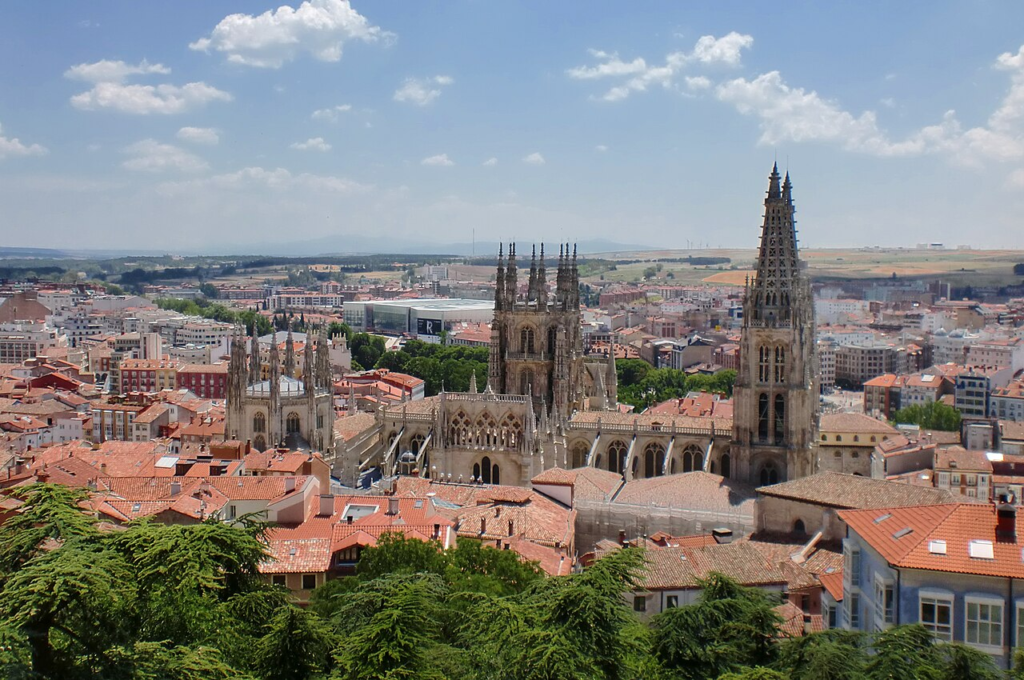
Above: Burgos, Castile and León, Spain

Above: Plaza de España, Seville, Andalusia, Spain

Above: Madrid, Spain
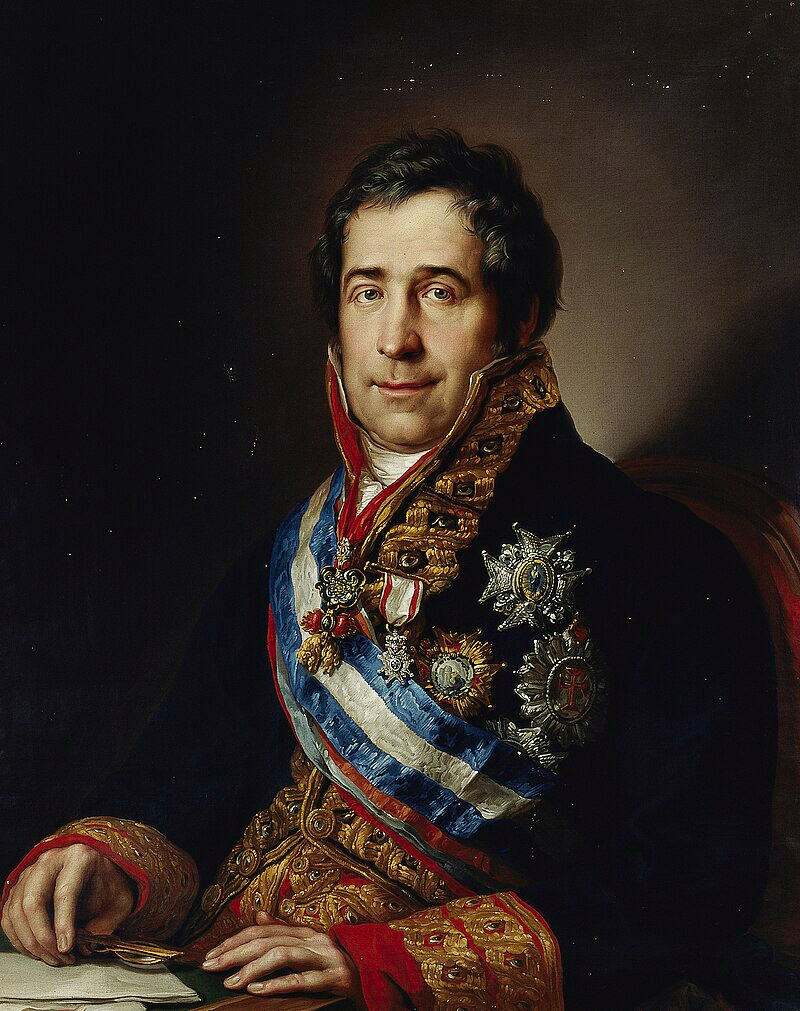
Above: Spanish Justice Minister Francisco Tadeo Calomarde (1773 – 1842)
The son entered the Seminary of Nobles, run by the Jesuits.

Above: Nobles’ Seminary, Madrid, Spain
There he participated in school theatrical performances and learned Italian well:
“At that school I began to develop the bad habit of neglecting the main things in order to focus on the secondary things, and, negligent in my serious studies of philosophy and the exact sciences, I applied myself to drawing, fencing, and fine arts, secretly reading Walter Scott, Fenimore Cooper and Chateaubriand, and finally, at the age of 12, committing my first crime of writing verse.
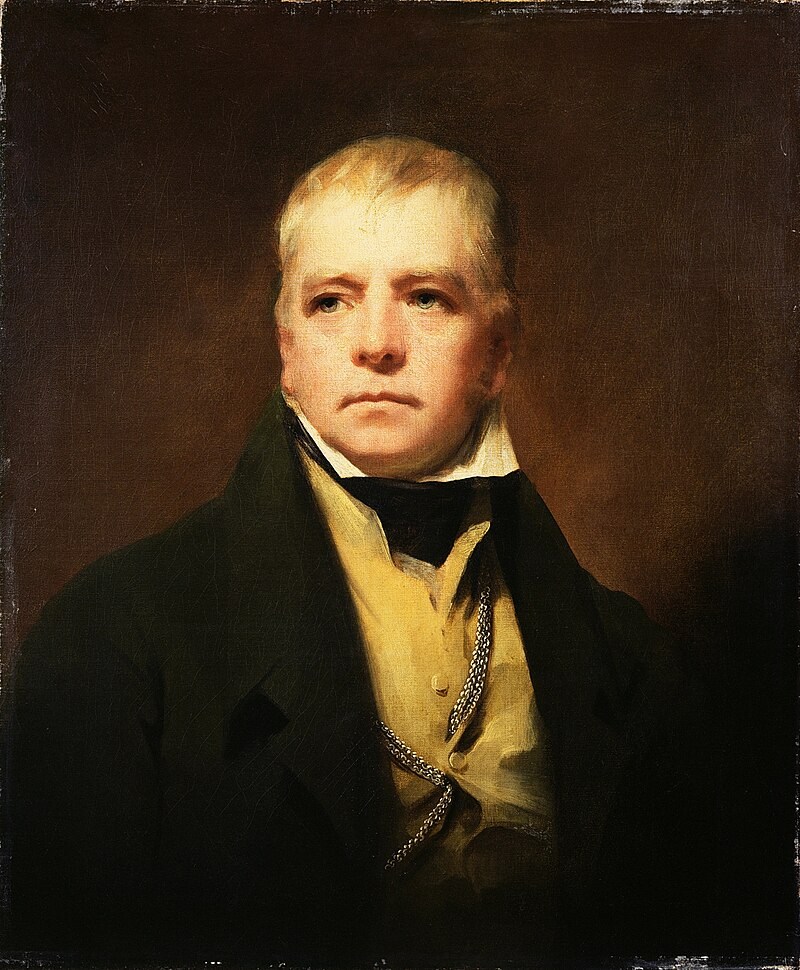
Above: Scottish writer Walter Scott (1771 – 1832)
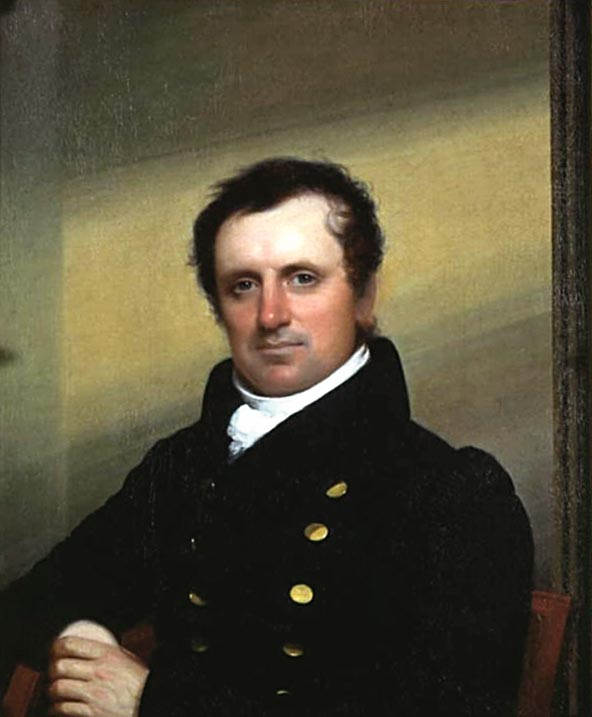
Above: American novelist James Fenimore Cooper (1789 – 1851)
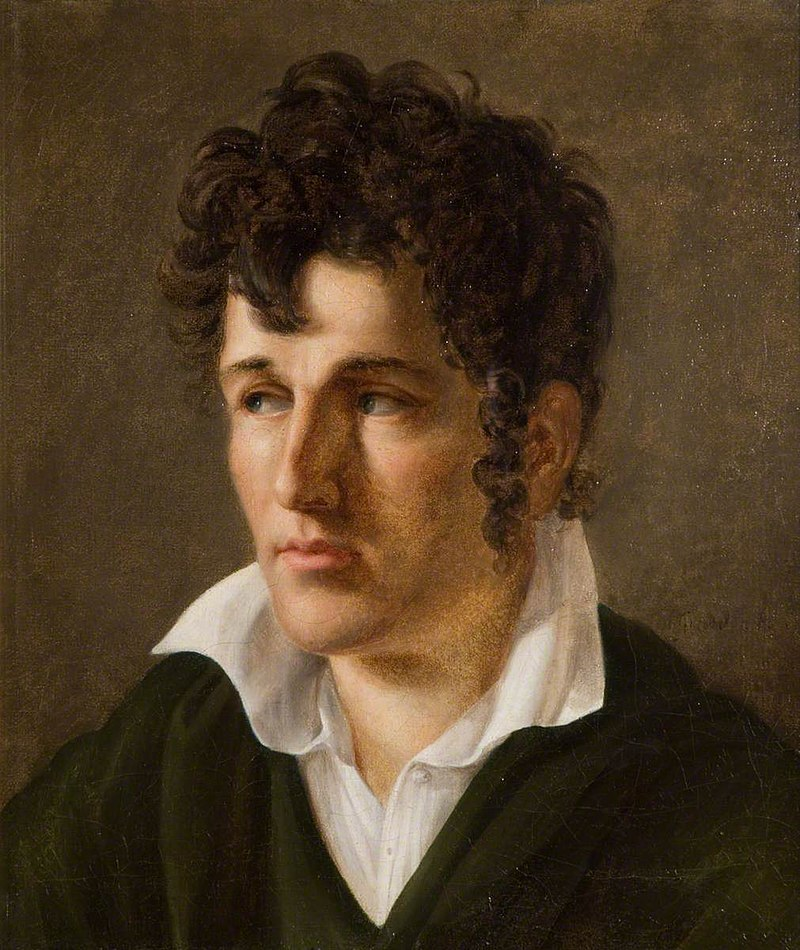
Above: French writer François-René de Chateaubriand (1768 – 1848)
The Jesuits celebrated them for me and encouraged my inclination.
I began to recite them, imitating the actors I saw at the theater when I sometimes went to the Prince’s Theater, which was then presided over by the mayors of the house and court, whose toga my father wore.
I became famous at the examinations and public events at the Seminary, and became a leading man at the theater where these were held and where some comedies from the ancient theater, revised by the Jesuits, were performed.
In which, according to morality, lovers became brothers.
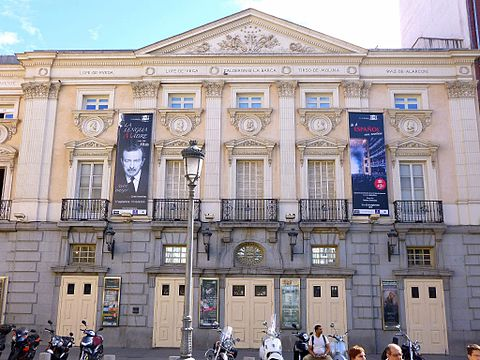
Above: Teatro Español, Madrid, Spain
With this system a moral hodgepodge resulted that made the malicious Ferdinand VII smile and his brother, the Infante Don Carlos, frown when they sometimes attended our Christmas services.
Don Carlos sent his children to our classrooms and to do his duty at the church in our chapel.
To which His Holiness Gregory XVI had sent his blessing and the wax bodies of two holy young martyrs, beheaded in Rome, whose beheaded figures frightened me so much that I never passed by the chapel at night on whose side altars they lay.”
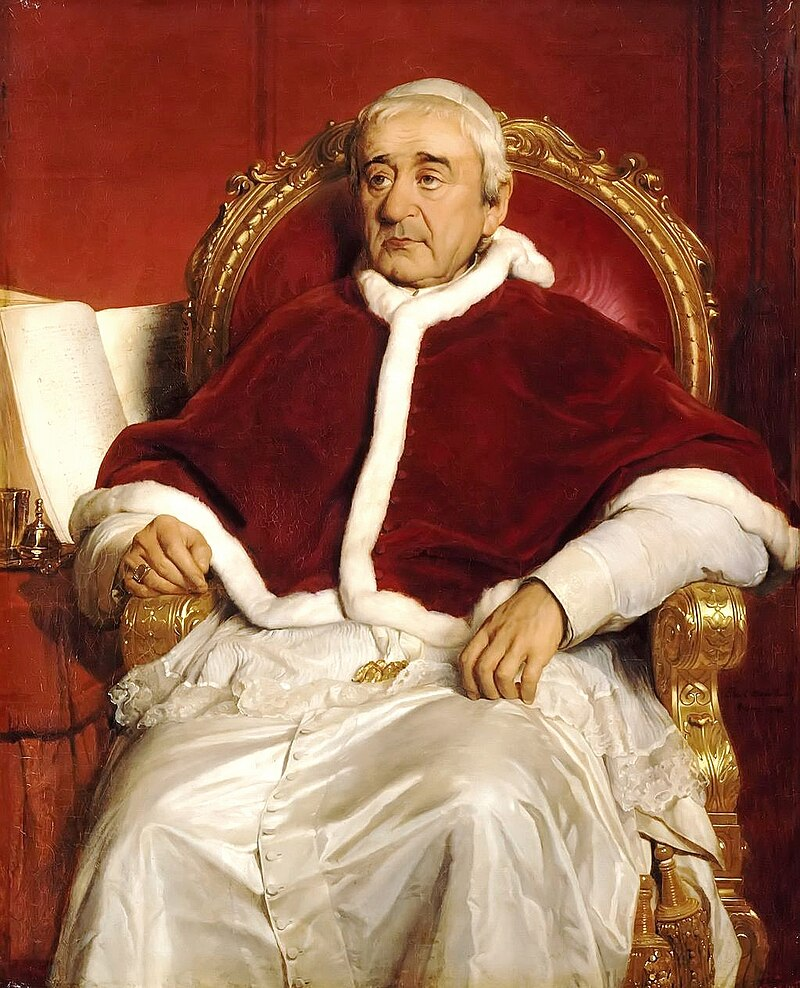
Above: Italian Pope Gregorio XVI (né Bartolomeo Alberto Cappellari Pagani Gesa)(1765 – 1846)
Zorrilla took part in the school performances of plays by Lope de Vega and Calderón de la Barca.
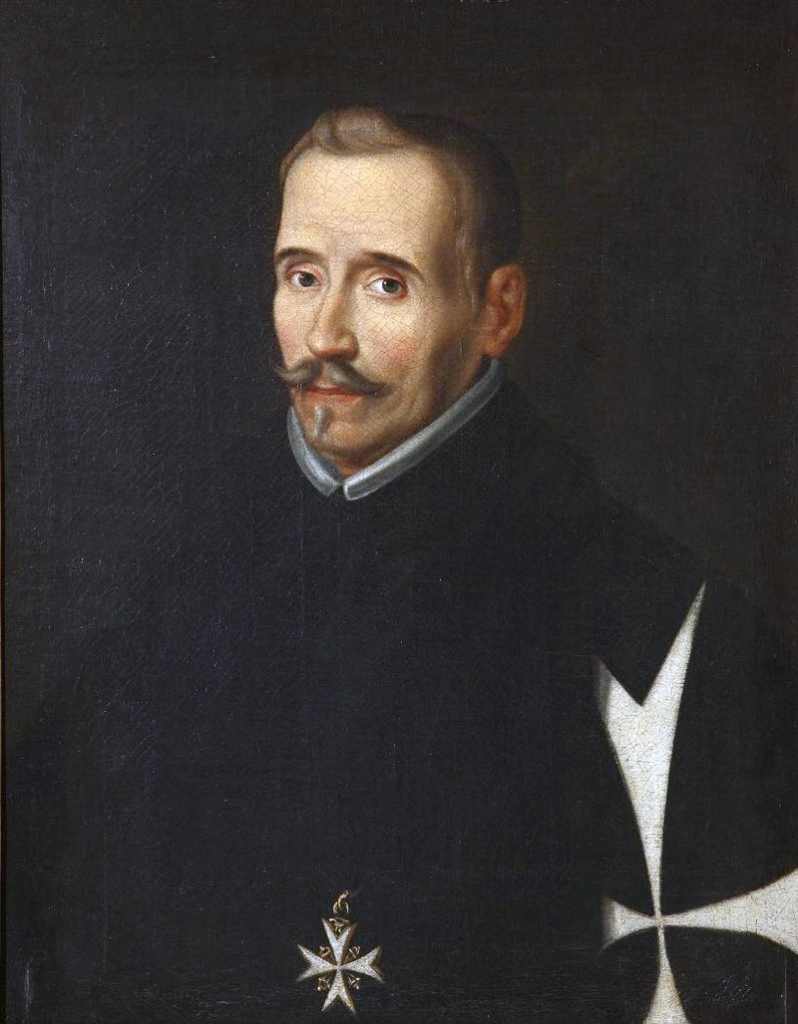
Above: Spanish writer Lope de Vega (1562 – 1635)
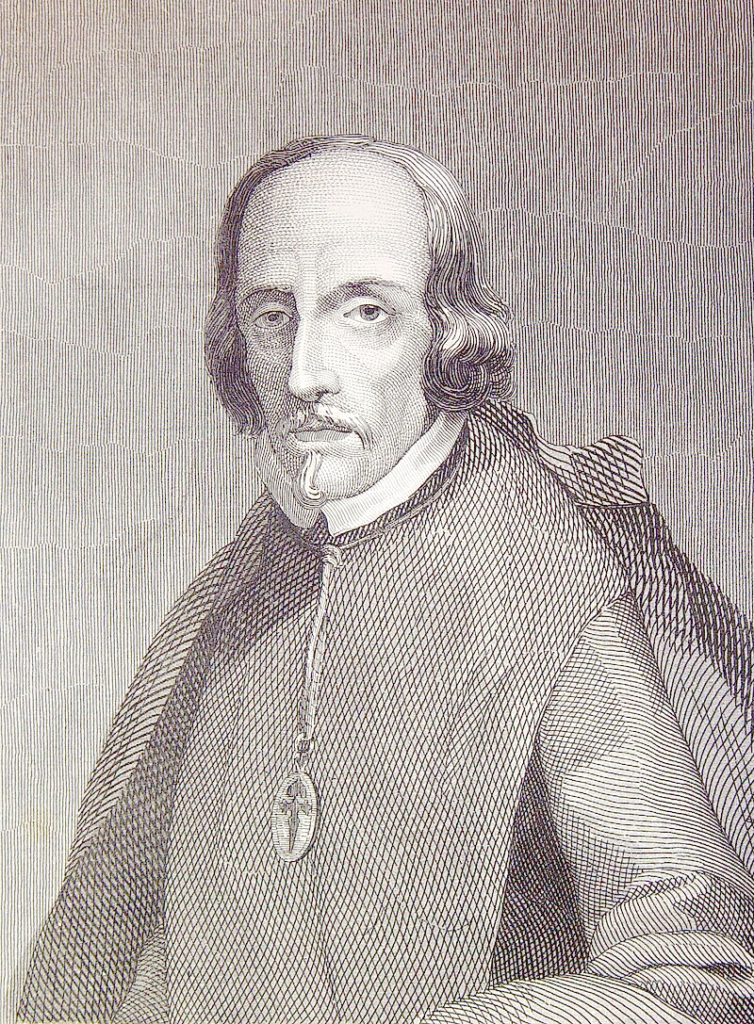
Above: Spanish writer Pedro Calderón de la Barca (1600 – 1681)
After the death of Ferdinand VII, the furious absolutist father was banished to Lerma.

Above: Lerma, Burgos, Spain
His son was sent to study law at the Royal University of Toledo under the supervision of a canon relative in whose house he stayed.
However, the son was distracted by other occupations.
The law books fell out of his hands.
The canon returned him to Valladolid to continue studying there (1833 – 1836).
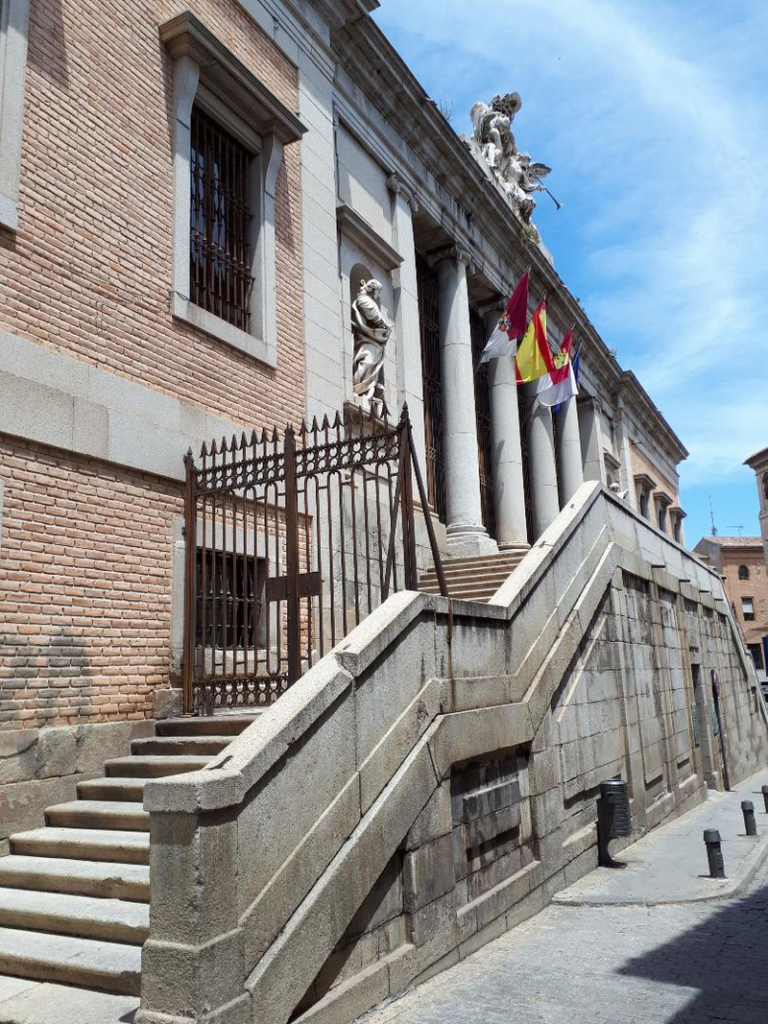
Above: Main facade of the Palace of Cardinal Lorenzana, inaugurated on 22 April 1799, which was the headquarters of the former
Royal University of Toledo (1520 – 1845)
When the wayward son arrived, he was admonished by his father, who then went to the town of his birth, Torquemada, and by
Manuel Joaquín Tarancón y Morón, Rector of the University and future Bishop of Córdoba.
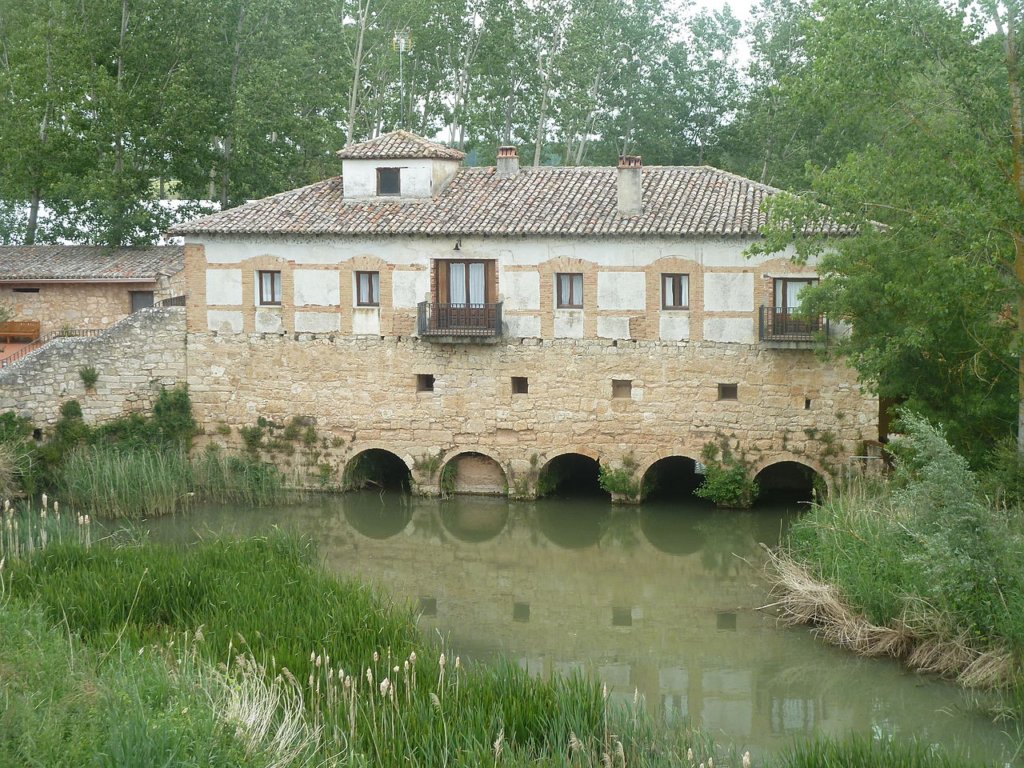
Above: Torquemada, Palencia, Spain
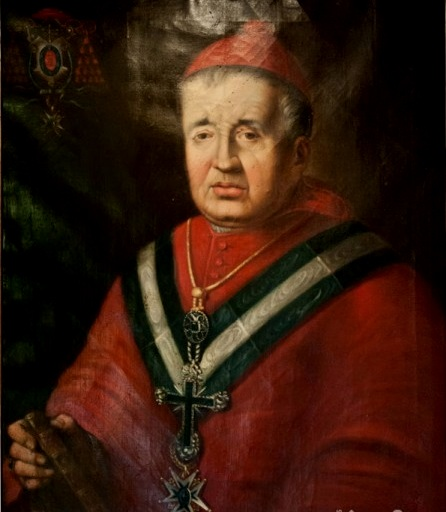
Above: Spanish Cardinal Manuel Joaquin Tarancón y Morón (1782 – 1862)
The imposed nature of his studies and his attraction to drawing, women (a cousin with whom he fell in love during a vacation) and the literature of authors such as Chateaubriand’s The Genius of Christianity, Alexandre Dumas, Victor Hugo, the Duke of Rivas, and Espronceda, whom he found and read at the house of Pedro de Madrazo y Kuntz, a friend who was studying law with him and felt the same attraction to art, ruined his future as a lawyer.

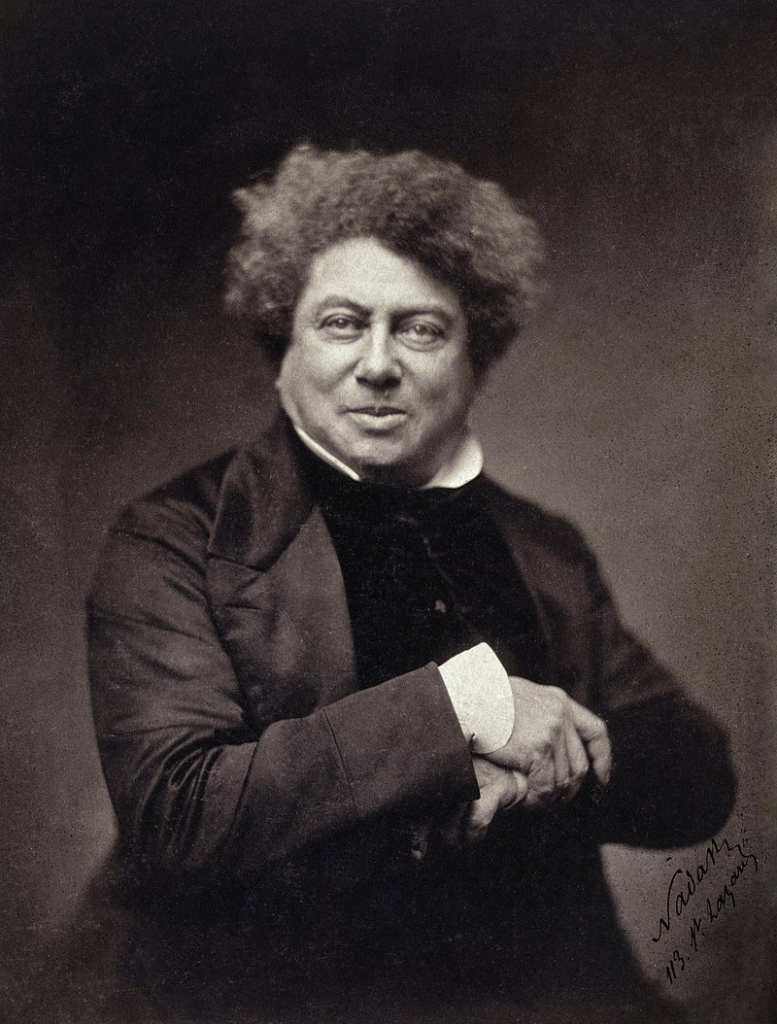
Above: French writer Alexandre Dumas (Père)(1802 – 1870)
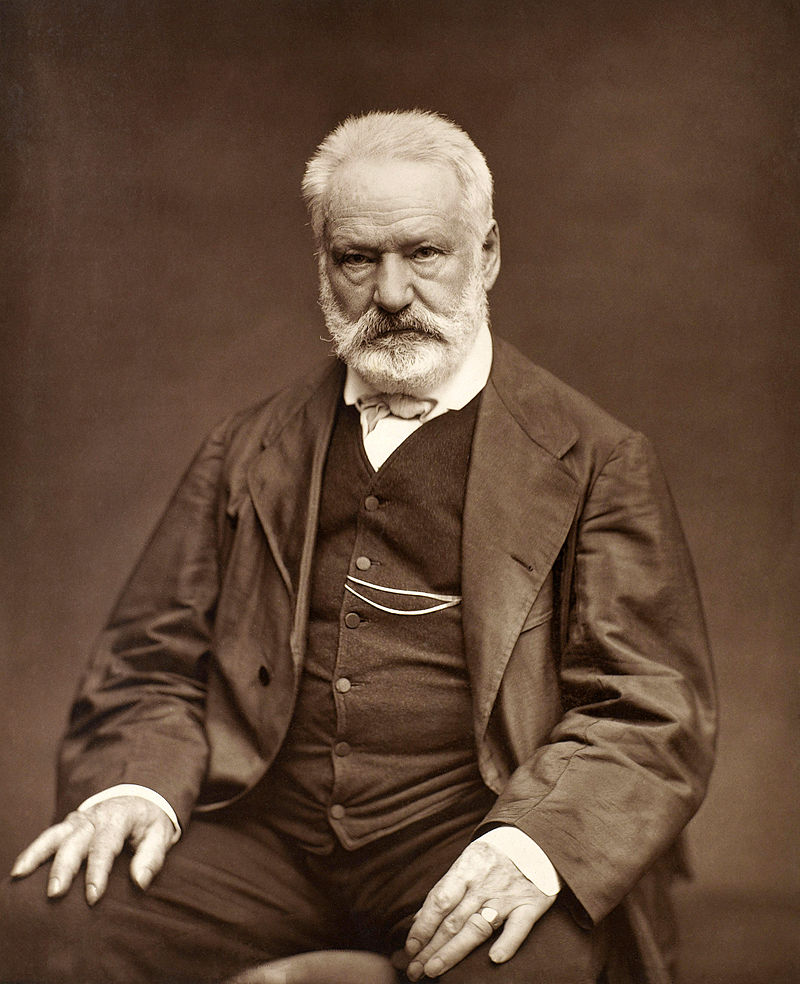
Above: French writer Victor Hugo (1802 – 1885)
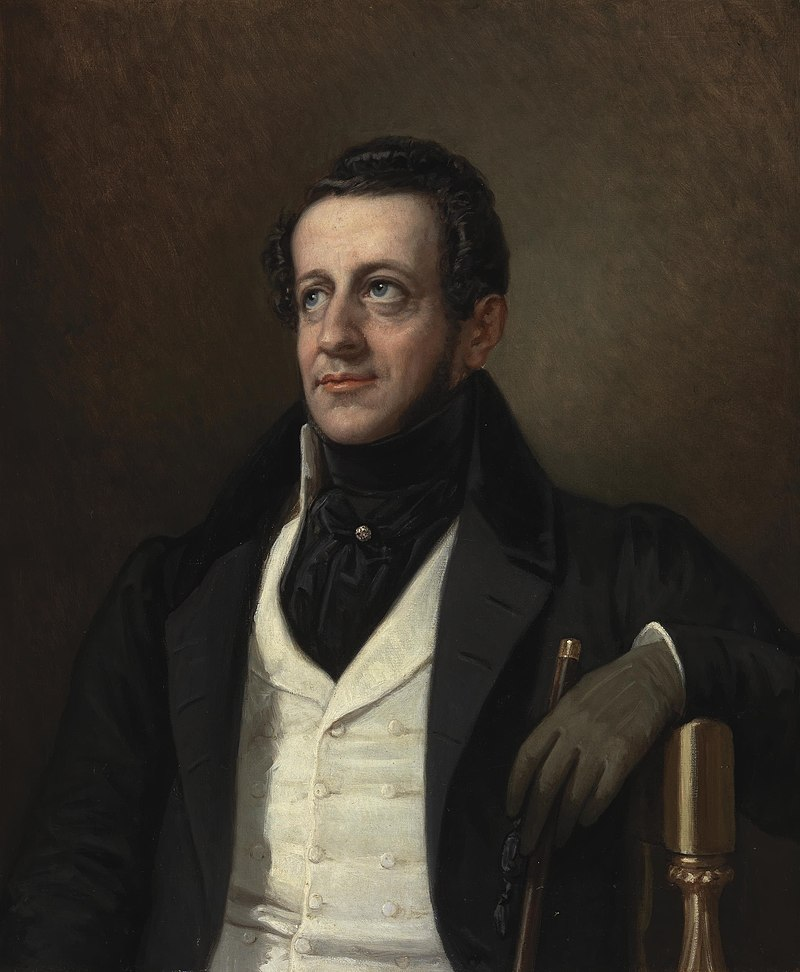
Above: Spanish writer/statesman Àngel de Saavedra, Duke of Rivas (1791 – 1865)
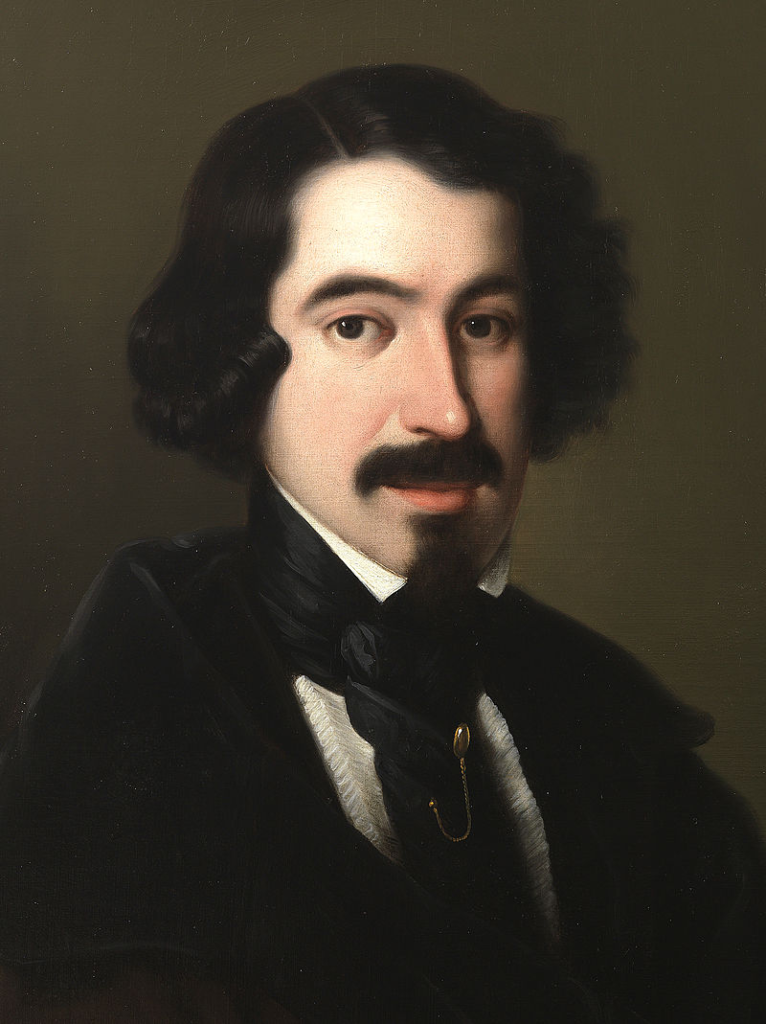
Above: Spanish writer José de Espronceda (1808 – 1842)
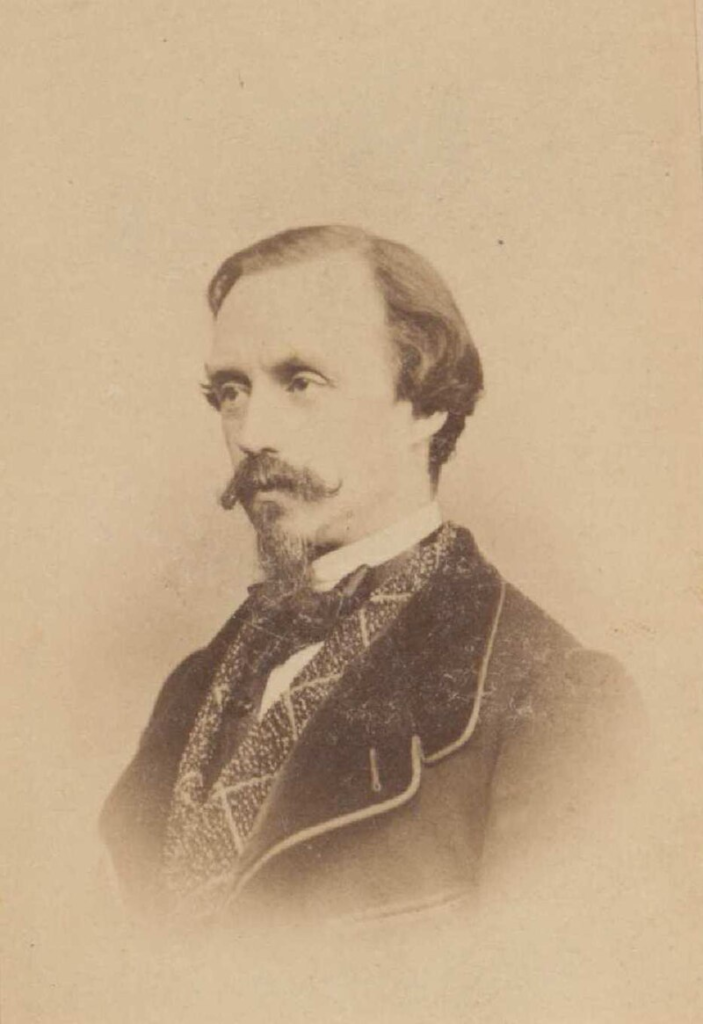
Above: Spanish artist Pedro de Madrazo y Kuntz (1816 – 1898)
By then Zorrilla discovered that he was a sleepwalker:
Sometimes he would go to bed leaving a poem unfinished and wake up seeing it finished, or he would go to bed with a beard and wake up shaved, so he asked to be allowed to sleep under lock and key.
The father gave up trying to get anything out of his son and ordered him to be taken to Lerma to dig vineyards.
But when he was halfway there, the son stole a mare from a cousin, fled to Madrid (1836) and began his literary career, frequenting the artistic and bohemian circles of Madrid, together with his friend Miguel de los Santos Álvarez, and suffering hunger.
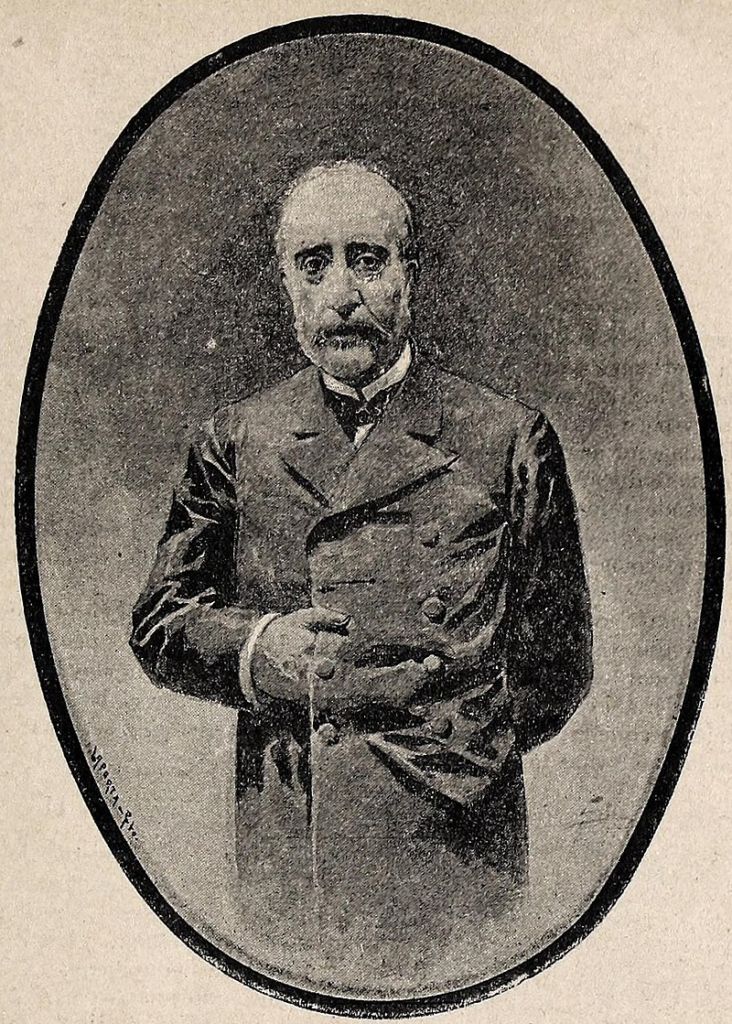
Above: Spanish writer Miguel de los Santos Álvarez (1818 – 1892)
He pretended to be an Italian artist to draw for the Museum of Families, published some poems in El Artista and gave revolutionary speeches at the Café Nuevo, so that he ended up being pursued by the police.
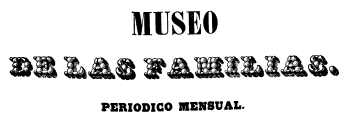
Above: Title of the Spanish cultural magazine
Museo de las Familias (Museum of Families)
He took refuge in the house of a gypsy.
At that time he became friends with the Italian baritone Joaquín Massard.
The death of the satirist Mariano José de Larra brought Zorrilla into notice.
His elegiac poem, read at Larra’s funeral in February 1837, introduced him to the leading men of letters.
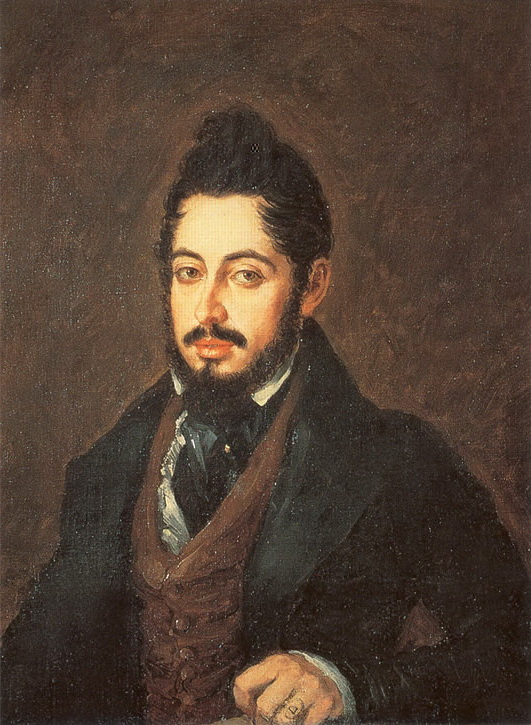
Above: Spanish writer Mariano José de Larra (1809 – 1837)
Upon Larra’s death, at Massard’s insistence, José Zorrilla composed and recited in his memory a poem that would earn him the deep friendship of José de Espronceda, Antonio García Gutiérrez and Juan Eugenio Hartzenbusch and would ultimately establish him as a renowned poet, to which these verses belong:
That the poet, in his mission
On the earth he inhabits
Is a cursed plant
With fruits of blessing
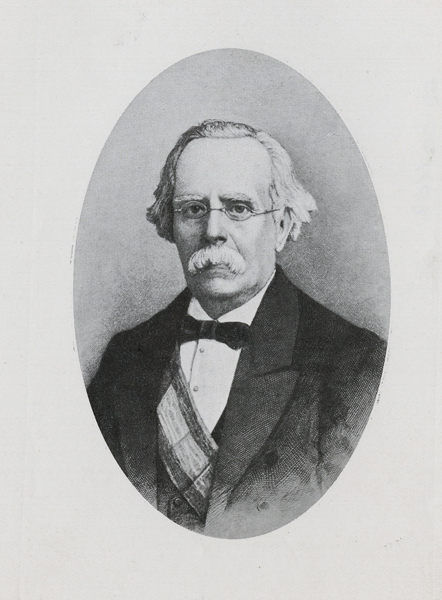
Above: Spanish writer Antonio García Gutiérrez (1813 – 1884)
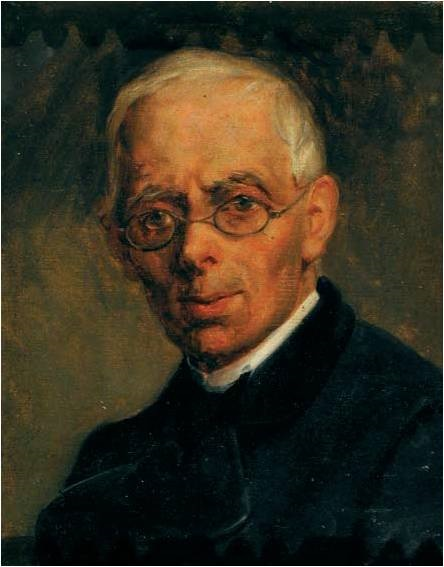
Above: Spanish writer Juan Eugenio Hartzenbusch (1806 – 1880)
Zorrilla then began writing for the newspapers El Español, where he replaced the deceased, and El Porvenir, where he earned a salary of six hundred reales.
He began to frequent the El Parnasillo gatherings and read poems at El Liceo.
El Parnasillo was a Romantic gathering held at the Café del Príncipe on the street of the same name.
This establishment, now defunct, was located in Madrid’s Barrio de las Letras, next to the Teatro Español, formerly the Corral del Príncipe.
From 1829 onwards, the Café and gathering became a meeting place for writers belonging to the Romantic movement.
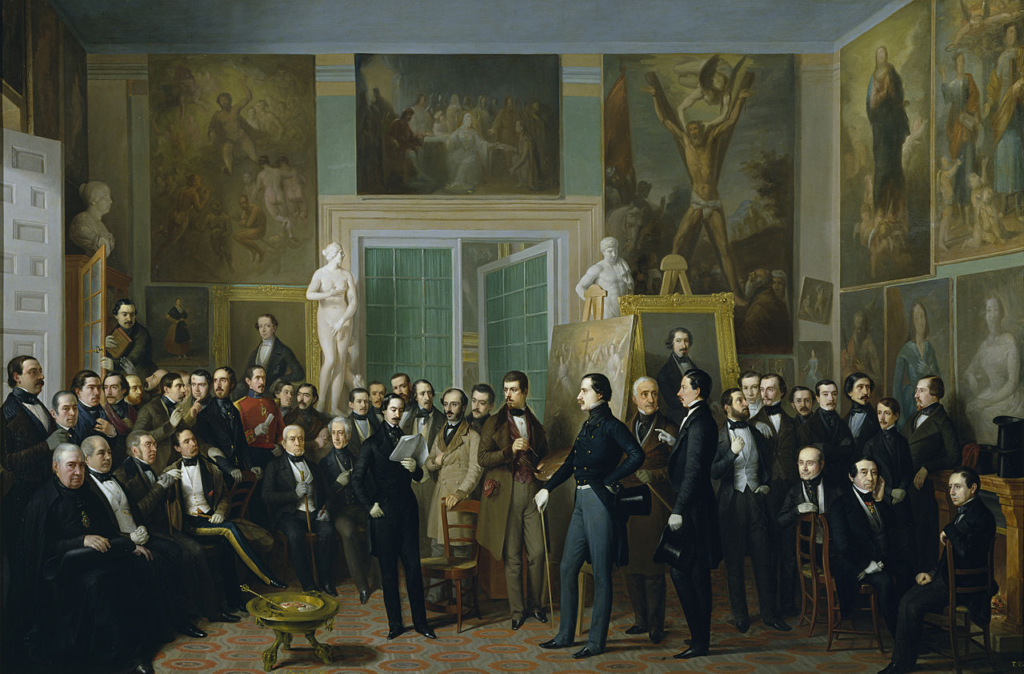
Above: Some of the regular members of the Parnasillo gathering appear in this painting by Antonio María Esquivel, gathered in his studio in 1846.
This work is the most famous painting by the Sevillian painter Antonio María Esquivel (1806 – 1857), and one of the most outstanding of Spanish Romanticism.
The characters portrayed, apart from the painter himself, are the following:
- Antonio Ferrer del Río (1814 – 1872)
- Juan Eugenio Hartzenbusch (1806 – 1880)
- Juan Nicasio Gallego (1777 – 1853)
- Antonio Gil y Zárate (1793 – 1861)
- Tomás Rodríguez Rubí (1817 – 1890)
- Isidoro Gil y Baus (1814 – 1866)
- Cayetano Rosell y López (1817 – 1883)
- Antonio Flores (1818 – 1866)
- Manuel Bretón de los Herreros (1796 – 1873)
- Francisco González Elipe (1813 – 1868)
- Patricio de la Escosura (1807 – 1878)
- José María Queipo de Llano, Count of Toreno (1786 – 1843)
- Antonio Ros de Olano (1808 – 1887)
- Joaquin Francisco Pacheco (1808 – 1865)
- Mariano Roca de Togores (1812 – 1889)
- Juan Gonzalez de la Pezuela (1809 – 1906)
- Angel de Saavedra, Duke of Rivas (1791 – 1865)
- Gabino Tejado (1819 – 1891)
- Javier de Burgos (1778 – 1848)
- José Amador de los Rios (1818 – 1878)
- Francisco Martinez de la Rosa (1787 – 1862)
- Carlos Garcia Doncel (1815 – 1850)
- Luis Valladares y Garriga (d. 1856)
- José Zorrilla (1817 – 1893)
- José Guell y Renté (1818 – 1884)
- José Fernandez de la Vega (1803 – 1851)
- Ventura de la Vega (1807 – 1865)
- Luis de Olona (1823 – 1863)
- Julian Romea (1818 – 1863)
- Manuel José Quintana (1772 – 1857)
- José de Espronceda (1808 – 1842)
- José Maria Diaz (1813 – 1888)
- Ramon de Campoamor (1817 – 1901)
- Manuel Cañete (1822 – 1891)
- Pedro de Madrazo y Kuntz (1816 – 1898)
- Aureliano Fernandez Guerra (1816 – 1891)
- Ramon de Mesonero Romanos (1803 – 1882)
- Candido Nocedal (1821 – 1885)
- Gregorio Romero de Larrañaga (1814 – 1872)
- Bernardino Fernandez de Velasco y Pimentel, Duke of Frias (1783 – 1851)
- Eusebio Asquerino (1822 – 1892)
- Manuel Juan Diana (1814 – 1881)
- Agustín Durán (1793 – 1862)
Zorrilla was also an editor for El Entreacto, a theatre criticism publication.
In 1837 he published a book of verses, his first book, Poesías (Poems), mostly imitations of Alphonse de Lamartine and Victor Hugo, with a prologue by Nicomedes Pastor Díaz, which was so favorably received that he printed six more volumes within three years.
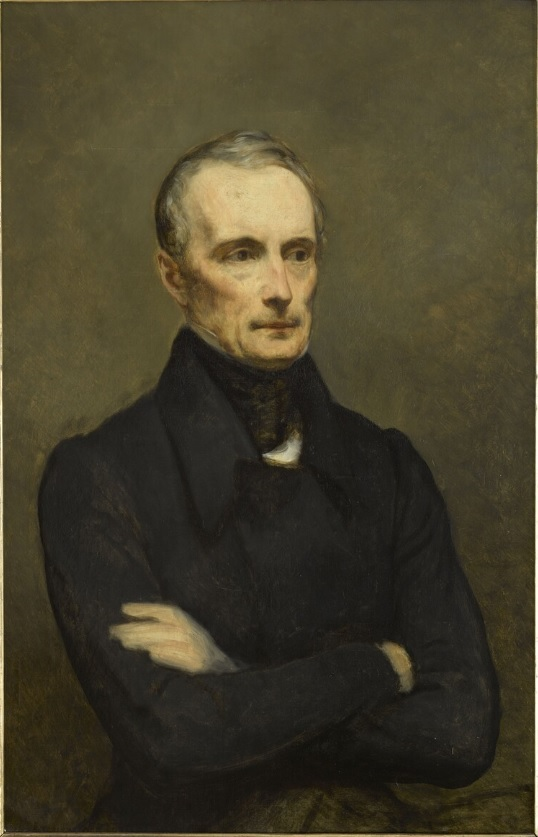
Above: French writer Alphonse de Lamartine (1790 – 1869)

Above: Spanish writer Nicomedes Pastor Díaz (1811 – 1863)
His first play, written in collaboration with García Gutiérrez, was Juan Dándole, which premiered in July 1839 at the Teatro del Príncipe.

In 1840 he published his famous Cantos del trovador (Cantos of the troubadour) and premiered three other plays, Más vale llegar a tiempo (It’s worth arriving on time), Vivir loco y morir más (Living crazy and dying more), and Cada cual con su razón (Each with his own reason).


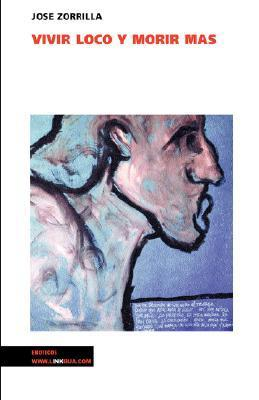
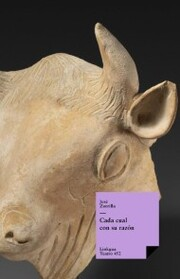
In 1842 his Summer Vigils appeared.
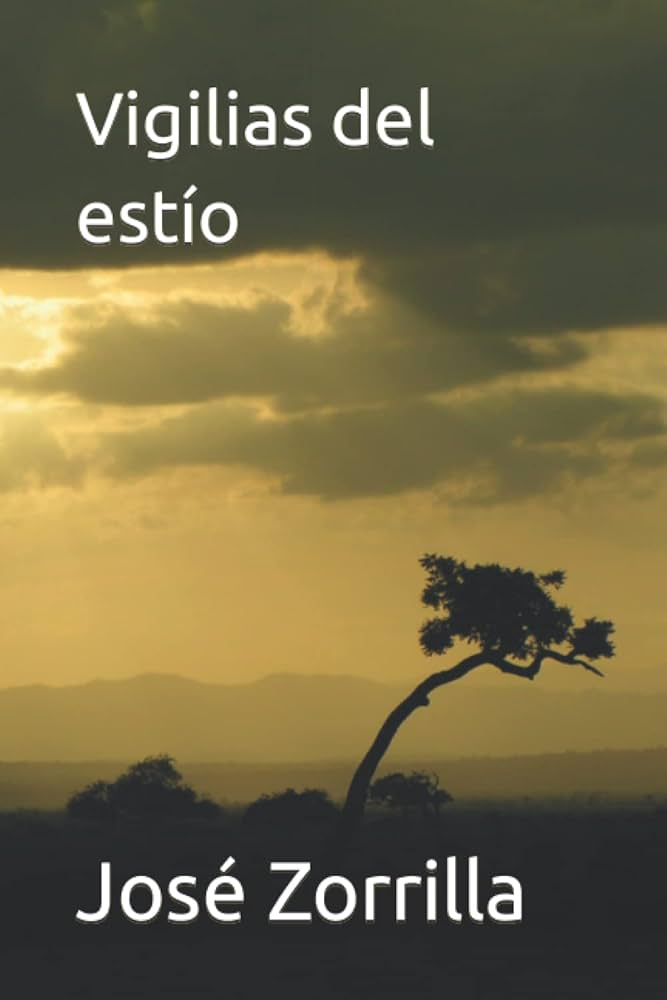
He released his plays The Shoemaker and the King (first and second parts), The Echo of the Torrent and The Two Viceroys.
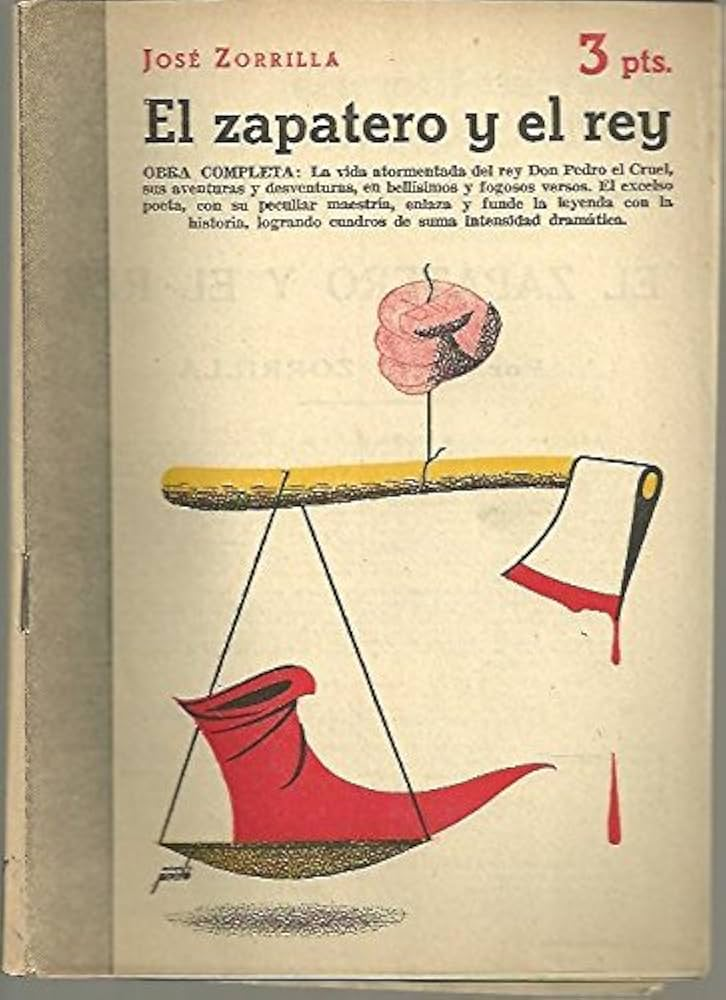
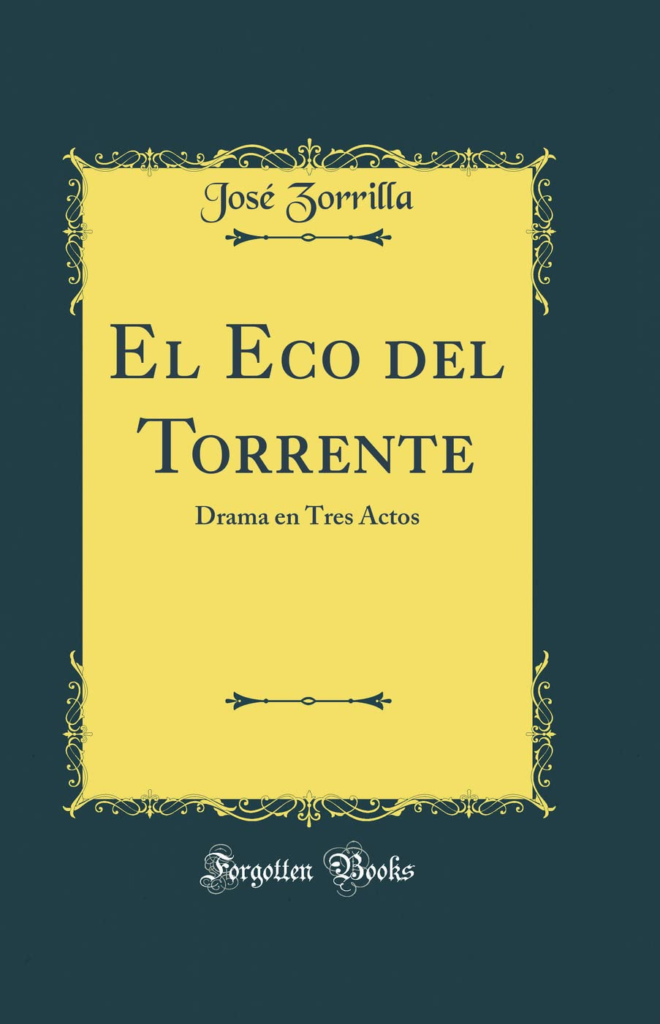
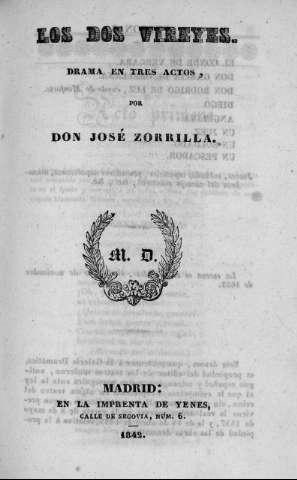
From 1840 to 1845, Zorrilla was exclusively contracted by Juan Lombía, entrepreneur of the Teatro de la Cruz, where he premiered no less than 22 dramas during those five seasons.

Above: Approximate location of the former Corral de comedias de la Cruz in Madrid, on Pedro Teixeira’s map, around 1656
His Cantos del trovador (Songs of the troubador)(1841), a collection of national legends written in verse, made Zorilla second only to José de Espronceda in popular esteem.
He was so recognized that at the end of 1843 he received from the Government of Spain the supernumerary cross of the Royal and Distinguished Order of Carlos III together with playwrights Manuel Bretón de los Herreros and Juan Eugenio Hartzenbusch.

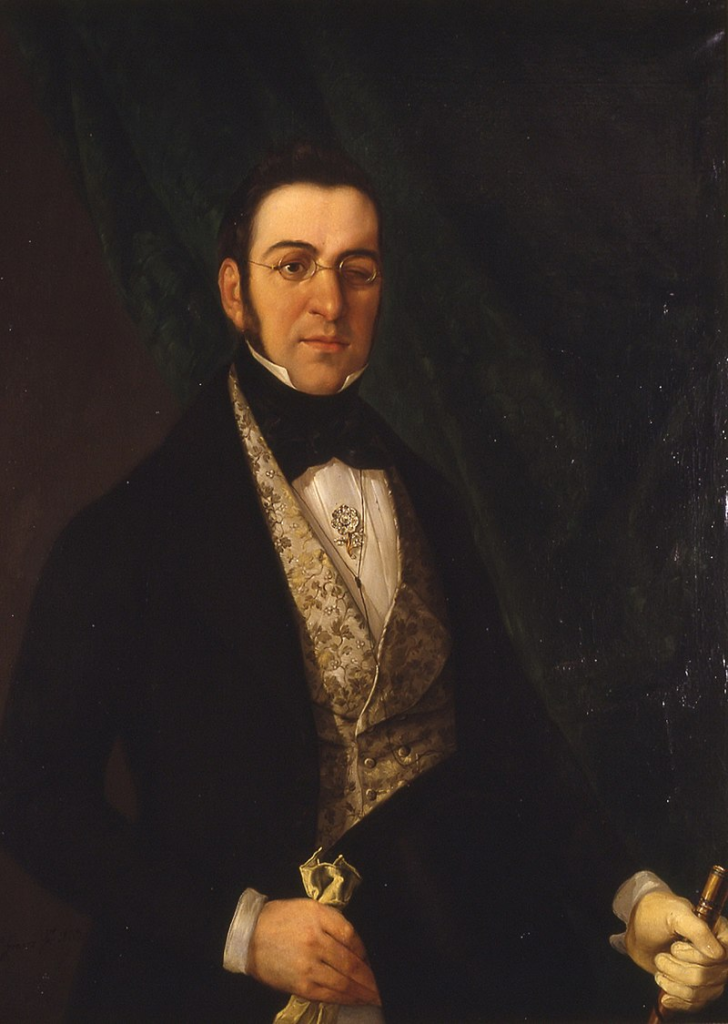
Above: Spanish playwright Manuel Bretón de los Herreros (1796 – 1873)
National legends also supply the themes of his dramas, which Zorilla often constructed by adapting older plays that had fallen out of fashion.
For example, in El Zapatero y el Rey (The shoemaker and the King) he recasts El montanés Juan Pascual (The mountaineer Juan Pascual) by Juan de la Hoz y Mota.
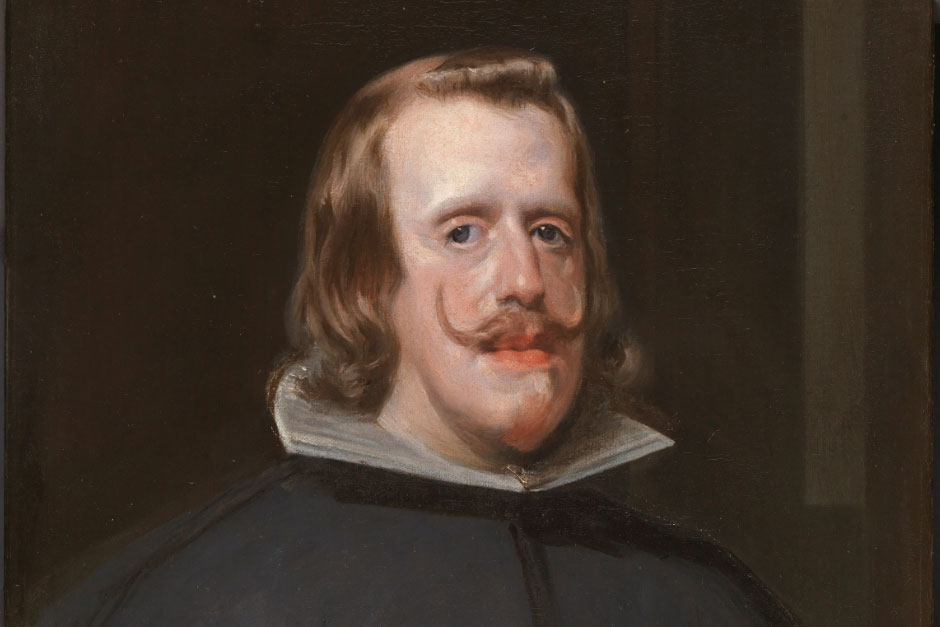
Above: Spanish playwright Juan de la Hoz y Mota (1622 – 1714)
In La mejor Talon la espada (The best talon: the sword) he borrows from Agustín Moreto y Cavana’s Travesuras del estudiante Pa-atoja (Student Pa-atoja’s pranks).
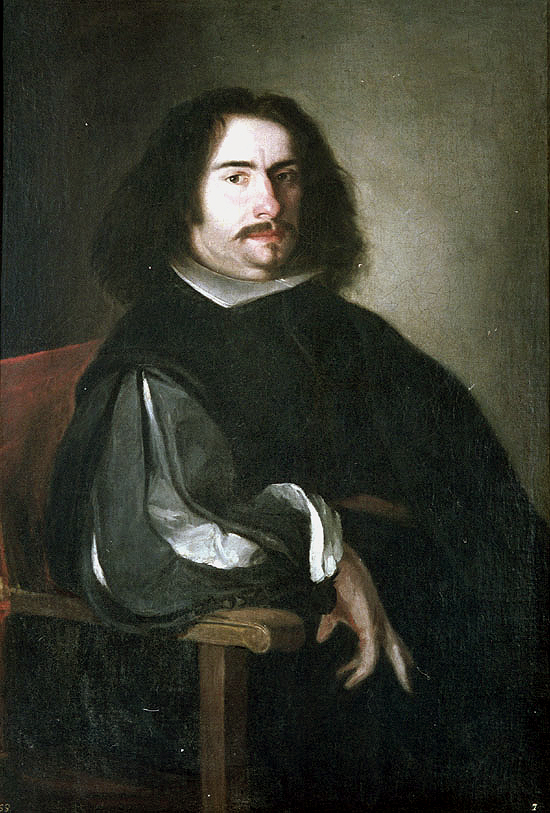
Above: Spanish playwright Agustín Moreto (1618 – 1669)
His famous play Don Juan Tenorio is a combination of elements from Tirso de Molina’s Burlador de Sevilla (The trickster of Seville) and from Alexandre Dumas, Père’s Don Juan de Marana (which itself derives from Les Âmes du purgatoire (The souls of Purgatory) by Prosper Mérimée).
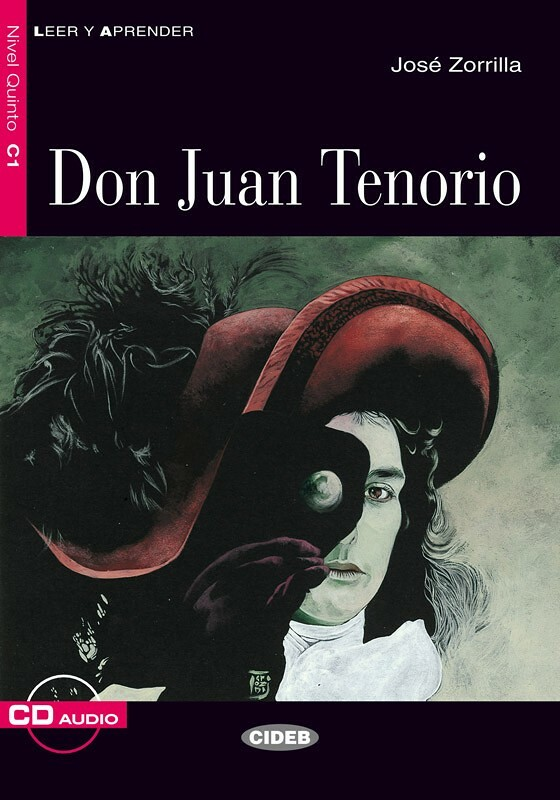
However, plays like Sancho García, El Rey loco (The mad King), and El Alcalde Ronquillo (Mayor Ronquillo) are much more original.
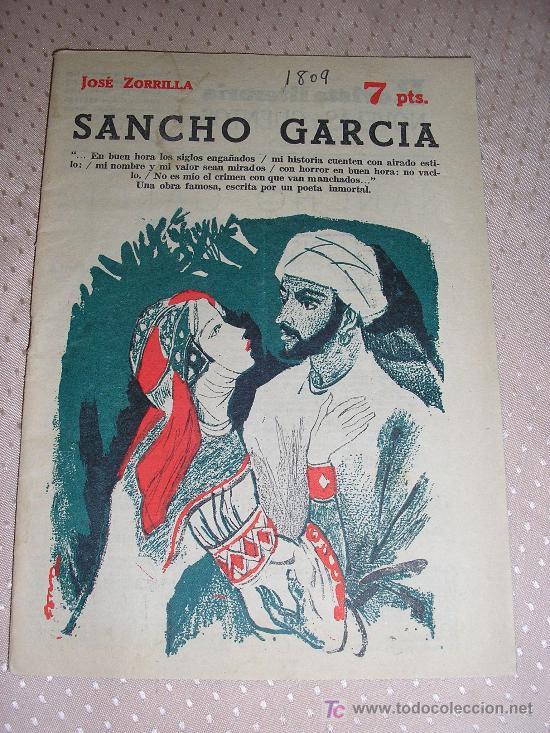
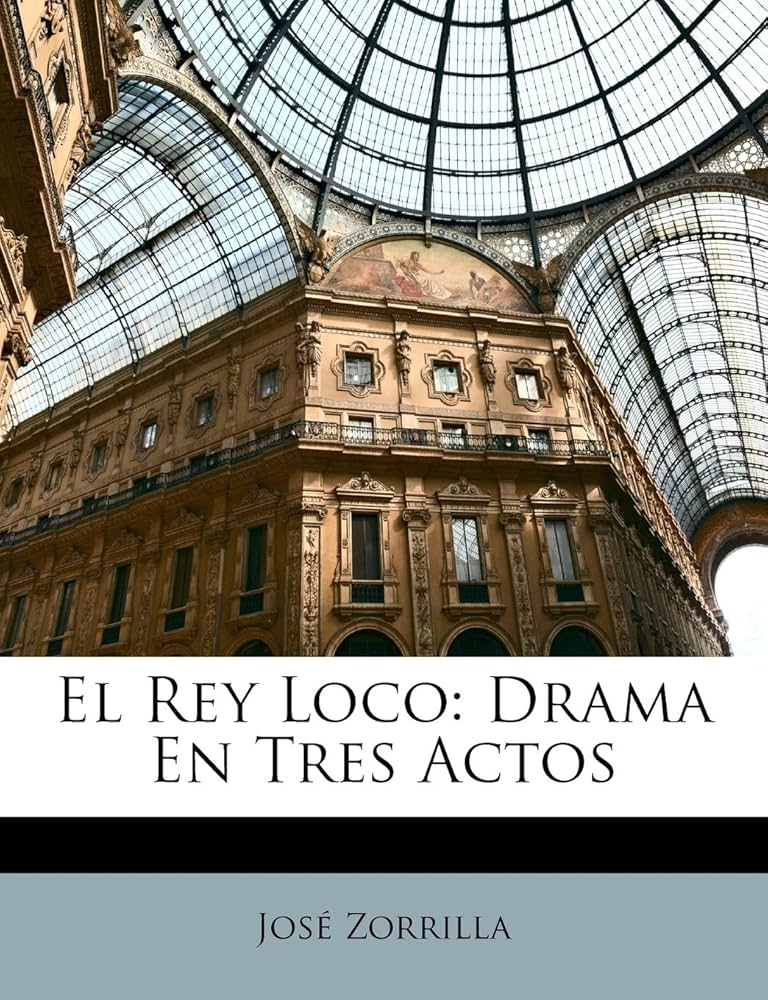
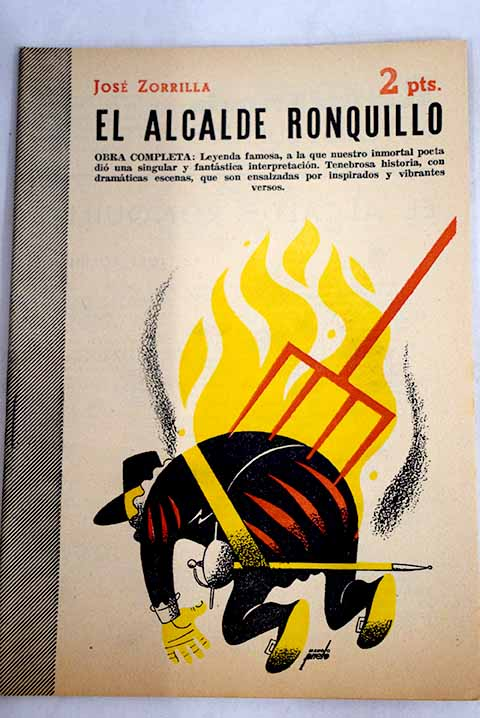
He considered his last play, Traidor, inconfeso y mártir (Unconfessed traitor and martyr)(1845), to be his best play.
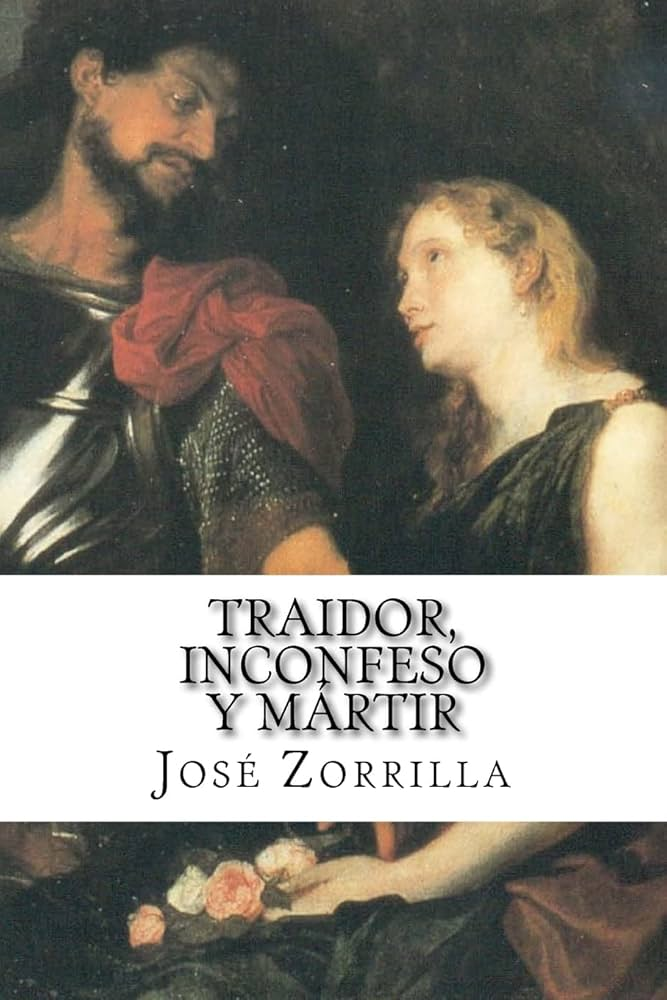
In 1838 he had married Florentina Matilde O’Reilly, a ruined Irish widow 16 years his senior and with a son from her previous husband, José Bernal, but the marriage was unhappy.
One of their daughters died a year after she was born.
He had several lovers – something that Doña Florentina was not willing to tolerate and aired publicly, and which ended up alienating the poet from his family, making him abandon the theater and, finally, after the dazzling success of Don Juan Tenorio in 1844, conceived in a sleepless night and written in 21 days, he abandoned his wife in 1845 and emigrated to France and then to Mexico (1855), where his wife’s angry letters and anonymous accusatory letters still arrived.
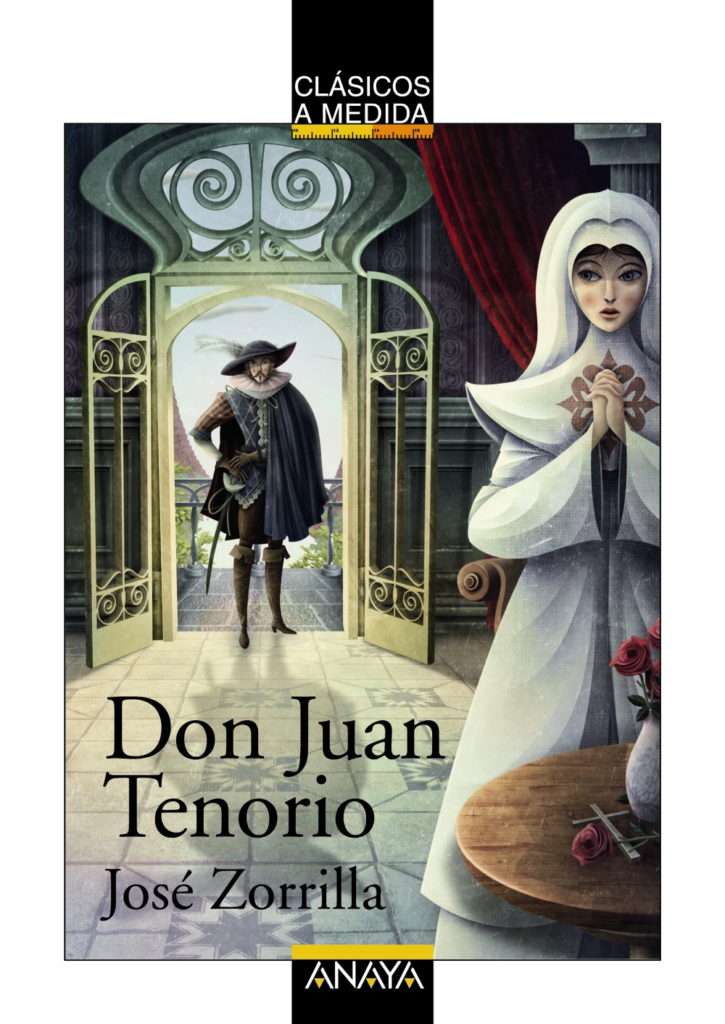
He had to return to Madrid when his mother died in 1846.
Zorrilla again left Spain.
He resided for a while at Bordeaux, then settled in Paris, where his incomplete poem Granada was published in 1852.

Upon his return to Paris, he printed two volumes of Works of D. José Zorrilla (I: Poetic Works / II: Dramatic Works) at the Casa Baudry, along with a biography of Ildefonso Ovejas.
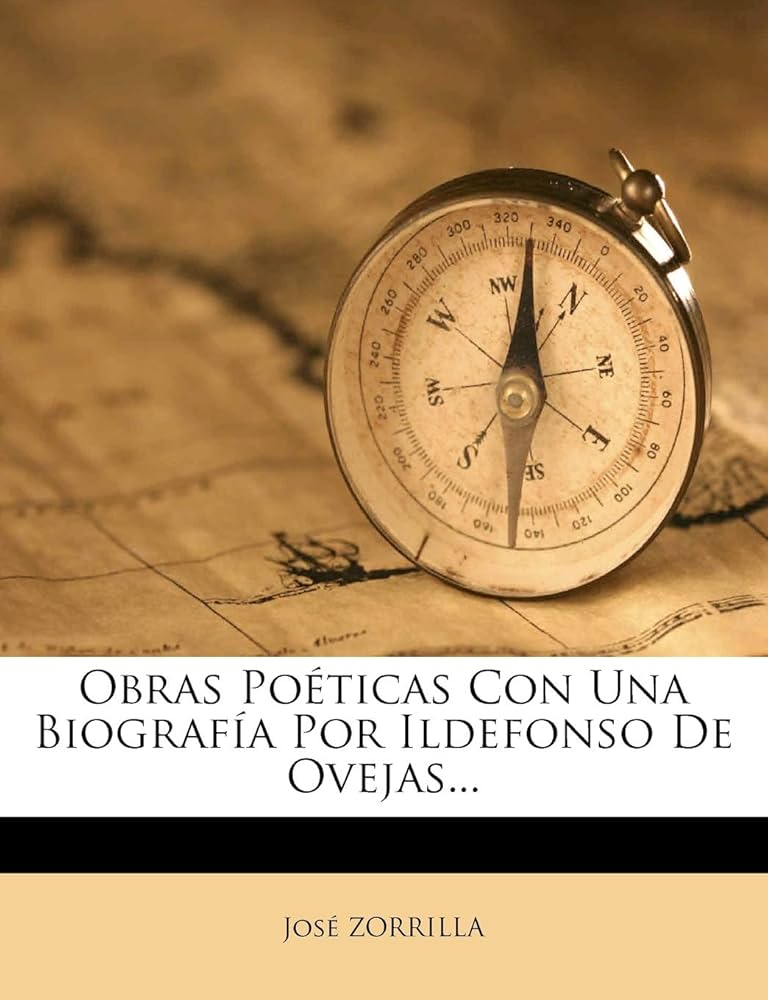
There he maintained a friendship with Alexandre Dumas, Alfred de Musset, Victor Hugo, Théophile Gautier and George Sand.

Above: French writer Alfred de Musset (1810 – 1857)
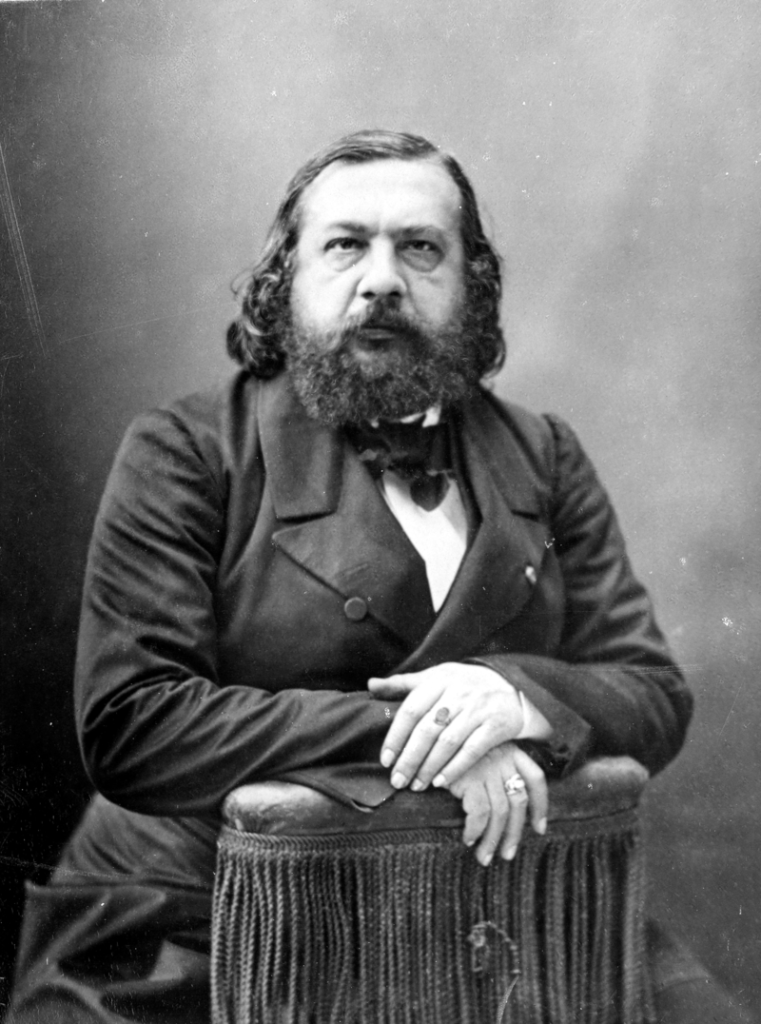
Above: French writer Théophile Gautier (1811 – 1872)
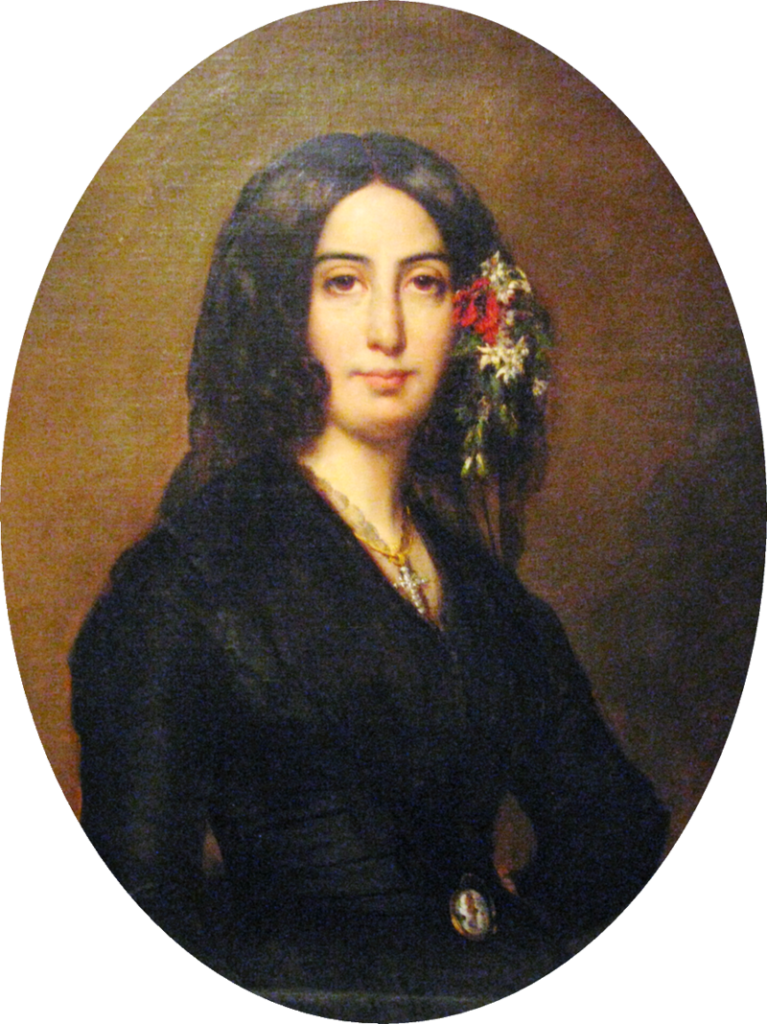
Above: French writer Amantine Aurore Lucile Dupin (aka George Sand)(1804 -1876)
As he had sold off the rights to Tenorio at a loss, he was unable to collect royalties for its many revivals.
His efforts to recover them were in vain.
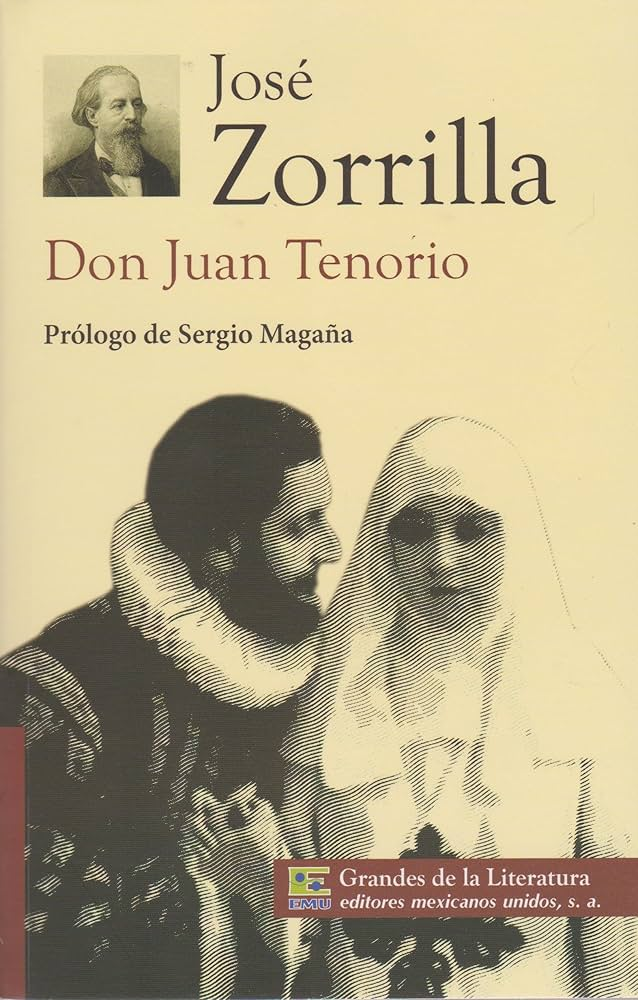
In 1849, he received several honors:
He was made a member of the board of the recently founded
Teatro Español.
The Liceo organized a session to publicly exalt him.
The Royal Spanish Academy admitted him to its ranks, although he only took possession of the literary chair on 31 May 1885, with the verse speech Poetic Autobiography and Self-Portrait.
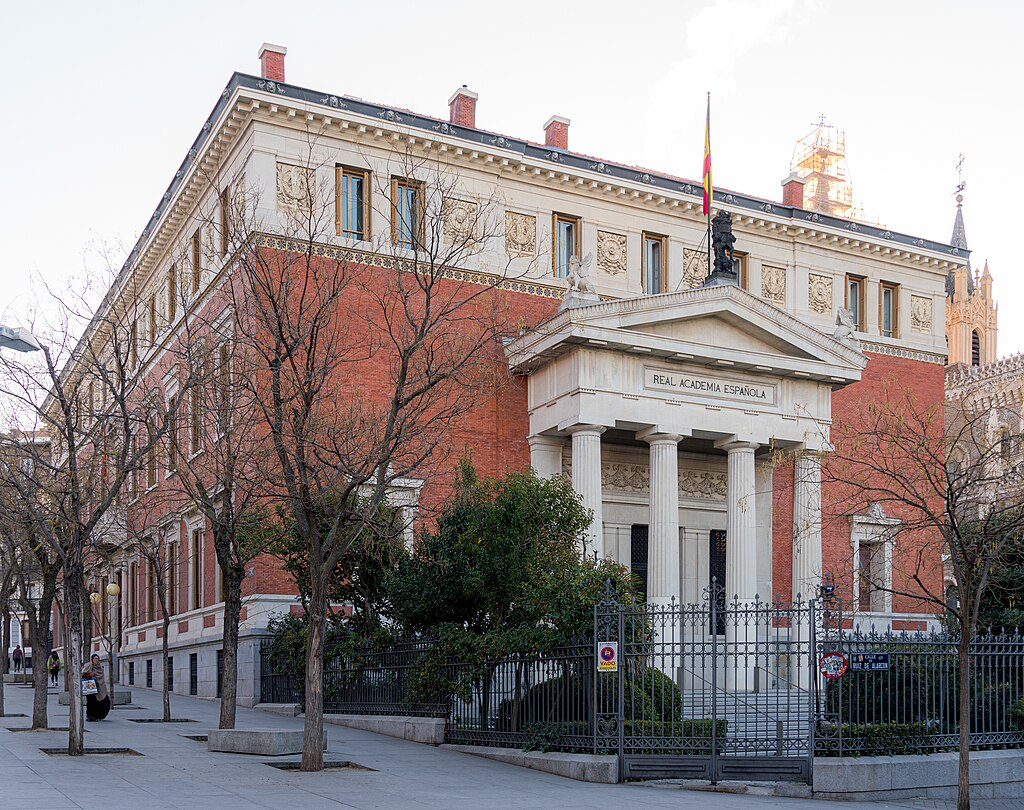
Above: Real Academia Española, Madrid, Spain
But his father died that same year and that was a hard blow for him, because he refused to forgive him, leaving a great weight on the conscience of the son (and considerable debts), which affected his work. El puñal del godo and Traidor, inconfeso y mártir were great successes, some more in their revivals than in their premieres.
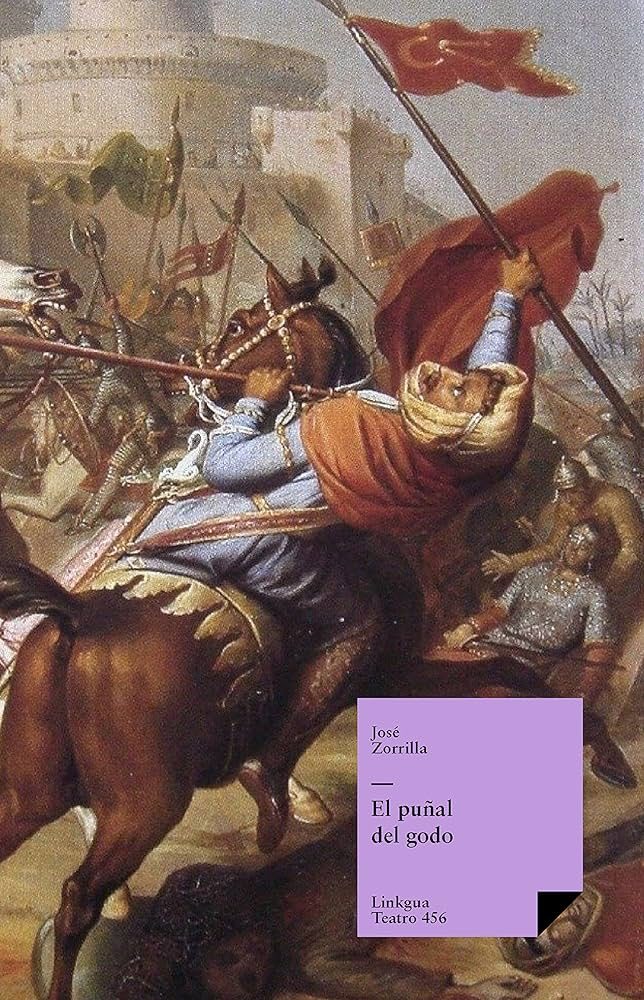
After leaving his wife again, he returned to Paris in 1850, where his sorrows were soothed by his lover Leila, to whom he devoted himself passionately and whom some sources identify with Emilia Serrano de Wilson, surely being the father of his daughter Margarita Aurora, who died at the age of 4.
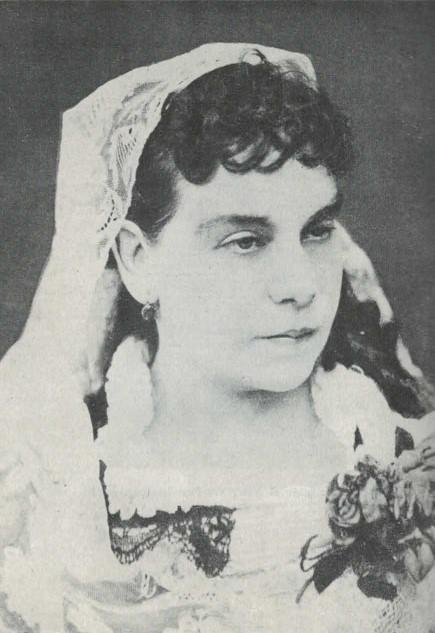
Above: Spanish writer Emilia Serrano de Wilson (1834 – 1923)
There Zorrilla wrote the two volumes of his poem Granada.
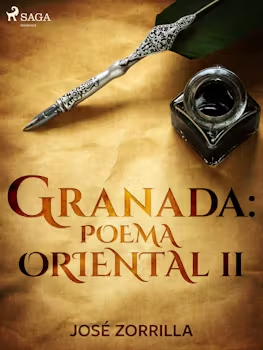
In 1852 the Baudry house printed a third volume of Poetic and Dramatic Works.
He traveled to London in 1853, where he was accompanied by his inseparable financial difficulties, from which the famous watchmaker
Losada rescued him.
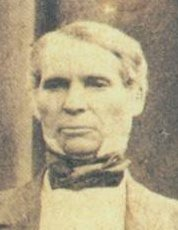
Above: Spanish watchmaker José Rodriguez Losada (1797 – 1870)
At that time he composed his famous Serenata morisca in honor of
Eugenia de Montijo, who in that same year had married the Emperor
Napoleon III.
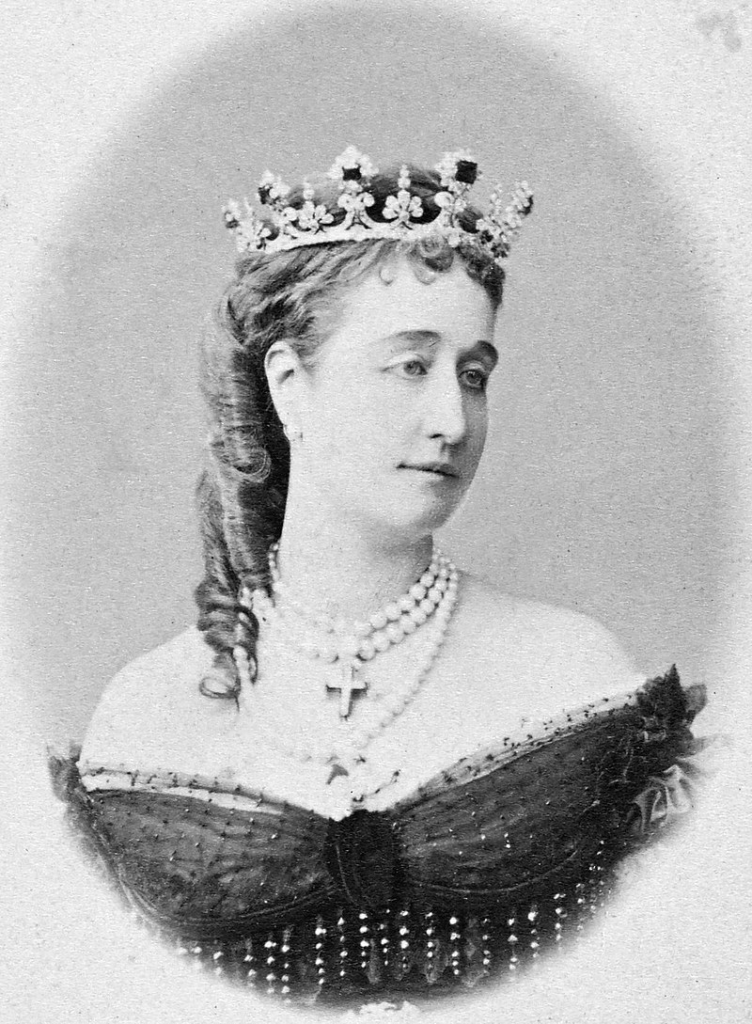
Above: French Empress Eugènie de Montijo (1826 – 1920)
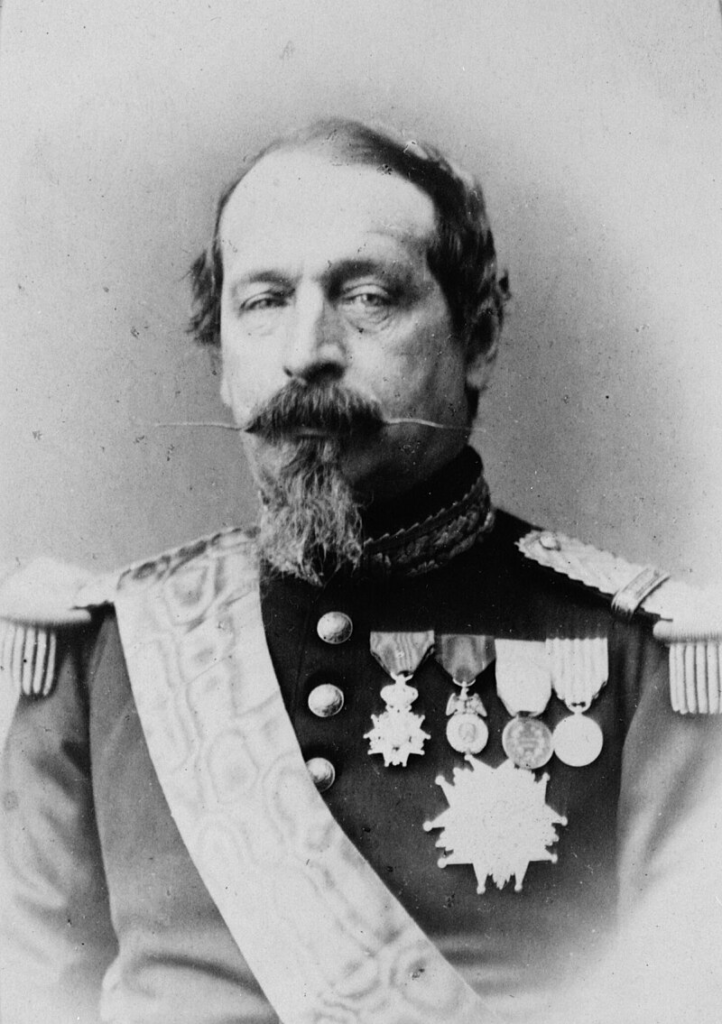
Above: French Emperor Napoleon III (1808 – 1873)
They were going to give him the Legion of Honor, but again some angry letters from his wife put an end to that.

In a fit of depression, Zorrilla emigrated to America three years later, hoping, he claimed, that yellow fever or smallpox would kill him.
During 11 years in Mexico he wrote very little.

Above: Flag of Mexico
Zorrilla arrived in Veracruz on 9 January 1855.
He was enthusiastically welcomed (despite the fact that false quintessential works had been spread in his name against the country), first by the liberal government (1854-1866), spending long periods in the Apan Valley, where he had a new love affair with a woman named Paz.

Above: Images of Veracruz, Mexico
Then under the protection and patronage of Emperor Maximilian I, with an interruption in 1858, the year he spent in Cuba.
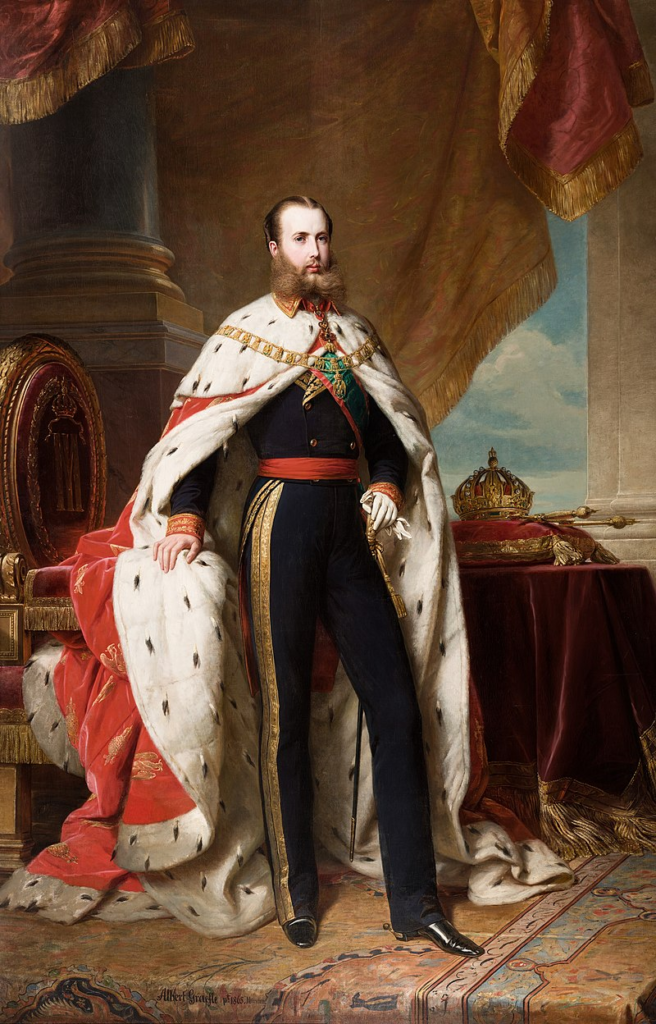
Above: Austrian-born Mexican Emperor Maximiliano I (1832 – 1867)
There Zorrilla began to suffer from epileptic attacks that would accompany him for the rest of his life.
One day, as I sat down at the table, the house spun around me, and the ground felt like nothing under my feet.
A loud noise, like distant music and bells, resounded thunderously in my head, and I lost consciousness.
Isidoro got up in a fright and immediately called his doctor.
They made me lie down.
I felt nauseous, dizzy and drowsy.
I remained like this for 48 hours.
On the 3rd day, the doctor found me working at seven in the morning.
They thought the vomiting had passed.
They congratulated themselves.
Alas!
It was the first hint of an epileptic condition that I combat today with doses of bromide that frighten the pharmacist to whom I am presenting for the first time the prescription for Dr. Cortezo, to whom, for it, I probably owe my life.”
In Cuba, Zorrilla tried his luck in the slave trade.
He established a partnership with the Spanish bookseller and journalist Cipriano de las Cagigas, son of a well-known slave trader, to import Indian prisoners of war against the Maya of Yucatán (Mexico) and sell them to the Cuban sugar plantations.
Zorrilla bought a group of Indians in Campeche, but Cagigas’ death from yellow fever liquidated the business.

Above: Flag of Cuba
Zorrilla returned to Mexico in March 1859.
He led a life of isolation and poverty in that country, avoiding involvement in the civil war between the Federalists and Unitarians.
However, when Maximilian I came to power as Emperor of Mexico (1864), Zorrilla became a court poet and was appointed director of the now defunct National Theater.
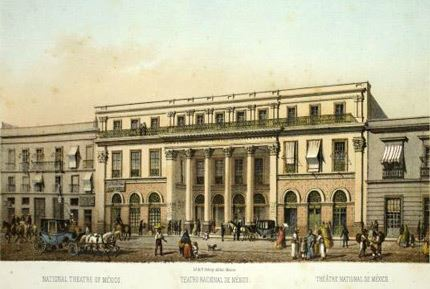
Above: Gran Teatro Nacional de México (1844 – 1904)
After the death of his wife Florentina O’Reilly, a victim of cholera in October 1865, Zorrilla was finally free to return to Spain.
He embarked in 1866 and passed through Havana, Saint-Nazaire, Paris, Lyon, Avignon, Nimes and Perpignan, and finally arrived in Barcelona on 19 July.
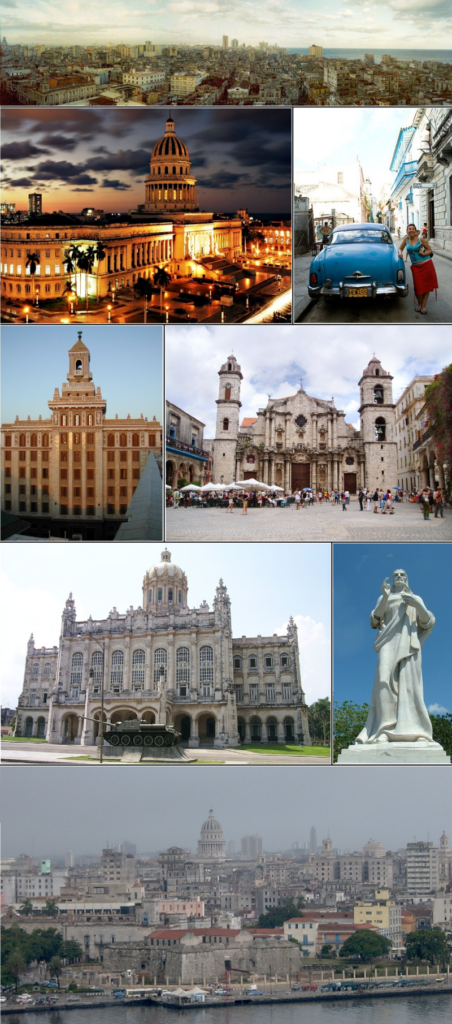
Above: Images of Havana, Cuba

Above: Pont Mindin, Saint Nazaire, Loire-Atlantique, France

Above: Paris, France

Above: Lyon, Rhône, France

Above: Avignon, Provence-Alpes-Côte d’Azur, France

Above: Nîmes, Gard, France
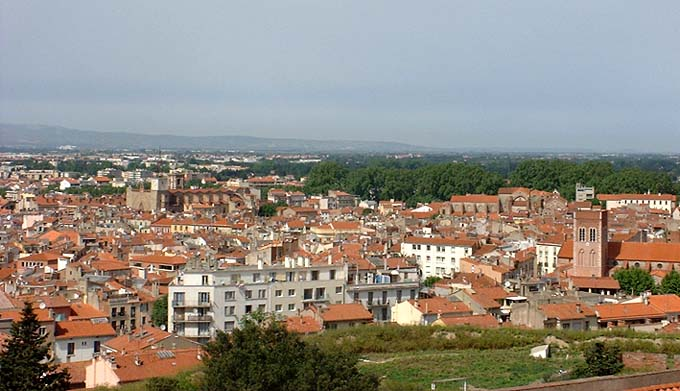
Above: Perpignan, Pyrénées-Orientales, France

Above: Barcelona, Catalonia, Spain
Zorrilla returned to Spain to find himself half-forgotten and considered old-fashioned.
He went to Valladolid on 21 September to settle his affairs, received many people at his home, attended bullfights, gave two readings at the Calderón Theater, and his play Sancho García was performed at the Lope de Vega Theater.
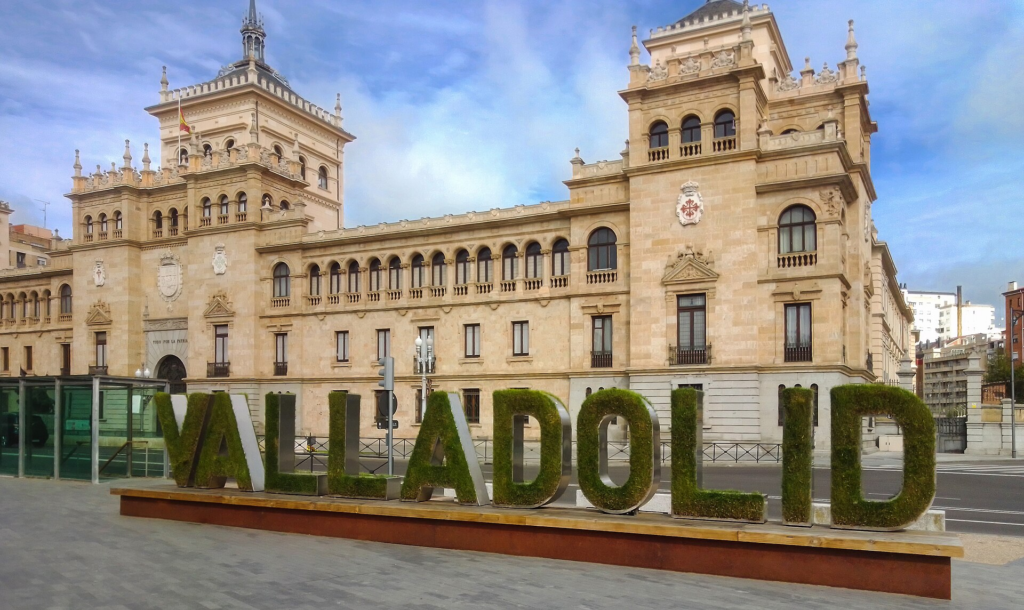
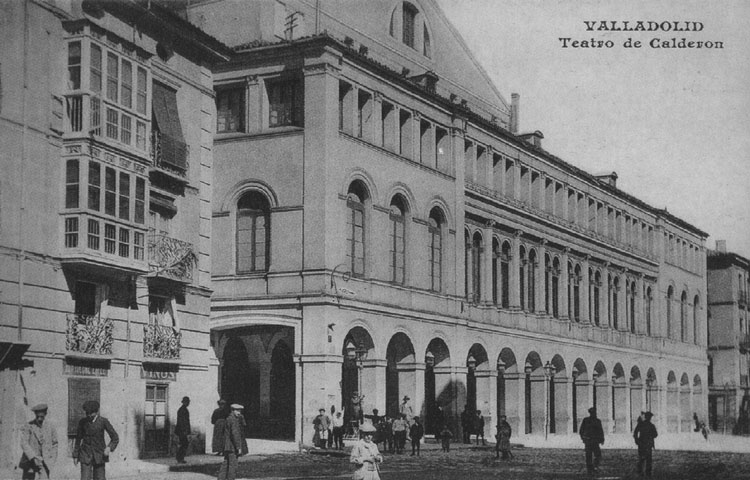
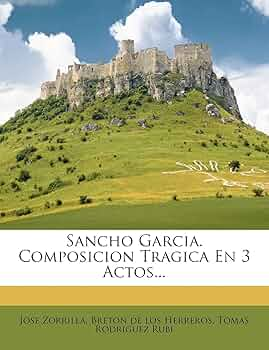
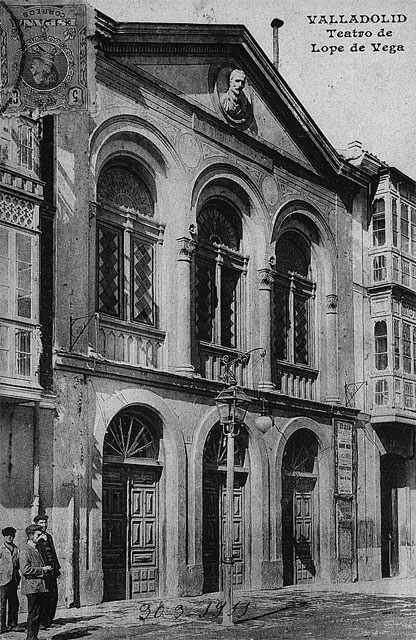
The newspapers were full of news about the poet, who was considered a national glory.
The poetess Carolina Coronado bore witness to this:
Zorrilla, what happened?
What do you have to tell us?
What happened? What did you hear?
Where have you been?
How long did it take you to come?”
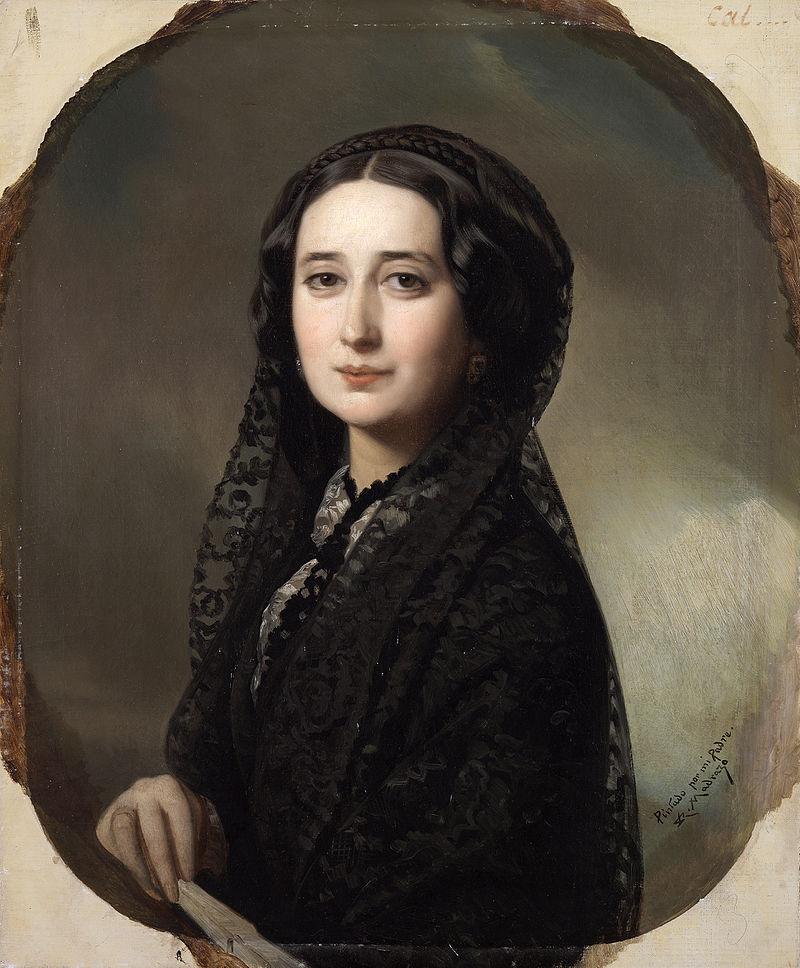
Above: Spanish poetess Carolina Coronado (1820 – 1911)
On 14 October, he went to Madrid, where he remained for a few months overseeing the publication of his Album of a Madman.
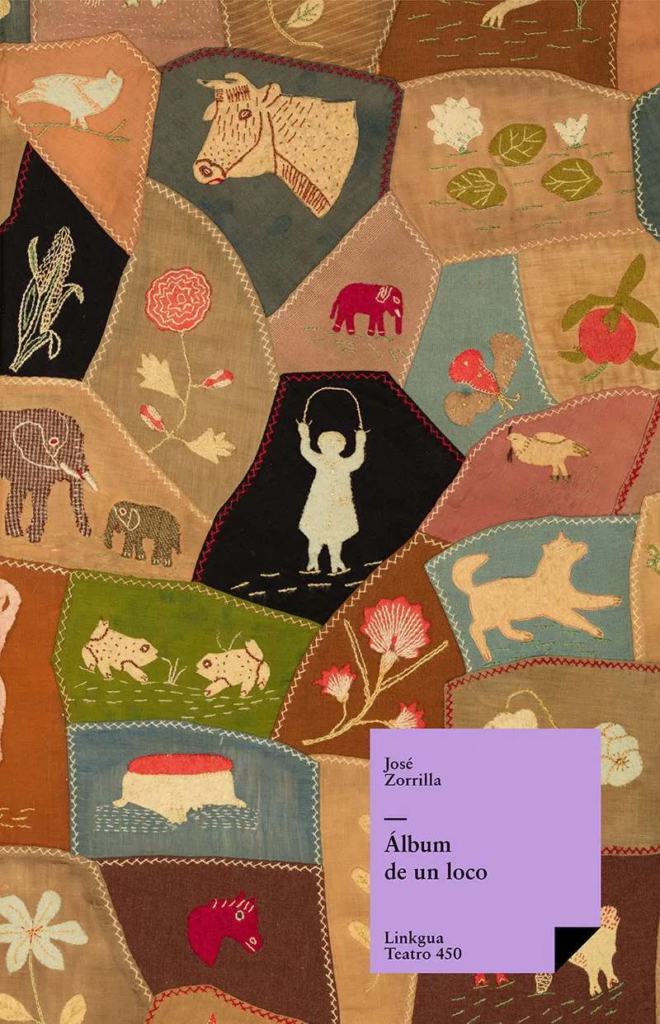
In March 1867 he traveled again in search of his “beloved places“.
He wrote the critic Narciso Alonso Cortés, Torquemada (where his parents were buried) and then to Quintanilla-Somuñó (the Burgos land of his mother and of “cousin Gumis“, his first love).
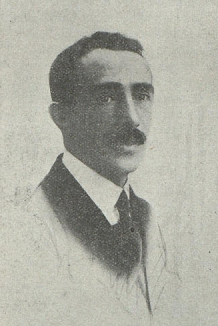
Above: Spanish poet Narciso Alonso Cortés (1875 – 1972)
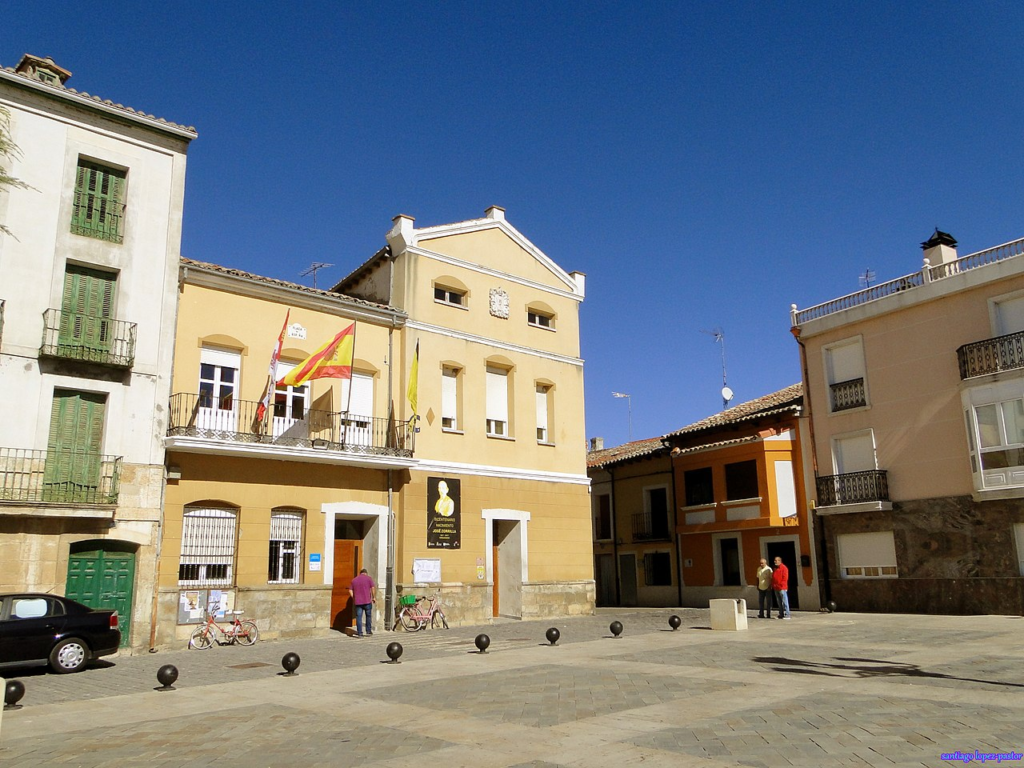
Above: Town Hall, Torquemada, Palencia, Spain
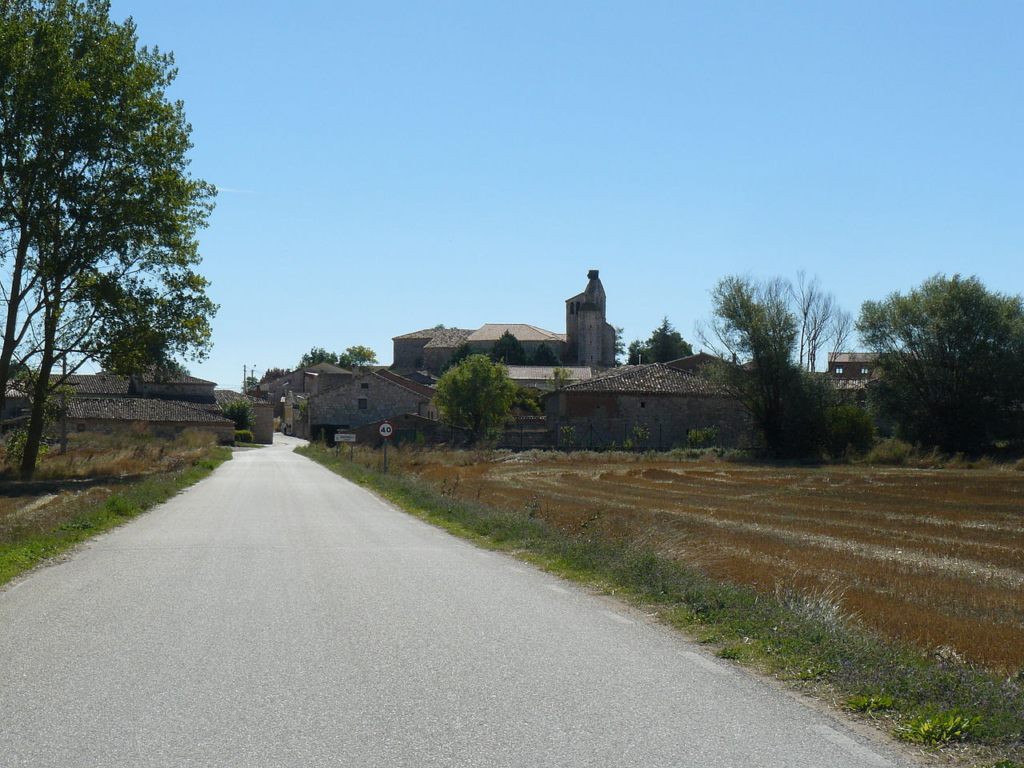
Above: Quintanilla Somuñó, Burgos, Spain
There they brought him a letter that his friend the Emperor Maximilian I had sent him from Mexico, dissuading him from returning to his side:
“Abdication is going to become necessary.
Avoid a useless trip and wait for orders.”
Just one month later, on 19 June of that year 1867, Maximilian would be shot in Querétaro.
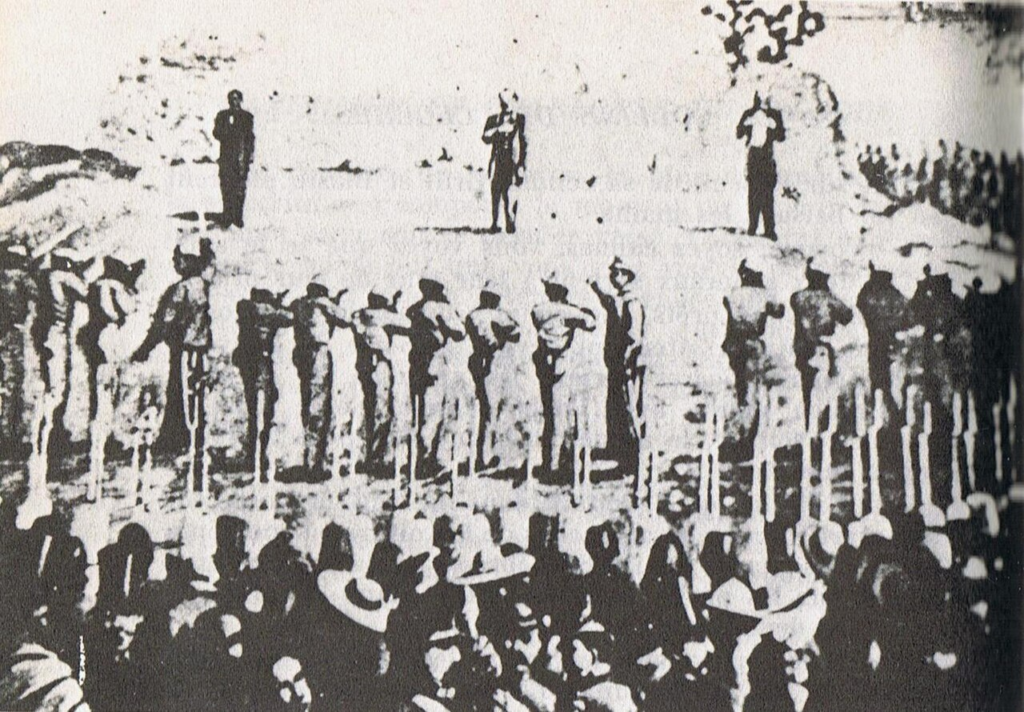
Above: Photograph of the execution of Maximilian (right) and Generals Miramón (left) and Mejía (center) on 19 June 1867
Then Zorrilla poured out all his hatred against the Mexican liberals into a poem, as well as against those who had abandoned his friend:
Napoleon III and Pope Pius IX.
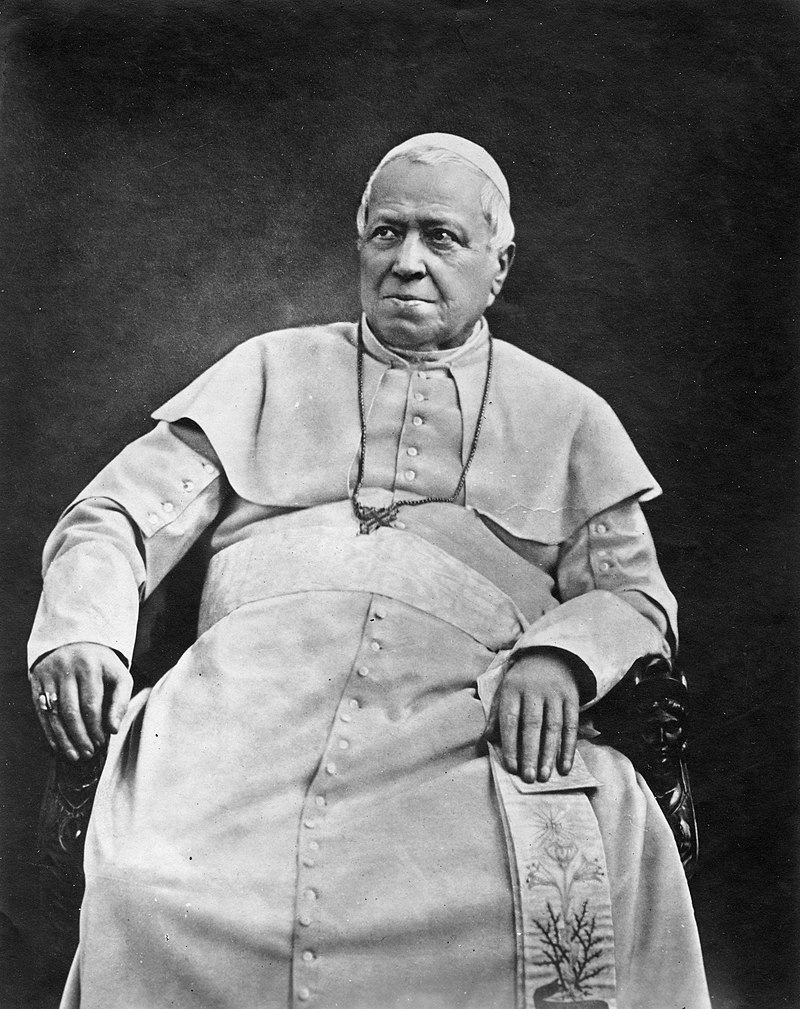
Above: Italian Pope Pius IX (né Giovanni Maria Battista Pellegrino Isidoro Mastai Ferretti)(1792 – 1878)
This work is The Drama of the Soul.
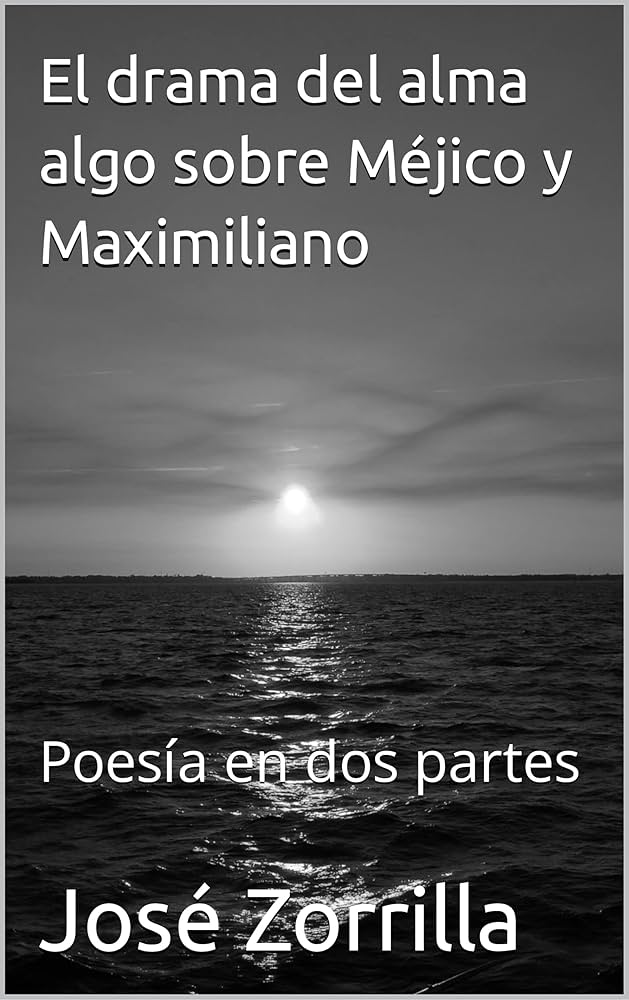
From then on his religious faith suffered a hard blow.
He recovered by marrying again on 20 August 1869 in Barcelona:
Juana Pacheco Martín was 20 years old, he 52.
Zorrilla was a spendthrift and never knew how to manage himself:
Financial difficulties returned, from which neither public recitals of his work, nor a government commission in Rome, where he was with his wife between 1871 and 1873, nor a pension granted too late could get him out, although he received the protection of some figures in Spanish high society such as the Count of Guaqui.
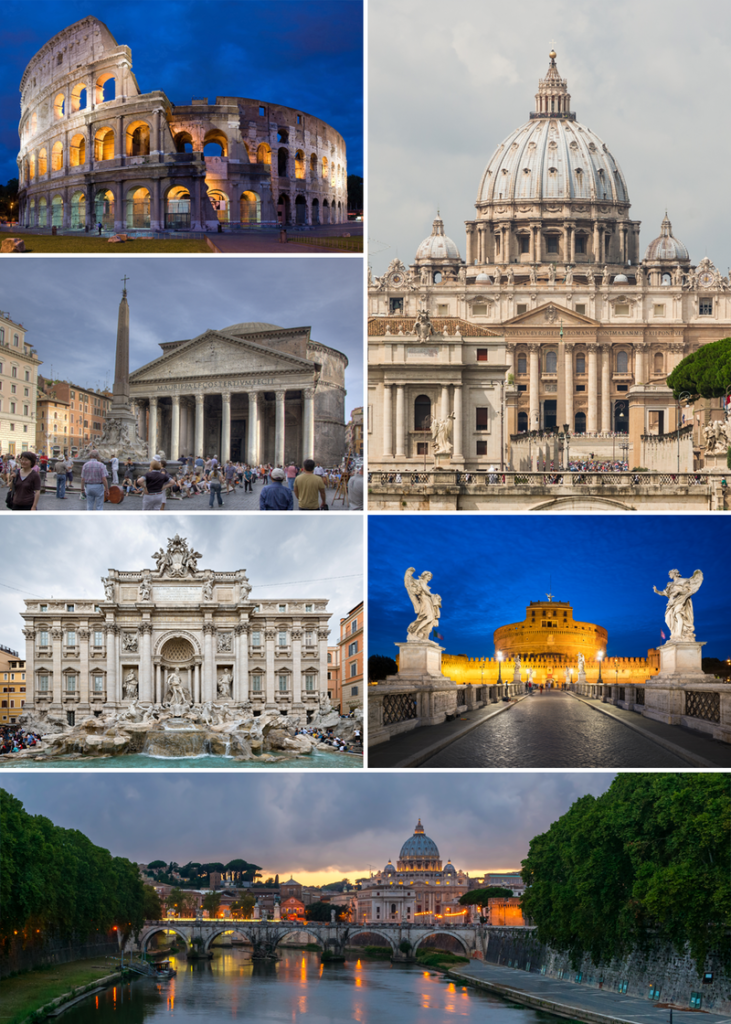
Above: Images of Rome, Italy

Above: Spanish Count José Manuel de Goyemeche y Gamio (1831 – 1893)
Honors, however, rained down on him:
King Amadeo I granted him the Grand Cross of Charles III.
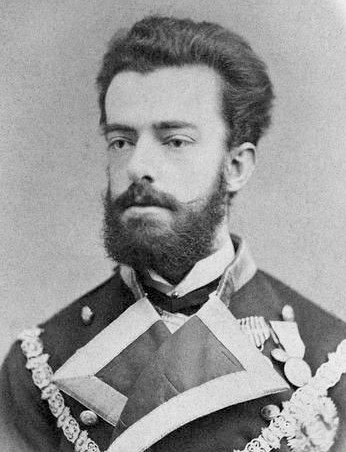
Above: Spanish King Amadeo I (1845 – 1890)
Zorrilla was appointed Chronicler of Valladolid (1884) and was crowned with laurels as a national poet in Granada in 1889.

Above: Alhambra, Granada, Andalusia, Spain
Tired of his research for the Spanish government in Rome, at the beginning of 1874 he decided to move to France, where, in the region of Las Landes, he set up a house and dedicated himself, together with his wife, to floriculture.

Above: Flag of the Département Landes, France
They spent two years there until December 1876 when Zorrilla and his wife were forced to return to Spain, where he returned to work giving public readings of his works.
Eduardo Gasset, editor of El Imparcial, offered to print his memoirs, Recuerdos del tiempo viejo, in installments, in its Monday supplement, and began publication on 6 October 1879.
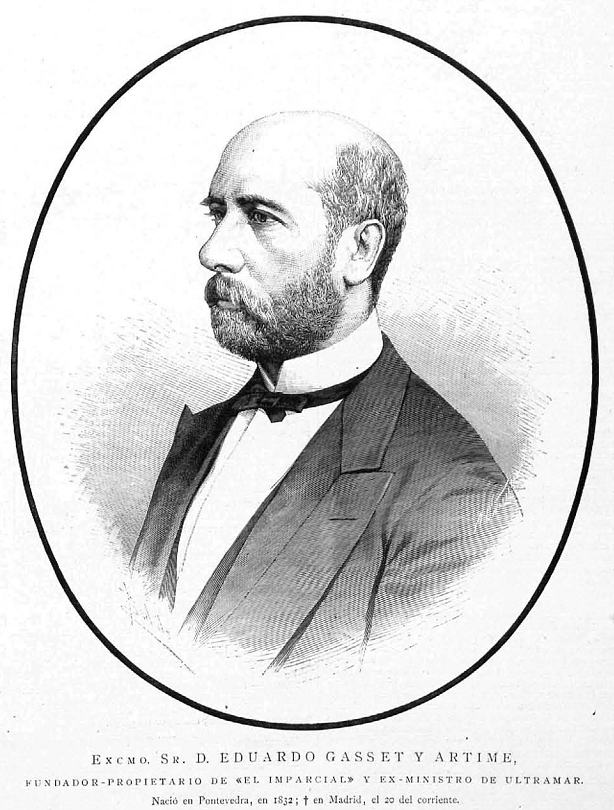
Above: Spanish journalist Eduardo Gasset (1832 – 1884)
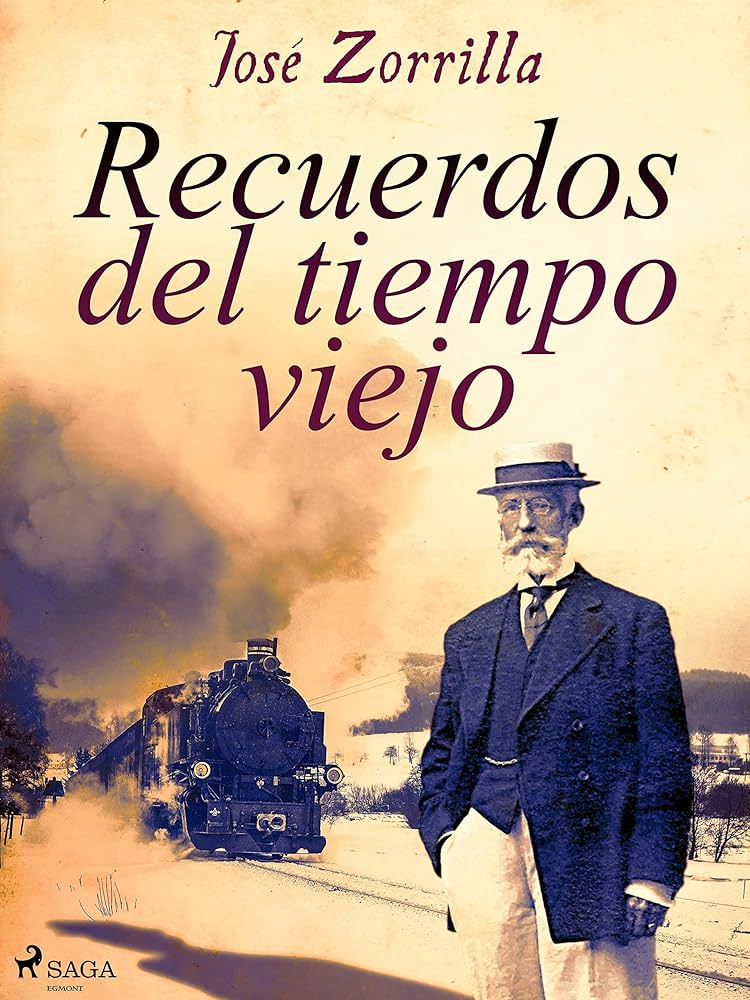
Zorrilla spent the years 1880 to 1882 traveling and reading throughout Spain, awaiting a promised government pension that never arrived.
In 1883, he embarked on another exhausting tour:
He was 66 years old.
He wrote:
“I don’t have an hour to rest.
Hoarse, tired, and sleep-deprived, I wander around like an old crow.“
He opened the theater that bears his name in Valladolid in 1884.
He resettled there again until April 1889, but always touring.

In a letter to his great friend, the poet José Velarde, and speaking of himself in the 3rd person, Zorrilla described his sad situation:
Zorrilla produced two or three literary works, which under the titles of Zapatero y el rey, Sancho García and Don Juan Tenorio, entered into circulation capitalized at 10 to 12 thousand reales each.
Zorrilla produced these literary works before the promulgation of the theatrical property law, that is, before 1847, and sold them as such things were then sold, each of which legally yielded its purchasers 30, 40, and 50 thousand duros.
Now, since the law has no retroactive effect, since it does not accord the enormous injury to works of genius, Zorrilla supports all the comedians and impresarios of Spain and America during the first fortnight of November with Don Juan Tenorio, and is liable, if by God’s curse he reaches decrepitude, to die in the hospital or in the asylum, or to beg for alms in those days when his work supports so many.
And his friends say to the legislators:
“Since the law cannot protect Zorrilla by forcing those who legally bought his works to share his enormous profits with him, do not let the one who created these capitals with such works and maintains so many businesses die of hunger in old age.”
(J. Zorrilla, Letter to José Velarde, 19 December 1881)
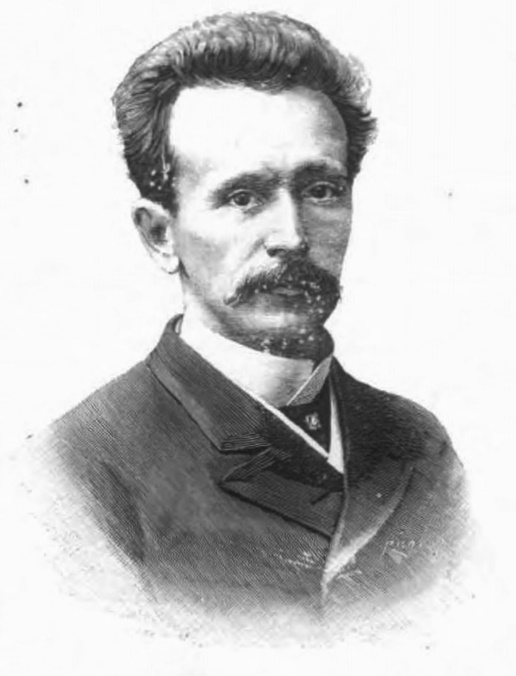
Above: Spanish poet José Velarde (1848 – 1892)
Zorrilla was always poor, especially for the 12 years after 1871.
The publication of his autobiography, Recuerdos del tiempo viejo (Memories of the Old Days) in 1880, did nothing to alleviate his poverty.
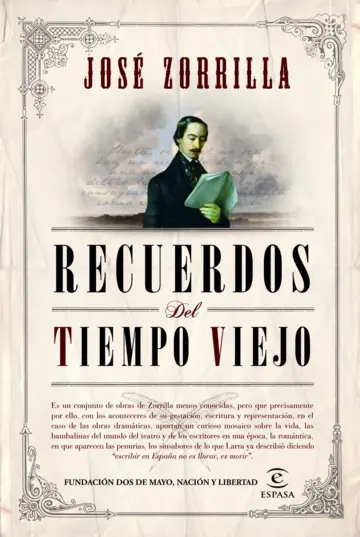
Though his plays were still being performed, he received no money from them.
Finally, in his old age, critics began to reappraise his work, and brought him new fame.
He received a pension of 30,000 reales, a gold medal of honor from the Spanish Academy, and, in 1889, the title of National Laureate.
On 14 February 1890, he underwent surgery in Madrid to remove a brain tumor.
Queen Maria Cristina quickly granted him a pension two months later.
However, the tumor recurred.
He died in Madrid on 23 January 1893 following another operation.
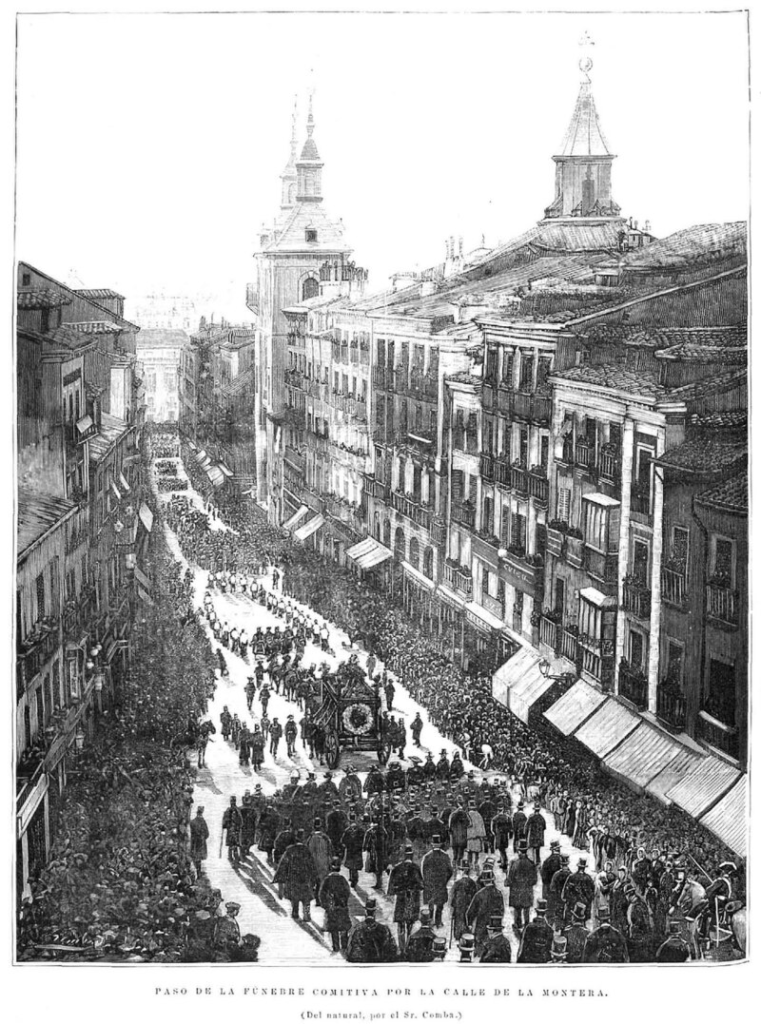
Above: Zorrilla’s funeral procession, 30 January 1893
His remains were buried in the San Justo Cemetery in Madrid, but in 1896, in compliance with the poet’s wishes, they were transferred to
Valladolid.
They are currently housed in the Pantheon of Illustrious Valladolid Citizens in the Carmen Cemetery.
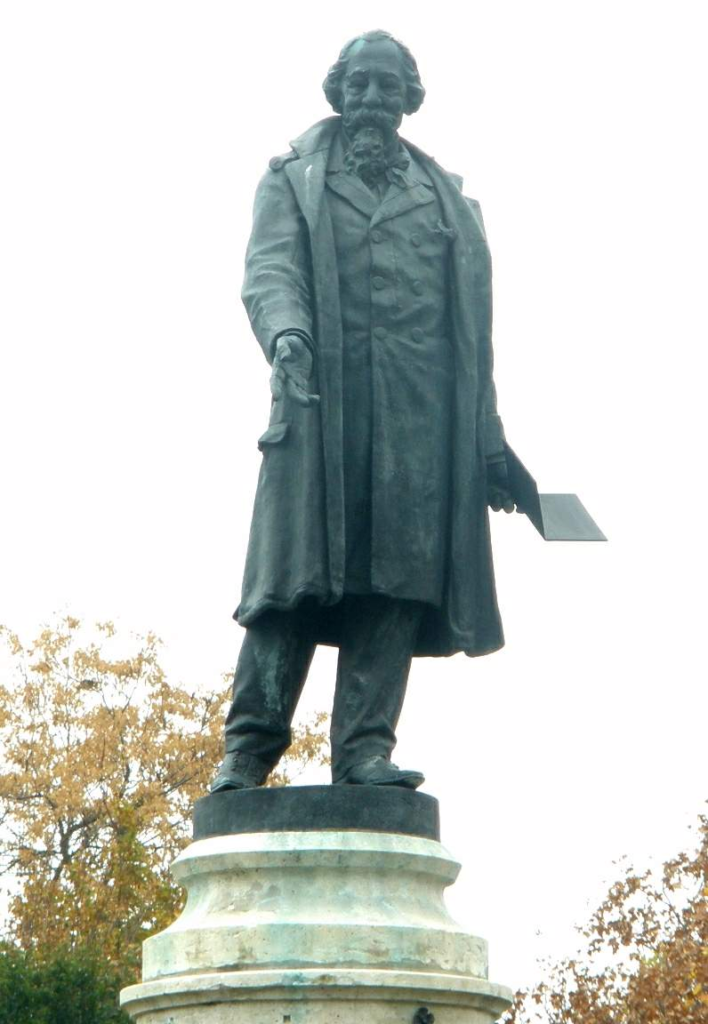
Above: José Zorrilla Monument, Valladolid, Spain
Zorrilla cultivated all genres of verse:
Lyric poetry, epic or narrative, and drama.
There are three elements in Zorrilla’s life of great interest for understanding the direction of his work.
First, his relationship with his father.
A despotic and severe man, he systematically rejected his son’s affection, refusing to forgive his youthful mistakes.
The writer carried a kind of guilt complex.
To overcome it, he decided to defend in his work a traditionalist and reactionary ideal that was very much in keeping with his father’s sentiments, but in contradiction with his own intimate progressive ideas.
He says in Memories of Old Times:
“My father had not valued my verses at all, nor my conduct, the key to which only he held.“
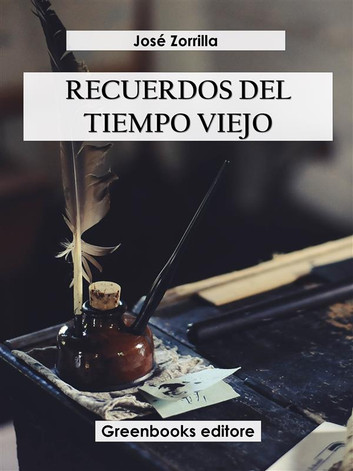
Secondly, we must highlight his sensual temperament, which drew him toward women:
Two wives, an early love affair with a cousin, and various other affairs in Paris and Mexico provide a list that, although very different from that of Don Juan, moves in the same direction.
Love constitutes one of the fundamental axes of Zorrilla’s entire output.
It’s not idle to wonder, as a third conditioning factor, about Zorrilla’s health.
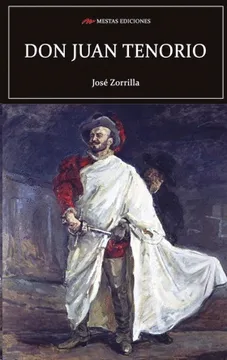
At a certain point in his life, in fact, he invented a double, a madman (Tales of a Madman)(1853), who appears almost obsessively later on.

In Memories of Old Times, his autobiography, he speaks of his fondness for the Tarot, his hallucinations, sleepwalking and epilepsy.
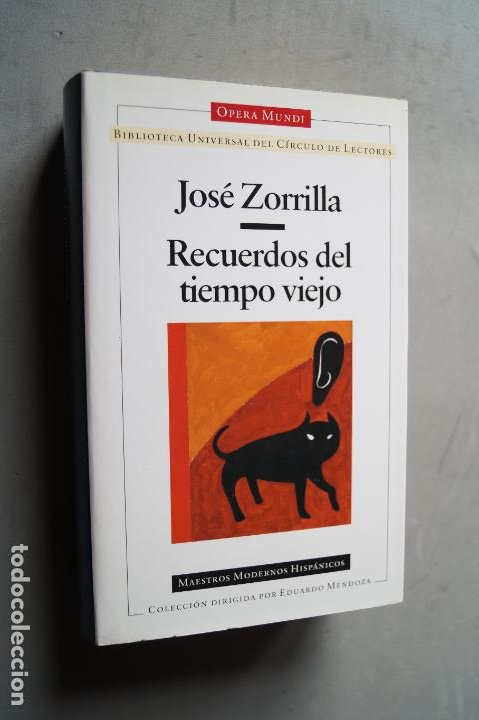
When did the brain tumor appear and how did it affect his behavior?
Perhaps the predominant role of fantasy in the writer and his enormous sense of mystery (the principle of the sublime in Romantic aesthetics) find an explanation in this regard.
His biographer, Narciso Alonso Cortés, has described his character as childlike, kind-hearted, a friend to all, ignorant of the value of money, and unaware of politics.

It is also worth highlighting Zorrilla’s independence, of which he was very proud.
In verses reminiscent of those of Antonio Machado, he confessed that he owed everything to his work and even rejected lucrative public positions because he felt unprepared.
In his Memories of Old Times, he stated:
“I fear that our revolution will be fruitless for Spain because all Spaniards believe we are good and capable of everything, and we all get involved in things we don’t know.”
Indeed, in his work, there are concerns that occasionally emerge despite the traditionalism he imposed on himself so as not to offend his father.

For example, in his poem Toledo, the poet does not hide the national decline after a glorious past.
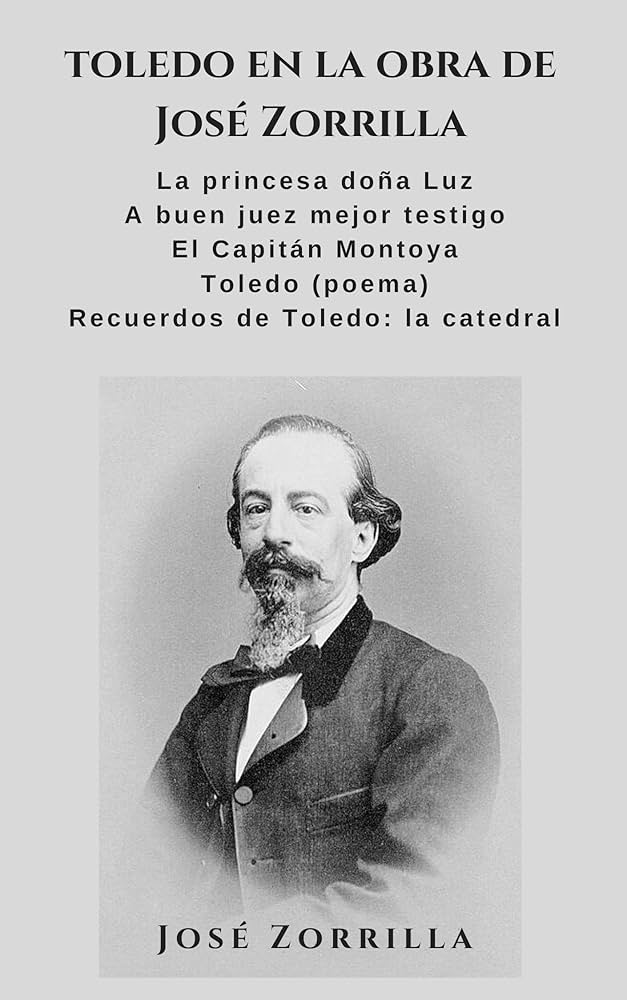
Zorrilla’s style is characterized by great plasticity and musicality and a powerful sense of mystery and tradition.
He also uses old turns of phrase and oaths.
His metrics are very rich and in general each of his works is polymetric.
In the rest, traditional meters and stanzas predominate.
In Spanish Romanticism, he represents the moment of the nationalization of its imported elements.
His work is uneven, sometimes very inspired and other times verbose and lacking in concreteness:
In any case, it is always proudly spontaneous, free and easy:
Because in works of taste and whim
That bring only pleasure and no profit,
Everything can be done if it is well done
And can be said if it is well said.
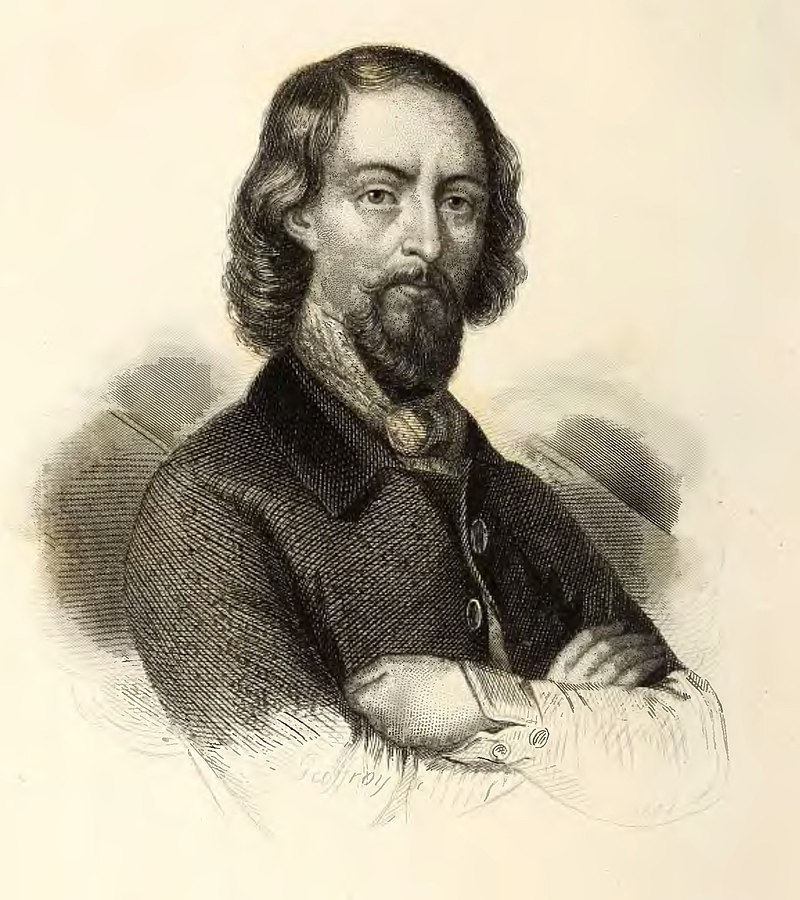
Above: José Zorrilla
Among his early lyric poems, the well-known Orientales stand out, a genre already cultivated by Victor Hugo.
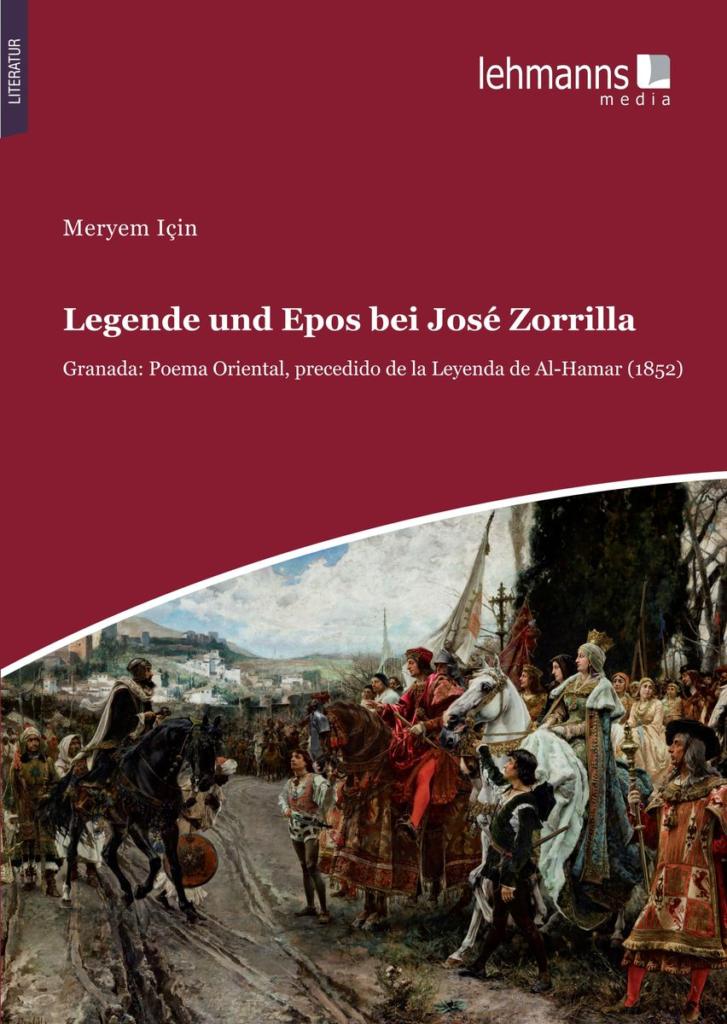
Much better are Leyendas, in which he proves to be a better narrative poet than a lyric poet, skillfully combining intrigue, surprise, and mystery.
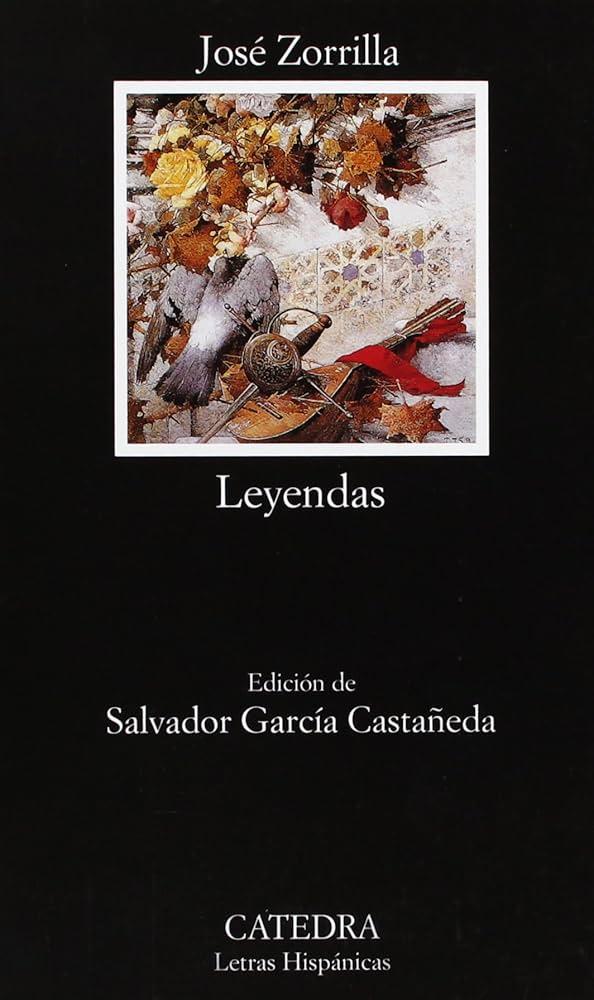
His most famous works were Margarita la tornera (Margarita the turner), A buen juez mejor testigo (A good judge makes a better witness) and El capitán Montoya.
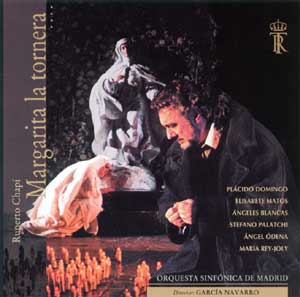
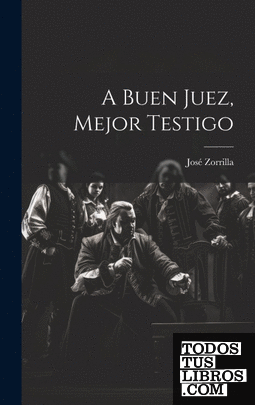
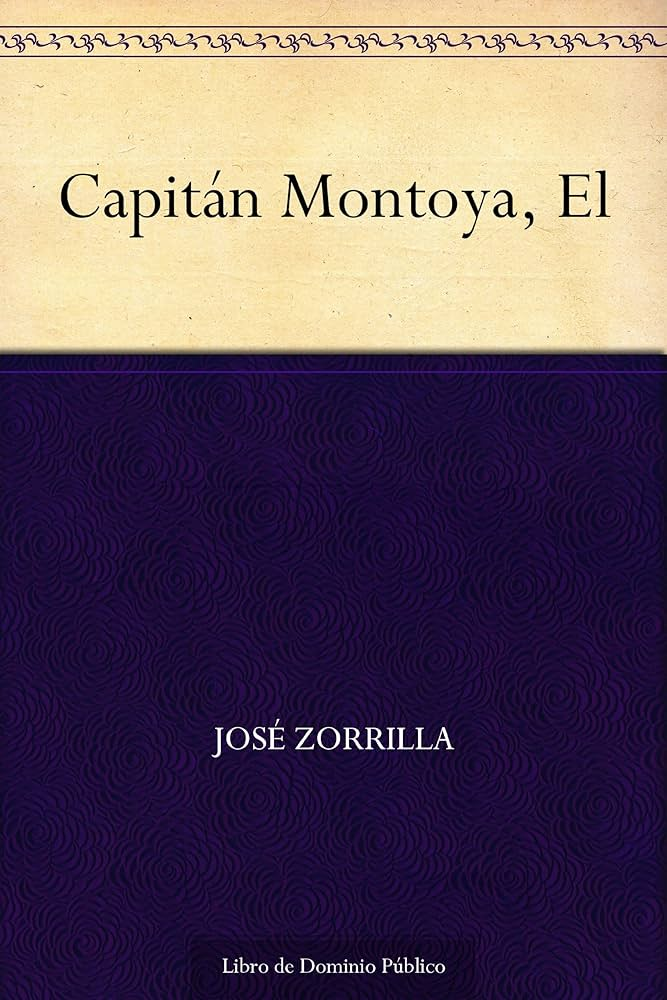
At the age of 35, he published Granada (1852), a brilliant evocation of the Muslim world.
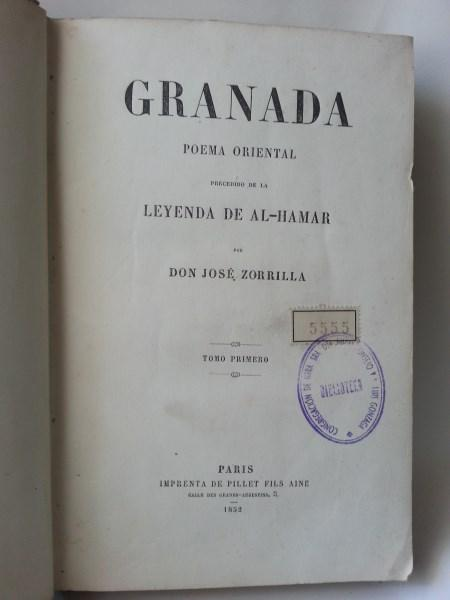
Based on their themes, we can establish five sections:
- Religious lyrics (Wrath of God, The Virgin at the foot of the Cross)
- Love lyrics (A memory and a sigh, To a woman)
- Sentimental lyrics (Meditation, The January Moon)
- Descriptive lyrics (Toledo, To a tower)
- Philosophical Lyrics (Tales of a Madman)

His extensive dramatic work includes three fundamental pieces:
The Shoemaker and the King, Don Juan Tenorio and Traitor, Unconfessed and Martyr.
In The Shoemaker and the King (1840-1841) Don Pedro the Cruel is portrayed from the perspective of popular tradition, as a sympathetic and just character whom fate leads to disaster.
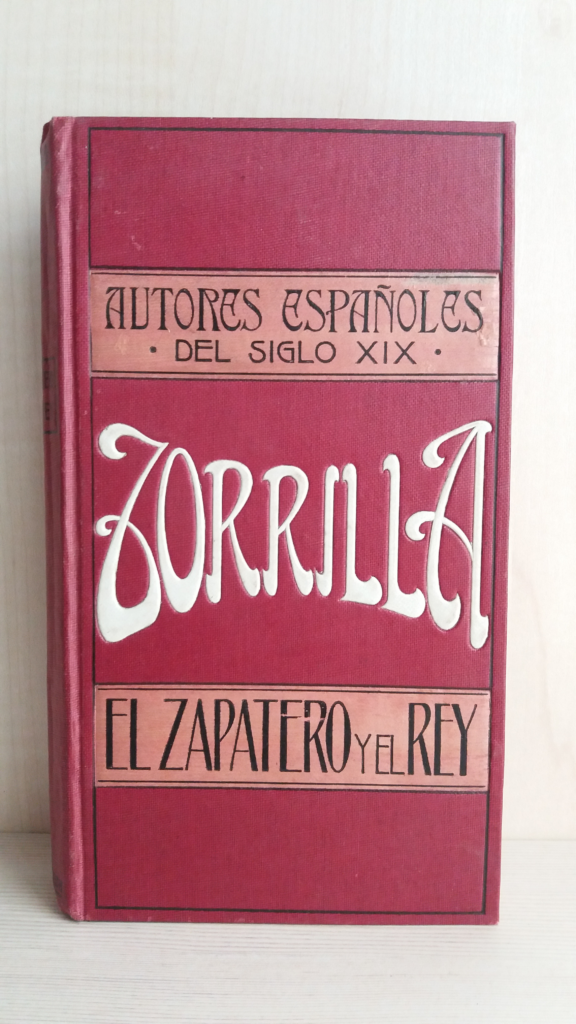
In Don Juan Tenorio (1844), the character of the trickster, created by Tirso de Molina and featured in Antonio de Zamora’s Tan largo me lo fiáis, which had been performed as a morality play on All Souls’ Day for nearly a century and a half, is revived.
Zorrilla’s play was so successful that it replaced it in this tradition.
He introduced various innovations that greatly improved the dramatic structure:
He introduced the figures of Doña Inés, Don Luis Mejía and the salvation through love of the idealized Doña Inés, rather than the traditional condemnation of the impetuous Don Juan.
Although Tenorio abounds in carelessness, childish effects and bursts of lyricism that border on sentimentality, Zorrilla saves everything with the vigor of his theatricality, his fluid command of versification, his mastery in the conduction of the action, the firmness of his characters and his unsurpassed sense of mystery.
Zorrilla himself was not very happy with his work, which he criticized mercilessly in his memoirs, but critics have to admit that next to its dramatic virtues its defects seem trivial and are barely noticeable.
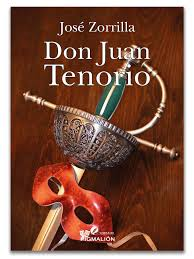
As for Traidor, inconfeso y mártir (1849), a maximum balance is achieved, although the author modifies historical reality by making “the pastry chef of Madrigal” who was hanged for having tried to impersonate King Sebastian of Portugal, who disappeared in the Battle of Alcazarquivir, be, in effect, the same monarch.
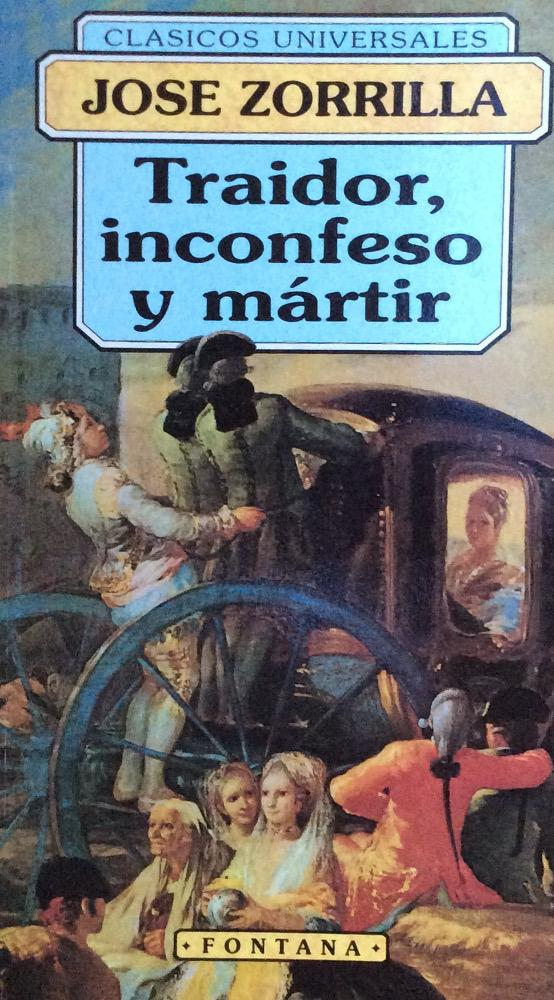
In his early years, Zorrilla was known as an extraordinarily fast writer.
He claimed he wrote El Caballo del Rey Don Sancho (The King’s horse, Don Sancho) in three weeks, and that he put together El Puñal del Godo (The dagger of the Goth) in two days.

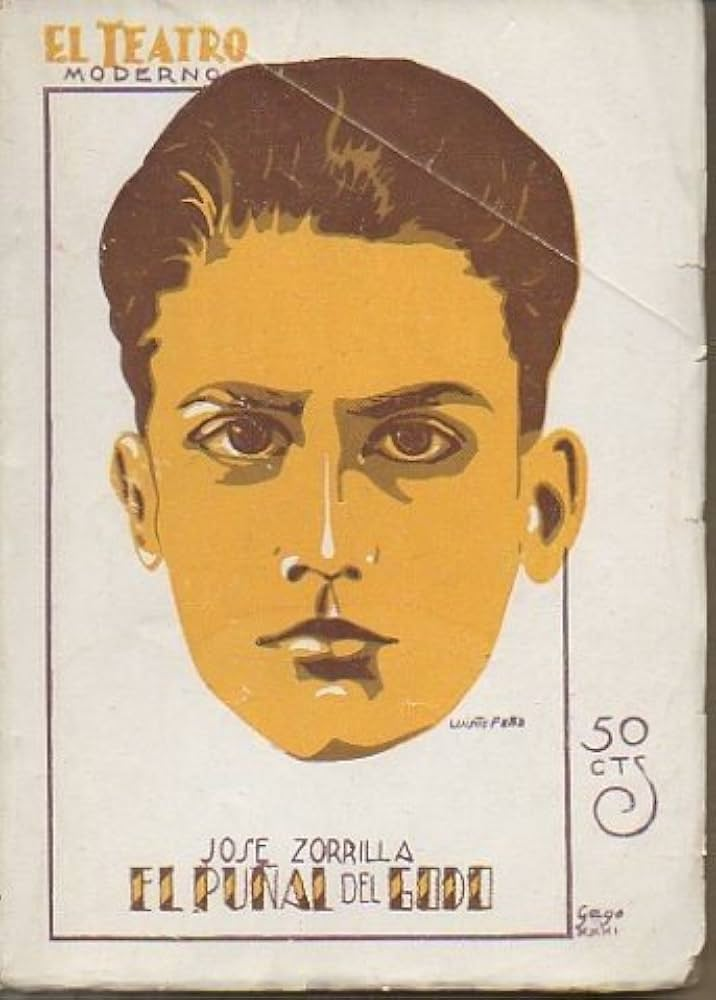
This may account for some of the technical faults — redundancy and verbosity — in his works.
His plays often appeal to Spanish patriotic pride, and actors and audiences have enjoyed his effective dramaturgy.

Above: Flag of Spain
Don Juan Tenorio is his best-known work.
In the first part of the drama, the protagonist is still the demonic rake described by de Molina (he is called a demon and even Satan himself on more than one occasion).
The story begins with Don Juan meeting Don Luis in a crowded wine shop in Seville so that the two can find out which of them has won the bet that they made one year ago:
Each expected himself to be able to conquer more women and kill more men than the other.
Naturally, Don Juan wins on both counts.
People in the crowd ask him if he is not afraid that someday there will be consequences for his actions, but Don Juan replies that he only thinks about the present.
It is then revealed that both caballeros have gotten engaged since they last met, Don Luis to Doña Ana de Pantoja and Don Juan to Doña Inés de Ulloa.
Don Luis, his pride hurt, admits that Don Juan has slept with every woman on the social ladder from princess to pauper, but is lacking one conquest:
A novice about to take her holy vows.
Don Juan agrees to the new bet and doubles it by saying that he will seduce a novice and an engaged woman, boasting that he only needs six days to complete the task with Don Luis’s fiancée as one of the intended conquests.
At this point, Don Gonzalo, Don Juan’s future father-in-law, who has been sitting in a corner during this entire exchange, declares that Don Juan will never come near his daughter and the wedding is off.
Don Juan laughs and tells the man that he will either give Doña Inés to him, or he will take her.
He now has the second part of the bet concreted with Doña Inés set to take her vows.
In following scenes, Don Juan manages, through charisma, luck and bribery, to fulfill both terms of the bet in less than one night.
However, he does not seduce the saintly Doña Inés.
He just takes her from the convent where she had been cloistered and brings her to his mansion outside the city.
There is a very tender love scene in which each professes to love the other, and it seems that, for once, Don Juan does feel something more than lust for Doña Inés.
Unfortunately, Don Luis arrives to demand a duel with Don Juan for having seduced Doña Ana while pretending to be her fiancé.
Before they can fight, Don Gonzalo shows up with the town guardsmen and accuses Don Juan of kidnapping and seducing his daughter.
Don Juan kneels and begs Don Gonzalo to let him marry Doña Inés, saying he worships her and would do anything for her.
Don Luis and Don Gonzalo mock him for his perceived cowardice and continue to demand his life.
Don Juan declares that, since they have rejected him in his attempts to become a good person, he will go on being a devil.
He shoots Don Gonzalo, stabs Don Luis in a duel, and flees the country, abandoning the now fatherless Doña Inés.
The second part begins after five years have passed.
Don Juan returns to Seville.
Upon coming to the place where his father’s mansion used to be which was turned into a pantheon, he discovers that the building was torn down and a cemetery built in its place.
Lifelike statues of Don Gonzalo, Don Luis and Doña Inés stand over the tombs.
The sculptor, who has just finished his work when Don Juan arrives, tells him that Don Diego Tenorio, Don Juan’s father, had disowned his son and used his inheritance to build this memorial to his victims.
Don Juan also finds out that Doña Inés died of sorrow not long after being abandoned.
The protagonist is clearly at least a bit repentant of what he has done, expressing regret to the statues and praying to Doña Inés for forgiveness.
As he prays, the statue of Doña Inés comes to life and tells him that he only has one day to live, in which he must decide what his fate will be.
Inés is speaking from Purgatory, having made a deal with God to offer her own blameless soul on behalf of Don Juan’s.
God therefore agreed that their two souls would be bound together eternally, so Don Juan must choose either salvation or damnation for both himself and Doña Inés.
Then, two of Don Juan’s old friends, Centellas and Avellaneda, show up.
Don Juan convinces himself that he hadn’t truly seen a ghost at all.
In order to prove his bravado, he heretically invites Don Gonzalo’s statue to dinner that evening.
Don Juan goes on blaspheming against Heaven and the dead throughout the following scenes, until Don Gonzalo’s statue really does show up at supper.
Don Juan manages to remain largely nonchalant, although both of his other guests pass out, as Don Gonzalo tells him once more that his time is running out.
When Avellaneda and Centellas wake up, Don Juan accuses them of having contrived this show to make fun of him.
Offended, they accuse him of having drugged their drinks to mock them.
They end up in a swordfight.
Don Juan is back in the cemetery, led there by Don Gonzalo’s ghost.
Don Gonzalo’s tomb opens and reveals an hourglass that represents Don Juan’s life.
It has almost run out.
Don Gonzalo says that Centellas already killed don Juan in the duel.
He then takes Don Juan’s arm to lead him into Hell.
Don Juan protests that he isn’t dead and reaches out to Heaven for mercy.
Doña Inés appears and redeems him.
The two go to Heaven together.

It has become a tradition of both Spanish and Mexican theater to perform Don Juan Tenorio on All Saints Day or its Mexican equivalent the Day of the Dead, so the play has been performed at least once every year for over a century.
It is also one of the most lucrative plays in Spanish history.
Unfortunately, the author did not benefit from his play’s success:
Not long after he finished writing it, Zorrilla sold the rights to the play, since he did not expect it to be much more successful than any of his other works.
Aside from the price paid for the rights, Zorrilla never made any money from any of the productions.
Later, he wrote biting criticisms of the work in an apparent attempt to get it discontinued long enough for him to revise it and market the second version himself.
However, the ploy never succeeded.
This is Ruiz’s version of Don Juan, because he believed a story can never end sadly, and must always have a happy ending.

The House of Zorrilla in Valladolid is the building where the
romantic poet was born on 21 February 1817.
This was a house rented by José Zorrilla’s parents to the Marquis of Revilla.
It is located on Fray Luis de Granada Street.
Zorrilla lived there for the first seven years of his life and briefly upon his return to Valladolid in 1866 after his return from Mexico.
After his death, the Valladolid City Council decided to acquire the building to honor the poet’s memory, converting it into a house museum.
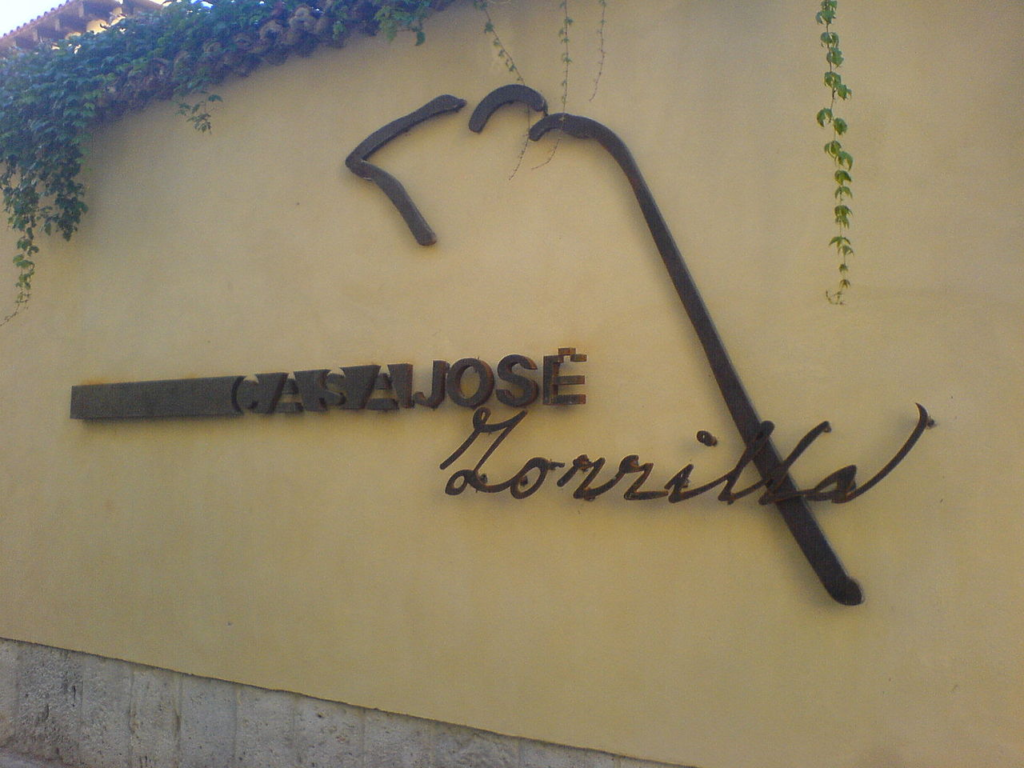
Above: Casa Museo José Zorrilla, Valladolid, Spain
The ground floor was converted into a library thanks to the work of Narciso Alonso Cortés, a prominent scholar of José Zorrilla’s work.
In 1895, a commemorative plaque was placed on the façade with a bust of the poet, the work of sculptor Pastor Valsero, bearing the inscription:
The eminent poet D. José Zorrilla was born herein 1817.
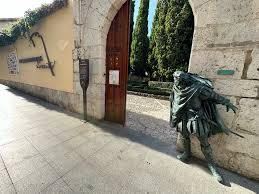
Above: Casa Museo José Zorrilla, Valladolid, Spain
The house is simple in appearance and structure, consisting of two floors, a basement, and a garden.
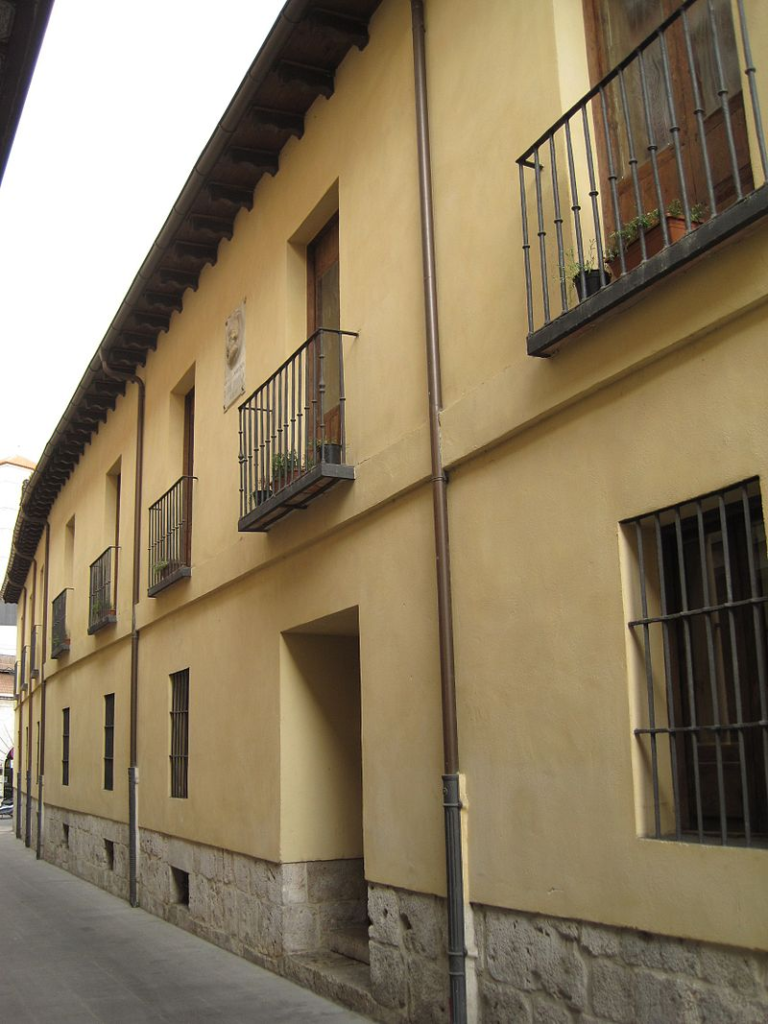
Above: Casa Museo José Zorrilla, Valladolid, Spain
It houses some of the poet’s original furniture, such as his desk, which was donated by his widow.

Above: Casa Museo José Zorrilla, Valladolid, Spain
The house’s furnishings are intended to capture the atmosphere of the poet’s life.
Among the paintings that decorate the walls of the main floor are:
- a large painting entitled Arrival at the Camp by Ruiz de Valdivia from Granada, depicting a scene from the Carlist War
- View of Seville, attributed to the painter Rafael Romero Barros
- Don Quixote Sick by Miguel Jadraque from Valladolid, painted in 1905
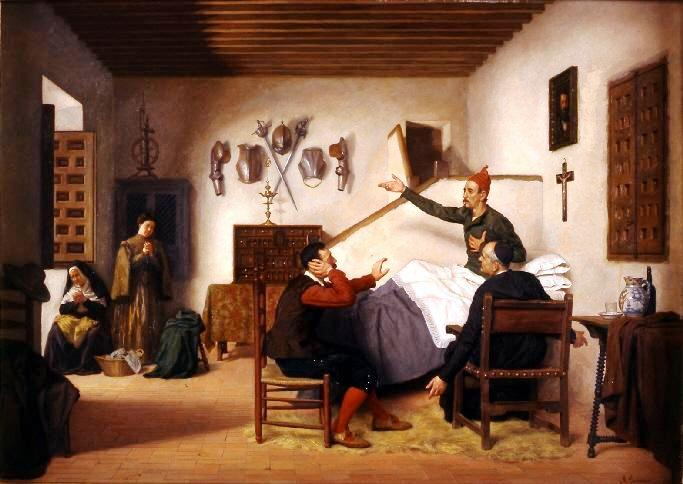
Above: Don Quijote enfermo, Miguel Jadraque (1905)
- a portrait of the poet painted by Ángel Díaz Sánchez
- another canvas showing the exterior appearance of the Church of La Antigua before restoration, painted in 1876 by Santos Tordesillas.
Among Zorrilla’s personal mementos is the funerary mask that sculptor Aurelio Rodríguez-Vicente Carretero obtained from his face and used to create the monument to the poet that stands in Valladolid’s Plaza de Zorrilla.
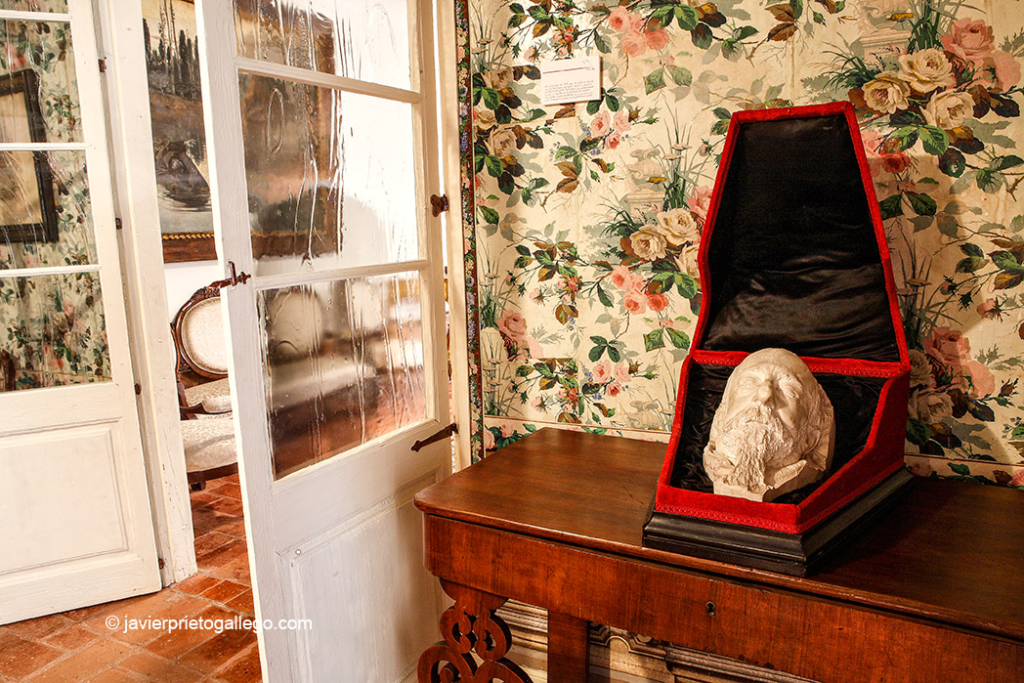
Above: Casa Museo José Zorrilla, Valladolid, Spain
José Zorrilla captured the intensity of emotion and the theatricality of the human soul.
His most famous work, Don Juan Tenorio, transformed the legendary seducer into a tragic and poetic figure, a man consumed by love, guilt, and fate.
Unlike earlier depictions of Don Juan as a callous libertine, Zorrilla infused him with a soul capable of redemption, blending passion and drama with moral introspection.
Zorrilla’s work endures because it taps into the timeless themes of love and consequence, the exhilaration of passion tempered by the weight of morality.
His poetry reminds us that life itself is a stage upon which we perform, often without fully understanding the script written for us by fate, society, or our own desires.
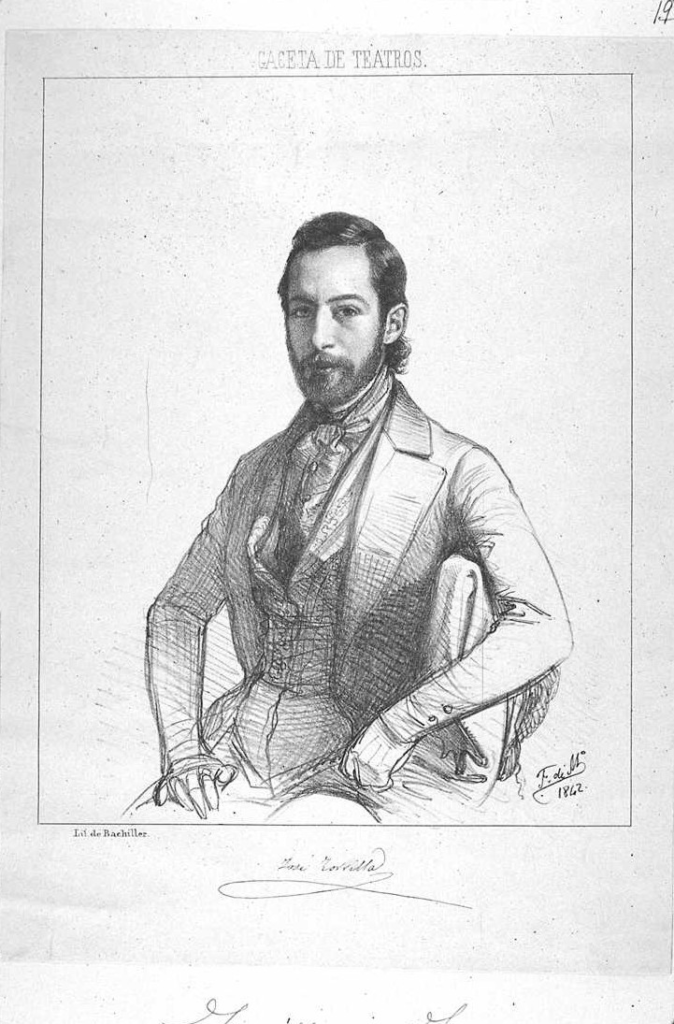
Above: José Zorrilla
Wystan Hugh Auden (21 February 1907 – 29 September 1973) was a British – American poet.
Auden’s poetry is noted for its stylistic and technical achievement, its engagement with politics, morals, love and religion, and its variety in tone, form and content.
Some of his best known poems are about love, such as “Funeral Blues“, on political and social themes, such as “September 1, 1939” and “The Shield of Achilles“, on cultural and psychological themes, such as The Age of Anxiety, and on religious themes, such as “For the Time Being” and “Horae Canonicae“.
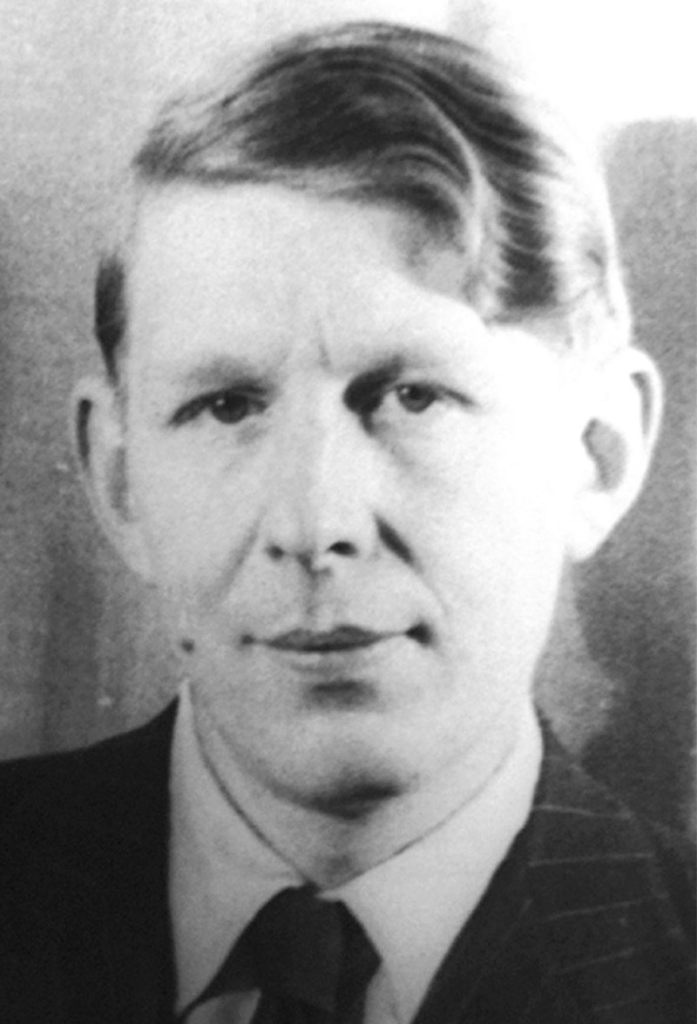
Above: W. H. Auden
Stop all the clocks, cut off the telephone,
Prevent the dog from barking with a juicy bone.
Silence the pianos and with muffled drum
Bring out the coffin, let the mourners come.
He was my North, my South, my East and West,
My working week and my Sunday rest,
My noon, my midnight, my talk, my song;
I thought that love would last for ever: I was wrong.
The stars are not wanted now; put out every one,
Pack up the moon and dismantle the sun,
Pour away the ocean and sweep up the woods;
For nothing now can ever come to any good.
Funeral Blues (1936)

I sit in one of the dives
On Fifty-second Street
Uncertain and afraid
As the clever hopes expire
Of a low dishonest decade:
Waves of anger and fear
Circulate over the bright
And darkened lands of the earth,
Obsessing our private lives;
The unmentionable odor of death
Offends the September night.
I and the public know
What all schoolchildren learn,
Those to whom evil is done
Do evil in return.
Into this neutral air
Where blind skyscrapers use
Their full height to proclaim
The strength of Collective Man,
Each language pours its vain
Competitive excuse.
The windiest militant trash
Important Persons shout
Is not so crude as our wish.
For the error bred in the bone
Of each woman and each man
Craves what it cannot have,
Not universal love
But to be loved alone.
All I have is a voice
To undo the folded lie,
The romantic lie in the brain
Of the sensual man-in-the-street
And the lie of Authority
Whose buildings grope the sky:
There is no such thing as the State
And no one exists alone;
Hunger allows no choice
To the citizen or the police;
We must love one another or die.
Defenceless under the night
Our world in stupor lies;
Yet, dotted everywhere,
Ironic points of light
Flash out wherever the Just
Exchange their messages:
May I, composed like them
Of Eros and of dust,
Beleaguered by the same
Negation and despair,
Show an affirming flame.
September 1, 1939 (1939)
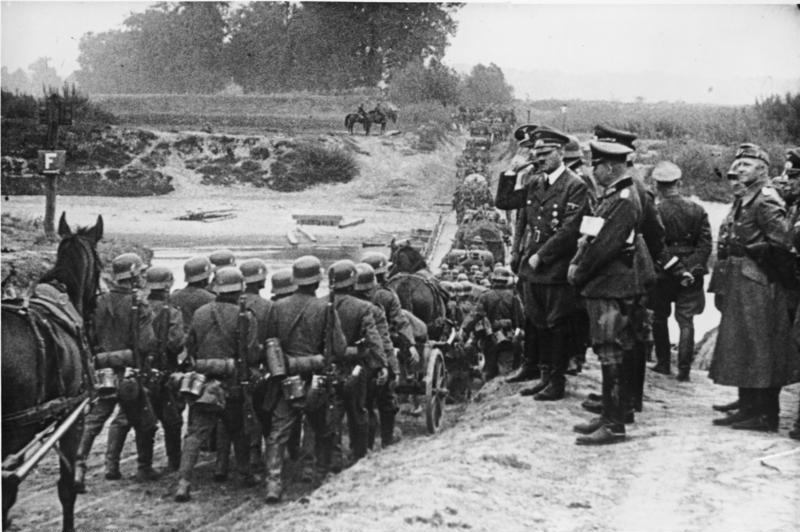
Above: German dictator Adolf Hitler observes German soldiers marching into Poland, 1 September 1939
Let us then
Consider rather the incessant Now of
The traveler through time, his tired mind
Biased towards bigness since his body must
Exaggerate to exist, possessed by hope…
We would rather be ruined than changed
We would rather die in our dread
Than climb the cross of the moment
And let our illusions die.
The Age of Anxiety (1948)
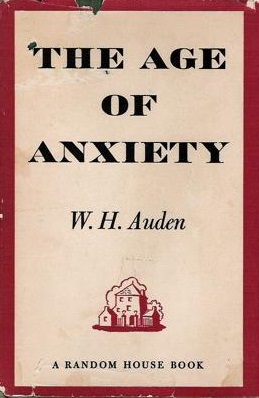
A million eyes, a million boots in line,
Without expression, waiting for a sign.
Out of the air a voice without a face
Proved by statistics that some cause was just
In tones as dry and level as the place:
No one was cheered and nothing was discussed…
A crowd of ordinary decent folk
Watched from without and neither moved nor spoke
As three pale figures were led forth and bound
To three posts driven upright in the ground.
The mass and majesty of this world, all
That carries weight and always weighs the same
Lay in the hands of others; they were small
And could not hope for help and no help came:
What their foes like to do was done, their shame
Was all the worst could wish; they lost their pride
And died as men before their bodies died.
A ragged urchin, aimless and alone,
Loitered about that vacancy: a bird
Flew up to safety from his well-aimed stone:
That girls are raped, that two boys knife a third,
Were axioms to him, who’d never heard
Of any world where promises were kept
Or one could weep because another wept.
The thin-lipped armorer,
Hephaestos, hobbled away,
Thetis of the shining breasts
Cried out in dismay
At what the god had wrought
To please her son, the strong
Iron-hearted man-slaying Achilles
Who would not live long.
The Shield of Achilles (1952)
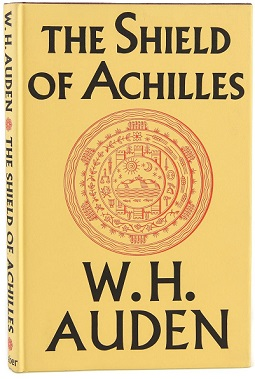
Auden was born in York.
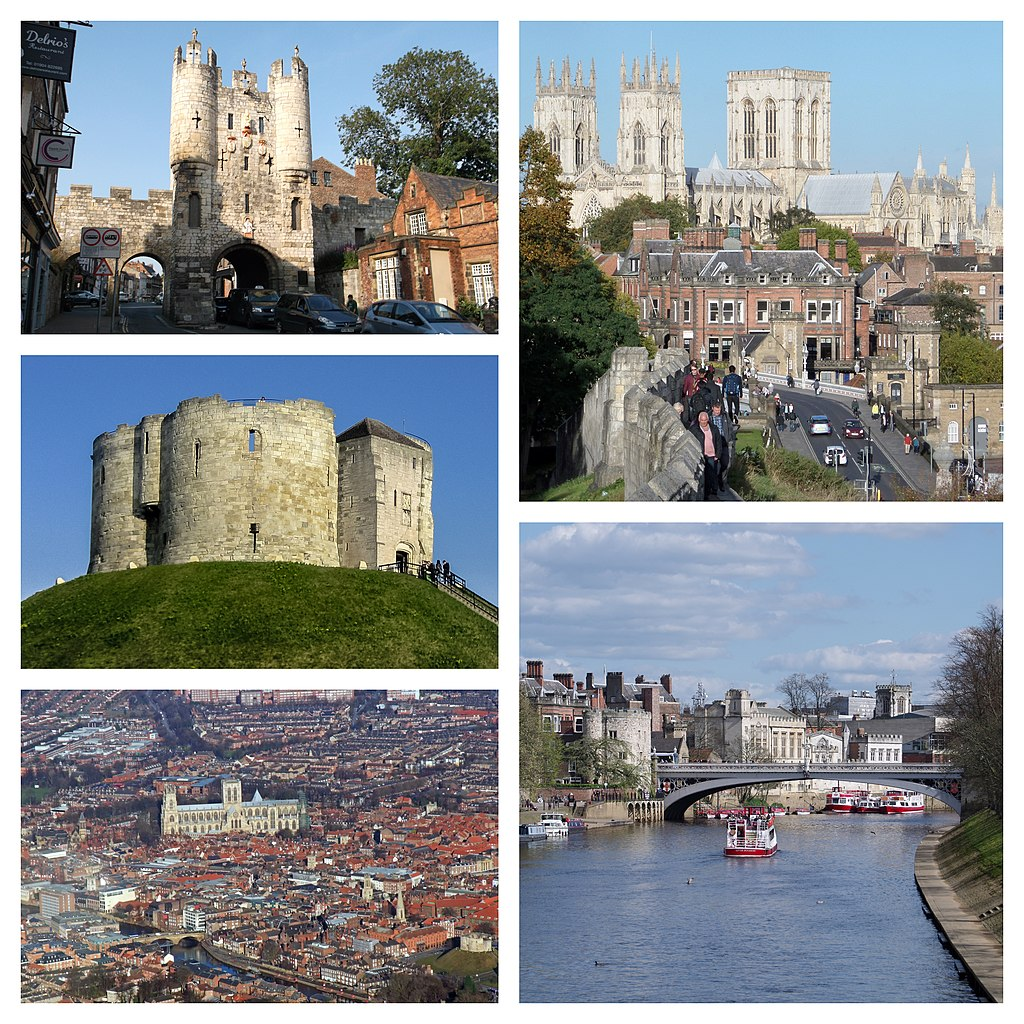
Above: Images of York, North Yorkshire, England
Auden grew up in and near Birmingham in a professional, middle-class family.

Above: Birmingham, West Midlands, England
Auden attended various English independent (or public) schools and studied English at Christ Church, Oxford.

Above: Christ Church, University of Oxford, England
After a few months in Berlin in 1928 – 1929, Auden spent five years (1930 – 1935) teaching in British private preparatory schools.

Above: Berlin, Germany
In 1939, Auden moved to the United States.
He became an American citizen in 1946, retaining his British citizenship.
Auden taught from 1941 to 1945 in American universities, followed by occasional visiting professorships in the 1950s.

Above: Flag of the United States of America
Auden came to wide public attention in 1930 with his first book, Poems.
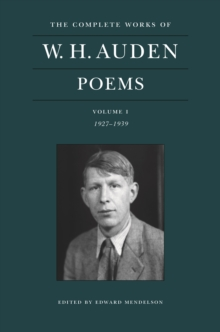
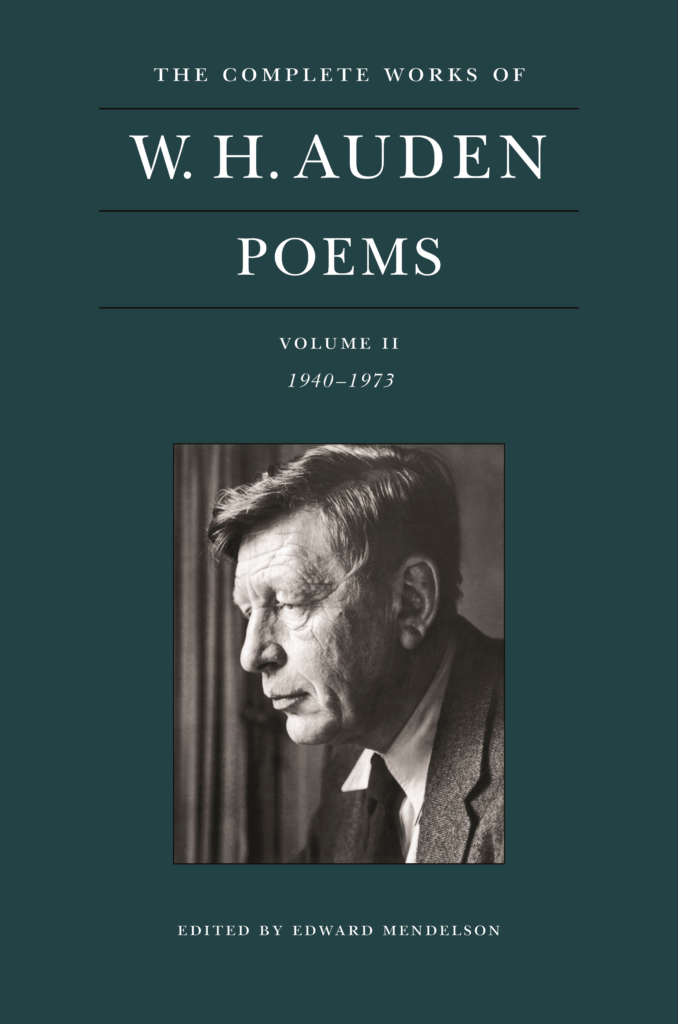
It was followed in 1932 by The Orators.
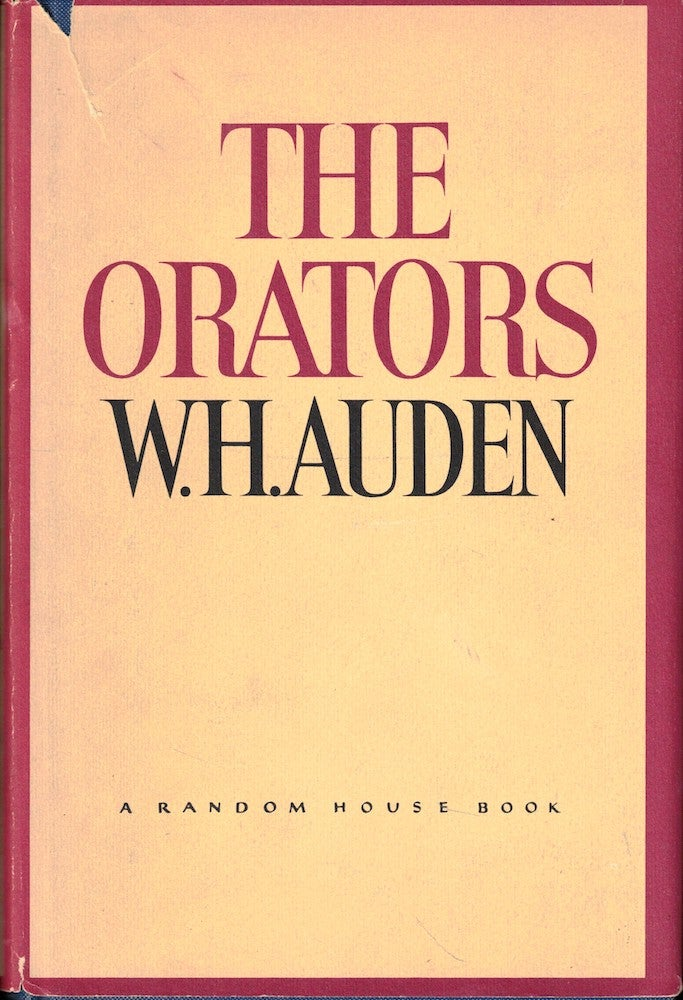
Three plays written in collaboration with Christopher Isherwood between 1935 and 1938 built his reputation as a left-wing political writer.
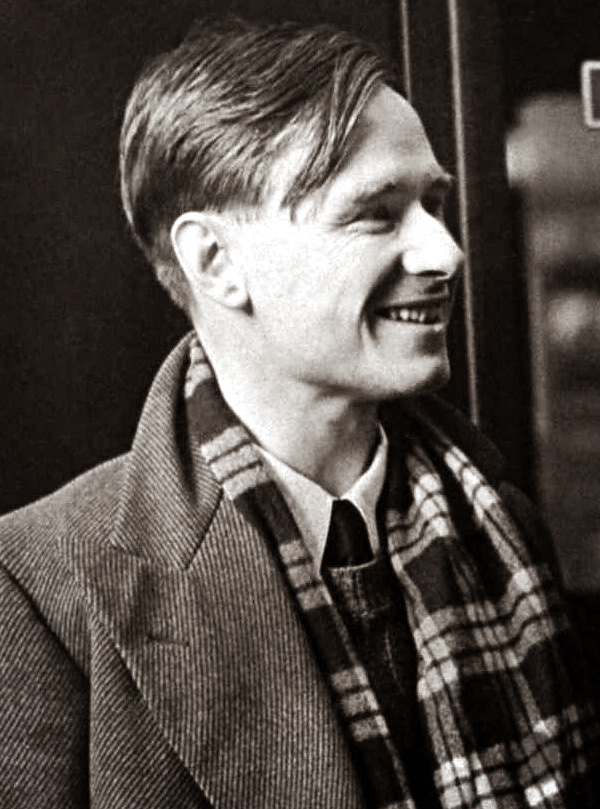
Above: English writer Christopher Isherwood (1904 – 1986)
Auden moved to the United States partly to escape this reputation, and his work in the 1940s, including the long poems “For the Time Being” and “The Sea and the Mirror“, focused on religious themes.
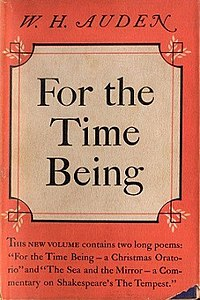
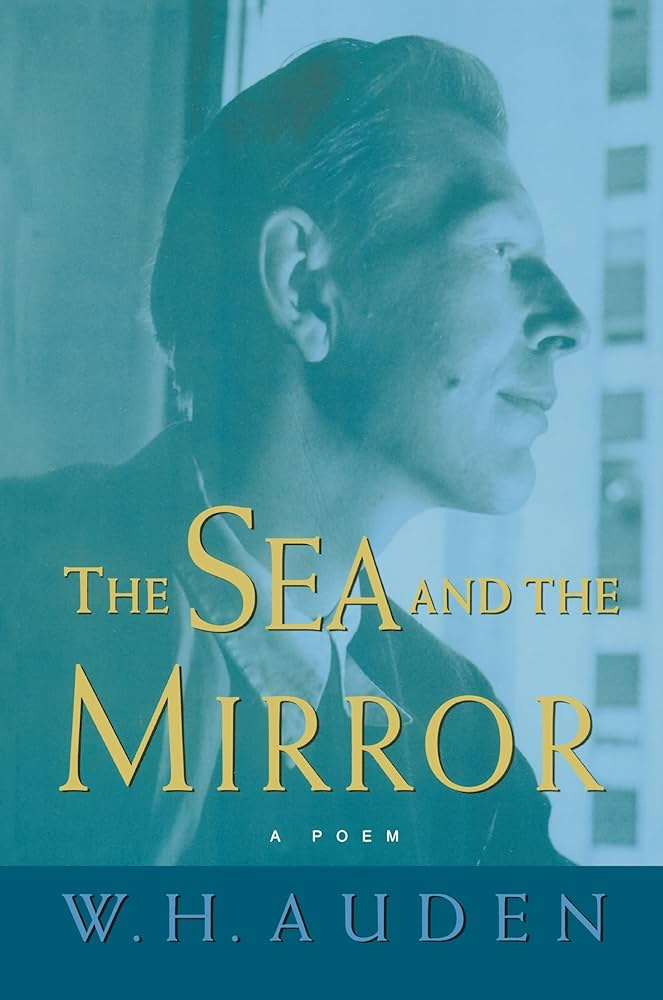
Auden won the Pulitzer Prize for Poetry for his 1947 long poem The Age of Anxiety, the title of which became a popular phrase describing the modern era.

Above: Medallion of the Pulitzer Prize
From 1956 to 1961, Auden was Professor of Poetry at Oxford.
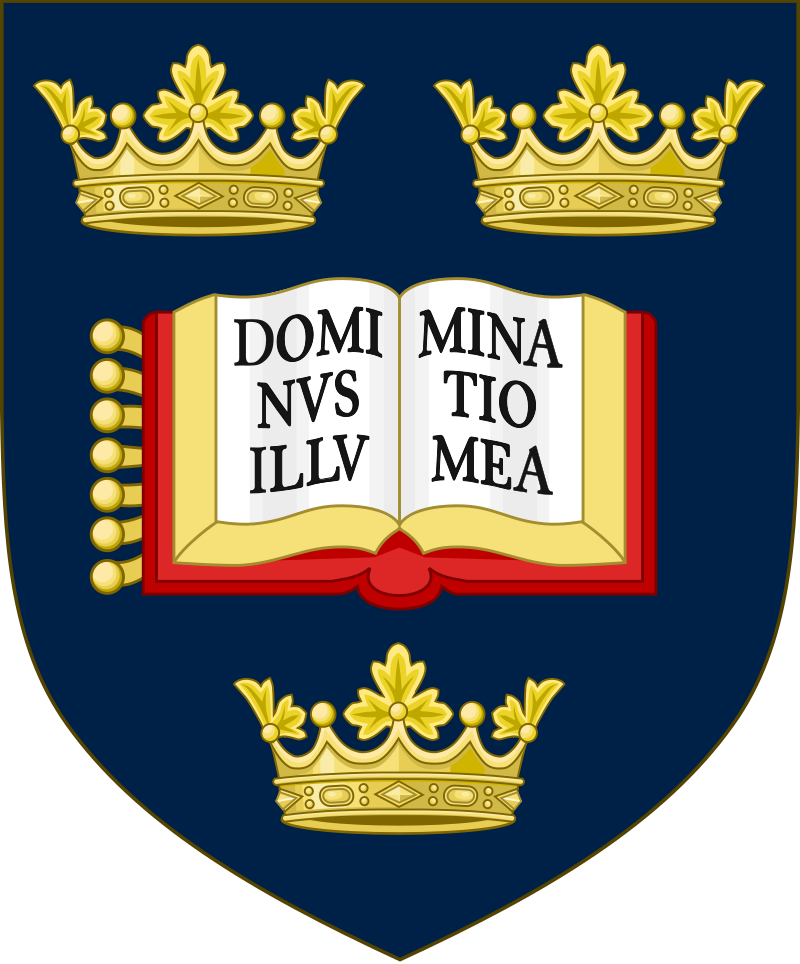
Above: Coat of arms of the University of Oxford
Auden’s lectures were popular with students and faculty and served as the basis for his 1962 prose collection The Dyer’s Hand.
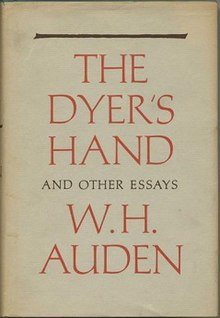
Auden was a prolific writer of prose essays and reviews on literary, political, psychological and religious subjects.
He worked at various times on documentary films, poetic plays, and other forms of performance.
Throughout his career he was both controversial and influential.
Critical views on his work ranged from sharply dismissive (treating him as a lesser figure than W. B. Yeats and T. S. Eliot) to strongly affirmative (as in Joseph Brodsky’s statement that he had “the greatest mind of the 20th century“).
After his death, his poems became known to a much wider public through films, broadcasts and popular media.
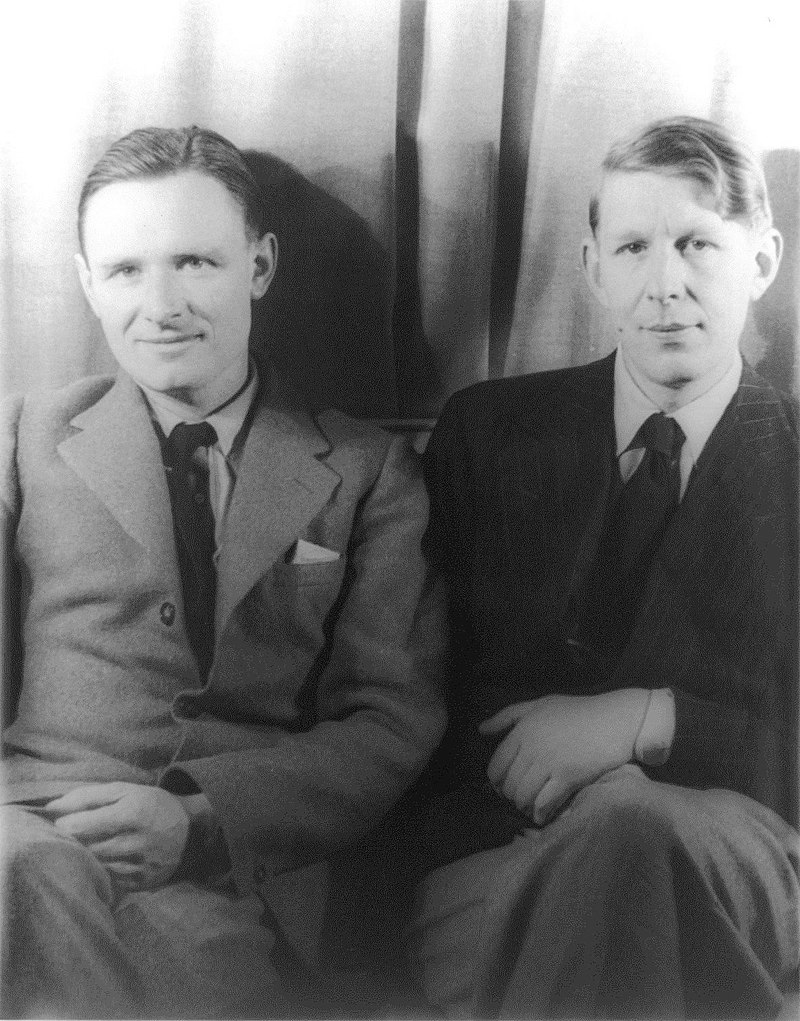
Above: Christopher Isherwood (left) and W. H. Auden (right), 6 February 1939
Auden was born at 54 Bootham, York, England, to George Augustus Auden (1872 – 1957), a physician, and Constance Rosalie Auden (née Bicknell; 1869 – 1941), who had trained (but never served) as a missionary nurse.
He was the 3rd of three sons.
The eldest, George Bernard Auden (1900 – 1978), became a farmer, while the second, John Bicknell Auden (1903 – 1991), became a geologist.
The Audens were minor gentry with a strong clerical tradition, originally of Rowley Regis, later of Horninglow, Staffordshire.
Auden, whose grandfathers were both Church of England clergymen, grew up in an Anglo-Catholic household that followed a “high” form of Anglicanism, with doctrine and ritual resembling those of Catholicism.
He traced his love of music and language partly to the church services of his childhood.
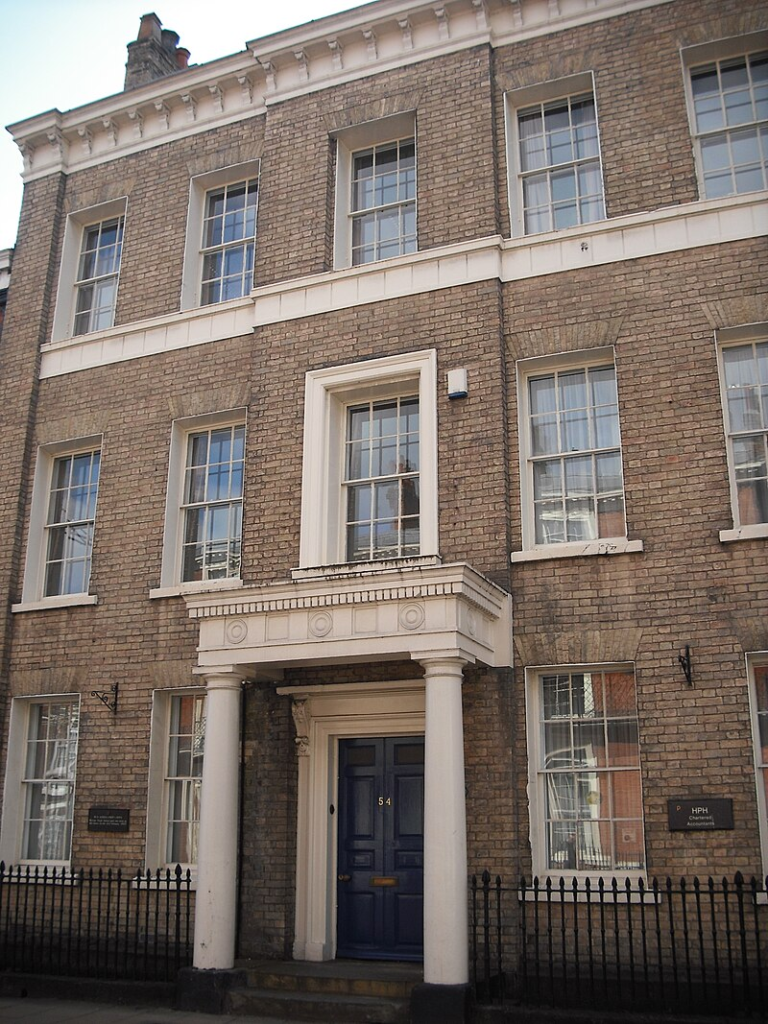
Above: Auden’s birthplace, York
He believed he was of Icelandic descent, and his lifelong fascination with Icelandic legends and Old Norse sagas is evident in his work.

Above: Flag of Iceland
His family moved to Homer Road in Solihull, near Birmingham, in 1908, where his father had been appointed the School Medical Officer and Lecturer (later Professor) of Public Health.
Auden’s lifelong psychoanalytic interests began in his father’s library.

Above: St. Alphege Church, Solihull, West Midlands, England
From the age of 8, Auden attended boarding schools, returning home for holidays.
His visits to the Pennine landscape and its declining lead-mining industry figure in many of his poems.


Above: Forest of Bowland, Pennines
The remote decaying mining village of Rookhope was for him a “sacred landscape“, evoked in a late poem, “Amor Loci“.

Above: Rookhope Village, Durham, England
Until he was 15, Auden expected to become a mining engineer, but his passion for words had already begun.
He wrote later:
“Words so excite me that a pornographic story, for example, excites me sexually more than a living person can do.“
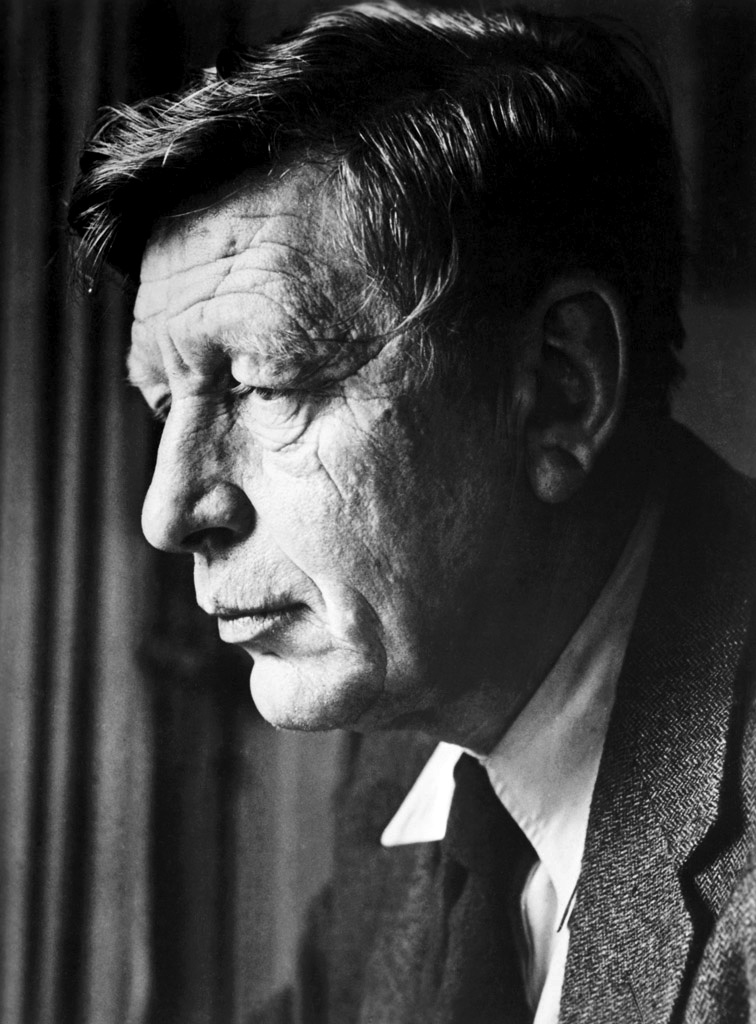
Above: W. H. Auden
Auden attended St Edmund’s School, Hindhead, Surrey, where he met Christopher Isherwood, later famous in his own right as a novelist.

Above: St. Edmund’s School, Hindhead, Surrey, England
At age 13, Auden went to Gresham’s School in Holt, Norfolk.
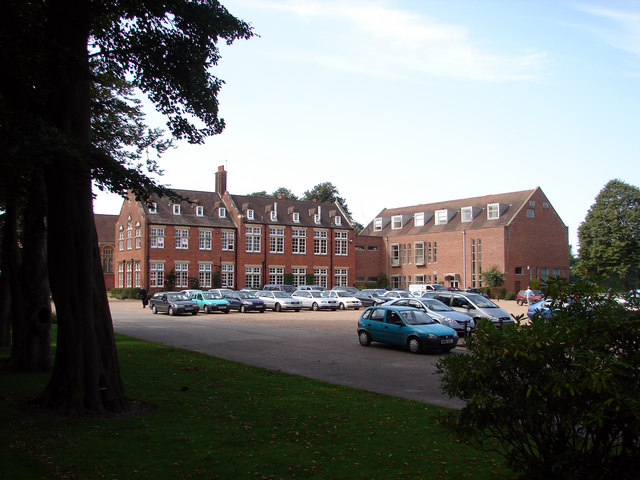
Above: Gresham’s School, Holt, Norfolk, England
There, in 1922, when his friend Robert Medley asked him if he wrote poetry, Auden first realized his vocation was to be a poet.
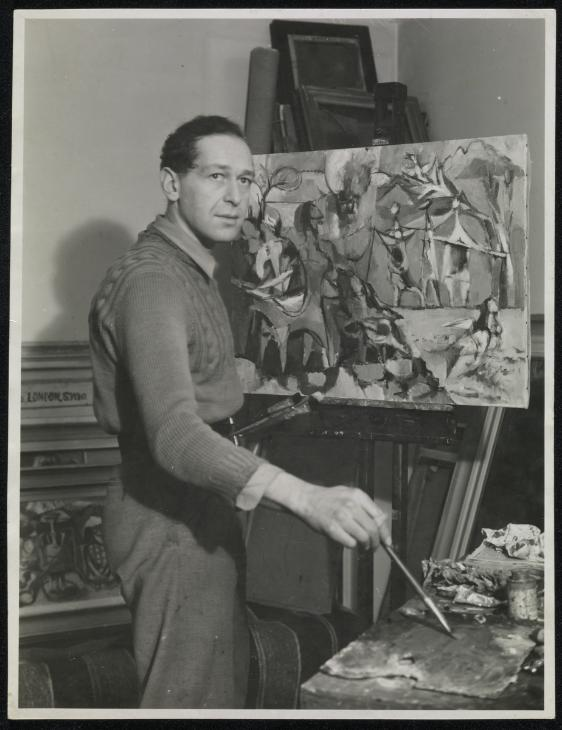
Above: English artist Robert Medley (1905 – 1994)
Soon after, Auden “discovered that he had lost his faith” (through a gradual realization that he had lost interest in religion, not through any decisive change of views).
In school productions of Shakespeare, he played Katherina in The Taming of the Shrew in 1922, and Caliban in The Tempest in 1925, his last year at Gresham’s.
A review of his performance as Katherina noted that despite a poor wig, he had been able “to infuse considerable dignity into his passionate outbursts“.

Above: English writer William Shakespeare (1564 – 1616)
Auden’s first published poems appeared in the school magazine in 1923.
Auden later wrote a chapter on Gresham’s for Graham Greene’s The Old School: Essays by Divers Hands (1934).
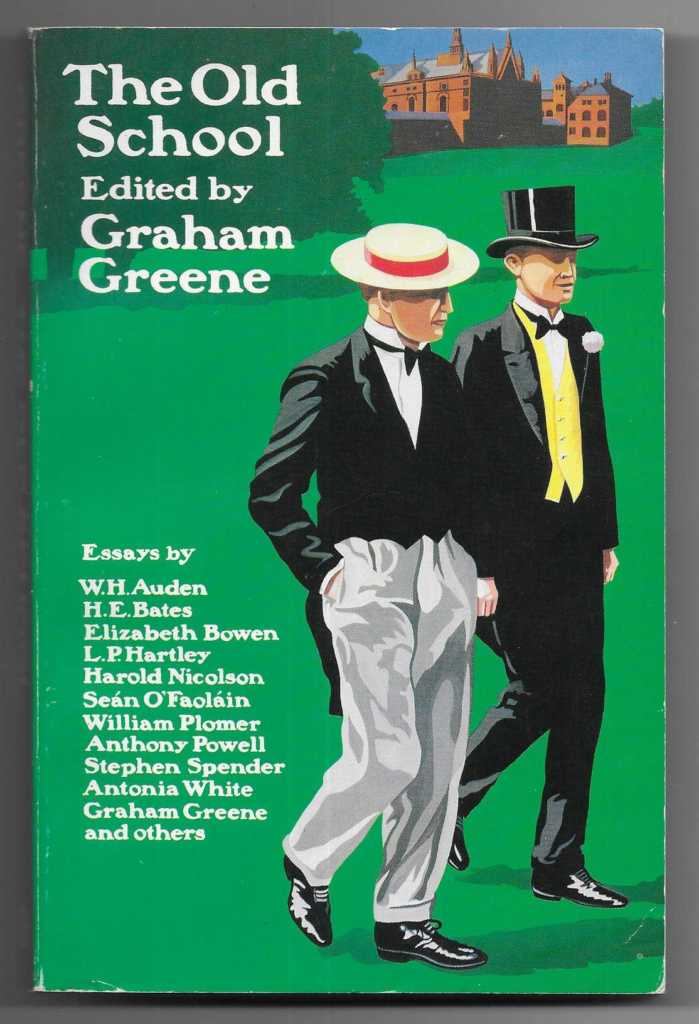
In 1925 he went up to Christ Church, Oxford, with a scholarship in biology.
He changed to English by his second year and was introduced to Old English poetry through the lectures of J. R. R. Tolkien.
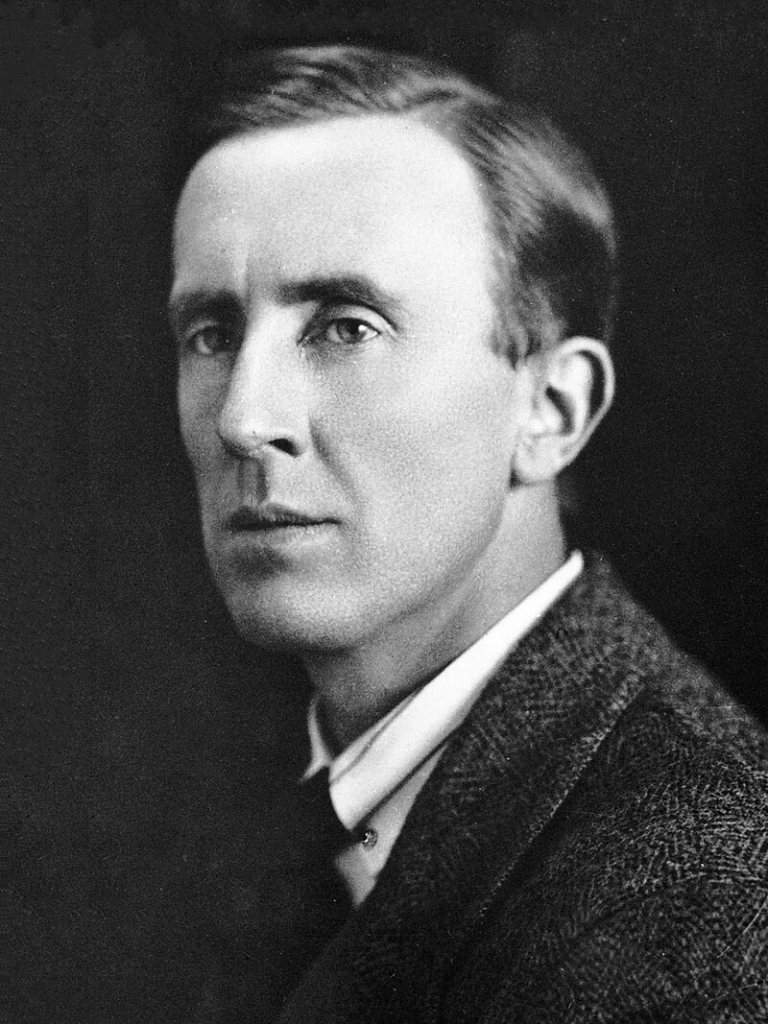
Above: South African-English writer John Ronald Reuel Tolkien (1892 – 1973)
Friends he met at Oxford include Cecil Day-Lewis, Louis MacNeice, and Stephen Spender.
These three were commonly though misleadingly identified in the 1930s as the “Auden Group” for their shared (but not identical) left-wing views.
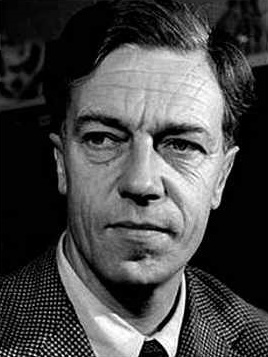
Above: British poet Cecil Day-Lewis (1904 – 1972)
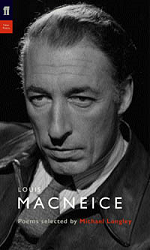
Above: English writer Louis MacNeice (1907 – 1963)
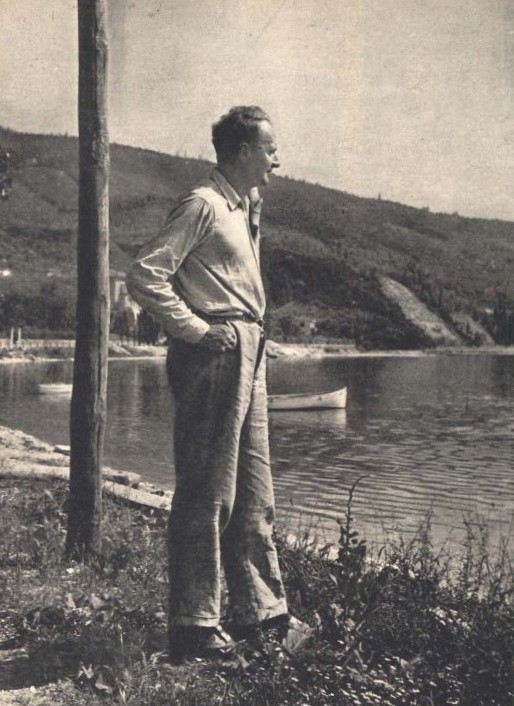
Above: English writer Stephen Spender (1909 – 1995)
Auden left Oxford in 1928 with a third-class degree.
Auden was reintroduced to Christopher Isherwood in 1925 by his fellow student / future priest-writer A. S. T. Fisher (1906 – 1989).
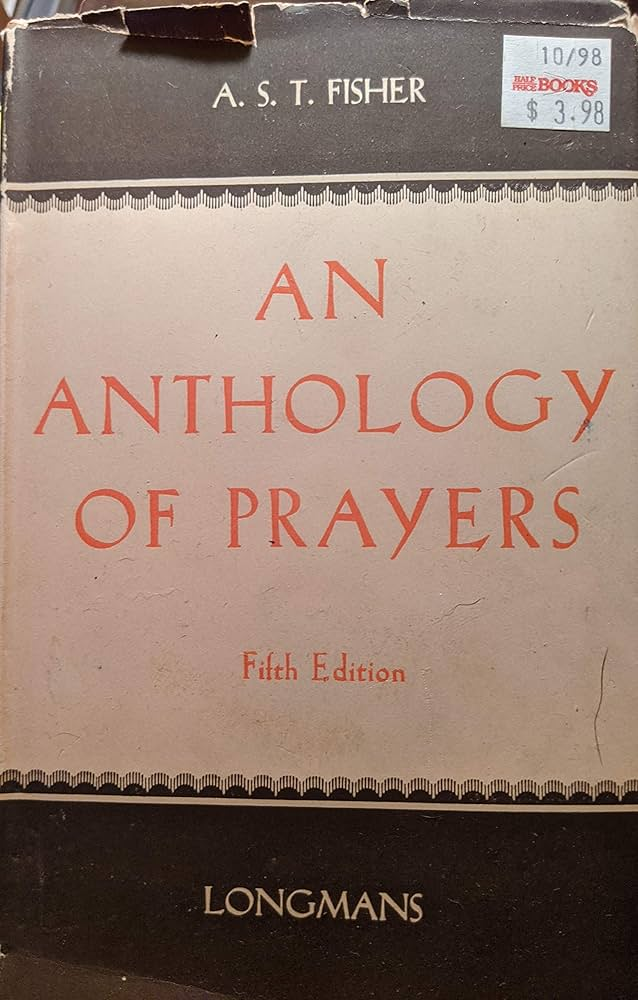
For the next few years Auden sent poems to Isherwood for comments and criticism.
The two maintained an intimate friendship in intervals between their relations with others.
From 1935 to 1939 they collaborated on three plays and a travel book.
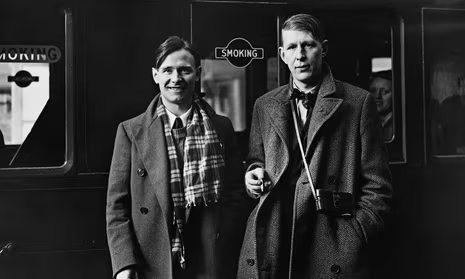
Above: Isherwood and Auden
From his Oxford years onward, Auden’s friends uniformly described him as funny, extravagant, sympathetic, generous, and, partly by his own choice, lonely.
In groups he was often dogmatic and overbearing in a comic way; in more private settings he was diffident and shy except when certain of his welcome.
He was punctual in his habits, and obsessive about meeting deadlines, while living amidst physical disorder.
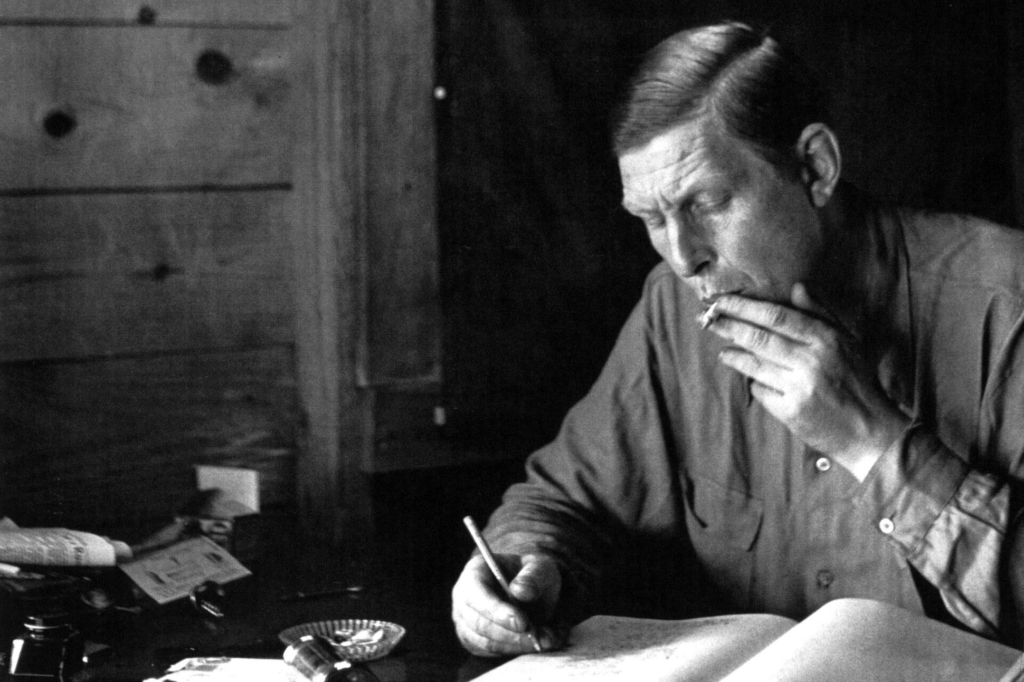
Above: W. H. Auden
In late 1928, Auden left Britain for nine months, going to Berlin, perhaps partly as an escape from English repressiveness.
In Berlin, he first experienced the political and economic unrest that became one of his central subjects.
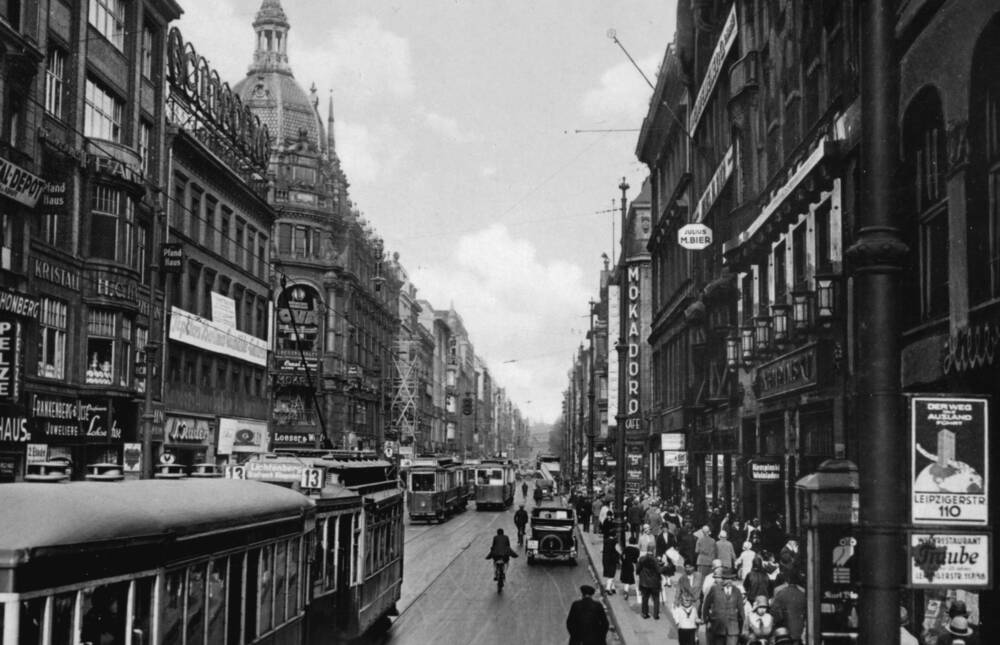
Above: Berlin, Germany (1928)
Around the same time, Stephen Spender privately printed a small pamphlet of Auden’s Poems in an edition of about 45 copies, distributed among Auden’s and Spender’s friends and family.
This edition is usually referred to as Poems [1928] to avoid confusion with Auden’s commercially published 1930 volume.
On returning to Britain in 1929 he worked briefly as a tutor.
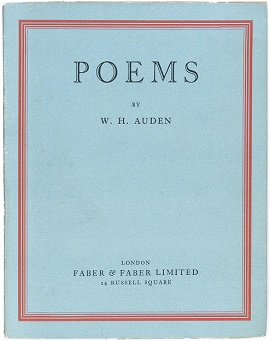
In 1930 his first published book, Poems (1930), was accepted by T. S. Eliot for Faber and Faber, and the same firm remained the British publisher of all the books he published thereafter.
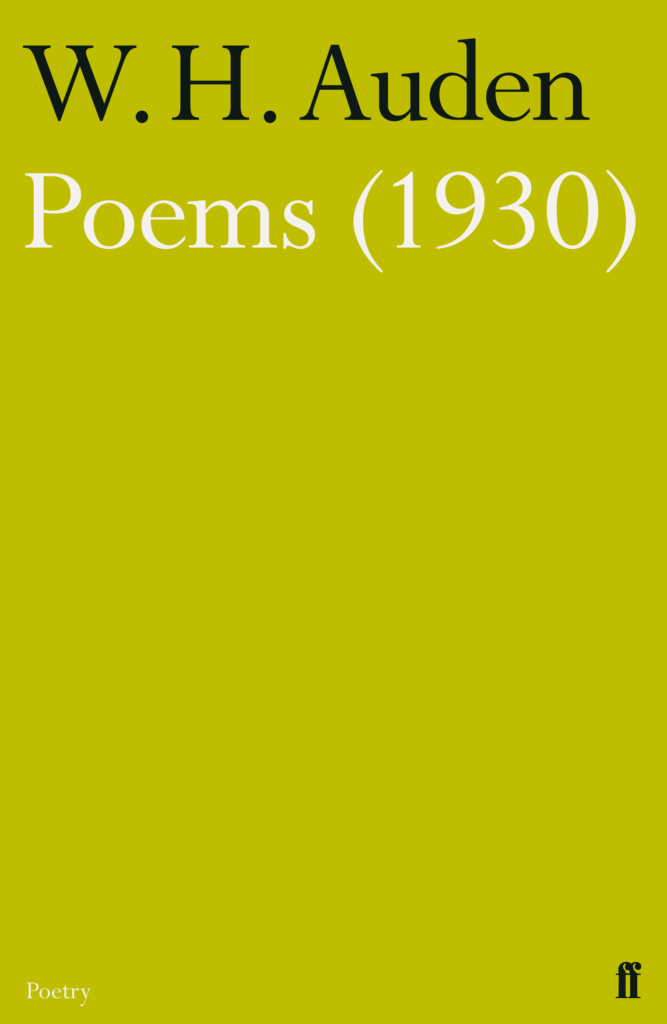
In 1930, he began five years as a schoolmaster in boys’ schools:
Two years at the Larchfield Academy (now Lomond School) in Helensburgh, Scotland, then three years at the Downs School in the Malvern Hills, where he was a much-loved teacher.

Above: Lomond School, Helensburgh, Argyll and Bute, Scotland

Above: The Downs School, Malvern, Herefordshire, England
At the Downs, in June 1933, Auden experienced what he later described as a “Vision of Agape“, while sitting with three fellow teachers at the school, when he suddenly found that he loved them for themselves, that their existence had infinite value for him.
This experience, he said, later influenced his decision to return to the Anglican Church in 1940.

During these years Auden’s erotic interests focused, as he later said, on an idealized “Alter Ego” rather than on individual people.
His relationships (and his unsuccessful courtships) tended to be unequal either in age or intelligence.
His sexual relations were transient, although some evolved into long friendships.
He contrasted these relationships with what he later regarded as the “marriage” (his word) of equals that he began with American poet Chester Kallman (1921 – 1975) in 1939, based on the unique individuality of both partners.
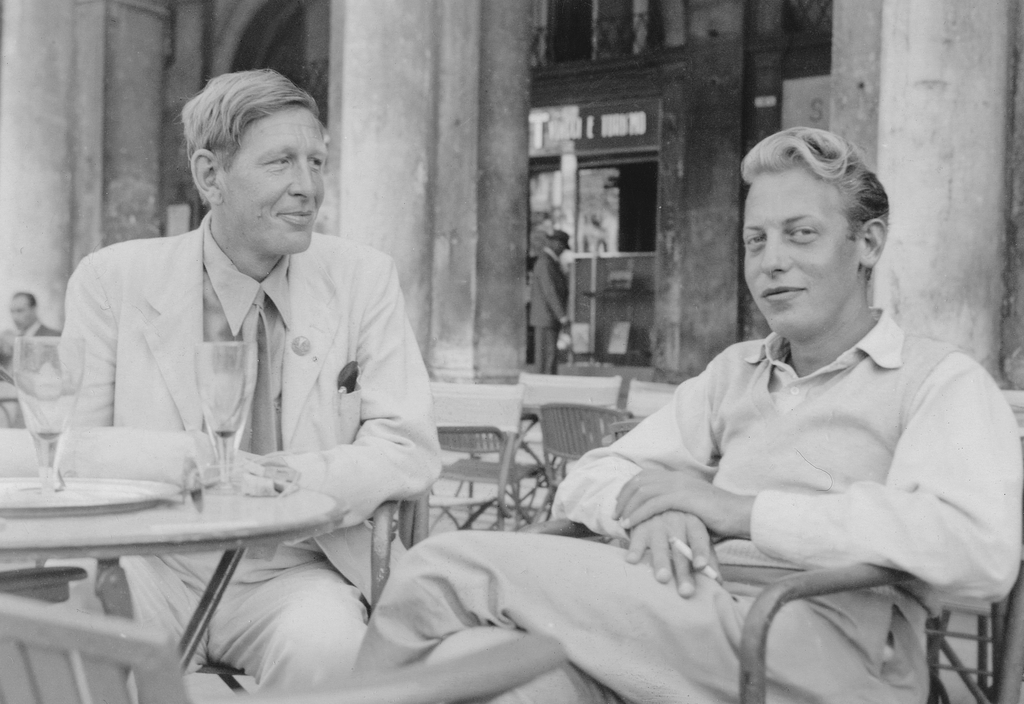
Above: Auden and Kallman
In 1935 Auden married Erika Mann (1905 – 1969), the bisexual novelist daughter of Thomas Mann, when it became apparent that the Nazis were intending to strip her of her German citizenship.
Mann had asked Christopher Isherwood if he would marry her so she could become a British citizen.
He declined but suggested she approach Auden, who readily agreed to a marriage of convenience.
Mann and Auden never lived together, but remained on good terms throughout their lives and were still married when Mann died in 1969.
She left him a small bequest in her will.
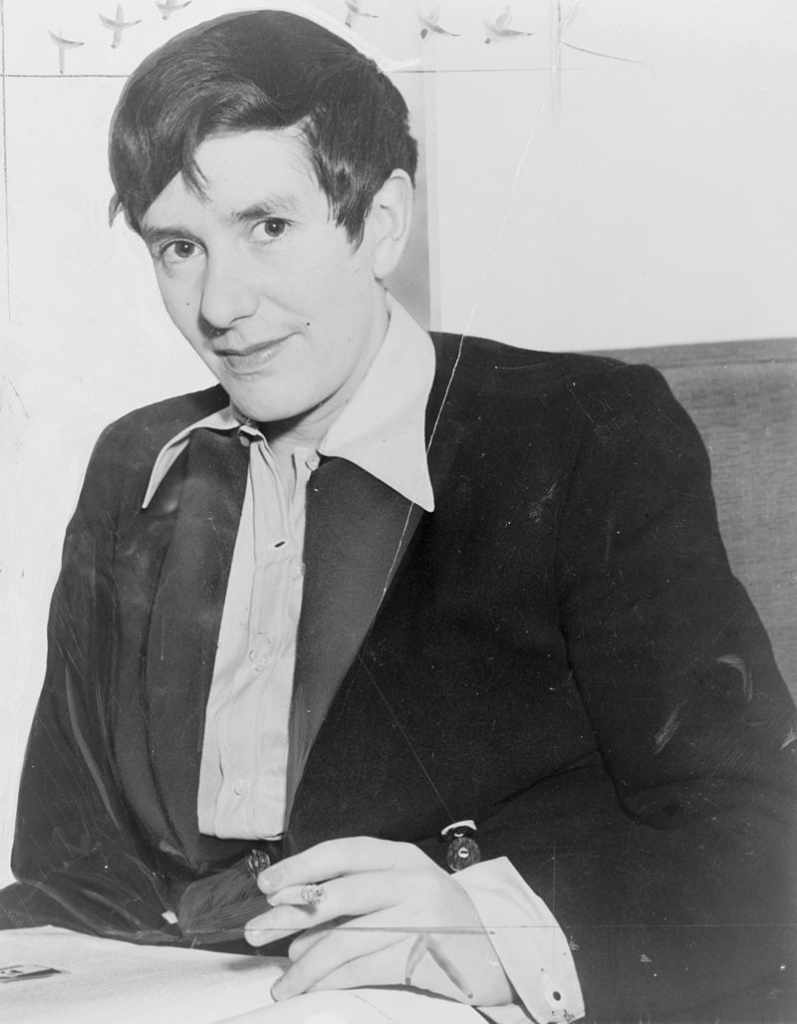
Above: German actress/novelist Erika Mann (1905 – 1969)
In 1936, Auden introduced actress Therese Giehse, Mann’s lover, to the writer John Hampson.
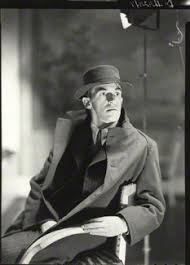
Above: English novelist John Hampson (1901 – 1955)
They too married so that Giehse could leave Germany.
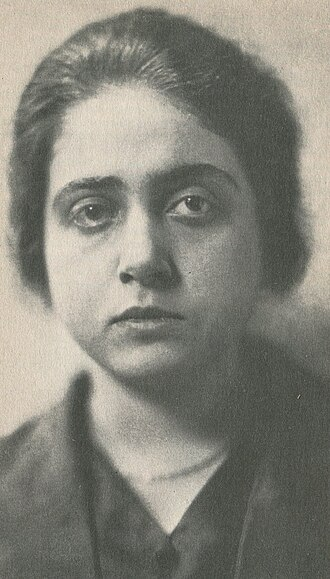
Above: German actress Therese Giehse (1898 – 1975)
From 1935 until he left Britain early in 1939, Auden worked as freelance reviewer, essayist, and lecturer, first with the GPO Film Unit, a documentary film-making branch of the post office, headed by Scottish filmmaker John Grierson.
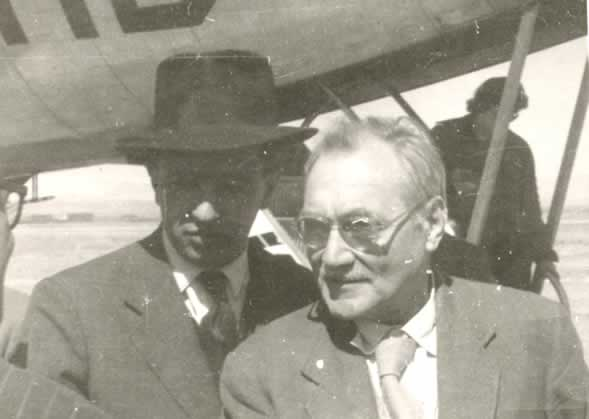
Above: Jorge Ruiz (left) and John Grierson (right)
Through his work for the Film Unit in 1935 he met and collaborated with Benjamin Britten, with whom he also worked on plays, song cycles, and a libretto.
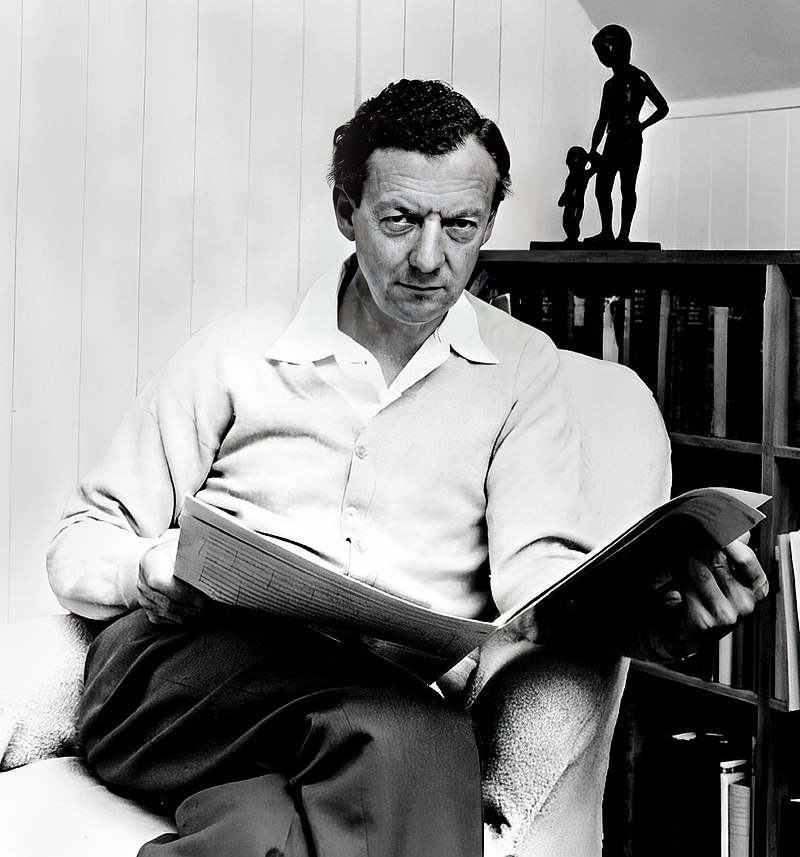
Above: English composer Benjamin Britten (1913 – 1976)
Auden’s plays in the 1930s were performed by the Group Theatre, in productions that he supervised to varying degrees.
His work now reflected his belief that any good artist must be “more than a bit of a reporting journalist“.
In 1936, Auden spent three months in Iceland where he gathered material for a travel book Letters from Iceland (1937), written in collaboration with Louis MacNeice.
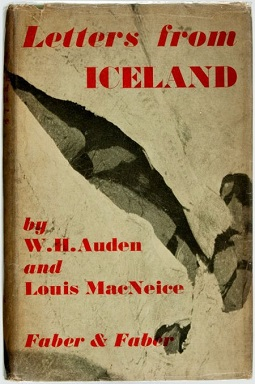
In 1937, Auden went to Spain intending to drive an ambulance for the Republic in the Spanish Civil War, but was put to work writing propaganda at the Republican press and propaganda office, where he felt useless and left after a week.
He returned to England after a brief visit to the front at Sarineña.
His seven-week visit to Spain affected him deeply.
His social views grew more complex as he found political realities to be more ambiguous and troubling than he had imagined.

Above: Images of the Spanish Civil War (1936 – 1939)
Again attempting to combine reportage and art, he and Isherwood spent six months in 1938 visiting China amid the Sino-Japanese War, working on their book Journey to a War (1939).
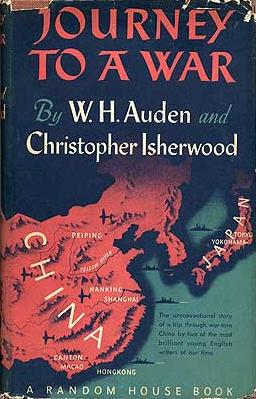
On their way back to England they stayed briefly in New York and decided to move to the United States.
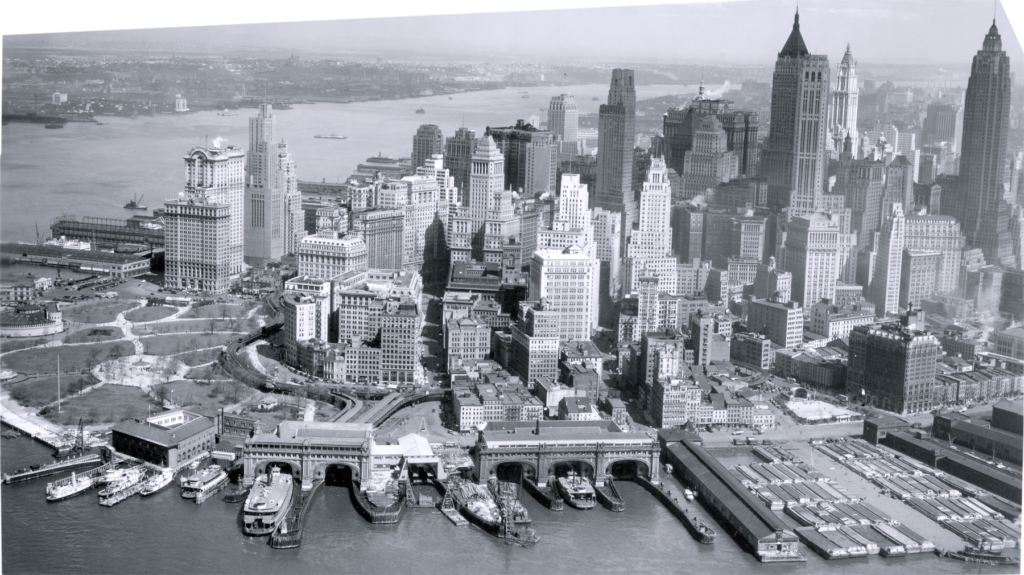
Above: New York City (1938)
Auden spent late 1938 partly in England, partly in Brussels.
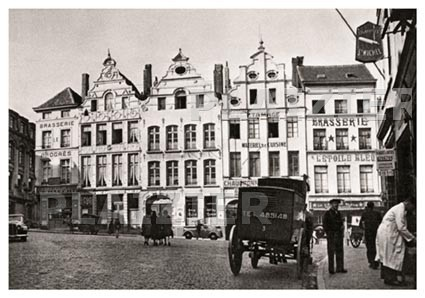
Above: Brussels, Belgium (1938)
Many of Auden’s poems during the 1930s and after were inspired by unconsummated love.
In the 1950s he summarized his emotional life in a famous couplet:
If equal affection cannot be
Let the more loving one be me
(“The More Loving One“).
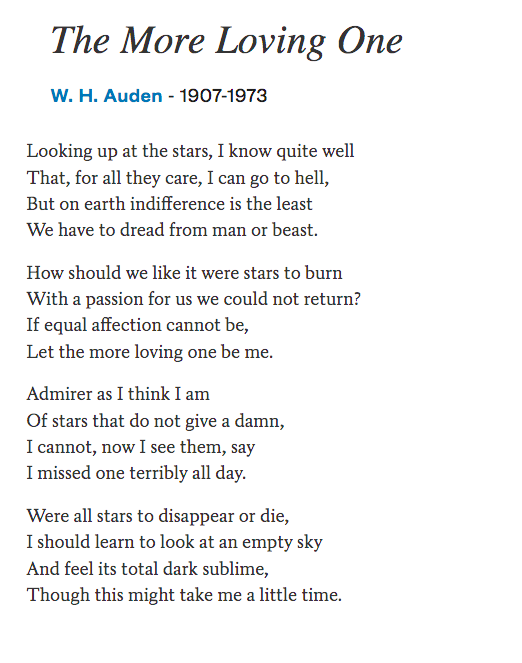
Auden had a gift for friendship and, starting in the late 1930s, a strong wish for the stability of marriage.
In a letter to his friend Irish writer James Stern he called marriage “the only subject“.
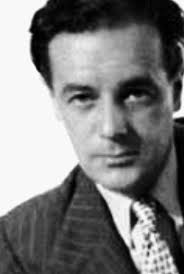
Above: James Stern (1904 – 1993)
Throughout his life, Auden performed charitable acts, sometimes in public, as in his 1935 marriage of convenience to Erika Mann, but, especially in later years, more often in private.
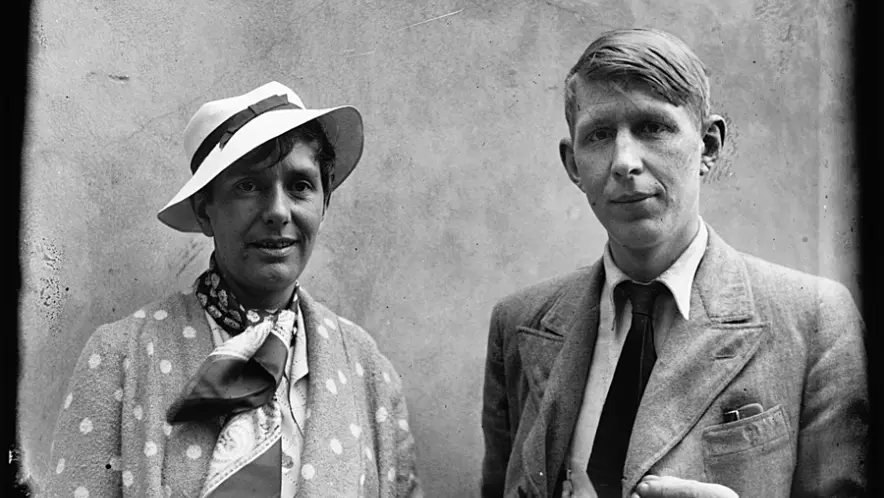
Above: Erika Mann and W. H. Auden
Auden was embarrassed if they were publicly revealed, as when his gift to his friend Dorothy Day for the Catholic Worker movement was reported on the front page of The New York Times in 1956.
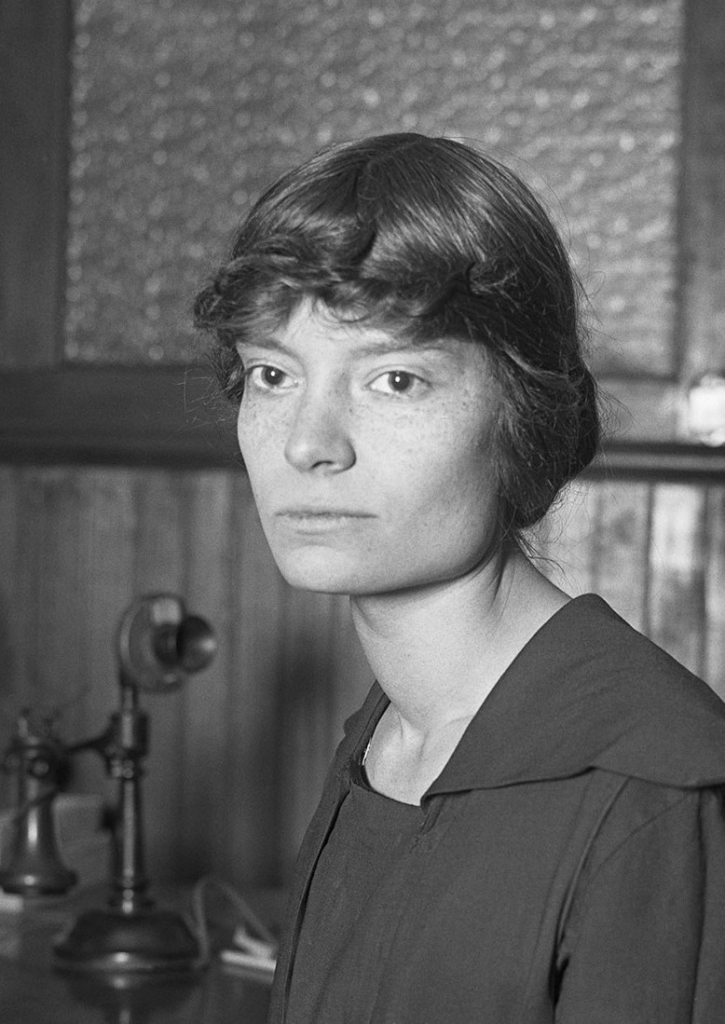
Above: American activist Dorothy Day (1897 – 1980)
Auden and Isherwood sailed to New York City in January 1939, entering on temporary visas.
Their departure from Britain was later seen by many as a betrayal, and Auden’s reputation suffered.
In April 1939, Isherwood moved to California.
He and Auden saw each other only intermittently in later years.
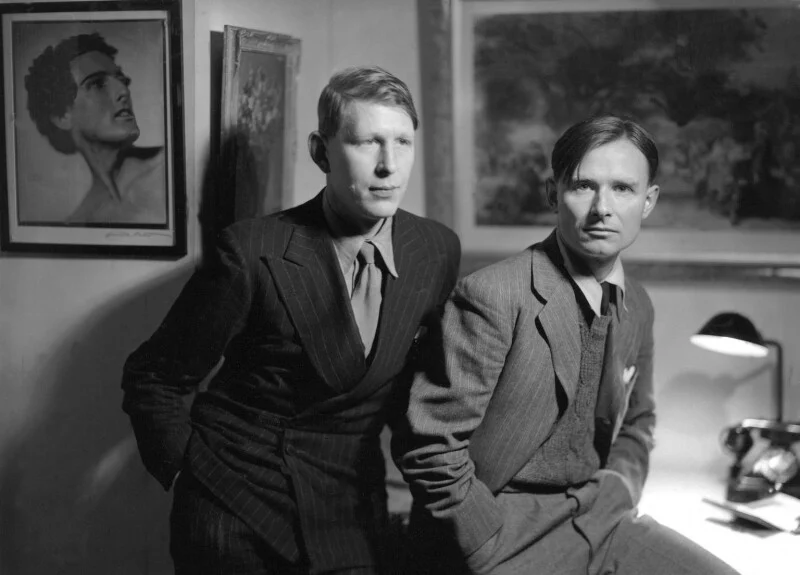
Above: Auden and Isherwood
Around this time, Auden met the poet Chester Kallman, who became his lover for the next two years.
(Auden described their relation as a “marriage” that began with a cross-country “honeymoon” journey.)
In 1941 Kallman ended their intimate relationship because he could not accept Auden’s insistence on mutual fidelity, but he and Auden remained companions for the rest of Auden’s life, sharing houses and apartments from 1953 until Auden’s death.
Auden dedicated both editions of his collected poetry (1945/50 and 1966) to Isherwood and Kallman.
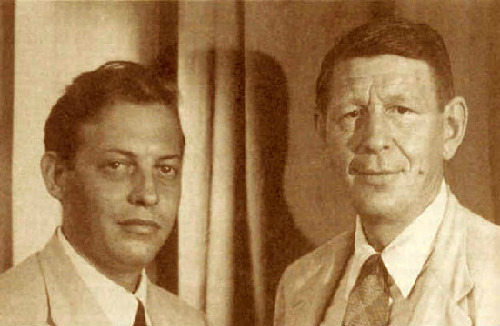
Above: Kallman and Auden
In 1940 – 1941 Auden lived in a house at 7 Middagh Street in Brooklyn Heights, that he shared with Carson McCullers, Benjamin Britten, and others, which became a famous centre of artistic life, nicknamed “February House“.
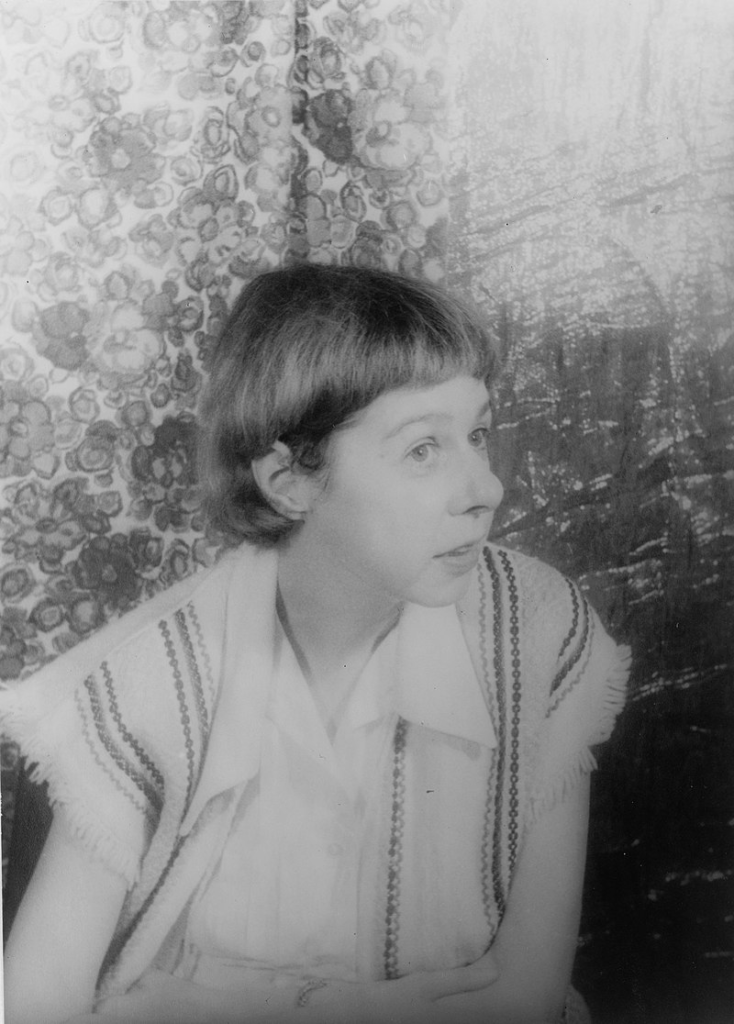
Above: American writer Carson McCullers (1917 – 1967)
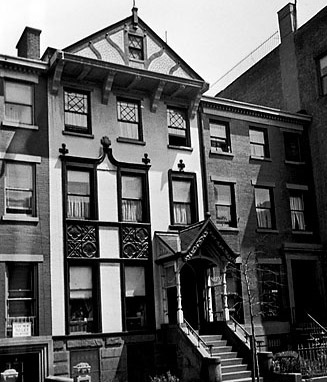
Above: February House, Brooklyn Heights, New York
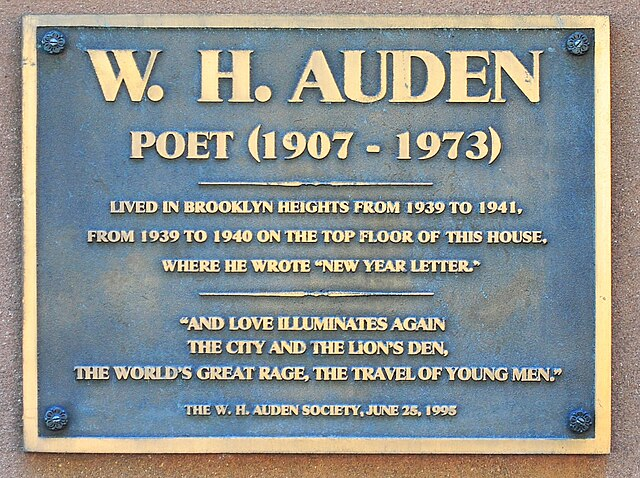
In 1940, Auden joined the Episcopal Church, returning to the Anglican Communion he had abandoned at 15.

Above: Shield of the Episcopal Church (American Anglican)
His reconversion was influenced partly by what he called the “sainthood” of Charles Williams, whom he had met in 1937, and partly by reading Søren Kierkegaard and Reinhold Niebuhr.

Above: English writer Charlie Williams (1886 – 1945)
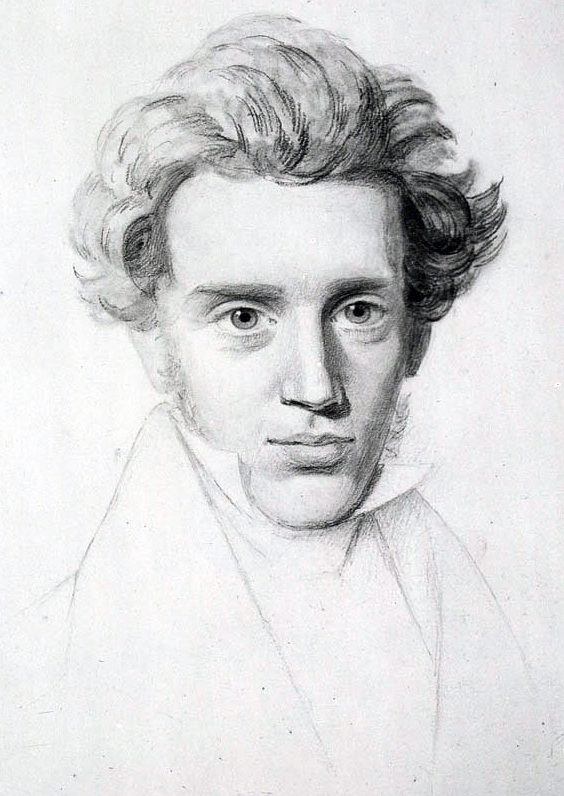
Above: Danish philosopher Søren Kierkegaard (1813 – 1855)
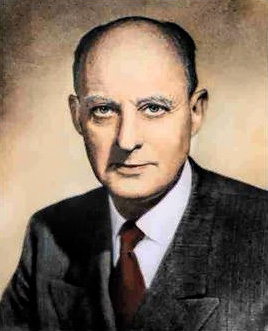
Above: American theologian Reinhold Niebuhr (1892 – 1971)
His existential, this-worldly Christianity became a central element in his life.
After Britain declared war on Germany in September 1939, Auden told the British embassy in Washington that he would return to the UK if needed.
He was told that, among those his age (32), only qualified personnel were needed.

Above: Flag of the United Kingdom
In 1941 – 1942 Auden taught English at the University of Michigan.

Auden was called for the draft in the United States Army in August 1942, but was rejected on medical grounds.

He had been awarded a Guggenheim Fellowship for 1942 – 1943 but did not use it, choosing instead to teach at Swarthmore College in 1942 – 1945.


In mid-1945, after the end of World War II in Europe, he was in Germany with the US Strategic Bombing Survey, studying the effects of Allied bombing on German morale, an experience that affected his postwar work as his visit to Spain had affected him earlier.

On his return, Auden settled in Manhattan, working as a freelance writer, a lecturer at The New School for Social Research, and a visiting professor at Bennington, Smith and other American colleges.

In 1946, he became a naturalized citizen of the US.

Above: Coat of arms of the United States of America
In 1948 Auden began spending his summers in Europe, together with Chester Kallman, first in Ischia, Italy, where he rented a house.

Above: Ischia, Italy
Starting in 1958, Auden began spending his summers in Kirchstetten, Austria, where he bought a farmhouse with the prize money of the Premio Feltrinelli awarded to him in 1957.

Auden said that he shed tears of joy at owning a home for the first time.
His later poetry, mostly written in Austria, includes his sequence “Thanksgiving for a Habitat” about his Kirchstetten home.
Auden’s letters and papers sent to his friend the translator Stella Musulin (1915 – 1996), available online, provide insights into his Austrian years.

Above: Auden House, Kirchstetten, Austria
From 1956 to 1961, Auden was Professor of Poetry at Oxford University, where he was required to give three lectures each year.
This fairly light workload allowed him to continue to spend winter in New York, where he lived at 77 St. Mark’s Place in Manhattan’s East Village, and to spend summer in Europe, spending only three weeks each year lecturing in Oxford.
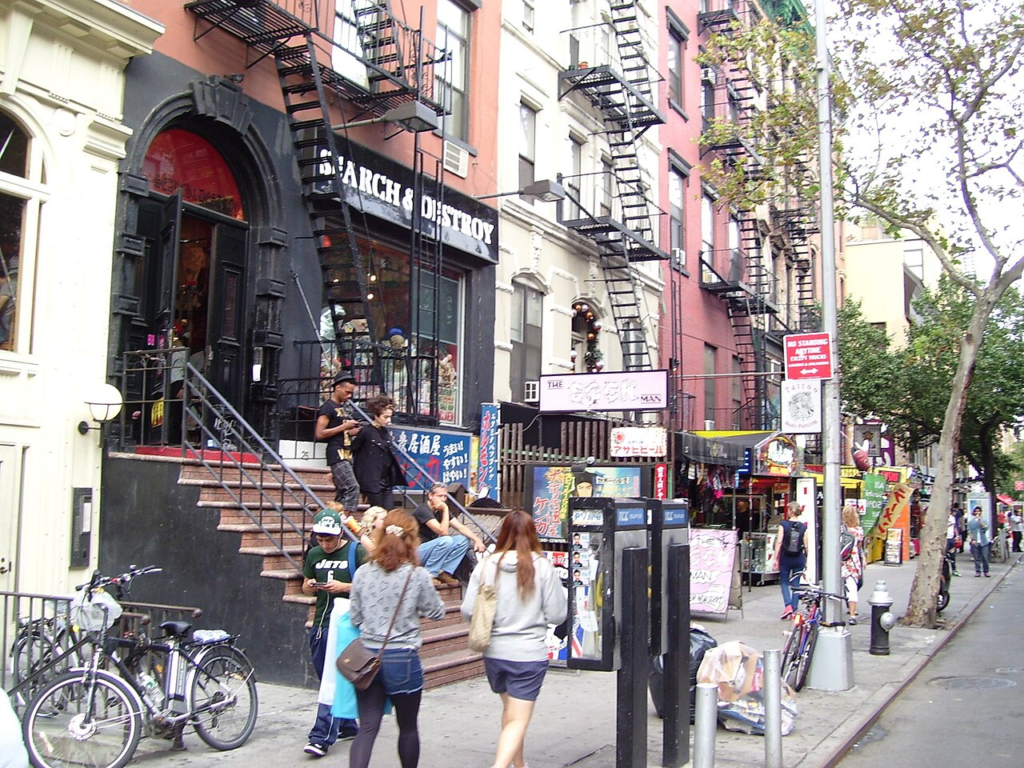
Above: St. Mark’s Place, East Village, New York City
Auden earned his income mostly from readings and lecture tours, and by writing for The New Yorker, The New York Review of Books, and other magazines.


In 1963, Kallman left the apartment he shared in New York with Auden, and lived during the winter in Athens while continuing to spend his summers with Auden in Austria.
Auden spent the winter of 1964 – 1965 in Berlin through an artist-in-residence program of the Ford Foundation.

Following some years of lobbying by his friend David Luke (1921 – 2005), Auden’s old college, Christ Church, in February 1972 offered him a cottage on its grounds to live in.
He moved his books and other possessions from New York to Oxford in September 1972, while continuing to spend summers in Austria with Kallman.
He spent only one winter in Oxford before his death in 1973.

Above: Oxford, Oxfordshire, England
Auden died at 66 of heart failure at the Altenburgerhof Hotel in Vienna overnight on 28 – 29 September 1973, a few hours after giving a reading of his poems for the Austrian Society for Literature at the Palais Pálffy.
He had intended to return to Oxford the following day.
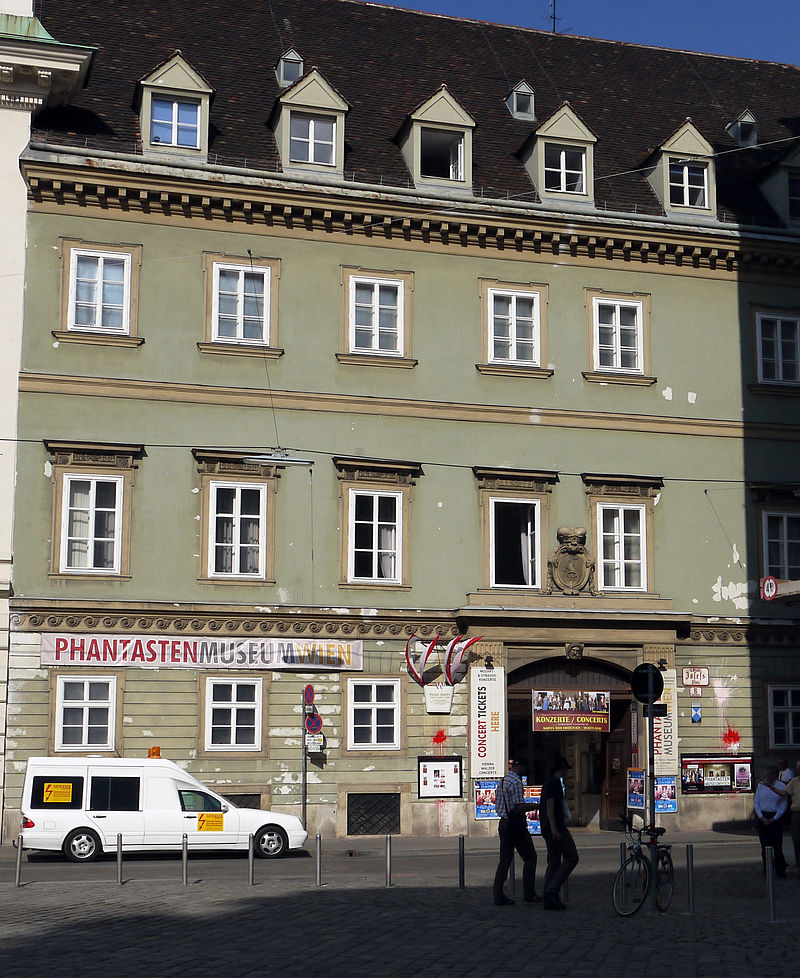
Above: Palais Páiffy, Vienna, Austria
Auden was buried on 4 October in Kirchstetten.
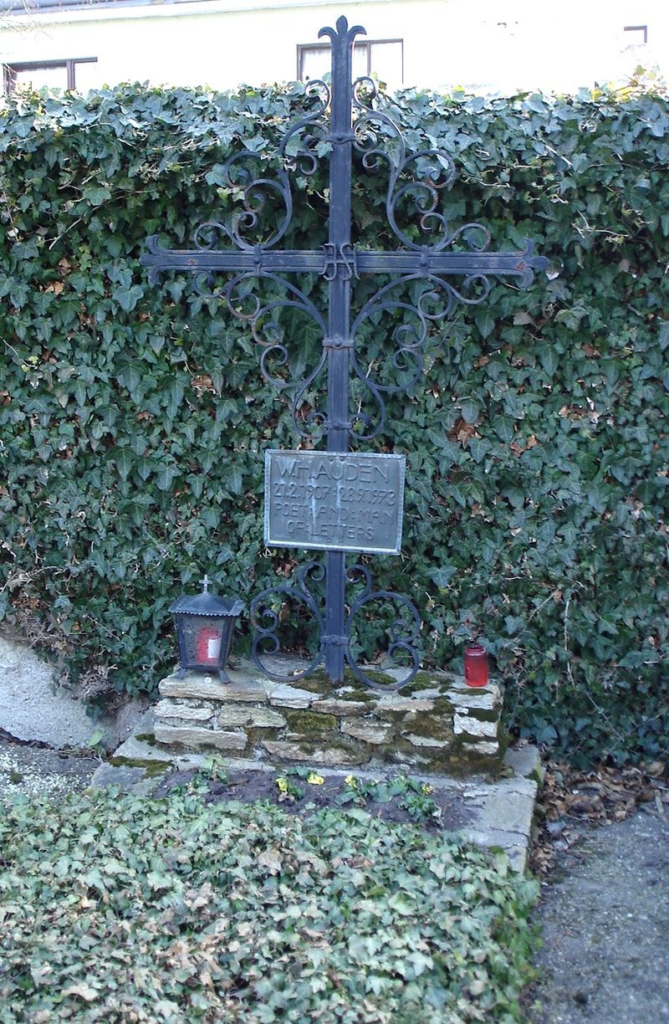
Above: Auden’s grave at Kirchstetten
A memorial stone was placed in Westminster Abbey in London a year later.
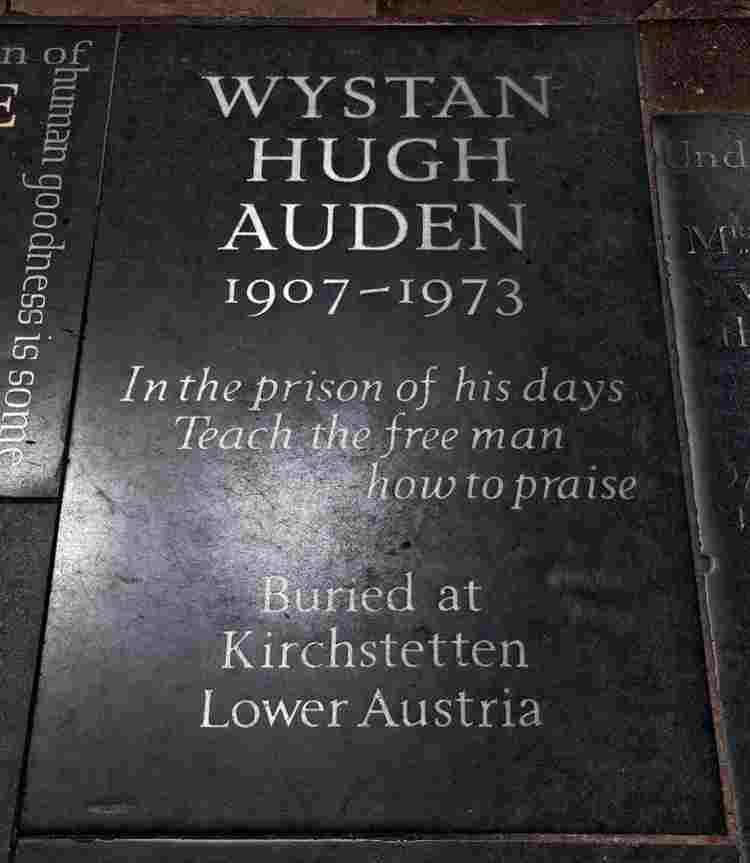
Above: Auden Memorial, Westminster Cathedral, London, England
Auden published about 400 poems, including seven long poems (two of them book-length).
His poetry was encyclopaedic in scope and method, ranging in style from obscure 20th century modernism to the lucid traditional forms such as ballads and limericks, from doggerel through haiku and villanelles to a “Christmas Oratorio” and a baroque eclogue in Anglo-Saxon meters.
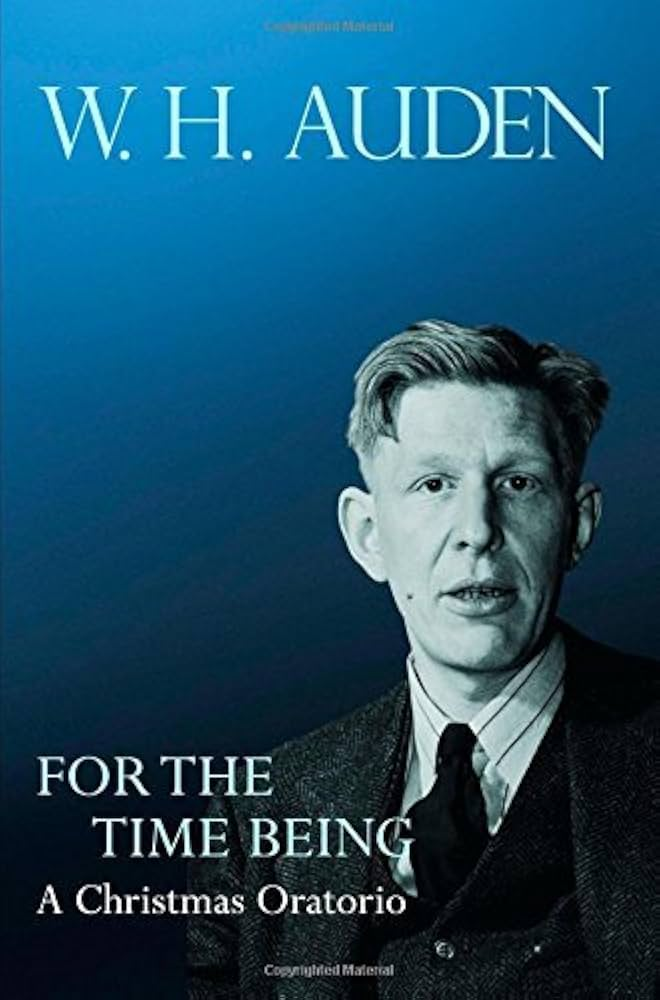
The tone and content of his poems ranged from pop-song clichés to complex philosophical meditations, from the corns on his toes to atoms and stars, from contemporary crises to the evolution of society.
He also wrote more than 400 essays and reviews about literature, history, politics, music, religion and many other subjects.
He collaborated on plays with Christopher Isherwood and on opera libretti with Chester Kallman.

Auden worked with a group of artists and filmmakers on documentary films in the 1930s and with the New York Pro Musica early music group in the 1950s and 1960s.
About collaboration he wrote in 1964:
“Collaboration has brought me greater erotic joy than any sexual relations I have had.“
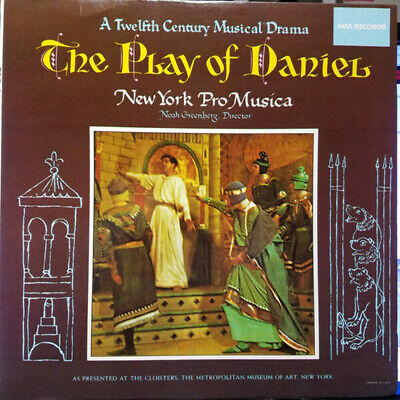
Auden controversially rewrote or discarded some of his most famous poems when he prepared his later collected editions.
He wrote that he rejected poems that he found “boring” or “dishonest” in the sense that they expressed views he had never held but had used only because he felt they would be rhetorically effective.
His rejected poems include “Spain” and “September 1, 1939″.
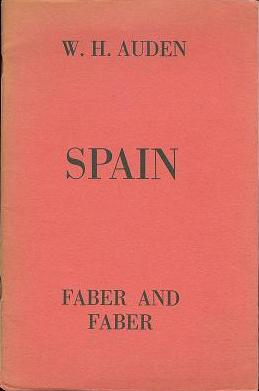
His literary executor, Edward Mendelson, argues in his introduction to Selected Poems that Auden’s practice reflected his sense of the persuasive power of poetry and his reluctance to misuse it.
(Selected Poems includes some poems that Auden rejected and early texts of poems that he revised.)
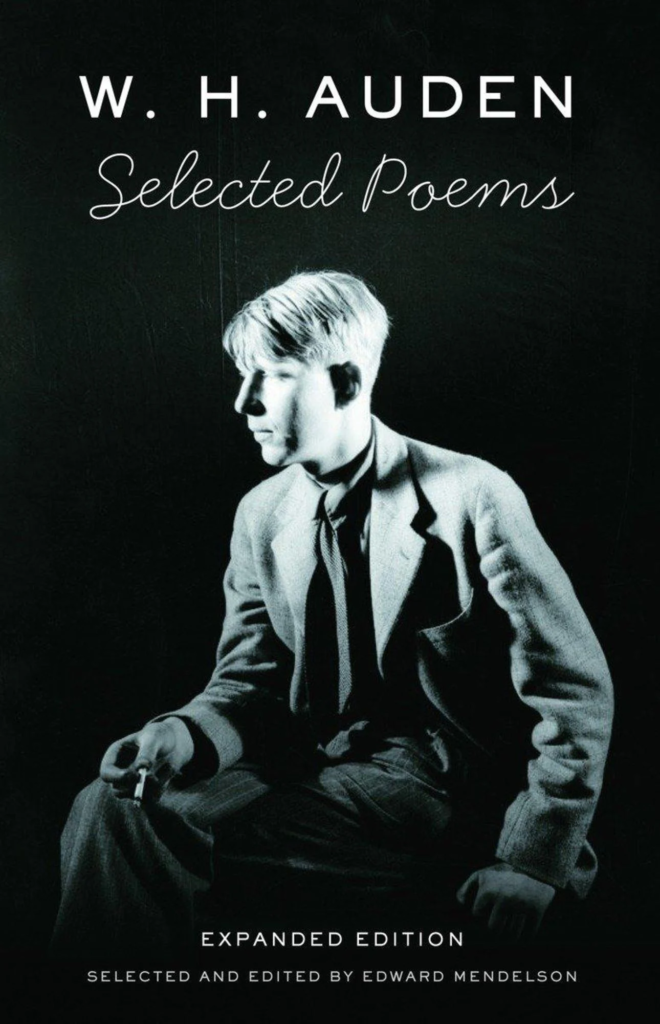
Auden began writing poems in 1922, at 15, mostly in the styles of 19th-century romantic poets, especially Wordsworth, and later poets with rural interests, especially Thomas Hardy.
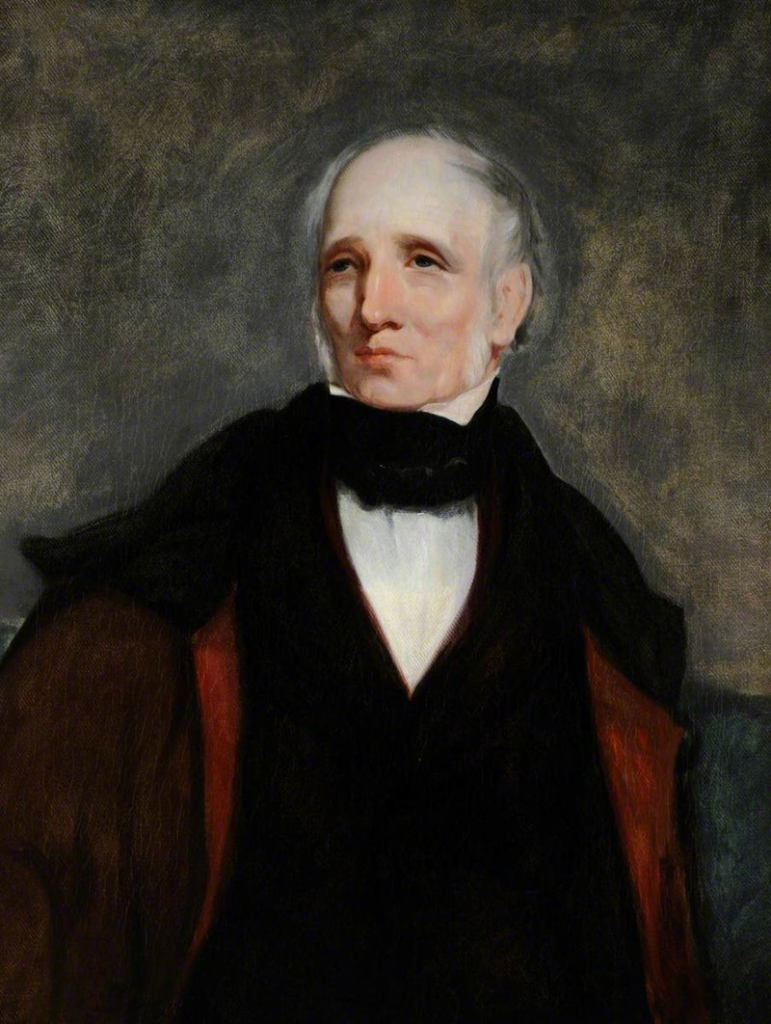
Above: English poet William Wordsworth (1770 – 1850)
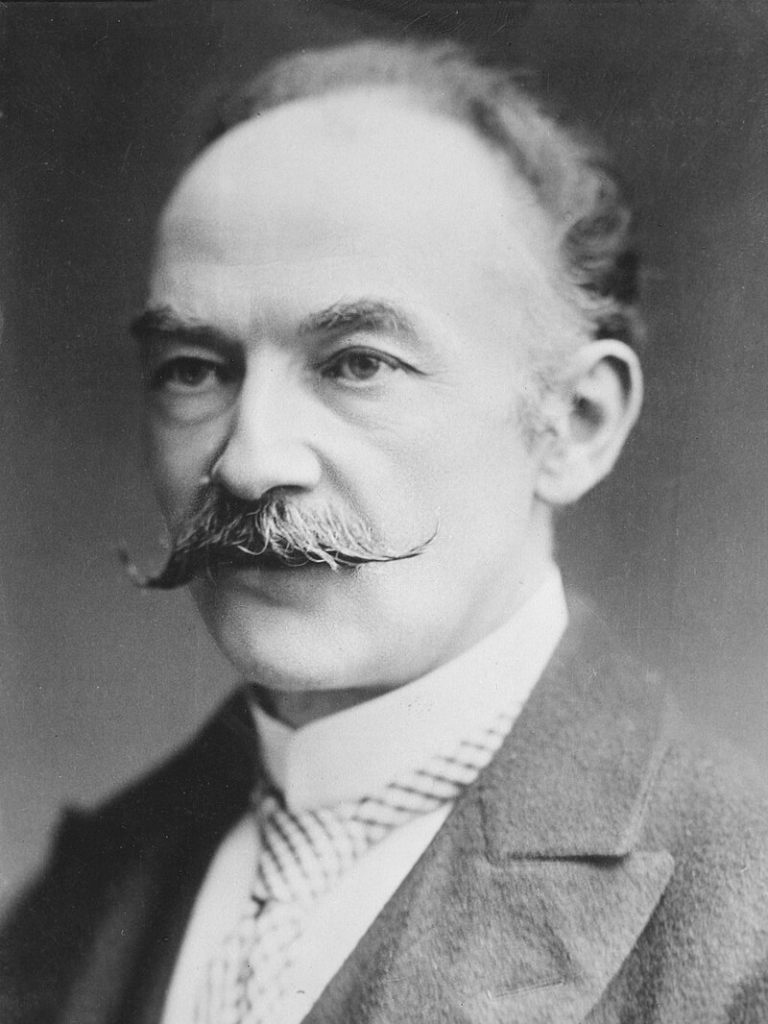
Above: English writer Thomas Hardy (1840 – 1928)
At 18, Auden discovered T. S. Eliot and adopted an extreme version of Eliot’s style.
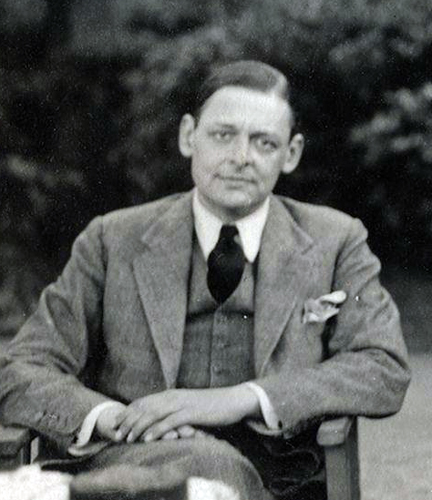
Above: American poet Thomas Stearns Eliot (1888 – 1965)
Auden found his own voice at 20 when he wrote the first poem later included in his collected work, “From the very first coming down“.
This and other poems of the late 1920s tended to be in a clipped, elusive style that alluded to, but did not directly state, their themes of loneliness and loss.
From the very first coming down
Into a new valley with a frown
Because of the sun and a lost way.
You certainly remain: to-day
I, crouching behind a sheep-pen, heard
Travel across a sudden bird,
Cry out against the storm, and found
The year’s arc a completed round
And love’s worn circuit re-begun,
Endless with no dissenting turn.
Shall see, shall pass, as we have seen
The swallow on the tile, spring’s green
Preliminary shiver, passed
A solitary truck, the last
Of shunting in the Autumn. But now,
To interrupt the homely brow,
Thought warmed to evening through and through,
Your letter comes, speaking as you,
Speaking of much, but not to come.
Nor speech is close nor fingers numb,
If love not seldom has received
An unjust answer, was deceived.
I, decent with the seasons, move
Different or with a different love,
Nor question much the nod,
The stone smile of this country god
That never was more reticent,
Always afraid to say more than it meant.
Twenty of these poems appeared in his first book Poems (1928), a pamphlet hand-printed by Stephen Spender.
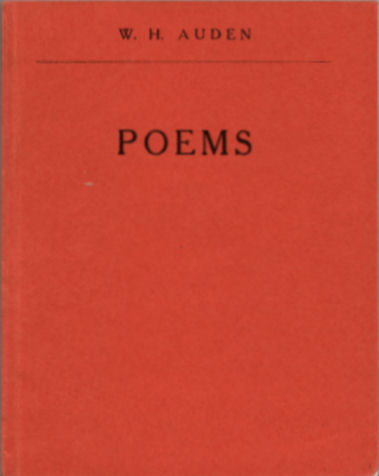
In 1928 he wrote his first dramatic work, Paid on Both Sides, subtitled “A Charade“, which combined style and content from the Icelandic sagas with jokes from English school life.
This mixture of tragedy and farce, with a dream play-within-a-play, introduced the mixed styles and content of much of his later work.
This drama and thirty short poems appeared in his first published book Poems (1930).
The poems in the book were mostly lyrical and gnomic meditations on hoped-for or unconsummated love and on themes of personal, social, and seasonal renewal; among these poems were:
- “It was Easter as I walked“
It was Easter as I walked in the public gardens,
Hearing the frogs exhaling from the pond,
Watching traffic of magnificent cloud
Moving without anxiety on open sky—
Season when lovers and writers find
An altering speech for altering things,
An emphasis on new names, on the arm
A fresh hand with fresh power.
But thinking so I came at once
Where solitary man sat weeping on a bench,
Hanging his head down, with his mouth distorted
Helpless and ugly as an embryo chicken.
So I remember all of those whose death
Is necessary condition of the season’s putting forth,
Who, sorry in this time, look only back
To Christmas intimacy, a winter dialogue
Fading in silence, leaving them in tears.
And recent particulars come to mind;
The death by cancer of a once hated master,
A friend’s analysis of his own failure,
Listened to at intervals throughout the winter
At different hours and in different rooms.
But always with success of others for comparison,
The happiness, for instance, of my friend Kurt Groote,
Absence of fear in Gerhart Meyer
From the sea, the truly strong man.
A ‘bus ran home then, on the public ground
Lay fallen bicycles like huddled corpses:
No chattering valves of laughter emphasised
Nor the swept gown ends of a gesture stirred
The sessile hush; until a sudden shower
Fell willing into grass and closed the day,
Making choice seem a necessary error.
- “Doom is dark“
Doom is dark and deeper than any sea-dingle.
Upon what man it fall
In spring, day-wishing flowers appearing,
Avalanche sliding, white snow from rock-face,
That he should leave his house,
No cloud-soft hand can hold him, restraint by women;
But ever that man goes
Through place-keepers, through forest trees,
A stranger to strangers over undried sea,
Houses for fishes, suffocating water,
Or lonely on fell as chat,
By pot-holed becks
A bird stone-haunting, an unquiet bird.
There head falls forward, fatigued at evening,
And dreams of home,
Waving from window, spread of welcome,
Kissing of wife under single sheet;
But waking sees
Bird-flocks nameless to him, through doorway
voices
Of new men making another love.
Save him from hostile capture,
From sudden tiger’s leap at corner;
Protect his house,
His anxious house where days are counted
From thunderbolt protect,
From gradual ruin spreading like a stain;
Converting number from vague to certain,
Bring joy, bring day of his returning,
Lucky with day approaching, with leaning dawn.
- “Sir, no man’s enemy“
Sir, no man’s enemy, forgiving all
But will his negative inversion, be prodigal:
Send to us power and light, a sovereign touch
Curing the intolerable neural itch,
The exhaustion of weaning, the liar’s quinsy,
And the distortions of ingrown virginity.
Prohibit sharply the rehearsed response
And gradually correct the coward’s stance;
Cover in time with beams those in retreat
That, spotted, they turn though the reverse were great;
Publish each healer that in city lives
Or country houses at the end of drives;
Harrow the house of the dead; look shining at
New styles of architecture, a change of heart.
- “This lunar beauty“
This lunar beauty
Has no history
Is complete and early,
If beauty later
Bear any feature
It had a lover
And is another.
This like a dream
Keeps other time
And daytime is
The loss of this,
For time is inches
And the heart’s changes
Where ghost has haunted
Lost and wanted.
But this was never
A ghost’s endeavor
Nor finished this,
Was ghost at ease,
And till it pass
Love shall not near
The sweetness here
Nor sorrow take
His endless look.
A recurrent theme in these early poems is the effect of “family ghosts“, Auden’s term for the powerful, unseen psychological effects of preceding generations on any individual life (and the title of a poem).
A parallel theme, present throughout his work, is the contrast between biological evolution (unchosen and involuntary) and the psychological evolution of cultures and individuals (voluntary and deliberate even in its subconscious aspects).
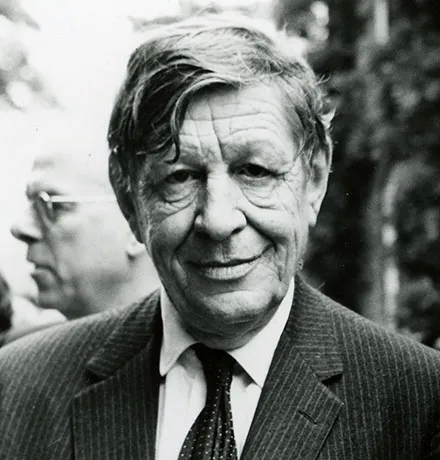
Above: W. H. Auden
Put the car away; when life fails
What’s the good of going to Wales?
Here am I, here are you:
But what does it mean? What are we going to do?
“It’s no use raising a shout“, Poems (1930)

Above: Flag of Wales
To ask the hard question is simple,
The simple act of the confused will.
“To Ask the Hard Question is Simple“, Poems (1930)
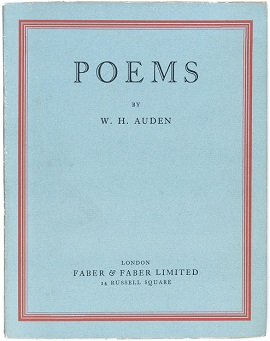
Auden’s next large-scale work was The Orators: An English Study (1932), in verse and prose, largely about hero-worship in personal and political life.
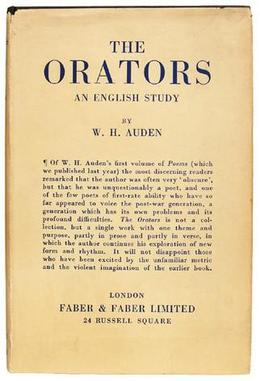
In his shorter poems, his style became more open and accessible, and the exuberant “Six Odes” in The Orators reflect his new interest in Robert Burns.
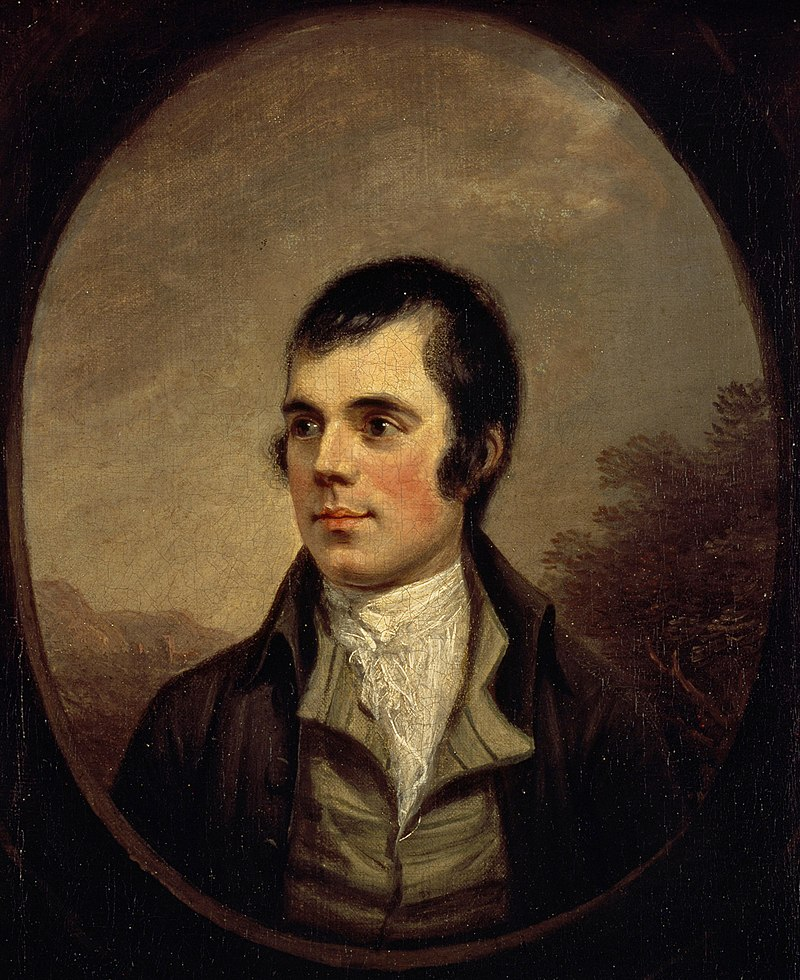
Above: Scottish poet Robert Burns (1759 – 1796)
During the next few years, many of his poems took their form and style from traditional ballads and popular songs, and also from expansive classical forms like the Odes of Horace, which he seems to have discovered through the German poet Hölderlin.
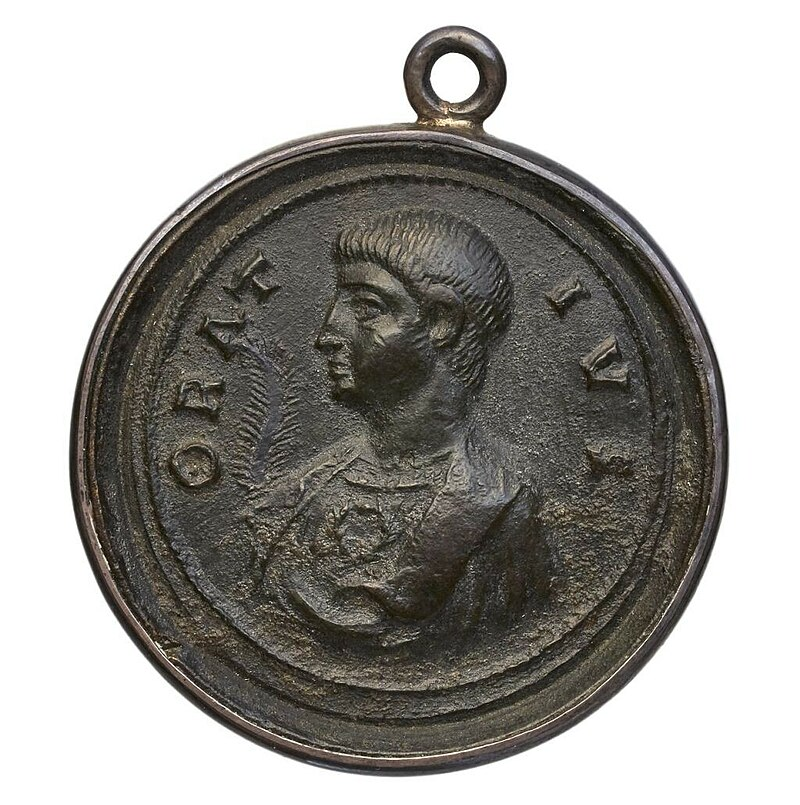
Above: Bronze medallion with image of Quintus Horatius Flaccus (aka Horace) (65 – 8 BC)
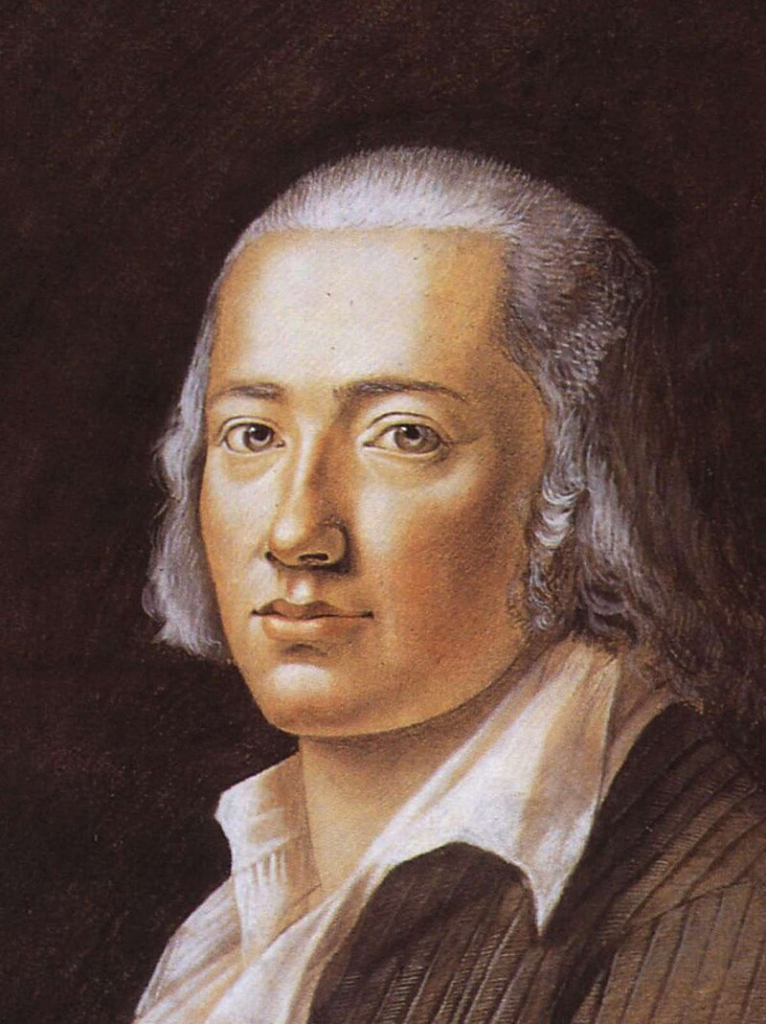
Above: German poet/philosopher Friedrich Hölderlin (1770 – 1843)
Around this time his main influences were Dante, William Langland (1330 – 1386), and Alexander Pope.
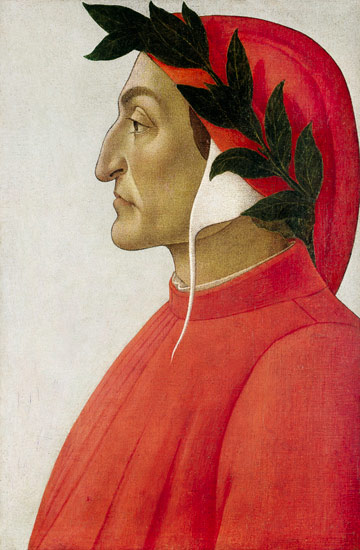
Above: Italian poet/philosopher Dante Aligheri (1265 – 1321)
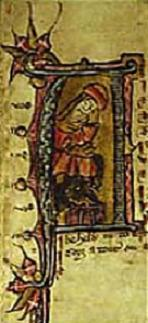
Above: “Langland’s Dreamer“: from an illuminated initial in a Piers Plowman manuscript held at Corpus Christi College, Oxford
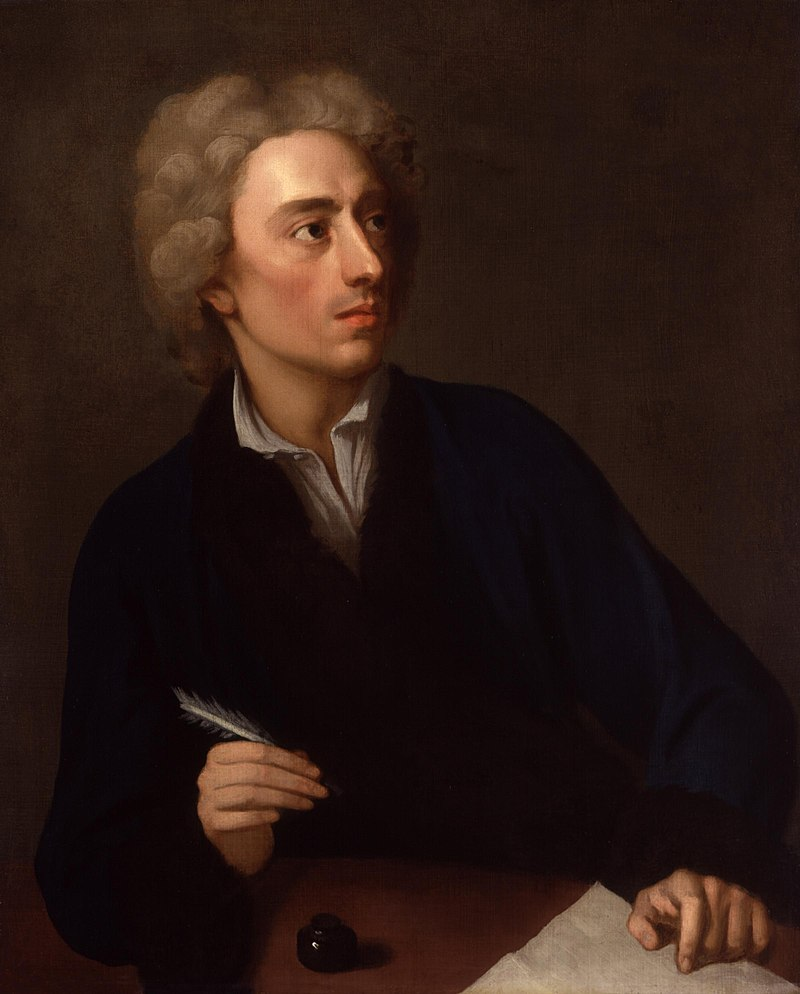
Above: English writer Alexander Pope (1688 – 1744)
During these years much of Auden’s work expressed left-wing views.
He became widely known as a political poet although he was privately more ambivalent about revolutionary politics than many reviewers recognized.
He expounded political views partly out of a sense of moral duty and partly because it enhanced his reputation.
He later regretted having done so.
He generally wrote about revolutionary change in terms of a “change of heart“, a transformation of a society from a closed-off psychology of fear to an open psychology of love.
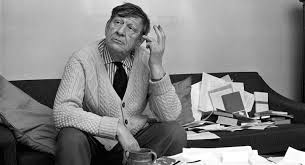
Above: W. H. Auden
His verse drama The Dance of Death (1933) was a political extravaganza in the style of a theatrical revue, which Auden later called “a nihilistic leg-pull“.
The Dance of Death is a one-act play in verse and prose, a satiric musical extravaganza that portrays the “death inside” the middle classes as a silent dancer.
The dancer first attempts to keep himself alive through escapism at a resort hotel, then through nationalistic enthusiasm, then through idealism, then through a New Year’s party at a brothel, before he finally dies.
Karl Marx appears on stage and pronounces the dancer dead.
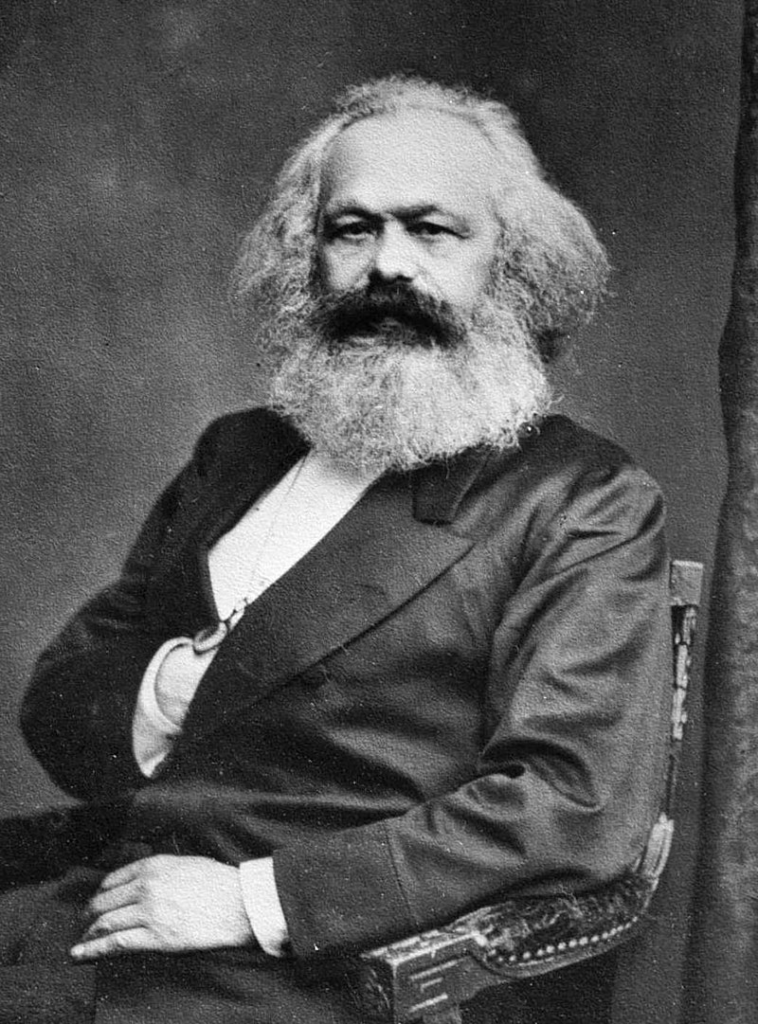
Above: German philosopher Karl Marx (1818 – 1883)
“The instruments of production have been too much for him.“
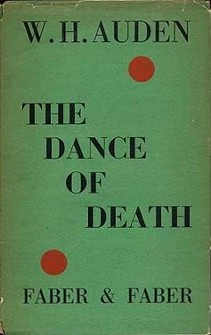
His next play The Dog Beneath the Skin (1935), written in collaboration with Isherwood, was similarly a quasi-Marxist updating of Gilbert and Sullivan in which the general idea of social transformation was more prominent than any specific political action or structure.
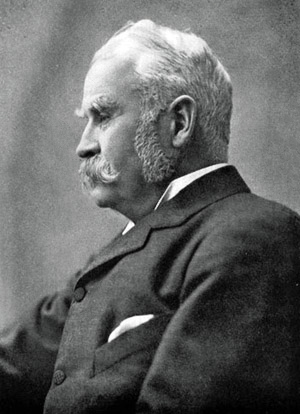
Above: English dramatist William Gilbert (1836 – 1911)
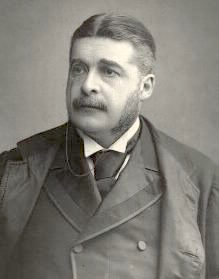
Above: English composer Arthur Sullivan (1842 – 1900)
The play describes the quest by the hero Alan Norman to find Sir Francis Crewe, the missing heir of Honeypot Hall in Crewe.
The quest takes him on a satiric journey through Europe and England, accompanied by a large dog, who proves to be Sir Francis in disguise.
Auden and Isherwood wrote two versions of the end of the play.
In Isherwood’s version, which appears in the printed text, Sir Francis denounces the villagers and leaves to join a vaguely defined revolutionary movement.
In Auden’s revised version, which was performed on stage, Sir Francis denounces the villagers and is killed.

In 1935, he worked briefly on documentary films with the GPO Film Unit, writing his famous verse commentary for Night Mail and lyrics for other films that were among his attempts in the 1930s to create a widely accessible, socially conscious art.
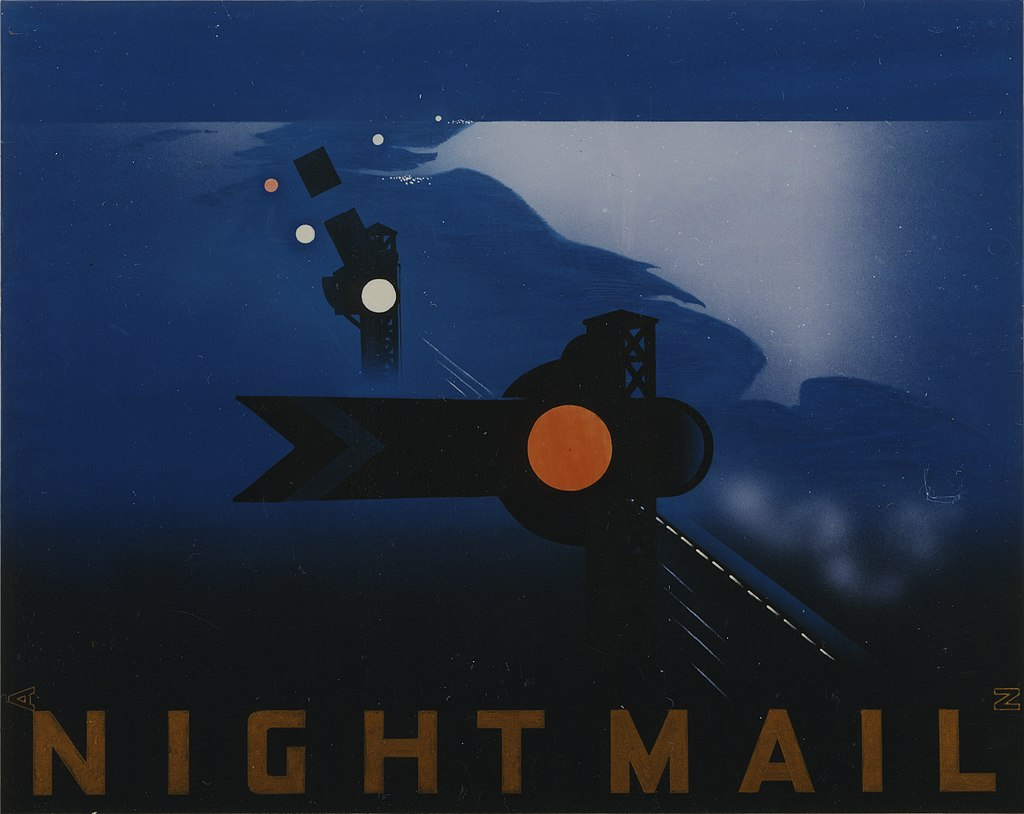
Night Mail is a 1936 British documentary film directed and produced by Harry Watt and Basil Wright, and produced by the General Post Office (GPO) Film Unit.

The 24-minute film documents the nightly postal train operated by the London, Midland and Scottish Railway (LMS)(1923 – 1948) from London to Scotland alongside the staff who operate it.

Narrated by John Grierson and Stuart Legg, the film ends with a “verse commentary” written by W. H. Auden to a score composed by Benjamin Britten.

Above: English filmmaker Stuart Legg (1910 – 1988)
The locomotive featured in the film is LMS Royal Scot Class 6115 Scots Guardsman.
The film follows the distribution of mail by train in the 1930s, focusing on the Postal Special train, a train dedicated only to carrying the post and with no members of the public.

The night train travels on the mainline route from Euston Station in London to Glasgow, Scotland, on to Edinburgh and then Aberdeen.

Above: Euston Station, London, England

Above: Glasgow, Scotland

Above: Edinburgh, Scotland

Above: Aberdeen, Scotland
External shots include the train itself passing at speed down the tracks, aerial views of the countryside, and interior shots of the sorting van (actually shot in studio).

Much of the film highlights the role of postal workers in the delivery of the mail.
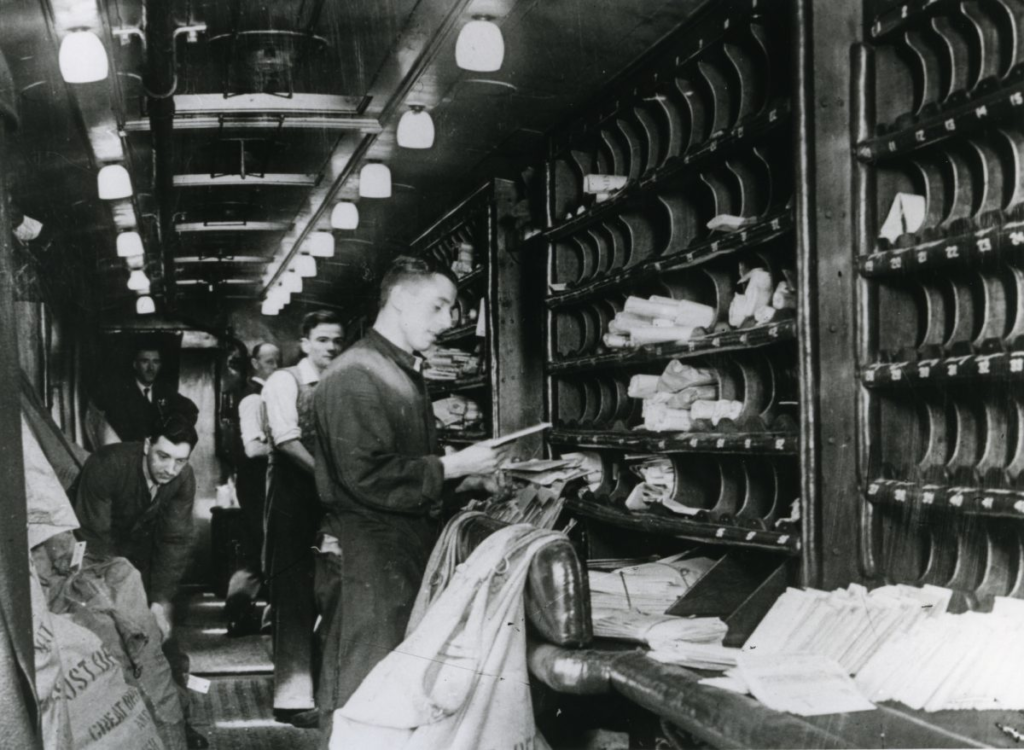
Above: Postal staff at work in a sorting carriage, Night Mail
Among Auden’s first tasks as assistant director was taking charge of the second camera unit as they shot mail bags being transported at London’s Broad Street Station, where a replica postal train was assembled for a night so the crew could film and record sound to match the footage they had captured at Crewe.

Above: Broad Street Station, London, England
Wright later thought it was “one of the most beautifully organized shots” of the entire film.

Above: Crewe Station, Crewe, England
The filming session began at 5:00 pm and lasted for 14 hours without a break.
It included filming of the wheeltapper, who became the subject of an inside joke at the film studio when the crew forgot to shoot his scenes until the next morning.
They adopted the term when the unit had missed a shot.
Shots taken at Broad Street were incorporated into the Crewe sequence in the film.

Above: Scene from Night Mail
Auden’s poem for the sequence, entitled “Night Mail“, was written at the film unit’s main office in Soho Square.
Watt described his work area as “a bare table at the end of a dark, smelly, noisy corridor“, a contrast to the more peaceful surroundings that he was used to working in.
He paced it to match the rhythm of the train’s wheels “with a stopwatch in order to fit it exactly to the shot“.

Night Mail makes three primary arguments:
- The postal system is complex and must function under the auspices of a national government in order to thrive.
- The postal system is a model of modern efficiency.
- Postal employees are industrious, jovial and professional.

Above: Scene from Night Mail
This is the night mail crossing the Border,
Bringing the cheque and the postal order,
Letters for the rich, letters for the poor,
The shop at the corner, the girl next door.
Pulling up Beattock, a steady climb:
The gradient’s against her, but she’s on time.
Past cotton-grass and moorland boulder
Shovelling white steam over her shoulder,
Snorting noisily as she passes
Silent miles of wind-bent grasses.
Birds turn their heads as she approaches,
Stare from bushes at her blank-faced coaches.
Sheep-dogs cannot turn her course;
They slumber on with paws across.
In the farm she passes no one wakes,
But a jug in a bedroom gently shakes.
Dawn freshens, Her climb is done.
Down towards Glasgow she descends,
Towards the steam tugs yelping down a glade of cranes
Towards the fields of apparatus, the furnaces
Set on the dark plain like gigantic chessmen.
All Scotland waits for her:
In dark glens, beside pale-green lochs
Men long for news.
Letters of thanks, letters from banks,
Letters of joy from girl and boy,
Receipted bills and invitations
To inspect new stock or to visit relations,
And applications for situations,
And timid lovers’ declarations,
And gossip, gossip from all the nations,
News circumstantial, news financial,
Letters with holiday snaps to enlarge in,
Letters with faces scrawled on the margin,
Letters from uncles, cousins, and aunts,
Letters to Scotland from the South of France,
Letters of condolence to Highlands and Lowlands
Written on paper of every hue,
The pink, the violet, the white and the blue,
The chatty, the catty, the boring, the adoring,
The cold and official and the heart’s outpouring,
Clever, stupid, short and long,
The typed and the printed and the spelt all wrong.
Thousands are still asleep,
Dreaming of terrifying monsters
Or of friendly tea beside the band in Cranston’s or Crawford’s:
Asleep in working Glasgow, asleep in well-set Edinburgh,
Asleep in granite Aberdeen,
They continue their dreams,
But shall wake soon and hope for letters,
And none will hear the postman’s knock
Without a quickening of the heart,
For who can bear to feel himself forgotten?

In 1936 Auden’s publisher chose the title Look, Stranger! for a collection of political odes, love poems, comic songs, meditative lyrics, and a variety of intellectually intense but emotionally accessible verse.
Auden hated the title and retitled the collection for the 1937 US edition On This Island.
Among the poems included in the book are:
- “Hearing of harvests“
Hearing of harvests rotting in the valleys,
Seeing at end of street the barren mountains,
Round corners coming suddenly on water,
Knowing them shipwrecked who were launched for islands,
We honour founders of these starving cities
Whose honour is the image of our sorrow,
Which cannot see its likeness in their sorrow
That brought them desperate to the brink of valleys;
Dreaming of evening walks through learned cities
They reined their violent horses on the mountains,
Those fields like ships to castaways on islands,
Visions of green to them who craved for water.
They built by rivers and at night the water
Running past windows comforted their sorrow;
Each in his little bed conceived of islands
Where every day was dancing in the valleys
And all the green trees blossomed on the mountains,
Where love was innocent, being far from cities.
But dawn came back and they were still in cities;
No marvellous creature rose up from the water;
There was still gold and silver in the mountains
But hunger was a more immediate sorrow,
Although to moping villagers in valleys
Some waving pilgrims were describing islands…
‘The gods,’ they promised, ‘visit us from islands,
Are stalking, head-up, lovely, through our cities;
Now is the time to leave your wretched valleys
And sail with them across the lime-green water,
Sitting at their white sides, forget your sorrow,
The shadow cast across your lives by mountains.’
So many, doubtful, perished in the mountains,
Climbing up crags to get a view of islands,
So many, fearful, took with them their sorrow
Which stayed them when they reached unhappy cities,
So many, careless, dived and drowned in water,
So many, wretched, would not leave their valleys.
It is our sorrow. Shall it melt? Then water
Would gush, flush, green these mountains and these valleys,
And we rebuild our cities, not dream of islands.
- “Out on the lawn I lie in bed“
Out on the lawn I lie in bed,
Vega conspicuous overhead
In the windless nights of June,
As congregated leaves complete
Their day’s activity; my feet
Point to the rising moon.
Lucky, this point in time and space
Is chosen as my working-place,
Where the sexy airs of summer,
The bathing hours and the bare arms,
The leisured drives through a land of farms
Are good to a newcomer.
Equal with colleagues in a ring
I sit on each calm evening
Enchanted as the flowers
The opening light draws out of hiding
With all its gradual dove-like pleading,
Its logic and its powers:
That later we, though parted then,
May still recall these evenings when
Fear gave his watch no look;
The lion griefs loped from the shade
And on our knees their muzzles laid,
And Death put down his book.
Now north and south and east and west
Those I love lie down to rest;
The moon looks on them all,
The healers and the brilliant talkers,
The eccentrics and the silent walkers,
The dumpy and the tall.
She climbs the European sky,
Churches and power stations lie
Alike among Earth’s fixtures:
Into the galleries she peers
And blankly as a butcher stares
Upon the marvelous pictures.
To gravity attentive, she
Can notice nothing here, though we
Whom hunger does not move,
From gardens where we feel secure
Look up and with a sigh endure
The tyrannies of love:
And, gentle, do not care to know,
Where Poland draws her eastern bow,
What violence is done,
Nor ask what doubtful act allows
Our freedom in this English house,
Our picnics in the sun.
Soon, soon, through the dykes of our content
The crumpling flood will force a rent
And, taller than a tree,
Hold sudden death before our eyes
Whose river dreams long hid the size
And vigours of the sea.
But when the waters make retreat
And through the black mud first the wheat
In shy green stalks appears,
When stranded monsters gasping lie,
And sounds of riveting terrify
Their whorled unsubtle ears,
May these delights we dread to lose,
This privacy, need no excuse
But to that strength belong,
As through a child’s rash happy cries
The drowned parental voices rise
In unlamenting song.
After discharges of alarm
All unpredicted let them calm
The pulse of nervous nations,
Forgive the murderer in the glass,
Tough in their patience to surpass
The tigress her swift motions.
- “O what is that sound“
O what is that sound which so thrills the ear
Down in the valley drumming, drumming?
Only the scarlet soldiers, dear,
The soldiers coming.
O what is that light I see flashing so clear
Over the distance brightly, brightly?
Only the sun on their weapons, dear,
As they step lightly.
O what are they doing with all that gear,
What are they doing this morning, morning?
Only their usual manoeuvres, dear,
Or perhaps a warning.
O why have they left the road down there,
Why are they suddenly wheeling, wheeling?
Perhaps a change in their orders, dear,
Why are you kneeling?
O haven’t they stopped for the doctor’s care,
Haven’t they reined their horses, horses?
Why, they are none of them wounded, dear,
None of these forces.
O is it the parson they want, with white hair,
Is it the parson, is it, is it?
No, they are passing his gateway, dear,
Without a visit.
O it must be the farmer that lives so near.
It must be the farmer so cunning, so cunning?
They have passed the farmyard already, dear,
And now they are running.
O where are you going? Stay with me here!
Were the vows you swore deceiving, deceiving?
No, I promised to love you, dear,
But I must be leaving.
O it’s broken the lock and splintered the door,
O it’s the gate where they’re turning, turning;
Their boots are heavy on the floor
And their eyes are burning.
- “Look, stranger, on this island now”
Look, stranger, on this island now
The leaping light for your delight discovers,
Stand stable here
And silent be,
That through the channels of the ear
May wander like a river
The swaying sound of the sea.
Here at a small field’s ending pause
Where the chalk wall falls to the foam and its tall ledges
Oppose the pluck
And knock of the tide,
And the shingle scrambles after the suck-
-ing surf,
And a gull lodges
A moment on its sheer side.
Far off like floating seeds the ships
Diverge on urgent voluntary errands,
And this full view
Indeed may enter
And move in memory as now these clouds do,
That pass the harbour mirror
And all the summer through the water saunter.
- “Our hunting fathers“.
Our hunting fathers told the story
Of the sadness of the creatures,
Pitied the limits and the lack
Set in their finished features;
Saw in the lion’s intolerant look,
Behind the quarry’s dying glare,
Love raging for, the personal glory
That reason’s gift would add,
The liberal appetite and power,
The rightness of a god.
Who, nurtured in that fine tradition,
Predicted the result,
Guessed Love by nature suited to
The intricate ways of guilt,
That human ligaments could so
His southern gestures modify
And make it his mature ambition
To think no thought but ours,
To hunger, work illegally,
And be anonymous?
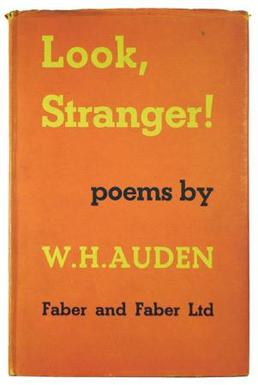
The Ascent of F6 (1936), another play written with Isherwood, was partly an anti-imperialist satire, partly (in the character of the self-destroying climber Michael Ransom) an examination of Auden’s own motives in taking on a public role as a political poet.
It has been seen as a parable about will, leadership and the nature of power: matters of increasing concern in Europe as that decade progressed.
The play tells the story of Michael Ransom, a climber, who, against his better judgement, accepts the offer of the British press and government to sponsor an expedition to the peak of F6, a mountain on the border of a British colony and a colony of the fictional country of Ostnia.
Ransom is destroyed by his haste to complete the expedition ahead of the Ostnian climbers.
This play included the first version of “Funeral Blues” (“Stop all the clocks“), written as a satiric eulogy for a politician.
Auden later rewrote the poem as a “Cabaret Song” about lost love (written to be sung by the soprano Hedli Anderson, for whom he wrote many lyrics in the 1930s).
Acts of injustice done
Between the setting and the rising sun
In history lie like bones, each one.
The Ascent of F6 (1936)
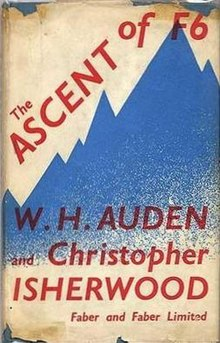
Auden was now arguing that an artist should be a kind of journalist, and he put this view into practice in Letters from Iceland (1937) a travel book in prose and verse written with Louis MacNeice, which included his long social, literary, and autobiographical commentary “Letter to Lord Byron“.
Letters from Iceland is a travel book made up of a series of letters and travel notes by Auden and MacNeice written during their trip to Iceland in 1936 compiling light-hearted private jokes and irreverent comments about their surrounding world.
Letters from Iceland is categorized under the “Inter-war pastorals” style of writing, where poets are attached to an imaginary countryside from where they contemplate people, literature and politics.
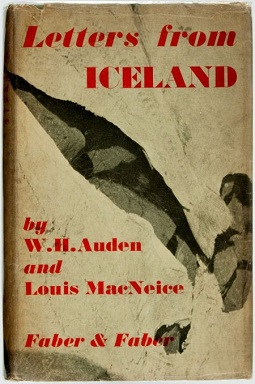
In 1937, after observing the Spanish Civil War he wrote a politically engaged pamphlet poem Spain (1937).
He later discarded it from his collected works.
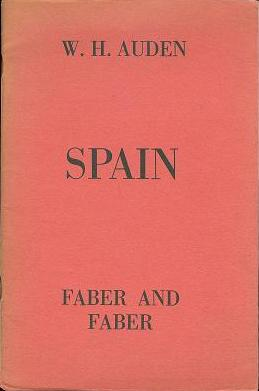
Tomorrow for the young the poets exploding like bombs,
The walks by the lake, the weeks of perfect communion;
Tomorrow the bicycle races
Through the suburbs on summer evenings. But today the struggle.
Tomorrow the rediscovery of romantic love,
The photographing of ravens; all the fun under
Liberty’s masterful shadow;
Tomorrow the hour of the pageant-master and the musician,
The beautiful roar of the chorus under the dome;
Tomorrow the exchanging of tips on the breeding of terriers,
The eager election of chairmen
By the sudden forest of hands. But today the struggle.…
The stars are dead. The animals will not look.
We are left alone with our day, and the time is short, and
History to the defeated
May say Alas but cannot help nor pardon.
Spain (1937)
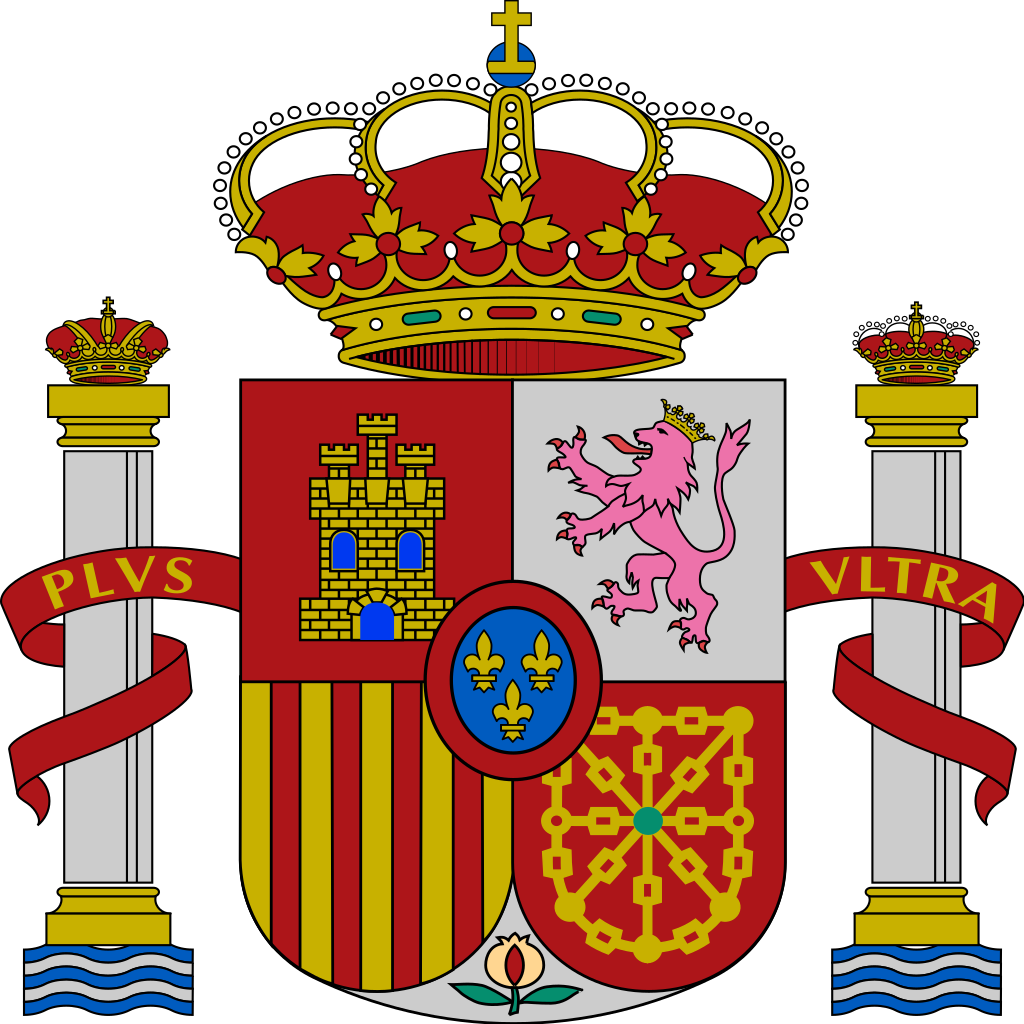
Above: Coat of arms of Spain
I’ll love you, dear, I’ll love you
Till China and Africa meet,
And the river jumps over the mountain
And the salmon sing in the street,
I’ll love you till the ocean
Is folded and hung up to dry
And the seven stars go squawking
Like geese about the sky.
O plunge your hands in water,
Plunge them in up to the wrist;
Stare, stare in the basin
And wonder what you’ve missed.
The glacier knocks in the cupboard,
The desert sighs in the bed,
And the crack in the tea-cup opens
A lane to the land of the dead.
As I Walked Out One Evening (1937)
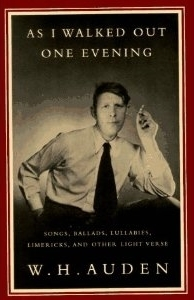
About suffering they were never wrong,
The Old Masters.
They never forgot
That even the most dreadful martyrdom must run its course
Anyhow in a corner, some untidy spot
Where the dogs go on with their doggy life and the torturer’s horse
Scratches its innocent behind on a tree.
Musée des Beaux Arts (1938)
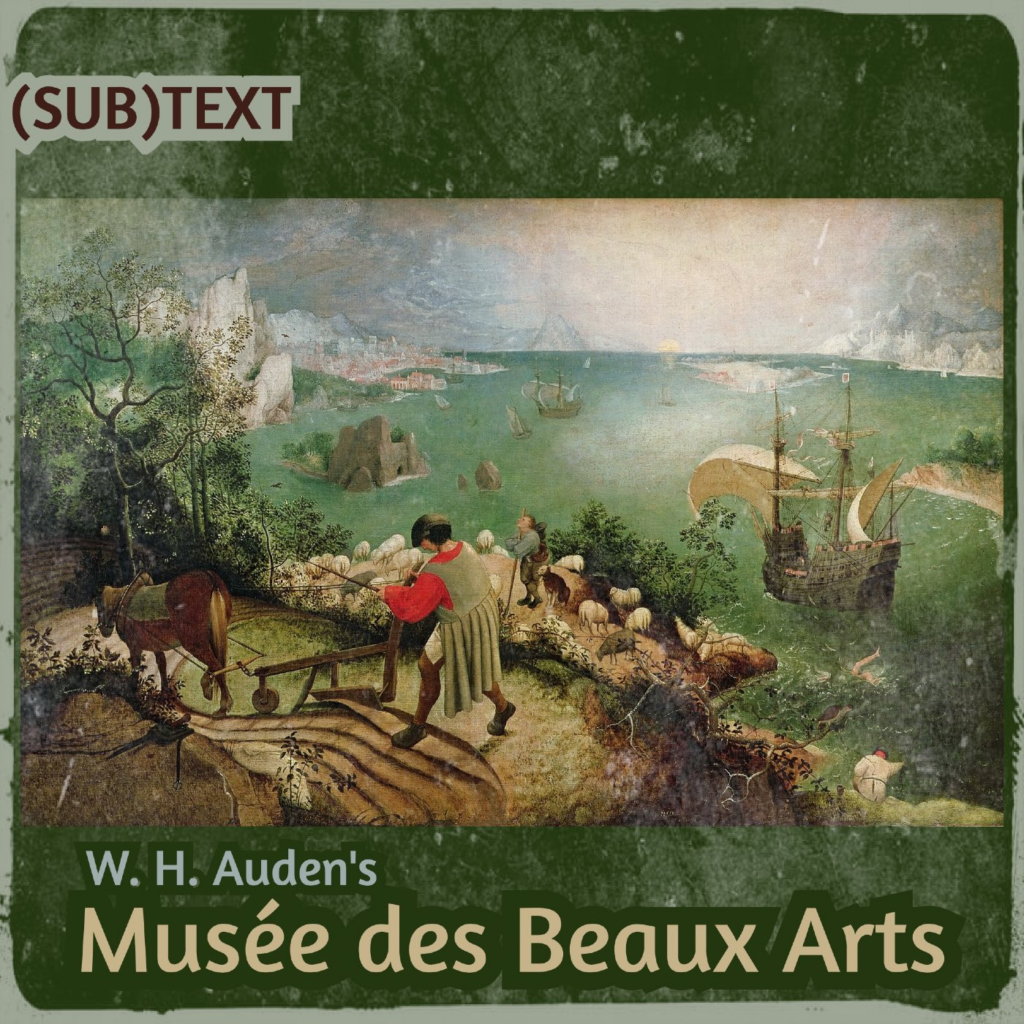
Journey to a War (1939) a travel book in prose and verse, was written with Isherwood after their visit to the Sino-Japanese War.
Journey to a War is a travel book in prose and verse by W. H. Auden and Christopher Isherwood, published in 1939.
The book is in three parts:
- a series of poems by Auden describing his and Isherwood’s journey to China in 1938
- a “Travel Diary” by Isherwood (including material first drafted by Auden) about their travels in China itself, and their observations of the Sino-Japanese War
- “In Time of War: A Sonnet Sequence with a Verse Commentary” by Auden, with reflections on the contemporary world and their experiences in China.
The book also contains a selection of photographs by Auden.
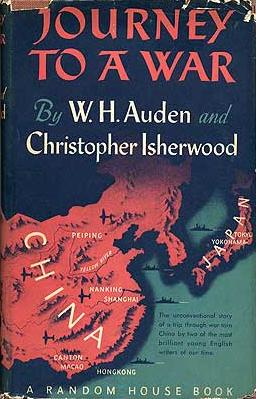
Auden’s last collaboration with Isherwood was their third play, On the Frontier, an anti-war satire written in Broadway and West End styles.
The play tells the story of the outbreak of war between the fictional European countries of Ostnia and Westland.
Some of the action takes place in the “Ostnia–Westland Room“, an imaginary setting in which two rooms, one in an Ostnian household, one in a Westland household, each occupy half the stage, and the family in one house are unaware of the family in the other — although the son and daughter of the two families sense each other’s existence.
Other scenes take place in the office of the Westland dictator.
The play ends in a visionary scene between the two lovers who have never met in real life.
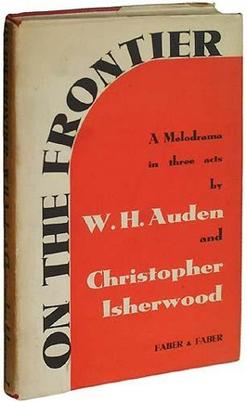
Auden’s shorter poems now engaged with the fragility and transience of personal love (“Danse Macabre“, “The Dream“, “Lay your sleeping head“), a subject he treated with ironic wit in his “Four Cabaret Songs for Miss Hedli Anderson” (which included “Tell Me the Truth About Love” and the revised version of “Funeral Blues“), and also the corrupting effect of public and official culture on individual lives (“Casino“, “School Children“, “Dover“).
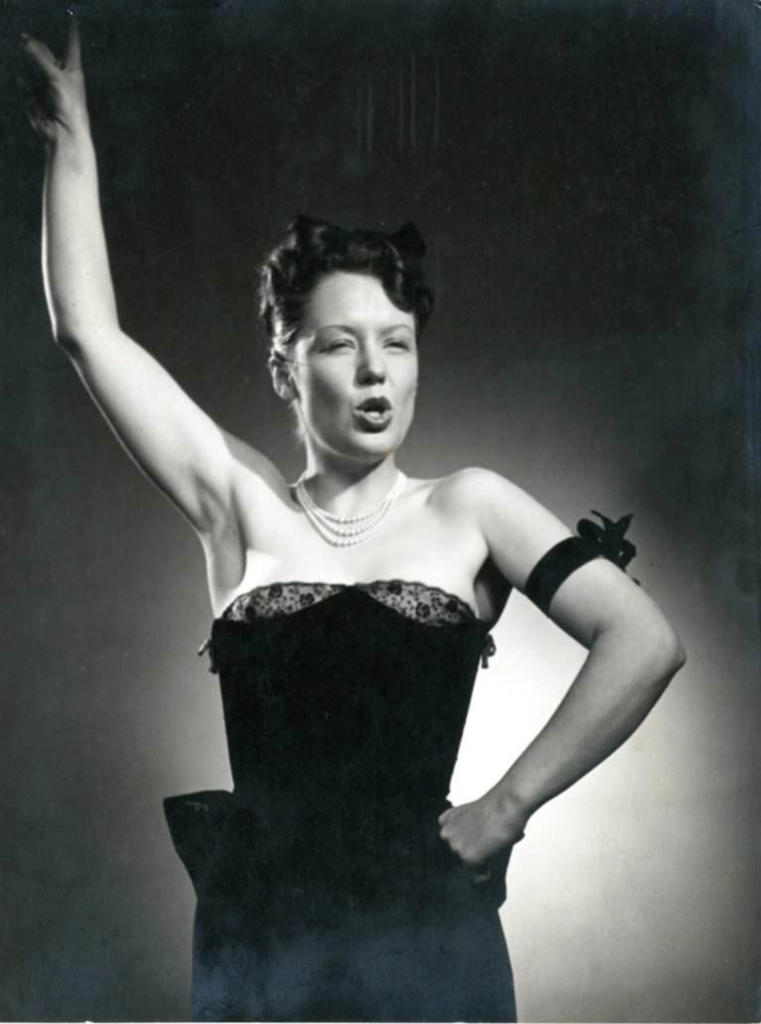
Above: English actress/singer Hedli Anderson (1907 – 1990)
In 1938, he wrote a series of dark, ironic ballads about individual failure (“Miss Gee“, “James Honeyman“, “Victor“).
All these appeared in Another Time (1940), together with poems including “Dover“, “As He Is“, and “Musée des Beaux Arts” (all of which were written before he moved to America in 1939), and “In Memory of W. B. Yeats“, “The Unknown Citizen“, “Law Like Love“, “September 1, 1939“, and “In Memory of Sigmund Freud” (all written in America).

The elegies for Yeats and Freud are partly anti-heroic statements, in which great deeds are performed, not by unique geniuses whom others cannot hope to imitate, but by otherwise ordinary individuals who were “silly like us” (Yeats) or of whom it could be said “he wasn’t clever at all” (Freud), and who became teachers of others, not awe-inspiring heroes.
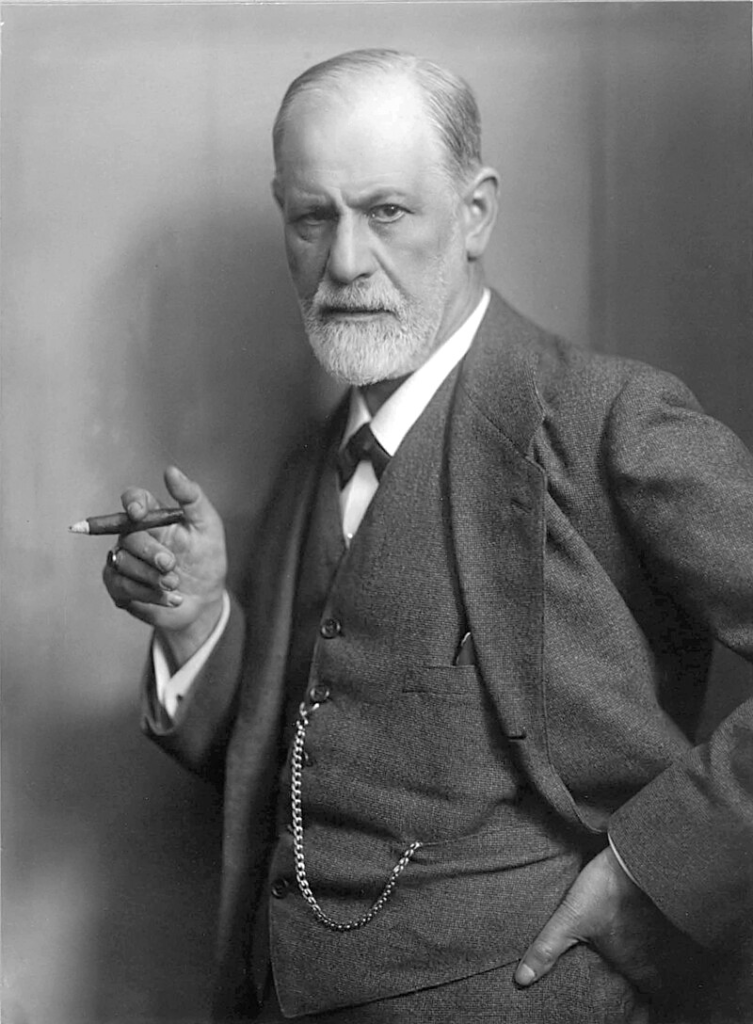
Above: Austrian psychoanalyst Sigmund Freud (1856 – 1939)
By mourning tongues
The death of the poet was kept from his poems.
But for him it was his last afternoon as himself,
An afternoon of nurses and rumors;
The provinces of his body revolted,
The squares of his mind were empty,
Silence invaded the suburbs.
The current of his feeling failed: he became his admirers.
Now he is scattered over a hundred cities
And wholly given over to unfamiliar affections;
To find his happiness in another kind of wood
And be punished under a foreign code of conscience.
The words of a dead man
Are modified in the guts of the living.
Follow, poet, follow right
To the bottom of the night,
With your unconstraining voice
Still persuade us to rejoice;
With the farming of a verse
Make a vineyard of the curse,
Sing of human unsuccess
In a rapture of distress;
In the deserts of the heart
Let the healing fountains start,
In the prison of his days
Teach the free man how to praise.
In Memory of W. B. Yeats (1939)
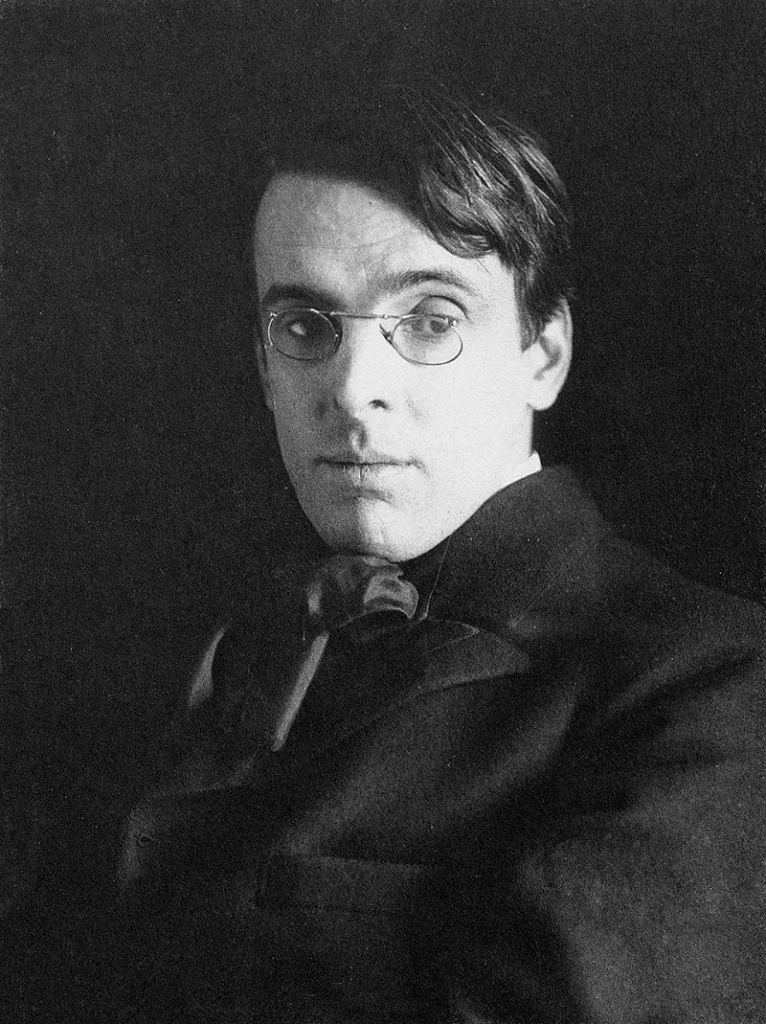
Above: Irish writer William Butler Yeats (1865 – 1939)
When he laughed, respectable senators burst with laughter,
And when he cried the little children died in the streets.
Epitaph on a Tyrant (1939)
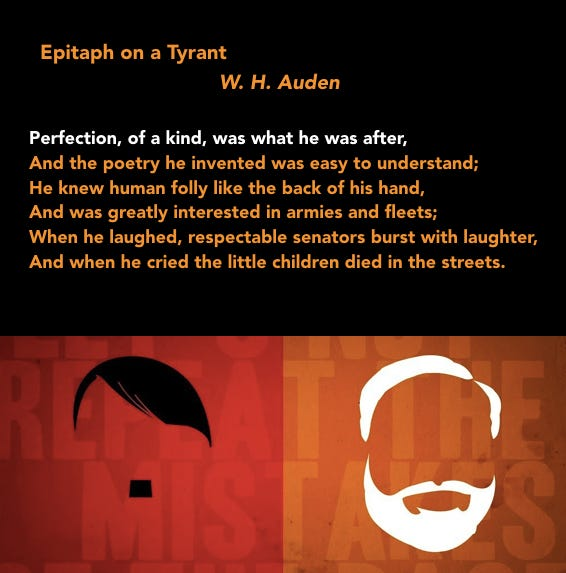
In 1940 Auden wrote a long philosophical poem “New Year Letter“, which appeared with miscellaneous notes and other poems in The Double Man (1941).
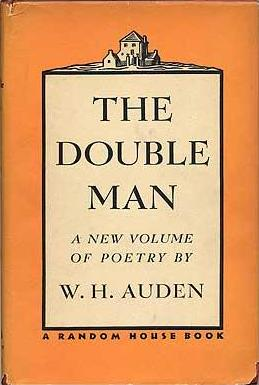
Base words are uttered only by the base
And can for such at once be understood;
But noble platitudes — ah, there’s a case
Where the most careful scrutiny is needed
To tell a voice that’s genuinely good
From one that’s base but merely has succeeded.
Base words are uttered (1940)
At the time of his return to the Anglican Communion he began writing abstract verse on theological themes, such as “Canzone” and “Kairos and Logos“.
He increasingly used the syllabic verse he had learned from the poetry of Marianne Moore.
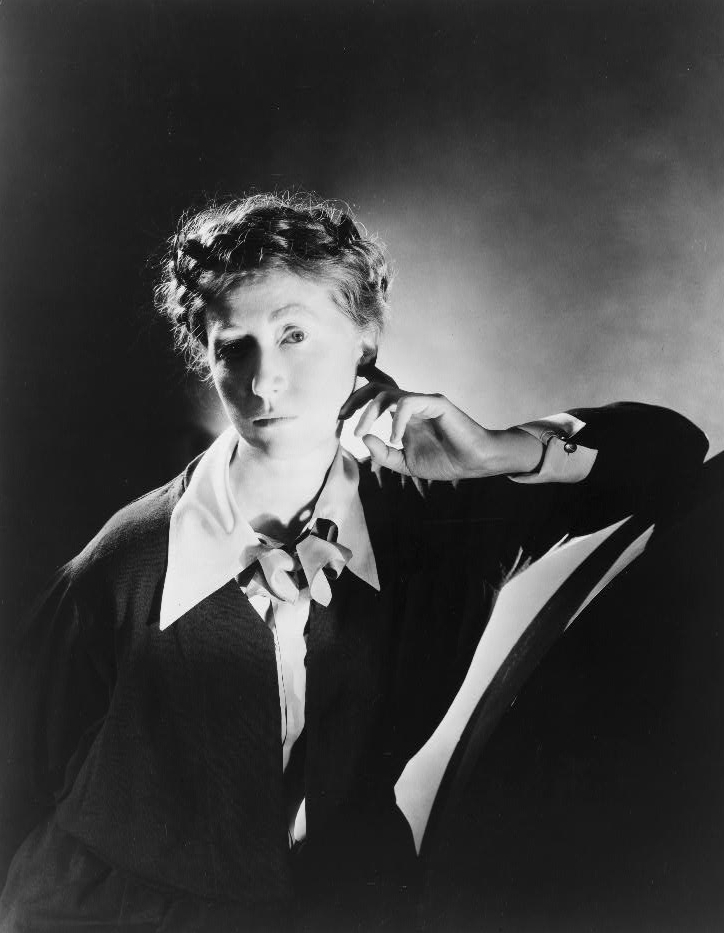
Above: American poetess Marianne Moore (1887 – 1972)
Paul Bunyan, Opus 17, is an operetta in two acts and a prologue composed by Benjamin Britten to a libretto by W. H. Auden, designed for performance by semi-professional groups.
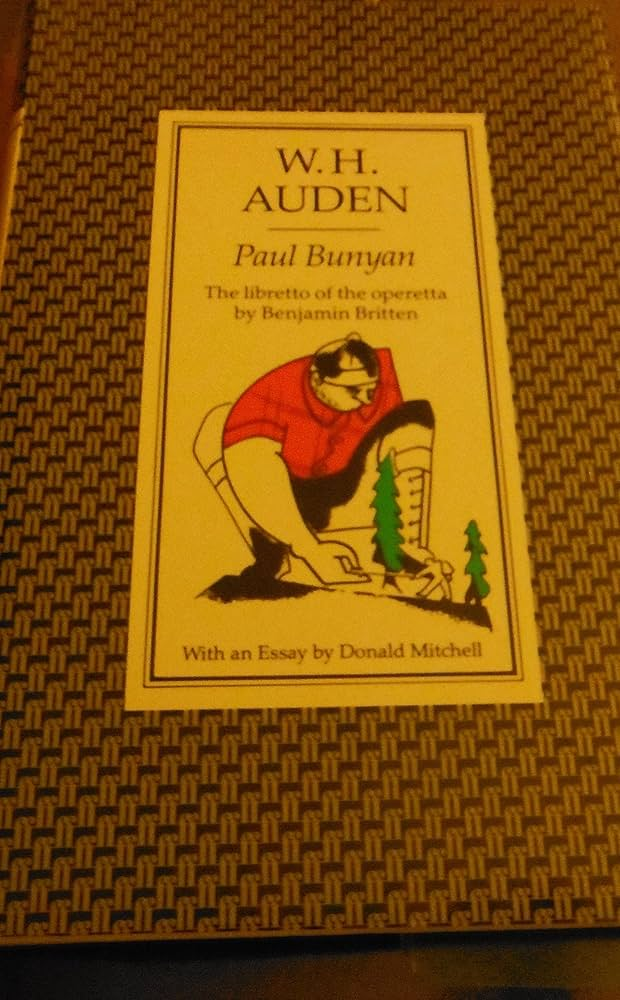
It premiered at Columbia University on 5 May 1941, to largely negative reviews, and was withdrawn by the composer.
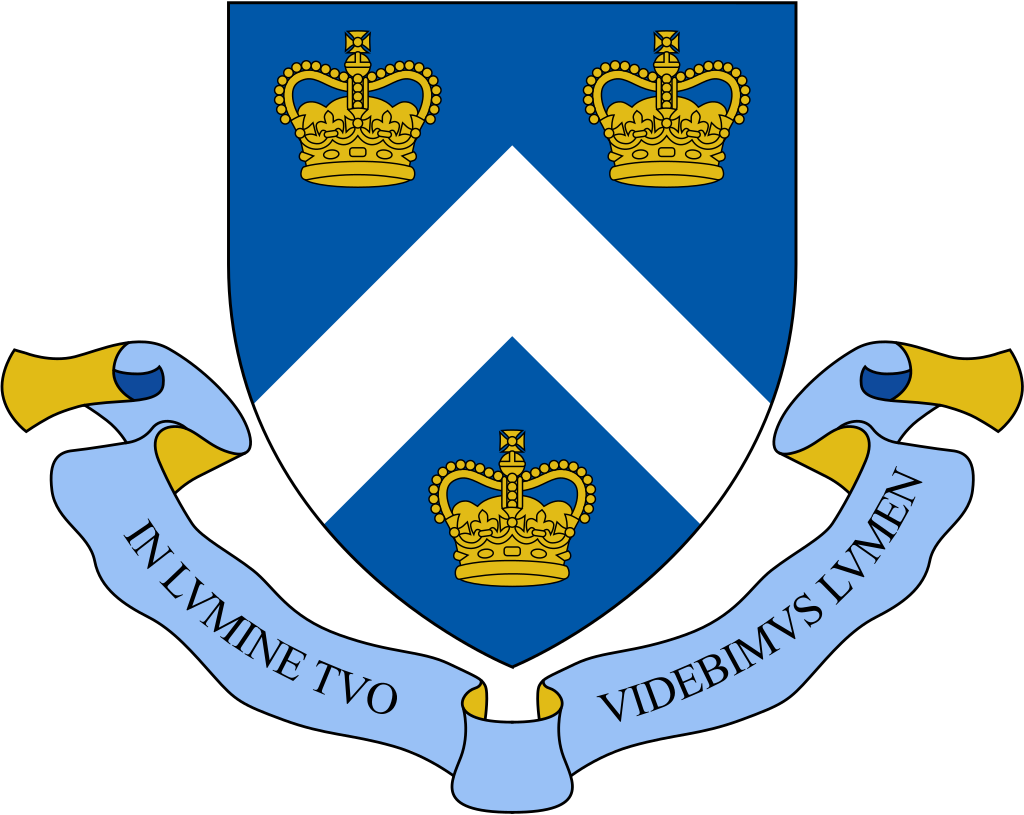
Above: Coat of arms of Columbia University, New York City
Britten revised it somewhat in 1976 and it has subsequently had numerous performances and two commercial recordings.
The story is based on the folkloric American lumberjack, Paul Bunyan, with the music incorporating a variety of American styles, including folk songs, blues and hymns.
The work is strongly sectional in nature, highly reminiscent of the ‘Broadway musical‘ style of the period.
The old trees like life to be slow (“Since the birth of the Earth“), but are challenged by four young trees and three wild geese.
The geese explain that the old trees will have to leave when a Man arrives:
Paul Bunyan will be born at the next blue moon.
To the horror of the old trees, the moon turns blue.
(“It isn’t very often the conservatives are wrong.”)
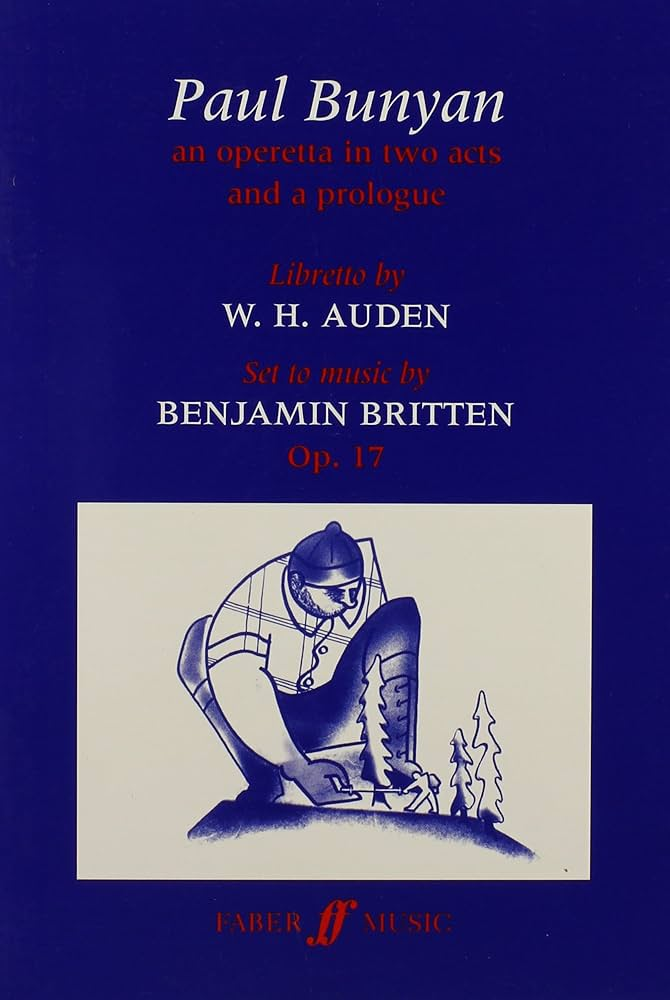
The Narrator recounts the birth and growth of Paul, who gained 346 pounds every week, became as tall as the Empire State Building and had a stride of 3.7 miles.

Above: Empire State Building, 30 Rockefeller Plaza, New York City
(“The cold wind blew through the crooked thorn.”)
One night, he awoke to find that his forehead was being licked by Babe the Blue Cow.
The two of them leave for the South, where Paul sets up a camp.

Above: Paul Bunyan and Babe the Blue Ox, Bemidji, Minnesota, USA
Paul recruits lumberjacks from all over Europe.
(“My birthplace was in Sweden, it’s a very long way off.“)
The Swedes quarrel over which of them should be foreman, but a Western Union Boy bicycles in with a telegram from the King of Sweden, whose recommended foreman, Hel Helson, arrives and is duly appointed by Paul.

Above: Flag of Sweden
However, there is still a need for some cooks who can provide the lumberjacks with nutritious food.
Bad cooks Sam and Ben, devotees (respectively) of soup and beans, arrive.
(“Sam for Soups, Ben for beans“, a parody of campaigns)
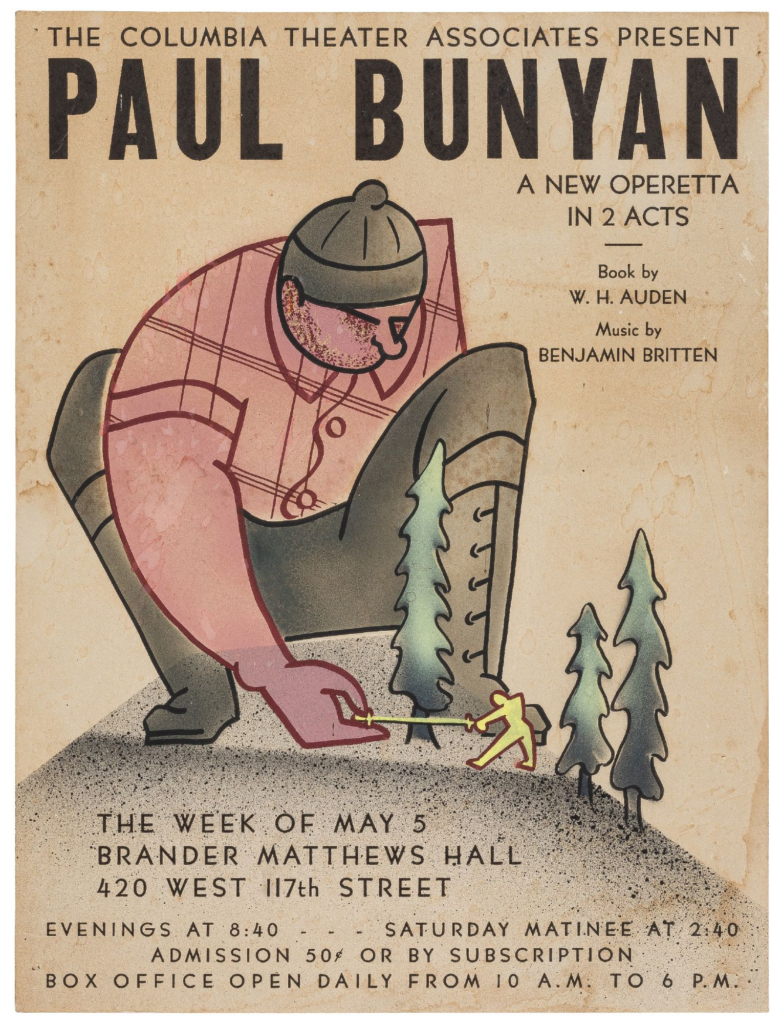
Johnny Inkslinger, an impecunious bookkeeper, also turns up, but wishes to be independent and refuses offers of soup, beans and recompense before travelling on.
Paul predicts that, as Inkslinger has no resources, he will have to return.
Sam and Ben recruit cats Moppet and Poppet.
The dog Fido, to aid them in their work.
(“The single creature lives a partial life.“)
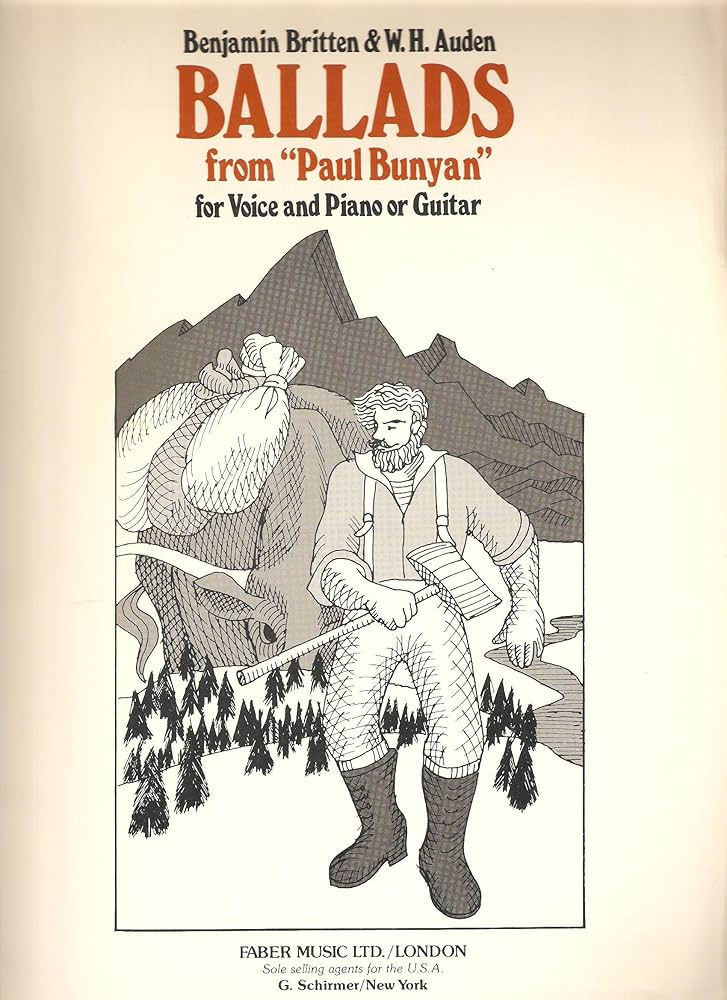
It is bedtime.
Paul introduces a “dream of warning“, sung by a quartet of the defeated.
(“Gold in the North came the blizzard to say.”)

Inkslinger, equally defeated, returns and accepts the job of bookkeeper.
The Narrator describes how Paul went wife-hunting, found an appropriately sized partner (Carrie), and married her.
(“The Spring came and the Summer and Fall.”)
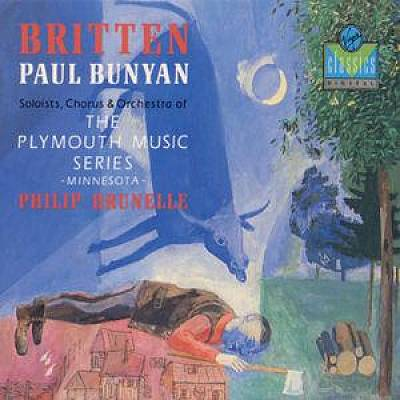
A daughter, Tiny, was born, but her parents’ marriage was unhappy, and she and Carrie left home.
Some years later, Carrie died, and Paul, before her funeral, promised Tiny that he would be a better father.
While Paul is away, there is discontent at the unvarying rations of soup and beans.
(“Do I look the sort of fellow
Whom you might expect to bellow“).
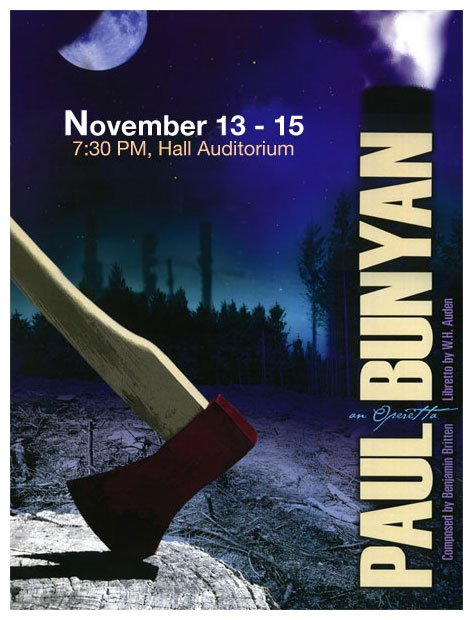
Inkslinger tries to persuade Sam and Ben to vary the menu, but they walk away in a huff.
The lumberjacks turn on Inkslinger, but are interrupted by the offstage voice of Slim.
(“In fair days and in foul
Round the world and back“).

Above: Paul Bunyan
He arrives and describes his attempts to “find himself” by continuous travelling.
(“I come from open spaces.”)

It turns out that he can cook flapjacks, cookies, fish, and steak.
The loggers are appeased.
Paul returns with Tiny.
Inkslinger, dispirited, tells Fido the story of his life, which he feels he has wasted.
(“It was out in the sticks that the fire of my existence began.”).
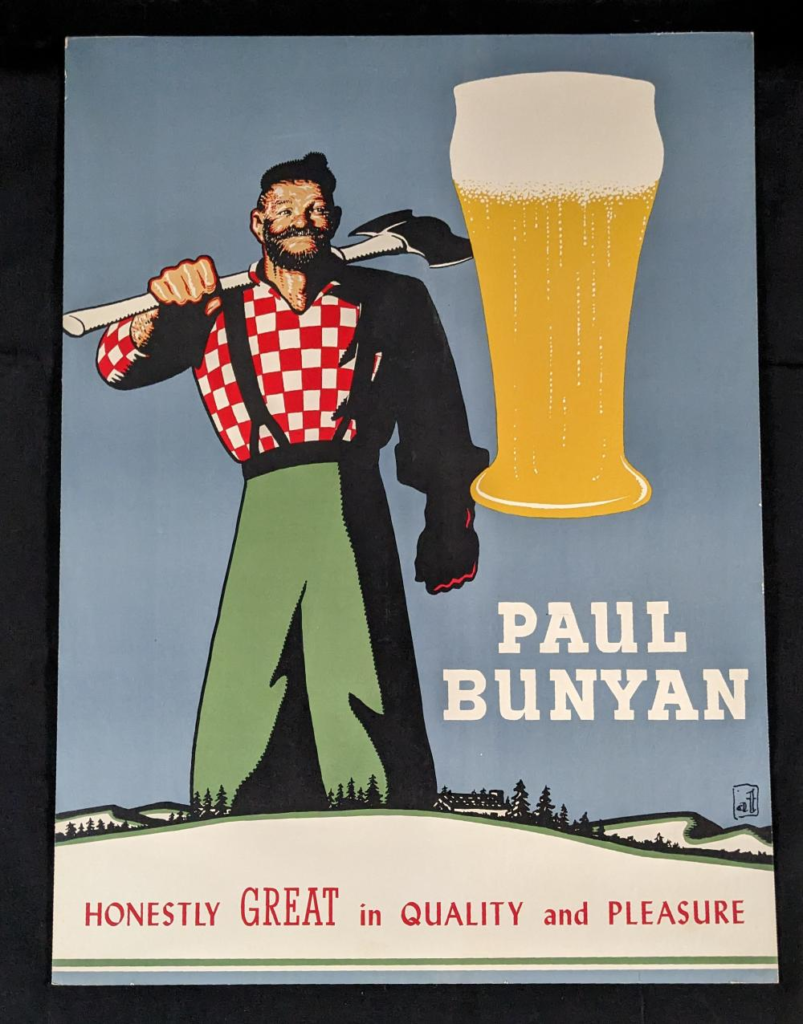
The lumberjacks mob Tiny, who is still mourning her mother’s death.
(“Whether the sunshine upon children playing.”)
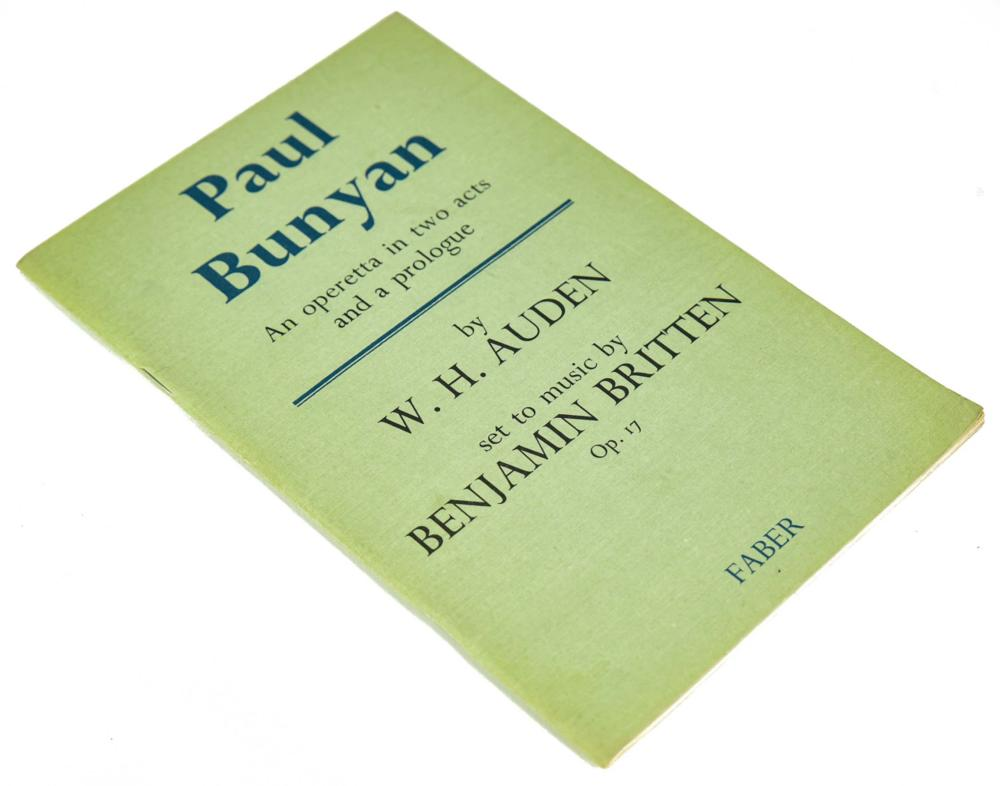
But she only has eyes for Slim.
Paul wants to know if there were any problems while he was away.
Inkslinger tells him that Hel Helson broods too much and keeps bad company, and that some of the men, particularly one called John Shears, are tired of logging and want to take up farming.
They part on good terms.
Paul muses on the subject of the Actual and the Possible as the curtain falls.
Paul summons the lumberjacks and asks those who would like to be farmers to accompany him to the land of Heart’s Desire, where everything is fertile.
Shears and the others rejoice.
(“It has always been my dream.”)
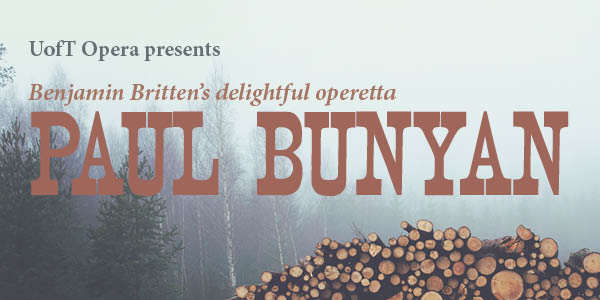
Paul leaves Hel Helson in charge, telling him that the Topsy-Turvey Mountain needs to be cleared.
Hel’s four cronies try to persuade him to mount a rebellion against Paul and Inkslinger.
He sends them away, but the voices of a Heron, the Moon, the Wind, a Beetle and a Squirrel tell him that he is a failure.
(“Heron, heron, winging by.“)

Above: Images of herons
Fido attempts to console him.
(“Won’t you tell me what’s the matter?“)

Above: Paul Bunyan
But Hel kicks him out.
Moppet and Poppet rejoice that they are not sentimental, like dogs.
(“Let Man the romantic in vision espy.”)

Above: Paul Bunyan and Babe the Blue Ox
When Paul returns, so do Hel’s cronies, who persuade him to pick a fight with Paul.
Tiny and Slim, oblivious of the sounds of the offstage fight, celebrate their love.
(“Move, move, from the trysting stone“)
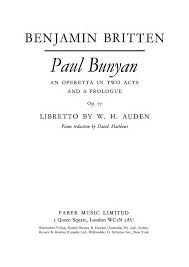
Hel, unconscious, is carried in.
(“Take away the body and lay it on the ice.”)

When he wakes up, he makes peace with Paul and rejects the cronies.
The chorus hails a “great day of discovery” as Tiny and Slim continue their duet.
The Narrator recounts the continuing success of the logging industry and of Slim and Tiny’s love.
(“So Helson smiled and Bunyan smiled“)
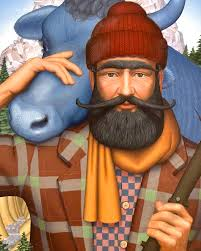
Above: Babe and Paul Bunyan
Eventually, Babe indicates to Paul that it is time to move on.
He realizes that she is right.
It is Christmas Eve.
Amid the seasonal festivities, Inkslinger makes a number of announcements.
(“Dear friends with your leave this Christmas Eve“)
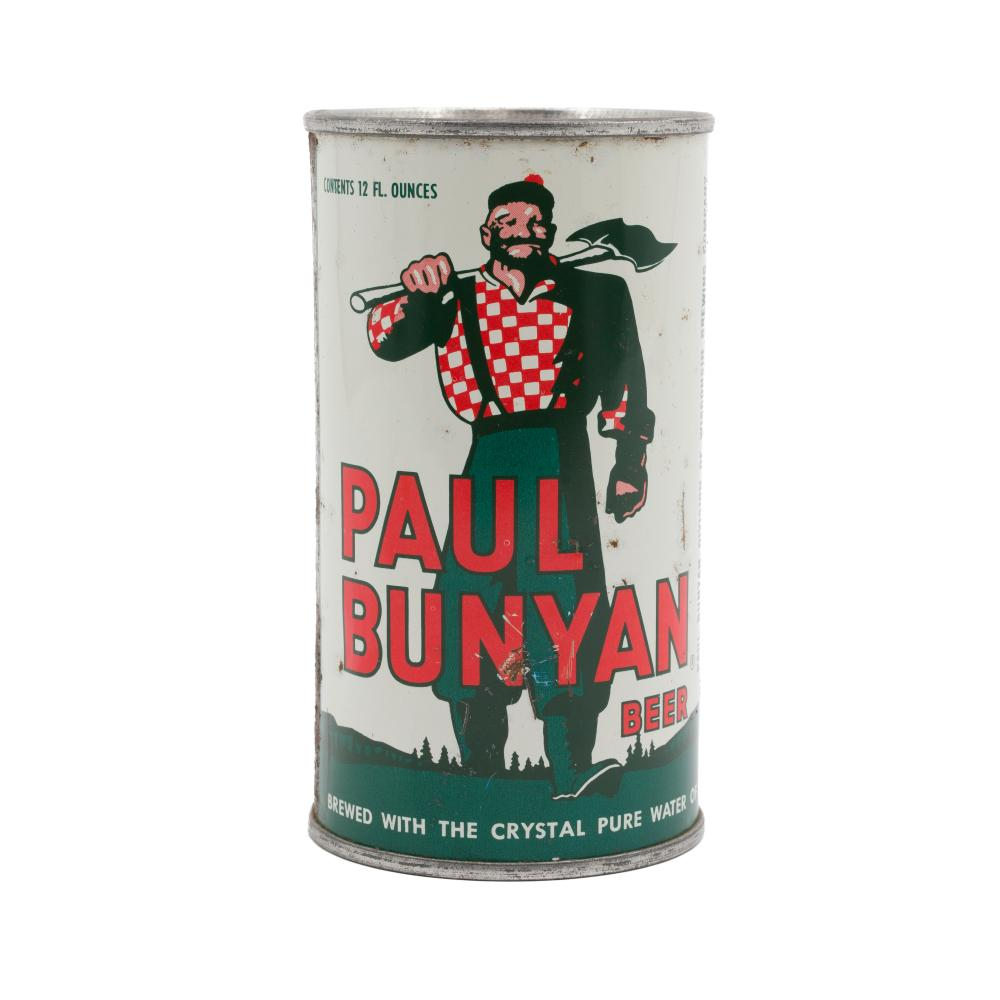
Slim and Tiny will marry and move to Midtown Manhattan.
(“Carry her over the water.“)

Above: Manhattan, New York City
Hel Helson will be joining the Administration in Washington to lead the Federal Plan of public works.

Above: The White House, Washington DC
John Shears has taken time off from his farm to join the party.
As everyone cheers, the Western Union Boy reappears with a telegram from Hollywood.

It is an invitation to Inkslinger to become a technical advisor for an all-star lumber picture!

Finally, Paul takes his leave.
(“Now the task that made us friends in a common labor, ends.”)
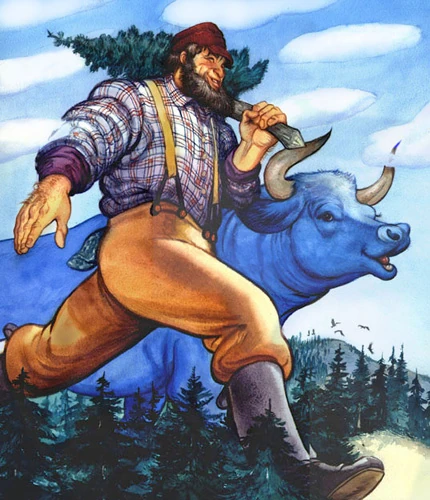
Above: Paul Bunyan and Babe
A litany is sung.
(“The campfire embers are black and cold“)

Inkslinger asks:
“Paul, who are you?“.
Paul replies:
“Where the night becomes the day,
Where the dream becomes the fact,
I am the Eternal guest,
I am Way, I am Act.”

Every day America’s destroyed and re-created,
America is what you do,
America is I and you,
America is what you choose to make it.
Paul Bunyan (1941)

Above: Liberty Enlightening the World, Frédéric Auguste Bartholdi (1886)
Around 1942, as Auden became more comfortable with religious themes, his verse became more open and relaxed.
Auden’s work in this era addresses the artist’s temptation to use other persons as material for his art rather than valuing them for themselves (“Prospero to Ariel“) and the corresponding moral obligation to make and keep commitments while recognizing the temptation to break them (“In Sickness and Health“).
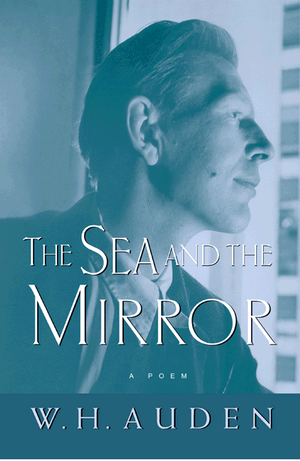
From 1942 through 1947 he worked mostly on three long poems in dramatic form, each differing from the others in form and content: “For the Time Being: A Christmas Oratorio“, “The Sea and the Mirror: A Commentary on Shakespeare’s The Tempest” (both published in For the Time Being) (1944), and The Age of Anxiety: A Baroque Eclogue (1947).

For the Time Being: A Christmas Oratorio, is a long poem by W. H. Auden, written in 1941 and 1942, and first published in 1944.
It was one of two long poems included in Auden’s book also titled For the Time Being, published in 1944.
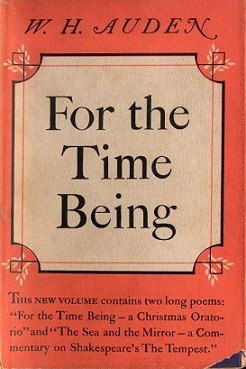
The other poem included in the book was “The Sea and the Mirror“.
The poem is a series of dramatic monologues spoken by the characters in the Christmas story and by choruses and a narrator.
The characters all speak in modern diction, and the events of the story are portrayed as if they occurred in the contemporary world.
Its mood is sombre regarding the future of the world, as seen in the following lines:
Reason will be replaced by Revelation.
Instead of Rational Law,
Objective truths perceptible to any who will undergo the necessary intellectual discipline,
Knowledge will degenerate into a riot of subjective visions
Whole cosmogonies will be created out of some forgotten personal resentment,
Complete epics written in private languages,
The daubs of schoolchildren ranked above the greatest masterpieces.
Idealism will be replaced by Materialism.
Life after death will be an eternal dinner party where all the guests are 20 years old.
Justice will be replaced by Pity as the cardinal human virtue,
And all fear of retribution will vanish.
The New Aristocracy will consist exclusively of hermits,
Bums and permanent invalids.
The Rough Diamond,
The Consumptive Whore,
The bandit who is good to his mother,
The epileptic girl who has a way with animals will be the heroes and heroines of the New Age,
When the general,
The statesman,
And the philosopher have become the butt of every farce and satire.
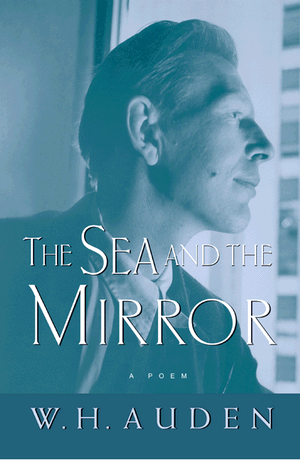
In a national capital Mirabeau and his set
Attacked mystery; the packed galleries roared
And history marched to the drums of a clear idea,
The aim of the Rational City, quick to admire,
Quick to tire.
Memorial for the City (1947)

Above: New York City
The Age of Anxiety: A Baroque Eclogue (1948) is a long poem in six parts by W. H. Auden, written mostly in a modern version of Anglo-Saxon alliterative verse.
The poem deals, in eclogue form, with man’s quest to find substance and identity in a shifting and increasingly industrialized world.
Set in a wartime bar in New York City, Auden uses four characters – Quant, Malin, Rosetta, and Emble – to explore and develop his themes.
The poem won the Pulitzer Prize for Poetry in 1948.
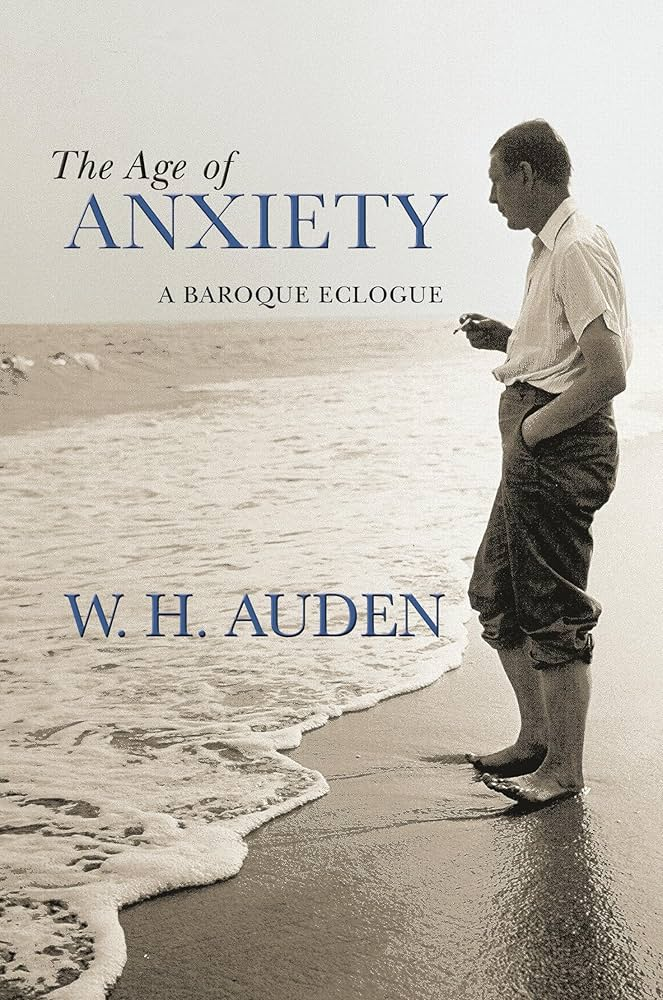
The first two, with Auden’s other new poems from 1940 to 1944, were included in his first collected edition, The Collected Poetry of W. H. Auden (1945), with most of his earlier poems, many in revised versions.
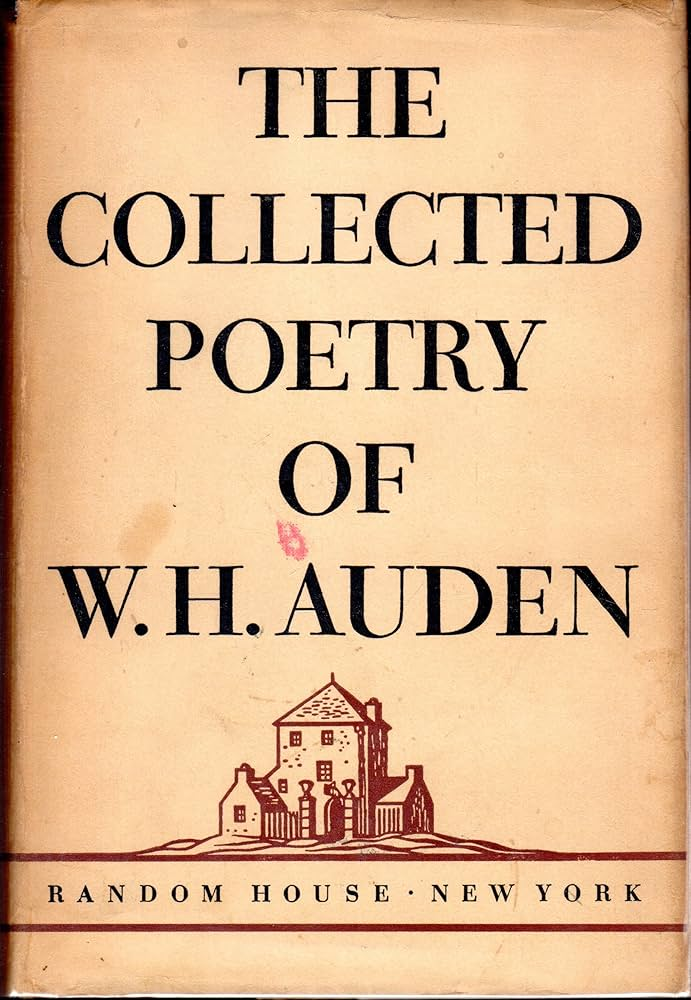
After completing The Age of Anxiety in 1946 he focused again on shorter poems, notably “A Walk After Dark“, “The Love Feast“, and “The Fall of Rome“.
Many of these evoked the Italian village where he spent his summers between 1948 and 1957.
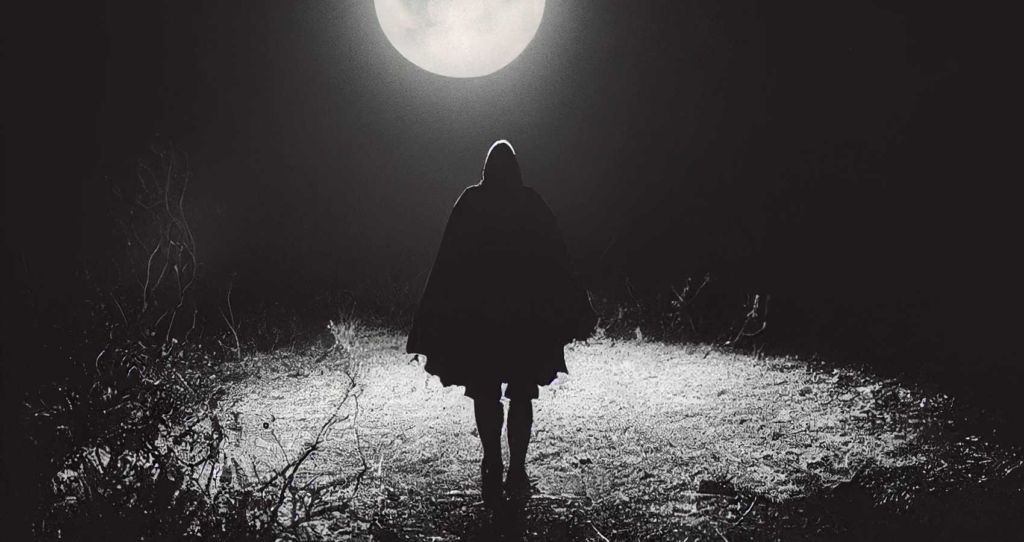
A poet is, before anything else, a person who is passionately in love with language.
“Squares and Oblongs”, Poets at Work (1948)
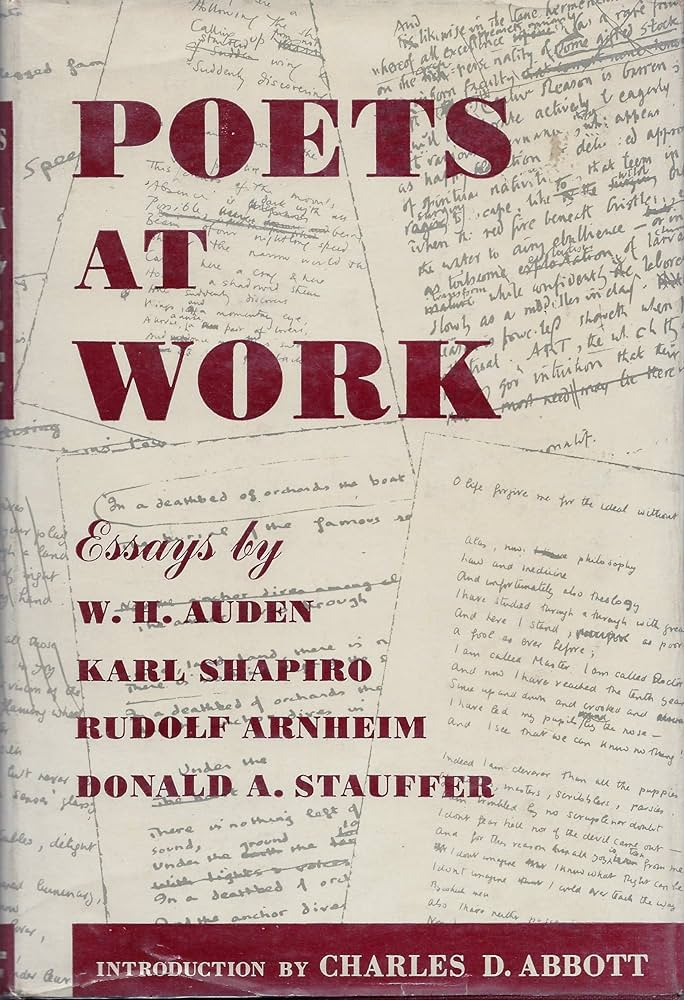
His next book, Nones (1951), had a Mediterranean atmosphere new to his work.
A new theme was the “sacred importance” of the human body in its ordinary aspect (breathing, sleeping, eating) and the continuity with nature that the body made possible (in contrast to the division between humanity and nature that he had emphasized in the 1930s).
His poems on these themes included “In Praise of Limestone” (1948) and “Memorial for the City” (1949).
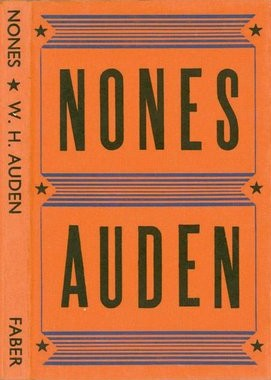
In 1947 – 1948, Auden and Kallman wrote the libretto for Igor Stravinsky’s opera The Rake’s Progress.
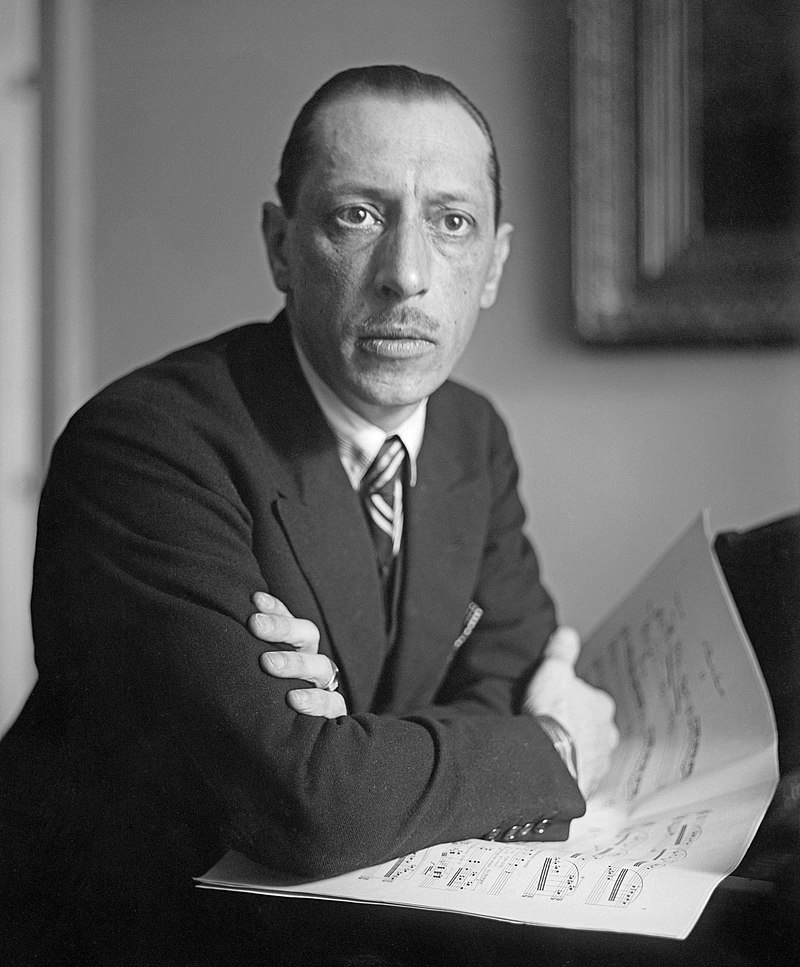
Above: Russian composer Igor Stravinsky (1882 – 1971)
They later collaborated on two libretti for operas by Hans Werner Henze.
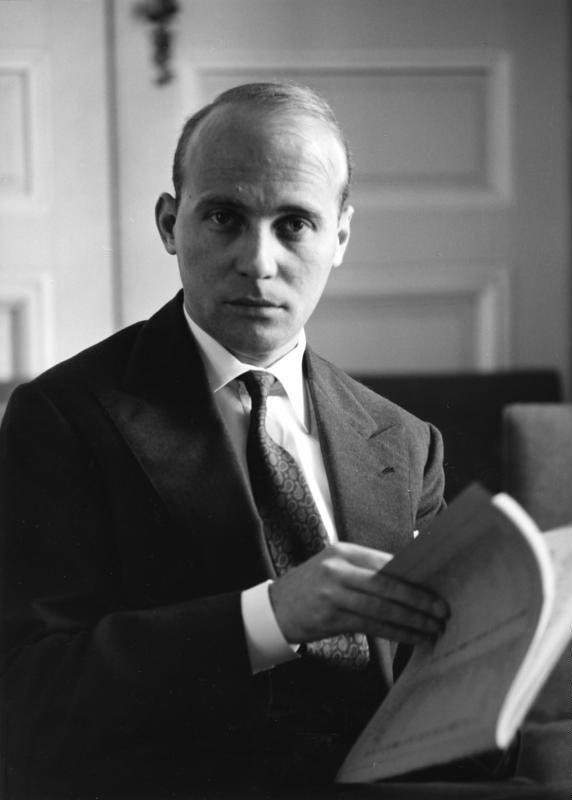
Above: German composer Hans Werner Henze (1926 – 2012)
Auden’s first separate prose book was The Enchafèd Flood: The Romantic Iconography of the Sea (1950), based on a series of lectures on the image of the sea in romantic literature.
The Enchafèd Flood: or, The Romantic Iconography of the Sea is a book of three lectures by W. H. Auden, first published in 1950.
The book contains Auden’s 1949 Page-Barbour Lectures at the University of Virginia.
The three lectures are titled:
- “The Sea and the Desert“
- “The Stone and the Shell“
- “Ishmael–Don Quixote“.
The theme of the book is the sensibility of romanticism, especially in its search for escape from responsibility and community.
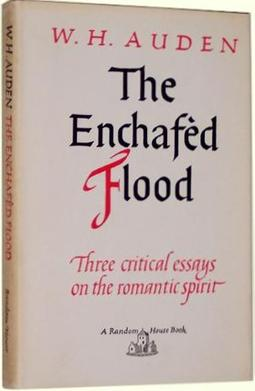
It deals with poems by Coleridge, Byron, Hopkins, Blake, but above all with Herman Melville’s Moby Dick, which is analyzed with psychoanalytical tools (especially used to interpret the main characters of the novel) and with an analogical interpretation of such symbols as the sea, the ship, the stone, and the shell.
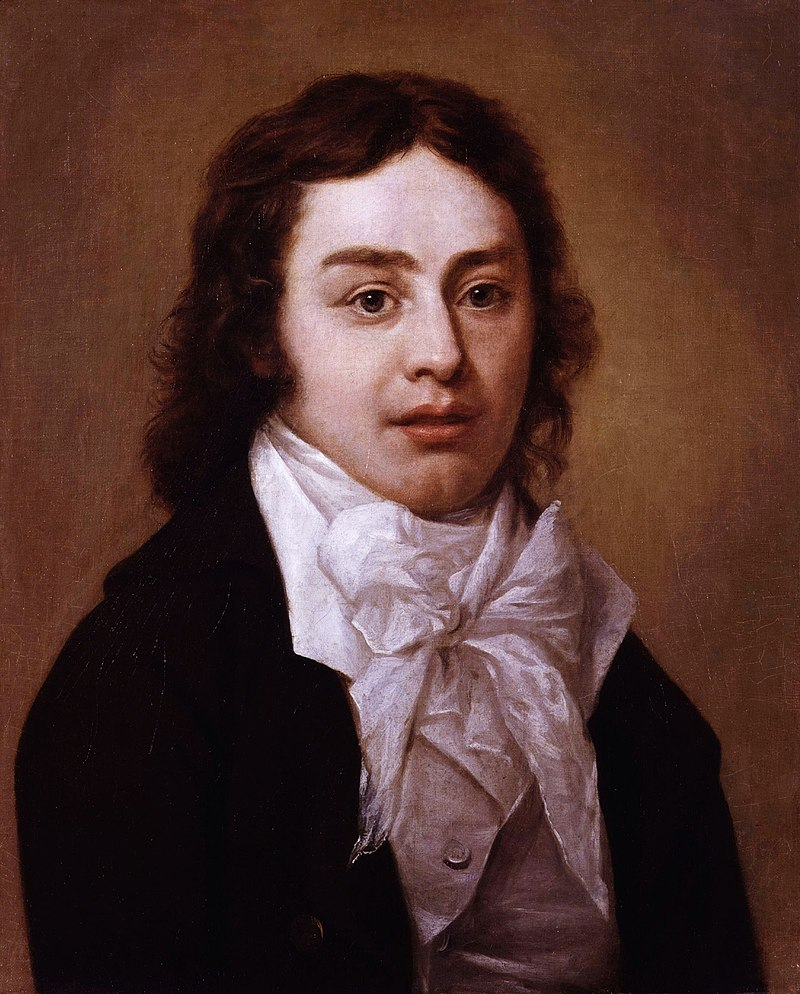
Above: English poet Samuel Taylor Coleridge (1772 – 1834)
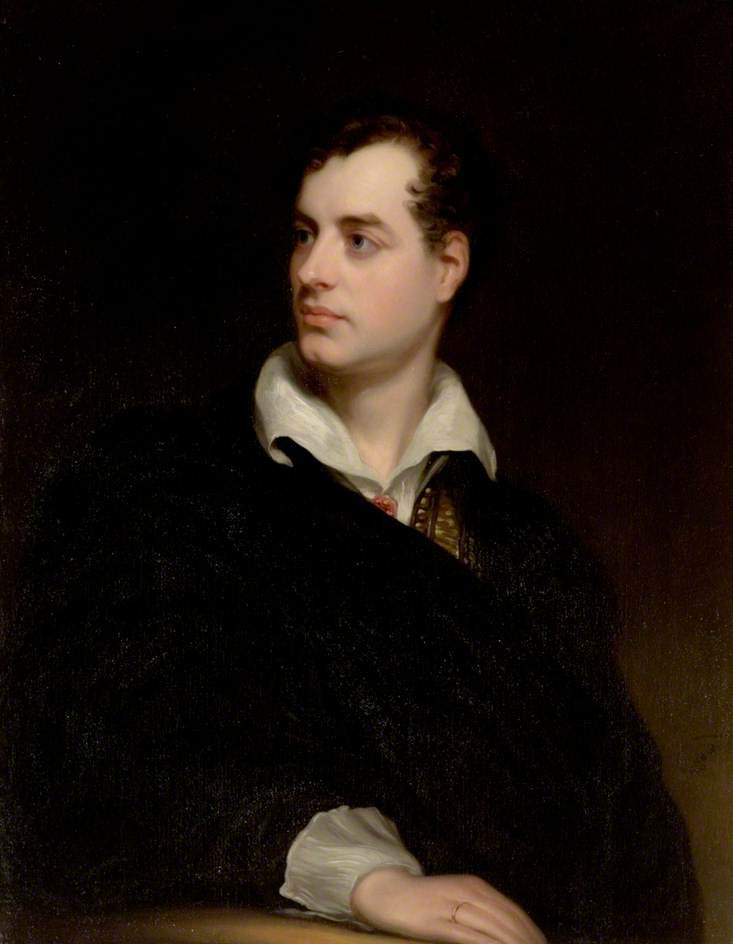
Above: British poet Lord Byron (1788 – 1824)
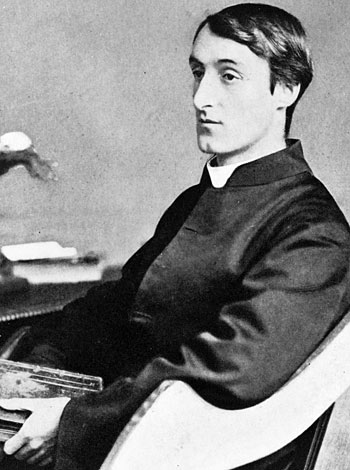
Above: English poet Gerald Manley Hopkins (1844 – 1889)
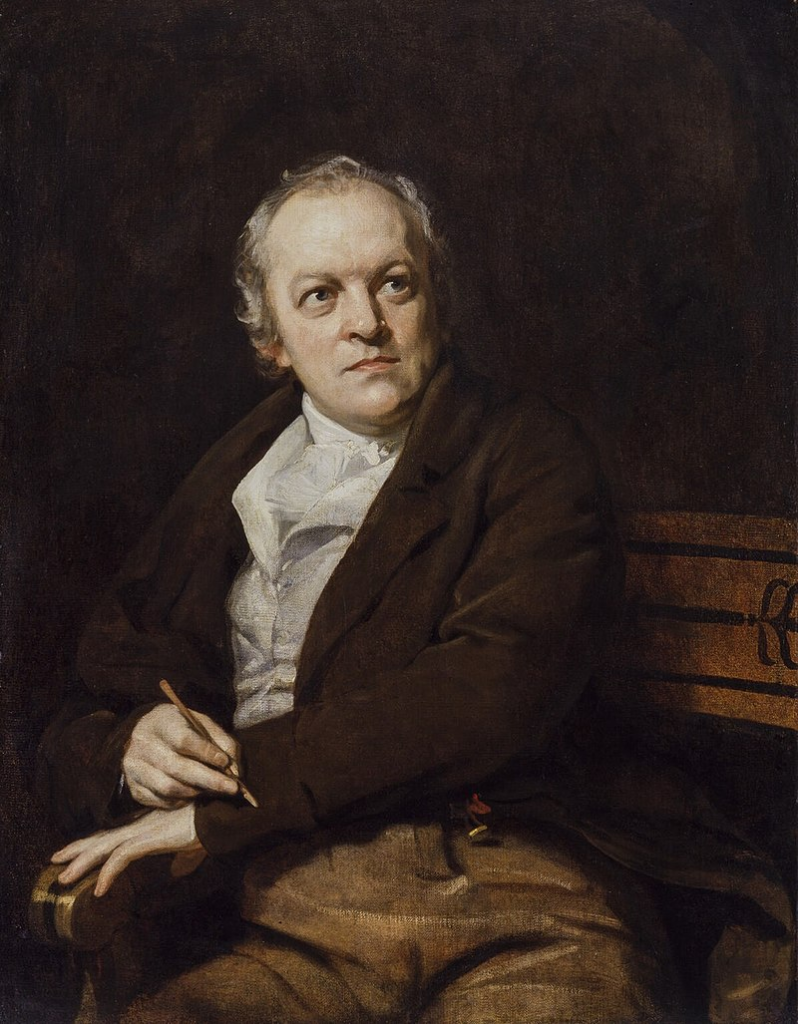
Above: English poet/painter William Blake (1757 – 1827)
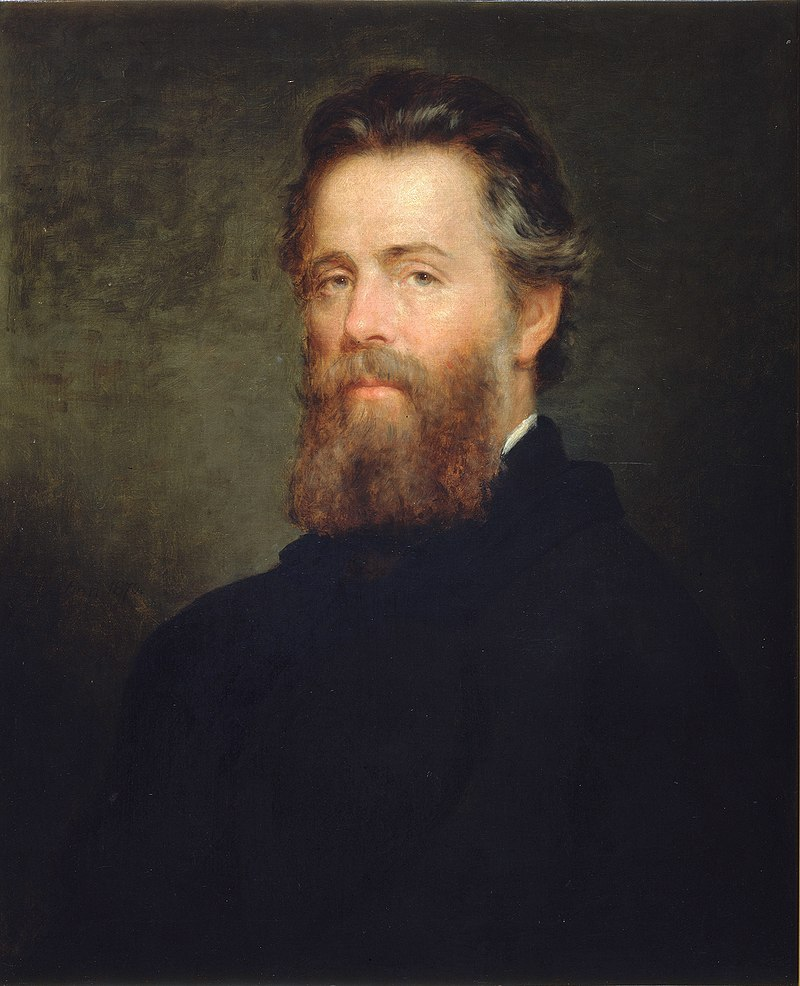
Above: American writer Herman Melville (1819 – 1891)
The title comes from a line in Shakespeare’s Othello.
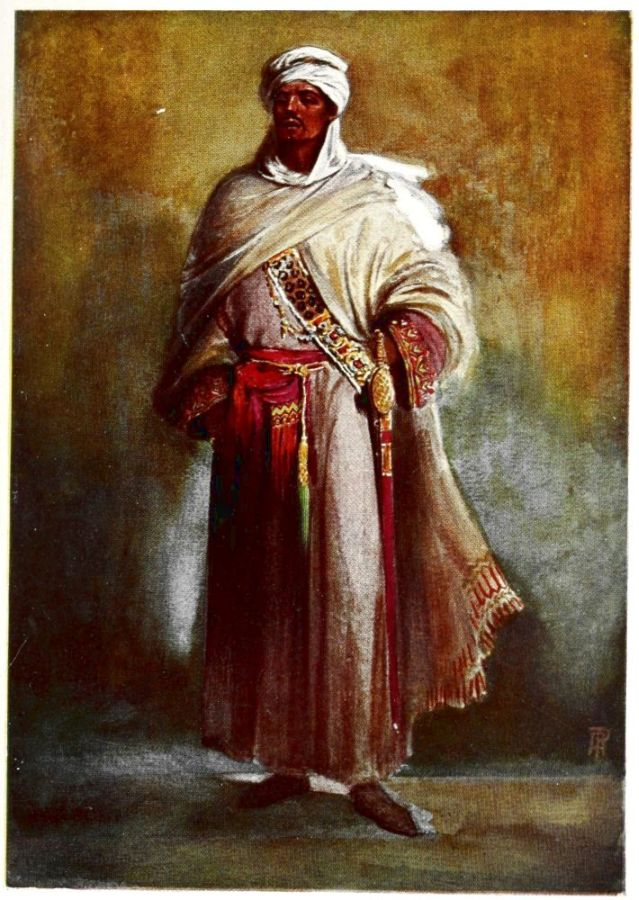
Above: Othello costume
Between 1949 and 1954 he worked on a sequence of seven Good Friday poems, titled “Horae Canonicae“, an encyclopaedic survey of geological, biological, cultural, and personal history, focused on the irreversible act of murder.
The poems were also a study in cyclical and linear ideas of time.
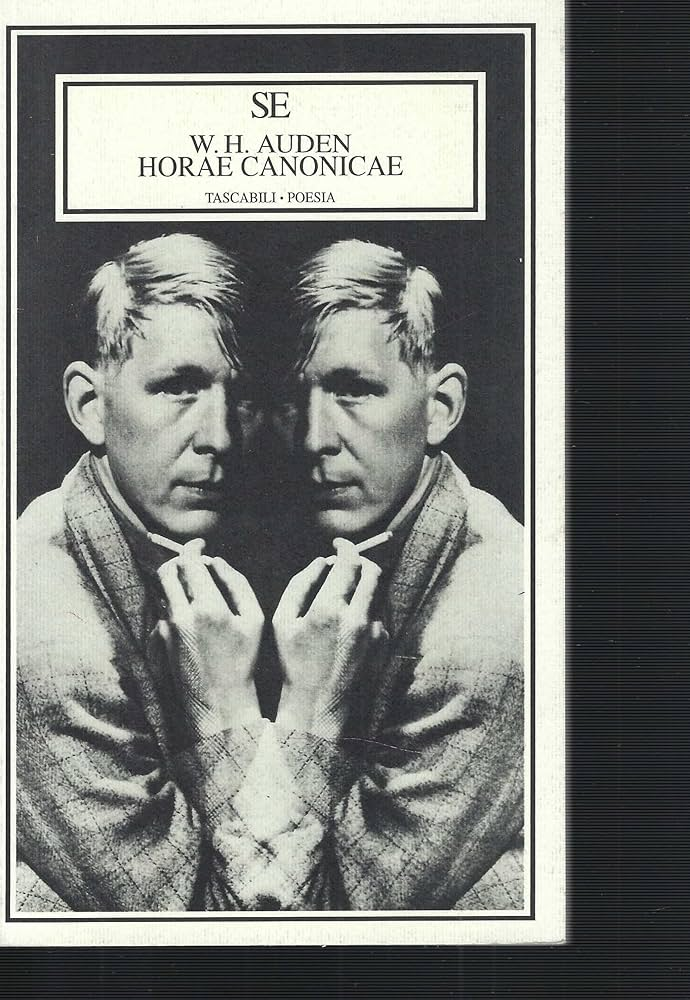
While writing this, he also wrote “Bucolics“, a sequence of seven poems about man’s relation to nature.
The sequence was first published in book form in Auden’s book The Shield of Achilles (1955).
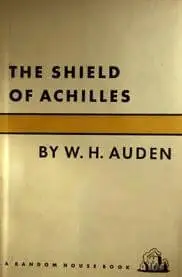
To save your world you asked this man to die;
Would this man, could he see you now, ask why?
Epitaph for the Unknown Soldier (1953)

Both sequences appeared in his next book, The Shield of Achilles (1955), with other short poems, including the book’s title poem, “Fleet Visit“, and “Epitaph for the Unknown Soldier“.
It is Auden’s response to the detailed description, or ekphrasis, of the shield borne by the hero Achilles in Homer’s epic poem the Iliad.
Auden’s poem is written in two different stanza forms, one form consisting of eight shorter lines, the other with seven longer lines written according to a rime royal rhyme scheme (ABABBCC).
The stanzas with shorter lines describe the making of the shield by the god Hephaestus, and report the scenes that Achilles’ mother, the Nereid Thetis, expects to find on the shield and which Hephaestus, in Auden’s version, does not make.
Thetis expects to find scenes of happiness and peace like those described by Homer.
The stanzas with longer lines describe the scenes of a barren and impersonal modern world that Hephaestus creates in Auden’s version.
In the first scene described by these stanzas, an anonymous, dispassionate army listens.
In the second scene, a crowd of ordinary people watch passively as three “pale figures” are dragged towards and tied to posts.
In the third scene, a “ragged urchin” throws a stone at a bird.
He takes it for granted “that girls are raped, that two boys knife a third” and:
“Has never heard of any world where promises are kept
Or one could weep because another wept.”
In the closing stanza, composed of short lines, Thetis cries out in dismay at what Hephaestus has made for her son, “who would not live long“.
In these contrasting stanzas, Auden reflects on the differences between the vital, lyrical Achaean world described by Homer where, even amid warfare, imagination naturally ran to scenes of peace, and the violent, barren world, lacking any hope and meaning, that Auden himself imagines.

The Rake’s Progress is an English-language opera from 1951 in three acts and an epilogue by Igor Stravinsky.
The libretto, written by W. H. Auden and Chester Kallman, is based loosely on the eight paintings and engravings A Rake’s Progress (1733 – 1735) of William Hogarth, which Stravinsky had seen on 2 May 1947, in a Chicago exhibition.
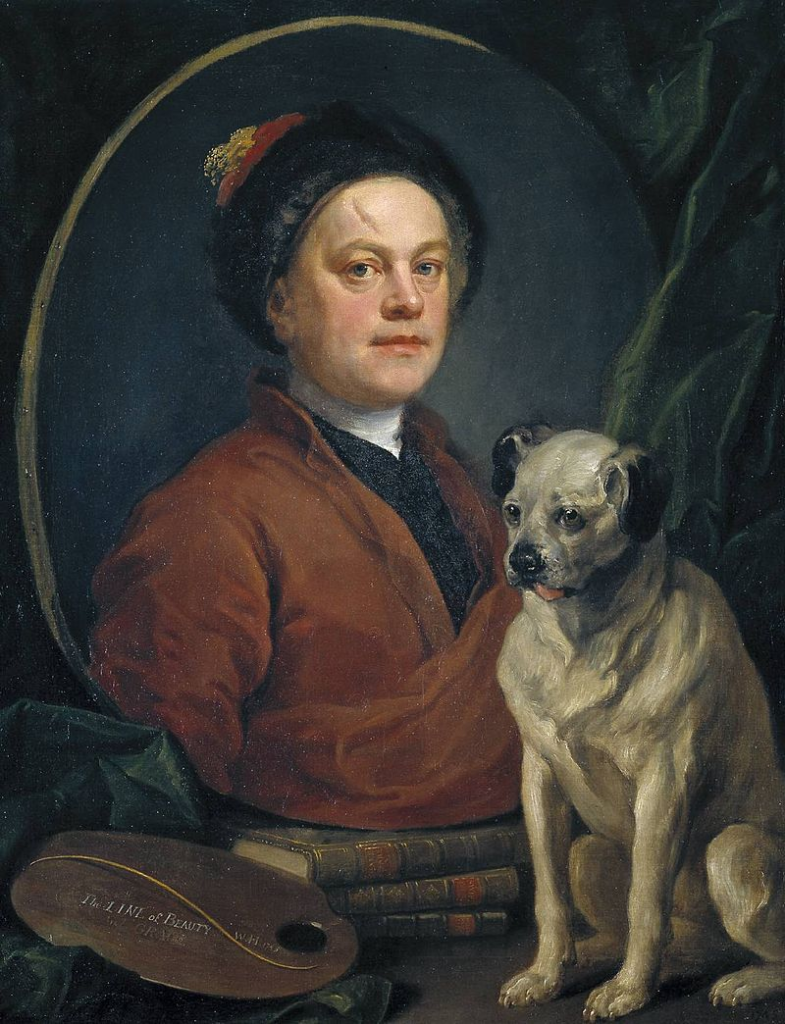
Above: The Painter and his Pug, William Hogarth (1745):
Self-portrait with his pug, Trump
The story concerns the decline and fall of one Tom Rakewell, who deserts Anne Trulove for the delights of London in the company of Nick Shadow, who turns out to be the Devil.
After several misadventures, all initiated by the devious Shadow, Tom ends up in Bedlam, a hospital for the insane at that time situated in the City of London.
The moral of the tale is:
“For idle hearts and hands and minds the Devil finds work to do.“

Above: Bethlem Royal Hospital (“Bedlam“), London, England
Tom Rakewell is courting Anne Trulove outside her father’s house in the country.
Father Trulove has doubts about his daughter’s proposed marriage and tries to arrange a regular job for Tom, but Tom resists the idea and, left on his own, declares his intention to…
“Live by my wits and trust to my luck“.

When Tom expresses his wish for money, Nick Shadow appears and tells him that an unknown uncle has left him a substantial fortune.
He then invites Tom to employ him as a servant and accompany Tom to London to sort out the inheritance.
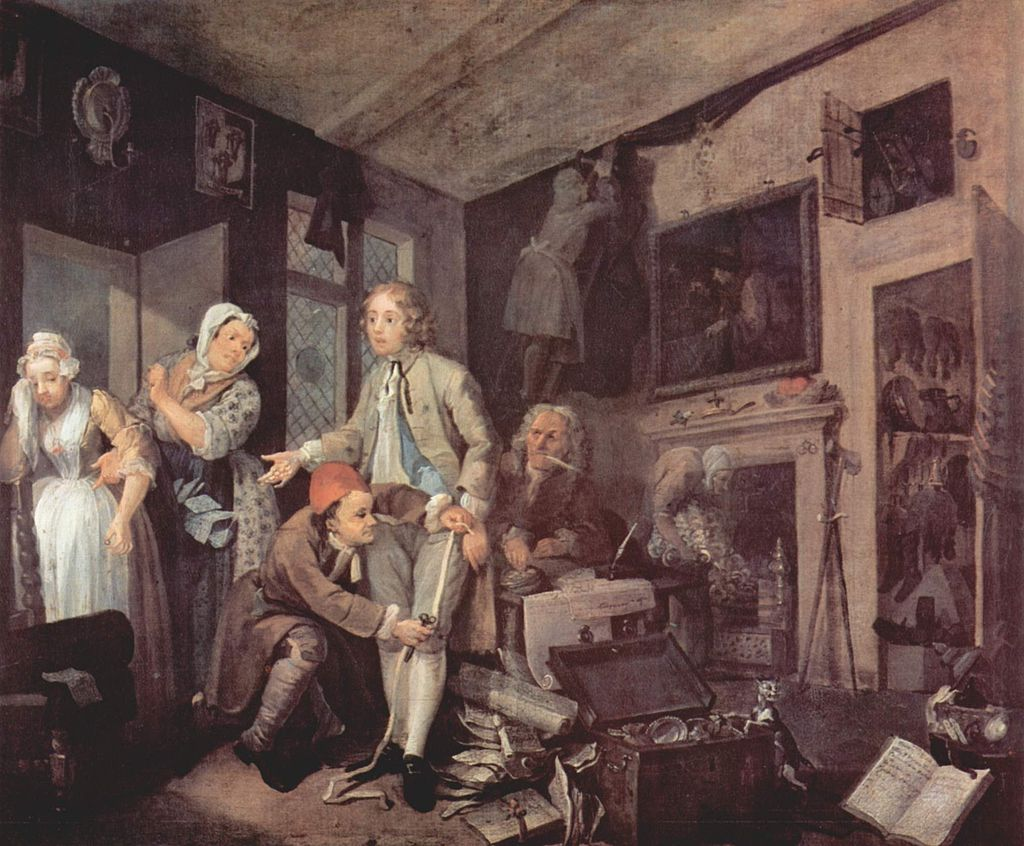
Above: The Heir (The Rake’s Progress), William Hogarth (1732)
The second scene, set in Mother Goose’s brothel, shows Shadow introducing his new master to the sleazy aspects of London life.
But Tom is uneasy and laments his betrayal of love, yet accepts Mother Goose’s invitation to spend the night with her.
Meanwhile, back in the country, Anne wonders why she has not heard from Tom.
She knows somehow that he is in danger.
She sets out for London to aid him.
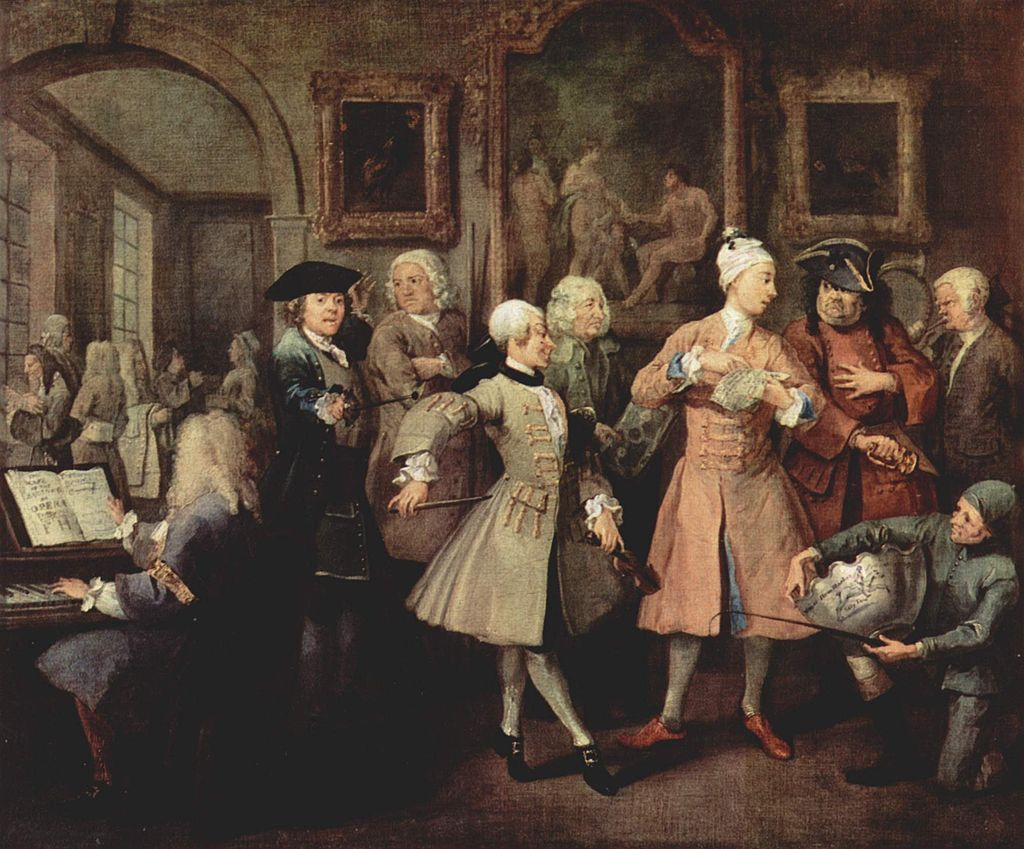
Above: The Levée (The Rake’s Progress), William Hogarth (1732)
Tom is bored with his dissolute life.
He utters his second crucial wish, for happiness, whereupon Nick makes the odd suggestion that he demonstrate his freedom by marrying Baba the Turk, the famous bearded lady.
Soon afterwards Anne finds Tom’s London house, only to see him emerge from a sedan chair which also contains Baba, whom he has just married.
Tom tells Anne to leave, yet genuinely regrets what has happened.
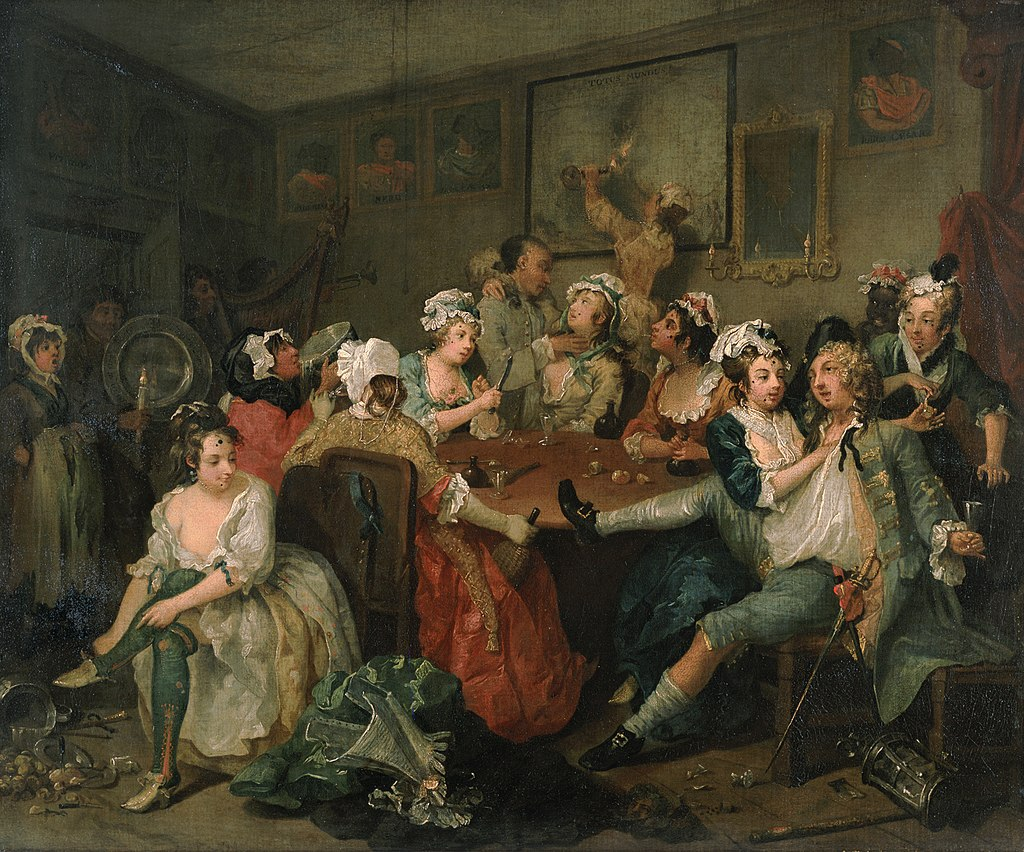
Above: The Orgy (The Rake’s Progress), William Hogarth (1732)
In the next scene Tom is clearly finding his eccentric marriage intolerable, as Baba is a chatterbox with a fiery temper.
He silences her by throwing his wig over her face, then falls asleep.
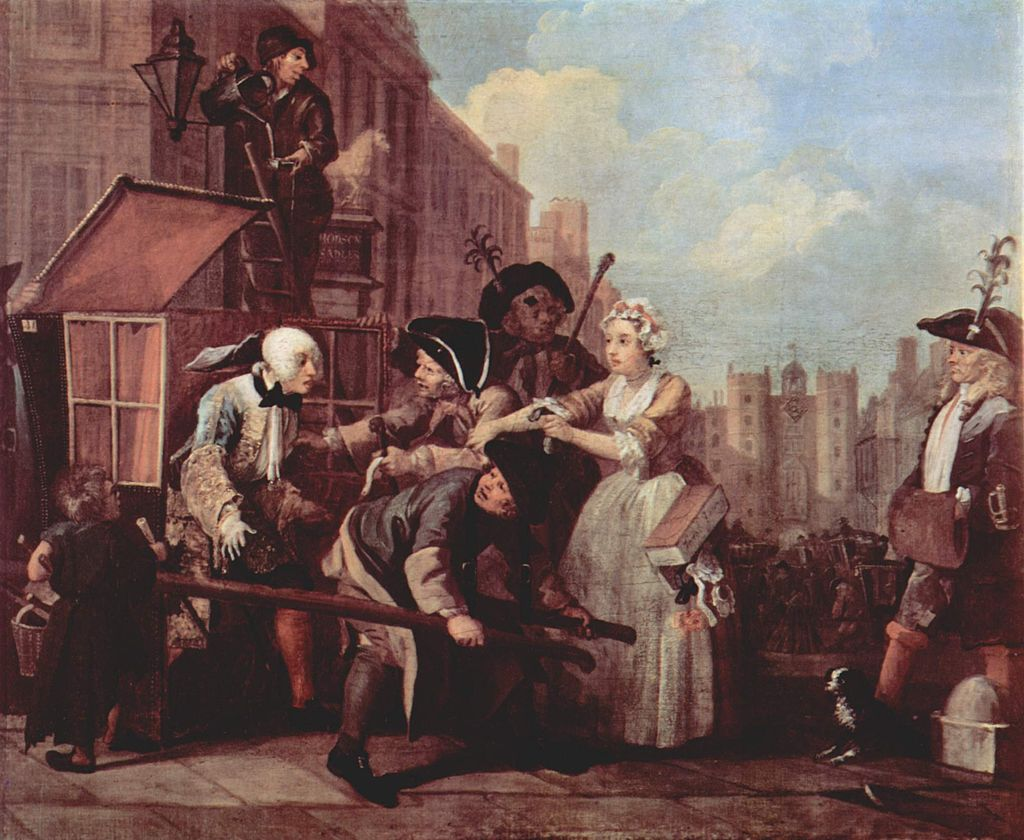
Above: The Arrest (A Rake’s Progress), William Hogarth (1732)
Nick enters with a “fantastic Baroque Machine” and demonstrates how, through the use of a hidden compartment in the machine, it appears to turn stones into bread.
Tom cries out in his sleep that he wishes it were true, and waking, finds the machine he has dreamt of.
Nick hints that if such machines were mass-produced Tom could become a savior of mankind.
Tom sets out to market the machine, not knowing it is a sham.
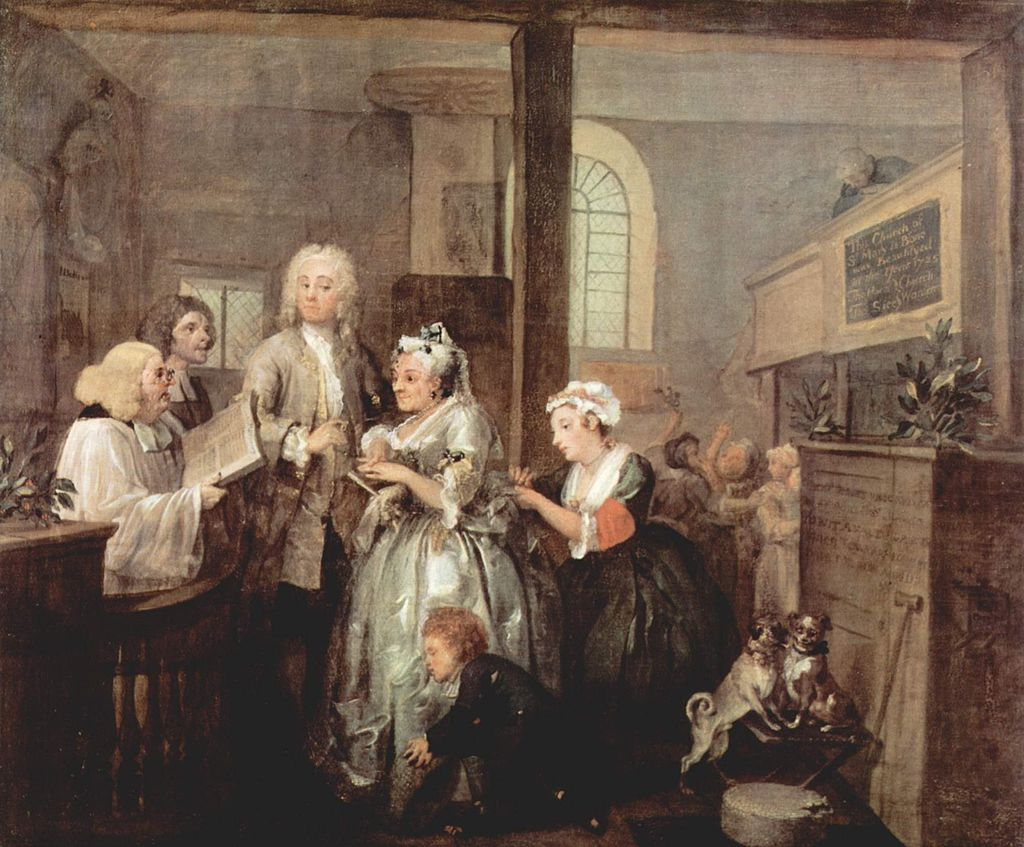
Above: The Marriage (The Rake’s Progress), William Hogarth (1732)
The plan has failed – the act starts with the auction of the ruined Tom’s property by the maniac auctioneer Sellem.
The objects for sale include Baba, who has remained immobile since being silenced by the wig.
When unwrapped, she resumes her tantrum, now directed at the auction-goers for disturbing her belongings, but calms down when Anne enters.
Baba advises her to find Tom and “set him right“, and warns her against Nick Shadow.
She announces her intent to return to her life on the stage.
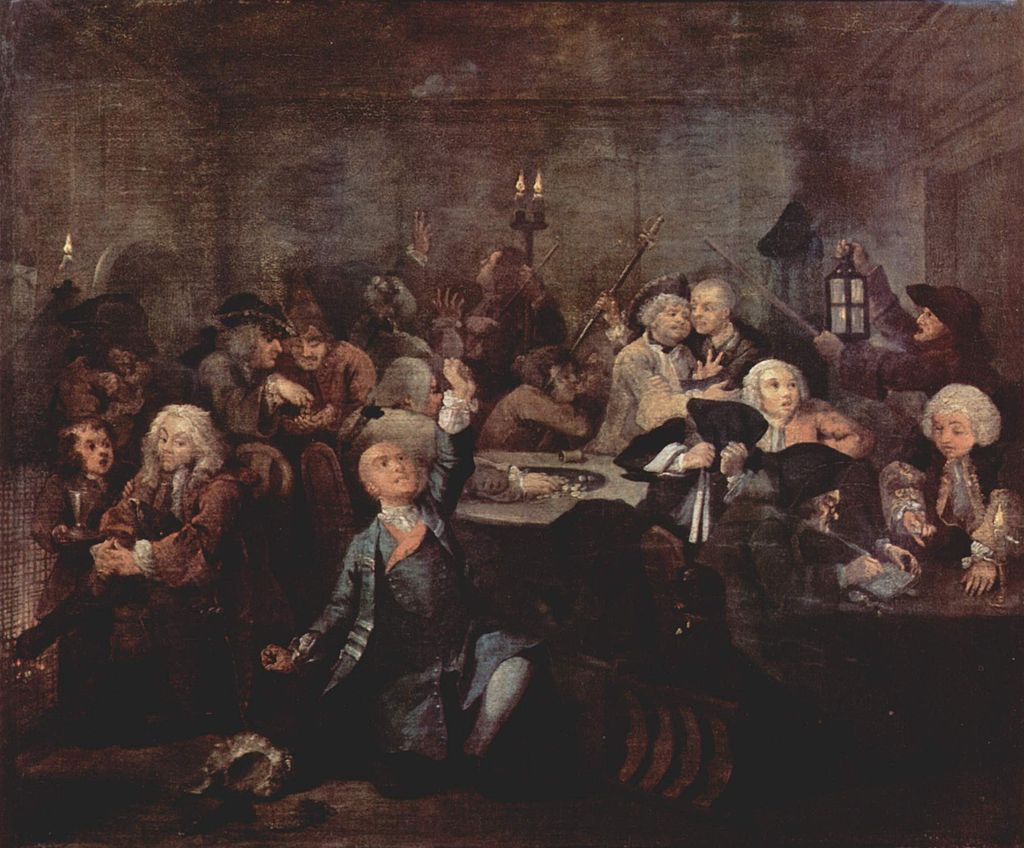
Above: The Gaming House (The Rake’s Progress), William Hogarth (1732)
In a graveyard, Nick reveals his identity and demands payment from Tom, in the form of his soul, but as midnight strikes, Nick offers him an escape in the form of a game of cards.
Tom wins, thanks to the benign influence of Anne.
Defeated, Nick sinks into the ground, condemning Tom to insanity as he goes.

Above: The Prison (The Rake’s Progress), William Hogarth (1732)
Consigned to Bedlam, Tom believes he is Adonis.
Anne (“Venus“) visits him, sings him to sleep, then quietly leaves him.
When he realizes she has gone, he dies.
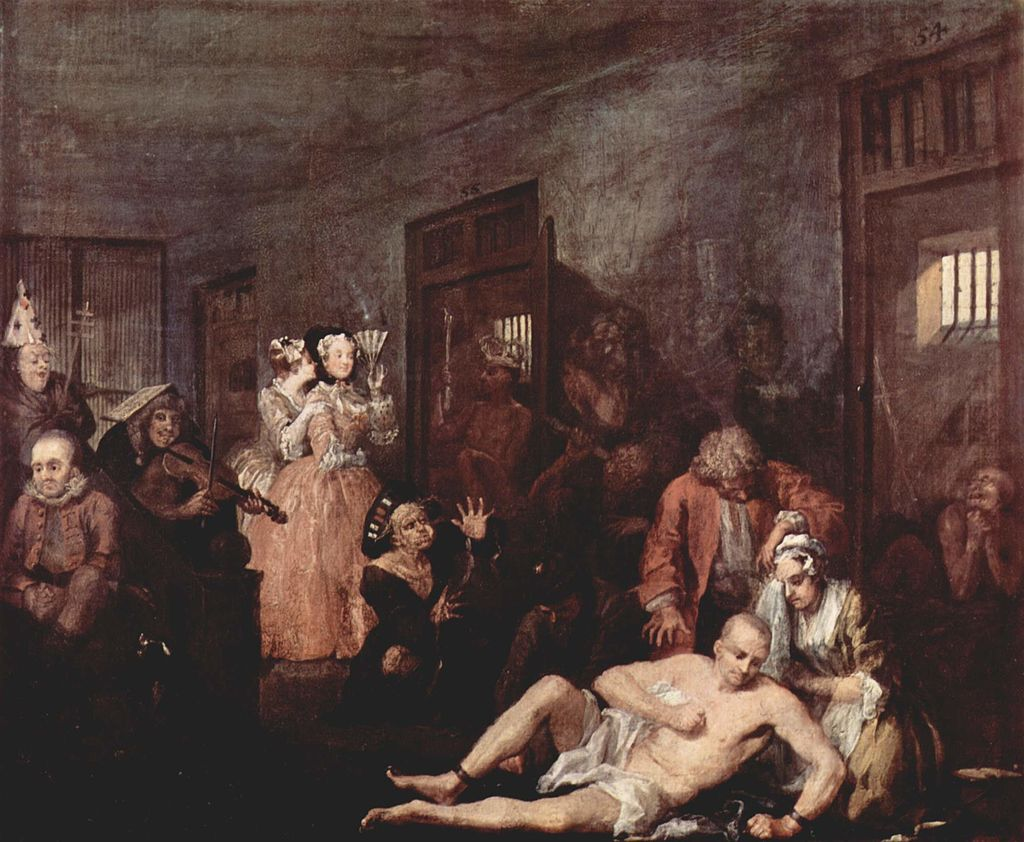
Above: The Madhouse (The Rake’s Progress), William Hogarth (1732)
In 1955 – 1956 Auden wrote a group of poems about “history“, the term he used to mean the set of unique events made by human choices, as opposed to “nature“, the set of involuntary events created by natural processes, statistics, and anonymous forces such as crowds.
These poems included “T the Great“, “The Maker”, and the title poem of his next collection Homage to Clio (1960).
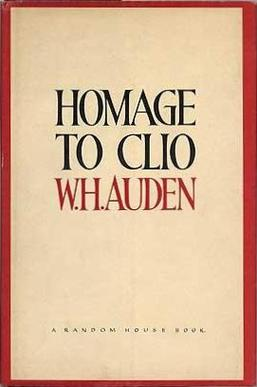
In the late 1950s Auden’s style became less rhetorical while its range of styles increased.
In 1958, having moved his summer home from Italy to Austria, he wrote “Good-bye to the Mezzogiorno“.
Other poems from this period include “Dichtung und Wahrheit: An Unwritten Poem“, a prose poem about the relation between love and personal and poetic language, and the contrasting “Dame Kind“, about the anonymous impersonal reproductive instinct.
These and other poems, including his 1955 – 1966 poems about history, appeared in Homage to Clio (1960).
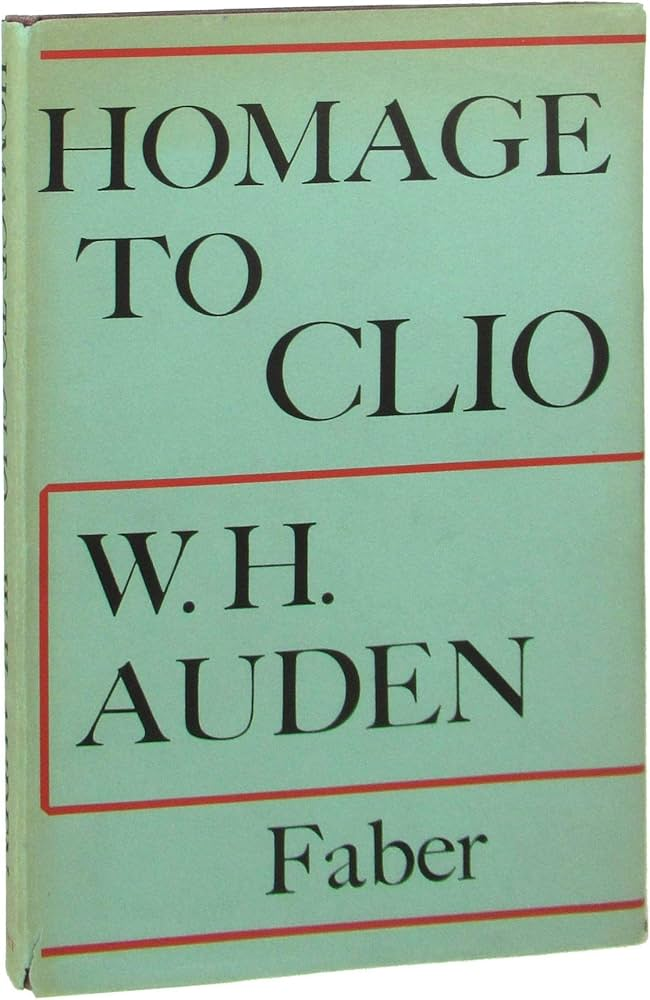
How should we like it were stars to burn
With a passion for us we could not return?
If equal affection cannot be,
Let the more loving one be me.
The More Loving One (1957)

Elegy for Young Lovers (German: Elegie für junge Liebende) is an opera in three acts by Hans Werner Henze to an English libretto by W. H. Auden and Chester Kallman.
The opera was first performed in a German translation at the Schlosstheater Schwetzingen on 20 May 1961.
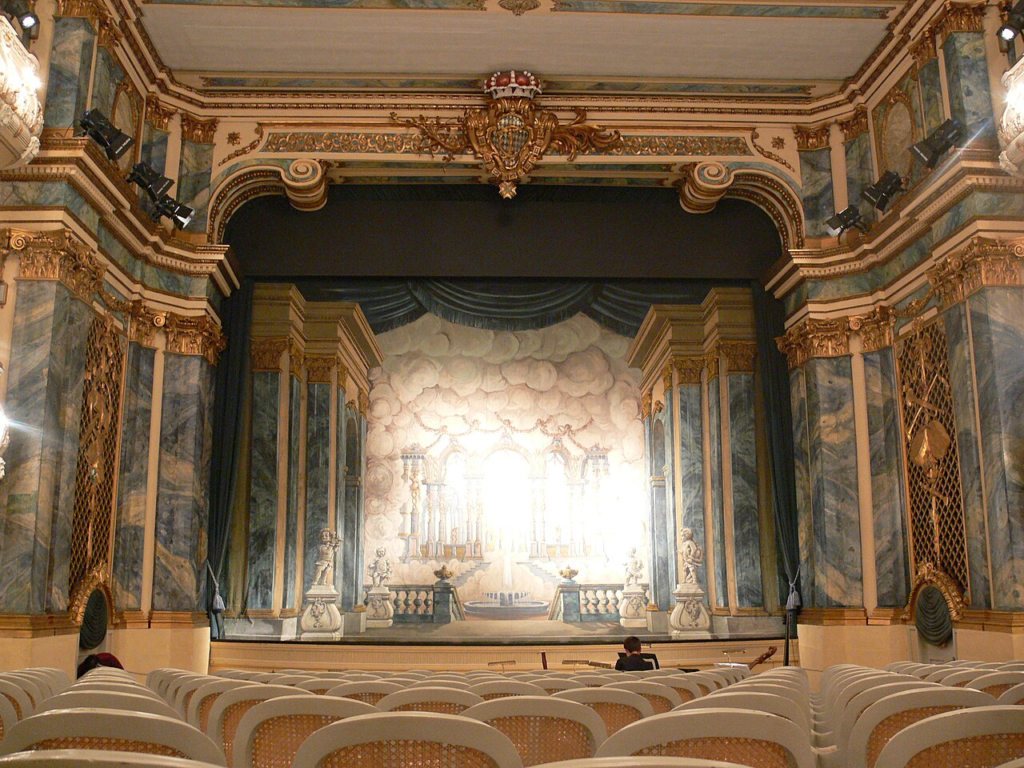
Above: Schlosstheater, Schwetzingen, Baden-Württemberg, Germany
The first performance using the original English text was in Glyndebourne, also in 1961.
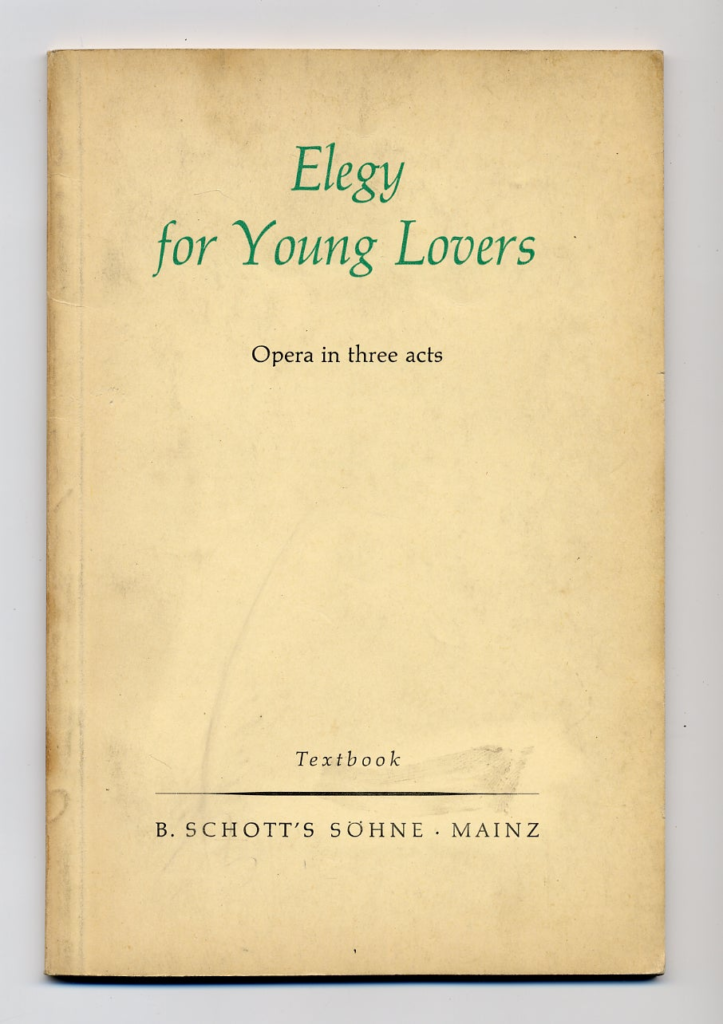
According to Ann Saddlemyer in her book Becoming George: The Life of Mrs. W. B. Yeats (2002), the poet is partially based on W. B. Yeats, and his wife “George” (Georgie Hyde-Lees) was the inspiration for both the secretary and the woman with visions.
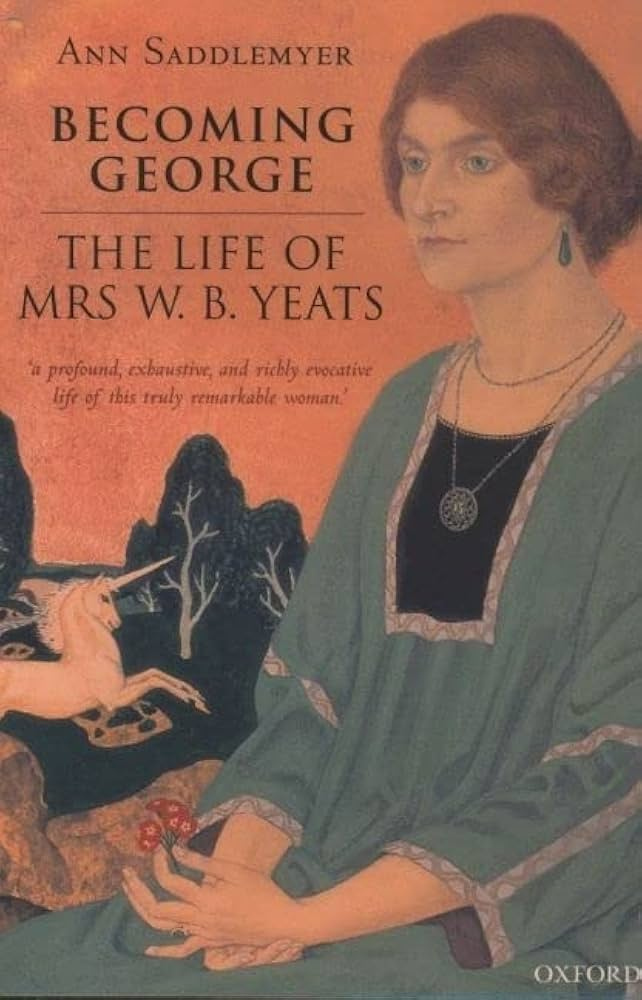
David Anderson has noted that the poet also portrays Auden as well.
Robert Henderson has summarized the thesis of the opera as follows:
Elegy for Young Lovers is a bitter indictment of the Romantic notion of the artist as hero, feeding remorselessly on those around him both in the name of art and to satisfy his own monstrous and inhumanely egotistical appetites.”
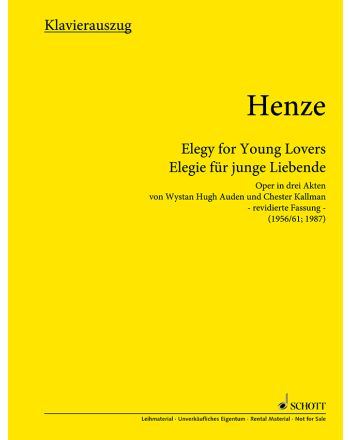
The opera is set in an inn called Der Schwarze Adler (The Black Eagle) in the Austrian Alps in 1910.
The plot is centred on a poet, Gregor Mittenhofer, who manipulates the people in the inn to provide inspiration to his work, his faithful secretary, his doctor, his young “muse” Elisabeth and a hysterical woman who lost her husband to the mountains decades before and has visions.
When a young man arrives who attracts Elisabeth, Mittenhofer lets her go but does not act to prevent the young lovers’ death in a snowstorm in the mountains, using the tragedy as the inspiration for a final “Elegie” of pure music, sung without words.
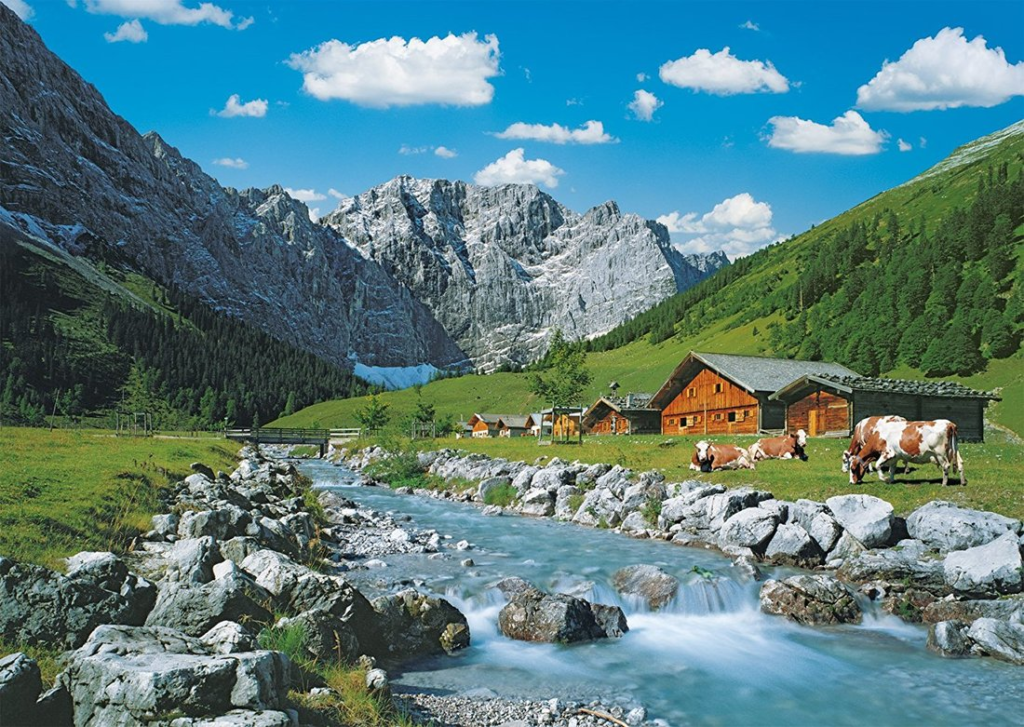
If all a top physicist knows
About the Truth be true,
Then, for all the so-and-so’s,
Futility and grime,
Our common world contains,
We have a better time
Than the Greater Nebulae do,
Or the atoms in our brains.
Marriage is rarely bliss
But, surely it would be worse
As particles to pelt
At thousands of miles per sec
About a universe
Wherein a lover’s kiss
Would either not be felt
Or break the loved one’s neck.
Though the face at which I stare
While shaving it be cruel
For, year after year, it repels
An ageing suitor, it has,
Thank God, sufficient mass
To be altogether there,
Not an indeterminate gruel
Which is partly somewhere else.
Our eyes prefer to suppose
That a habitable place
Has a geocentric view,
That architects enclose
A quiet Euclidian space:
Exploded myths – but who
Could feel at home astraddle
An ever expanding saddle?
This passion of our kind
For the process of finding out
Is a fact one can hardly doubt,
But I would rejoice in it more
If I knew more clearly what
We wanted the knowledge for,
Felt certain still that the mind
Is free to know or not.
It has chosen once, it seems,
And whether our concern
For magnitude’s extremes
Really become a creature
Who comes in a median size,
Or politicizing Nature
Be altogether wise,
Is something we shall learn.
After Reading a Child’s Guide to Modern Physics (1961)

His prose book The Dyer’s Hand (1962) gathered many of the lectures he gave in Oxford as Professor of Poetry in 1956 – 1961, together with revised versions of essays and notes written since the mid-1940s.
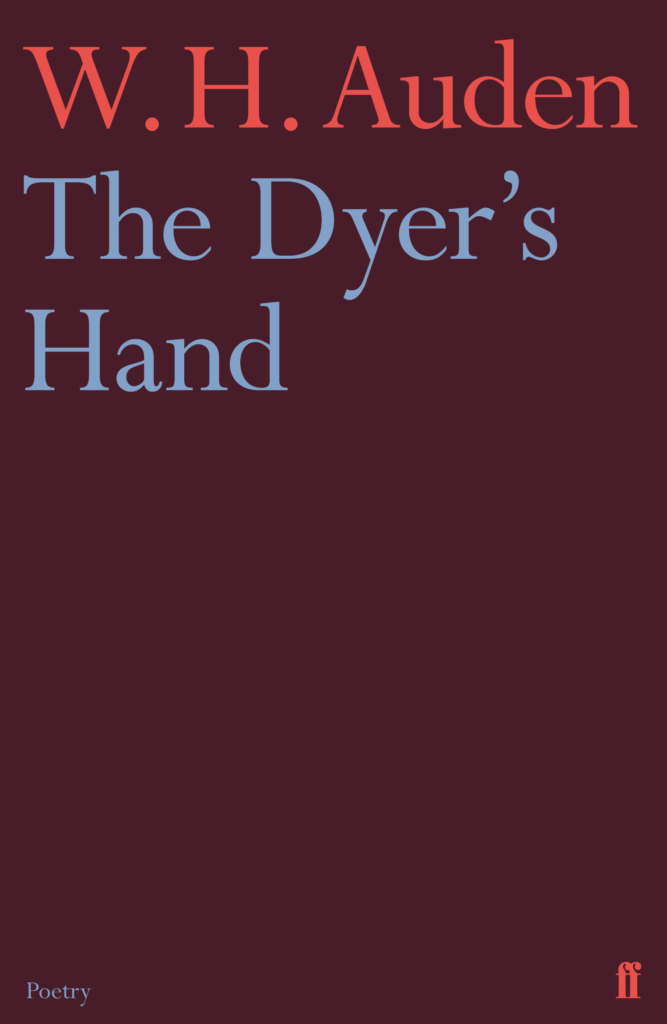
Before people complain of the obscurity of modern poetry, they should first examine their consciences and ask themselves with how many people and on how many occasions they have genuinely and profoundly shared some experience with another.
They might also ask themselves how much poetry of any period they can honestly say that they understand.
The Dyer’s Hand
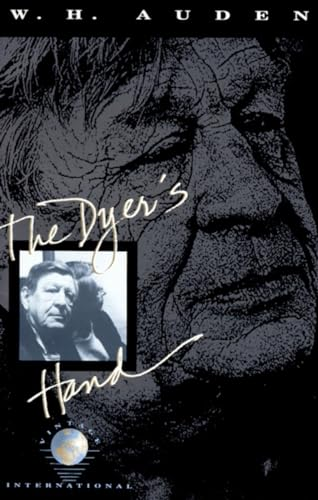
The surest sign that a man has a genuine taste of his own is that he is uncertain of it.
In general, when reading a scholarly critic, one profits more from his quotations than from his comments.
Some books are undeservedly forgotten.
None are undeservedly remembered.
One cannot review a bad book without showing off.
At first critics classified authors as Ancients, that is to say, Greek and Latin authors, and Moderns, that is to say, every post-Classical Author.
Then they classified them by eras, the Augustans, the Victorians, etc., and now they classify them by decades, the writers of the ’30’s, ’40’s, etc.
Very soon, it seems, they will be labeling authors, like automobiles, by the year.
“Reading“, The Dyer’s Hand (1962)
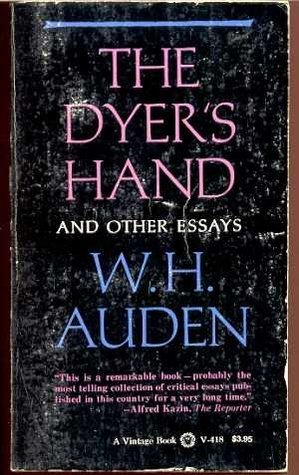
No poet or novelist wishes he were the only one who ever lived, but most of them wish they were the only one alive, and quite a number fondly believe their wish has been granted.
In the course of many centuries a few laborsaving devices have been introduced into the mental kitchen — alcohol, coffee, tobacco, Benzedrine, etc. — but these are very crude, constantly breaking down, and liable to injure the cook.
Literary composition in the 20th century AD is pretty much what it was in the 20th century BC:
Nearly everything has still to be done by hand.
The poet who writes “free” verse is like Robinson Crusoe on his desert island:
He must do all his cooking, laundry and darning for himself.
In a few exceptional cases, this manly independence produces something original and impressive, but more often the result is squalor — dirty sheets on the unmade bed and empty bottles on the unswept floor.
The condition of mankind is, and always has been, so miserable and depraved that, if anyone were to say to the poet:
“For God’s sake stop singing and do something useful like putting on the kettle or fetching bandages.”
What just reason could he give for refusing?
But nobody says this.
The self-appointed unqualified nurse says:
“You are to sing the patient a song which will make him believe that I, and I alone, can cure him.
If you can’t or won’t, I shall confiscate your passport and send you to the mines.”
And the poor patient in his delirium cries:
“Please sing me a song which will give me sweet dreams instead of nightmares.
If you succeed, I will give you a penthouse in New York or a ranch in Arizona.“
“Writing“, The Dyer’s Hand (1962)
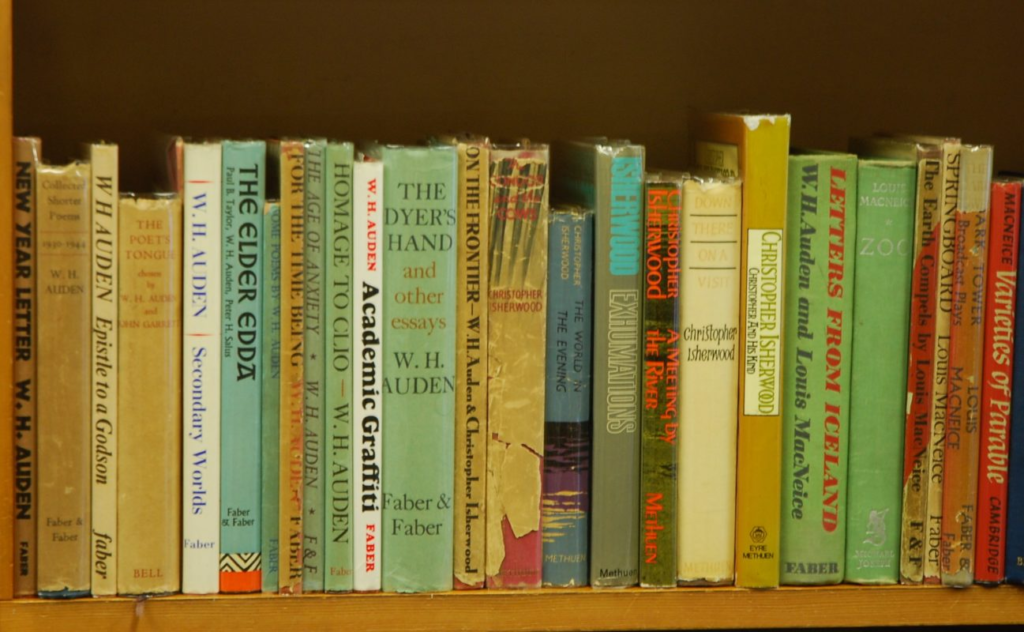
Without Art, we should have no notion of the sacred.
Without Science, we should always worship false gods.
“The Virgin and The Dynamo“, The Dyer’s Hand (1962)

Above: Dynamo Electric Machine
When I find myself in the company of scientists, I feel like a shabby curate who has strayed by mistake into a drawing room full of dukes.
What the mass media offer is not popular art, but entertainment which is intended to be consumed like food, forgotten and replaced by a new dish.
This is bad for everyone.
The majority lose all genuine taste of their own and the minority become cultural snobs.
All poets adore explosions, thunderstorms, tornadoes, conflagrations, ruins, scenes of spectacular carnage.
The poetic imagination is not at all a desirable quality in a statesman.
“The Poet and The City“, The Dyer’s Hand (1962)
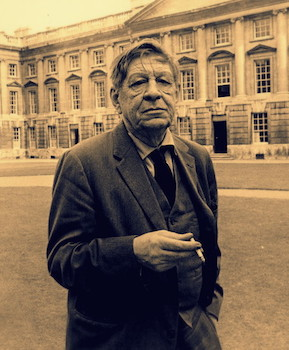
Above: W. H. Auden
Every autobiography is concerned with two characters, a Don Quixote, the Ego, and a Sancho Panza, the Self.
When I consider others I can easily believe that their bodies express their personalities and that the two are inseparable.
But it is impossible for me not to feel that my body is other than I, that I inhabit it like a house, and that my face is a mask which, with or without my consent, conceals my real nature from others.
The image of myself which I try to create in my own mind in order that I may love myself is very different from the image which I try to create in the minds of others in order that they may love me.
Almost all of our relationships begin and most of them continue as forms of mutual exploitation, a mental or physical barter, to be terminated when one or both parties run out of goods.
“Hic et Ille“, The Dyer’s Hand (1962)

Above: Don Quixote and Sancho Panza
To have a sense of sin means to feel guilty at there being an ethical choice to make, a guilt which, however “good” I may become, remains unchanged.
“The Guilty Vicarage“, The Dyer’s Hand (1962)
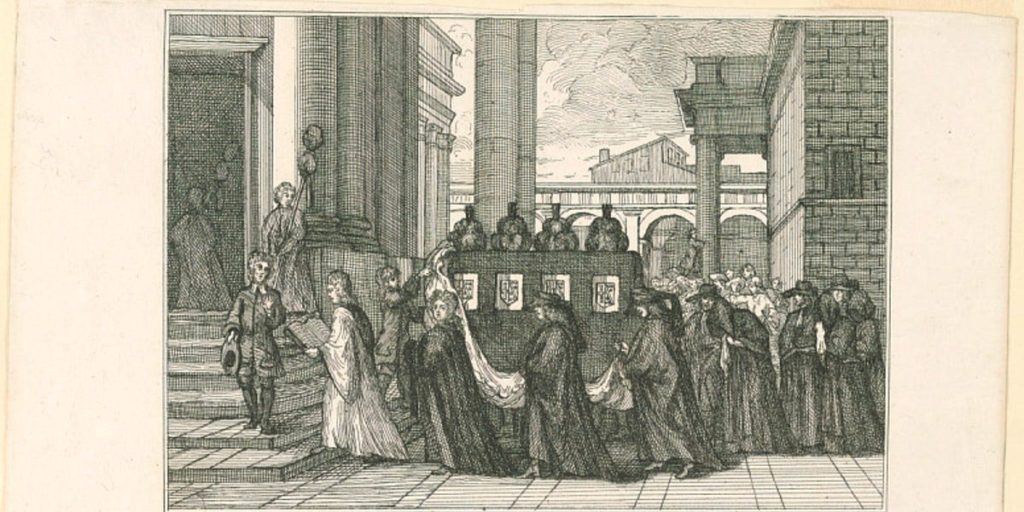
The law cannot forgive, for the law has not been wronged, only broken.
Only persons can be wronged.
The law can pardon, but it can only pardon what it has the power to punish.
“The Prince’s Dog“, The Dyer’s Hand (1962)
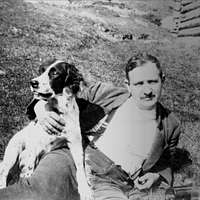
All wishes, whatever their apparent content, have the same and unvarying meaning:
“I refuse to be what I am.“
All pity is self-pity.
In societies with fewer opportunities for amusement, it was also easier to tell a mere wish from a real desire.
If, in order to hear some music, a man has to wait for six months and then walk twenty miles, it is easy to tell whether the words, “I should like to hear some music.” mean what they appear to mean, or merely:
“At this moment I should like to forget myself.”
When all he has to do is press a switch, it is more difficult.
He may easily come to believe that wishes can come true.
“West’s Disease“, The Dyer’s Hand (1962)
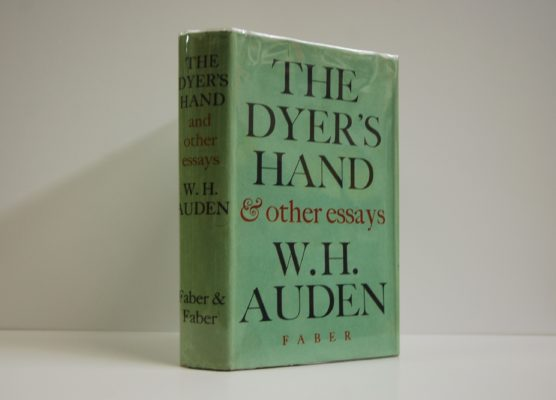
To some degree every American poet feels that the whole responsibility for contemporary poetry has fallen upon his shoulders, that he is a literary aristocracy of one.
“American Poetry“, The Dyer’s Hand (1962)
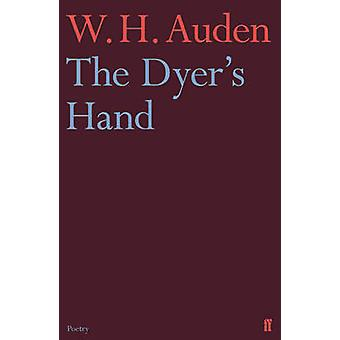
Among those whom I like or admire, I can find no common denominator, but among those whom I love, I can:
All of them make me laugh.
“Notes on the Comic“, The Dyer’s Hand (1962)
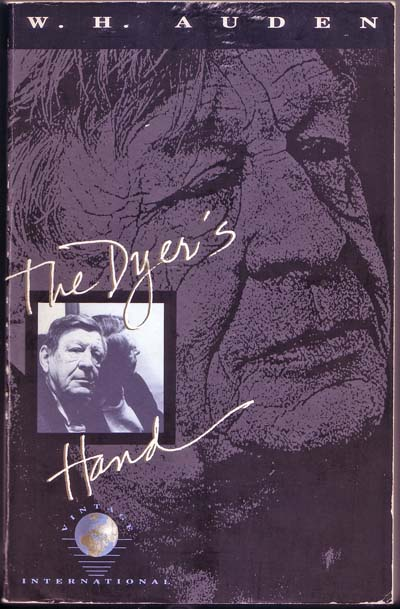
A vice in common can be the ground of a friendship but not a virtue in common.
X and Y may be friends because they are both drunkards or womanizers but, if they are both sober and chaste, they are friends for some other reason.
“Don Juan“, The Dyer’s Hand (1962)
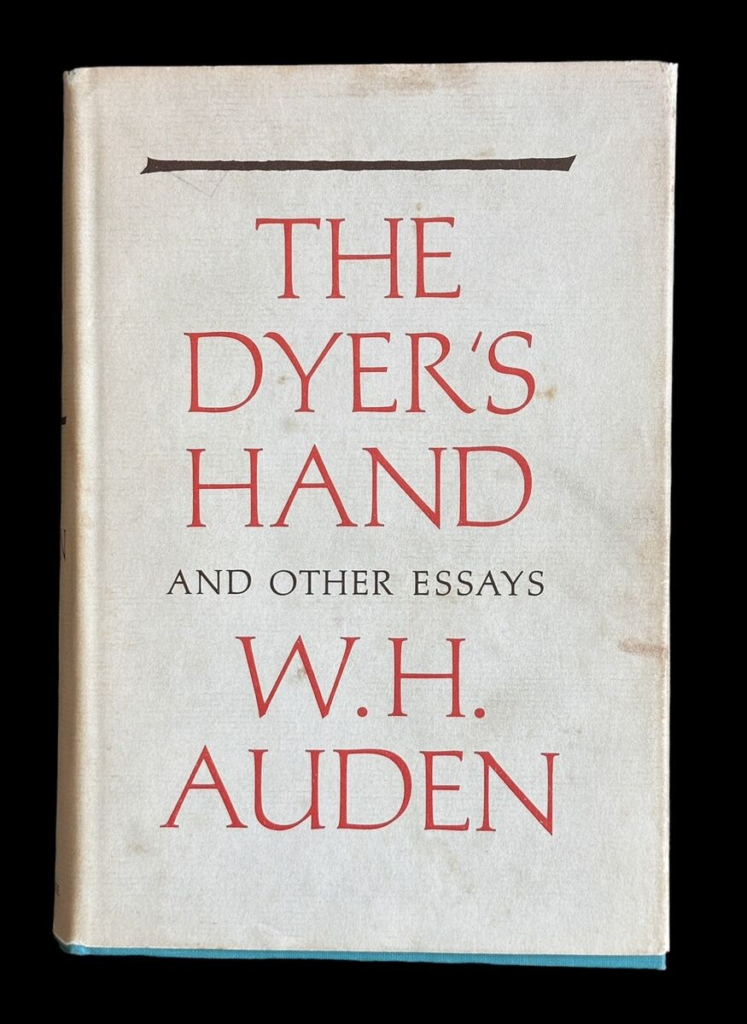
Among the new styles and forms in Auden’s later work were the haiku and tanka that he began writing after translating the haiku and other verse in Dag Hammarskjöld’s Markings.
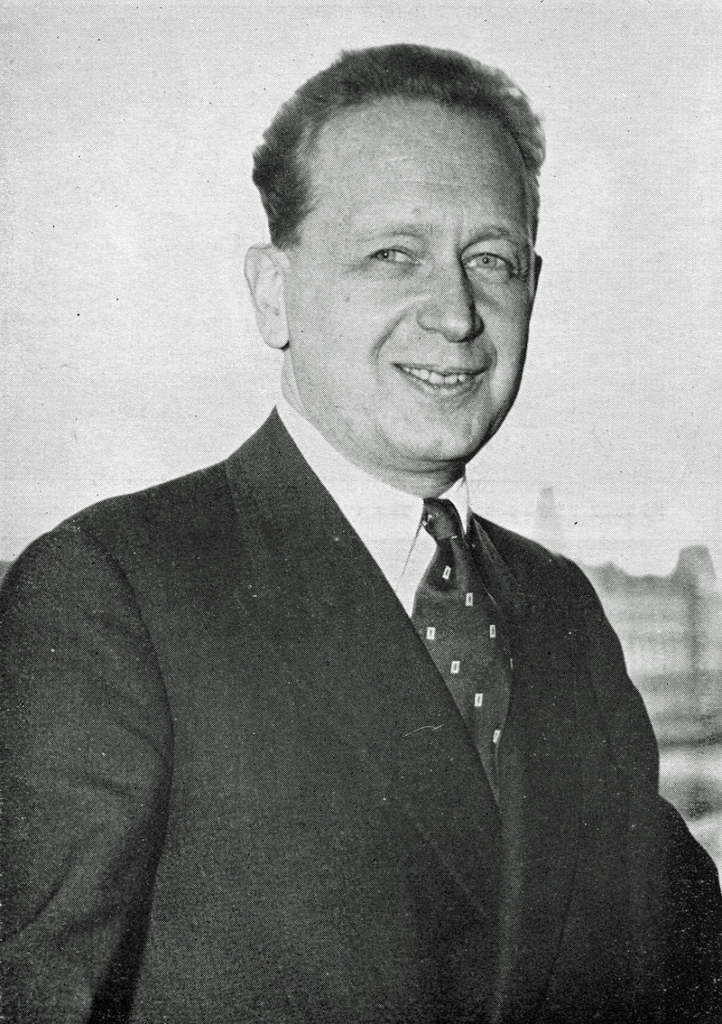
Above: UN Secretary General Dag Hammarskjöld (1905 – 1961)
A sequence of 15 poems about his house in Austria, “Thanksgiving for a Habitat” (written in various styles that included an imitation of William Carlos Williams) appeared in About the House (1965), together with other poems that included his reflection on his lecture tours, “On the Circuit“.
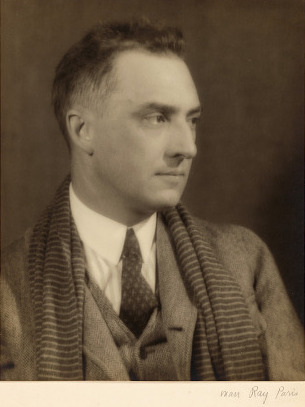
Above: American poet William Carlos Williams (1883 – 1963)
The Bassarids (German: Die Bassariden) is an opera in one act and an intermezzo, with music by Hans Werner Henze to an English libretto by W. H. Auden and Chester Kallman, after Euripides’ The Bacchae.
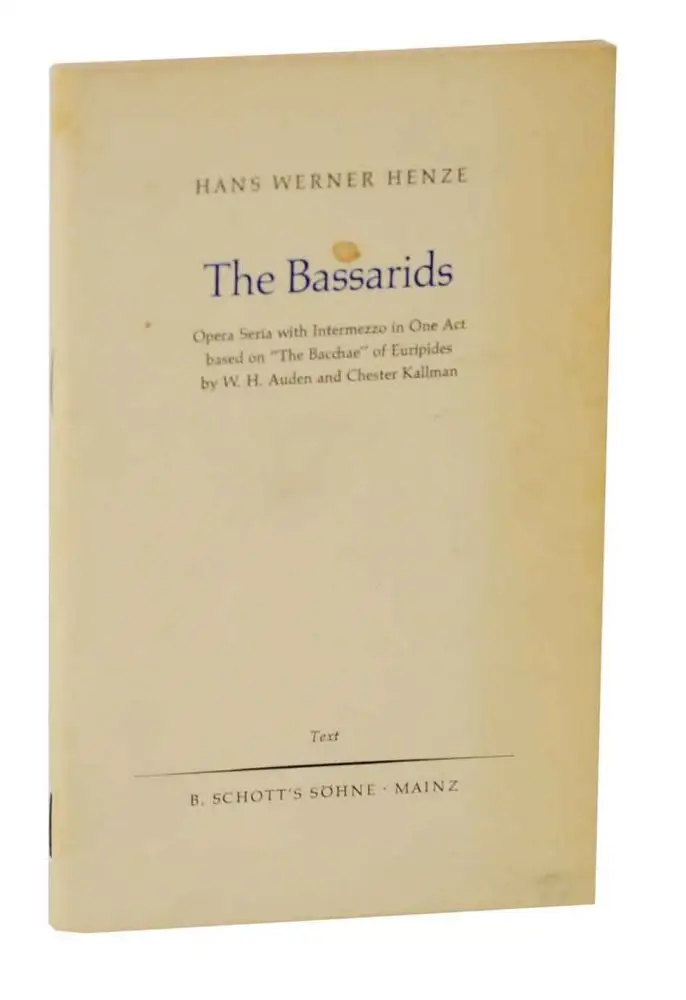
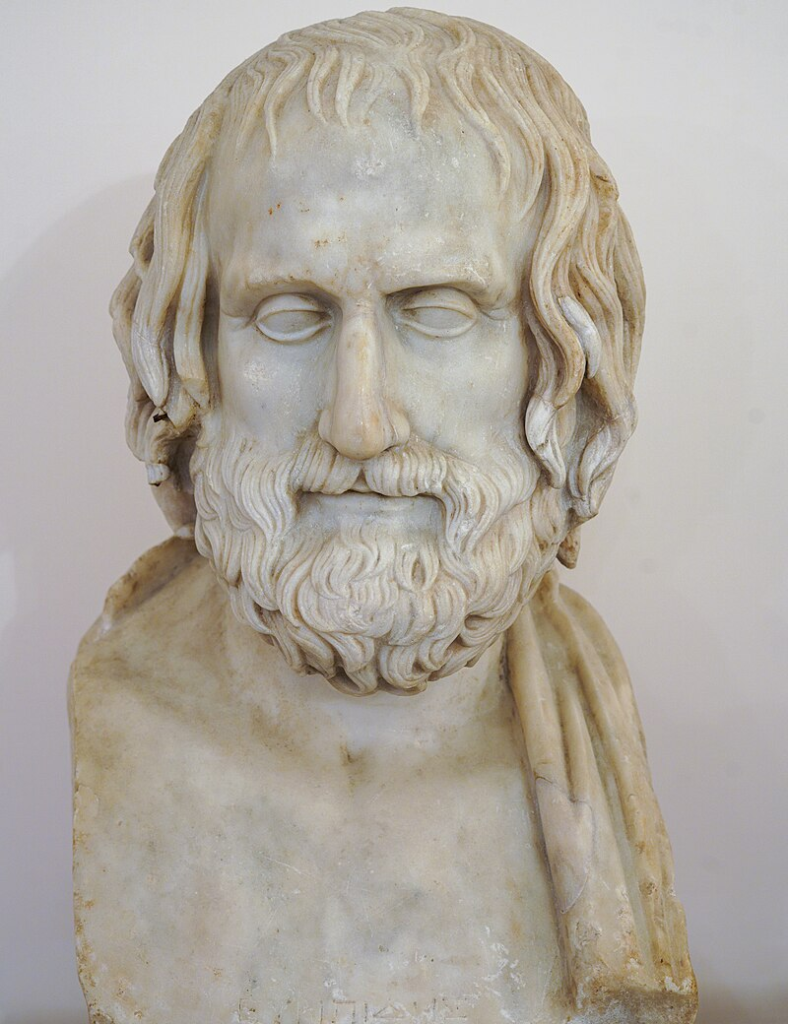
Above: Bust of Euripides (480 – 406 BC)
The conflict in the opera is between human rationality and emotional control, represented by the King of Thebes, Pentheus, and unbridled human passion, represented by the god Dionysus.
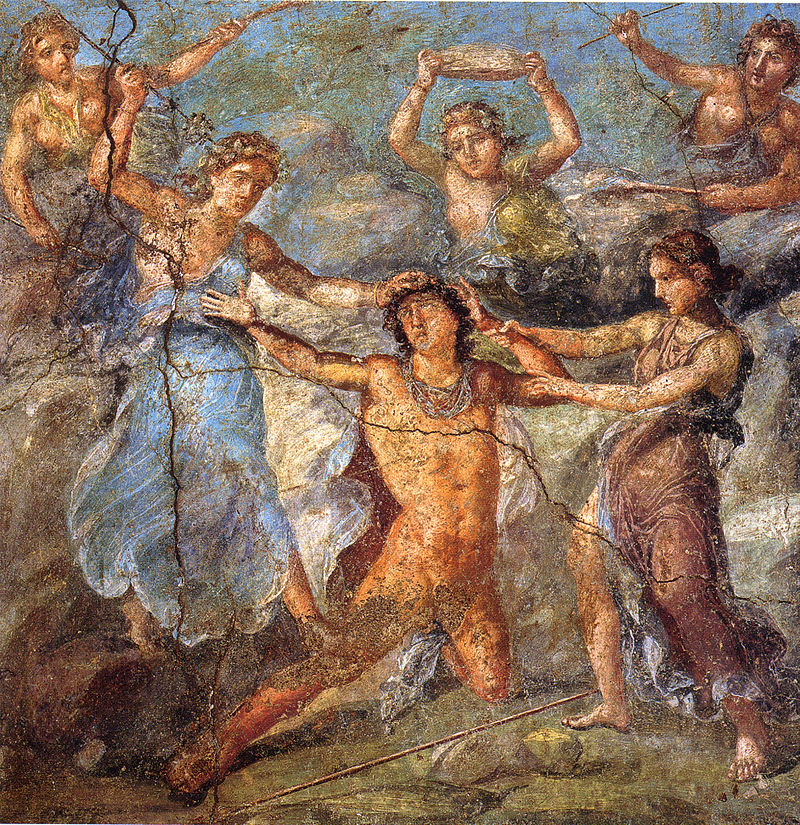
Above: Pentheus being torn by maenads. Roman fresco from the northern wall of the triclinium in the Casa dei Vettii in Pompeii, Italy
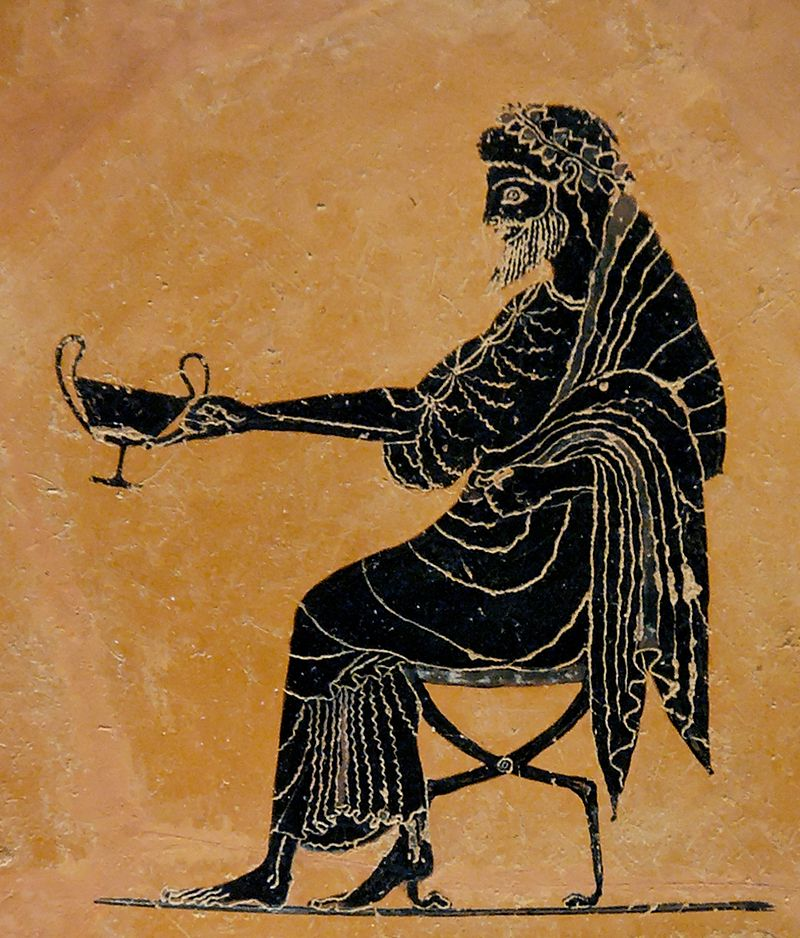
Above: Dionysus extending a drinking cup
It was first performed in a German translation in Salzburg on 6 August 1966.

Above: Salzburg, Austria
The first performance using the original English text was the US premiere, at the Santa Fe Opera on 7 August 1968.

Above: Santa Fe, New Mexico, USA
The setting is ancient Thebes.
Prior to the opera, Dionysus has stated that he intends to revenge himself upon Agave and the women of Thebes because they have denied his divinity.
At the start of the opera, Cadmus, King of Thebes, has abdicated his throne in favor of his grandson Pentheus.
Pentheus has learned of the cult of Dionysus, which involves wild and irrational revelry.
Pentheus plans to ban the cult from his city.

Above: Ancient Thebes, Greece
A stranger arrives in town and seduces the citizens into increasingly frenetic celebration of the god Dionysus.
Because Pentheus is unaware of his own irrational, “Dionysiac” impulses, or tries to suppress them, Dionysus can entrance Pentheus and intrude upon his nature to the point that Pentheus disguises himself as a woman, and goes to Mount Cytheron, where the revelry is occurring.
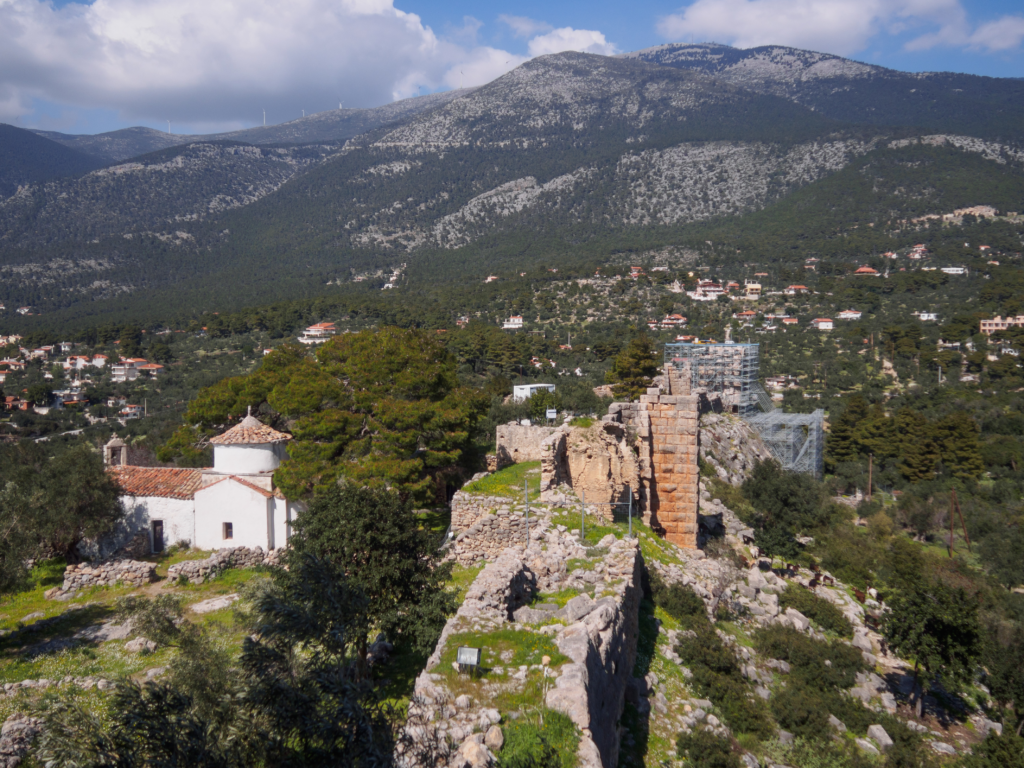
Above: Mount Cytheron
In the course of events, the spell over the citizens extends to Agave, Pentheus’ mother, and Autonoe, Pentheus’ sister.
Pentheus is killed and torn to pieces, and his city brought to ruin.
Without realizing it, Agave cradles the severed head of her son in her arms.
The Stranger is revealed to be Dionysus himself.
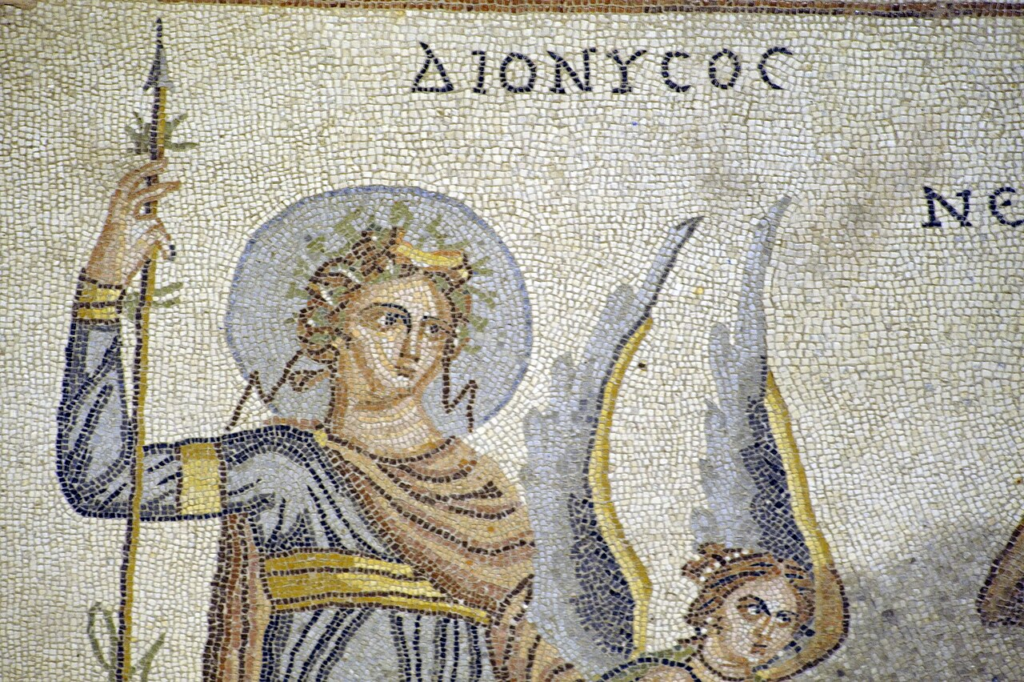
Above: Dionysus triumph, a mosaic from the House of Poseidon, Zeugma Museum, Gaziantep, Türkiye
In the late 1960s he wrote some of his most vigorous poems, including “River Profile” and two poems that looked back over his life, “Prologue at Sixty” and “Forty Years On“.
River Profile
Out of a bellicose fore-time, thundering
head-on collisions of cloud and rock in an
up-thrust, crevasse-and-avalanche, troll country,
deadly to breathers,
it whelms into our picture below the melt-line,
where tarns lie frore under frowning cirques, goat-bell,
wind-breaker, fishing-rod, miner’s-lamp country,
already at ease with
the mien and gestures that become its kindness,
in streams, still anonymous, still jumpable,
flows as it should through any declining country
in probing spirals.
Soon of a size to be named and the cause of
dirty in-fighting among rival agencies,
down a steep stair, penstock-and-turbine country,
it plunges ram-stam,
to foam through a wriggling gorge incised in softer
strata, hemmed between crags that nauntle heaven,
robber-baron, tow-rope, portage-way country,
nightmare of merchants.
Disemboguing from foothills, now in hushed meanders,
now in riffling braids, it vaunts across a senile
plain, well-entered, chateau-and-cider-press country,
its regal progress
gallanted for a while by quibbling poplars,
then by chimneys: led off to cool and launder
retort, steam-hammer, gasometer country,
it changes color.
Polluted, bridged by girders, banked by concrete,
now it bisects a polyglot metropolis,
ticker-tape, taxi, brothel, foot-lights country,
à-la-mode always.
Broadening or burrowing to the moon’s phases,
turbid with pulverised wastemantle, on through
flatter, duller, hotter, cotton-gin country
it scours, approaching
the tidal mark where it puts off majesty,
disintegrates, and through swamps of a delta,
punting-pole, fowling-piece, oyster-tongs country,
wearies to its final
act of surrender, effacement, atonement
in a huge amorphous aggregate no cuddled
attractive child ever dreams of, non-country,
image of death as
a spherical dew-drop of life. Unlovely
monsters, our tales believe, can be translated
too, even as water, the selfless mother
of all especials.
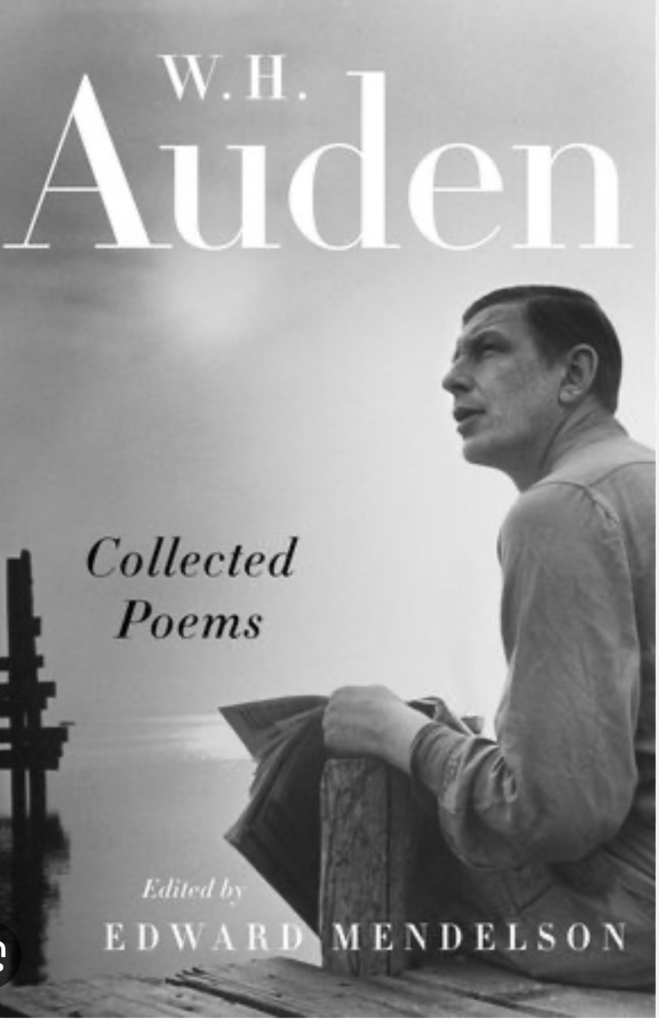
Thoughts of his own death,
like the distant roll
of thunder at a picnic.
Marginalia (1968)
All these appeared in City Without Walls (1969).
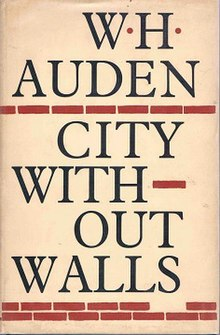
His lifelong passion for Icelandic legend culminated in his verse translation of The Elder Edda (1969).

Among his later themes was the “religionless Christianity” he learned partly from Dietrich Bonhoeffer, the dedicatee of his poem “Friday’s Child“.
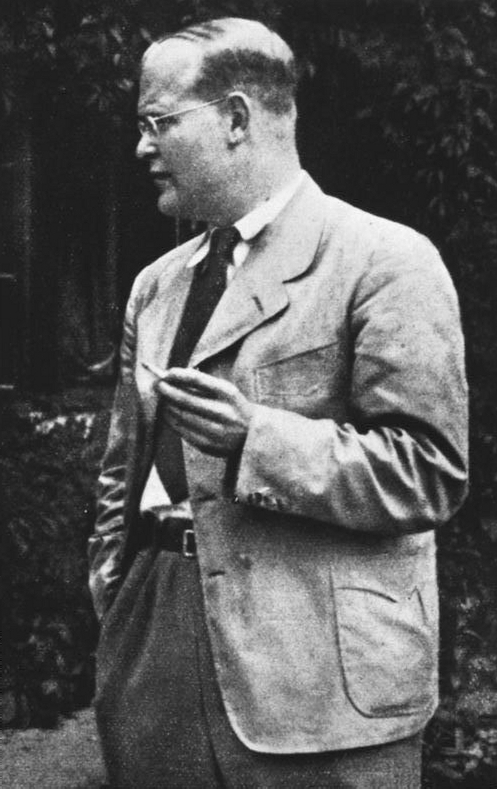
Above: German theologian Dietrich Bonhoeffer (1906 – 1945)
A Certain World: A Commonplace Book (1970) was a kind of self-portrait made up of favorite quotations with commentary, arranged in alphabetical order by subject.
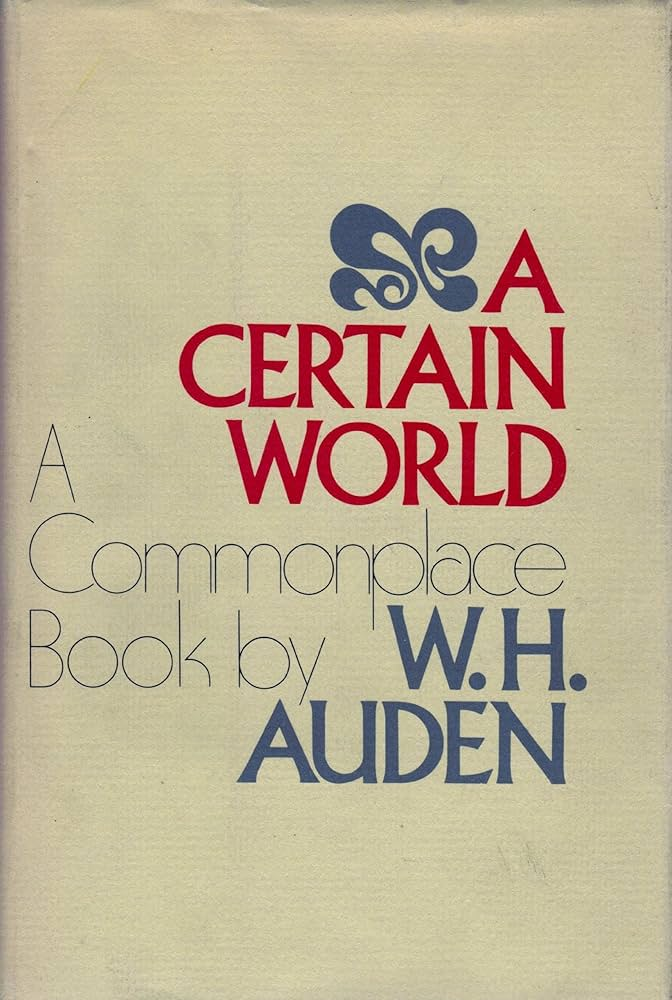
Politics cannot be a science, because in politics theory and practice cannot be separated, and the sciences depend upon their separation.
“Tyranny”, A Certain World: A Commonplace Book (1970)

All sin tends to be addictive and the terminal point of addiction is what is called damnation.
“Hell“, A Certain World: A Commonplace Book (1970)
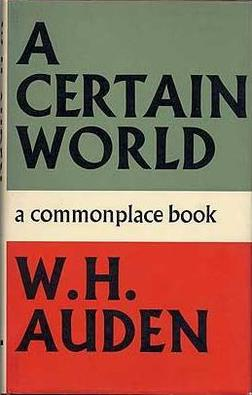
Normally, when one passes someone on the street who is in pain, one either tries to help him, or one simply looks the other way.
With a photo there’s no human decision.
You are not there.
You can’t turn away.
You simply gape.
It’s a form of voyeurism.
It’s frightfully important for a writer to be his age, not to be younger or older than he is.
One might ask, “What should I write at the age of sixty-four?” but never, “What should I write in 1940?“.
A poet, qua poet, has only one political duty, namely, in his own writing to set an example of the correct use of his mother tongue, which is always being corrupted.
When words lose their meaning, physical force takes over.
I never write when I’m drunk.
Why should one need aids?
The Muse is a high-spirited girl who doesn’t like to be brutally or coarsely wooed.
And she doesn’t like slavish devotion — then she lies.
I don’t think the mystical experience can be verbalized.
When the ego disappears, so does power over language.
Paris Review interview (1972)
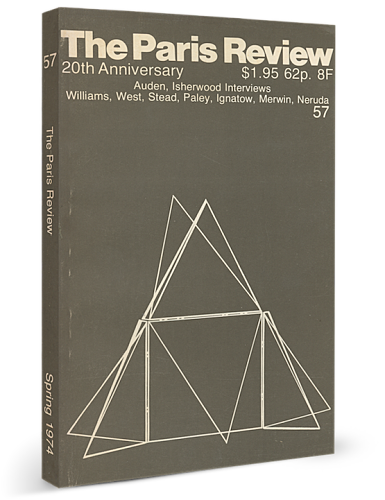
His last prose book was a selection of essays and reviews, Forewords and Afterwords (1973).
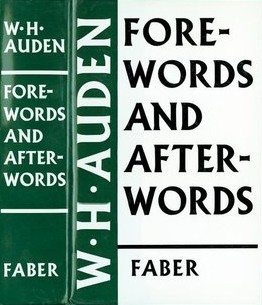
A god who is both self-sufficient and content to remain so could not interest us enough to raise the question of his existence.
The truly tragic kind of suffering is the kind produced and defiantly insisted upon by the hero himself so that, instead of making him better, it makes him worse and when he dies he is not reconciled to the law but defiant, that is, damned.
Lear is not a tragic hero, Othello is.
“The Greeks and Us“, Forewords and Afterwords (1973)
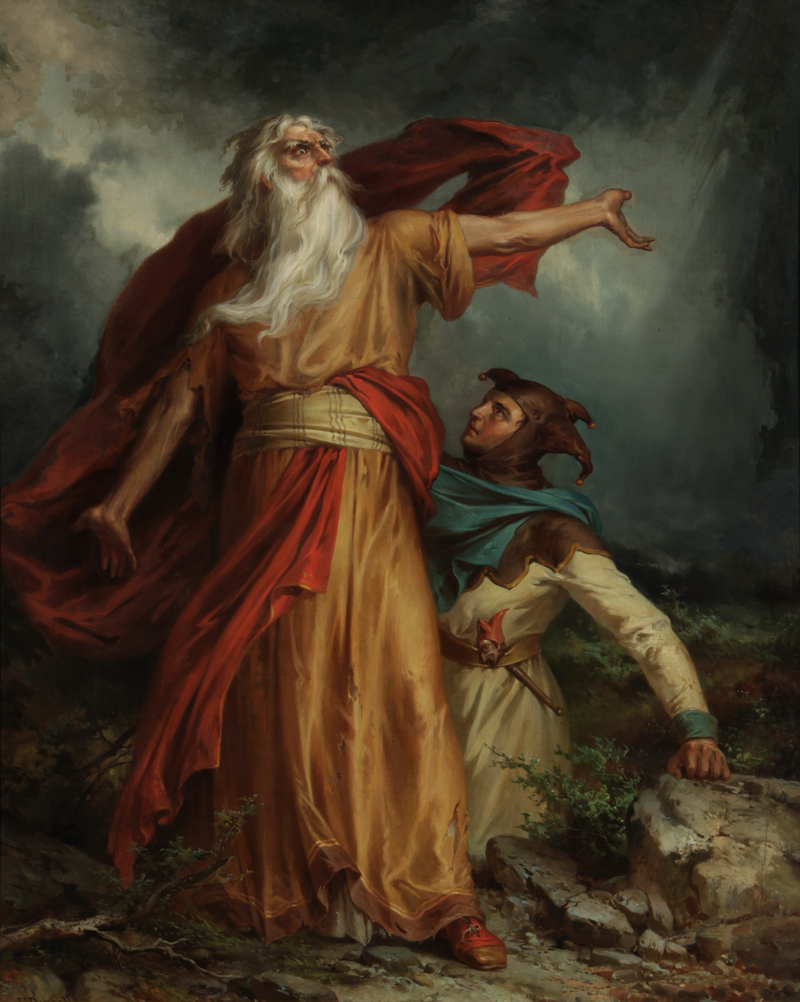
Above: King Lear, George Frederick Bensell
Man always acts either self-loving, just for the Hell of it, or God-loving, just for the Heaven of it.
His reasons, his appetites are secondary motivations.
Man chooses either life or death, but he chooses.
Everything he does, from going to the toilet to mathematical speculation, is an act of religious worship, either of God or of himself.
Lastly by the classical apotheosis of Man-God, Augustine (of Hippo) (354 – 430) opposes the Christian belief in Jesus Christ, the God-Man.
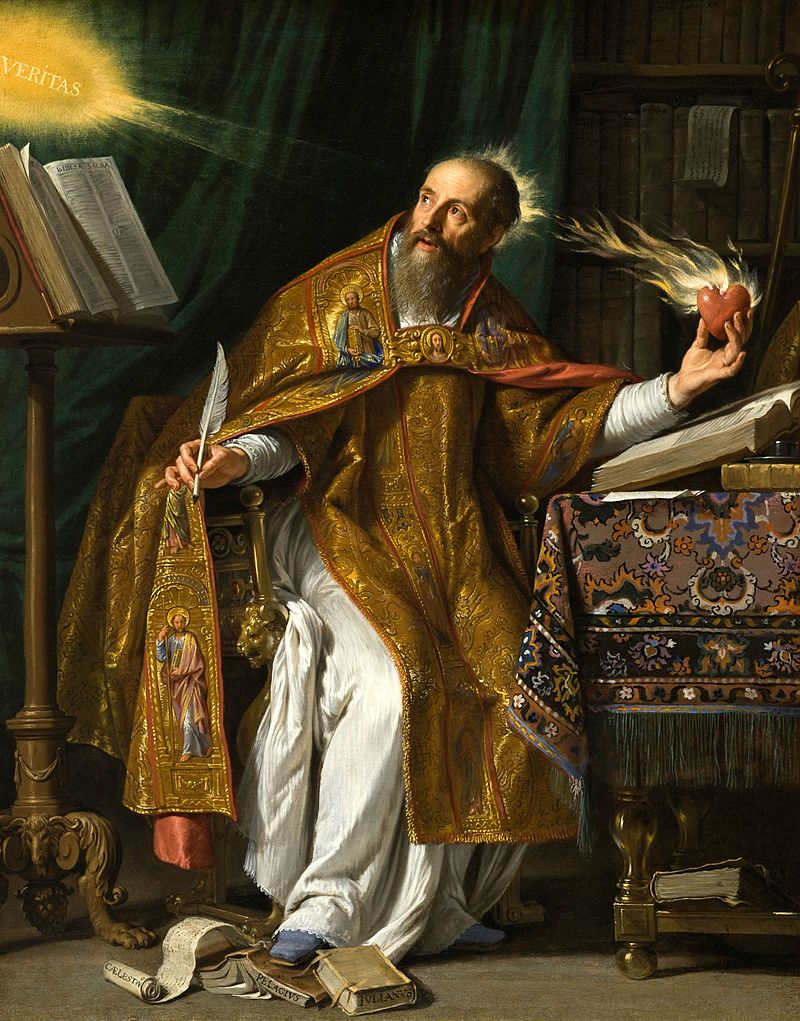
Above: Saint Augustine, Philippe de Champaigne (1650)
The former is a Hercales who compels recognition by the great deeds he does in establishing for the common people in the law, order and prosperity they cannot establish for themselves, by his manifestation of superior power.
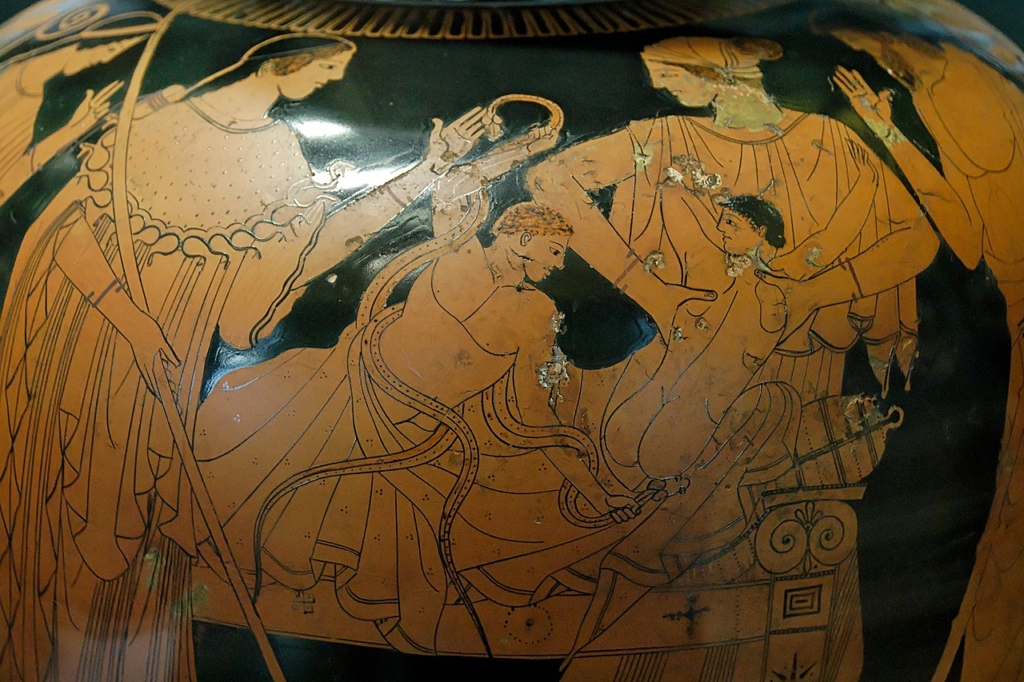
Above: Heracles strangling snakes
The latter reveals to fallen man that God is love by suffering, i.e. by refusing to compel recognition, choosing instead to be a victim of man’s self-love.
The idea of a sacrificial victim is not new, but that it should be the victim who chooses to be sacrificed, and the sacrificers who deny that any sacrifice has been made, is very new.
“Augustus to Augustine“, Forewords and Afterwords (1973)
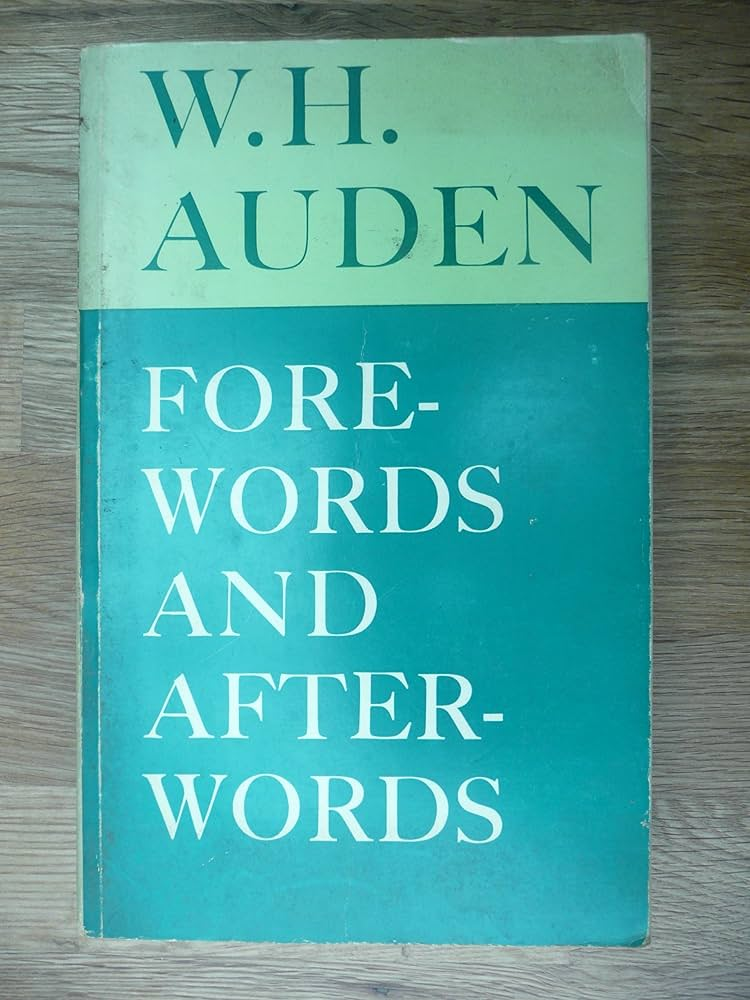
The basic stimulus to the intelligence is doubt, a feeling that the meaning of an experience is not self-evident.
Whatever the field under discussion, those who engage in debate must not only believe in each other’s good faith, but also in their capacity to arrive at the truth.
The mystics themselves do not seem to have believed their physical and mental sufferings to be a sign of grace, but it is unfortunate that it is precisely physical manifestations which appeal most to the religiosity of the mob.
A woman might spend twenty years nursing lepers without having any notice taken of her, but let her once exhibit the stigmata or live for long periods on nothing but the Host and water, and in no time the crowd will be clamoring for her beatification.
In the late Middle Ages there were, no doubt, many persons in monasteries and convents who had no business there and should have been out in the world earning an honest living, but today it may very well be that there are many persons trying to earn a living in the world and driven by failure into mental homes whose true home would be the cloister.
“The Protestant Mystics“, Forewords and Afterwords (1973)
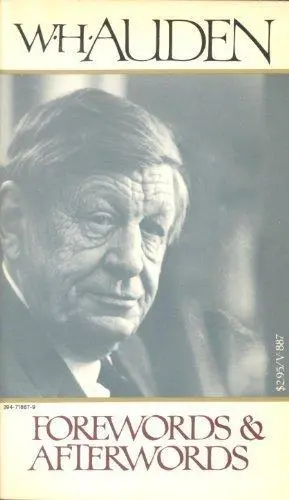
He suffers from one great literary defect, which is often found in lonely geniuses: he never knows when to stop.
Lonely people are apt to fall in love with the sound of their own voice, as Narcissus fell in love with his reflection, not out of conceit but out of despair of finding another who will listen and respond.
“A Knight of Doleful Countenance“, Forewords and Afterwords (1973)
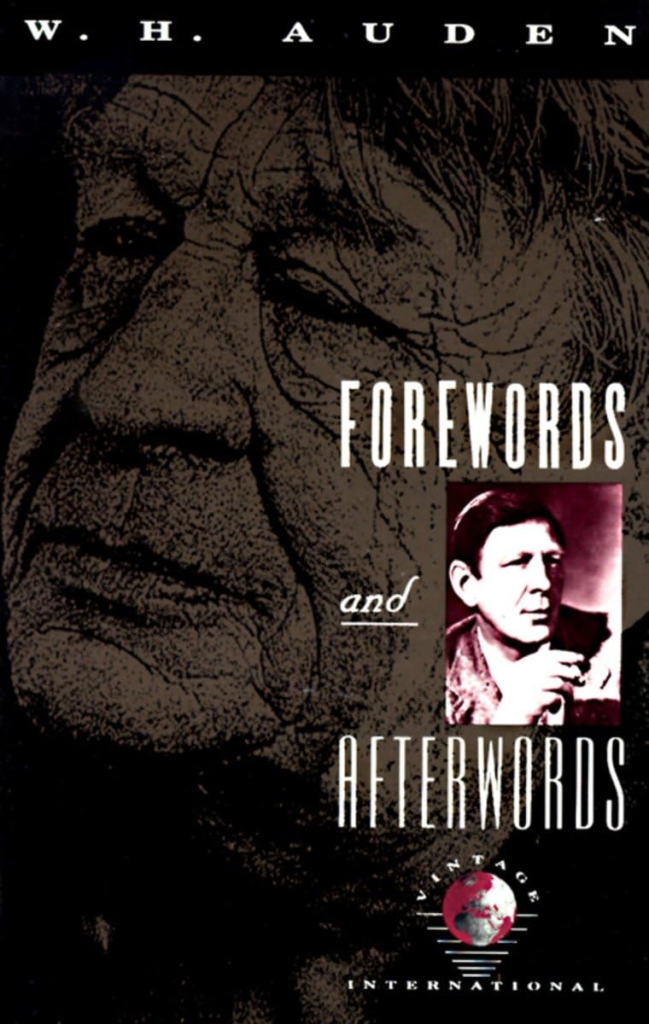
I said earlier that I do not believe an artist’s life throws much light upon his works.
I do believe, however, that, more often than most people realize, his works may throw light upon his life.
An artist with certain imaginative ideas in his head may then involve himself in relationships which are congenial to them.
“The Greatest of the Monsters“, Forewords and Afterwords (1973)
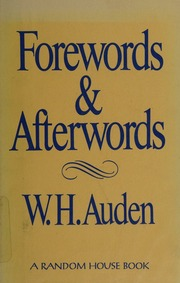
A craftsman knows in advance what the finished result will be, while the artist knows only what it will be when he has finished it.
But it is unbecoming in an artist to talk about inspiration; that is the reader’s business.
Money is the necessity that frees us from necessity.
Of all novelists in any country, Trollope best understands the role of money.
Compared with him even Balzac is a romantic.
“A Poet of the Actual“, Forewords and Afterwords (1973)
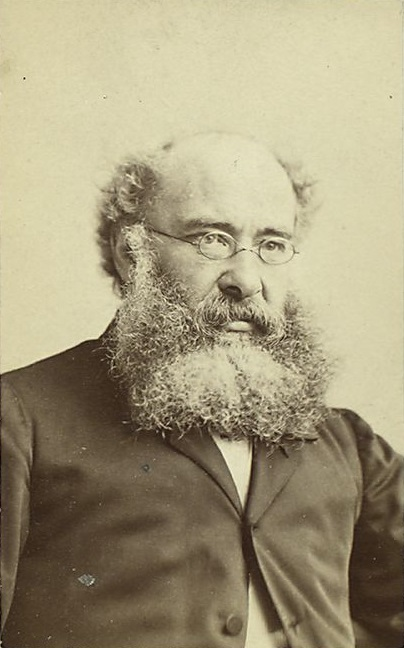
Above: English novelist Anthony Trollope (1815 – 1882)
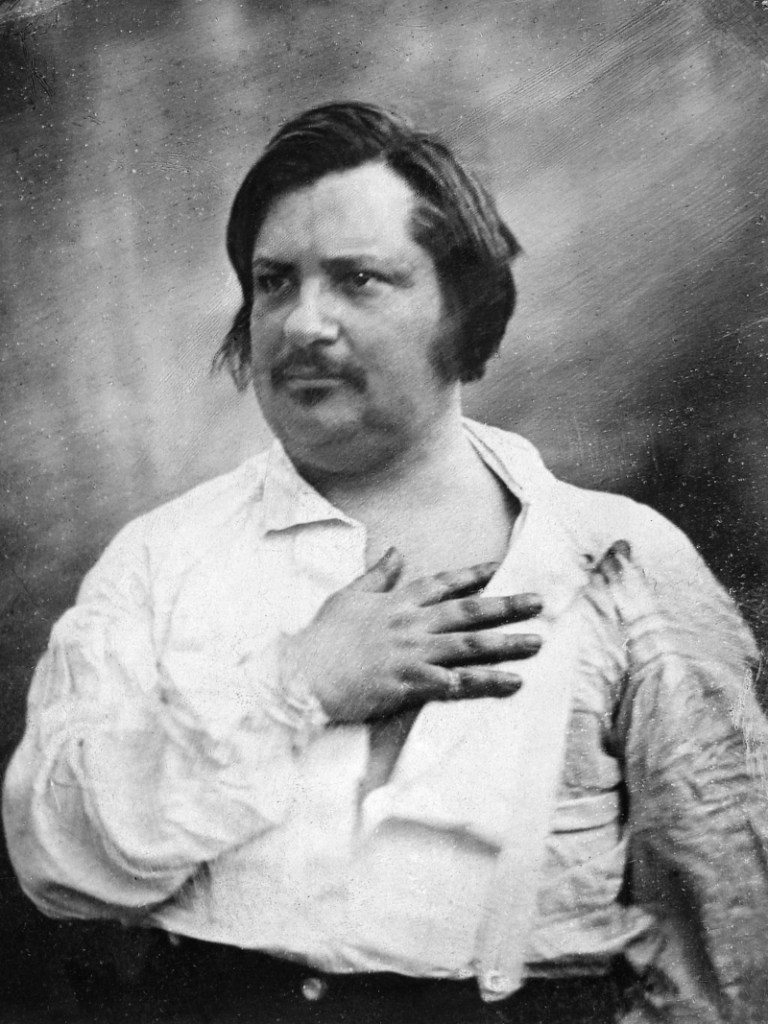
Above: French novelist Honoré de Balzac (1799 – 1850)
Machines have no political opinions, but they have profound political effects.
They demand a strict regimentation of time, and, by abolishing the need for manual skill, have transformed the majority of the population from workers into laborers.
There are, that is to say, fewer and fewer jobs which a man can find a pride and satisfaction in doing well, more and more which have no interest in themselves and can be valued only for the money they provide.
“A Russian Aesthete“, Forewords and Afterwords (1973)

In most poetic expressions of patriotism, it is impossible to distinguish what is one of the greatest human virtues from the worst human vice, collective egotism.
The virtue of patriotism has been extolled most loudly and publicly by nations that are in the process of conquering others, by the Roman, for example, in the 1st century BC, the French in the 1790s, the English in the 19th century, and the Germans in the first half of the 20th.
To such people, love of one’s country involves denying the right of others, of the Gauls, the Italians, the Indians, the Poles, to love theirs.
“C.P. Cavafy“, Forewords and Afterwords (1973)
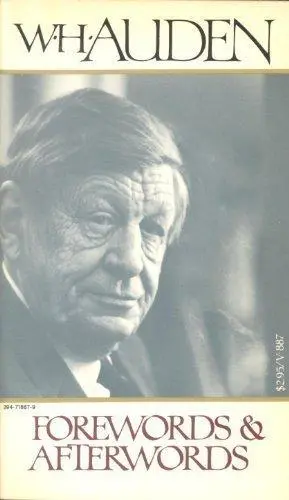
Most people call something profound, not because it is near some important truth but because it is distant from ordinary life.
Thus, darkness is profound to the eye, silence to the ear.
What-is-not is the profundity of what-is.
“Un Homme d’Esprit“, Forewords and Afterwords (1973)
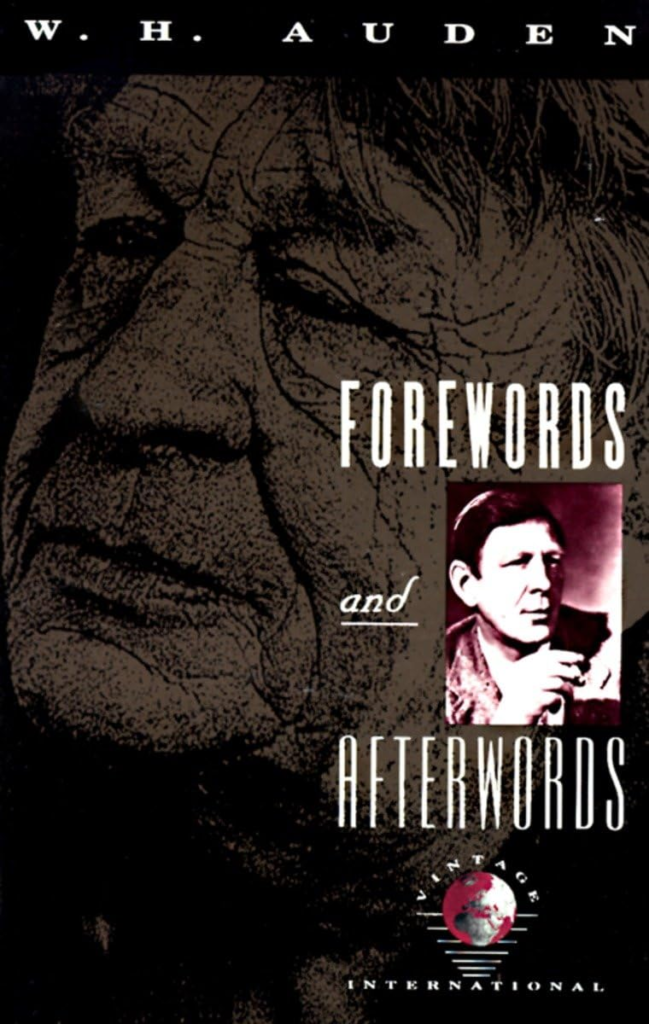
Young people, who are still uncertain of their identity, often try on a succession of masks in the hope of finding the one which suits them — the one, in fact, which is not a mask.
“One of the Family“, Forewords and Afterwords (1973)
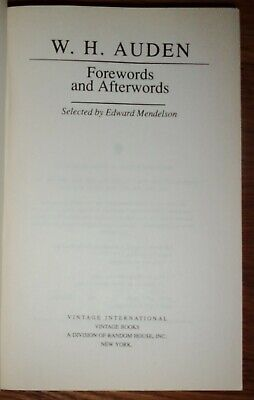
Most people are even less original in their dreaming than in their waking life.
Their dreams are more monotonous than their thoughts and oddly enough, more literary.
“Walter de la Mare“, Forewords and Afterwords (1973)
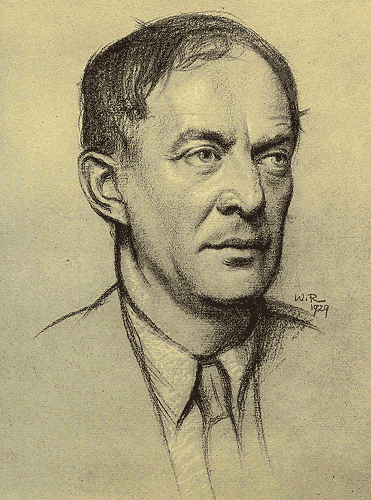
Above: English writer Walter de la Mare (1876 – 1956)
In all technologically “advanced” countries, fashion has replaced tradition, so that involuntary membership in a society can no longer provide a feeling of community.
“Lame Shadows“, Forewords and Afterwords (1973)
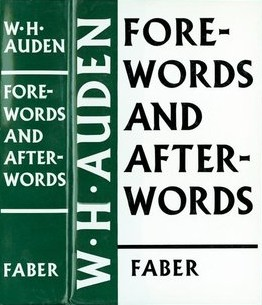
It is, for example, axiomatic that we should all think of ourselves as being more sensitive than other people because, when we are insensitive in our dealings with others, we cannot be aware of it at the time:
Conscious insensitivity is a self-contradiction.
“Markings“, Forewords and Afterwords (1973)
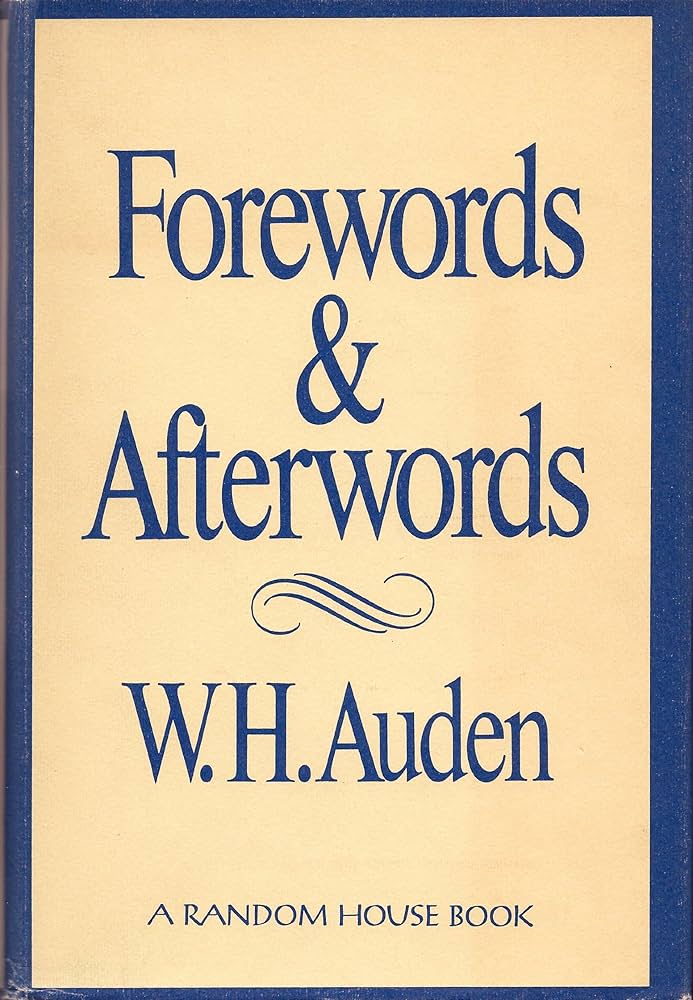
In any modern city, a great deal of our energy has to be expended in not seeing, not hearing, not smelling.
An inhabitant of New York who possessed the sensory acuteness of an African Bushman would very soon go mad.
“The Justice of Dame Kind“, Forewords and Afterwords (1973)
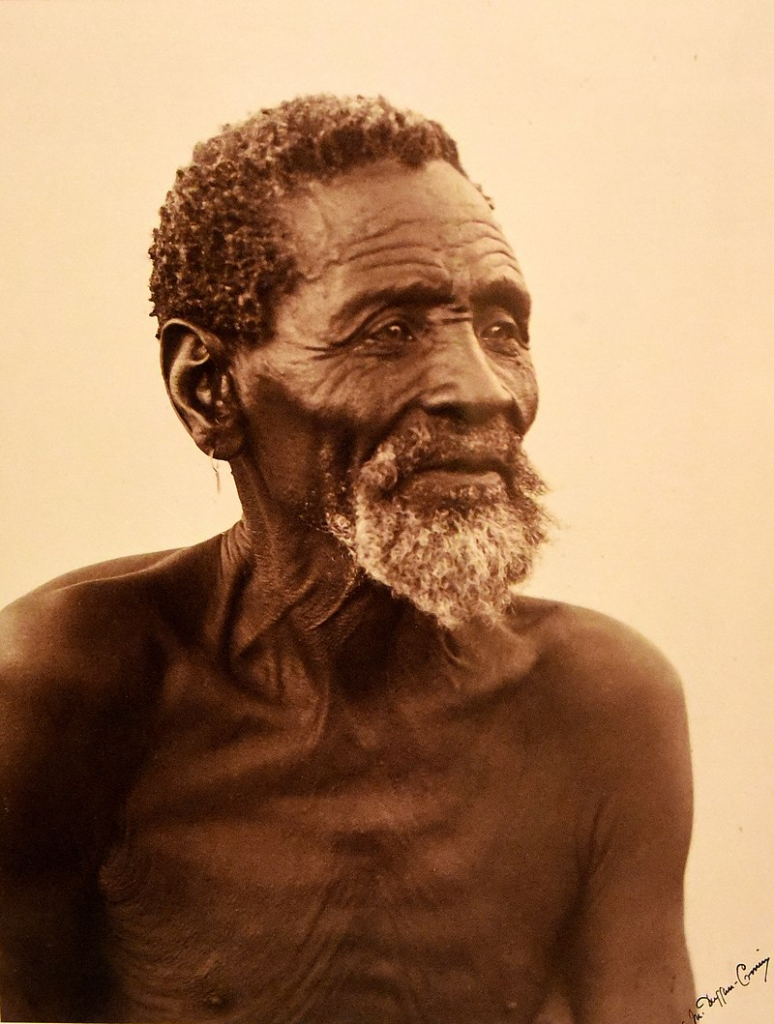
Above: Portrait of a bushman, Alfred Duggan-Cronin. South Africa, early 20th century.
One can only blaspheme if one believes.
“Concerning the Unpredictable“, Forewords and Afterwords (1973)
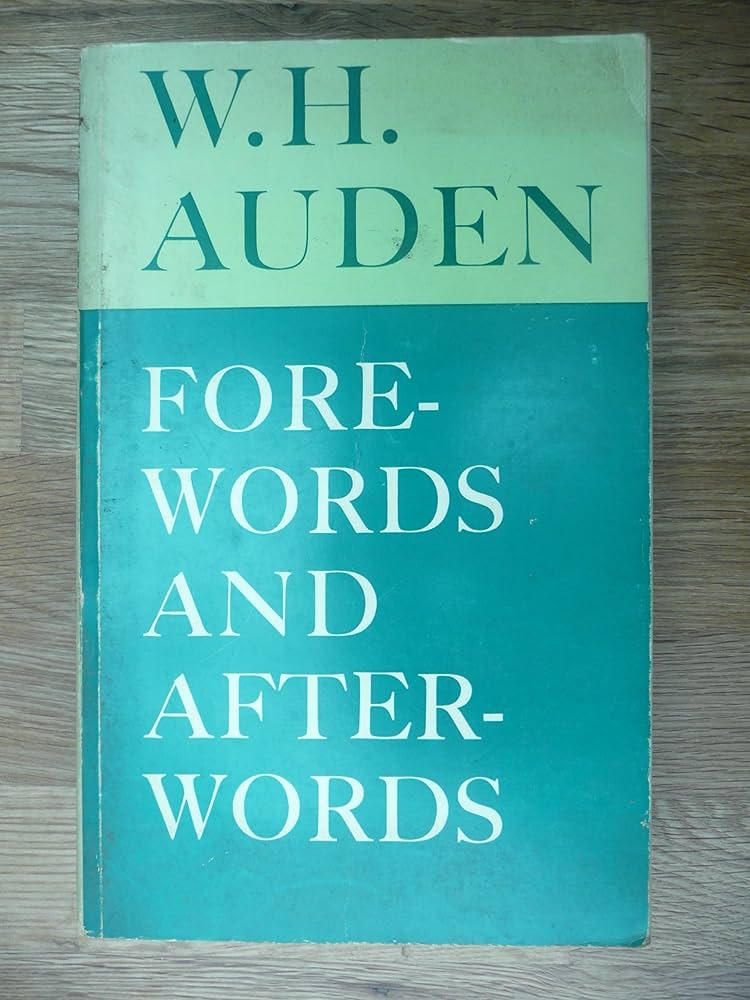
His last books of verse, Epistle to a Godson (1972) and the unfinished Thank You, Fog (published posthumously, 1974) include reflective poems about language (“Natural Linguistics“, “Aubade“), philosophy and science (“No, Plato, No“, “Unpredictable but Providential“), and his own aging (“A New Year Greeting“, “Talking to Myself“— which he dedicated to his friend Oliver Sacks, “A Lullaby”
[“The din of work is subdued“].
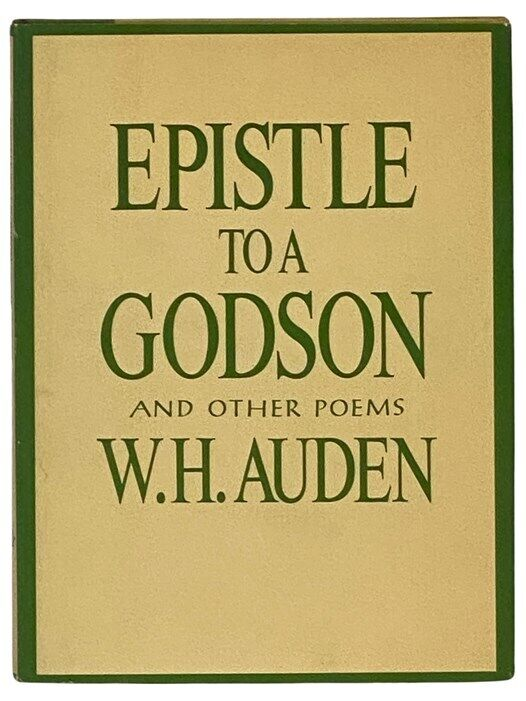
His last completed poem was “Archaeology“, about ritual and timelessness, two recurring themes in his later years.
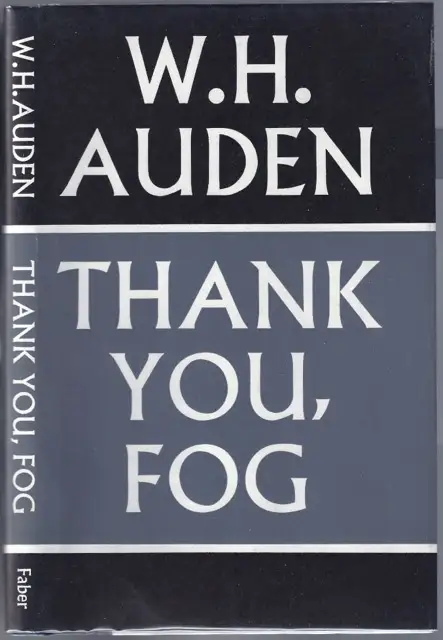
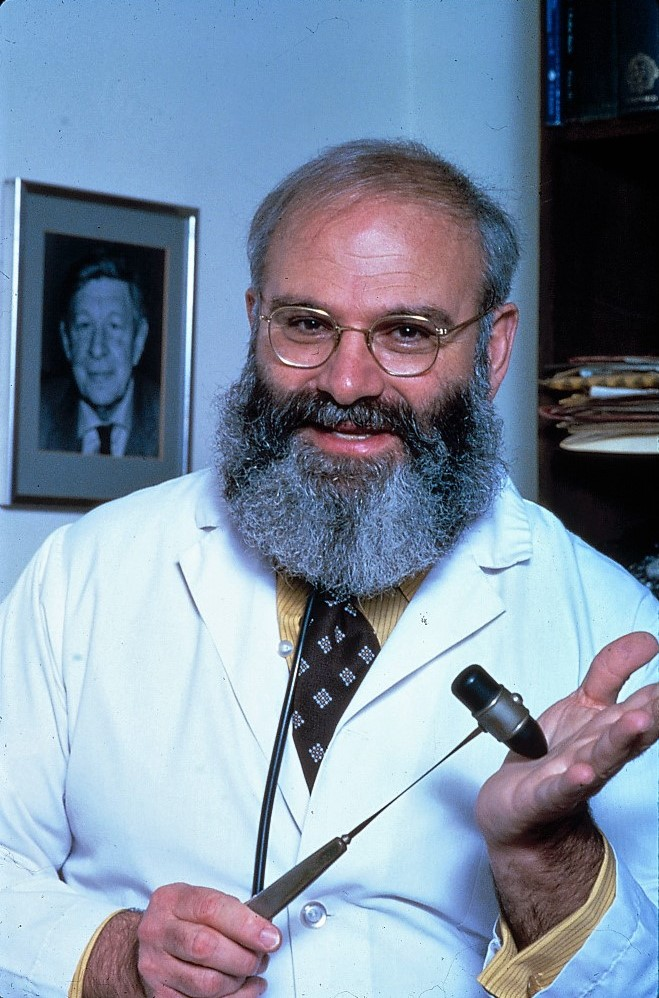
Above: English neurologist Dr. Oliver Sacks (1933 – 2015)
Auden’s stature in modern literature has been contested.
Probably the most common critical view from the 1930s onward ranked him as the last and least of the three major 20th century poets of the UK or Ireland — behind Yeats and Eliot — while a minority view, more prominent in recent years, ranks him as the highest of the three.
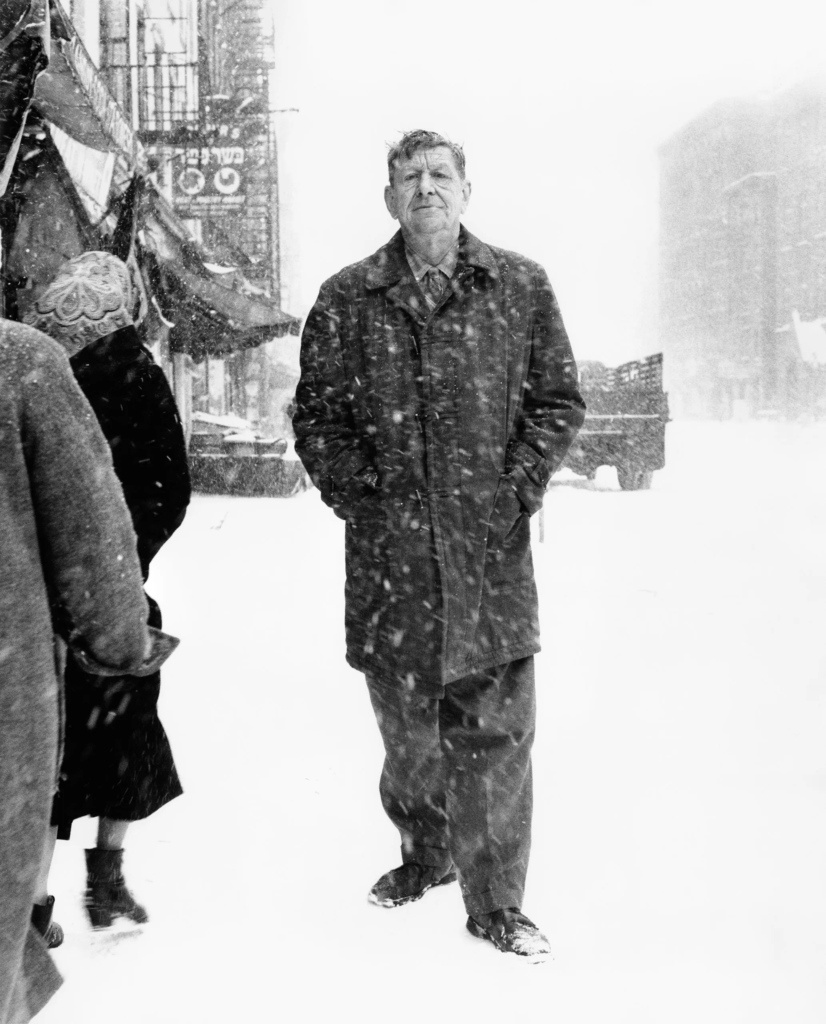
Above: W. H. Auden
Opinions have ranged from those of Hugh MacDiarmid, who called him “a complete wash-out“.
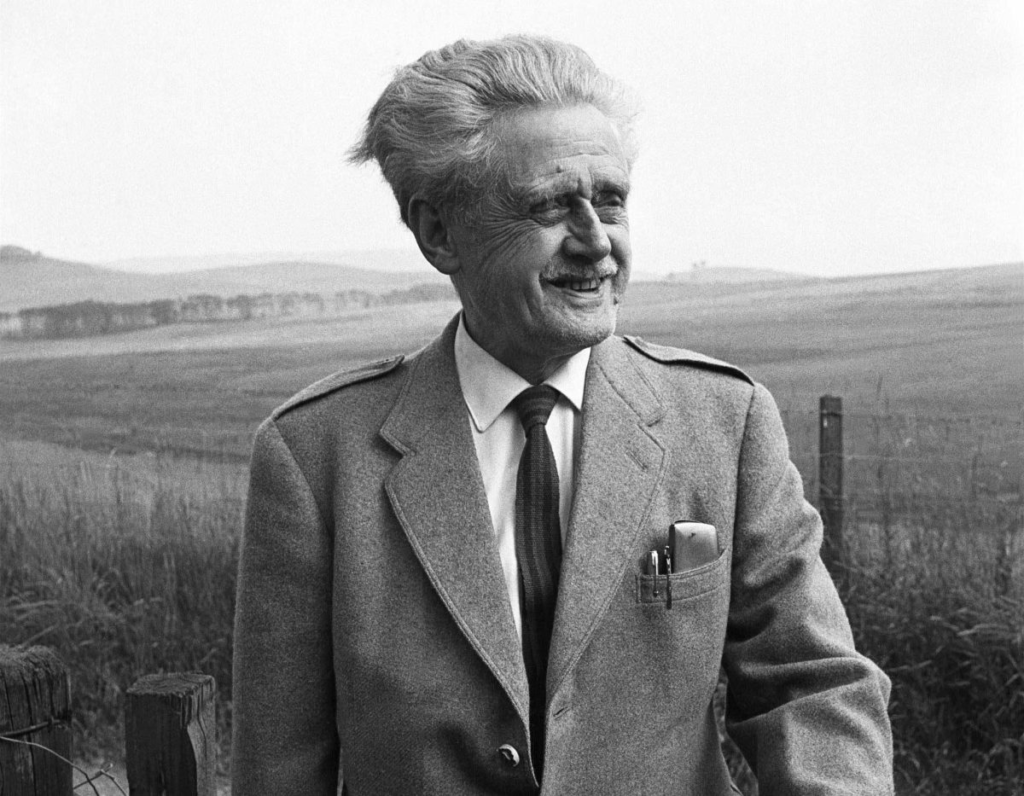
Above: Scottish poet Hugh MacDiarmid (1892 – 1978)
F. R. Leavis wrote that Auden’s ironic style was “self-defensive, self-indulgent or merely irresponsible”.

Above: English literary critic Frank Raymond Leavis (1895 – 1978)
Harold Bloom wrote “Close thy Auden, open thy Wallace Stevens“,to the obituarist in The Times, who wrote:
“W.H. Auden, for long the enfant terrible of English poetry emerges as its undisputed master.”
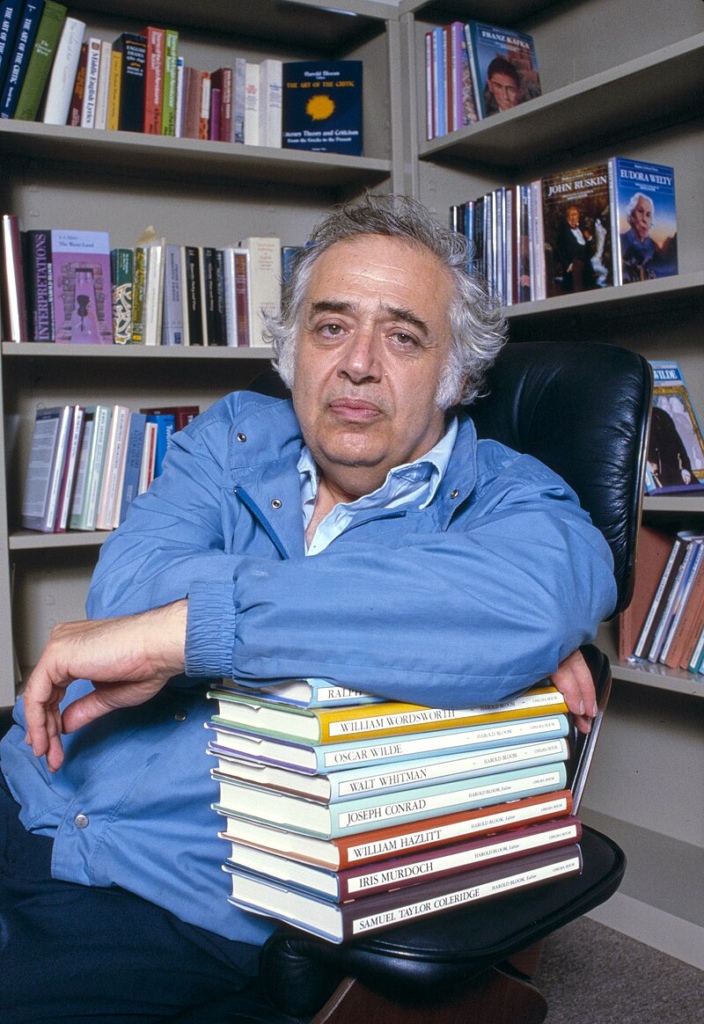
Above: American literary critic Harold Bloom (1930 – 2013)
Joseph Brodsky wrote that Auden had “the greatest mind of the 20th century“.
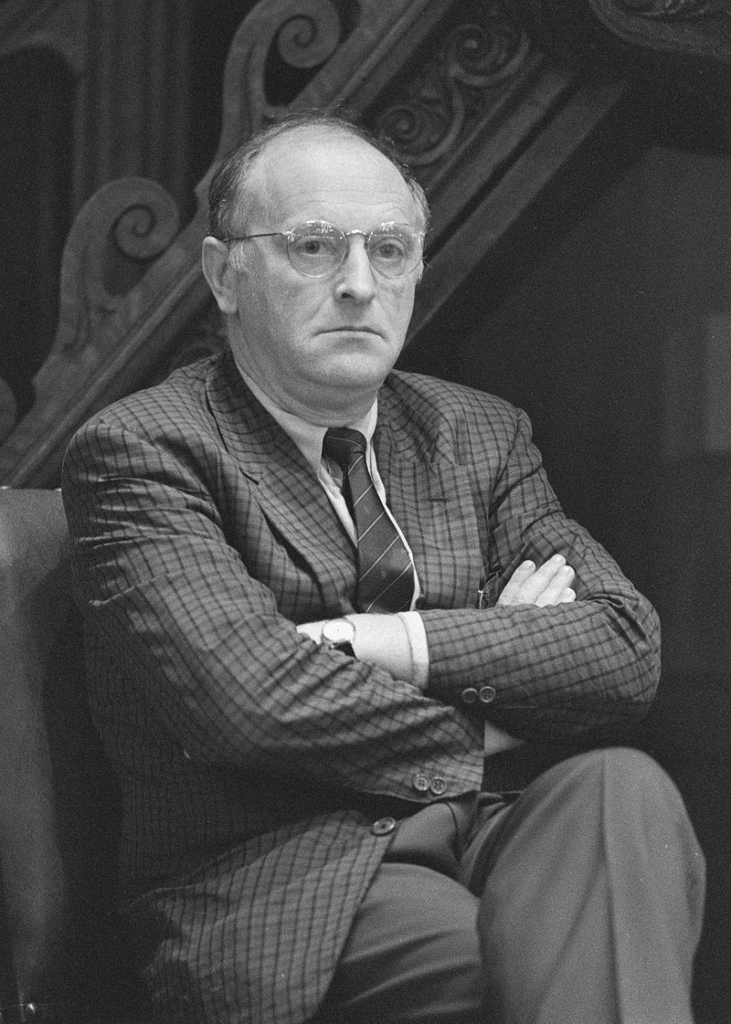
Above: Russian writer Joseph Brodsky (1940 – 1996)
Critical estimates were divided from the start.
Reviewing Auden’s first book, Poems (1930), Naomi Mitchison wrote:
“If this is really only the beginning, we have perhaps a master to look forward to.“
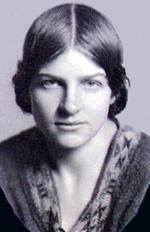
Above: Scottish writer Naomi Mitchison (1897 – 1999)
But John Sparrow (1906 – 1992), recalling Mitchison’s comment in 1934, dismissed Auden’s early work as “a monument to the misguided aims that prevail among contemporary poets, and the fact that he is being hailed as ‘a master’ shows how criticism is helping poetry on the downward path.”
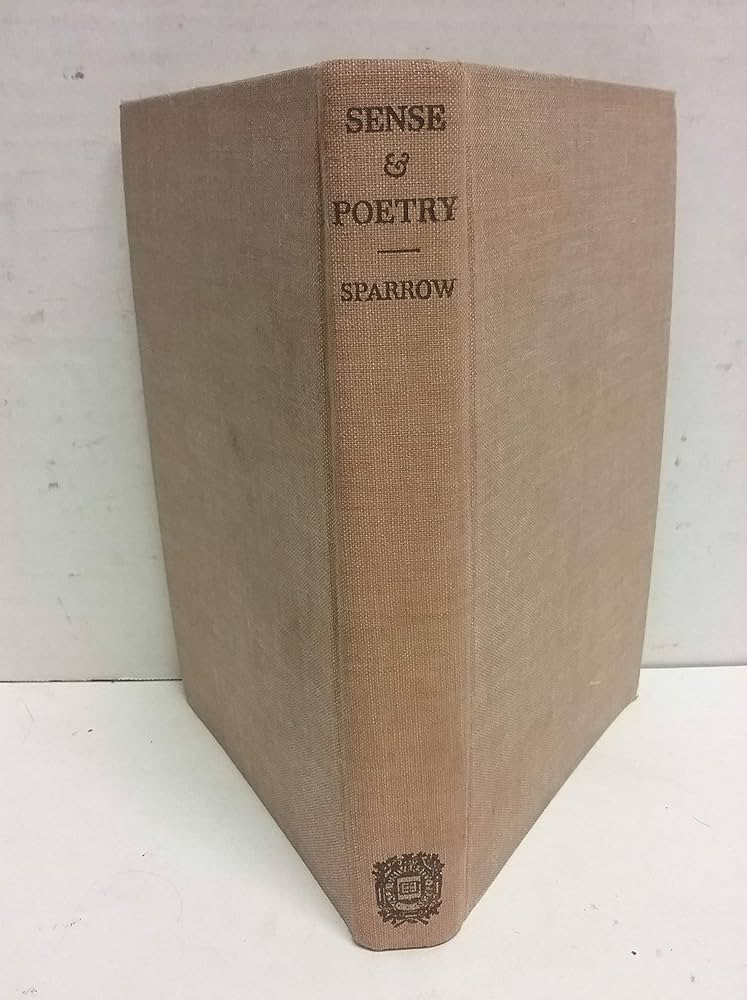
Auden’s clipped, satiric, and ironic style in the 1930s was widely imitated by younger poets such as Charles Madge, who wrote in a poem:
“There waited for me in the summer morning
Auden fiercely. I read, shuddered and knew.”
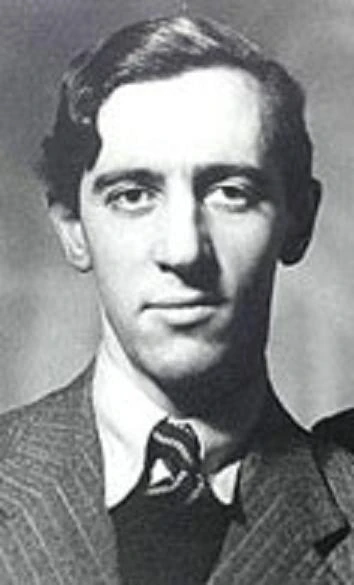
Above: English poet Charles Madge (1912 – 1996)
Auden was widely described as the leader of an “Auden group” that comprised his friends Stephen Spender, Cecil Day-Lewis, and Louis MacNeice.
The four were mocked by the poet Roy Campbell as if they were a single undifferentiated poet named “Macspaunday“.
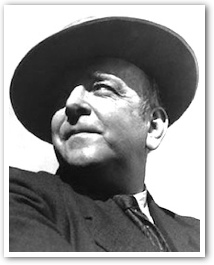
Above: English poet Roy Campbell (1901 – 1957)
Auden’s propagandistic poetic plays, including The Dog Beneath the Skin and The Ascent of F6, and his political poems such as “Spain” gave him the reputation as a political poet writing in a progressive and accessible voice, in contrast to Eliot.
But this political stance provoked opposing opinions, such as that of Austin Clarke who called Auden’s work “liberal, democratic, and humane“.
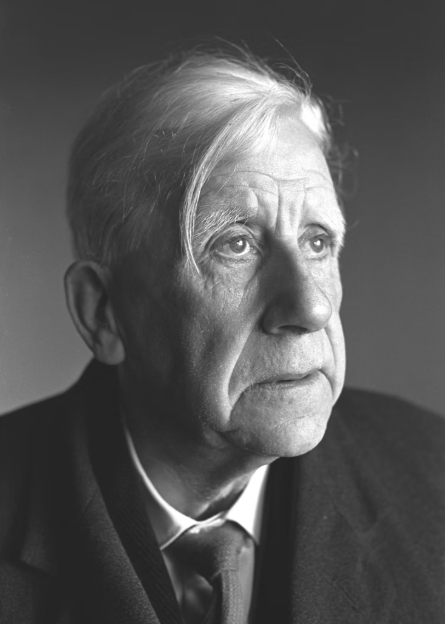
Above: Irish poet Austin Clarke (1896 – 1974)
John Drummond wrote that Auden misused a “characteristic and popularizing trick, the generalized image”, to present ostensibly left-wing views that were in fact “confined to bourgeois experience“.
Auden’s departure for America in 1939 was debated in Britain (once even in Parliament), with some seeing his emigration as a betrayal.
Defenders of Auden such as Geoffrey Grigson, in an introduction to a 1949 anthology of modern poetry, wrote that Auden “arches over all“.
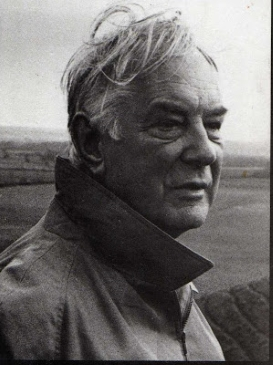
Above: English poet Geoffrey Grigson (1905 – 1985)
His stature was suggested by book titles such as Auden and After by Francis Scarfe (1942) and The Auden Generation by Samuel Hynes (1977).
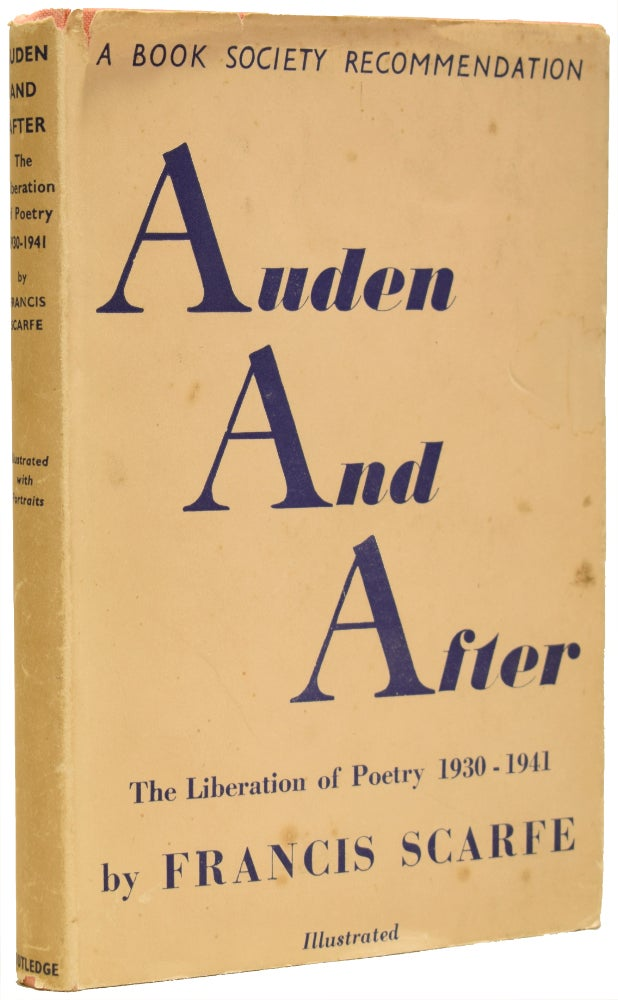
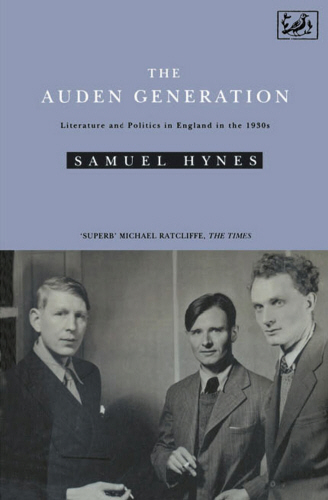
In the US, starting in the late 1930s, the detached, ironic tone of Auden’s regular stanzas became influential.
John Ashbery recalled that in the 1940s Auden “was the modern poet“.
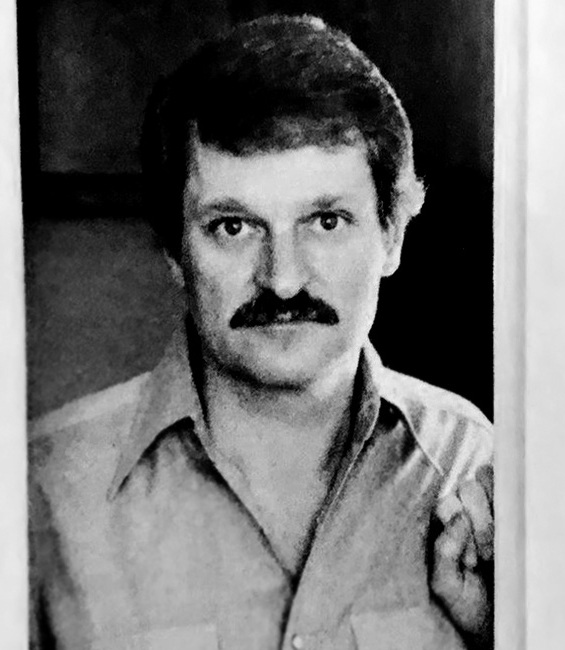
Above: American poet John Ashbery (1927 – 2017)
Auden’s formal influences were so pervasive in American poetry that the ecstatic style of the Beat Generation was partly a reaction against his influence.
From the 1940s through the 1960s, many critics lamented that Auden’s work had declined from its earlier promise.
Randall Jarrell wrote a series of essays making a case against Auden’s later work.
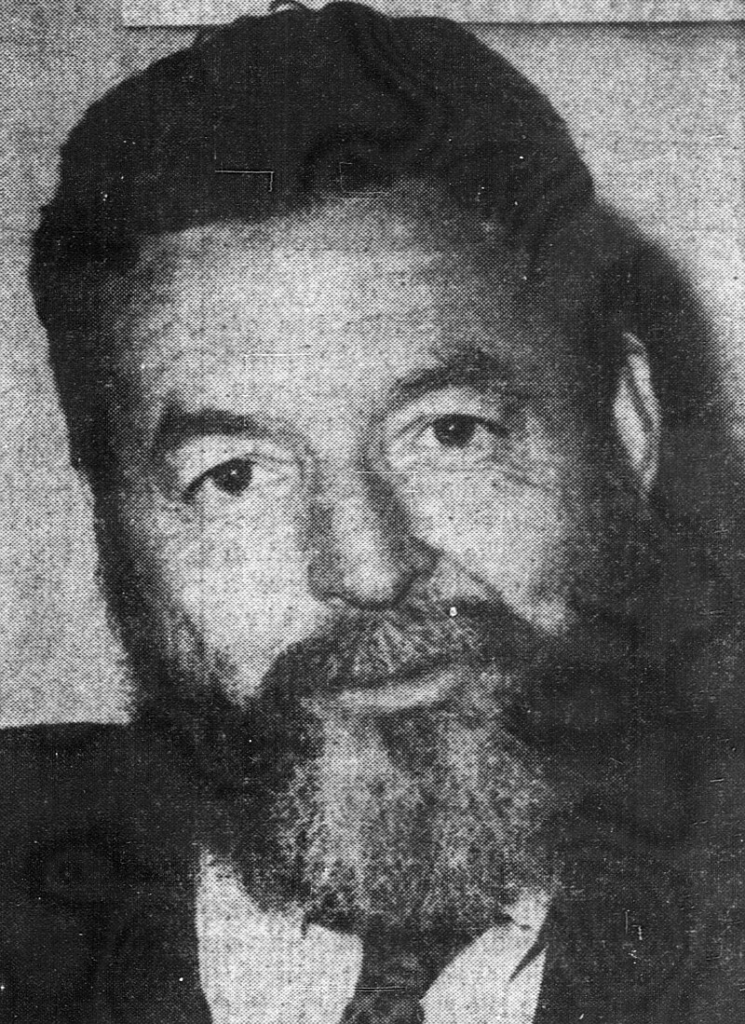
Above: American poet Randall Jarrell (1914 – 1965)
Philip Larkin’s “What’s Become of Wystan?” (1960) had a wide impact.
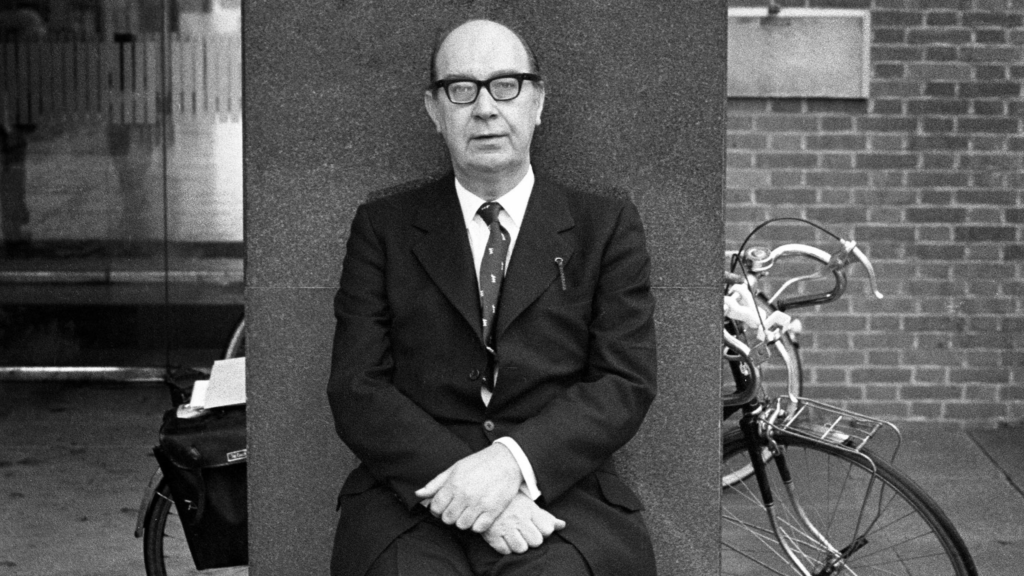
Above: English writer Philip Larkin (1922 – 1985)
The first full-length study of Auden was Richard Hoggart’s Auden: An Introductory Essay (1951), which concluded that “Auden’s work, then, is a civilizing force.”
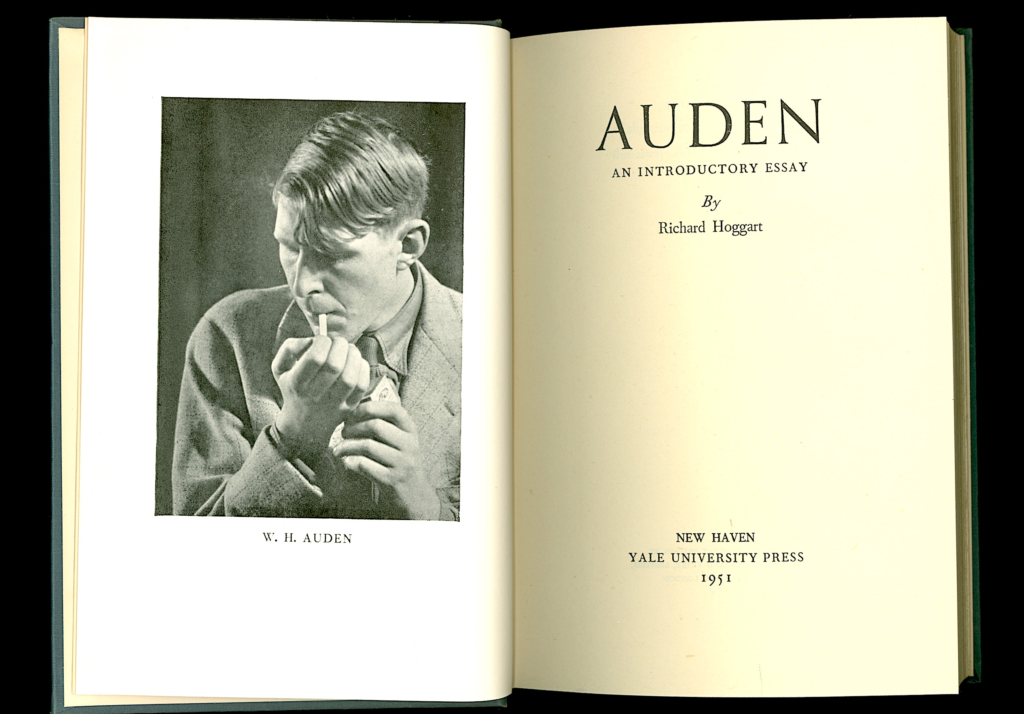
It was followed by Joseph Warren Beach’s The Making of the Auden Canon (1957), a disapproving account of Auden’s revisions of his earlier work.
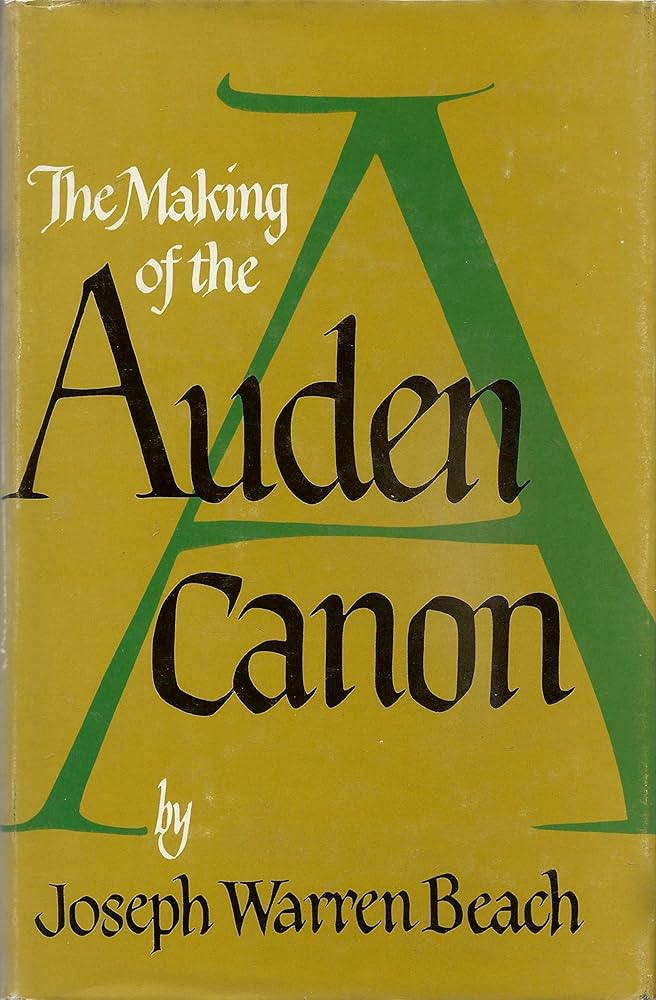
The first systematic critical account was Monroe K. Spears’ The Poetry of W. H. Auden: The Disenchanted Island (1963), “written out of the conviction that Auden’s poetry can offer the reader entertainment, instruction, intellectual excitement, and a prodigal variety of aesthetic pleasures, all in a generous abundance that is unique in our time“.
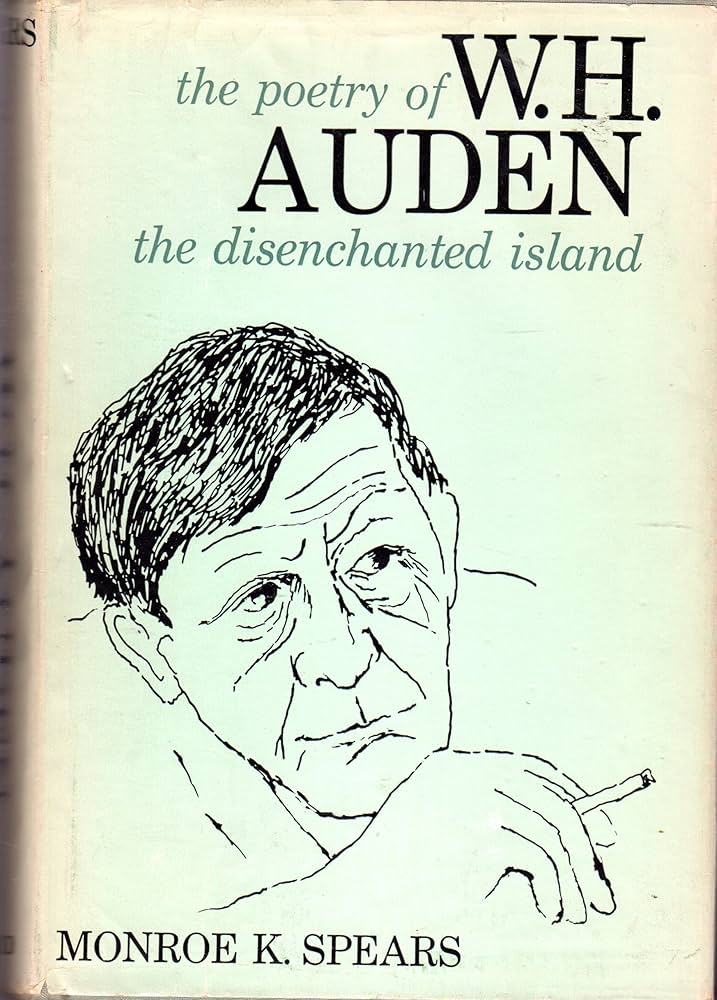
Auden was one of three candidates recommended by the Nobel Committee to the Swedish Academy for the Nobel Prize in Literature in 1963 and 1965 and six recommended for the 1964 prize.
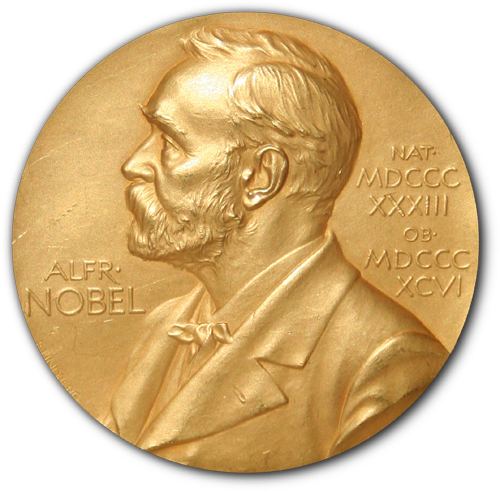
By the time of his death in 1973 he had attained the status of a respected elder statesman, and a memorial stone for him was placed in Poets’ Corner in Westminster Abbey in 1974.
The Encyclopædia Britannica writes that “by the time of Eliot’s death in 1965, a convincing case could be made for the assertion that Auden was indeed Eliot’s successor, as Eliot had inherited sole claim to supremacy when Yeats died in 1939.”

Above: Thistle logo of Encyclopaedia Britannica
With some exceptions, British critics tended to treat his early work as his best, while American critics tended to favor his middle and later work.
Another group of critics and poets has maintained that unlike other modern poets, Auden’s reputation did not decline after his death, and the influence of his later writing was especially strong on younger American poets.
Typical later evaluations describe him as “arguably the 20th century’s greatest poet” (Peter Parker and Frank Kermode), who “now clearly seems the greatest poet in English since Tennyson” (Philip Hensher).
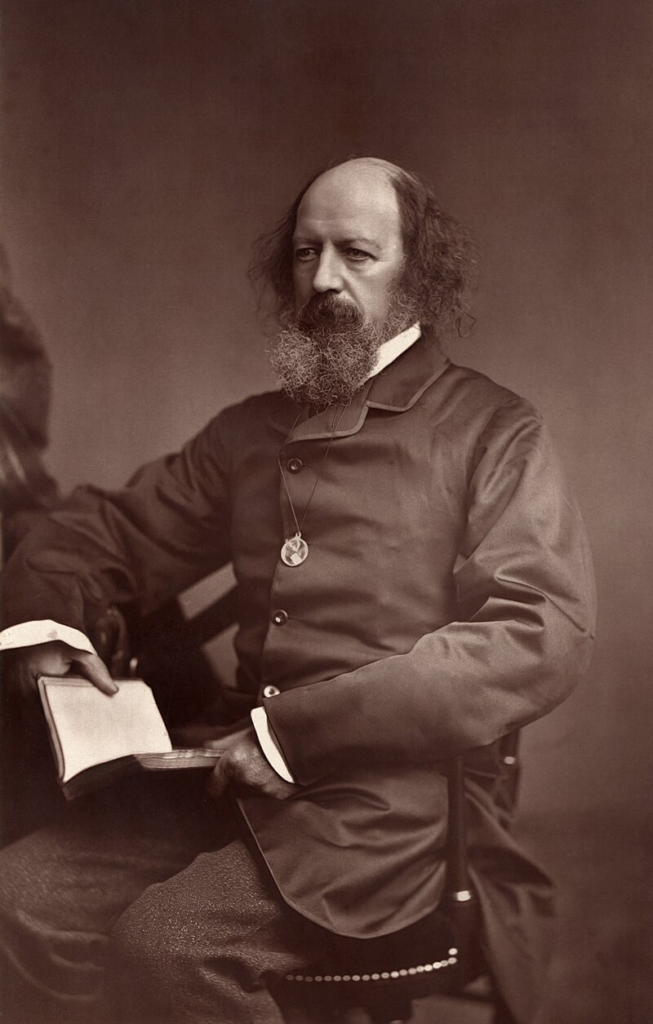
Above: English poet Alfred Tennyson (1809 – 1892)
Auden became a close friend of neurologist Oliver Sacks and after publication of Sacks’s first book Migraine, in 1970, his review encouraged Sacks to adapt his writing style to “be metaphorical, be mythical, be whatever you need“.
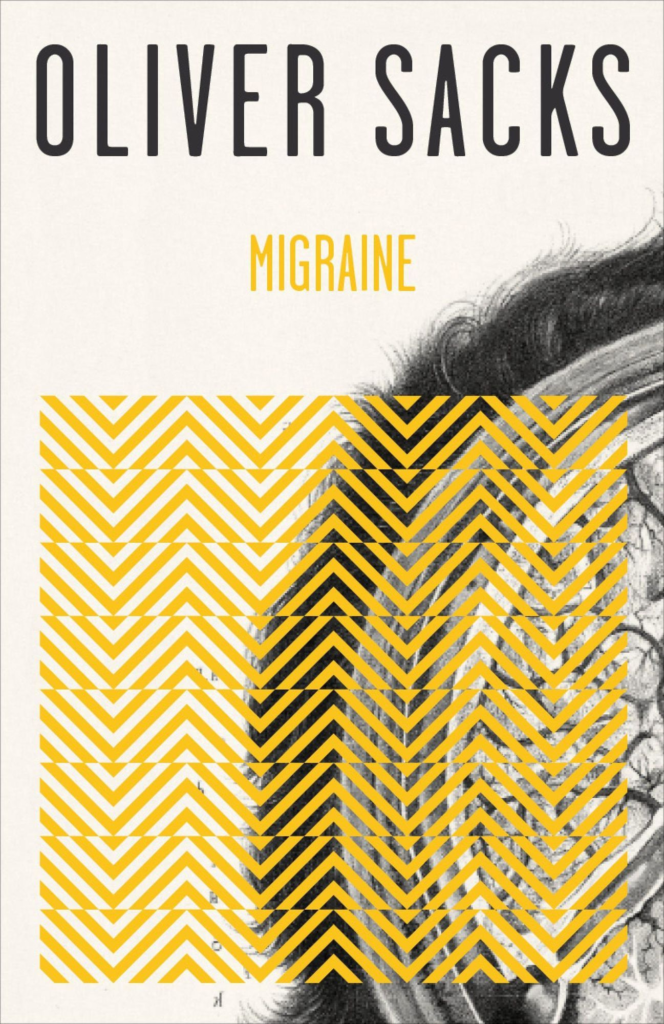
Public recognition of Auden’s work sharply increased after his “Funeral Blues” (“Stop all the clocks“) was read aloud in the film Four Weddings and a Funeral (1994).
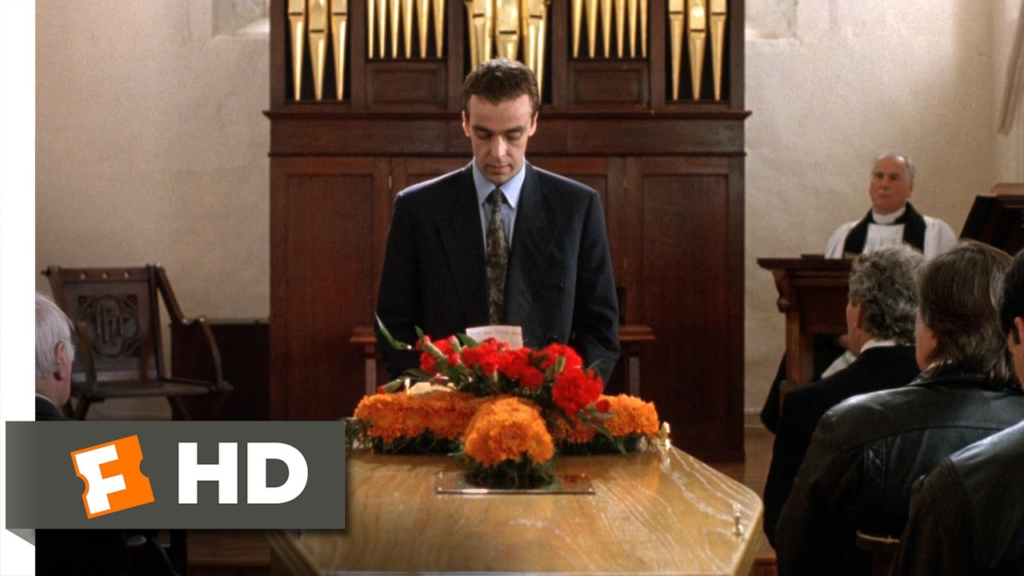
Above: Scene from Four Weddings and a Funeral
Subsequently, a pamphlet edition of ten of his poems, Tell Me the Truth About Love, sold more than 275,000 copies.
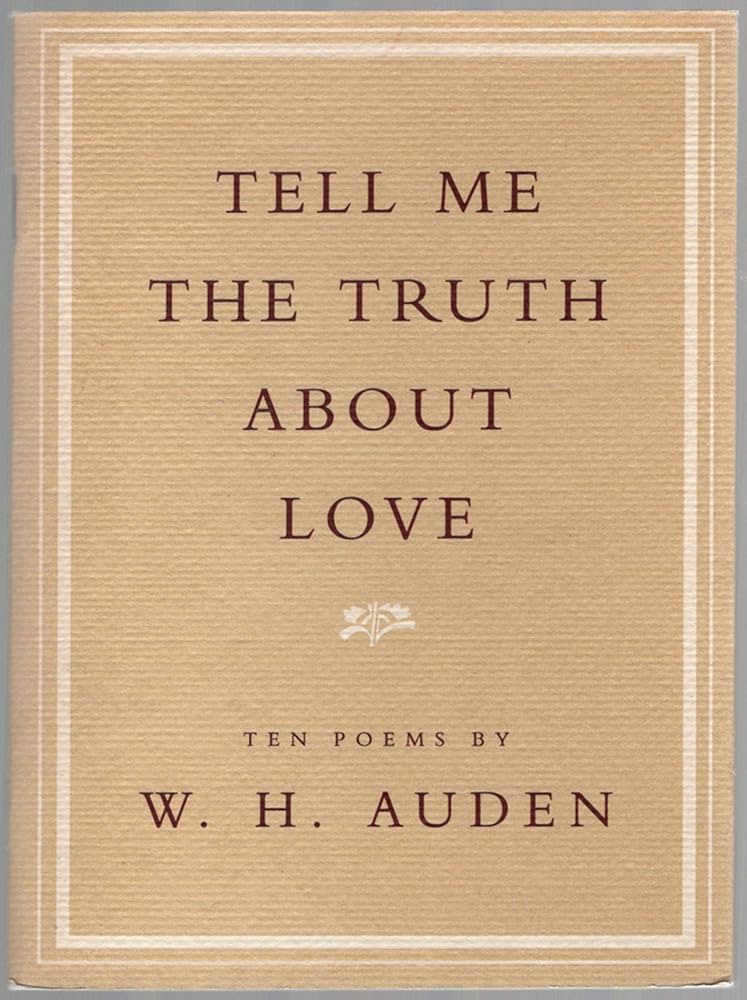
An excerpt from his poem “As I walked out one evening” was recited in the film Before Sunrise (1995).
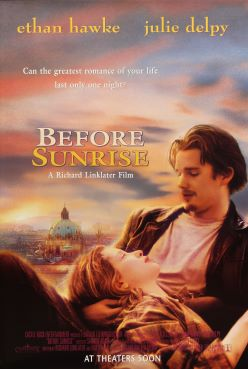
After 11 September 2001, his 1939 poem “September 1, 1939” was widely circulated and frequently broadcast.

Above: 11 September 2001
Public readings and broadcast tributes in the UK and US in 2007 marked his centenary year.
Overall Auden’s poetry was noted for its stylistic and technical achievement, its engagement with politics, morals, love, and religion, and its variety in tone, form and content.
Memorial stones and plaques commemorating Auden include:
- Westminster Abbey
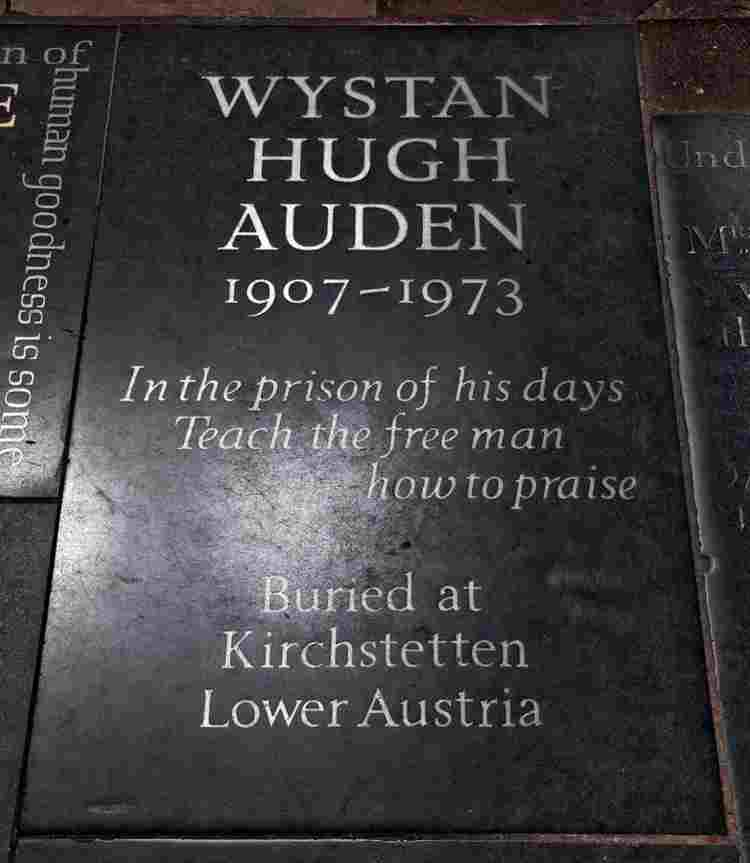
- his birthplace at 55 Bootham, York
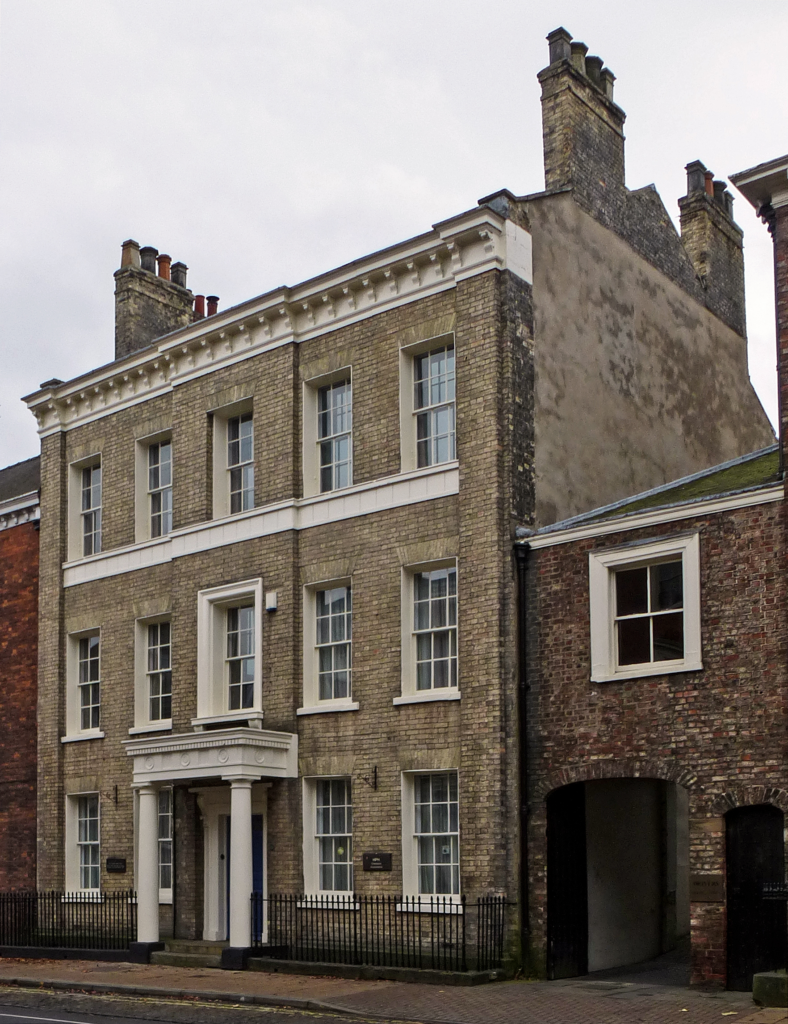
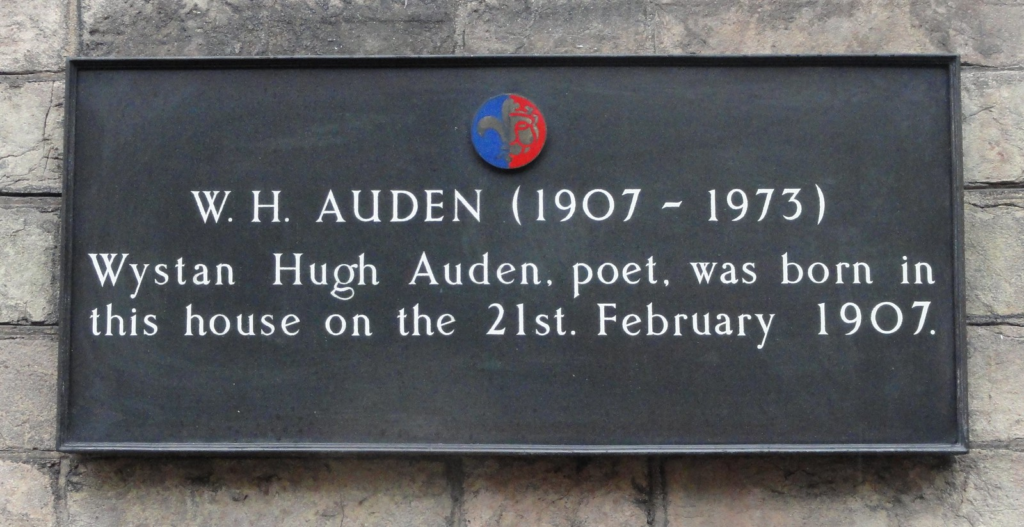
- near his home on Lordswood Road, Birmingham
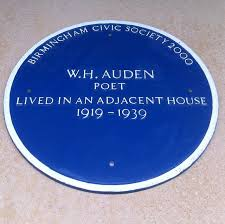
- in the chapel of Christ Church, Oxford
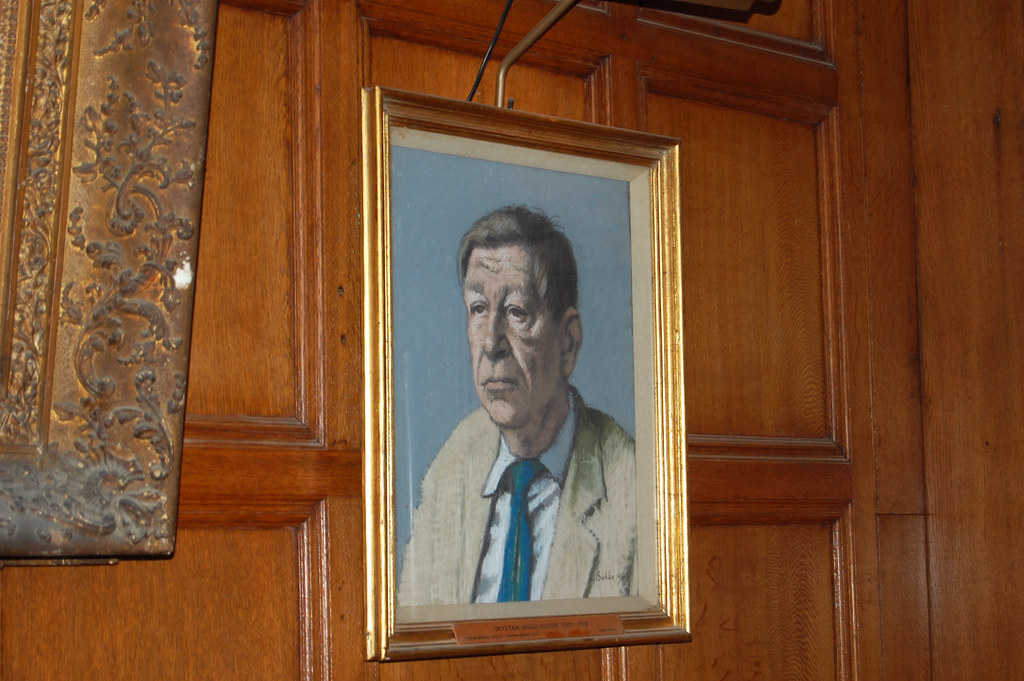
- on the site of his apartment at 1 Montague Terrace, Brooklyn Heights
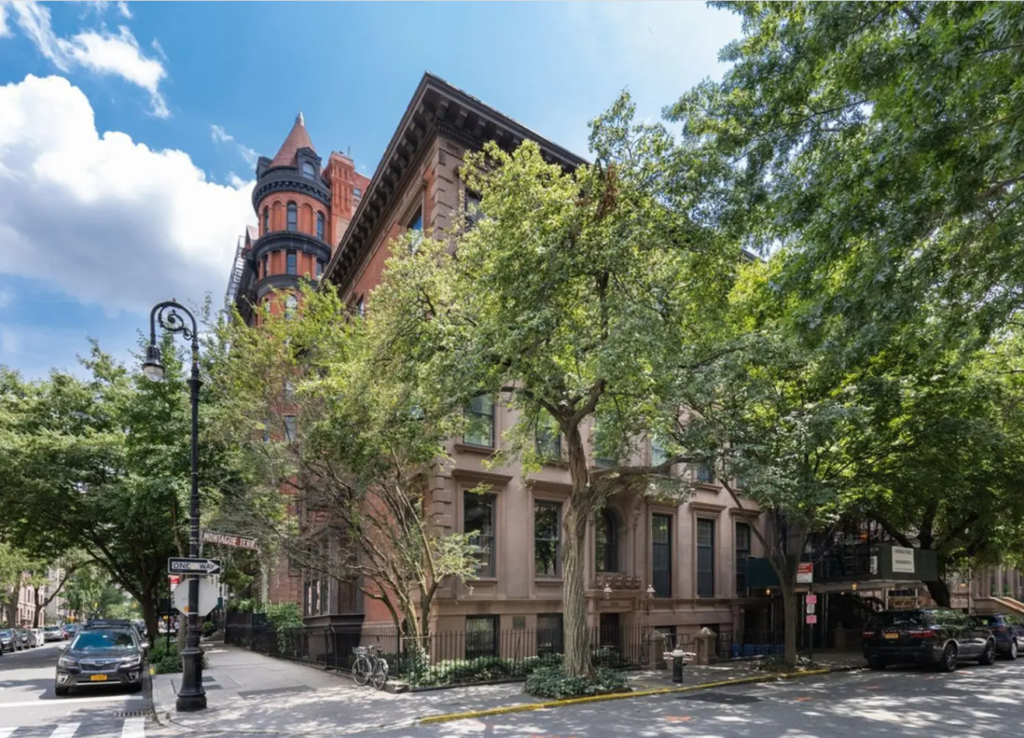
- at his apartment in 77 St. Marks Place, New York (damaged and now removed)

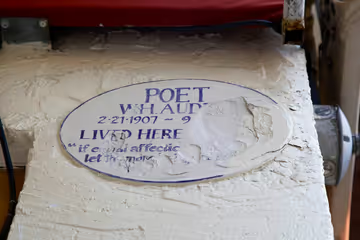
- at the site of his death at Walfischgasse 5 in Vienna
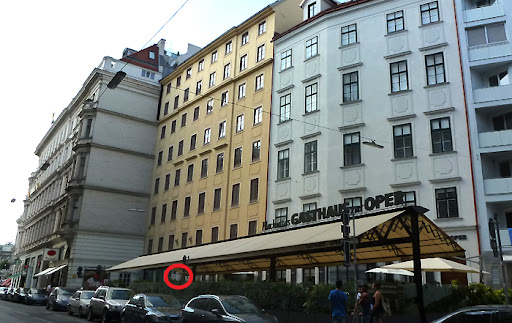
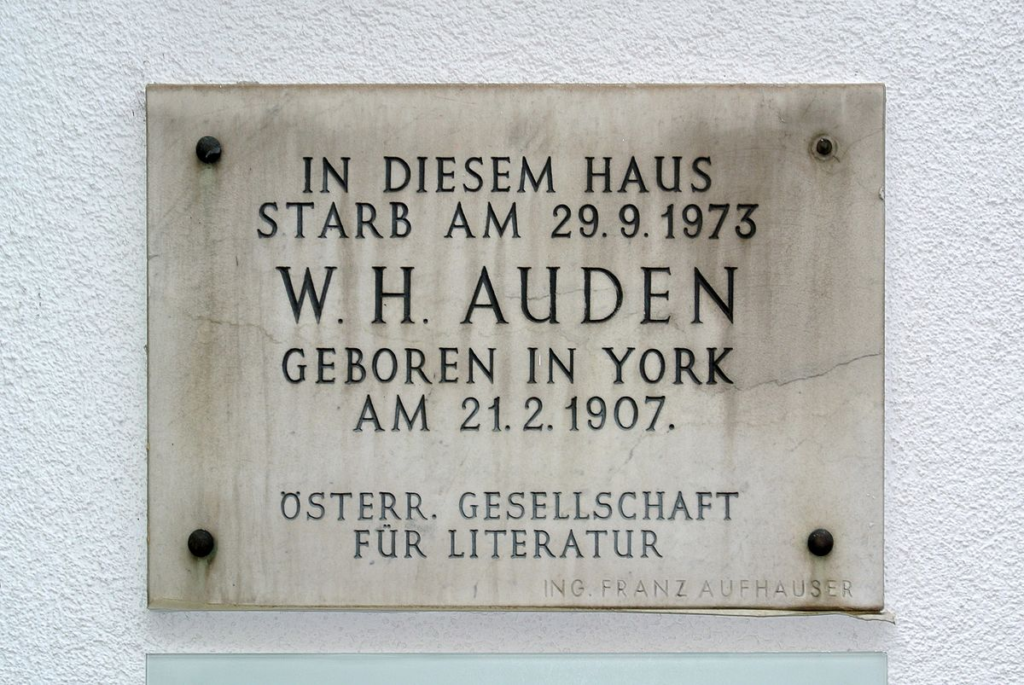
- in the Rainbow Honor Walk in San Francisco.
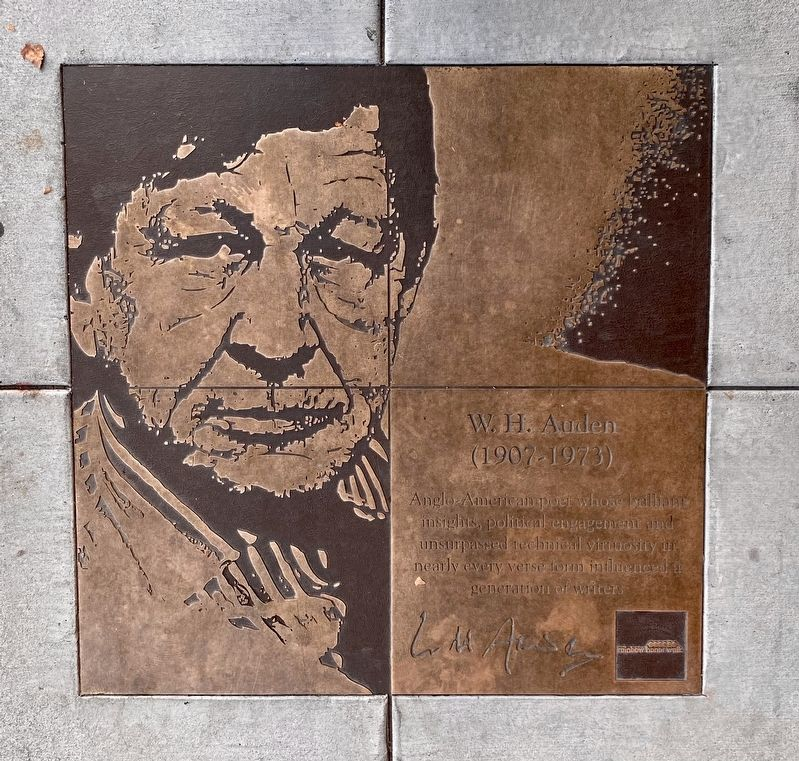
In his house in Kirchstetten, his study is open to the public upon request.
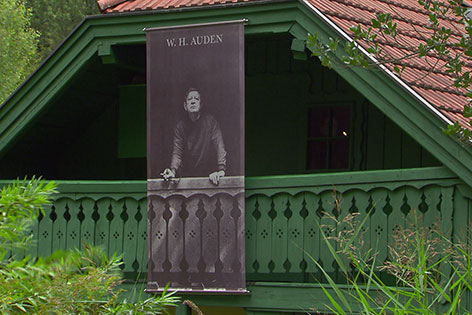
In 2023, newly declassified UK government files revealed that Auden was considered as a candidate to be the new Poet Laureate of the United Kingdom in 1967 following the death of John Masefield.
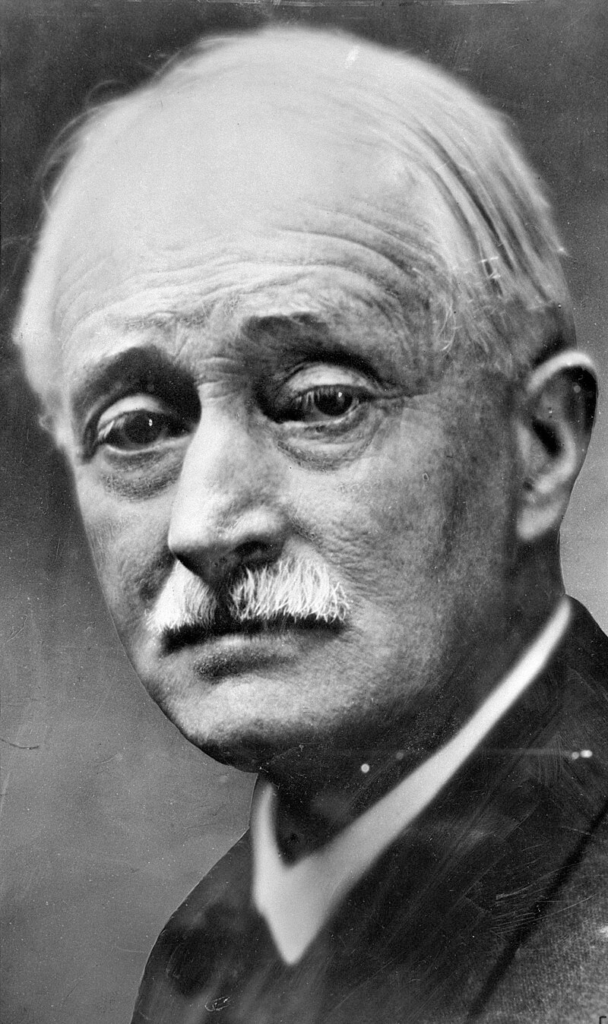
Above: English poet John Masefield (1878 – 1967)
Auden was rejected due to having taken American citizenship.
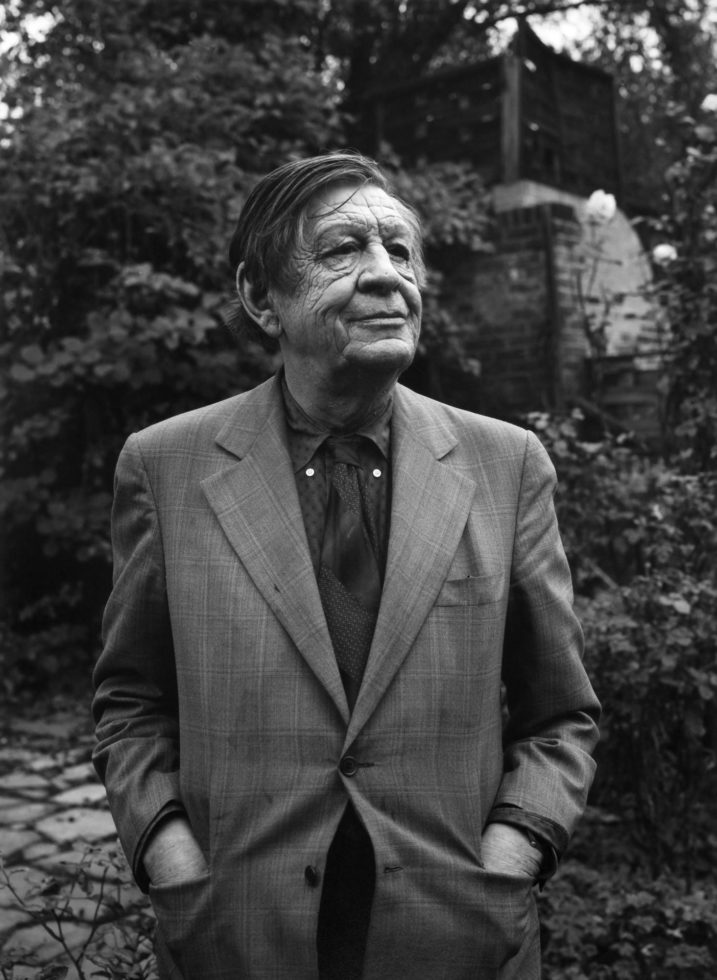
Above: W. H. Auden
W.H. Auden was a poet of extraordinary range, seamlessly blending intellect with emotion.
His verse captured the anxieties of his era, from war and politics to the loneliness of modern existence.
In Funeral Blues, he distilled grief into stark, aching simplicity, while September 1, 1939 remains a poignant reflection on the fragility of civilization in times of crisis.
Auden’s poetry continues to affect us because it speaks to the deepest corners of our emotional and intellectual landscapes.
Whether exploring love, loss, or the passage of time, his words offer a mirror through which we examine ourselves, articulating feelings we may struggle to name.
He reminds us that poetry is not merely an aesthetic endeavor but a way of making sense of the world and our place within it.
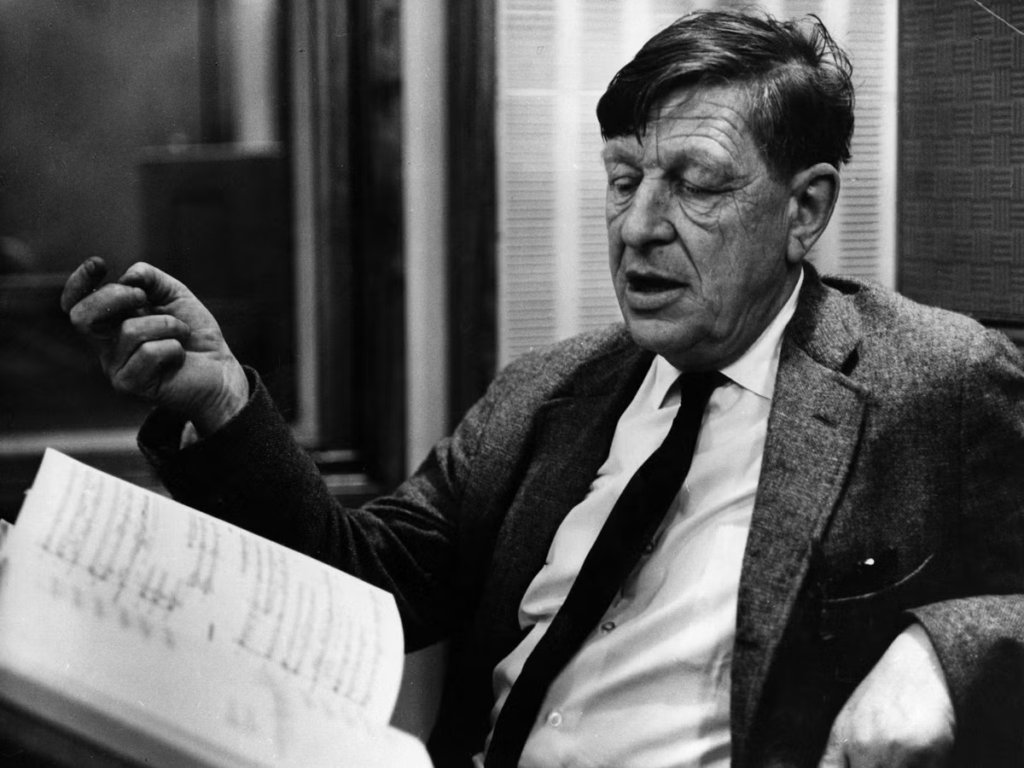
Above: W. H. Auden
Angela Anaïs Juana Antolina Rosa Edelmira Nin y Culmell (February 21, 1903 – January 14, 1977) was a French-born American diarist, essayist, novelist, and writer of short stories and erotica.
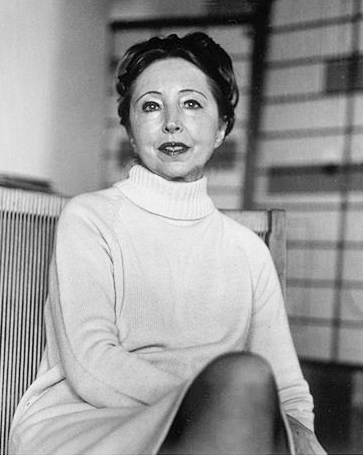
Above: Anaïs Nin
Born to Cuban parents in France, Nin was the daughter of the composer Joaquín Nin and the classically trained singer Rosa Culmell.
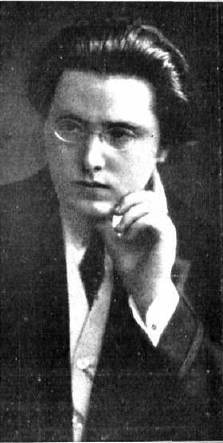
Above: Cuban composer Joaquin Nin (1879 – 1949)
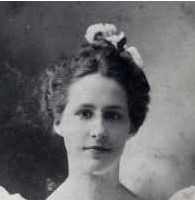
Above: Cuban singer Rosa Culmell y Vaurigard (1871 – 1954)
Nin spent her early years in Spain and Cuba, about 16 years in Paris (1924 – 1940), and the remaining half of her life in the United States, where she became an established author.
“One writes to create a world in which one can live.
I could not live in any of the worlds offered to me – the world of my parents, the world of war, the world of politics.
I had to create a world of my own, like a climate, a country, an atmosphere in which I could breathe, reign and recreate myself when destroyed by living.
That, I believe, is the reason for every work of art.“
Anaïs Nin, In Favor of the Sensitive Man (1976)
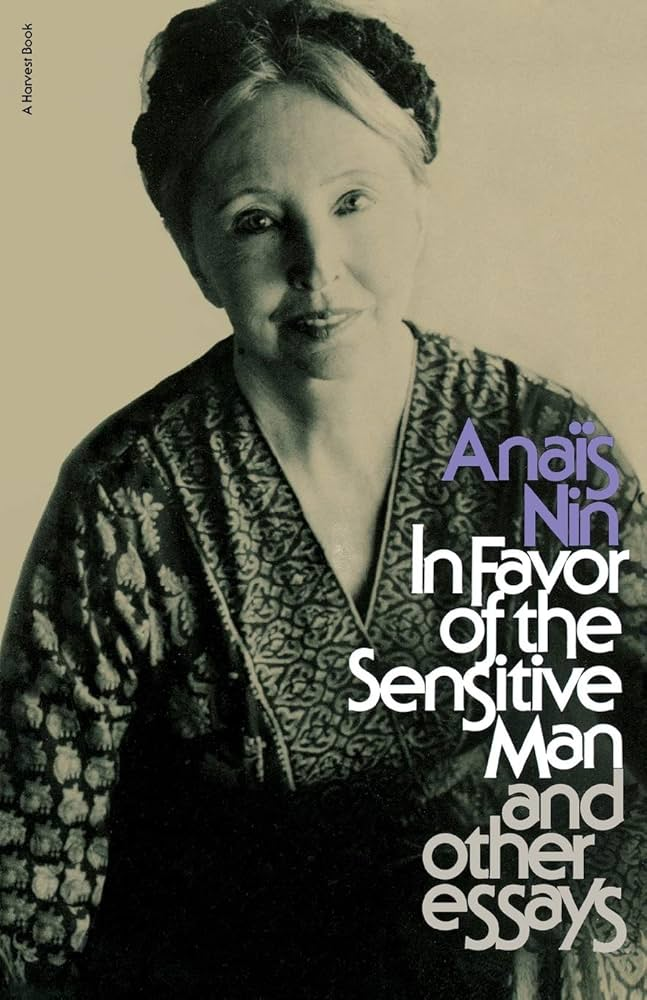
Nin wrote journals prolifically from age 11 until her death.
Her journals, many of which were published during her lifetime, detail her private thoughts and personal relationships.
Her journals also describe her marriages to Hugh Parker Guiler and Rupert Pole, in addition to her numerous affairs, including those with psychoanalyst Otto Rank and writer Henry Miller, both of whom profoundly influenced Nin and her writing.
Nin scribed by hand in excess of 36,000 pages of diaries over a span of 60 years.

In addition to her journals, Nin wrote several novels, critical studies, essays, short stories, and volumes of erotic literature.
Much of her work, including the collections of erotica Delta of Venus and Little Birds, was published posthumously amid renewed critical interest in her life and work.
Nin spent her later life in Los Angeles, California, where she died of cervical cancer in 1977.
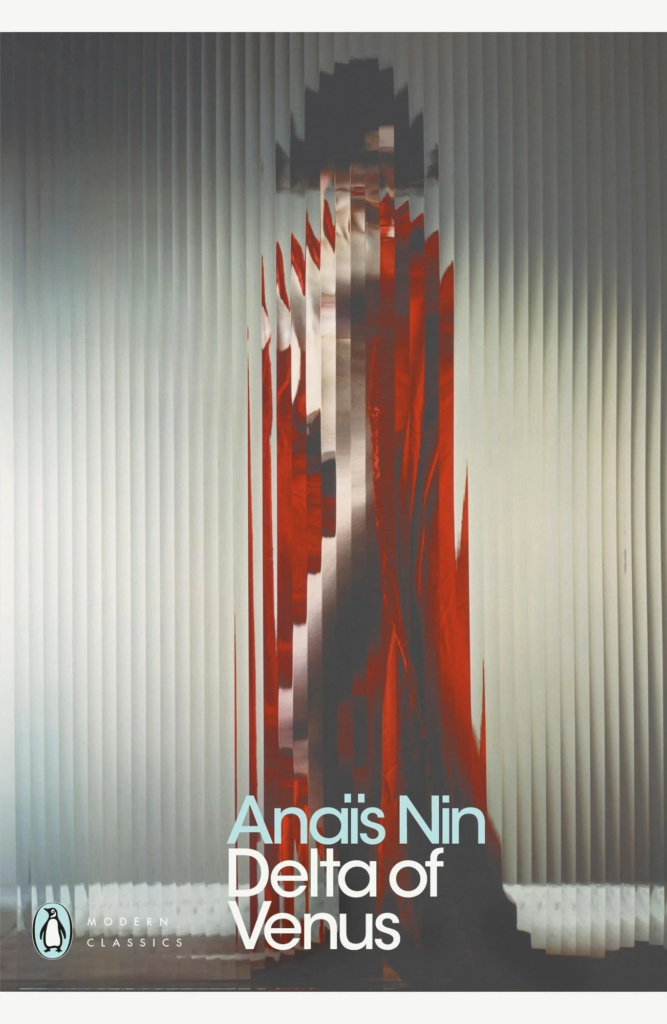
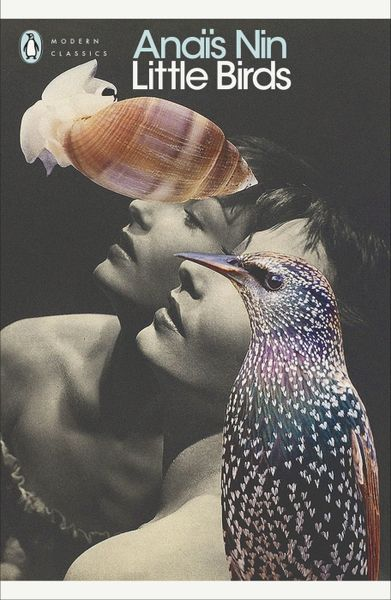
Anaïs Nin was born in Neuilly, France, to Joaquín Nin, a Cuban pianist and composer, and Rosa Culmell, a classically trained Cuban singer.
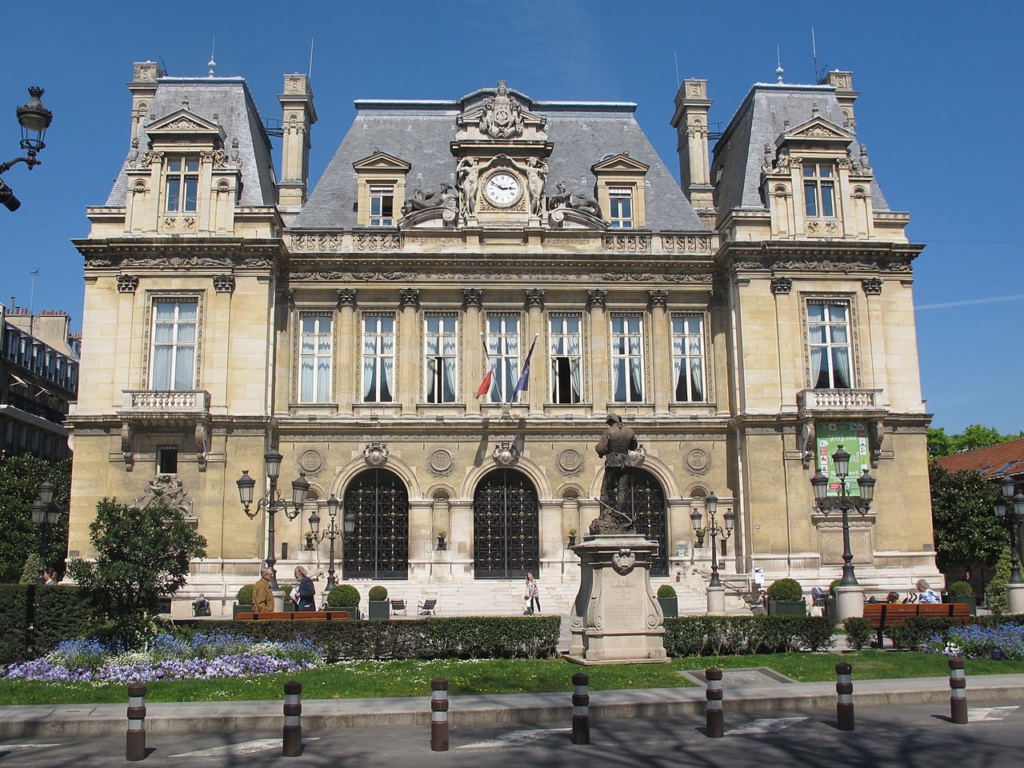
Above: Hôtel de Ville, Neuilly sur Seine, Hauts de Seine, France
Her father’s grandfather had fled France during the French Revolution, going first to Saint-Domingue (island of Haiti), then New Orleans, and finally to Cuba, where he helped build the country’s first railway.
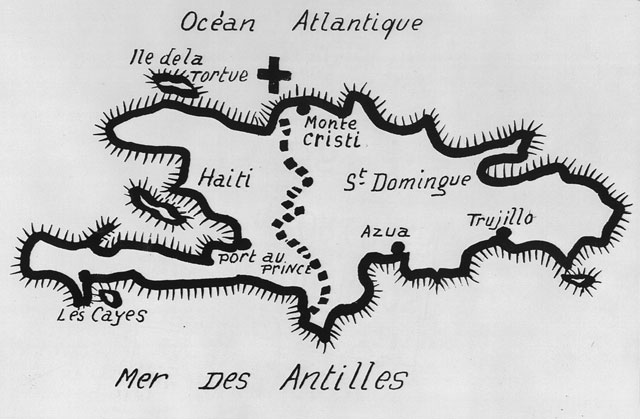

Above: New Orleans, Louisiana, USA
Nin was raised a Roman Catholic but left the Church when she was 16 years old.
She spent her childhood and early life in Europe.
Her parents separated when she was two.
Her mother then moved Nin and her two brothers, Thorvald Nin and Joaquín Nin-Culmell, to Barcelona, and then to New York City, where she attended high school.
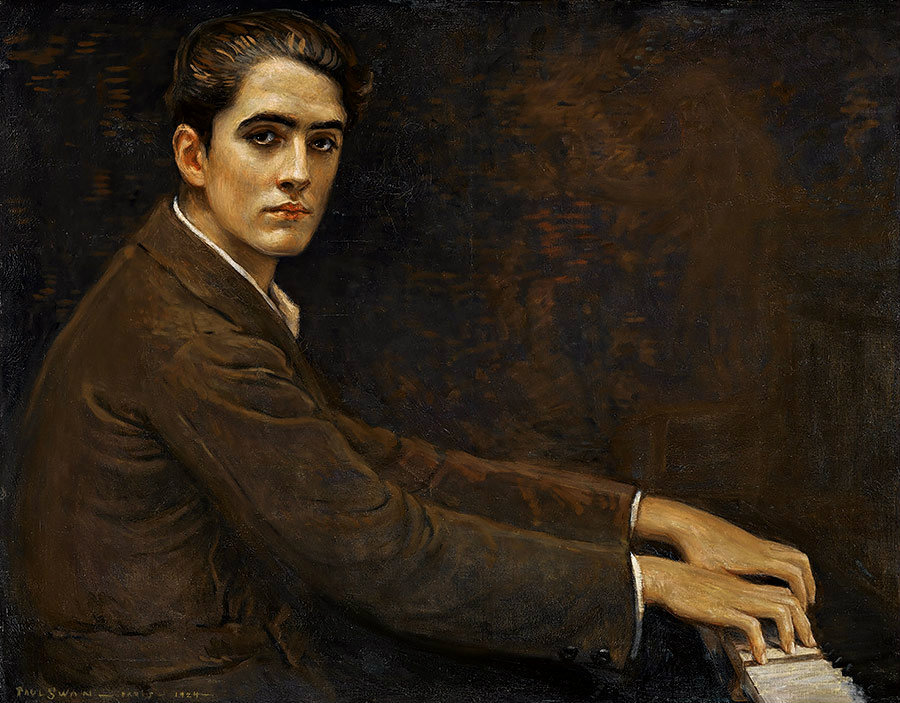
Above: Cuban composer Joaquin Nin-Culmell (1908 – 2004)
Nin dropped out of high school in 1919 at age 16, and according to her diaries, Volume One, 1931–1934, later began working as an artist’s model.
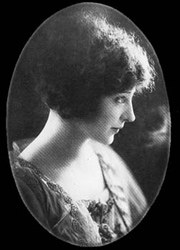
Above: Anaïs Nin (1920)
After being in the United States for several years, Nin had forgotten how to speak Spanish, but retained her French and became fluent in English.
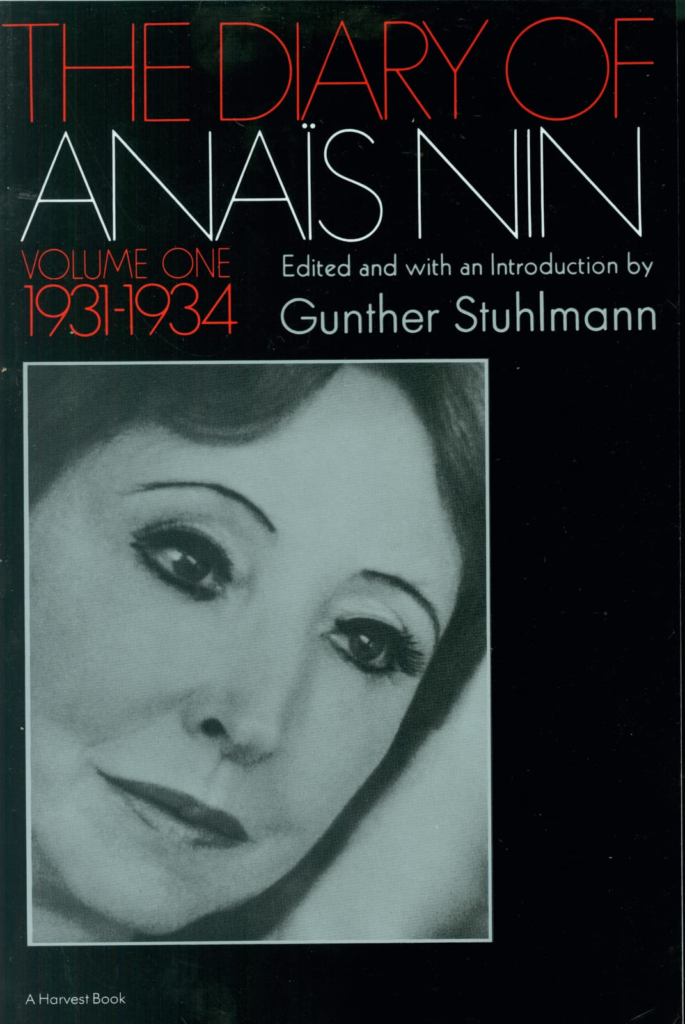
On 3 March 1923, in Havana, Cuba, Nin married her first husband, American Hugh Parker Guiler (1898 – 1985), a banker and artist from Boston, later known as “Ian Hugo“, when he became an experimental filmmaker in the late 1940s.
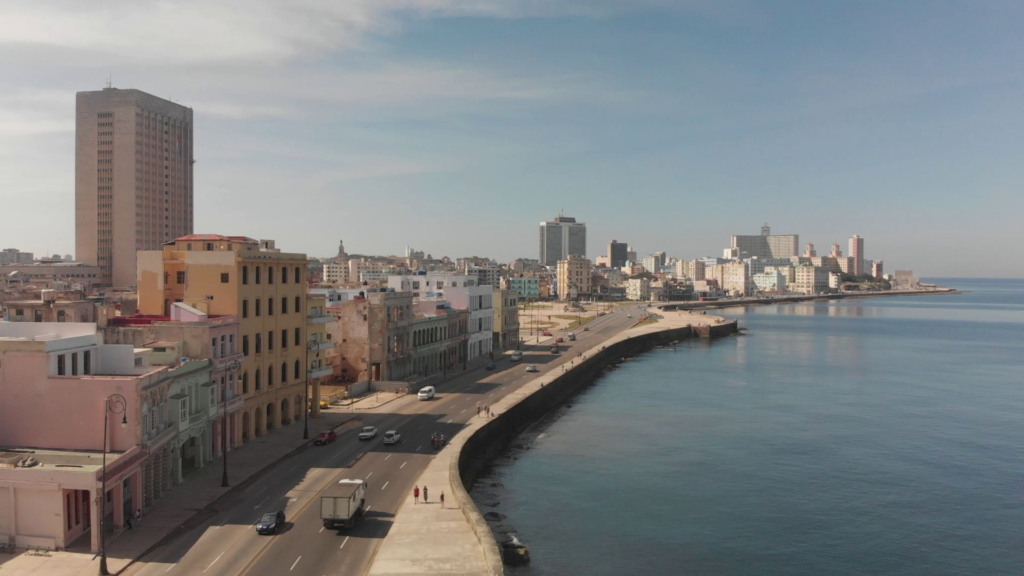
Above: Havana, Cuba
Hugh Parker Guiler (1898 – 1985), also known as Ian Hugo, was Anaïs Nin’s husband from 1923 until her death in 1977, and a skilled engraver and filmmaker in his own right.
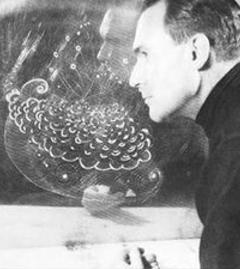
Above: Ian Hugo
Guiler was born in Boston, Massachusetts to Hugh Cheyne Guiler and Meta Parker Guiler.
He had a brother John and two sisters Edith and Ethel.

Above: Boston, Massachusetts, USA
Guiler lived in Puerto Rico as a child.

Above: US territorial flag of Puerto Rico
Guiler went to school in Scotland.

Above: Flag of Scotland
He graduated from Columbia University, where he studied economics and literature.

Above: Columbia University, New York City
He was working at National City Bank when he met Anaïs Nin.
They married in March 1923.
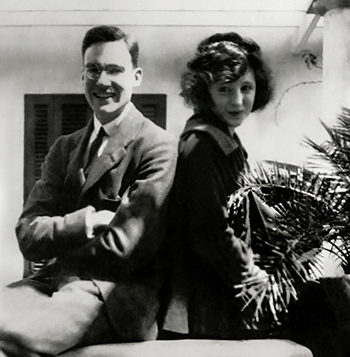
Above: Hugo and Nin
In 1924, they moved to Paris.
In that city Nin wrote the best-known part of her famous diary.
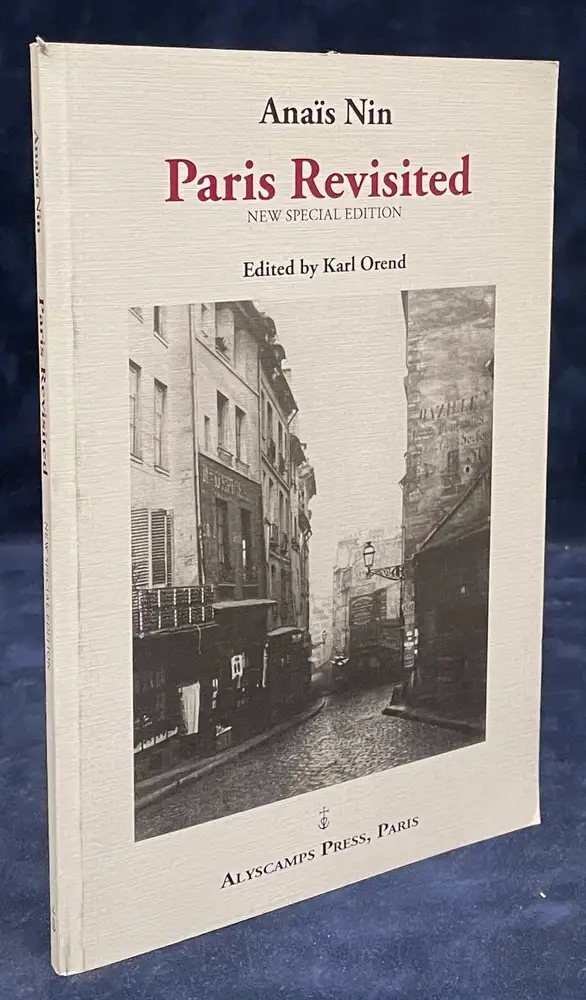
In 1939, shortly before World War II, Parker and Nin moved back to New York City.
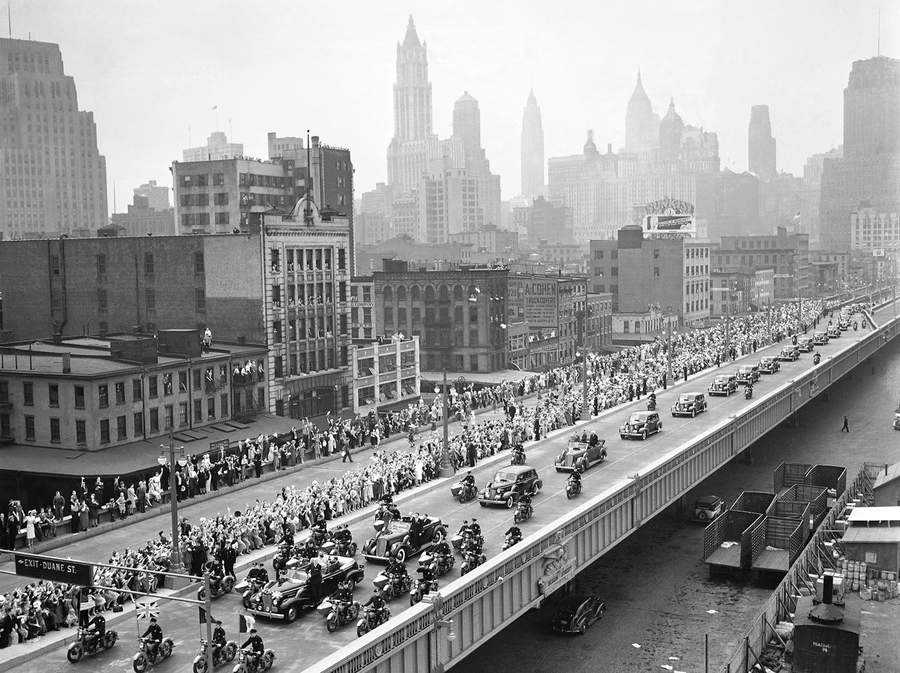
Above: New York City (1939)
In 1940, he took up engraving and etching, studying under Stanley William Hayter of Atelier 17 in Paris, producing surreal images that often accompanied Nin’s books.
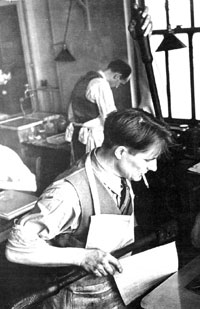
Above: English painter/printer Stanley William Hayter (1901 – 1988)
Guiler also received instruction in filmmaking from Alexander Hammid, who told him:
“Use the camera yourself.
Make your own mistakes.
Make your own style.”
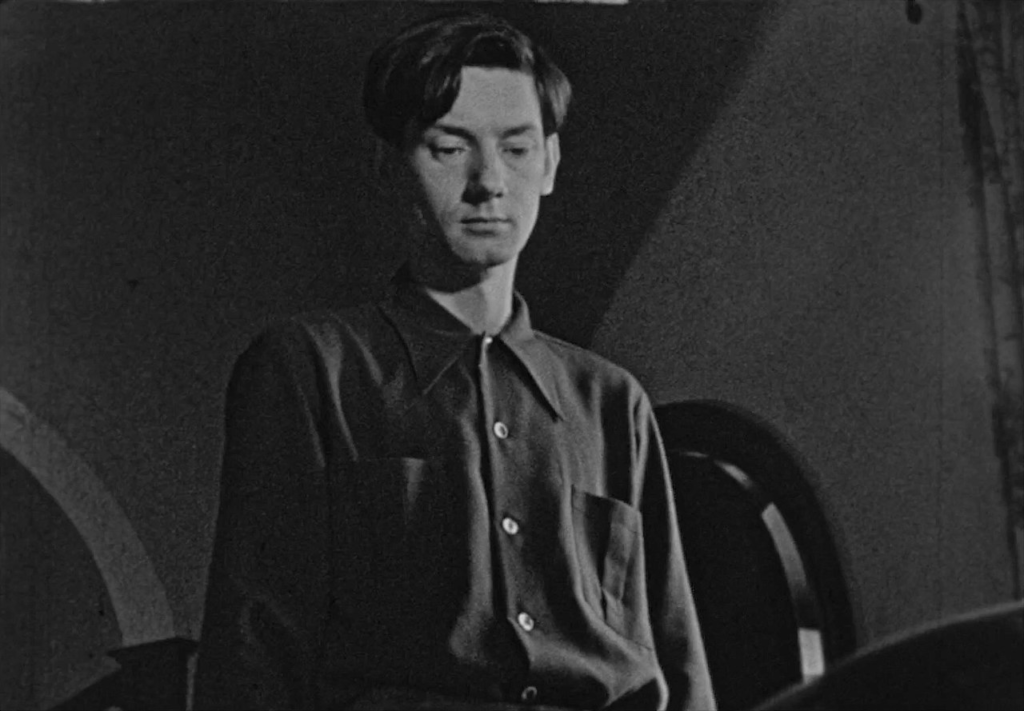
Above: Austrian filmmaker Alexander Hammid (né Hackenschmied) (1907 – 2004), Meshes of the Afternoon (1943)
Guiler used the name Ian Hugo in the 1940s when he began making experimental films, some starring Nin.
His successful banking career supported the artistic work of not only his wife but also her lover, Henry Miller, and to a lesser extent various others.
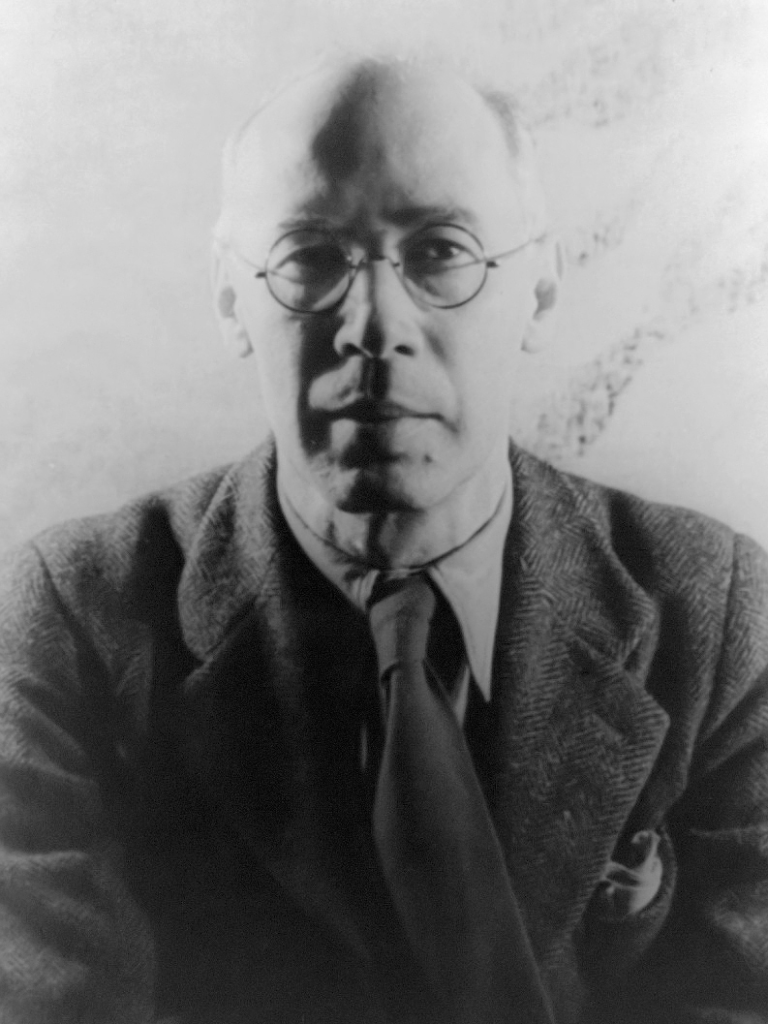
Above: American writer Henry Miller (1891 – 1980)
Hugo’s unusual tolerance and unconditional love, as well as his income, made Anaïs’s work and life possible for many years.
Then during the couple’s old age, this economic relationship flipped.
Starting in 1966, when the first of Anaïs’s diaries was published, her late-life literary success provided crucial financial support for them both.
None of Hugo’s artistic endeavors was ever financially successful.
His film Bells of Atlantis (1952) features a soundtrack of electronic music by Louis and Bebe Barron, and stars Nin as a mythical queen of Atlantis.
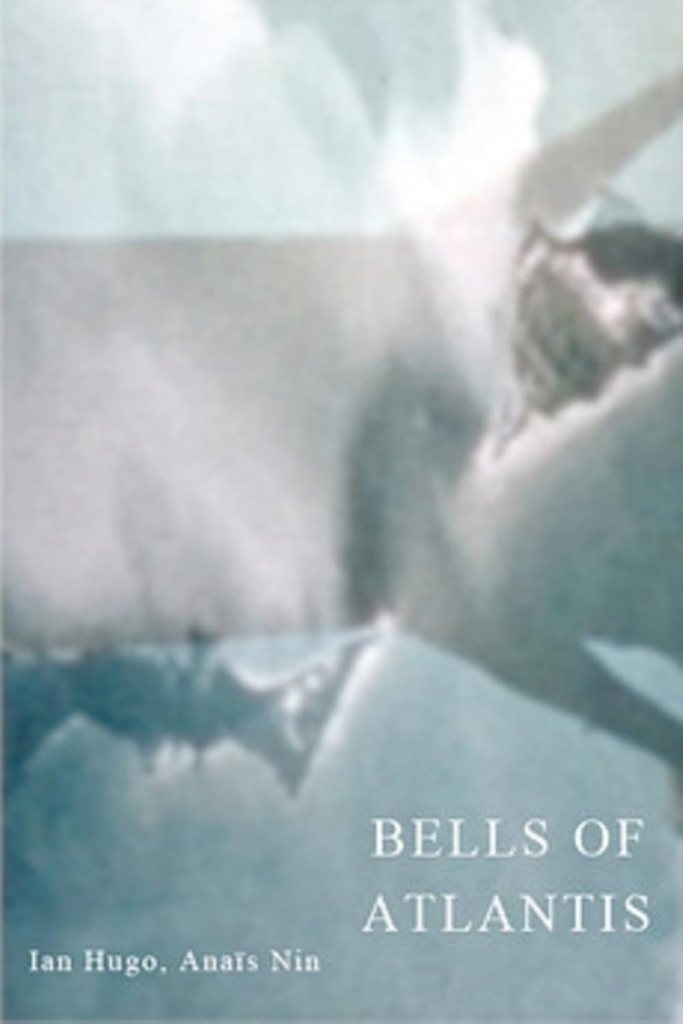
In Jazz of Lights (1954), also featuring a score by the Barrons, the street lights of Times Square become, in Nin’s words, “an ephemeral flow of sensations“.
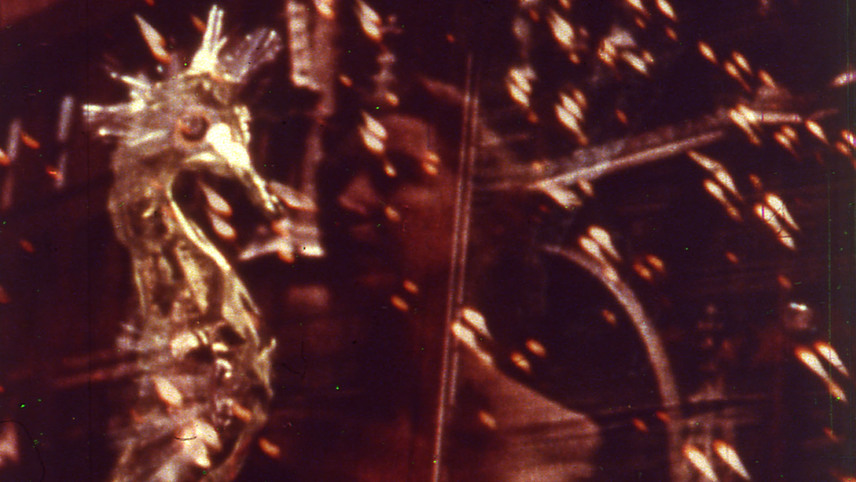
Above: Anaïs Nin, Jazz of Lights (1954)
Hugo lived the last two decades of his life in New York City, dictating his memoirs and continuing his engraving and filmmaking work.
He briefly met Nin’s other husband, Rupert Pole (1919 – 2006), (Nin was polygamous) after Nin’s death in 1977.
Even though Nin and Pole’s 1955 marriage was annulled in 1966, Pole was Nin’s literary executor after her death.
After Hugo’s death, Pole scattered his ashes at the same place as Nin’s, a cove on the coast at Santa Monica.
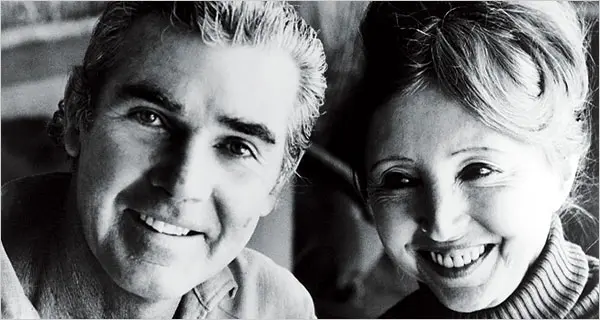
Above: Pole and Nin
The Guiler couple moved to Paris the following year, where Hugh pursued his banking career and Nin began to pursue her interest in writing.
In her diaries she also mentions having trained as a flamenco dancer in Paris in the mid-to-late 1920s with Francisco Miralles Arnau.
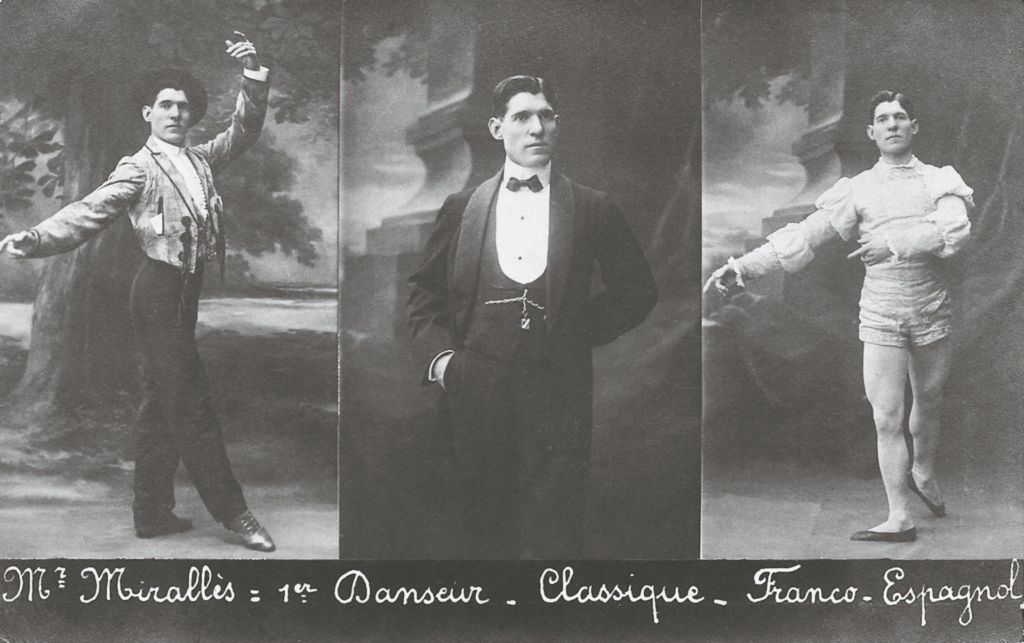
Above: Spanish dancer Francisco Miralles Arnau (1871 – 1932)
Her first published work was a critical 1932 evaluation of D. H. Lawrence called D. H. Lawrence: An Unprofessional Study, which she wrote in 16 days.
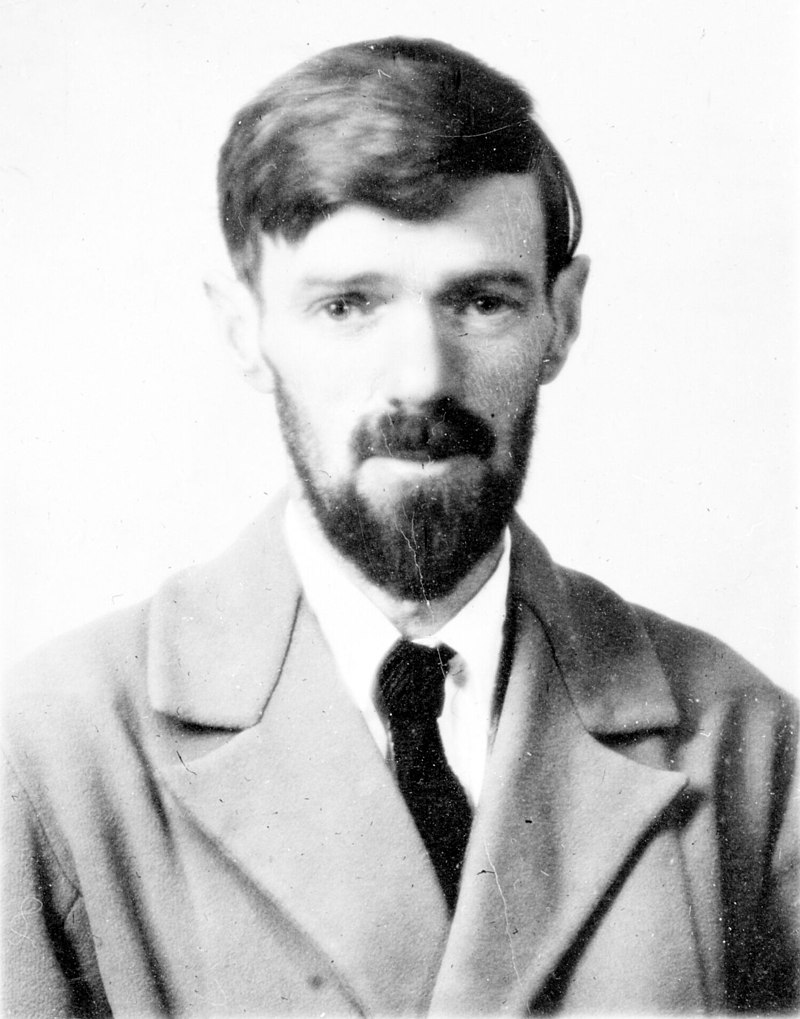
Above: English writer David Herbert Lawrence (1885 – 1930)
Life is a process of becoming, a combination of states we have to go through.
Where people fail is that they wish to elect a state and remain in it.
This is a kind of death.
D. H. Lawrence : An Unprofessional Study (1932)
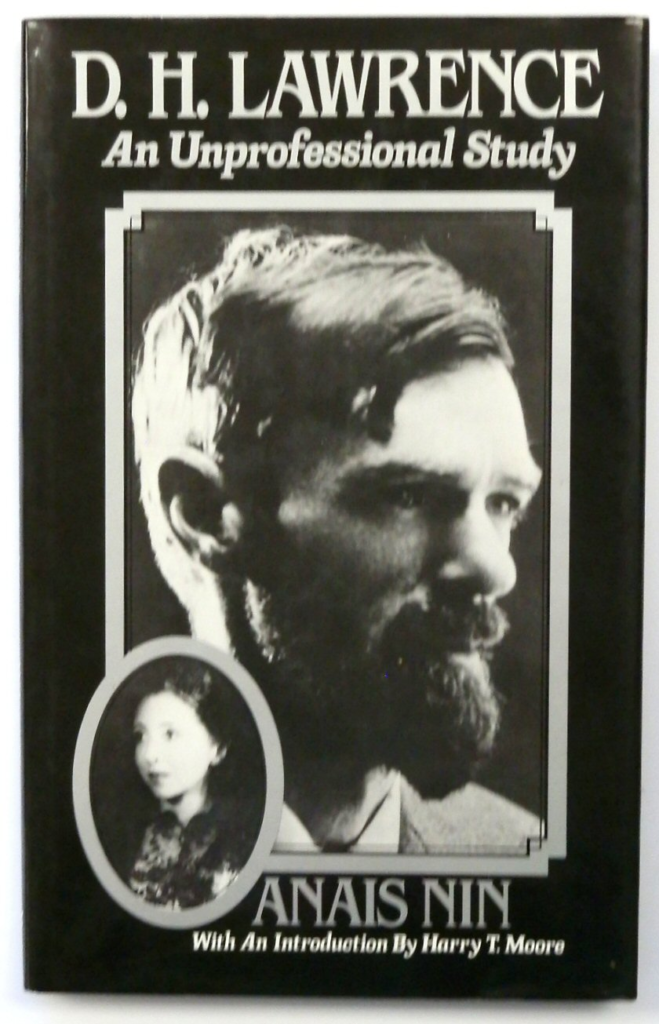
I had a feeling that Pandora’s box contained the mysteries of woman’s sensuality, so different from man’s and for which man’s language was inadequate.
The language of sex had yet to be invented.
The language of the senses was yet to be explored.
D. H. Lawrence began to give instinct a language, he tried to escape the clinical, the scientific, which only captures what the body feels.
Life is so fluid that one can only hope to capture the living moment, to capture it alive and fresh without destroying that moment.
Anais Nin quoted in D. H. Lawrence and Nine Women Writers (1996) by Leo Hamalian
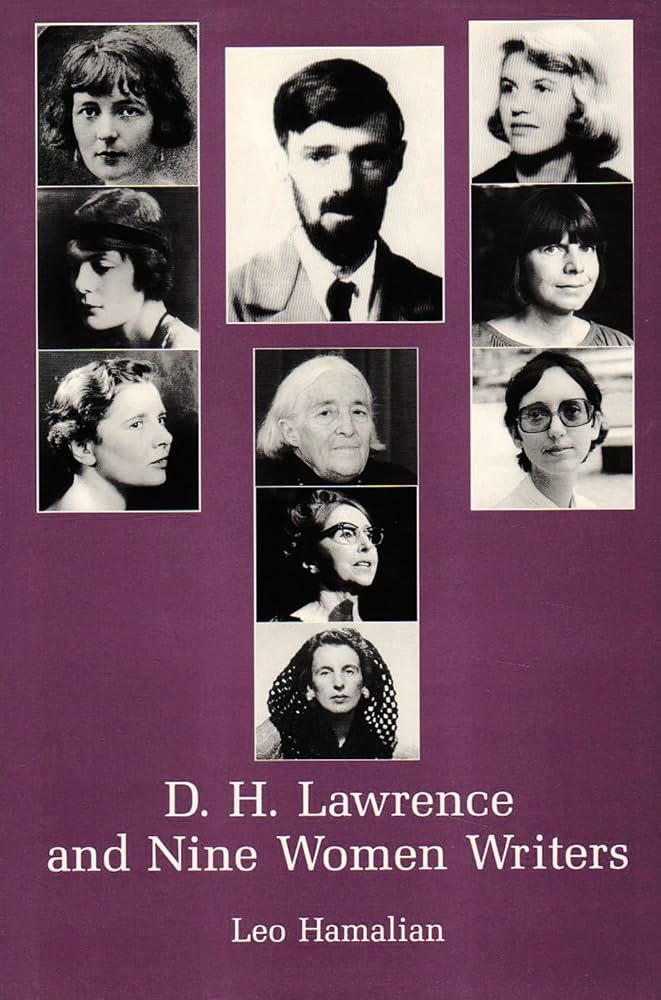
Nin became interested in psychoanalysis and studied extensively, first with René Allendy in 1932 and then with Otto Rank.
Both men eventually became her lovers, as she recounts in her Journal.
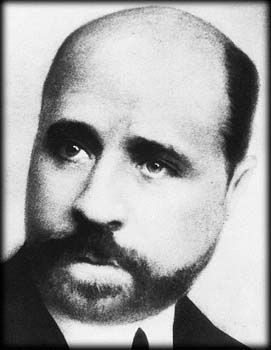
Above: French psychoanalyst Dr. René Allendy (1889 – 1942)
Allendy contracted pneumonia at three years and was a sickly child, affected by diphtheria and other serious ailments.
After successfully completing secondary school, he studied Russian and Swedish and obtained a medical degree from the School of Medicine in Paris in 1912.
A few days later, he married Yvonne Nel-Dumouchel, who was his companion and assistant until her death in 1935.
After the death of Yvonne, Allendy married her sister, Colette.
In 1914 he was mobilized for World War I, but after being diagnosed with tuberculosis, he returned to civilian life.
He practiced medicine in the hospitals of Léopold-Bellan and Saint-Jacques.
At the latter, between 1932 and 1939, he trialed a homeopathic treatment to prevent tuberculosis.
In 1922 he and his wife, Yvonne, established the Groupe d’études philosophiques et scientifiques pour l’examen des idées nouvelles at the Sorbonne, dedicated to the promotion of humanistic and scientific novelties.
It attracted a range of prominent artists to give talks.
In 1925 René Allendy described the aims of the group in terms of bringing together artists, scientists and other intellectuals from the universities.
The group continued until 1934.
Anaïs Nin described one of their events:
“In an amphitheatre at the Sorbonne.
The chaste and serious atmosphere of the class room.
Madame Allendy was there:
White hair, blue eyes, maternal, solid.“

Above: Coat of arms of the Université de Paris
In 1924, Allendy underwent psychoanalysis with René Laforgue and was trained to practice as an analyst himself.
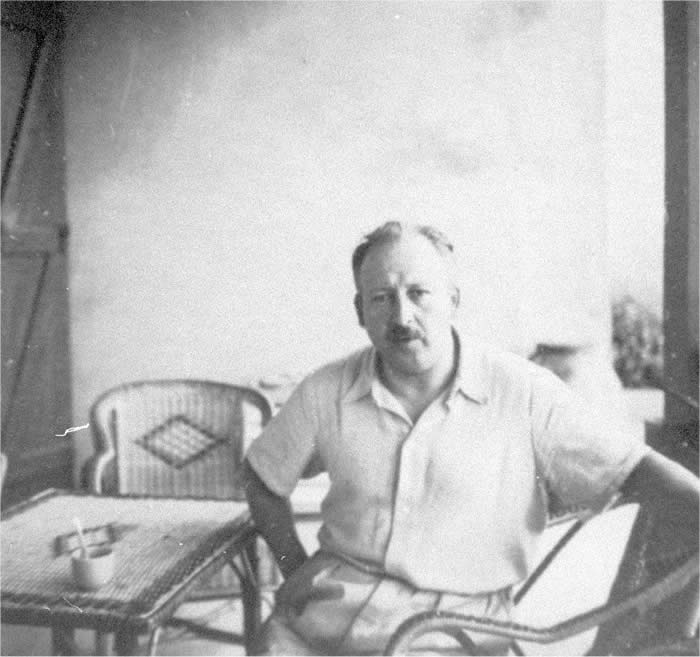
Above: French psychologist René Laforgue (1894 – 1962)
In 1926, Princess Marie Bonaparte, a protegée of Freud, helped found the Psychoanalytic Society of Paris, where Allendy worked as a secretary between 1928 and 1931.
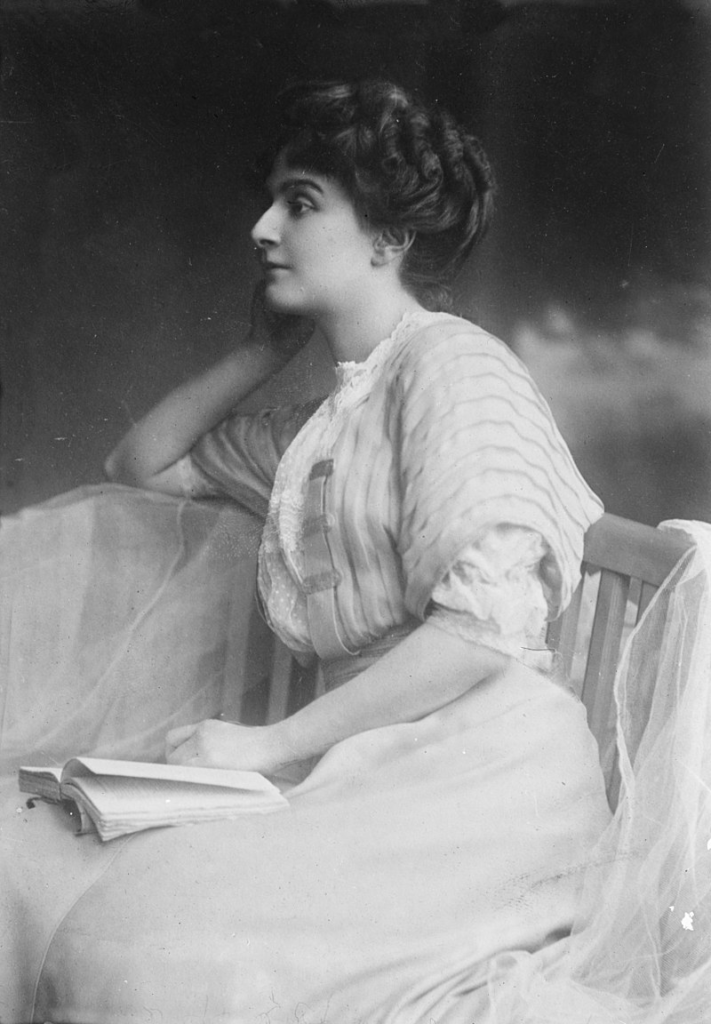
Above: French author/psychoanalyst Princess Marie Bonaparte (1882 – 1962)
In 1932, the writer Anaïs Nin was a patient, and later, a lover of Dr. Allendy.
The story of the relationship is described in detail in Nin’s diary, specifically in Henry and June.
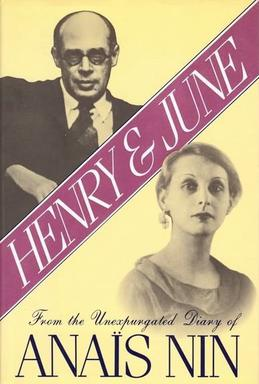
Dr. Allendy also analyzed Antonin Artaud.
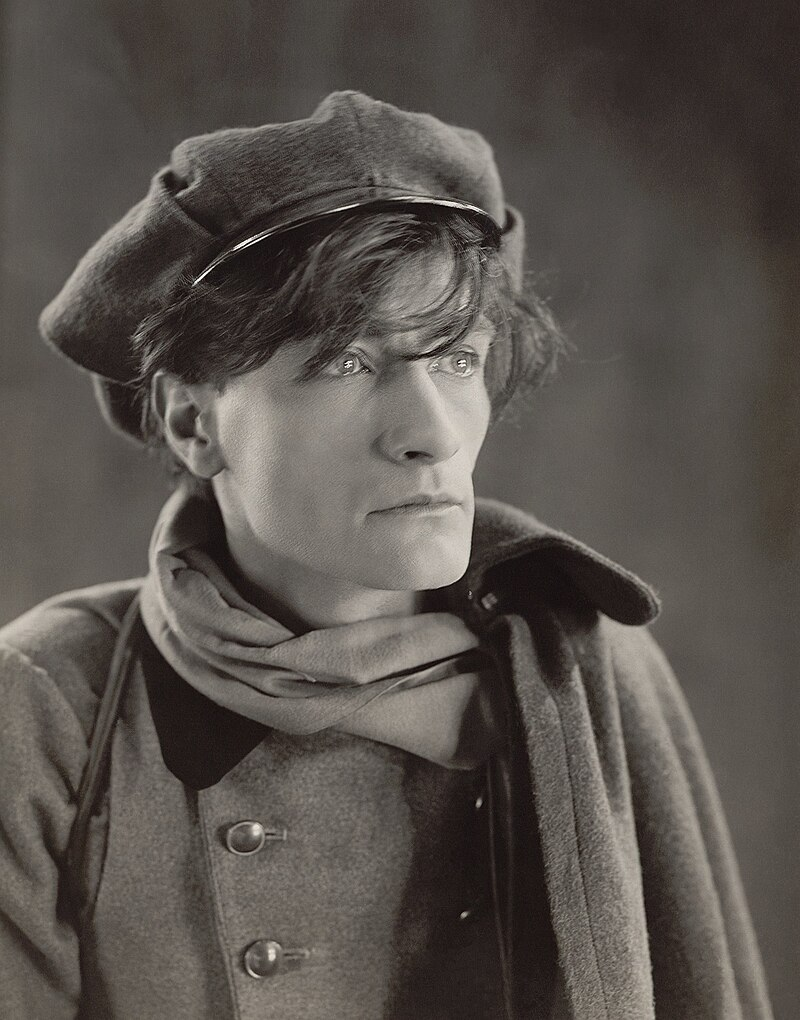
Above: French artist Antonin Artaud (1896 – 1948)
On her second visit to Rank, Nin reflects on her desire to be reborn as a woman and artist.
Rank, she observes, helped her move between what she could verbalize in her journals and what remained unarticulated.
She discovered the quality and depth of her feelings in the wordless transitions between what she could and could not say.
“As he talked, I thought of my difficulties with writing, my struggles to articulate feelings not easily expressed.
Of my struggles to find a language for intuition, feeling, instincts which are, in themselves, elusive, subtle, and wordless.“

Above: Otto Rank
Otto Rank (né Rosenfeld) (1884 – 1939) was an Austrian psychoanalyst, writer, and philosopher.
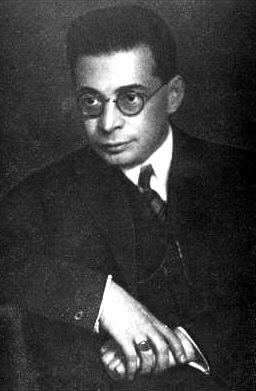
Above: Otto Rank
Born in Vienna, he was one of Sigmund Freud’s closest colleagues for 20 years, a prolific writer on psychoanalytic themes, editor of the two leading analytic journals of the era, including Internationale Zeitschrift für Psychoanalyse (“International Journal of Psychoanalysis”), managing director of Freud’s publishing house, and a creative theorist and therapist.
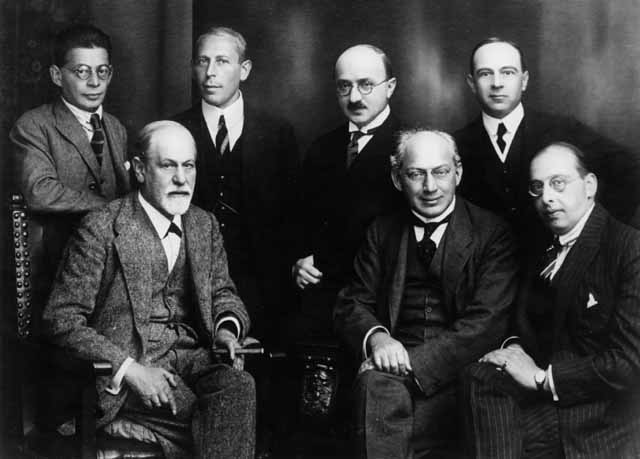
Above: The Committee (1922) – (from left to right): Otto Rank, Sigmund Freud, German psychoanalyst Karl Abraham (1877 – 1925), German psychoanalyst Max Eitingon (1881 – 1943), Hungarian psychoanalyst Sándor Ferenczi (1873 – 1933), Welsh psychoanalyst Ernest Jones (1879 – 1958) and Austrian psychoanalyst Hanns Sachs (1881 – 1947)
In 1926, Rank left Vienna for Paris and, for the remainder of his life, led a successful career as a lecturer, writer and therapist in France and the US.
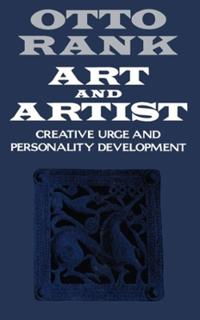
Rank was the first to see therapy as a learning and unlearning experience focusing on feelings.
The therapeutic relationship allows the patient to:
- learn more creative ways of thinking, feeling and being in the here-and-now
- unlearn self-destructive ways of thinking, feeling and being in the here-and-now.
Patterns of self-destruction (“neurosis“) represent a failure of creativity and not, as Freud assumed, a retreat from sexuality.
Rank’s psychoanalysis of creativity has recently been applied to action learning, an inquiry-based process of group problem solving, team building, leader development and organizational learning.
Transformative action learning involves real people working on real problems in real time.
Once a safe space is created by a learning coach, questions allow group members to “step out of the frame of the prevailing ideology“, as Rank wrote in Art and Artist, reflect on their assumptions and beliefs, and reframe their choices.
The process of “stepping out” of a frame, out of a form of knowing – a prevailing ideology – is analogous to the work of artists as they struggle to give birth to fresh ways of seeing the world, perspectives that allow them to see aspects of the world that no artists, including themselves, have ever seen before.
The heart of transformative action learning is asking powerful questions to promote the unlearning or letting go of taken-for-granted assumptions and beliefs.
The most creative artists know how to separate even from their own greatest public successes from earlier artistic incarnations of themselves.
Their “greatness consists precisely in this reaching out beyond themselves, beyond the ideology which they have themselves fostered“, according to Art and Artist.
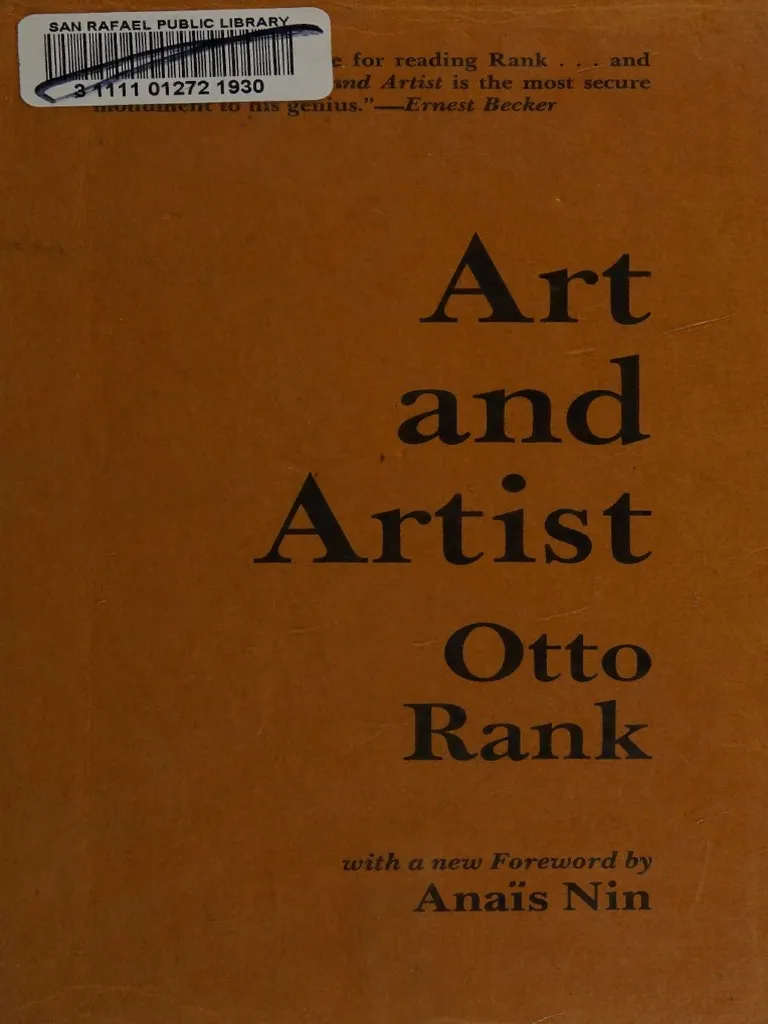
Through the lens of Otto Rank’s work on understanding art and artists, transformative action learning can be seen as the never-completed process of learning how to “step out of the frame” of any mindset, whether one’s own or the culture’s – in other words, of learning how to unlearn.
Comparing the process of unlearning to the “breaking out” process of birth, Rank was the first psychologist to suggest that a continual capacity to separate from “internal mental objects” – from internalized institutions, beliefs and neuroses, from the restrictions of culture, social conformity and received wisdom – is the sine qua non (without which not) for lifelong creativity.
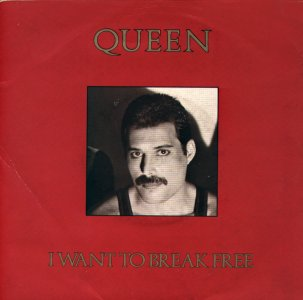
According to Rank, all feelings are grounded in the present.
In Will Therapy, published in German in 1931, Rank uses the term “here and now” for the first time in psychotherapeutic literature:
“Freud made the repression historical, that is, misplaced it into the childhood of the individual and then wanted to release it from there, while as a matter of fact the same tendency is working here and now.”
Instead of the word “Verdrängung” (“repression“), which laid stress on unconscious repression of the past, Rank preferred to use the word “Verleugnung” (“denial“), which focused instead on the emotional will to remain ill in the present:
“The neurotic lives too much in the past and to that extent he actually does not live.
He suffers because he clings to the past, wants to cling to it, in order to protect himself from experience, the emotional surrender to the present.”
In France and later in America, Rank enjoyed great success as a therapist and writer from 1926 to 1939.
Traveling frequently between France and America, Rank lectured at universities such as Harvard, Yale, Stanford, and the University of Pennsylvania on relational, experiential and “here-and-now” psychotherapy, art, the creative will, and “neurosis as a failure in creativity.”
Rank was the first to propose that separation from outworn thoughts, feelings and behaviors is the quintessence of psychological growth and development.
In the late 1920s, after he left Freud’s inner circle, Rank explored how human beings can learn to assert their will within relationships, and advocated a maximum degree of individuation (“difference“) within a maximum degree of connectedness (“likeness“).
Human beings need to experience both separation and union, without endlessly vacillating between the two poles.
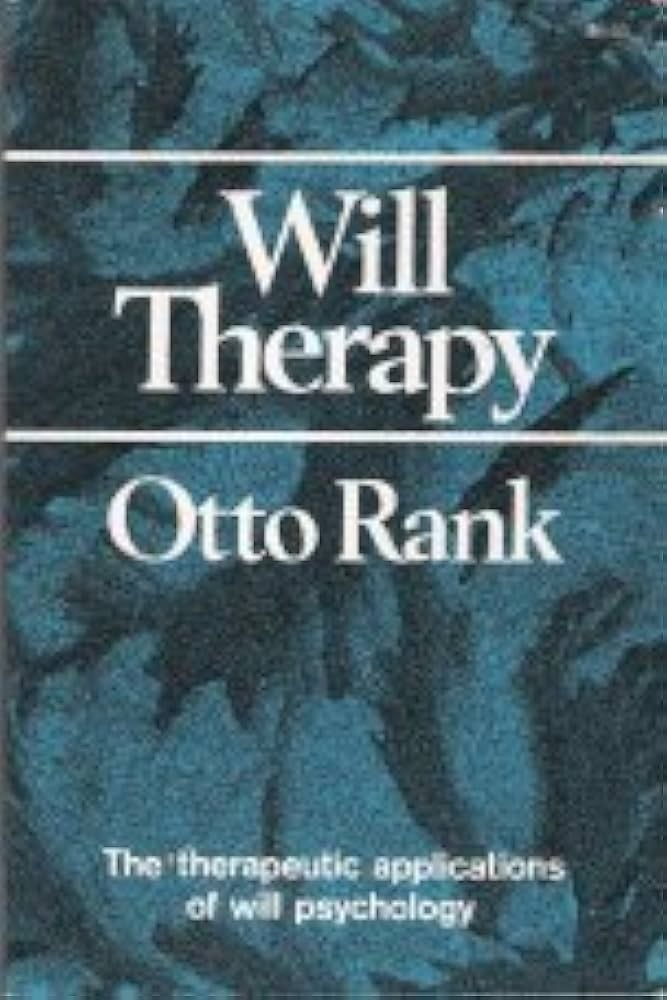
In a 1938 lecture at the University of Minnesota, Rank said:
“Life in itself is a mere succession of separations.
Beginning with birth, going through several weaning periods and the development of the individual personality, and finally culminating in death – which represents the final separation.
At birth, the individual experiences the first shock of separation, which throughout his life he strives to overcome.
In the process of adaptation, man persistently separates from his old self, or at least from those segments off his old self that are now outlived.
Like a child who has outgrown a toy, he discards the old parts of himself for which he has no further use.
The ego continually breaks away from its worn-out parts, which were of value in the past but have no value in the present.
The neurotic who cannot unlearn, and, therefore, lacks creativity is unable to accomplish this normal detachment process.
Owing to fear and guilt generated in the assertion of his own autonomy, he is unable to free himself, and instead remains suspended upon some primitive level of his evolution.”
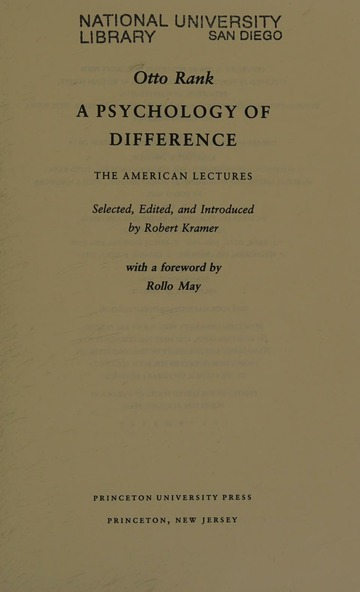
Reframing “resistance” as a creative function, not as opposition to interpretations offered by the psychoanalyst, Rank defined counterwill in the therapeutic relationship as a positive trait that defends the integrity of the self and helps in individuation, unlearning and the discovery of willing.
According to Rank, unlearning or breaking out of our shell from the inside is “a separation that is so hard, not only because it involves persons and ideas that one reveres, but because the victory is always, at bottom, and in some form, won over a part of one’s ego“.
In the organizational context, learning how to unlearn is vital because what we assume to be true has merged into our identity. We refer to the identity of an individual as a “mindset“. We refer to the identity of an organizational group as a “culture“. Action learners learn how to question, probe and separate from, both kinds of identity—i.e., their “individual” selves and their “social” selves. By opening themselves to critical inquiry, they begin to learn how to emancipate themselves from what they “know” – they learn how to unlearn.

In 1974, the cultural anthropologist Ernest Becker won the Pulitzer Prize for The Denial of Death (1973), which was based on Rank’s post-Freudian writings, especially Will Therapy, Psychology and the Soul and Art and Artist.
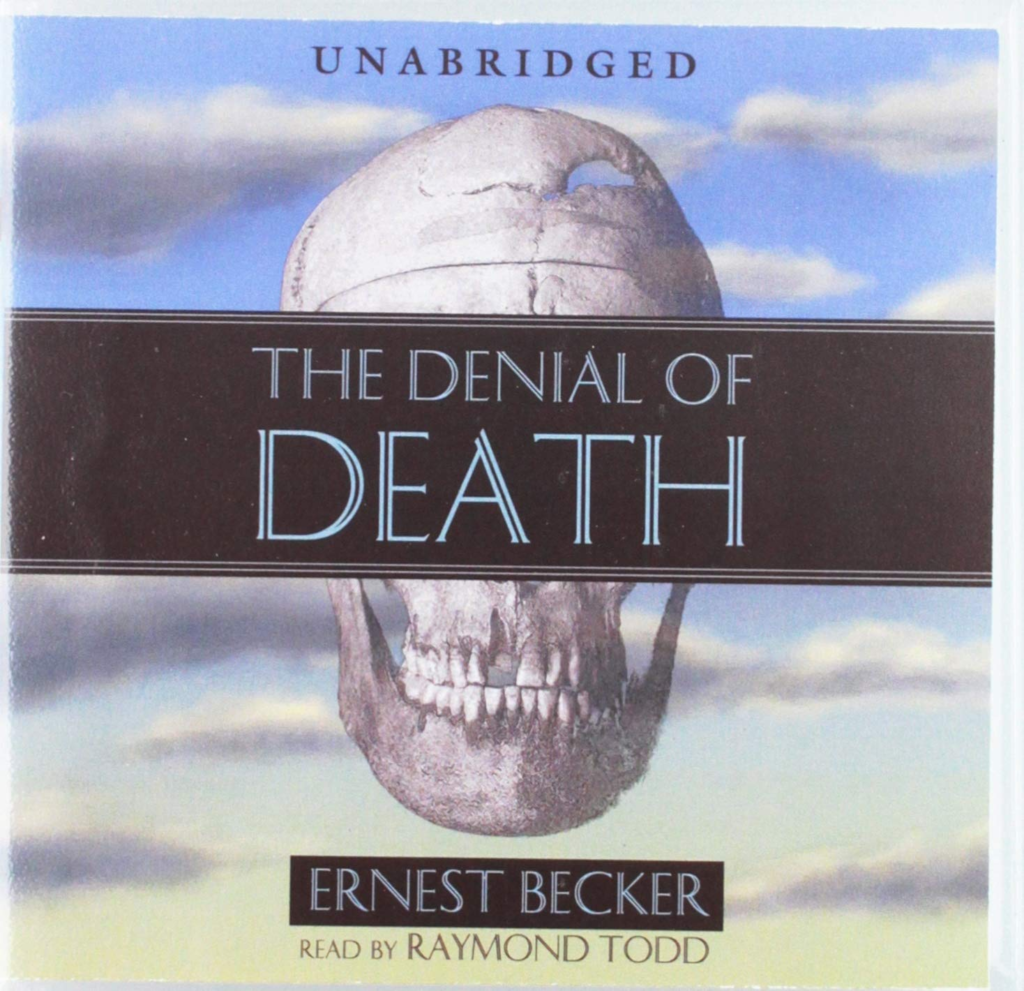
Becker’s posthumously published book, Escape from Evil (1975) was devoted in large measure to exploring Rank’s psychoanalysis rooted in the idea of history as a succession of immortality ideologies.
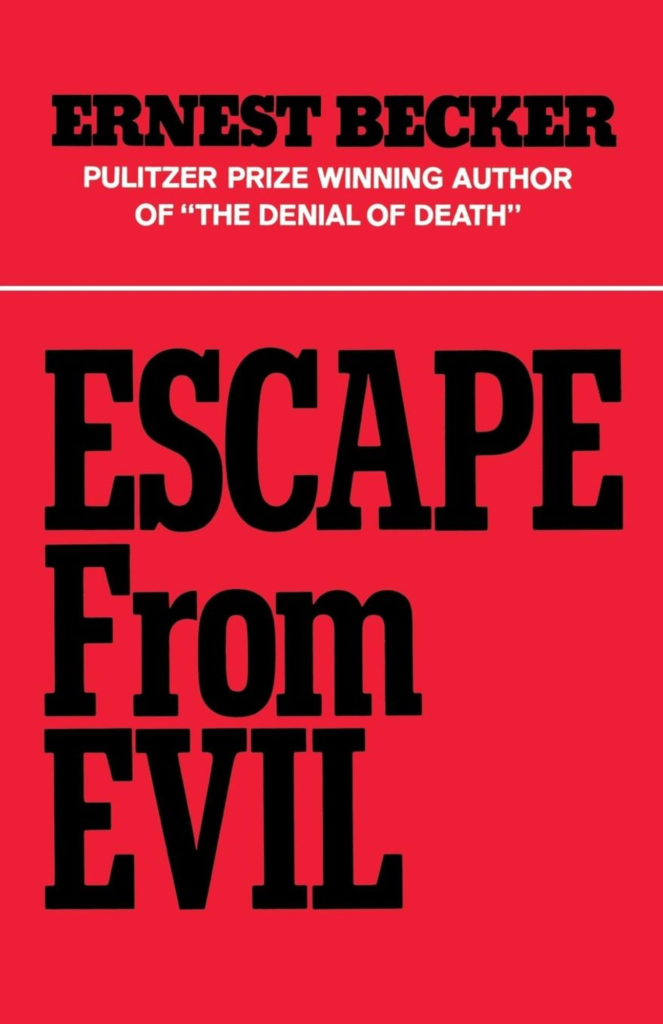
Through the influence of Ernest Becker’s writings, Rank’s dialectic between “life fear and death fear” has been tested experimentally by Skidmore College, the University of Arizona and the University of Colorado.
The American priest and theologian, Matthew Fox, founder of Creation Spirituality and Wisdom University, considers Rank to be one of the most important psychologists of the 20th century.
Stanislav Grof, a founder of transpersonal psychology, based much of his work in prenatal and perinatal psychology on Rank’s The Trauma of Birth.
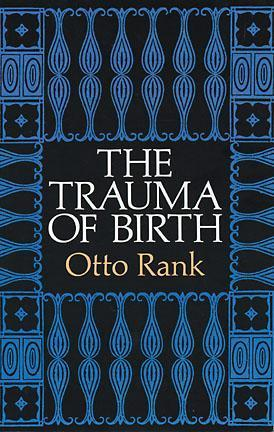
In 2008, the philosopher Maxine Sheets-Johnstone published The Roots of Morality (Pennsylvania State University Press).
“Because immortality ideologies were originally recognized and in fact so named by Rank, a close examination of his writings on the subject is not only apposite but is itself philosophically rewarding.
Rank was a Freudian dissident who, in introducing the concept of immortality ideologies, traced out historical and psychological roots of ‘soul-belief‘.
My chapter points up the extraordinary cogency of Rank’s distinction between the rational and the irrational to the question of the human need for immortality ideologies.”
Sheets-Johnstone concludes her book on a note reminiscent of Rank’s plea for the human value of mutual love over arid intellectual insight:
“Surely it is time for Homo sapiens sapiens to turn away from the pursuit of domination over all and to begin cultivating and developing its sapiential wisdom in the pursuit of caring, nurturing and strengthening that most precious muscle which is its heart.”
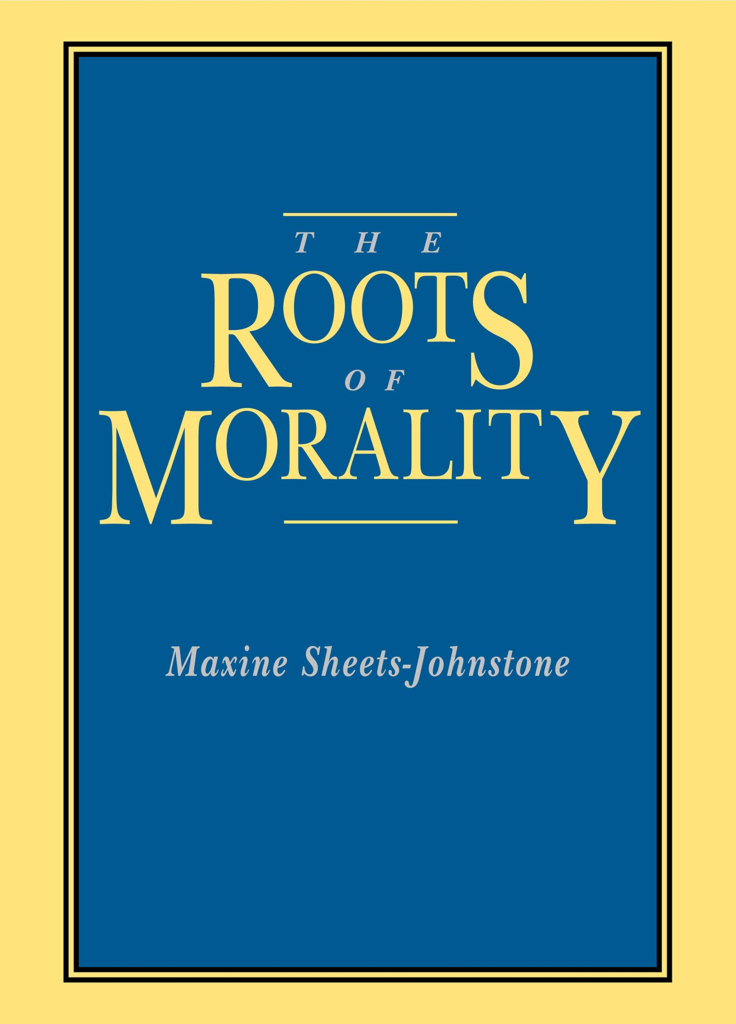
Winter of Artifice, published in 1939, is Anaïs Nin’s second published book, containing subsequently alternating novelettes.
She wrote this novel simultaneously as the book depicting her incestuous relationship with her father, called at the time “The Double“.
This Paris version contained three novelettes:
- “Djuna“, a story that was never again reprinted
- “Lilith“, whose title was changed to “Winter of Artifice” in future editions
- “The Voice“, whose title remained the same but whose content was heavily revised over future editions
“Djuna” is said to be a fictionalized version (what she referred to as ‘caricatured’) of the story eventually told in the portion of Nin’s diary later published as Henry and June.
The two “Father” sections, “Stella” and “Winter of Artifice” show how her own father, though successful as a musician, was “a failure as a human being” and the source of much of the chaos in Anaïs’s life.
She resented critics calling it autobiographical, but changing the names hardly helped.
One has only one father.
Most of it is taken from the Incest and Fire sections of her diaries and polished.
Stella’s exterior resembles the description of Anaïs’s friend Luise Rainer in the published diaries.
The plot is that because she had lost trust in love when her father left her family and because echoes of her love for her father clung to her, she avoided pain by choosing a superficial relationship with a Don Juan like her father.
The events of Stella’s love life are not from the diaries, but most of the father’s effects on Stella’s personality are.
The third section, “The Voice”, is written in the form of a surrealistic caricature of a psychoanalytic practice in New York City.
Anaïs had been in psychoanalysis two or three times, had briefly studied and practiced psychoanalysis and had love affairs with two of her psychoanalysts, at the time this was published.
In addition to the Voice (a psychoanalyst), the main characters are Djuna and Lilith.
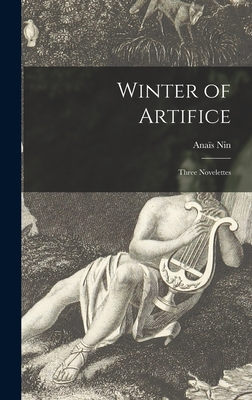
In late summer 1939, when residents from overseas were urged to leave France due to the approaching war, Nin left Paris and returned to New York City with her husband.
(Guiler was, according to his own wishes, edited out of the diaries published during Nin’s lifetime.
His role in her life is therefore difficult to evaluate.).
During the war, Nin sent her books to Frances Steloff of the Gotham Book Mart in New York for safekeeping.
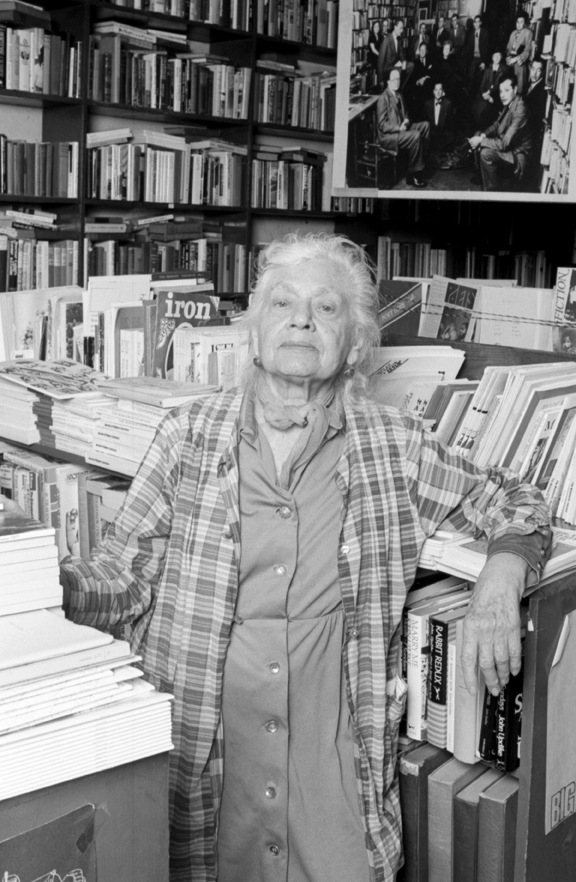
Above: American founder of the Gotham Book Mart (1920 – 2007) in New York City, a center for avant-garde literature and literati, Frances Steloff (1887 – 1989)
In New York, Nin rejoined Otto Rank, who had previously moved there, and moved into his apartment.
She actually began to act as a psychoanalyst herself, seeing patients in the room next to Rank’s.
She quit after several months, however, stating:
“I found that I wasn’t good because I wasn’t objective.
I was haunted by my patients.
I wanted to intercede.”
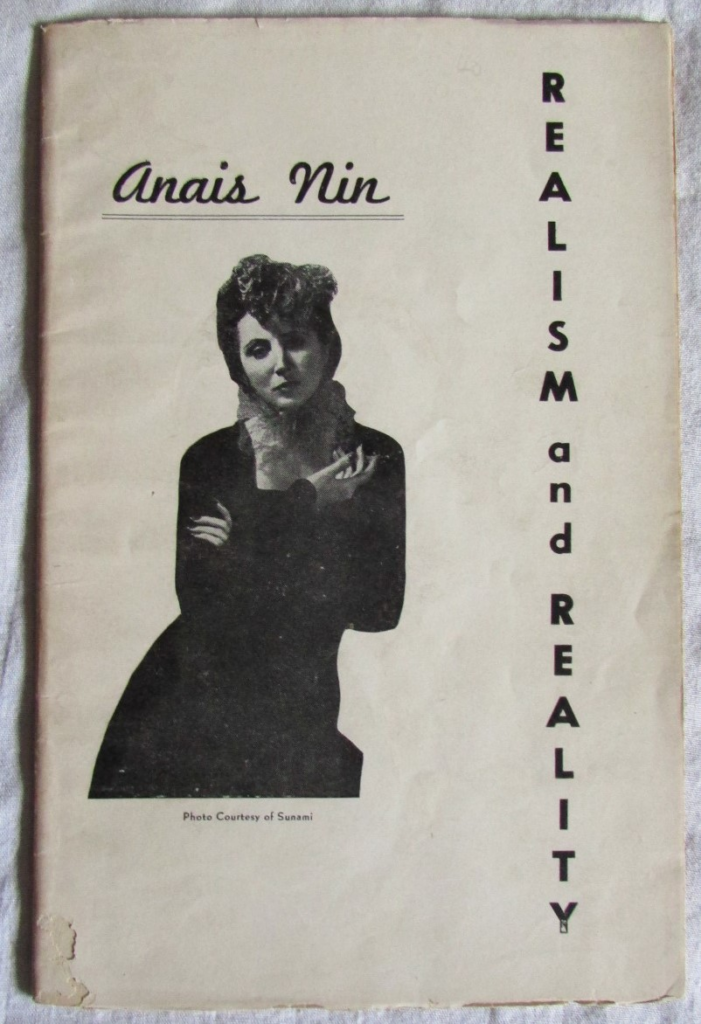
It was in New York that she met the Japanese-American modernist photographer Soichi Sunami, who went on to photograph her for many of her books.
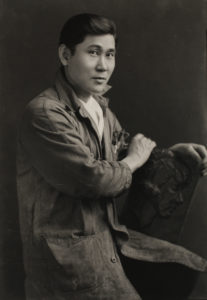
Above: Japanese photographer Soichi Sunami (1885 – 1971)
Nin’s most studied works are her diaries or journals, which she began writing in her adolescence.
The published journals, which span six decades, provide insight into her personal life and relationships.
Nin was acquainted, often intimately, with a number of prominent authors, artists, psychoanalysts, and other figures, and wrote of them often, especially Otto Rank.
Moreover, as a female author describing a primarily masculine group of celebrities, Nin’s journals have acquired importance as a counterbalancing perspective.
She initially wrote in French and did not begin to write in English until she was 17.
Nin felt that French was the language of her heart, Spanish was the language of her ancestors, and English was the language of her intellect.
The writing in her diaries is explicitly trilingual.
She uses whichever language best expresses her thought.
In the second volume of her unexpurgated journal, Incest, she wrote about her father candidly and graphically, detailing her incestuous adult sexual relationship with him.
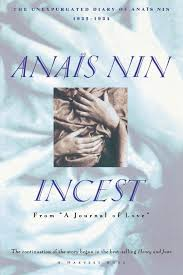
Previously unpublished works were released in A Café in Space, the Anaïs Nin Literary Journal, which includes “Anaïs Nin and Joaquín Nin y Castellanos: Prelude to a Symphony – Letters between a father and daughter“.
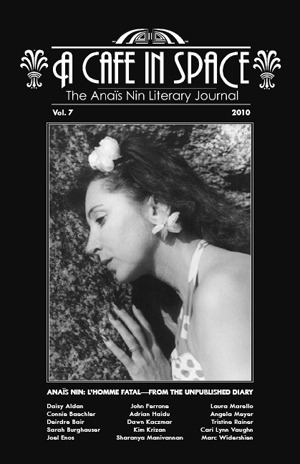
“I saw a café.
A café on the street, with an opened door and one small table outside, just big enough for two persons, two glasses of wine, two small iron chairs, a diminutive café, shabby, with a faded sign, a dull window, lopsided walls, uneven roof.
The smallness of it, the intimacy of it, the humanity of proportion, the absence of arrogance, the absence of gloss and glitter touched me.
One can sit in such a café even if one’s hair is not perfectly in place and even with a run in one’s stockings.
One could sit there and feel unique, in tune with the world or out of tune, feel human, open to human emotion and wanting to weep.
One could sit there if one felt the world too big, too barbaric, and once more experience a human setting, a proper setting for a human being who does not feel arrogant, glossy, powerful.
The small café and tenderness were not gone, the patina of much living, the worn, the tired, the wistful, my café, my Paris, where a soul can be a little worn, where it does not have to be shop-new, shop-glossy, hard and brittle.“
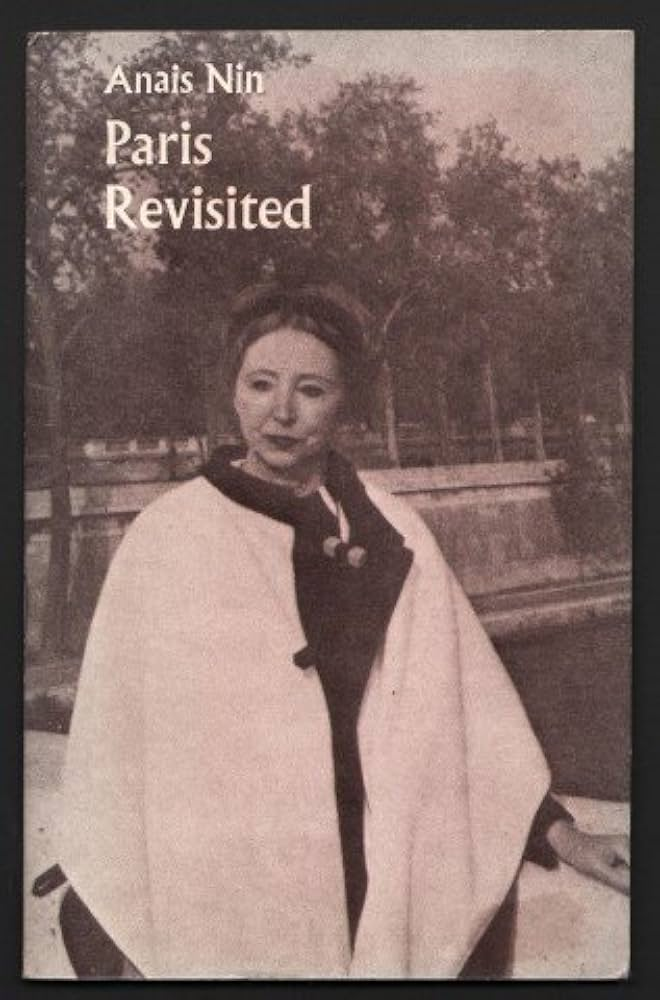
So far 16 volumes of her journals have been published.
All but the last five of her adult journals are in expurgated form.
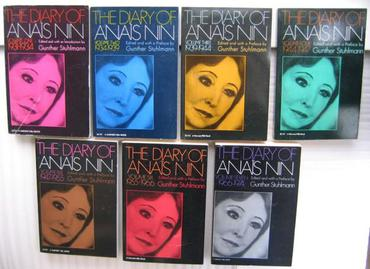
The Diary of Anaïs Nin is the published version of Anaïs Nin’s own private manuscript diary, which she began at age 11 in 1914 during a trip from Europe to New York with her mother and two brothers.
Nin would later say she had begun the diary as a letter to her father, Cuban composer Joaquín Nin, who had abandoned the family a few years earlier.
Over the years, the diary would become Nin’s best friend and confidante.
Despite the attempts of her mother, therapists Rene Allendy and Otto Rank, and writer Henry Miller, to break Nin of her dependence on the diary, she would continue to keep a diary up until her death in 1977.
As early as the 1930s Nin had sought to have the diary published.
Due to its size (in 1966, the diary contained more than 15,000 typewritten pages in some 150 volumes) and literary style, she would not find a publisher until 1966, when the first volume of her diary would be published, covering the years 1931–1934 in her life.
The published version of her diary would be very popular among young women, making Nin a feminist icon in the 1960s.
Six more volumes of her diary would follow.
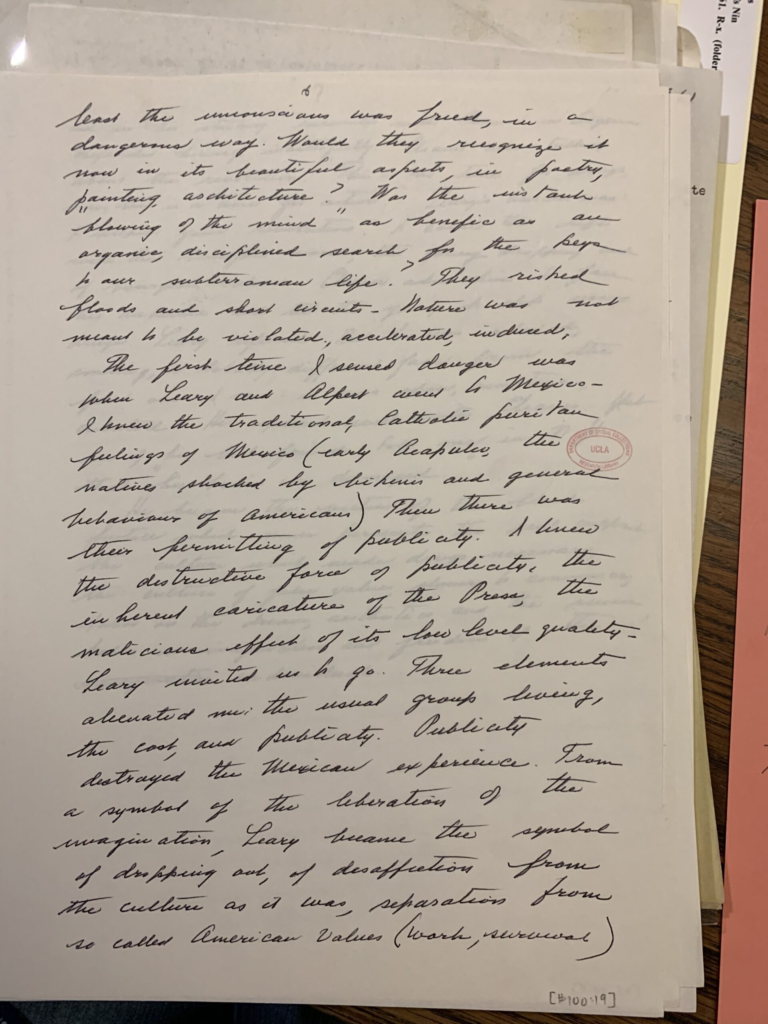
Linotte, the early diaries of Anais Nin (1914 – 1931), include the period, when she returns from New York to Paris, and has difficulty adjusting, accepting and making the sort of artistic friends she is used to.
Her discomfort with sexuality “sensuality” begins to be eroded, at least intellectually.
She is uncomfortable with the more open sexuality of France.
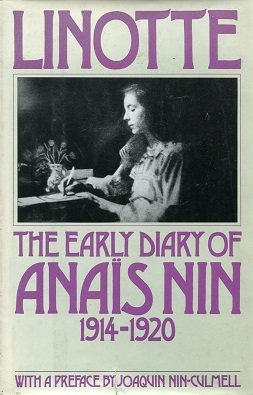
Henry and June (1931 – 1932) spans a single year in Nin’s life when she discovers love and torment in one insatiable couple.
From late 1931 to the end of 1932, Nin falls in love with Henry Miller’s writing and his wife June’s striking beauty.
When June leaves Paris for New York, Henry and Nin begin a fiery affair that liberates her sexually and morally, but also undermines her marriage and eventually leads her into psychoanalysis.
As she grapples with her own conscience, a single question dominates her thoughts:
What will happen when June returns to Paris?
An intimate account of one woman’s sexual awakening, Henry and June exposes the pain and pleasure felt by a single person trapped between two loves.
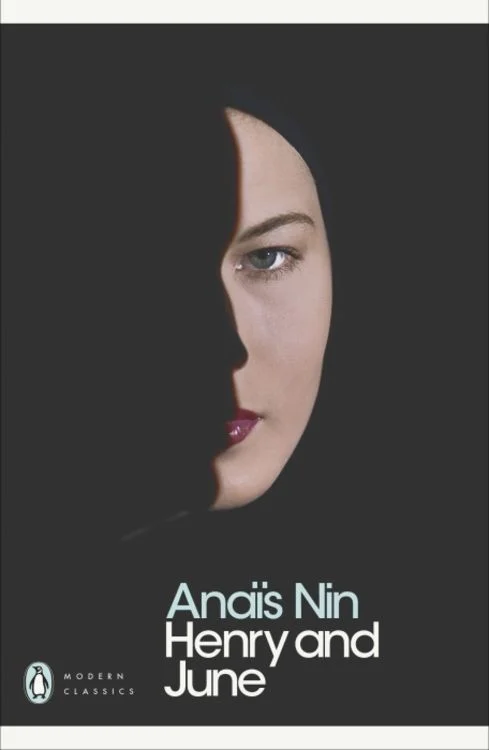
Incest (1932 – 1934) is the continuation of the story begun in Henry and June, exposing the shattering psychological drama that drove Nin to seek absolution from her psychoanalysts for the ultimate transgression.
This portion of Nin’s diary, which was cut from the expurgated editions published in her lifetime, records her steamy love affair with Henry Miller in Paris, but here her intense adoration gives way to disillusionment.
She describes Miller as crude, egotistic, imitative, childishly irresponsible, “a madman“.
Her real focus, however, is her father, Joaquin Nin, a Spanish pianist and aristocratic Don Juan who seduced her after a 20-year absence.
Her graphic account of their lovemaking and of her incestuous romantic feelings is fairly shocking.
Nin sought absolution from her psychiatrist and lover, Otto Rank, who advised her to bed her father, then dump him as punishment for abandoning her when she was 10.
Nin’s ornate, hothouse prose is much rawer than the chiseled style of the expurgated diaries.
She seethes with jealousy at Miller’s wife June, swoons over poet and actor Antonin Artaud, neglects her protective husband, Hugh Guiler, and describes her traumatic delivery of a stillborn child.
Her extraordinary, tangled self-analysis is a disarming record of her emotional and creative growth.
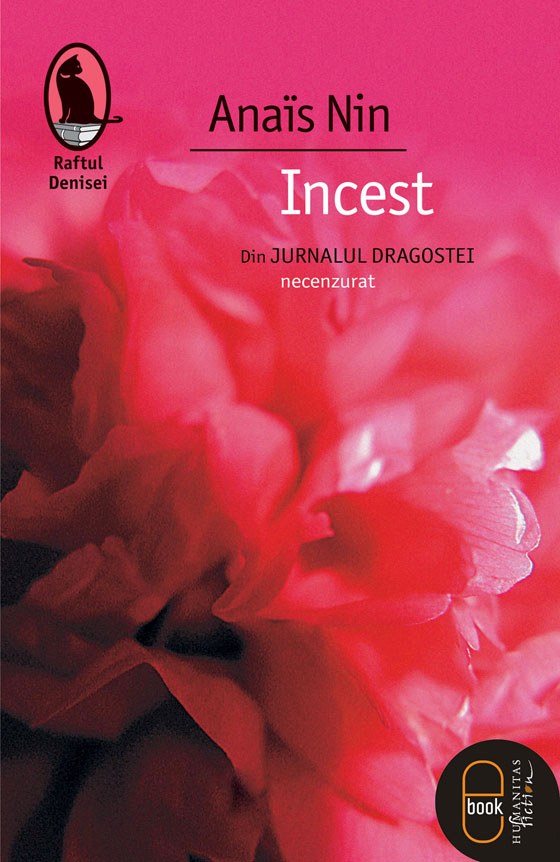
Henry and June along with Incest are the unexpurgated versions of her expurgated Volume I (1931 – 1934), which depicts Nin living in Louveciennes, just outside Paris, with her husband, banker Hugh Parker Guiler.
Guiler’s name is not once mentioned in this volume.
Volume One covers the most important years of her relationship with Henry Miller.
She has just published her study of D. H. Lawrence.
Many of the early entries deal with Henry and his fascinating wife June.
She discusses her psychoanalytic sessions with René Allendy and Otto Rank at length.
During this period, her father re-enters her life.
By the end of this volume, Henry has published Tropic of Cancer and she had completed House of Incest (published, 1936) and Winter of Artifice (published 1939).
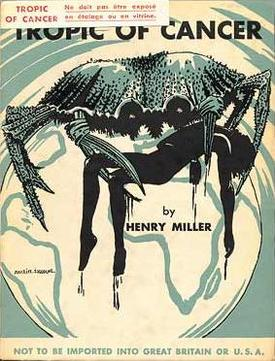
During his time, Henry Miller started to influence the writings published in Louveciennes in 1966.
Nin’s impression of Miller was rather startling, as she fell in contemplation of his literacy.
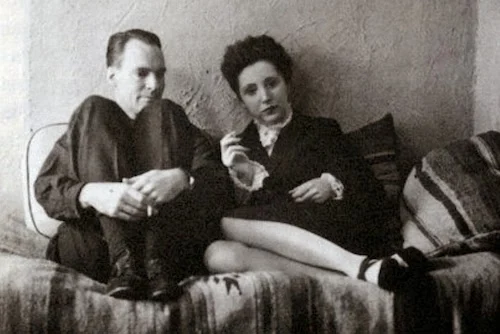
Above: Miller and Nin
You live like this, sheltered, in a delicate world, and you believe you are living.
Then you read a book (Lady Chatterley, for instance), or you take a trip, or you talk with Richard, and you discover that you are not living, that you are hibernating.
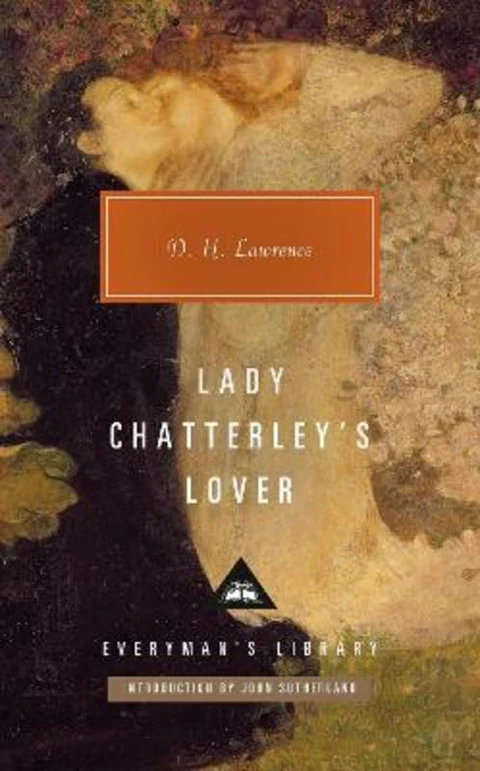
The symptoms of hibernating are easily detectable:
- restlessness
- absence of pleasure
That is all.
It appears like an innocuous illness.
Monotony, boredom, death.
Millions live like this (or die like this) without knowing it.
They work in offices.
They drive a car.
They picnic with their families.
They raise children.
And then some shock treatment takes place, a person, a book, a song.
It awakens them and saves them from death.
I had always believed in André Breton’s freedom, to write as one thinks, in the order and disorder in which one feels in thinks, to follow sensations and absurd correlations of events and images, to trust to the new realms they lead one into.
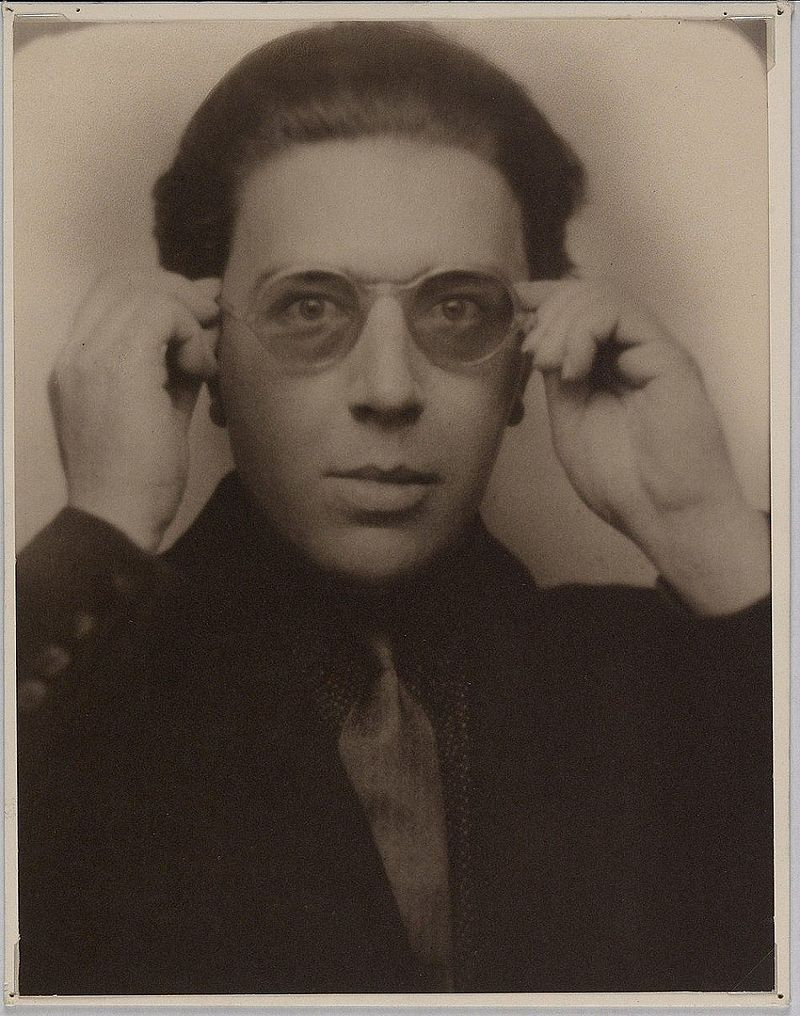
Above: French artist André Breton (1896 – 1966)
“The cult of the marvelous“.
Also the cult of the unconscious leadership, the cult of mystery, the evasion of false logic.
The cult of the unconscious as proclaimed by Rimbaud.
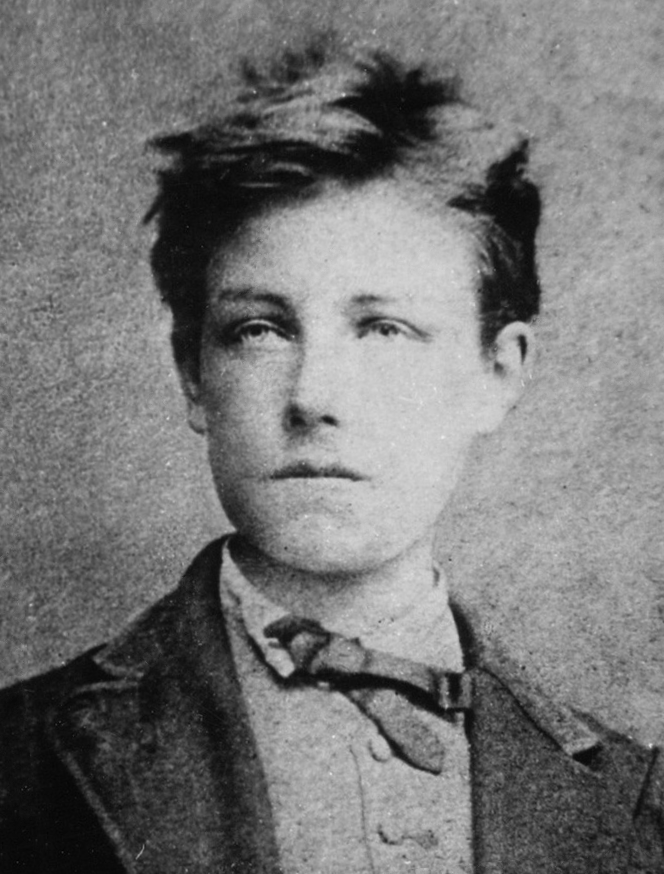
Above: French poet Arthur Rimbaud (1854 – 1891)
It is not madness.
It is an effort to transcend the rigidities and the patterns made by the rational mind.
Ordinary life does not interest me.
I seek only the high moments.
I am in accord with the surrealists, searching for the marvelous.
The truly faithless one is the one who makes love to only a fraction of you.
And denies the rest.
For you and for me the highest moment, the keenest joy, is not when our minds dominate but when we lose our minds.
My life is slowed up by thought and the need to understand what I am living.
Passion gives me moments of wholeness.
We don’t have a language for the senses.
Feelings are images, sensations are like musical sounds.
Man can never know the kind of loneliness a woman knows.
Man lies in a woman’s womb only to gather strength, he nourishes himself from this fusion, and then he rises and goes into the world, into his work, into battle, into art.
He is not lonely.
He is busy.
The memory of the swim in amniotic fluid gives him energy, completion.
The woman may be busy too, but she feels empty.
Sensuality for her is not only a wave of pleasure in which he has bathed, and a charge of electric joy at contact with another.
When man lies in her womb, she is fulfilled, each act of love is a taking of man within her, and act of birth and rebirth, of child bearing and man bearing.
Man lies in her womb and is reborn each time anew with a desire to act, to BE.
But for a woman, the climax is not in the birth, but in the moment when man rests inside of her.
Women always think that when they have my shoes, my dress, my hairdresser, my makeup, it will all work the same way.
They do not conceive of the witchcraft that is needed.
They do not know that I am not beautiful but that I only appear to be at certain moments.
Nothing too long imagined can be perfect in a worldly way.
Love reduces the complexity of living.
The basis of insincerity is the idealized image we hold of ourselves and wish to impose on others.
To lie, of course, is to engender insanity.
I see myself wrapped in lies, which do not seem to penetrate my soul, as if they are not really a part of me.
They are like costumes.
There will never be darkness because in both of us there’s always movement, renewal, surprises.
I have never known stagnation.
Not even introspection has been a still experience.
You are so terribly nimble, so clever.
I distrust your cleverness.
You make a wonderful pattern, everything is in its place, it looks convincingly clear, too clear.
And meanwhile, where are you?
Not on the clear surface of your ideas, but you have already sunk deeper, into darker regions, so that one only thinks one has been given all your thoughts, one only imagines you have emptied yourself in that clarity.
But there are layers and layers — you’re bottomless, unfathomable.
Your clearness is deceptive.
You are the thinker who arouses most confusion in me, most doubt, most disturbance.
This abdiction of life demanded of the artist is to be achieved only relatively.
Most artists have retired too absolutely.
They grow rusty, inflexible to the flow of currents.
The Diary Of Anaïs Nin, Volume One (1931-1934)
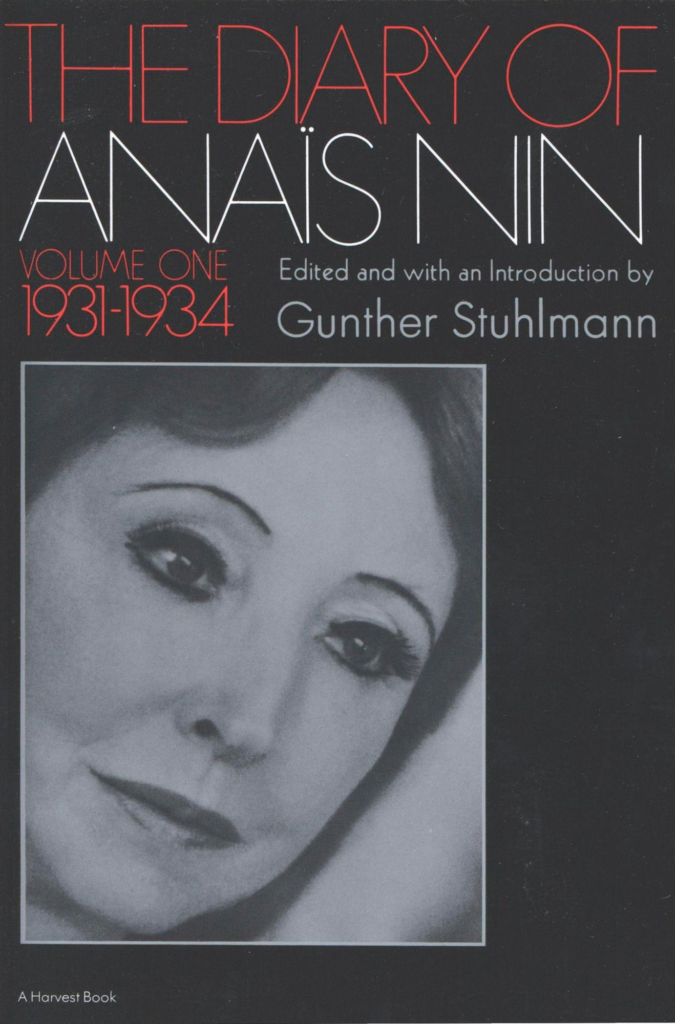
Fire (1934 – 1937), the third volume of Nin’s provocative and provoking uncensored diaries, published in 1996, finds our madly scribbling femme fatale in New York, where she has gone to get away from her doggedly loyal husband and from adored lover Henry Miller and indulge her fancy for analyst Otto Rank.
Once again, Nin is blithely honest about her profound dishonesty, admitting that she loves telling “marvelous lies” to the men who desire her.
She tires of Rank just as Miller and her husband catch up with her, then, suddenly, enters a whole new realm of potent romance with a fiery man of Inca descent, Gonzalo More.
More, a man of conscience and lyrical intensity, inspires Nin to new poetic and mystical heights.
These unexpurgated volumes are of particular interest to readers of the original published versions because they fill in so many puzzling omissions, but they are also remarkable for their audacity and prolificity.
Just one page of Nin’s extraordinary diaries contains more sex, melodrama, fantasies, confessions, and observations than most novels, and reflects much about the human psyche we strive to repress.
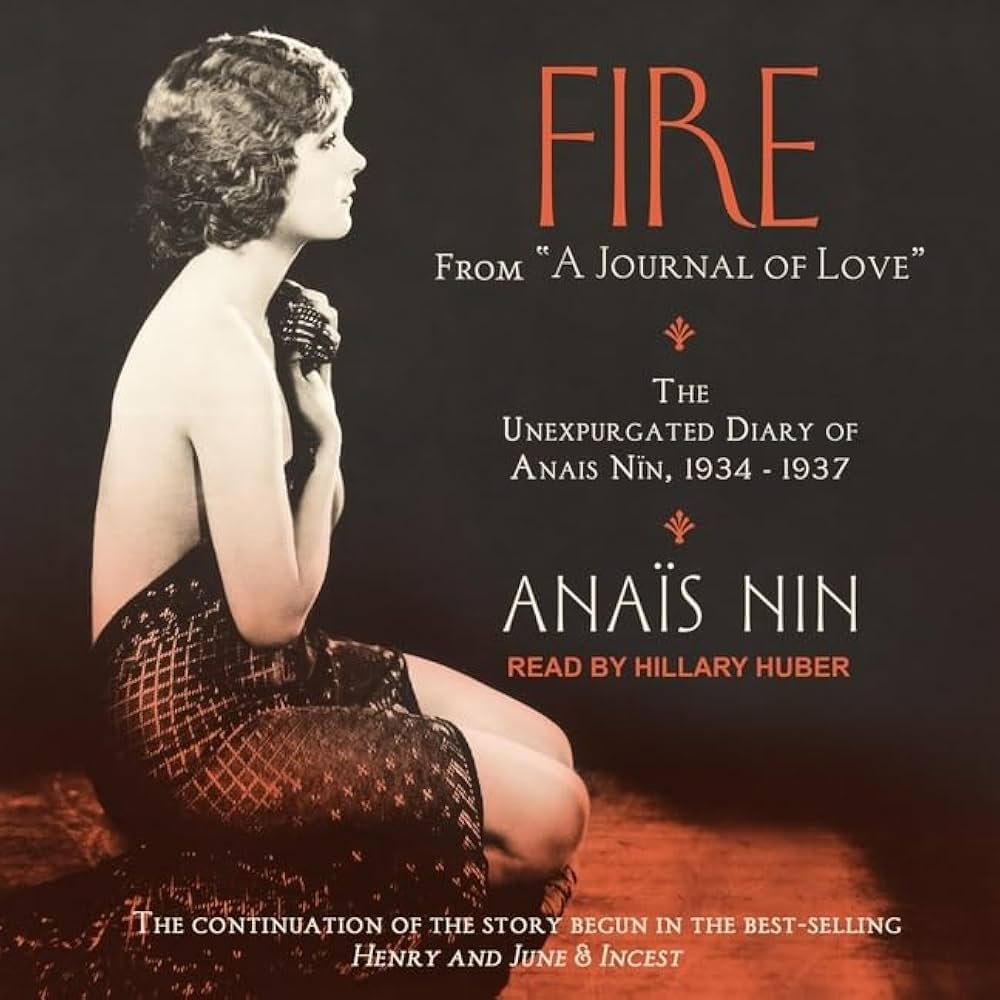
People living deeply have no fear of death.
He was insane with anger.
Or is all insanity anger?
You cannot save people.
You can only love them.
I have so strong a sense of creation, of tomorrow, that I cannot get drunk, knowing I will be less alive, less well, less creative the next day.
Someday I’ll be locked up for love insanity.
“She loved too much.“
The times in his studio when he washed his hands and they smoked, for his hands were so warm and the water so cold.
The body is an instrument which only gives off music when it is used as a body.
Always an orchestra, and just as music traverses walls, so sensuality traverses the body and reaches up to ecstasy.
He left me at my hotel at 3 AM murmuring:
“You’re marvelous.“
I seek the real stuff of life.
Profound drama.
Oh, God, I know no joy as great as a moment of rushing into a new love, no ecstasy like that of a new love.
I swim in the sky.
I float.
My body is full of flowers, flowers with fingers giving me acute, acute caresses, sparks, jewels, quivers of joy, dizziness, such dizziness.
Music inside of one, drunkenness.
Only closing the eyes and remembering, and the hunger, the hunger for more, more, the great hunger, the voracious hunger, and thirst.
No one but a woman in love ever sees the maximum of men’s greatness.
I am an excitable person who only understands life lyrically, musically, in whom feelings are much stronger than reason.
I am so thirsty for the marvelous that only the marvelous has power over me.
Anything I can not transform into something marvelous, I let go.
Reality doesn’t impress me.
I only believe in intoxication, in ecstasy, and when ordinary life shackles me, I escape, one way or another.
No more walls.
Love is the axis and breath of my life.
The art I produce is a byproduct, an excrescence of love, the song I sing, the joy which must explode, the overabundance — that is all!
We do not grow absolutely, chronologically.
We grow sometimes in one dimension, and not in another, unevenly.
We grow partially.
We are relative.
We are mature in one realm, childish in another.
The past, present, and future mingle and pull us backward, forward, or fix us in the present.
We are made of layers, cells, constellations.
In creation alone there is the possibility of perfection.
I miss the animal buoyancy of New York, the animal vitality.
I did not mind that it had no meaning and no depth.
Everything but happiness is neurosis.
Experience teaches acceptance of the imperfect as life.
No desire of the body, but for what lies in there, what lies in the flesh, the world, the thought, the creation, the illumination.
To withhold from living is to die.
The more you give of yourself to life the more life nourishes you.
I say quotations are literary.
They are good only when dealing with ideas, not with experience.
Experience should be pure, unique.
I have an attitude now that is immovable.
I shall remain outside of the world, beyond the temporal, beyond all the organizations of the world.
I only believe in poetry.
Ecstasy is the moment of exaltation from wholeness!
Creation which cannot express itself becomes madness.
Each friend represents a world in us, a world possibly not born until they arrive.
It is only by this meeting that a new world is born.
The Diary Of Anais Nin, Volume Two (1934-1939)
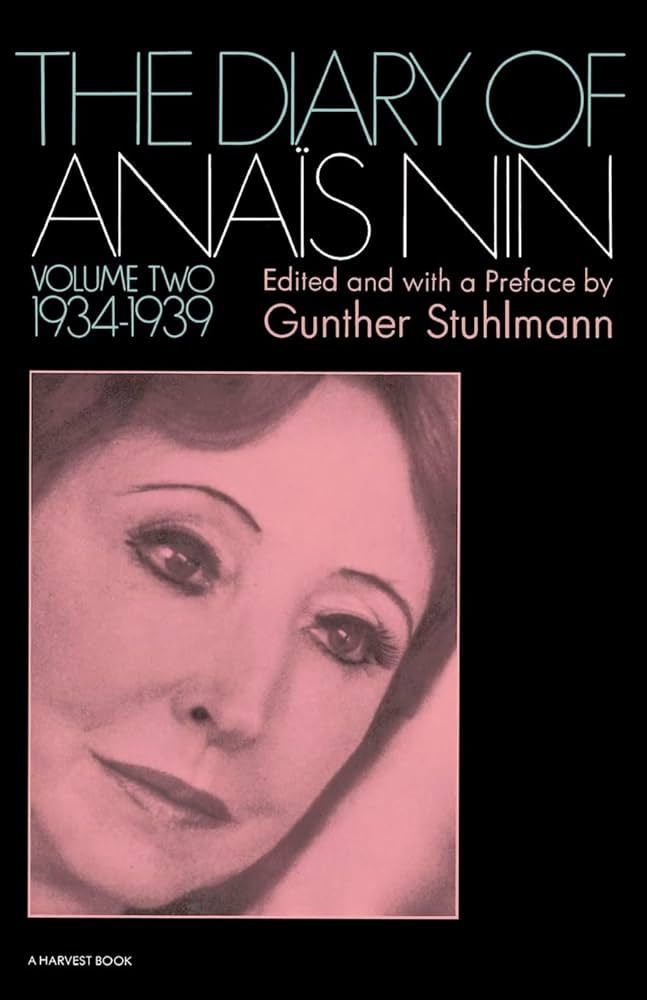
Nearer the Moon (1937 – 1939), published in 1996, one would hardly know that in this part of her diaries Nin was living in a France on the brink of war.
“I dream, I kiss, I have orgasms, I get exalted, I leave the world, I float, I cook, I sew, I have nightmares, I follow a gigantic creative plan,” she claims.
Her self-description says it all.
Here Nin often pauses to improve upon life, which in the two years, spent mostly in Paris, covered in this volume, consisted largely of cadging from her complaisant banker husband, Hugh Guiler, to support her lovers.
One was the gaunt, bald sexual athlete and expatriate novelist, Henry Miller, who by then had parted from his wife, June.
Another was the swarthy Communist activist Gonzalo More, whose appetite for sex overwhelmed his passion for politics, and whose wife, Helba Huara encouraged his income-producing infidelity.
Nin betrayed all three men, even on days (and nights) when she bedded them all.
In her middle 30s, her erotomania left her little time for much else, but she managed to write pornographic (and then censorable) short fiction and reams of what later skeptics called a “liary“.
She was “a true Catholic,” More told her.
“You love the sin and absolution and regrets and sinning again.”
Yet she had few regrets but the unpublishability of her diaries.
At the outbreak of World War II she leaves for America.
She will never live in Paris again.
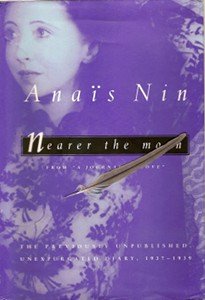
Mirages (1939 – 1947) opens at the dawn of World War II, when Nin fled Paris, where she had lived for 15 years with her husband, banker Hugh Guiler, and ends in 1947 when she meets Rupert Pole, the man who would be “the One”, the lover who would satisfy her insatiable hunger for connection.
In the middle looms a period Nin describes as “Hell,” during which she experiences a kind of erotic madness, a delirium that fuels her search for love.
At times desperate and suicidal, Nin finds life more fulfilling when it conforms to her dreams — a series of mirages she conjures to avoid reality, the horrors of war, and an America she finds abysmally immature.
Often in a state of semi-delirium where she finds herself drowning in her unconscious, she writes that she needs love so abnormally that it all seems natural to keep several relationships going at once, all the one and the same love.
Her lovers included Henry Miller, 17-year-old Bill Pinckard, Edmund Wilson, and dozens of others, including an emotionally charged, but physically unfulfilled, relationship with Gore Vidal.
As a child suffering abandonment by her father, Nin wrote, “Close your eyes to the ugly things,” and, against a horrifying backdrop of war and death, Nin combats the world’s darkness with her own search for light.
Mirages collects, for the first time, the story that was cut from all of Nin’s other published diaries, particularly volumes 3 and 4 of The Diary of Anaïs Nin, which cover the same time period.
Mirages answers the questions Nin readers have been asking for decades:
What led to the demise of Nin’s love affair with Henry Miller?
Just how troubled was her marriage to Hugh Guiler?
What is the story behind Nin’s “children”, the effeminate young men she seemed to collect at will?
Mirages is a deeply personal story of heartbreak, despair, desperation, carnage, and deep mourning, but it is also one of courage, persistence, evolution and redemption that reaches beyond the personal to the universal.
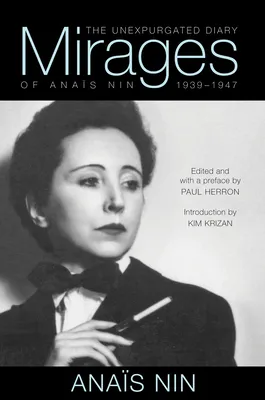
There are very few human beings who receive the truth, complete and staggering, by instant illumination.
Most of them acquire it fragment by fragment, on a small scale, by successive developments, cellularly, like a laborious mosaic.
Anxiety is love’s greatest killer.
It creates the failures.
It makes others feel as you might when a drowning man holds on to you.
You want to save him, but you know he will strangle you with his panic.
The Diary of Anaïs Nin Vol. 4 (1944 – 1947)

Trapeze (1947 – 1955), marks the start of what Nin came to call her “trapeze life”, swinging between her long-time husband, Hugh Guiler, in New York and her lover, Rupert Pole, in California, a perilous lifestyle she continued until her death in 1977.
Today what Nin did seems impossible, and what she sought perhaps was impossible: to find harmony and completeness within a split existence.
It is a story of daring and genius, love and pain, largely unknown until now.
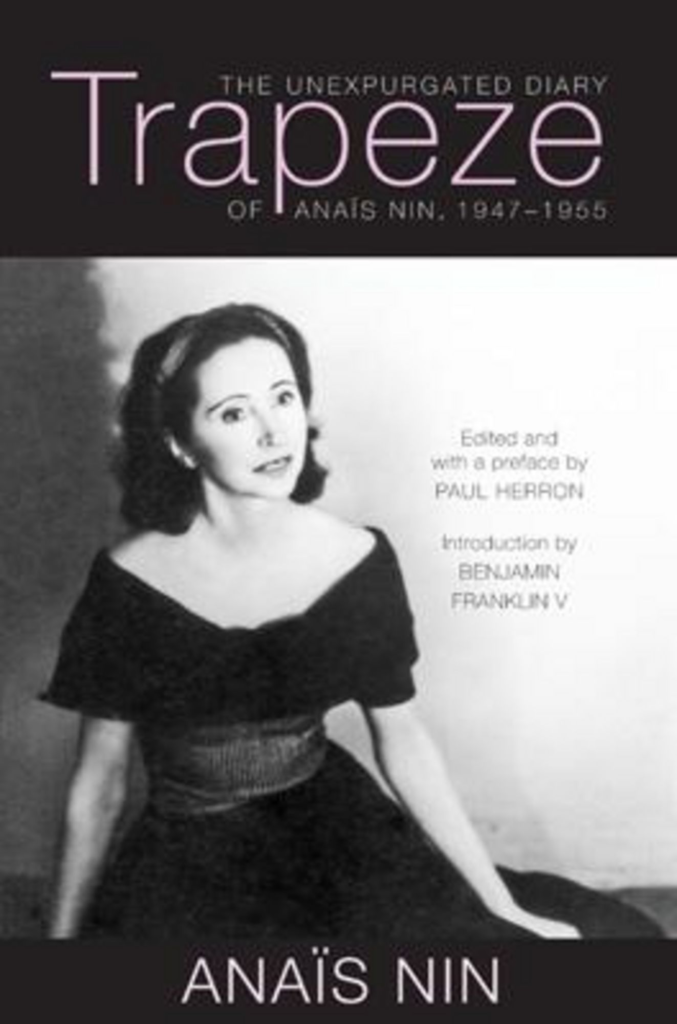
Volume V (expurgated version) describes her first trip to Acapulco, the beginning of her double life in Sierra Madre, California as well as in New York, the death of her mother and the progress of her feelings and career.
Her love life, including the existence of both her husbands, is still deleted.
Why one writes is a question I can answer easily, having so often asked it of myself.
I believe one writes because one has to create a world in which one can live.
I could not live in any of the worlds offered to me — the world of my parents, the world of war, the world of politics.
I had to create a world of my own, like a climate, a country, an atmosphere in which I could breathe, reign, and recreate myself when destroyed by living.
That, I believe, is the reason for every work of art.
The artist is the only one who knows that the world is a subjective creation, that there is a choice to be made, a selection of elements.
It is a materialization, an incarnation of his inner world.
Then he hopes to attract others into it.
He hopes to impose his particular vision and share it with others.
And when the second stage is not reached, the brave artist continues nevertheless.
The few moments of communion with the world are worth the pain, for it is a world for others, an inheritance for others, a gift to others, in the end.
When you make a world tolerable for yourself, you make a world tolerable for others.
We also write to heighten our own awareness of life.
We write to lure and enchant and console others.
We write to serenade our lovers.
We write to taste life twice, in the moment, and in retrospection.
We write, like Proust, to render all of it eternal, and to persuade ourselves that it is eternal.
We write to be able to transcend our life, to reach beyond it.
We write to teach ourselves to speak with others, to record the journey into the labyrinth.
We write to expand our world when we feel strangled, or constricted, or lonely.
We write as the birds sing, as the primitives dance their rituals.
If you do not breathe through writing, if you do not cry out in writing, or sing in writing, then don’t write, because our culture has no use for it.
When I don’t write, I feel my world shrinking.
I feel I am in a prison.
I feel I lose my fire and my color.
It should be a necessity, as the sea needs to heave, and I call it breathing.
One handles truths like dynamite.
Literature is one vast hypocrisy, a giant deception, treachery.
All writers have concealed more than they revealed.
But paradoxically, we create fiction out of human concern for the victims of the revelations.
This concern is at the root of literature.
The role of the writer is not to say what we can all say, but what we are unable to say.
Most of the writing today which is called fiction contains such a poverty of language, such triteness, that it is a shrunken, diminished world we enter, poorer and more formless than the poorest cripple deprived of ears and eyes and tongue.
The writer’s responsibility is to increase, develop our senses, expand our vision, heighten our awareness and enrich our articulateness.
I would say that compassion for our parents is the true sign of maturity.
The Diary of Anaïs Nin, Volume 5 (1947 – 1955)
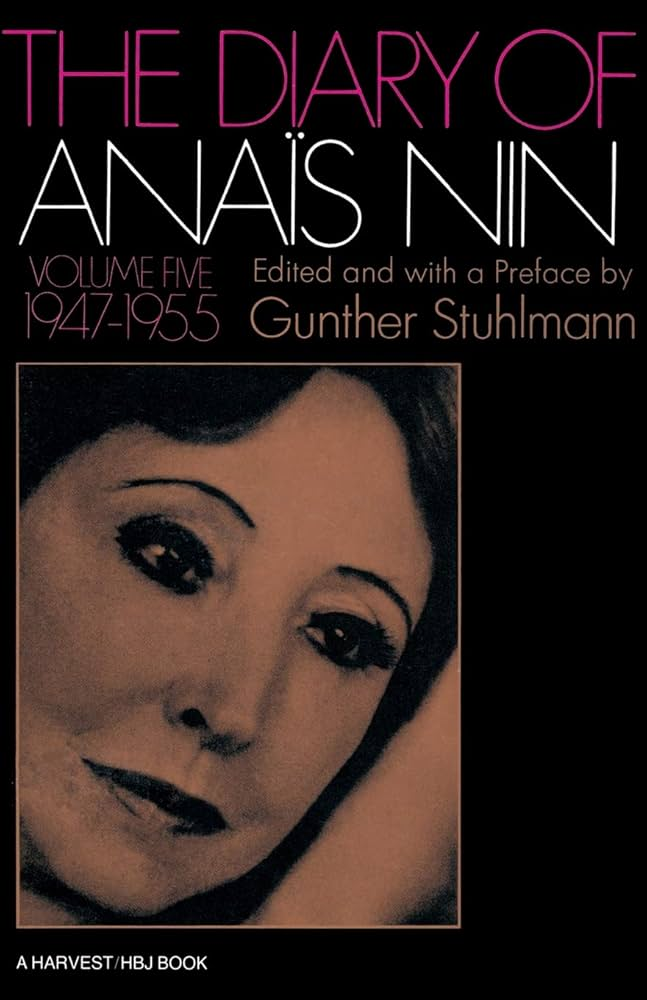
The penultimate volume of a series of Anaïs Nin’s unexpurgated diaries.
When The Diary of Others (1955 – 1966) opens, Nin, at age 52, has recently entered into a bigamous marriage with the handsome forest ranger Rupert Pole in California, while her legal husband of 30 years, the faithful banker Hugh (Hugo) Guiler is unaware in New York.
The first part of the diary, which is called “The Trapeze Life,” details Nin’s complicated efforts to keep each husband unaware of the other as she jetted between them, a process she likened to a bicoastal “trapeze”.
At the same time, few publishers were interested in her feminine and introspective fiction.
She considered herself a failed writer.
However, she was keeping a diary she had begun at age 11, and she began to realize that the diary itself was her most important work—but she wondered how she could publish it when it included numerous lovers, incest and abortion without harming those she loved, which is the subject of the second portion of this volume, called “Others”.
The Diary of Others ends with the publication of the first volume of The Diary of Anaïs Nin, which propelled Nin to critical and cultural fame at the age of 63.
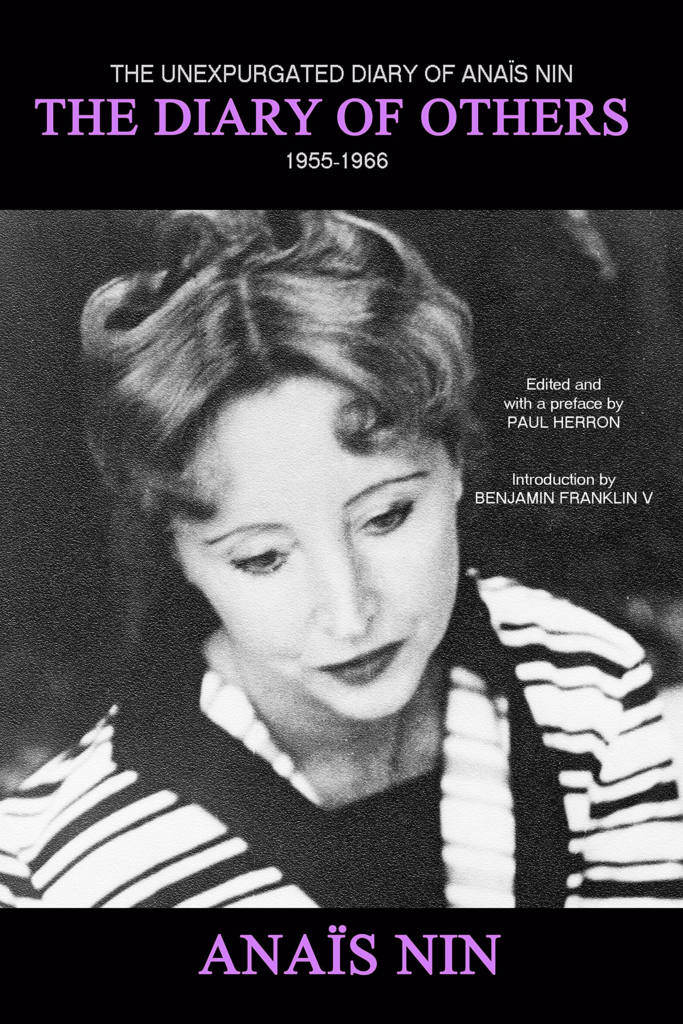
Volume VI (expurgated version) was dedicated to the team of doctors who saved her life in January 1975.
It opens with her description of the aftereffects of having taken LSD, and closes with her mentioning the publication of Volume I of her diaries and her belated recognition as a writer.
Other subjects include a debate with Aldous Huxley over psychedelics, a visit to the Brussels World’s Fair of 1958, and working as an editor for the magazine Eve.
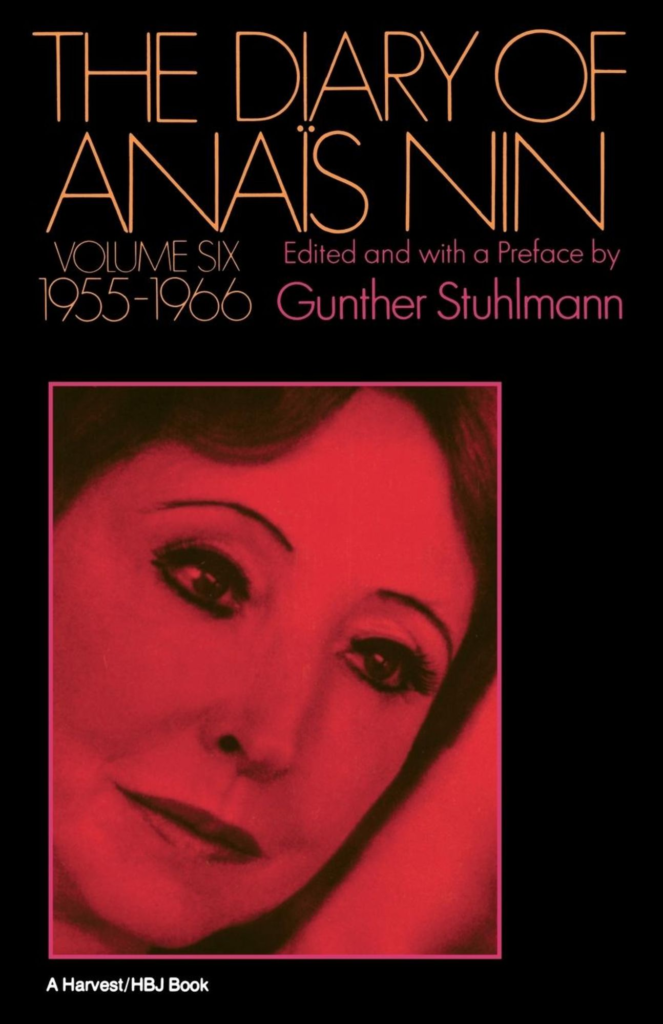
Nin’s final diary was published under the title of A Joyous Transformation (1966 – 1977).
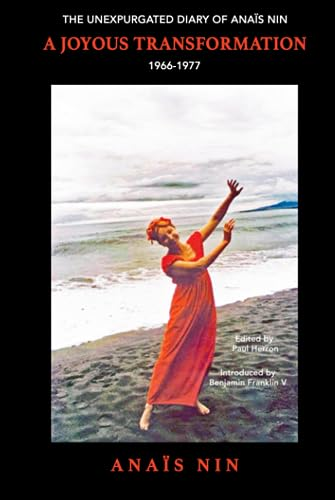
Nin is hailed by many critics as one of the finest writers of female erotica.
She was one of the first women known to explore fully the realm of erotic writing, and certainly the first prominent woman in the modern West known to write erotica.
Before her, erotica acknowledged to be written by women was rare, with a few notable exceptions, such as the work of Kate Chopin.
Nin often cited authors Djuna Barnes and D. H. Lawrence as inspirations.
She states in Volume One of her diaries that she drew inspiration from Marcel Proust, André Gide, Jean Cocteau, Paul Valéry and Arthur Rimbaud.
According to Volume One of her diaries, 1931–1934, published in 1966, Nin first came across erotica when she returned to Paris with her husband, mother and two brothers in her late teens.
They rented the apartment of an American man who was away for the summer.
Nin came across a number of French paperbacks:
“One by one, I read these books, which were completely new to me.
I had never read erotic literature in America.
They overwhelmed me.
I was innocent before I read them, but by the time I had read them all, there was nothing I did not know about sexual exploits.
I had my degree in erotic lore.“
Faced with a desperate need for money, Nin, Henry Miller and some of their friends began in the 1940s to write erotic and pornographic narratives for an anonymous “collector” for $1.00 a page, somewhat as a joke.
(It is not clear whether Miller actually wrote these stories or merely allowed his name to be used.)
Nin considered the characters in her erotica to be extreme caricatures and never intended the work to be published, but changed her mind in the early 1970s and allowed them to be published as Delta of Venus and Little Birds.
In 2016, a previously undiscovered collection of Nin’s erotica, Auletris, was published for the first time.
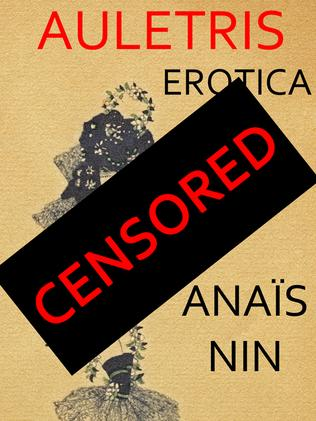
Nin was a friend, and in some cases lover, of many literary figures, including:
- Henry Miller
- John Steinbeck
- Antonin Artaud
- Edmund Wilson
- Gore Vidal
- James Agee
- James Leo Herlihy
- Lawrence Durrell
Her passionate love affair and friendship with Miller strongly influenced her both sexually and as an author.
Claims that Nin was bisexual were given added circulation by the 1990 Philip Kaufman film Henry & June about Miller and his second wife June Miller.

The first unexpurgated portion of Nin’s journal to be published, Henry and June, makes clear that Nin was stirred by June to the point of saying, “I have become June“, though it is unclear to what extent she consummated her feelings sexually.
To both Anaïs and Henry, June was a femme fatale – irresistible, cunning, and erotic.
Nin gave June money, jewelry, and clothes, often leaving herself without money.
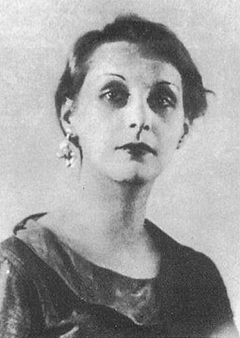
Above: June Miller (née Juliet Edith Smerth)(1902 – 1979)
In addition to her journals and collections of erotica, Nin wrote several novels, which critics frequently associated with the surrealist movement.
Her first book of fiction, House of Incest (1936), contains heavily veiled allusions to a brief sexual relationship Nin had with her father in 1933:
While visiting her estranged father in France, the then-30-year-old Nin had a brief incestuous sexual relationship with him.
House of Incest is a prose poem written by Anaïs Nin.
Originally published in 1936, it is Anaïs Nin’s first work of fiction.
Unlike her diaries and erotica, House of Incest does not detail the author’s relationships with famous lovers like Henry Miller, nor does it contain graphic depiction of sex.
Rather, House of Incest is a surrealistic look within the narrator’s subconscious mind as she attempts to escape from a dream in which she is trapped, or in Nin’s words, as she attempts to escape from “the woman’s season in Hell“.
Nin’s usage of the word incest in this case is metaphorical, not literal.
In other words, in this book the word “incest” describes a selfish love where one can appreciate in another only that which is similar to oneself.
One is then only loving oneself, shunning all differences.
At first, such self-love can seem ideal because it is without fear and without risk.
But eventually it becomes a sterile nightmare.
Toward the end of the book, the character called “the modern Christ” puts Nin’s use of the word into context:
“If only we could all escape from this house of incest, where we only love ourselves in the other.“
Nin was under the analysis of Otto Rank while writing House of Incest.
Rank was an early disciple of Freud, serving as his Vienna group’s secretary and youngest member, but had long since dissented from Freudian orthodoxy and developed his own theoretical school.
Incest: From a Journal of Love”—The Unexpurgated Diary of Anaïs Nin (1932–1934) reveals that the two were also having an affair.
Rank helped Anaïs edit House of Incest.
He had experience with this topic, as Otto Rank’s most famous book is The Trauma of Birth.
House of Incest is largely an attempt by the narrator to cope with the shock of the trauma of birth.
Anaïs Nin describes the process as akin to being “ejected from a paradise of soundlessness, thrown up on a rock, the skeleton of a ship choked in its own sails“.
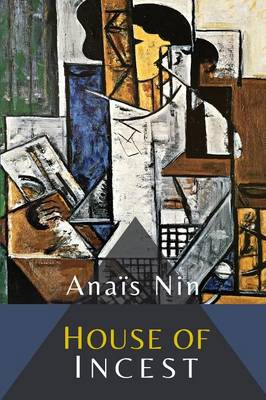
In Anaïs Nin: An Introduction, authors Duane Schneider and Benjamin Franklin V both argue that the basic theme of House of Incest is that ultimately life in the real world, which contains both pleasure and pain, is preferable to any self-created world that attempts to include only pleasure.
Franklin and Schneider argue that a world consisting only of pleasure is ultimately a sterile world where intellectual, emotional, and spiritual growth is not possible, and what results is stunted people.
In this, they offer the passage from House of Incest wherein Anaïs Nin writes:
“Worlds self-made and self-nourished are so full of ghosts and monsters.“
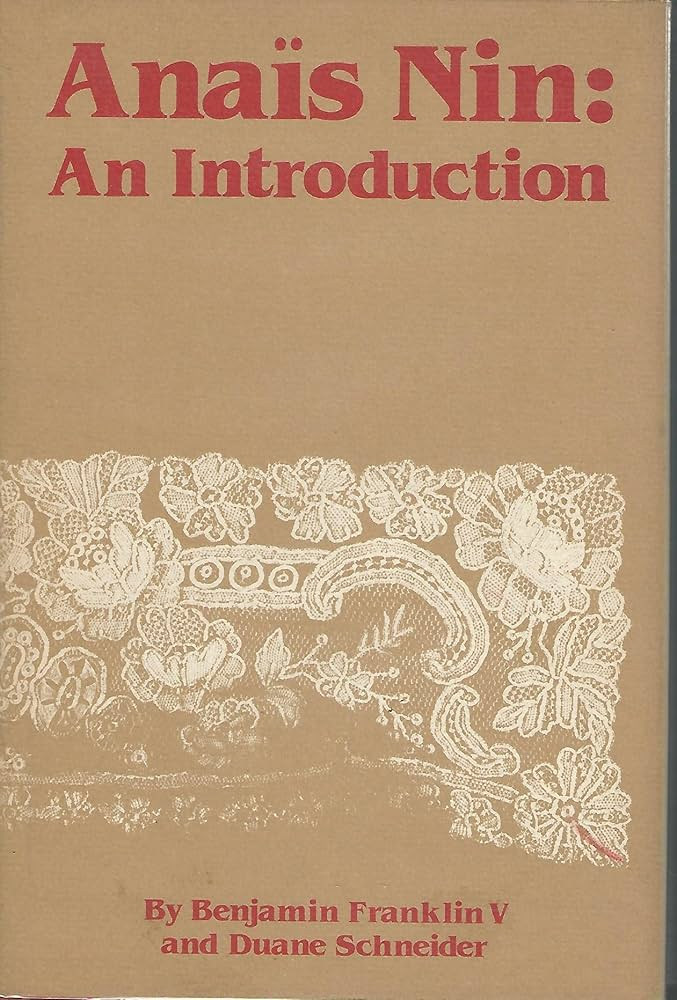
In the world of the dreamer there was solitude:
All the exaltations and joys came in the moment of preparation for living.
They took place in solitude.
But with action came anxiety, and the sense of insuperable effort made to match the dream, and with it came weariness, discouragement, and the flight into solitude again.
And then in solitude, in the opium den of remembrance, the possibility of pleasure again.
Children of the Albatross (1947)
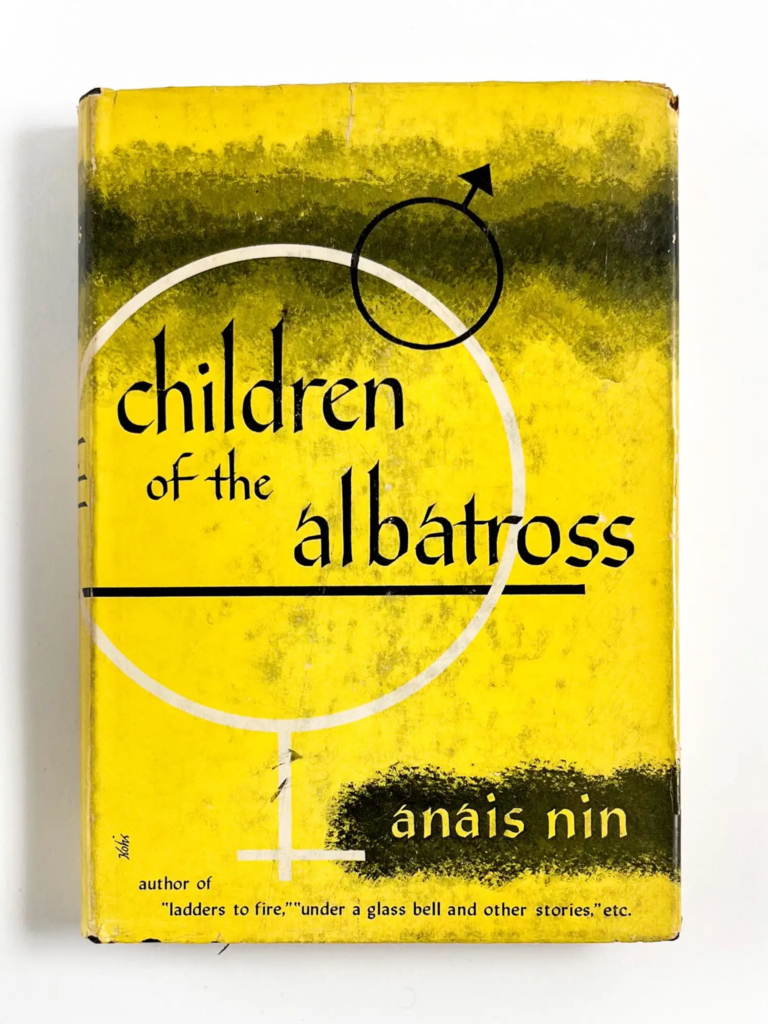
In 1944, she published a collection of short stories, Under a Glass Bell, which was reviewed by Edmund Wilson.
All those who try to unveil the mysteries always have tragic lives.
At the end they are always punished.
“The Mohican“, Under a Glass Bell (1944)
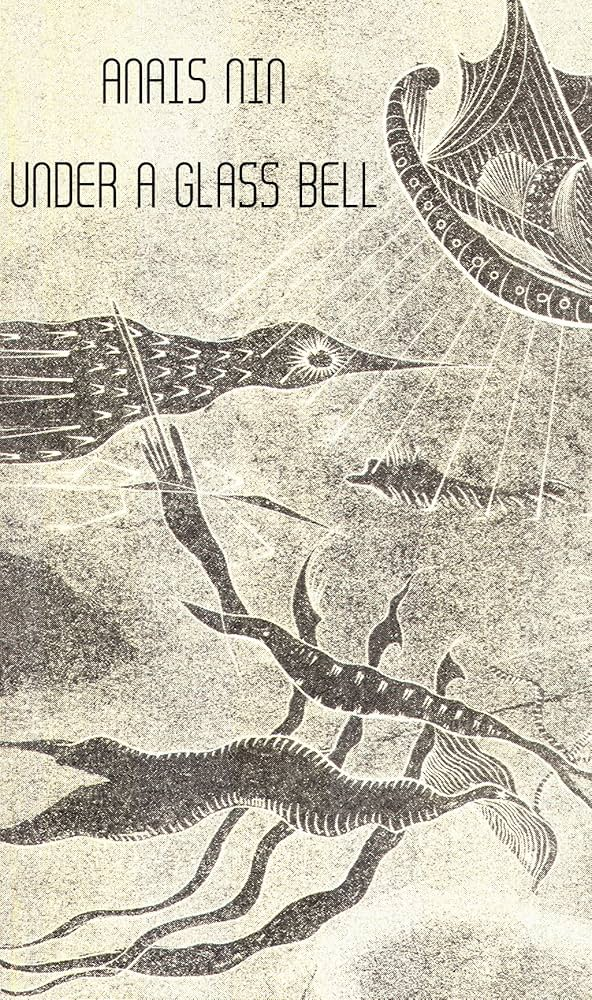
I am the one who has felt most deeply the stuttering of the tongue in its relation to thought.
I feel a fatigue of the tongue seeking to utter impossible things until it twists itself into a knot and chokes me.
I feel a fatigue at this mass of nerves seeking to uphold a world that is falling apart.
I feel a fatigue at feeling, at the fervor of my dreams, the fever of my thought, the intensity of my hallucinations.
A fatigue at the sufferings of others and my own.
I feel my own blood thundering inside of me, I feel the horror of falling into abysms.
But you and I would always fall together and I would not be afraid.
We would fall into abysms, but you would carry your phosphorescence to the very bottom of the abysms.
We could fall together and ascend together, far into space.
I was always exhausted by my dreams, not because of the dreams, but because of the fear of not being able to return.
I do not need to return.
I will find you everywhere.
You alone can go wherever I go, into the same mysterious regions.
You too know the language of the nerves.
You will always know what I am saying even if I do not.
I love your silences, they are like mine.
You are the only being before whom I am not distressed by my own silences.
You have a vehement silence, one feels it is charged with essences, it is a strangely alive silence, like a trap open over a well, from which one can hear the secret murmur of the Earth itself.
“Je suis le plus malade des Surrealistes“, Under a Glass Bell (1944)
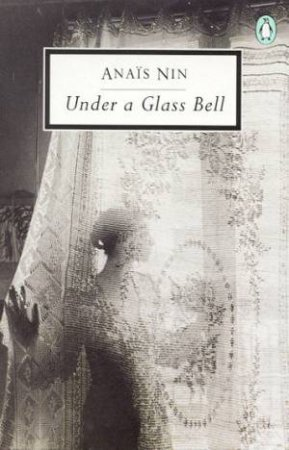
Nin also wrote several works of nonfiction:
Her first publication, written during her years studying psychoanalysis, was D. H. Lawrence: An Unprofessional Study (1932), an assessment of the works of D. H. Lawrence.
In 1968, she published The Novel of the Future, which elaborated on her approach to writing and the writing process.

The dream has to be translated into reality.
For the neurotic, the merging of the subconscious and the conscious may be risky, just as it is for the users of drugs.
But for the writer who is aware of the way in which this connection exists in reality and nourishes creativity, the sooner he can achieve a synthesis among intellect, emotion, and instinct, the sooner his work will be integrated.
Most fiction writers uses dreams decoratively without relating them to daily life, but the contemporary writer is becoming more expert at detecting the influence of one upon the other.
The dream, scrutinized by scientists in various experiments, has been found to be an absolute necessity to man.
The hallucinatory drugs only reveal the world of images we contain but do not teach us interpretation, illumination or enlightenment.
By shutting out the outside world, drugs place one not only in confrontation with the dreaming self, but also ones nightmares.
Passivity, like the passivity of India induced by religion, is destructive both to human life and to art.
I think that natural truths will cease to be spat at us like insults, that aesthetics will once more be linked with ethics, and that people will become aware that in casting out aesthetics that they also cast out a respect for human life, a respect for creation, a respect for spiritual values.
Aesthetics was an expression of man’s need to be in love with his world.
The cult of ugliness is a regression.
It destroys our appetite, our love for our world.
It was a misunderstanding to stress the dream like quality of the novels.
What I meant to stress was the interrelation between dream and life, between dream and action.
Neurosis was caused by our attempt to separate physical and metaphysical levels, to set them up in opposition to each other, thus engaging in an internecine war.
If it is true that we do live on several levels simultaneously – drama and action, past and present, personal and collective – we are given ways to unify them:
- one by religion
- the other by art
Separating such levels is only necessary when they conflict, and separation is a result of conflict.
Seeing how these levels can work together in harmony is the task of our contemporary writers.
Because so many of our writers were born in ugly environments, in monstrous poverty and humiliation, they continue to assert that this is the natural environment, reality, and that beauty is artifice.
Why should the natural state be ugliness?
Natural to whom?
We may be born in ugliness, but the natural consequences should be a thirst for its opposite.
To mistake ugliness for reality is one of the frauds of the realistic school.
A hunger for the unknown, and an aspiration towards beauty were inseparable from civilization.
In America the word art was distorted to mean artificial.
We are born with the power to alter what we are given at birth.
When the Japanese paint flowers or the sea on a kimono they mean to establish a link with nature.
But they select only what is beautiful in nature to maintain their love of life.
The creative personality never remains fixed on the first world it discovers.
It never resigns itself to anything.
That is the deepest meaning of rebellion, not the wearing of different clothes, haircuts, or the adopting of other cultures.
The necessity for fiction was probably born of the problem of taboo on certain revelations.
It was not only a need of the imagination but an answer to the limitations placed on portrayal of others.
The unconscious can become destructive if it is disregarded and thwarted.
We are beginning to see the influence of dream upon reality and reality upon dream.
The Novel of the Future (1968)
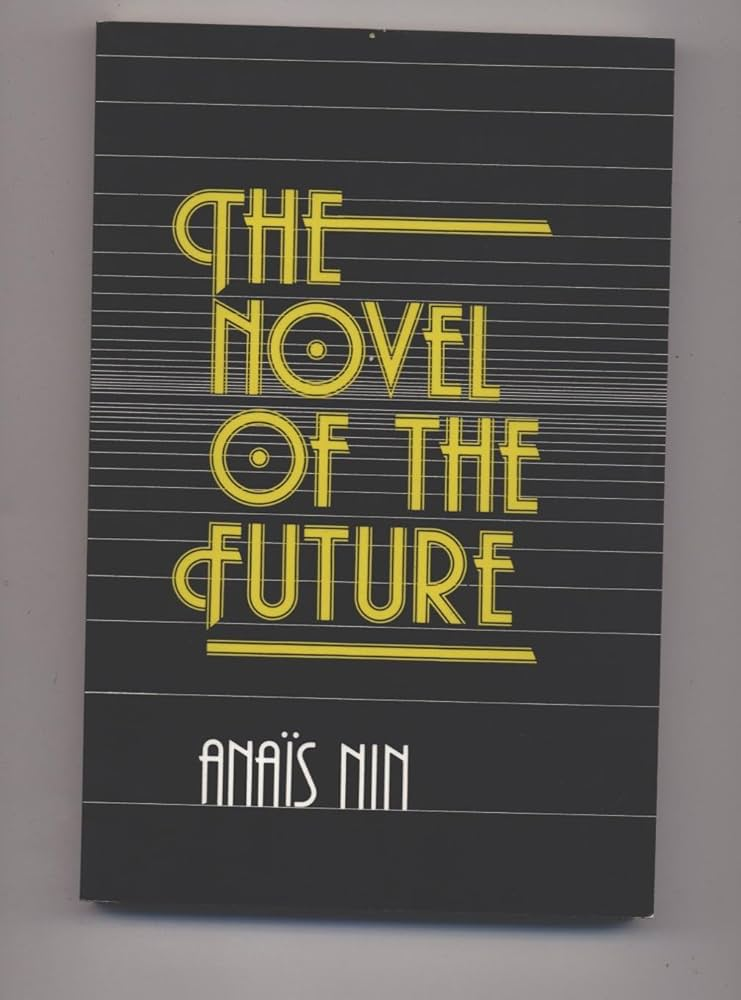
According to her diaries, Volume 1, 1931–1934, Nin shared a bohemian lifestyle with Henry Miller during her time in Paris.
Her husband Guiler is not mentioned in the published edition of the 1930s parts of her diary (Vol. 1–2), though the opening of Vol. 1 makes clear that she is married, and the introduction suggests her husband declined to be included in the published diaries.
The diaries edited by her second husband, after her death, say that her relationship with Miller was very passionate and physical, and that she believed that it was a pregnancy by him that she aborted in 1934.
In 1947, at age 44, Nin met former actor Rupert Pole in a Manhattan elevator on her way to a party.
The two began a relationship and traveled to California together.
Pole was 16 years her junior.
On 17 March 1955, while still married to Guiler, she married Pole at Quartzsite, Arizona, returning with him to live in California.
Guiler remained in New York City and was unaware of Nin’s second marriage until after her death in 1977, though biographer Deirdre Bair alleges that Guiler knew what was happening while Nin was in California but consciously “chose not to know“.
Nin called her simultaneous marriages her “bicoastal trapeze“.
According to Deidre Bair:
Anaïs would set up these elaborate façades in Los Angeles and in New York, but it became so complicated that she had to create something she called the lie box.
She had this absolutely enormous purse and in the purse she had two sets of checkbooks.
One said Anaïs Guiler for New York and another said Anaïs Pole for Los Angeles.
She had prescription bottles from California doctors and New York doctors with the two different names.
And she had a collection of file cards.
And she said:
“I tell so many lies I have to write them down and keep them in the lie box so I can keep them straight.“
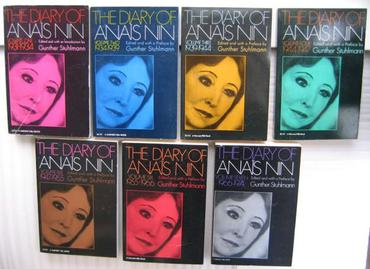
Cities of the Interior is a novel sequence published in one volume containing the five books of Anaïs Nin’s “continuous novel“:

- Ladders to Fire
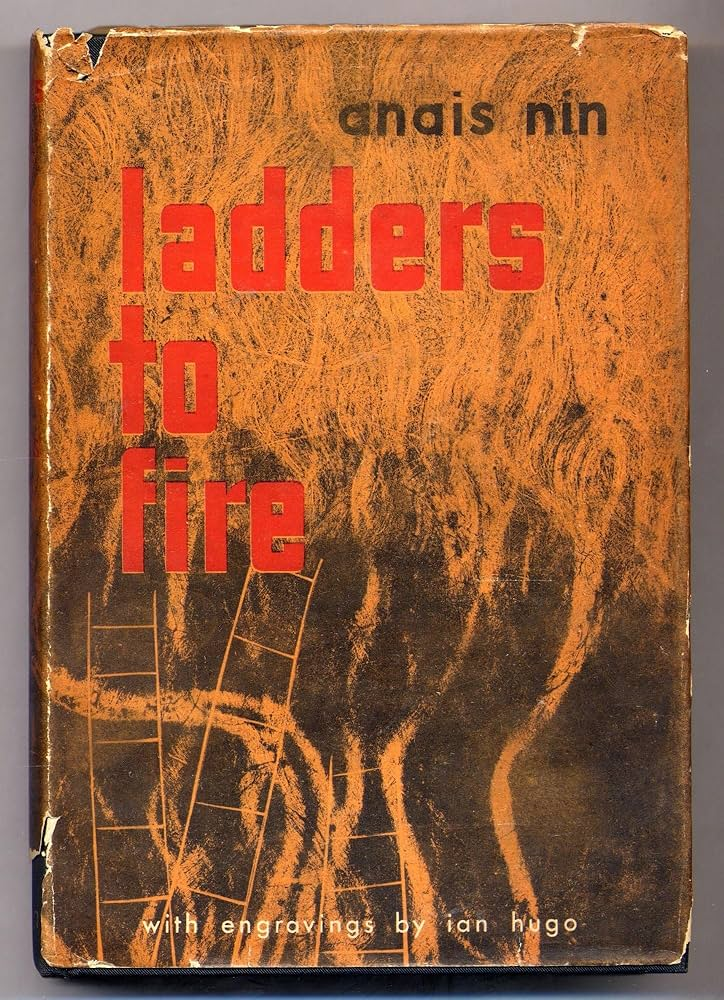
- Children of the Albatross
- The Four-Chambered Heart
It is about a woman named Djuna, her love, her thoughts, her emotions, her doubts, her decisions, and her sacrifices.
It is not considered one of Nin’s most noteworthy novels, yet it continues to be referenced in various studies and discussions regarding Nin and her body of work.
The story is based on Nin’s own experiences and destructive love relationship with Gonzalo Moré, Peruvian poet and bohemian.
They met in 1936 and their relationship lasted for a decade.
It is Nin’s diaries during this time that have translated into this novel about her alter ego Djuna.
In the novel, the character Djuna falls in love with Rango and becomes entangled in his chaotic life.
She is introduced to Zora, Rango’s wife, a former dancer who has fallen into a morass of hypochondria and self-centered manipulation.
These characters, of course, are modeled after Nin, Moré, and his wife Helba Huara.
When Nin met Moré in 1936 his wife was an invalid, after having been a widely renowned exotic dancer, both in Europe and on Broadway.
The couple were impoverished and living in a basement.
Nin rented a house boat on the Seine, which was used for Nin’s and Moré’s amorous meetings.
The house boat also appears in The Four-Chambered Heart.
Nin’s relationship with Moré was full of passion, lust and sexual fury, which is reflected in the story of The Four-Chambered Heart.
Nin’s love for Moré made her try to rehabilitate him and get him to make something of his, in her eyes, huge talent.
She failed in this attempt, being sucked into his and his wife’s destructive lives.
After three years of passionate struggle she fled Paris when World War II started, and returned to New York.
She brought Moré with her and employed him in a printing press enterprise she started on her own, ultimately trying to rip apart the destructive cord to his wife and make him learn a craft of his own.
Her efforts proved fruitless in the end, and Moré did poorly, leaving her to have to do most of the job herself.
The relationship finally ended in 1948.
Nin says in her 1948 diary:
“The Gonzalo I loved is dead.
The one I knew at the end, without illusion, I did not love.
People create an illusion together and then it is disintegrated by reality.“
The remains of this destructive relationship is this novel, The Four-Chambered Heart, in which she tries to describe the anguish and the passion she felt in her decade-long relation with Moré.
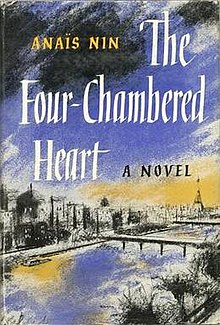
- A Spy in the House of Love
The novel follows the character of Sabina, a woman who enjoys the sexual licence typically associated with men.
Sabina wears extravagant outfits and deliberately avoids romantic commitments.
She pursues sexual pleasure in isolation of any other romantic attachment.
In 1950s New York, protagonist Sabina pursues her sexual desires.
She calls a random number from a bar in the middle of the night, seeking to confess or find solace in the voice of a stranger.
The stranger happens to be a lie detector who proceeds to follow Sabina in her activities throughout the novel.
Her various love interests and her relationship with her husband, Alan, without whom she feels she cannot live, make her life more and more complex.
The level of deceit her hedonistic lifestyle forces her to maintain leads her to regard herself as “an international spy in the house of love“.
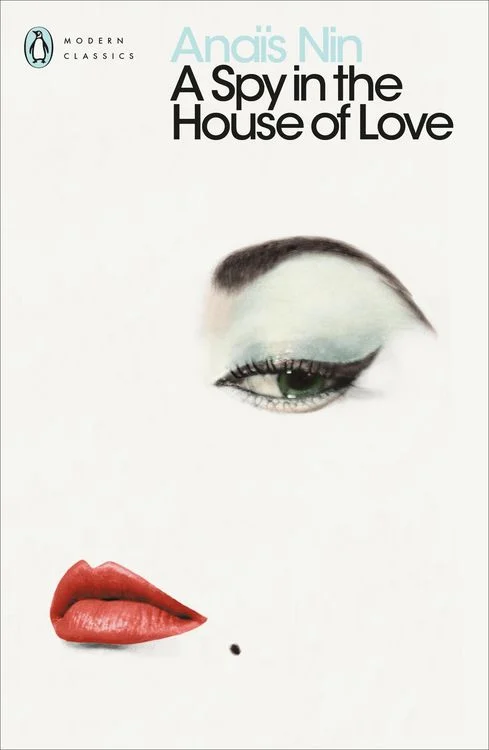
You are like a person who consumes herself in love and giving and does not know the miracles that are born of this.
The enemy of a love is never outside, it’s not a man or woman, it’s what we lack in ourselves.
When she did finally fall asleep it was the restless sleep of the night watchman continuously aware of danger and of the treacheries of time seeking to cheat her by permitting clocks to strike the passing hours when she was not awake to grasp their contents.
A Spy in the House of Love (1954)

- Seduction of the Minotaur
Seduction of the Minotaur is an autobiographical novel by Anaïs Nin, the last part of her Cities of the Interior sequence.
It is about a woman named Lillian, and her self-psychoanalysis.
The setting is taken from Anaïs’ diary account of her first trip to Acapulco in 1947.
The novel repeats much of the first part of The Diary of Anaïs Nin, Volume V.
Since the author was concerned with psychology rather than physical adventure, there is actually less violence in the novel than in the diary account.
The exception is that the doctor allows himself to be shot because he is loved only as a doctor and never as a man, perhaps patterned after her understanding of Otto Rank’s death.
The title refers to the Freudian concept of a “monster” in the unconscious confined by a “labyrinth“.
Since one should not kill one’s own mind, the repressed feelings must be “seduced” by developing conscious insight.
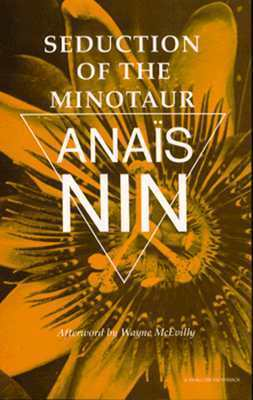
An earlier version was published in 1958 with the title Solar Barque, after a ship found in an Egyptian pyramid.
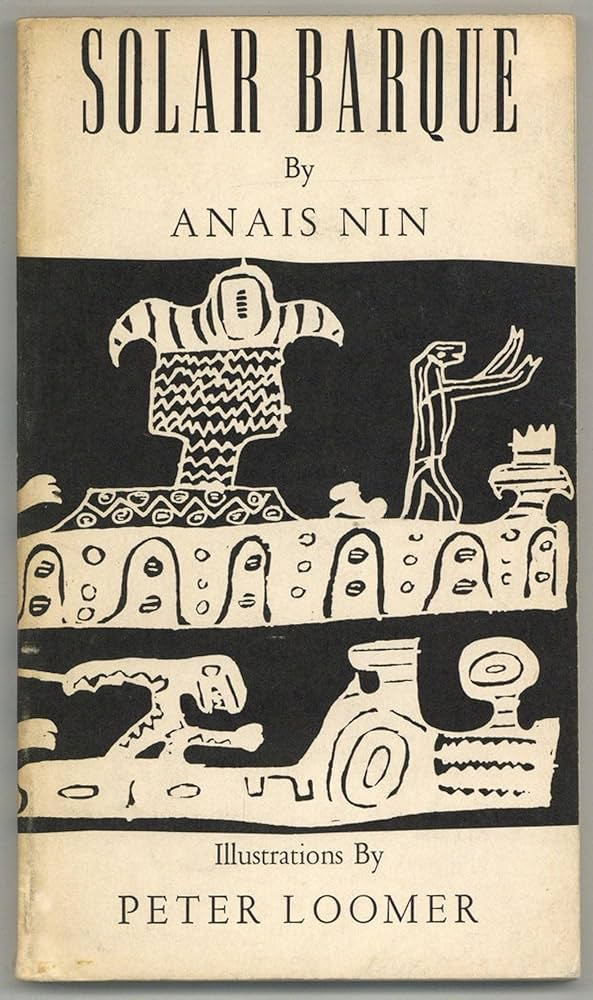
This combined volume was first published, by the author, in 1959.
Its central figures are three women resembling different aspects of the author, and in some superficial ways June Miller.
In some of the books they interact with each other, with a painter resembling Henry Miller and with South Americans resembling her friend, the Peruvian radical Gonzalo Moré, and his wife Helba.
Most of the content is taken from her diaries, polished and thinly disguised.
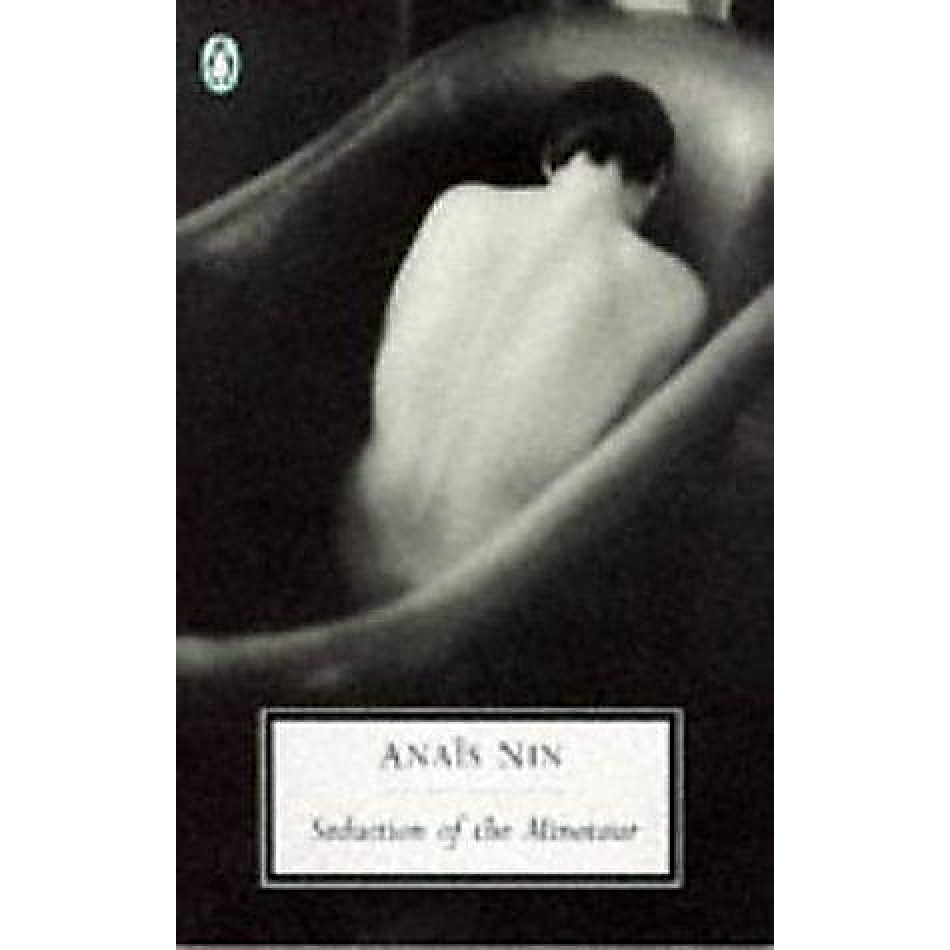
It was followed by her last novel, Collages.
Every word you wrote I ate, as if it were manna.
Finding one’s self in a book is a second birth.
You are the only one who knows that at times men behave like women and women like men, and that all these distinctions are mock distinctions.
Human beings can reach such desperate solitude that they may cross a boundary beyond which words cannot serve, and at such moments there is nothing left for them but to bark.
Solitude may rust your words.
Collages (1964)
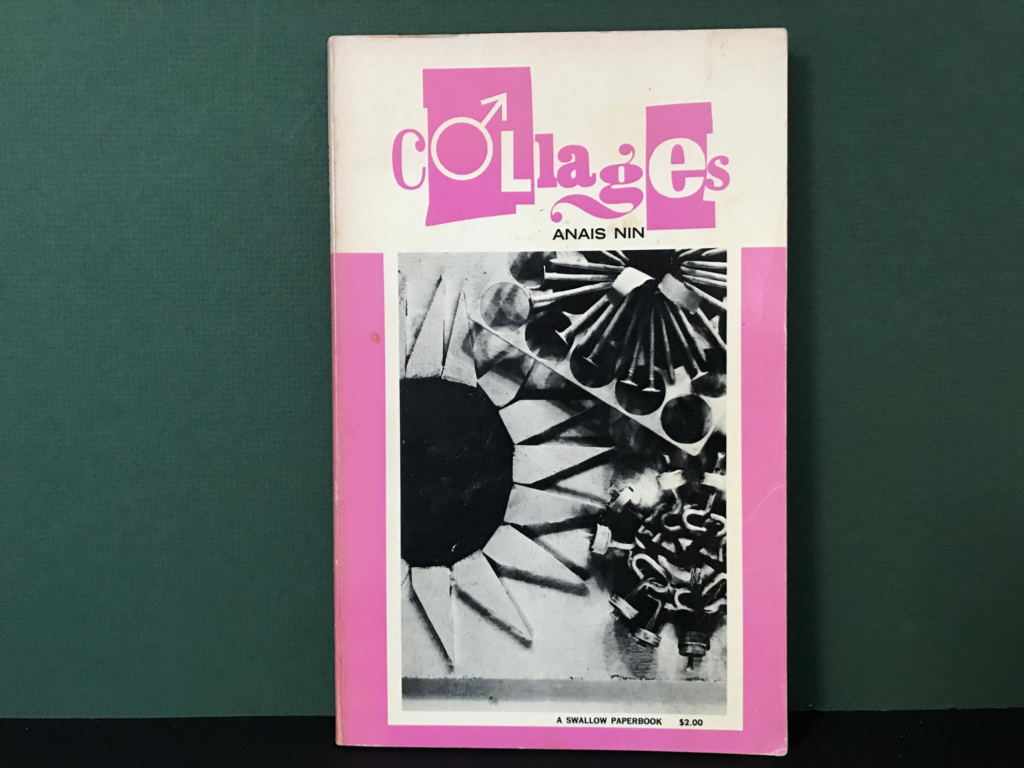
In 1966, Nin had her marriage with Pole annulled due to the legal issues arising from both Guiler and Pole trying to claim her as a dependent on their tax returns, but she and Pole continued to live together as if married until her death.
According to Barbara Kraft, Nin wrote to Guiler asking for his forgiveness.
He responded by saying how meaningful his life had been because of her.
After Guiler’s death in 1985, Pole commissioned the unexpurgated versions of Nin’s journals.
Six volumes have been published:
- Henry and June
- Fire
- Incest
- Nearer the Moon
- Mirages
- Trapeze.
Pole arranged for Guiler’s ashes to be scattered in the same area where Nin’s ashes were, Mermaid Cove in Santa Monica Bay.
Pole died in 2006.
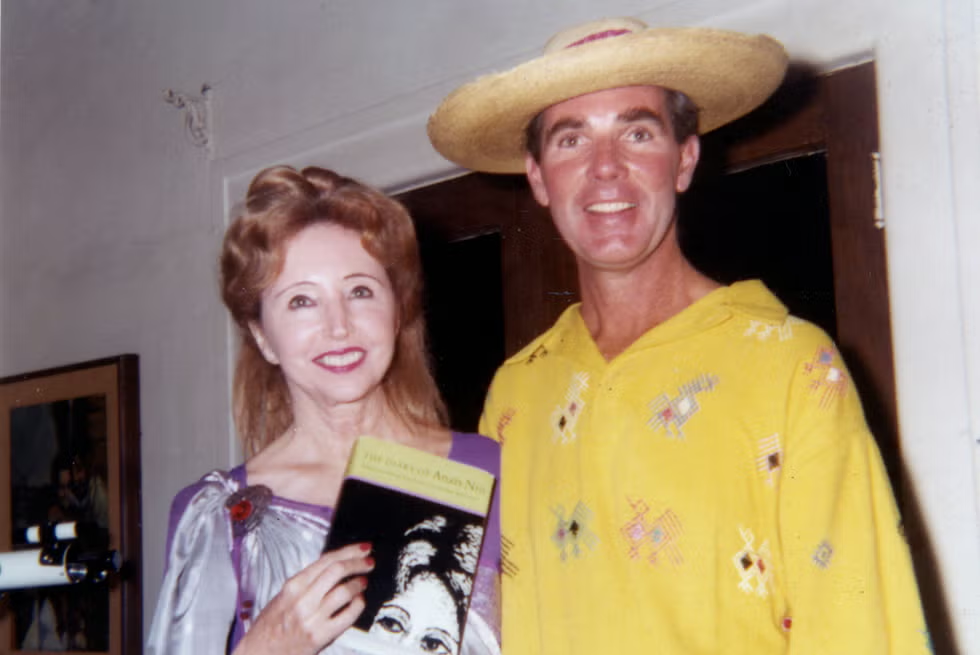
Above: Nin and Pole
Nin once worked at Lawrence R. Maxwell Books, at 45 Christopher Street in New York City.
In addition to her work as a writer, Nin appeared in the Kenneth Anger film Inauguration of the Pleasure Dome (1954) as Astarte; in the Maya Deren film Ritual in Transfigured Time (1946); and in Bells of Atlantis (1952), a film Guiler directed under the name “Ian Hugo” with a soundtrack of electronic music by Louis and Bebe Barron.
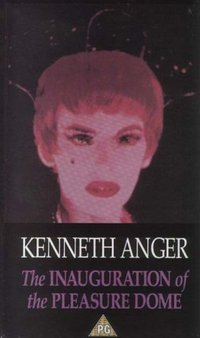
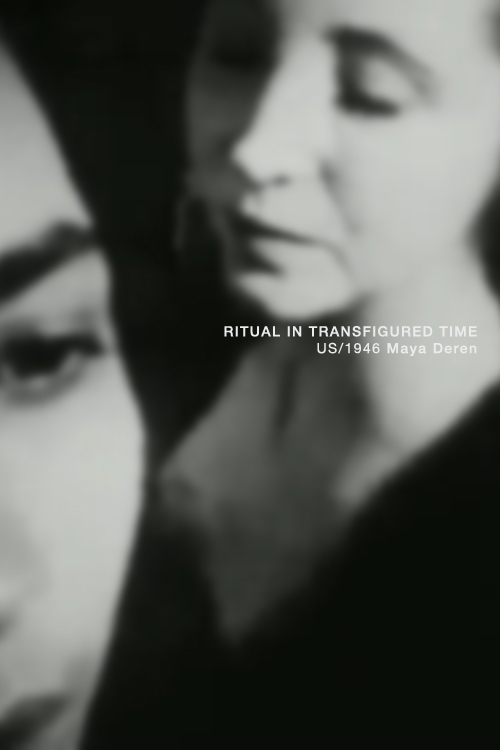
In her later life, Nin worked as a tutor at the International College in Los Angeles.
Nin was diagnosed with cervical cancer in 1974.
She had cancer for two years as it metastasized.
She underwent numerous surgical operations, radiation, and chemotherapy.
Nin died of the cancer at Cedars-Sinai Medical Center in Los Angeles, California, on 14 January 1977.
Her body was cremated and her ashes scattered over Santa Monica Bay in Mermaid Cove.
Her first husband, Hugh Guiler, died in 1985.
His ashes were scattered in the same cove.
Rupert Pole was named Nin’s literary executor.
He arranged to have new, unexpurgated editions of Nin’s books and diaries published between 1985 and his death in 2006.
Large portions of the diaries are still available only in expurgated form.
The originals are in the UCLA Library.
The explosion of the feminist movement in the 1960s gave feminist perspectives on Nin’s writings of the past twenty years, which made Nin a popular lecturer at various universities.
Contrarily, Nin dissociated herself from the political activism of the movement.
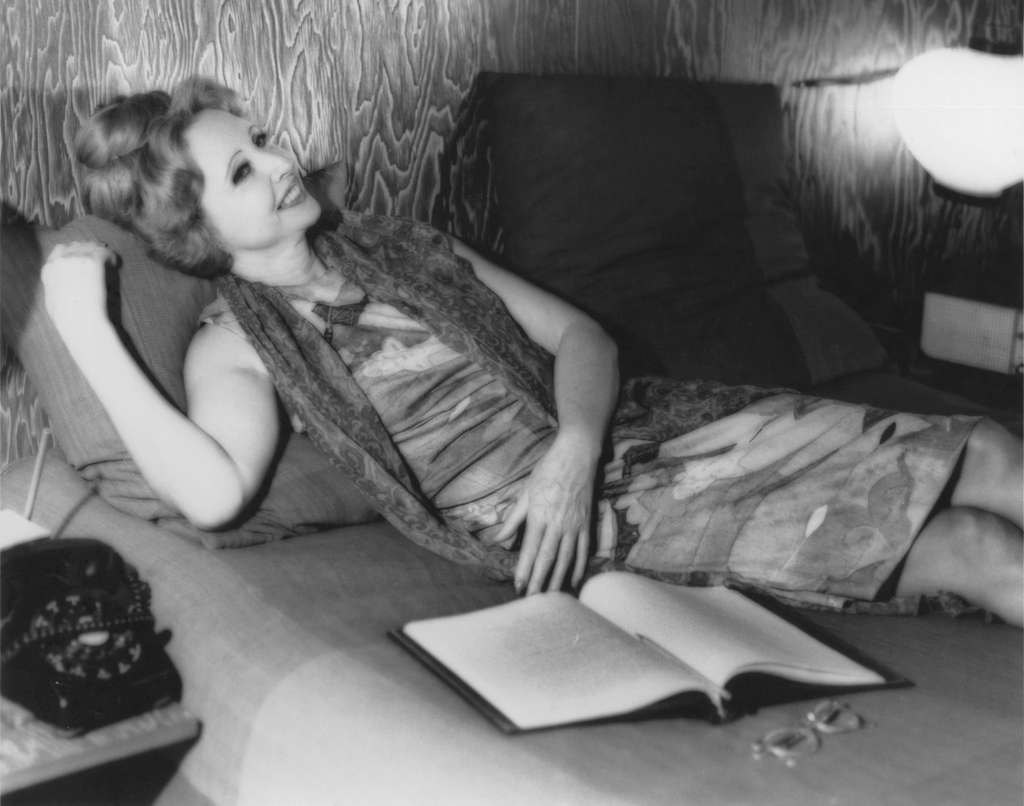
Above: Anaïs Nin
Delta of Venus is a book of 15 short stories that Anaïs Nin largely wrote in the 1940s as erotica for a private collector.
It was published posthumously in 1977.
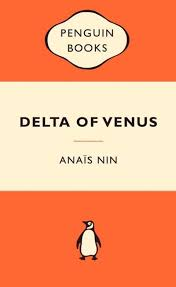
In 1994 a film inspired by the book was directed by Zalman King.

The short stories in this anthology were written during the 1940s for a private client known simply as “Collector“.
This “Collector” commissioned Nin, along with other well-known writers, to produce erotic fiction for his private consumption.
He has since been identified as Roy M. Johnson (1881 – 1960), a wealthy businessman from Ardmore, Oklahoma, who discovered the Healdton Oil Pool.

Above: Ardmore, Oklahoma, USA
Despite being told to leave poetic language aside and concentrate on graphic, sexually explicit scenarios, Nin gave the stories a literary flourish and a layer of images and ideas beyond the pornographic.
In her diary, she jokingly called herself “the madam of this snobbish literary house of prostitution, from which vulgarity was excluded“.
While using the Kama Sutra and other writings such as those of Krafft-Ebing as models, Nin was very conscious that the languages of male and female sexuality were distinct.

The Kama Sutra (‘Principles of Love’) is an ancient Indian Hindu Sanskrit text on sexuality, eroticism and emotional fulfillment.
Attributed to Vātsyāyana, the Kamasutra is neither exclusively nor predominantly a sex manual on sex positions, but rather a guide on the art of living well, the nature of love, finding partners, maintaining sex life, and other aspects pertaining to pleasure-oriented faculties.
The text is a mix of prose and poetry.
Kamasutra lists desire, sexuality, and emotional fulfillment as one of the proper goals of life.
It discusses methods for courtship, training in the arts to be socially engaging, finding a partner, flirting, maintaining power in a married life, when and how to commit adultery, sexual positions, and other topics.
The text majorly dealt with the philosophy and theory of love, what triggers desire, what sustains it, and how and when it is good or bad.
It is a much-translated work in Indian and non-Indian languages, and has influenced many secondary texts that followed since the 4th century, as well as the Indian arts as exemplified by the pervasive presence of Kama-related reliefs and sculpture in old Hindu temples.
Of these, the Khajuraho in Madhya Pradesh is a UNESCO World Heritage Site.
Among the surviving temple, one in Rajasthan has all the major chapters and sexual positions sculpted to illustrate the Kamasutra.
The Kamasutra became “one of the most pirated books in English language” soon after it was published in 1883 by Richard Burton.
This first European edition by Burton does not faithfully reflect much in the Kamasutra because he revised the translation to suit 19th century Victorian tastes.
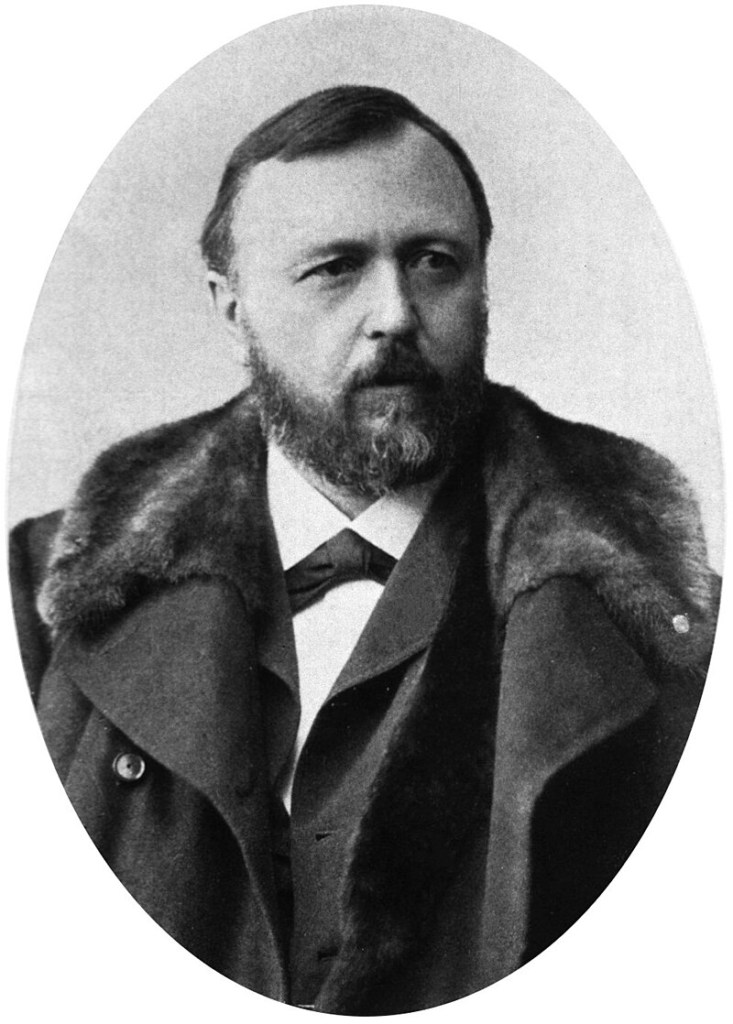
Above: German psychiatrist Richard von Krafft-Ebing (1840 – 1902)
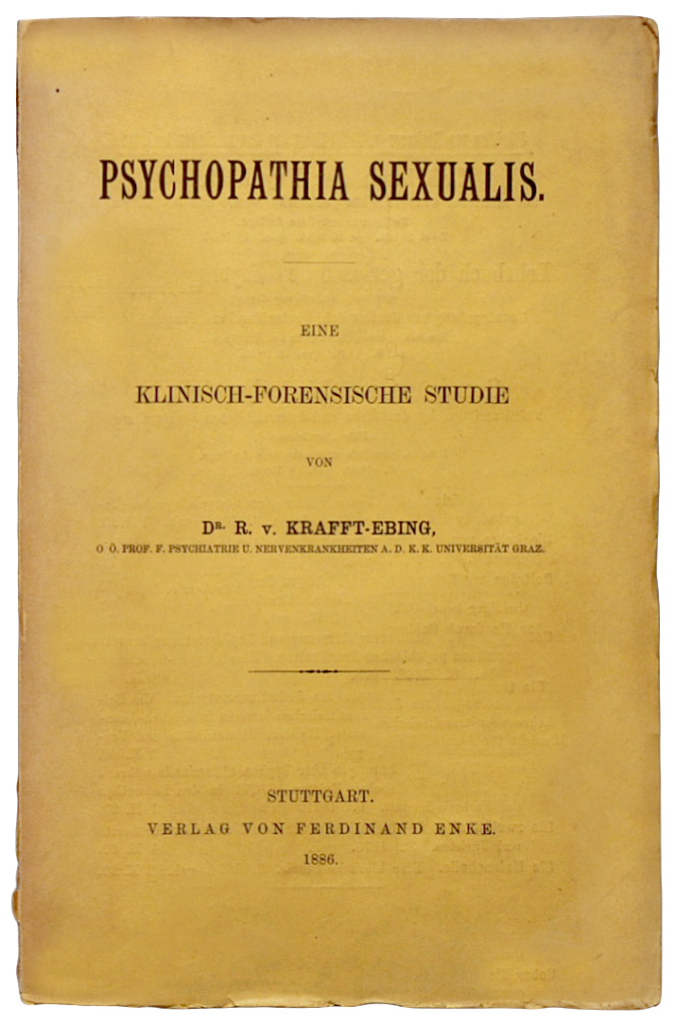
Although at times Nin scorned her erotica and feared their effect on her literary reputation, they have been seen by sex-positive feminists as pioneering work.
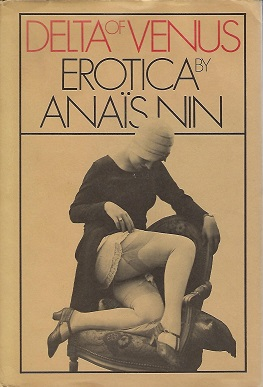
Little Birds is Anaïs Nin’s second published work of erotica, which appeared in 1979 two years after her death, but was apparently written in the early 1940s when she was part of a group “writing pornography for a dollar a day“.
The book is a collection of 13 short stories.
The sexual topics covered are quite varied, ranging from pedophilia to lesbianism, but linked by an interest in female subjectivity and in the dialectic of discourse and intercourse.
Many of the same characters that appear in Delta of Venus, her first published book of erotica, reappear here.
The ‘little birds‘ of the title story refer both to the actual birds used by its exhibitionist protagonist to attract young schoolgirls to his attic, and (metaphorically) to the girls’ flight when he finally exposes himself.
In other stories, Nin calls into question the objectifying tendencies of the male gaze, both male and female complicity in masochism and the pornographic genre itself through her subtle subversion.
While writing her erotica, and organizing that of her fellow writers such as George Barker, Nin referred to herself jokingly as the “madam of this snobbish literary house of prostitution” for a client who examined sexual activity “to the exclusion of aspects which are the fuel that ignites it.
Intellectual, imaginative, romantic, emotional“.
In her 1976 preface to Delta of Venus she said:
“I had a feeling that Pandora’s box contained the mysteries of woman’s sensuality, so different from man’s and for which man’s language was inadequate.
Here in the erotica I was writing to entertain, under pressure from a client who wanted me to ‘leave out the poetry.’
I believed that my style was derived from a reading of men’s works.
For this reason I long felt that I had compromised my feminine self. I put the erotica aside.
Rereading it these many years later, I see that my own voice was not completely suppressed.
In numerous passages I was intuitively using a woman’s language, seeing sexual experience from a woman’s point of view.
I finally decided to release the erotica for publication because it shows the beginning efforts of a woman in a world that had been the domain of men.“
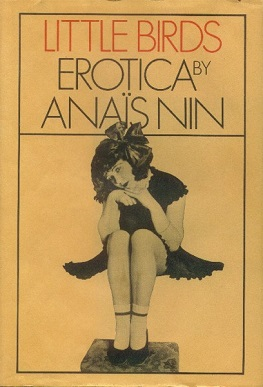
Art is the method of levitation, in order to separate one’s self from enslavement by the Earth.
Anais Nin quoted, Sunbeams : A Book of Quotations (1990) by Sy Safransky
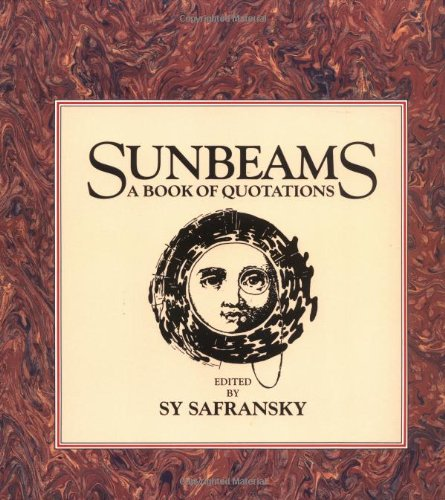
The Italian film La stanza delle parole (dubbed into English as The Room of Words) was released in 1989 based on the Henry and June diaries.
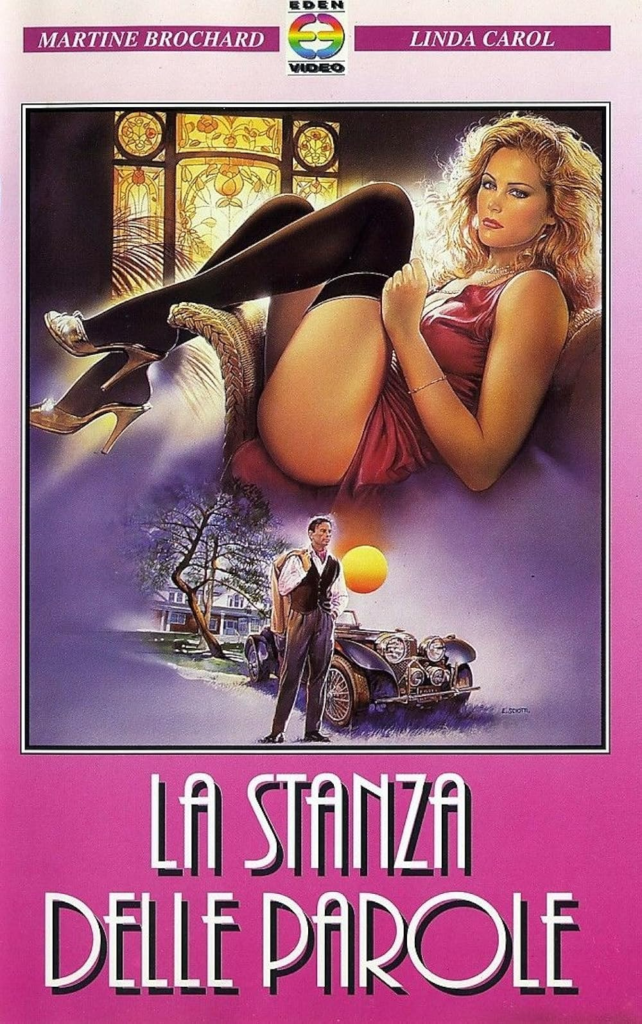
Philip Kaufman directed the 1990 film Henry & June based on Nin’s diaries published as Henry and June: From the Unexpurgated Diary of Anaïs Nin.
She was portrayed in the film by actress Maria de Medeiros.
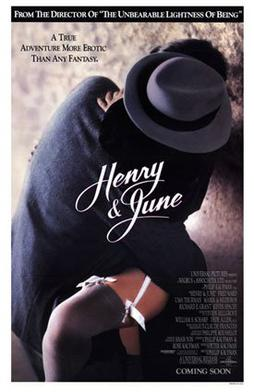
Cuban-American writer Daína Chaviano paid homage to Anaïs Nin and Henry Miller in her novel Gata encerrada (2001) (Incarcerated cat), where both characters are portrayed as disembodied spirits whose previous lives they shared with Melisa, the main character —and presumably Chaviano’s alter ego —, a young Cuban obsessed with Anaïs Nin.
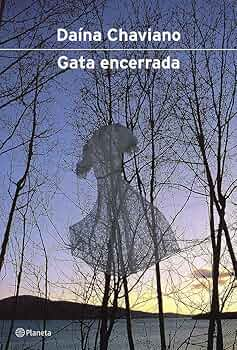
The Cuban poet and novelist Wendy Guerra, long fascinated with Nin’s life and works, published a fictional diary in Nin’s voice, Posar desnuda en la Habana (Posing Nude in Havana) in 2012.
She explained that:
“Nin’s Cuban Diary has very few pages and my delirium was always to write an apocryphal novel; literary conjecture about what might have happened.“

On 27 September 2013, The Huffington Post revealed a previously unpublished love letter written by Gore Vidal to Nin.

Above: American writer Gore Vidal (1925 – 2012)
This letter contradicts Gore Vidal’s previous characterization of his relationship with Nin, showing that Vidal did have feelings for Nin that he later heavily disavowed in his autobiography, Palimpsest.
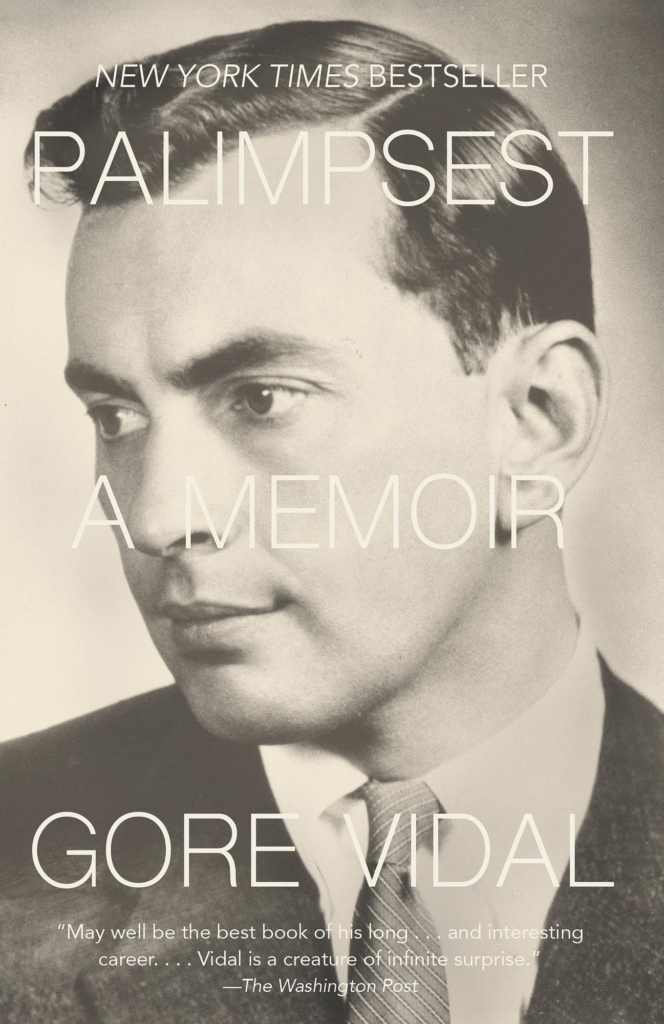
In 2015, a documentary film directed by Sarah Aspinall called The Erotic Adventures of Anais Nin was released, in which Lucy Cohu portrayed Nin’s character.

In 2019, Kim Krizan published Spy in the House of Anaïs Nin, an examination of long-buried letters, papers, and original manuscripts Krizan found while doing archival work in Nin’s Los Angeles home.

Also that year, Routledge published the book Anaïs Nin: A Myth of Her Own by Clara Oropeza, that analyzes Nin’s literature and literary theory through the perspective of mythological studies and depth psychology.
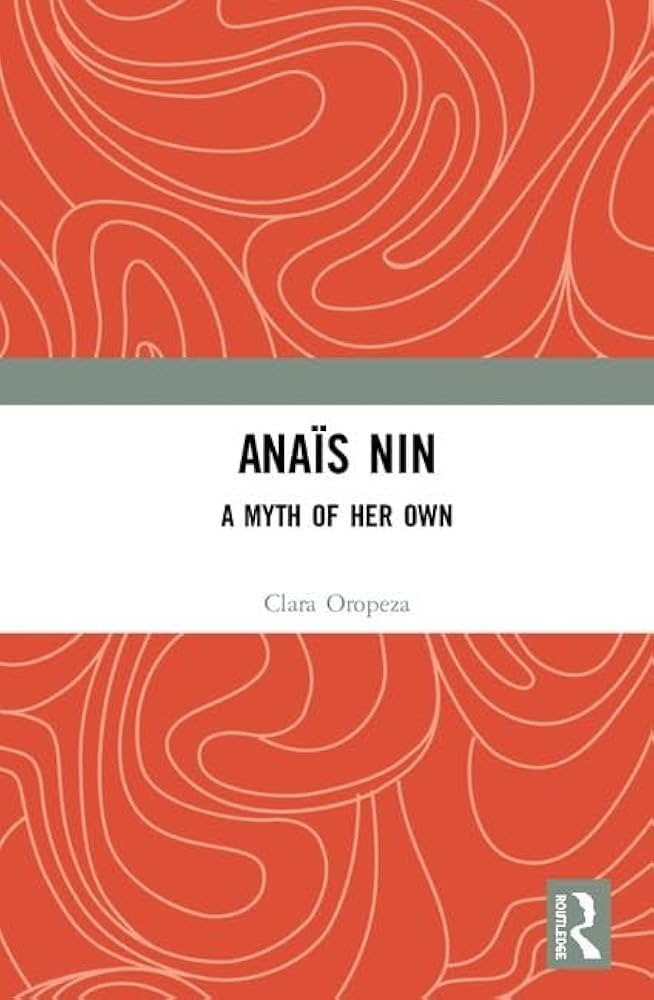
In 2002, Alissa Levy Caiano produced a short film called “The All-Seeing” based on Nin’s short story of the same name in Under a Glass Bell.

In 2021, the porn film company Thousand Faces released a short film called “Mathilde” based on Nin’s story of the same name in Delta of Venus.

The preoccupation of the novelist – how to capture the living moments – was answered by the diary.
You write while you are alive.
You do not preserve them in alcohol until the moment you are ready to write about them.
Anais Nin, quoted in Woman As Writer, Jeannette L. Webber and Joan Grumman (1978)
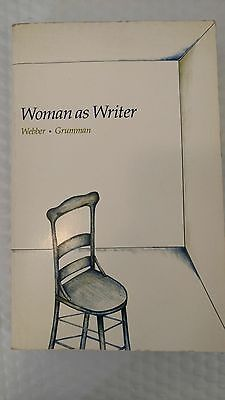
Life shrinks or expands according to one’s courage.
The final lesson a writer learns is that everything can nourish the writer.
The dictionary, a new word, a voyage, an encounter, a talk on the street, a book, a phrase learned.
Electric flesh-arrows traversing the body.
A rainbow of color strikes the eyelids.
A foam of music falls over the ears.
It is the gong of the orgasm.
The poet is one who is able to keep the fresh vision of the child alive.
Anais Nin quoted in French Writers of the Past (2000) by Carol A. Dingle
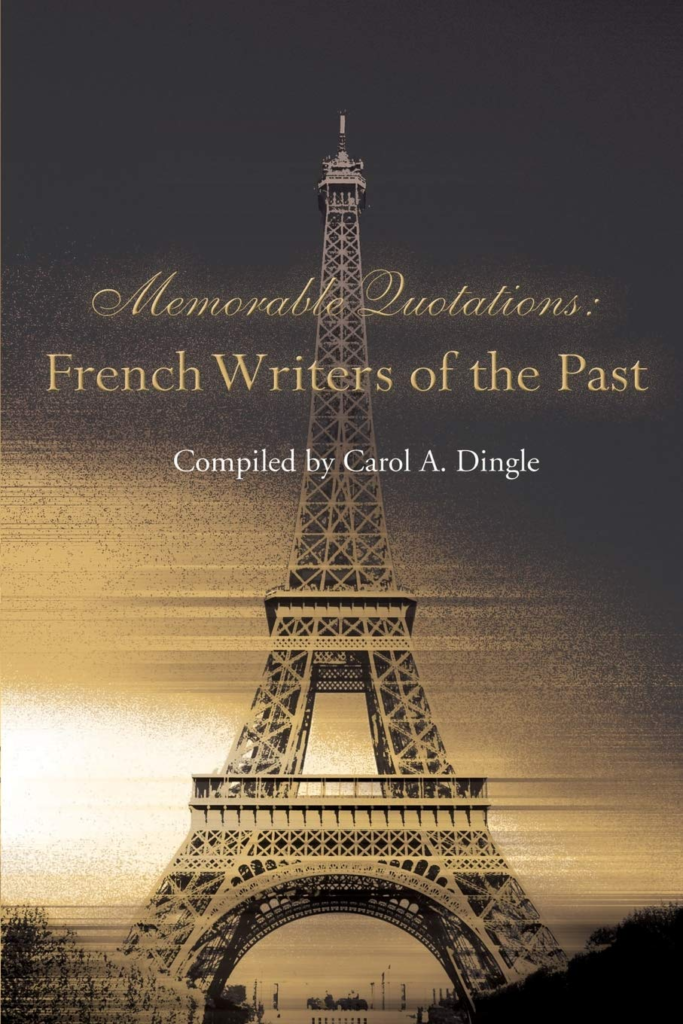
Anaïs Nin delved fearlessly into the world of human desire, artistic creation, and self-exploration.
Through her deeply personal diaries and bold fiction, she challenged conventional notions of love and identity.
Nin’s work is filled with passion — not just the erotic, but the passion for living authentically, for knowing oneself beyond societal expectations.
Her writing still resonates because it grants us permission to embrace complexity, to acknowledge that self-discovery is not a linear path but a lifelong, evolving process.
Nin’s introspection invites us to examine our own desires, fears, and creative impulses, encouraging us to live as truthfully as possible, no matter how difficult or unconventional that truth may be.
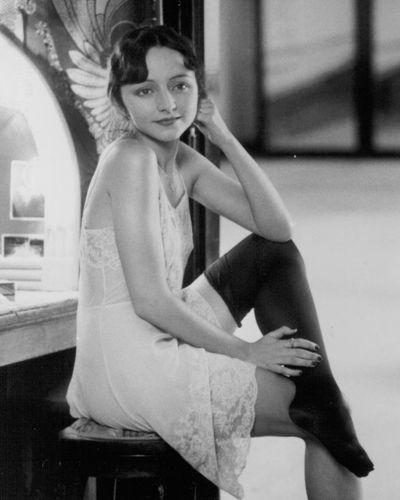
Above: Anaïs Nin
What is it about these writers that still holds power over us?
Perhaps it is their willingness to confront what it means to be human:
To love and lose, to question and search, to express and create.
Whether through Zorrilla’s dramatic poetry, Auden’s philosophical lyricism, or Nin’s fearless introspection, they remind us that literature is not just about storytelling:
It is about connection.
As I reflect on their legacies, I wonder:
What words, what actions, will leave an imprint?
Perhaps that is the challenge February 20 presents to us all:
To seek meaning in our passions, to embrace poetry in our tragedies, and to pursue self-discovery with courage.
In doing so, we keep the echoes of these great voices alive, letting them guide us through the ever-unfolding story of our own lives.

Saturday 22 March 2025
Landschlacht, Canton Thurgau, Switzerland
The digital age has made information more accessible — but also more vulnerable.
There is a great danger of losing knowledge, whether through intentional deletion, political agendas, or neglect.
The question:
What should we give our time and attention to, and who decides what we can choose from?
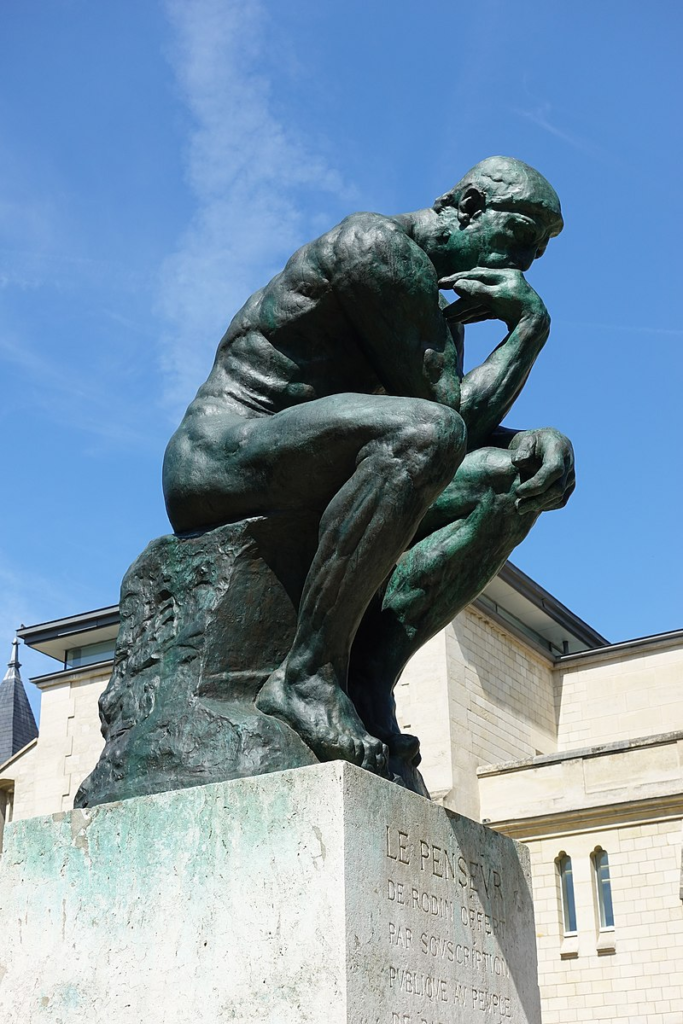
Headlines from this weekend’s New York Times capture my attention:
Headline #1
Scientists rush to copy data that may disappear
Troves of information have vanished already from government websites

Amid the torrent of Executive Orders signed by President Trump were directives that affect the language on government web pages and the public’s access to government data touching on climate change, the environment, energy and public health.

Above: US President Donald Trump
In the past two months, hundreds of terabytes of digital resources analyzing data have been taken off US government websites and more are feared to be at risk of deletion.
While in many cases the underlying data still exists, the tools that make it possible for the public and researchers to use that data have been removed.

But now hundreds of volunteers are working to collect and download as much government data as possible and to recreate the digital tools that allow the public access to that information.
So far, volunteers working on a project called Public Environmental Data Partners have retrieved more than 100 data sets that were removed from government sites.
They have a growing list of 300 more they hope to preserve.

It echoes efforts that began in 2017, during Trump’s first term, when volunteers downloaded as much climate, environmental, energy and public health data as possible because they feared its fate under a President who called climate change “a hoax“.

Little federal information disappeared then, but this time is different.
And so, too, is the response.
“We should not be in this position where the Trump Administration can literally take down every government website if it wants to.”, said Gretchen Gehrke, an environmental scientist who helped found the Environmental Data and Governance Initiative in 2017 to conserve federal data.
“We are not prepared for having resilient public information in the digital age and we need to be.“

While a lot of data generated by agencies, like climate measurements collected by the National Oceanic and Atmospheric Administration (NOAA), is required by Congress, the digital tools that allow the public to view that data are not.

“This is a campaign to remove public access.“, said Jessie Mahr, the Director of Technology at the Environmental Policy Innovation Center, a member group of the data partnership.
“And at the end of the day, American taxpayers paid for these tools.“

Farmers have sued the US Department of Agriculture for deleting climate data tools they hope will reappear.

In February, a successful lawsuit led to the re-publication of the Centers for Disease Control’s Social Vulnerability Index.

A banner at the top of the CDC webpage now notes that the US Department of Health and Human Resources was required to restore the site by court order.

The Public Environmental Data Partner’s coalition has received frequent requests for two data tools:
- the Climate and Economic Justice Screening Tool (CEJST)

- the Environmental Justice Screening Tool (EJ Screen)

The first was developed under a Biden Administration initiative to make sure that 40% of federal climate and infrastructure investments go to disadvantaged communities.

Above: US President Joe Biden (r. 2021 – 2025)
It was taken offline in January.
EJ Screen, developed under the Obama Administration and once available through the Environmental Protection Agency (EPA), was removed in early February.
“The very first thing across the Executive Branch was to remove references to equity and environmental justice and to remove equity tools from all agencies.“, Dr. Gehrke said.
“It really impairs the public’s ability to demonstrate structural racism and its disproportionate impacts on communities of color.“
Just a dozen years ago, the EPA defined environmental justice as “the fair treatment and meaningful involvement of all people regardless of race, color, national origin or income“.
The EPA’s new administrator, Lee Zeldin, recently equated environmental justice to “forced discrimination“.
Nonprofit organizations used both screening tools to apply for federal grants related to environmental justice and climate change, but the EPA closed all of its environmental justice offices this month, erasing three decades of work to mitigate the efforts on poor and minority communities often disproportionately burdened by industrial pollution.
It also cancelled hundreds of grants already promised to nonprofit groups trying to improve conditions in those communities.

“You can’t possibly solve a problem until you can articulate it, so it was an important source of data for articulating the problem.“, said Harriet Festing, Executive Director of the nonprofit group Anthropocene Alliance.

Christina Gosnell, co-founder and President of Catalyst Cooperative, a member of the environmental data cooperative, said her main concern was not that the data won’t be archived before it disappears, but that it won’t be updated.
Preserving the current data sets is the first step, but they could become irrelevant if data collection stops, she said.

More than 100 tribal nations, cities and nonprofit groups used CEJST to show where and why their communities needed trees, which can reduce urban heat, and then applied for funds from the Arbor Day Foundation, a nonprofit organization that received a $75 million grant from the Inflation Reduction Action.
The Arbor Day Foundation was on track to plant over a quarter of a million new trees before its grant was terminated in February.
How hard it is to reproduce complex tools depends on how the data was created and maintained.

CEJST was “open source“, meaning the raw data and information that backed it up were already publicly accessible for coders and researchers.
It was put back together by three people within 24 hours, according to Mahr, but EJ Screen was not an open source tool and recreating it was more complicated.
“We got a lot of pressure on the last weeks of the Biden Administration to make EJ Screen open source, so they released as much code and documentation as they could.“, Gehrke said.
It took at least seven people more than three weeks to make a version of EJ Screen that was close to its original functionality.
Mahr said they are still tinkering with it.
It is akin to recreating a recipe with an ingredient list but no assembly instructions.
Software engineers have to try and remember how the “dish” tasted last time and then use trial and error to reassemble it from memory.
Now the coalition is working to conserve even more complicated data sets, like climate data from NOAA, which hosts many petabytes – think 1,000 terabytes or more than 1 million gigabytes – of weather observations and climate models in its archives.
“People may not understand just how much data that is.“, Gehrke said in an email.
It could cost hundreds of thousands of dollars per month just in storage fees, she said, without including the cost of any sort of access.
She said they were talking to NOAA personnel to prioritize the most valuable and highest impact data for preservation quickly.
So far, the data they have collected is largely stored in the cloud and backed up using servers around the globe.
They have worked out pro bono agreements to avoid having to pay to back it up.
Austin Gaffney, New York Times, Saturday 22 March 2025

Government data on climate change, health, and social issues vanishing.
The historical precedent of the burning of libraries, the destruction of manuscripts.
Who controls history when information is erased?
The burning of books….
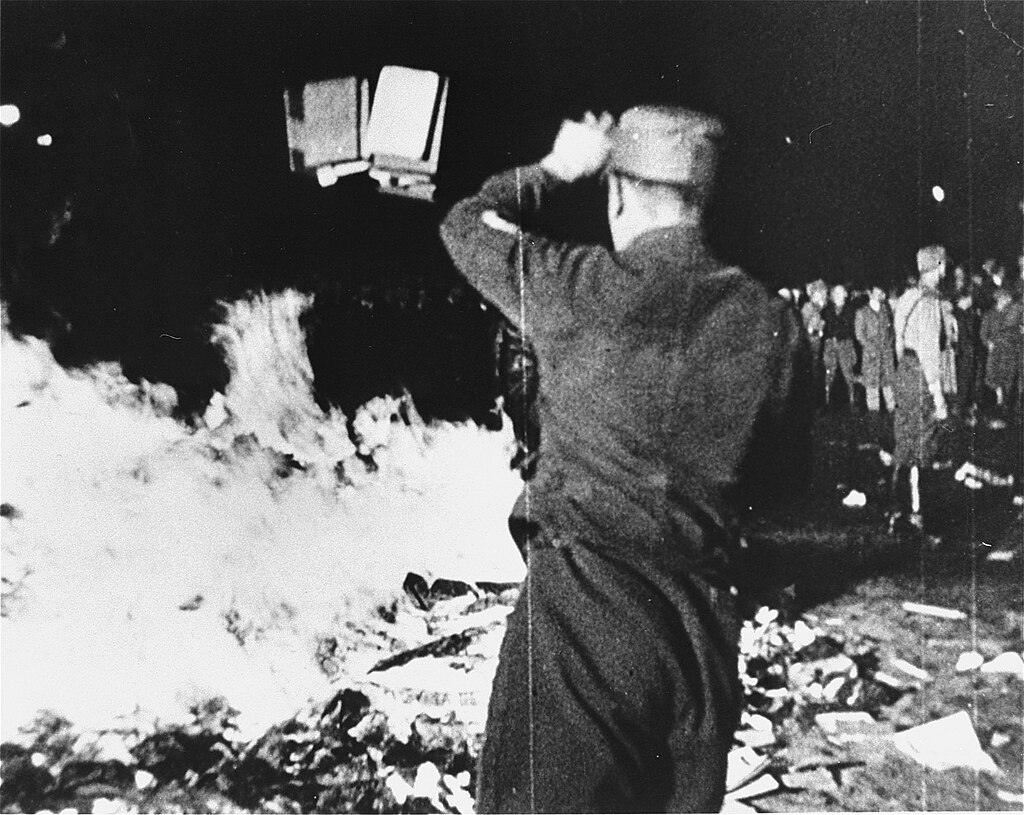
Above: Nazi book burnings, Berlin, Germany, 10 May 1933
“Aren’t you going to ask me about last night?“, Montag said.
“What about it?“, Mildred asked.
“We burned a thousand books.
We burned a woman.“
“Well?“
“We burned copies of Dante and Swift and Marcus Aurelius.“
“You’re not sick.“
“Mildred, how would it be if, well, maybe, I quit my job awhile?“
“You want to give up everything?
After all these years of working because, one night, some woman and her books – “
“You should have seen her, Millie!“
“She is nothing to me.
She should not have had books.
It was her responsibility.
She should have thought of that.
I hate her.
She has got you going and next thing you know we will be out, no house, no job, nothing.“
“You weren’t there.
You didn’t see.
There must be something in books, things we can’t imagine, to make a woman stay in a burning house.
There must be something there.
You don’t stay for nothing.“
“She was simple-minded.“
“She was as rational as you and I, more so perhaps, and we burned her.“
“That’s water under the bridge.“
“No, not water.
Fire.
You ever seen a burned house?
It smolders for days.
Well, this fire will last me the rest of my life.
God!
I’ve been trying to put it out, in my mind, all night.
I’m crazy with trying.“
“It’s not just the woman that died.“, said Montag.
“Last night I thought about all the kerosene I’ve used in the past ten years.
And I thought about books.
And for the first time I realized that a man was behind each one of the books.
A man had to think them up.
A man had to take a long time to put them on paper.
And I had never even thought that thought before.“
He got out of bed.
“It took some man a lifetime maybe to put some of his thoughts down, looking around at the world and life.
And then I came along in two minutes and…
Boom!
It’s all over.“
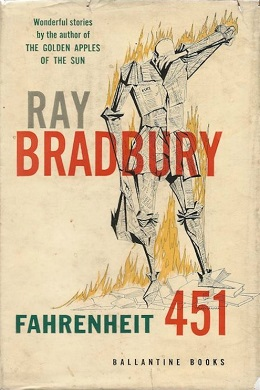
Beatty pulled his pipe.
“Every fireman, sooner or later, hits this.
They only need understanding, to know how the wheels run.
Need to know the history of our profession.
They don’t feed it to rookies like they used to.
Only fire chiefs remember it now.
I’ll let you in on it.“
“When did it all start, you ask, this job of ours, how did it come about, where, when?
The fact is we didn’t get along well until photography came into its own.
Then – motion pictures in the early 20th century.
Radio.
Television.
Things began to have mass.“
“And because they had mass, they became simpler.“
“Once, books appealed to a few people, here, there, everywhere.
They could afford to be different.
The world was roomy.
But then the world got full.
Double, triple, quadruple population.
Films and radios, magazines, books levelled down to a sort of paste pudding norm, do you follow me?“
“Picture it. 19th century man with his horses, dogs, carts, slow motion.
Then, in the 20th century, speed up your camera.
Books cut shorter.
Condensations.
Digests.
Tabloids.
Everything boils down to the gag, the snap ending.“
“Classics cut to fit 15-minute radio shows, then cut again to fill a two-minute book column, winding up at last as a 10- or 12-line dictionary résumé.
I exaggerate, of course.
The dictionaries were for reference.
But many were those whose sole knowledge of Hamlet was one-page digest in a book that claimed:
Now at least you can read all the classics.
Keep up with your neighbors.
Do you see?
Out of the nursery into the college and back to the nursery.
There is your intellectual pattern for the past five centuries or more.“
“Speed up the film. Quick.
Click? Pic? Look, Eye, Now, Flick, Here, There, Swift, Pace, Up, Down, In, Out, Why, How, Who, What, Where, Eh?
Uh! Bang! Smack! Wallop. Bing, Bong, Boom!
Digest-digests, digest-digest-digests.
Politics?
One column, two sentences, a headline!
Then, in mid-air, all vanishes!
Whirl man’s mind around about so fast under the pumping hands of publishers, exploiters, broadcasters, that the centrifuge flings off all unnecessary, time-wasting thought!“
“School is shortened, discipline relaxed, philosophies, histories, languages dropped, English and spelling gradually neglected, finally almost completely ignored.
Life is immediate, the job counts, pleasure lies all about after work.
Why learn anything save pressing buttons, pulling switches, fitting nuts and bolts?“
“The zipper displaces the button and man lacks just that much time to think while dressing at dawn, a philosophical hour and thus a melancholy hour.“
“Life becomes one big pratfall.
Everything bang, boff and wow!“
“Empty the theaters save for clowns and furnish the rooms with glass walls and pretty colors running up and down the walls like confetti or blood or sherry or sauterne.“
“More sports for everyone, group spirit, fun, and you don’t have to think, eh?
Organize and organize and super-organize super-super sports.
More cartoons in books.
More pictures.
The mind drinks less and less.
Impatience.
Highways full of crowds going somewhere, somewhere, somewhere, nowhere.
The gasoline refugee.
Towns run into motels, people in nomadic surges from place to place, following the moon tides, living tonight in the room where you slept this noon and I the night before.“
“Now let’s take up the minorities in our civilization, shall we?
Bigger the population, the more minorities.
Don’t step on the toes of the dog-lovers, the cat-lovers, doctors, lawyers, merchants, chiefs, Mormons, Baptists, Unitarians, second-generation Chinese, Swedes, Italians, Germans, Texans, Brooklynites, Irishmen, people from Oregon or Mexico.
The people in this book, this play, this TV serial are not meant to represent any actual painters, cartographers, merchants anywhere.
The bigger your market, the less you handle controversy, remember that!
All the minor minor minorities with their navels to be kept clean.
Authors, full of evil thoughts, lock up your typewriters.
They did.
Magazines became a nice blend of vanilla tapioca.
Books, so the damned snobbish critics said, were dishwater.
No wonder books stopped selling, the critics said.
But the public, knowing what it wanted, spinning happily, let the comic books survive.
And the three-dimensional sex magazines, of course.
There you have it.
It didn’t come from the Government down.
There was no dictum, no declaration, no censorship, to start with, no!
Technology, mass exploitation and minority pressure carried the trick, thank God.
Today, thanks to them, you can stay happy all the time, you are allowed to read comics, the good old confessions or trade journals.“
“Yes, but what about the firemen, then?“, asked Montag.
“Ah.
What more easily explained and natural?
With school turning out more runners, jumpers, racers, tinkerers, grabbers, snatchers, fliers and swimmers, instead of examiners, critics, knowers and imaginative creators, the word “intellectual“, of course, became the swear word it deserved to be.
You always dread the unfamiliar.
Surely you remember the boy in your own school class who was exceptionally “bright“, did most of the reciting and answering while the others sat like so many leaden idiots, hating him.
And wasn’t it this bright boy you selected for beatings and tortures after hours?
Of course it was.
We must all be alike.
Not everyone born free and equal, but everyone made equal.
Each man the image of every other, then all are happy, for there are no mountains to make them cower, to judge themselves against.
So!
A book is a loaded gun in the house next door.
Burn it.
Take the shot from the weapon.
Breach man’s mind.
Who knows what might be the target of the well-read man?
Me?
I won’t stomach them for a minute.
And so when houses were finally fireproofed completely, all over the world, there was no longer need of firemen for the old purposes.
They were given the new job, as custodians of our peace of mind, the focus of our understandable and rightful dread of being inferior.“
“You must understand that our civilization is so vast that we can’t have our minorities upset and stirred.
Ask yourself, what do we want in this country, above all?
People want to be happy, isn’t that right?
Haven’t you heard it all your life?
“I want to be happy“, people say.
Well, aren’t they?
Don’t we keep them moving, don’t we give them fun?
That’s all we live for, isn’t it?
For pleasure, for titillation?
And you must admit our culture provides plenty of these.“
“Colored people don’t like Little Black Sambo.
Burn it.
White people don’t feel good about Uncle Tom’s Cabin.
Burn it.
Someone has written a book on tobacco and cancer of the lungs?
The cigarette people are weeping?
Burn the book.
Serenity.
Peace.
Take your fight outside.
Better yet, into the incinerator.
Funerals are unhappy and pagan?
Eliminate them, too.
Five minutes after a person is dead he is on his way to the Big Flue, the Incinerators serviced by helicopters all over the country.
Ten minutes after death a man is a speck of black dusk.
Let us not quibble over individuals with memorials.
Forget them.
Burn them all, burn everything.
Fire is bright and fire is clean.“
“You can’t build a house without nails and wood.
If you don’t want a house built, hide the nails and wood.
If you don’t want a man unhappy politically, don’t give him two sides to a question to worry him:
Give him one.
Better yet, give him none.
Let him forget there is such a thing as war.
If the Government is inefficient, top-heavy and tax-mad, better it be all those than that people worry over it.
Peace.
Give the people contests they win by remembering the words to more popular songs or the names of state capitals or how much corn Iowa grew last year.
Cram them full of non-combustible data, chock them so damned full of “facts” they feel stuffed, but absolutely “brilliant” with information.
Then they will feel they are thinking, they will get a sense of motion without moving.
And they’ll be happy, because facts of that sort don’t change.
Don’t give them any slippery stuff like philosophy or sociology to tie things up with.
That way lies melancholy.
Any man who can take a TV wall apart and put it back together again, and most men can nowadays, is happier than any man who tries to slide-rule, measure and equate the Universe, which just won’t be measured or equated without making man feel bestial and lonely.
I know, I’ve tried it.
To Hell with it.
So bring on your clubs and parties, your acrobats and magicians, your daredevils, jet cars, motorcycle helicopters, your sex and heroin, more of everything to do with automatic reflex.
If the drama is bad, if the film says nothing, if the play is hollow, sting me with the theremin, loudly.
I’ll think I’m responding to the play, when it’s only a tactile reaction to vibration.
But I don’t care.
I just like solid entertainment.“
“I must be going.
Lecture’s over.
I hope I’ve clarified things.
The important thing for you to remember is we are the Happiness Boys.
We stand against the small tide of those who want to make everyone unhappy with conflicting theory and thought.
We have our fingers in the dyke.
Hold steady.
Don’t let the torrent of melancholy drown our world.“
“One last thing.“, said Beatty.
“At least once in his career, every fireman gets an itch.
What do the books say, he wonders.
Oh, to scratch that itch, eh?
Well, Montag, take my word for it, I’ve had to read a few in my time, to know what I was about, and the books say nothing!
Nothing you can teach or believe.
They are about non-existent people, figments of imagination, if they are fiction.
And if they are non-fiction, it is worse, one professor calling another an idiot, one philosopher screaming down another’s gullet.
All of them running about, putting out the stars and extinguishing the sun.
You come away lost.“
Ray Bradbury, Fahrenheit 451
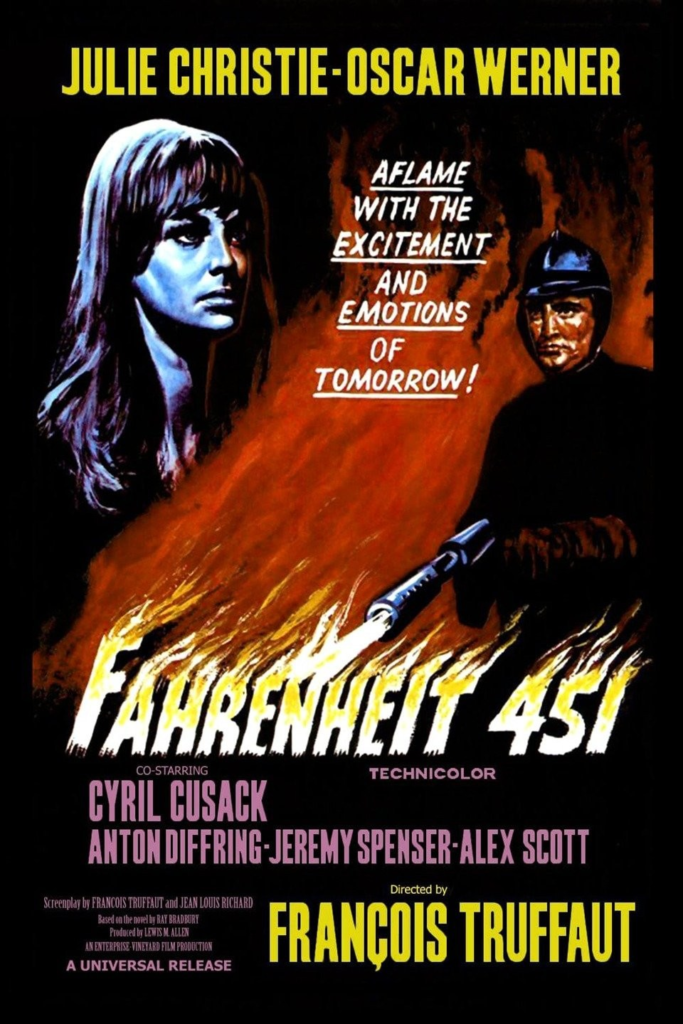
Let me be frank.
Books do affect us.
Books do make us think and feel.

José Zorrilla’s Don Juan Tenorio speaks to us about a man’s legacy and reputation:
Do we control how we are remembered?
What are the consequences of ignoring truth in favor of self-delusion?
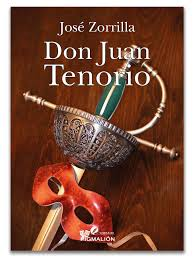
W.H. Auden’s “September 1, 1939” haunts us with its themes of war and amnesia.
“Those to whom evil is done
Do evil in return”
He makes us think of the cycle of historical forgetfulness and the modern world’s failure to learn from past atrocities.

Anaïs Nin demonstrates the necessity of preserving raw, uncomfortable truths in literature and life.
She reminds us of the danger of self-censorship and curating a version of who we are that is incomplete.
“We do not see things as they are, we see them as we are.” illustrates how selective memory shapes reality.
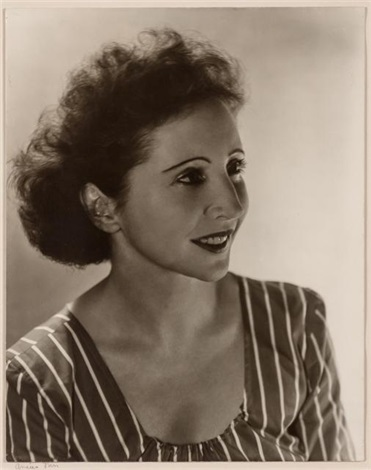
Above: Anaïs Nin
Ray Bradbury’s Fahrenheit 451 speaks of a world of the tatters and charcoal ruins of history, a place where the flapping pigeon-winged books died and went up in sparkling whirls and blew away on a wind turned dark with burning.
And yet there are still those whose gentle hunger touches over everything with tireless curiosity, who find the gently flattering light of a candle strangely comfortable and rare.
Our world does not seem so different from Bradbury’s dystopia.
People never stop to think.
They never see the world except as a blur.
They never have time to see the man in the moon.
They do not see the clock in their darkened bedroom with its white silence and glowing certainty that tells of the night passing swiftly on toward further darkness and a new sun.
They fear that other self, that subconscious idiot babbling, independent of will, habit and conscience.
It is a silence with an occasional sound of inner suffocation and blind searching within liquid melancholy and the slow dark sludge of the nameless.
There are too many of us.
Nobody knows anyone.
The world has melted down and sprung up in a new and colorless form.
The age of the disposable.
Love is used up on one’s self.
No one has time any more for anyone else.
No one lays down with the moonlight.
Thunder falling downstairs.
The whole world pouring down.
We are left alone standing at the station in the rain.
We are inundated with facts and yet we don’t know anything any more.
Men are dependent on machines that do not think anything we don’t want them to think.
What a shame that is all they or we can ever know.
We never ask questions.
We just swallow the answers provided.
They run us so ragged by the end of the day we cannot do anything but go to bed or hurt one another.
We don’t know who we are or what we want or where we are going.
People don’t talk about anything.
They all say the same things and no one says anything different from anyone else.
It is only color and all abstract.
Does life have a happy ending?
I haven’t read that far.
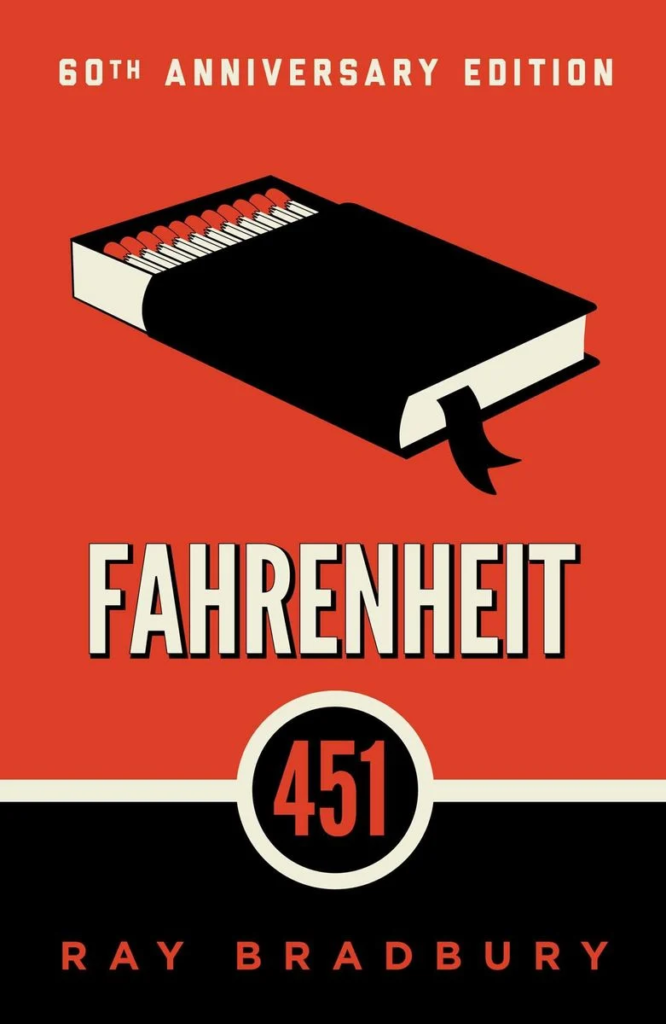
Headline #2
The world’s silence on Sudan’s genocide verges on complicity
Ignoring the country and cancellation of US aid is horrifying.
Do Trump and his aides care?

The world’s worst humanitarian crisis today is probably the web of famine, civil war, mass rape and other atrocities in Sudan, a nightmare that the US has formally described as genocide.
Many tens of thousands have been killed.

Above: Flag of Sudan
11 million Sudanese have been displaced, the most lethal famine in decades may be underway.
UNICEF warns that children as young as one year old are being raped.

Above: Emblem of the United Nations Children’s Emergency Fund
Yet the Trump Administration is now cutting back on humanitarian assistance, aggravating the starvation.
And the Trump Administration (and the Biden Administration before it) has not been willing to call out the United Arab Emirates for having armed a brutal militia called the Rapid Support Forces that – according to survivors of its rampages – is committing massacres and rapes.

Above: Flag of the United Arab Emirates
Do President Trump and his aides care about suffering in a distant land?
I don’t know, but I think when we hear individual stories it may be more difficult to turn away.
Over the last few years, US-supported soup kitchens opened up around Sudan and saved many lives from famine.

But the Trump Administration cut funding for those kitchens (“emergency response rooms“).
More than 70% have already closed.
Famine is spreading.
Corpses line the roads.

The sons of rapists are now raping the daughters of women who had been assaulted a generation ago.
I suspect that many Americans regard all this is sad but inevitable, viewing Sudan as a bottomless pit of pain that we cannot do anything about.
Yet that is not quite right.

Above: (in green) Sudan
I don’t know if we can end the slaughter, but in the early 2000s the West took actions that reduced the death toll, while this time we are worse than passive.
The cutting of humanitarian aid means more children starving.
Our silence about the UAE probably means more atrocities.
That is the wrenching contrast.

Above: (in green) United Arab Emirates
A generation ago, Americans were outraged by genocide and acted – not always perfectly – to provide aid and pressure governments in ways that saved lives.
Now we are pulling back aid and are largely silent about the world’s worst humanitarian crisis.
That comes painfully close to complicity.
Nicholas Kristof, New York Times, Saturday 22 March 2025

If the world does not record or acknowledge suffering, does the suffering cease to exist?
Herein lies the danger of selective outrage.
Who decides which tragedies matter?
Let us speak of the role of memory and witness:
What does history teach us about the cost of forgetting?

The thing that he was about to do was to open a diary.
This was not illegal, but if detected it was reasonably certain that it would be punished by death or at least by 25 years in a forced labor camp.
To mark the paper was the decisive act.
In small clumsy letters he wrote:
April 4th, 1984.
He sat back.
A sense of complete helplessness descended upon him.
To begin with he did not know with any certainty that this was 1984.
For whom, it suddenly occurred to him to wonder, was he writing this diary?
For the future, for the unborn.
His mind hovered for a moment round the doubtful date on the page and then fetched up with a bump against the Newspeak word doublethink.
For the first time the magnitude of what he had undertaken came home to him.
How could you communicate with the future?
It was of its nature impossible.
Either the future would resemble the present, in which case it would not listen to him.
Or it would be different from it and his predicament would be meaningless.
For some time he sat gazing stupidly at the paper.
It was curious that he seemed not merely to have lost the power of expressing himself, but even to have forgotten what it was that he had originally intended to say.
For weeks past he had been making ready for this moment.
It had never crossed his mind that anything would be needed except courage.
The actual writing would be easy.
All he had to do was to transfer to paper the interminable restless monologue that had been running inside his head literally for years.
At the moment, however, even the monologue had dried up.
The seconds were ticking by.
He was conscious of nothing except the blankness of the page in front of him.
Curiously the chiming of the hour seemed to have put new heart into him.
He was a lonely ghost uttering a truth that nobody would ever hear.
But so long as he uttered it, in some obscure way the continuity was not broken.
It was not by making yourself heard but by staying sane that you carried on the human heritage.
He went back to the table, dipped his pen and wrote:
To the future or to the past, to a time when thought is free, when men are different from one another and do not live alone – to a time when truth exists and what is done cannot be undone:
From the age of uniformity, from the age of solitude, from the age of Big Brother, from the age of doublethink – greetings!
He was already dead, he reflected.
It seemed to him that it was only now, when he had begun to be able to formulate his thoughts, that he had taken the decisive step.
The consequences of every act are included in the act itself.
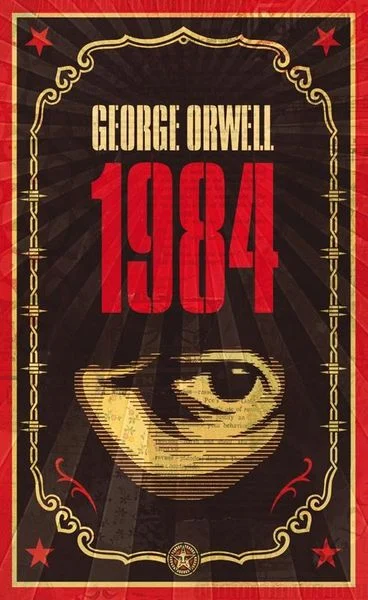
Oceanic society rests ultimately on the belief that Big Brother is omnipotent and that the Party is infallible, but since in reality Big Brother is not omnipotent and the Party is not infallible, there is a need for an unwavering moment-to-moment flexibility in the treatment of facts.
The keyword is blackwhite.
Like so many Newspeak words, this word has two mutually contradictory meanings.
Applied to an opponent, it means the habit of impudently claiming that black is white, in contradiction of the plain facts.
Applied to a Party member, it means a loyal willingness to say that black is white when Party discipline demands this, but it means also the ability to believe that black is white and more to know that black is white and to forget that one has ever believed the contrary.
This demands a constant alteration of the past, made possible by the system of thought which really embraces all the rest and which is known in Newspeak as doublethink.
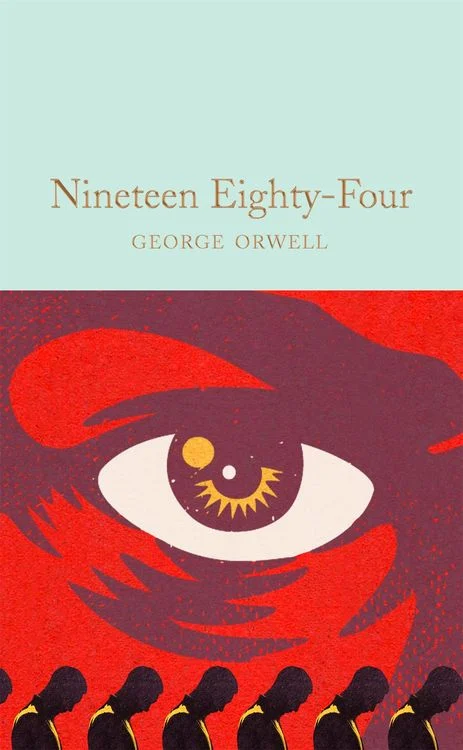
The alteration of the past is necessary for two reasons:
The Party member, like the proletarian, tolerates present day conditions partly because he has no standard of comparison.
He must be cut off from the past, just as he must be cut off from foreign countries, because it is necessary for him to believe that he is better off than his ancestors and that the average level of material comfort is constantly rising.
But by far the more important reason for the readjustment of the past is the need to safeguard the infallibility of the Party.
It is not merely that speeches, statistics and records of every kind must be constantly brought up to date in order to show that the predictions of the Party were in all cases right.
It is also that no change in doctrine or in political alignment can ever be admitted.
For to change one’s mind or even one’s policy is a confession of weakness.
If, for example, Eurasia or Eastasia is the enemy today, then that country must always have been the enemy.
If the facts say otherwise, then the facts must be altered. Thus history is continuously rewritten.
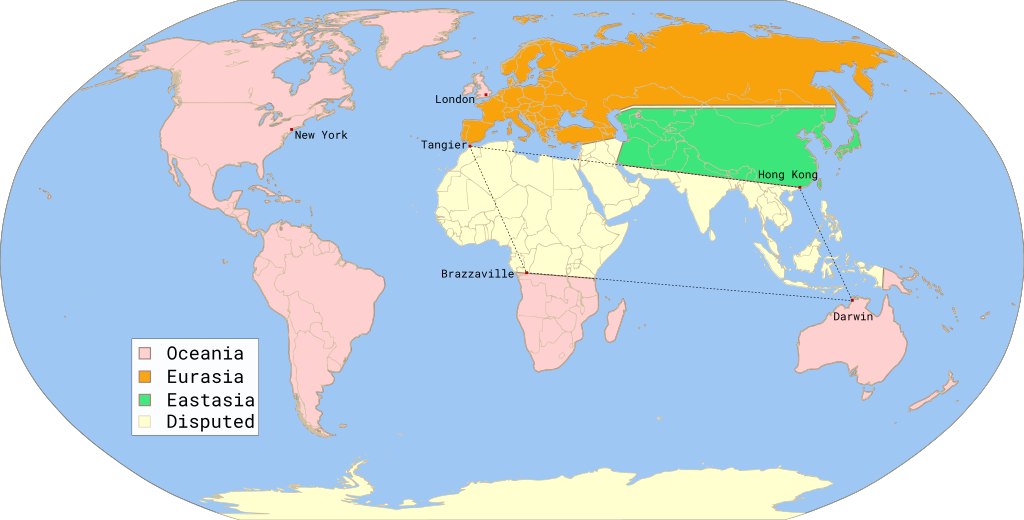
This day-to-day falsification of the past, carried out by the Ministry of Truth, is as necessary to the stability of the régime as the work of repression and espionage carried out by the Ministry of Love.
The mutability of the past is the central tenet of Ingsoc.
Past events have no objective existence, but survive only in written records and in human memories.
The past is whatever the records and the memories agree upon.
And since the Party is in full control of all records and in equally full control of the minds of its members, it follows that the past is whatever the Party chooses to make it.
It also follows that though the past is alterable, it never has been altered in any specific ınstance.
For when it has been recreated in whatever shape is needed at the moment, then this new version is the past.
No different past can ever have existed.
At all times the Party is in possession of absolute truth and clearly the absolute can bever have been different from what it is now.
The control of the past depends above all on the training of memory.
To make sure that all written records agree with the orthodoxy of the moment is merely is merely a mechanical act, but it is also necessary to remember that events happened in the desired manner and if it is necessary to rearrange one’s memories or to tamper with written records, then it is necessary to forget that one has done so.
Everything faded into mist.
The past was erased.
The erasure was forgotten.
The lie became truth.
The past not only changed, but changed continuously.
George Orwell, Nineteen Eighty-Four
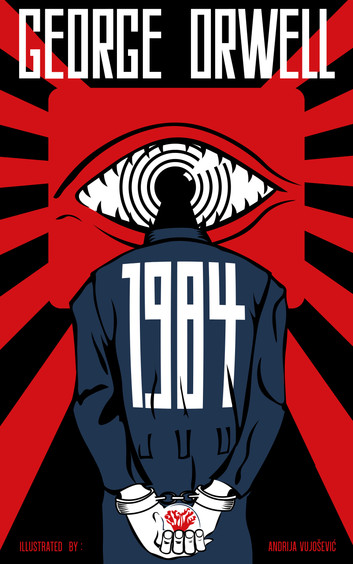
Orwell wrote this story as a cautionary tale.
Nineteen Eighty-Four was not meant to be an instruction manual.

As for the mainstream media, there is a deep and troubling reality.
The media, the supposed “fourth estate“, holds immense power in shaping public perception.
The suffering that is reported becomes real in the minds of the masses, while the suffering that goes unreported might as well not exist.
This selective outrage, driven by political, economic, and social interests, creates a dangerous hierarchy of human tragedy.
Why does one war capture headlines for months while another is barely a footnote?
Why does the suffering of one group evoke global protests while another fades into silence?
The answer often lies in geopolitical interests, media ownership, and the attention economy.
What bleeds leads, but whose blood is deemed worthy of leading is often dictated by unseen hands.
Mainstream media does contain elements of propaganda, though often under the guise of “objective reporting”.
Even in democratic societies, media conglomerates have political leanings, corporate backers, and national interests to serve.
The difference between democratic and autocratic media isn’t necessarily in the presence of bias — it’s in the degree of subtlety and the illusion of choice.
A state-controlled news outlet in an autocracy openly serves the regime; a corporate-controlled media giant in a democracy might do the same but through selective coverage, framing, and omission.
So, can it be trusted?
Sometimes.
But trusting it entirely is naive.
One must read between the lines, consult multiple sources (including independent journalism), and always ask:
Why am I seeing this story now?
Who benefits from this narrative?
What voices are missing?
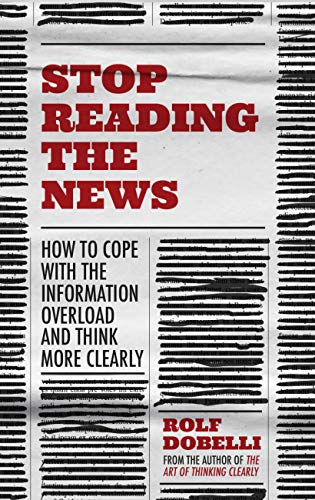
McLuhan and Chomsky would have found fascinating — though quite different — perspectives on this.
McLuhan, ever the media philosopher, wouldn’t focus as much on what is reported but how it’s reported.
He’d remind us that the medium — whether print, television, or digital — shapes our understanding of the world more than the actual content.
The way the New York Times presents information, the way TV news packages stories, and the way social media filters content all influence how we perceive reality.
For McLuhan, mainstream media isn’t just about bias in reporting —it’s about how media itself alters our cognitive landscape.
A newspaper like The New York Times shapes public discourse not just through its stories but through the very format of traditional journalism — its structure, its reliance on official sources, its editorial voice.
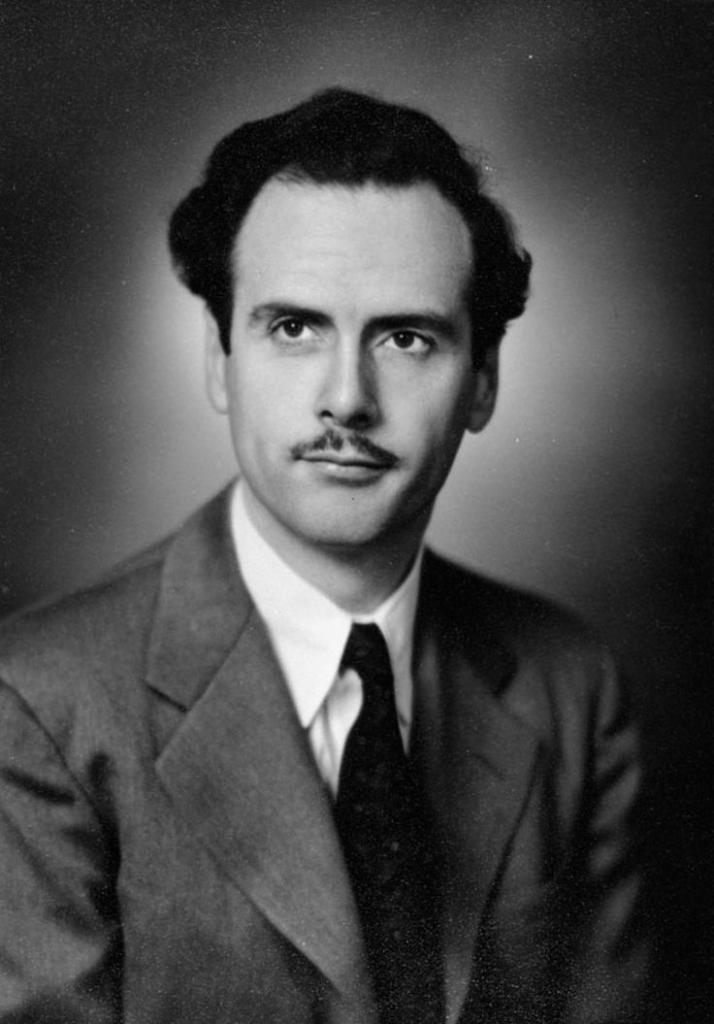
Above: Canadian philosopher Marshall McLuhan (1911 – 1980)
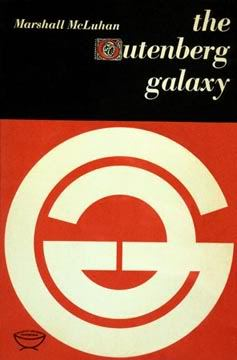
Noam Chomsky, on the other hand, would take a far more critical stance.
His famous work Manufacturing Consent (co-authored with Edward S. Herman) argues that mainstream media operates within a propaganda model.
According to Chomsky, corporate ownership, advertising revenue, elite sourcing, and ideological filtering create a system where media subtly serves power rather than challenging it.
He wouldn’t claim that The New York Times is full of outright lies.
Instead, he’d argue that it systematically frames issues in ways that reinforce dominant narratives.
For example, wars waged by Western nations are framed as “interventions” rather than aggressions; economic policies that benefit the elite are discussed as “necessary reforms”.
Even when the media does criticize power, it does so within acceptable boundaries — rarely questioning the fundamental structures of power itself.
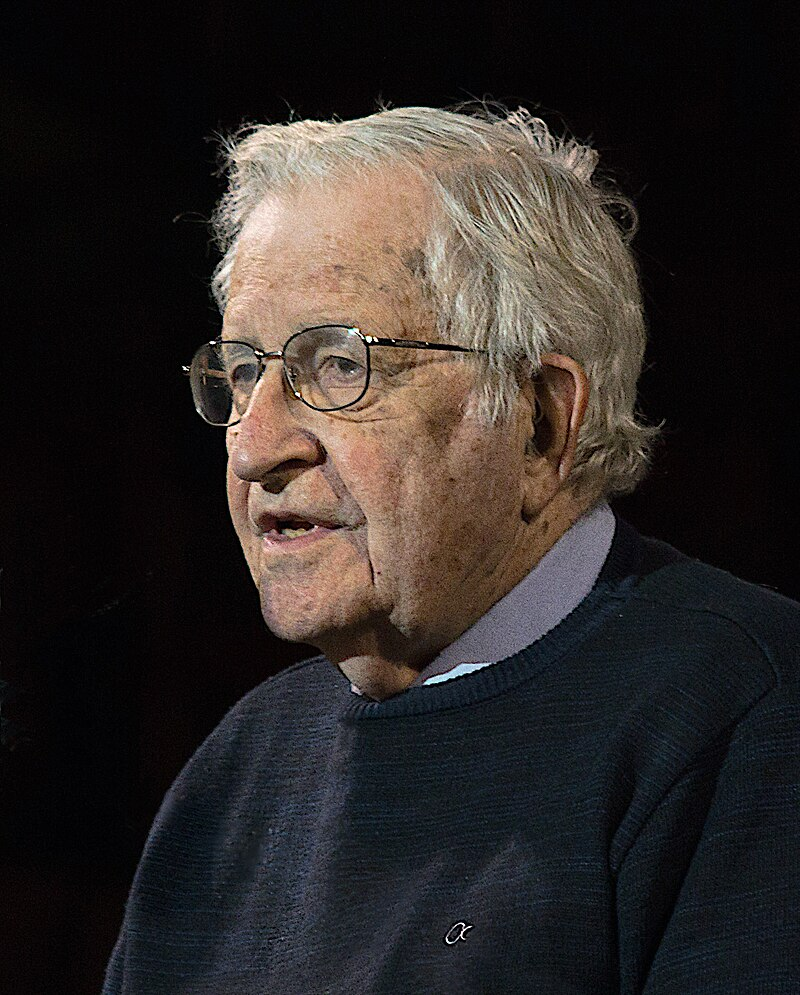
Above: American intellectual Noam Chomsky
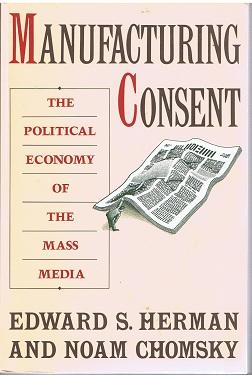
How trustworthy is the New York Times?
It depends on how you define “trustworthy“.
Fact-checking & Journalistic Standards:
Compared to openly partisan or state-controlled media, The New York Times maintains high journalistic standards.
It fact-checks, issues corrections, and adheres to professional ethics.
It is not outright fake news.
Framing & Bias:
However, it has an elite, liberal, Western bias.
Its coverage of global conflicts often aligns with US foreign policy interests.
Stories critical of powerful institutions are more common when those institutions fall out of favor with political elites.
Certain narratives (e.g., corporate capitalism as the default economic model, US exceptionalism) are rarely questioned.
Agenda-Setting:
Like all mainstream media, The New York Times decides what is newsworthy.
Some tragedies get wall-to-wall coverage.
Others are ignored.
This is not always sinister — sometimes it’s just commercial logic.
(They publish what their audience wants to read.)
But it does mean that the suffering of those deemed less relevant to American interests often remains invisible.
Faith in institutions — whether media, government, or academia — is the glue that holds modern society together.
Without it, there’s chaos.
But when that faith is blind, it can be dangerous.
People want to believe that the news they consume is truthful, that their governments act in their best interest, and that experts are impartial.
This belief provides comfort and a sense of order in an otherwise unpredictable world.
The problem is, when institutions fail — when they deceive, manipulate, or act out of self-interest — people either don’t want to acknowledge it, or they swing in the opposite direction, rejecting all institutional authority.
We see this now with the rise of alternative media, conspiracy theories, and deep distrust of anything labeled “mainstream“.
Some of this skepticism is healthy — people questioning power is a good thing.
But the danger is that in rejecting one form of manipulation, people often fall for another.
So where do we find the balance?
How do we maintain a critical eye without descending into cynicism or paranoia?

History teaches us, time and again, that forgetting carries a terrible price.
The failure to remember leads to cycles of violence, oppression, and suffering.
Those in power often count on collective amnesia to repeat old injustices.
Societies that do not learn from their past are doomed to relive it.
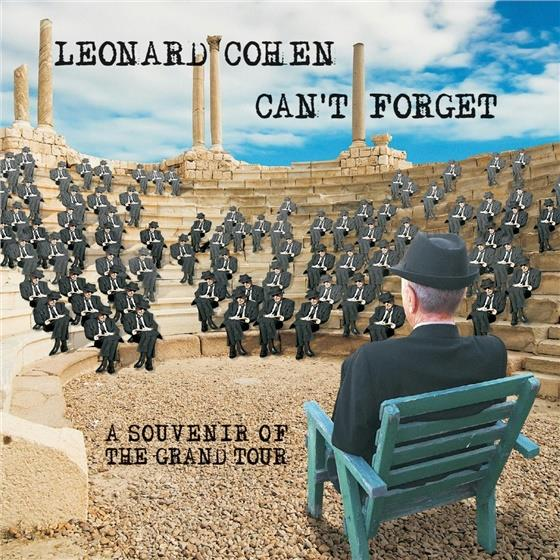
Genocide & Collective Amnesia
The Holocaust, the Armenian Genocide, the Rwandan Genocide —these are tragedies where forgetting, denial, or revisionism deepens wounds and paves the way for future atrocities.
When societies fail to reckon honestly with such horrors, it becomes easier to justify new ones.

Authoritarianism Creeps Back
The Weimar Republic’s weaknesses allowed Hitler to rise.
After World War II, Germany made a conscious effort to remember — to teach about the Holocaust, to preserve concentration camps as historical sites.

Above: Flag of Germany
Compare that to Russia, where Stalin’s crimes were downplayed, leading to the resurgence of authoritarianism under Putin.

Above: Flag of Russia
The Loss of Hard-Won Rights
Civil rights, workers’ rights, women’s rights — each generation must remember the struggles that won these freedoms.
Otherwise, those in power erode them bit by bit, often under the guise of “security” or “economic necessity”.
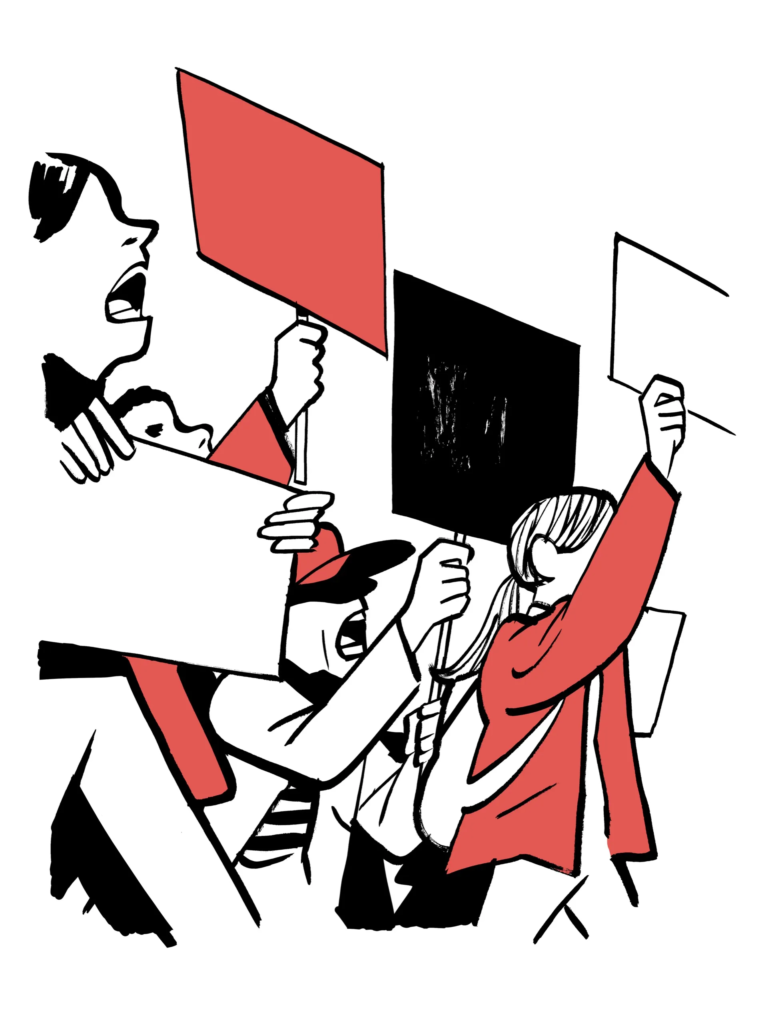
War and the Myth of Glory
War is often remembered selectively.
Victors write history, sanitizing their own actions while demonizing their enemies.
This myth-making makes it easier to justify future wars.
When people forget the true horror of war — the suffering of soldiers and civilians alike — they are more likely to cheer for the next conflict.

Survivors, journalists, historians, artists, and everyday witnesses serve as the world’s conscience.
Testimony is powerful.
The act of remembering — writing, speaking, preserving —challenges those who would erase the past.
This is why repressive regimes burn books, jail journalists, and suppress education.
If you control memory, you control the future.
But if enough people resist, if they remember, history’s worst mistakes can be kept at bay.
Humanity has a remarkable ability to document its mistakes — and an equally remarkable tendency to ignore those lessons when they become inconvenient.
Wars fought “to end all wars” lead to more wars.
Dictators rise and fall, only for new ones to emerge.
Economic collapses repeat because people chase the same illusions of unchecked growth.
It’s as if history whispers its warnings, but too many are either deaf to them or willfully ignorant.
And those who do remember often find themselves dismissed as pessimists or burdens to the comfortable narratives that society prefers.
Maybe the real challenge isn’t just remembering history, but making people care about it.

Headline #3
Expats and the damage done
BOOK REVİEW:
Perfection by Vicenzo Latronico

One of the more trenchant portraits of expat life in contemporary Berlin I have encountered in the 11 years I have lived there is Perfection by the Rome-born writer Vicenzo Latronico.
Anna and Tom, two “creative professionals” move from a “large but peripheral city in Southern Europe” to a late 19th century flat in Berlin’s hippest neighborhood, Neuköln, sometime during Angela Merkel’s second term, when the city emerged from being a regional metropolis to being the de facto capital of Europe.

Above: Berlin, Germany
Despite its setting, the novel is more of an update to Georges Perec’s critiques of 1960s-era consumer culture than a replay of Henry James’ Gilded Age cosmopolite dramas.
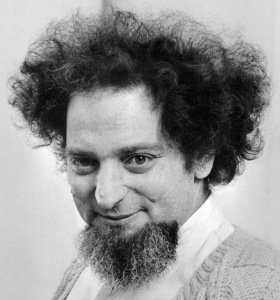
Above: French writer Georges Perec (1936 – 1982)
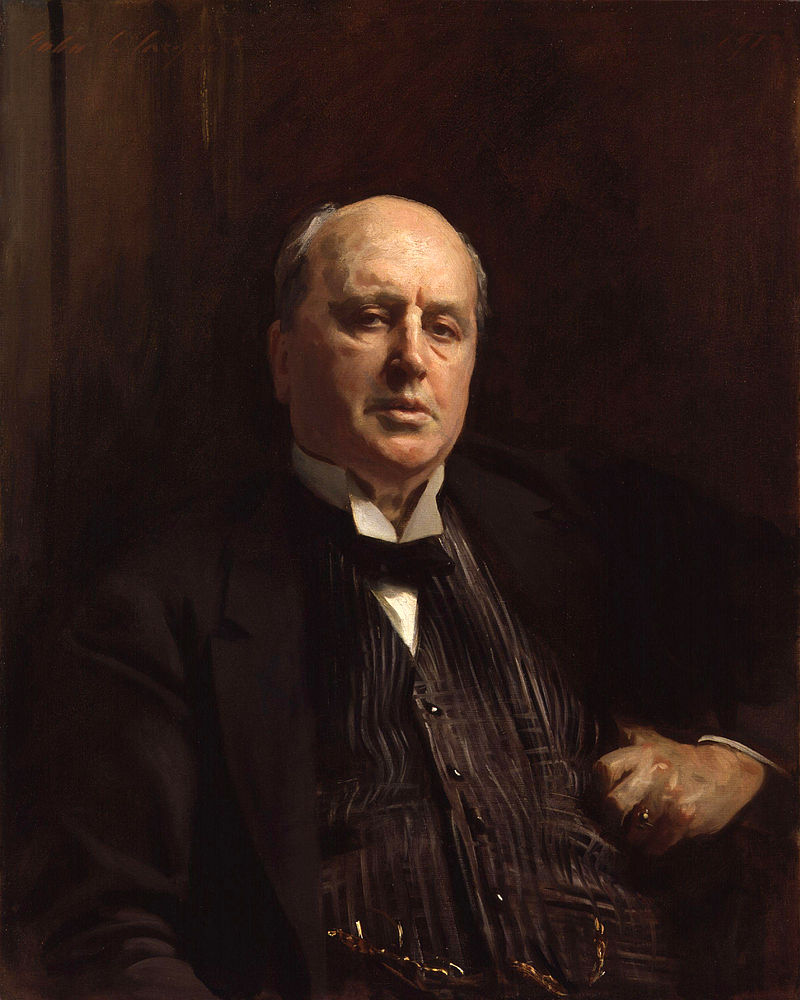
Above: American writer Henry James (1843 – 1916)
With ethnographic precision, Latronico taxonomies the tastes, attitudes, vanities and blind spots of the people we now call digital nomads, a class and subculture made possible by the innovations of American tech and media conglomerates and policymakers in Brussels.

Above: European Parliament, Brussels, Belgium
The opening chapter describes a picture Anna and Tom – whose work includes graphic design and online brand strategy – have taken of their flat to advertise it for a short-term rental.
Every item, from the limited edition Radiohead record to the Danish armchair on the Berber rug, functions as a prosthetic selfhood.
The same could be said for their adopted city Berlin is “their main pastime.
In many ways it defined them much more than their profession did.”

Anna and Tom are referred to by a collective pronoun, “they“, representing at once a couple and an “invented community” of expats.
Latronico makes heavy use of the conditional tense – (“They would remember the supermarket, closed on Sundays, their client calls scheduled for Monday, the work due by Friday.“) – to describe their activities, highlighting both their generic character and their evanescence.
Anna and Tom slowly learn, to their peril, that a lifestyle, no matter how “curated” and “rarefied” does not a life make and that cosmopolitanism without politics is a dead end.
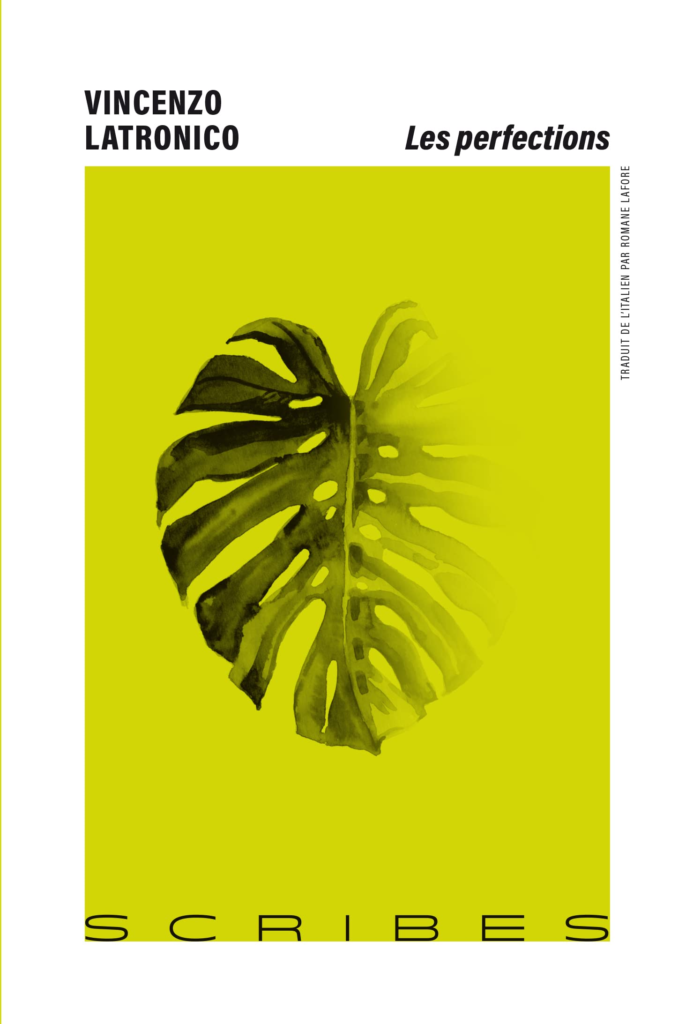
Anna and Tom’s social circle is drawn from countries around the Continent, with the notable exception of Germany.
Like all invented communities, it is structurally unstable.
People leave after their first experience of Berlin’s bleak winters.
They get job offers or fellowships in other cities.
They develop drug addictions or have children.
Or simply miss home more than they expected.
Every spring, a new crop of expats, most of them just as transitory, blooms in their place.
Their common culture is made not in Germany, but online.

Anna and Tom use all the platforms – Instagram for work, Facebook to keep in touch, Twitter for infotainment – and “they would often end up discussing things they had seen online, which was to say somewhere else in the world, which usually meant in California or New York“.

Above: Instagram logo

Above: Facebook logo

Above: X (formerly Twitter) logo
The “intellectual horizon” they share with their fellow Belgians or Poles or Italians is “largely formed from headlines in The Guardian or The New York Times“.

As a result, “Barack Obama’s speeches and high school shootings existed far more vividly than the laws passed just a few U-Bahn stations away or the refugees drowning two hours’ flight south“.

Above: US President Barack Obama (r. 2009 – 2017)

Above: Logo of the Underground (U-Bahn) in Germany
Trouble arrives in 2014 with the first large wave of Americans and Brits, who can more authentically lay claim to the language and culture Anna and Tom scroll through.
Along with them comes a familiar litany of complaints:
Rising rents, evictions, housing shortages, price spikes and social homogeneity, as their friends’ art spaces are taken over by people with degrees from Bard and Goldsmiths.
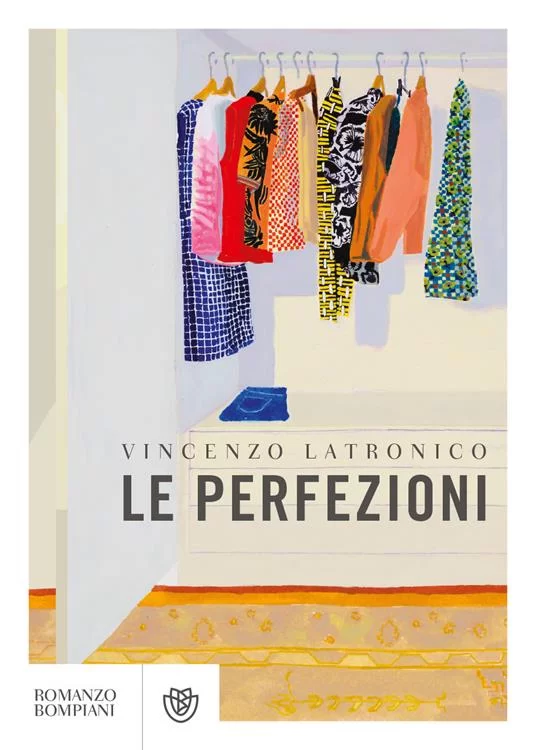
When the refugee crisis – along with the sovereign debt crisis, the most significant political event in post-unification German history – comes to a head the following year, Anna and Tom are finally moved to participate in some other aspect of city life than its arts and culture scenes, only to discover that their shaky German and graphic design skills render their well-meaning presence at humanitarian aid shelters more of a nuisance than a help.

Above: Berlin Wall (1961 – 1989)
Soon, like so many of their acquaintances before them, they cast an exploratory glance at the exit:
First to Lisbon (another sociologically accurate throw of the dart) and then to Sicily.
The strength of Perfection is that it never succumbs to the temptation of ridiculing its protagonists.
Whether or not they live in Berlin, many of its readers will belong to the same class and generation as they do.
Bald contempt is generally less effective at inducing the discomforts of recognition than keen tactful observations.
Part of what happens to Anna and Tom is simply the damage done to youthful aspirations and illusions by the passage of time.
Part of it is what happens to even the relatively privileged pawns of economic and social forces beyond their control.
Yet, all told, Perfection remains an insider’s critique:
A young left wing European’s view of what was probably the high water mark of European cultural integration.
Far from perfect, the tasteful urbane life Anna and Tom lead is nonetheless not without its charms.
In many ways, it represents an ideal, however illusionary.

To this day, the capital of Germany trades on its century-old image as a city of exiles, libertines and artists, while in campaign speeches its politicians treat its current expatriates as boogeymen in a populist Kulturkampf (culture war) whose real targets are the more vulnerable immigrants from the Middle East and North Africa.
From a future vantage point, Latronico’s subtle satire of Anna and Tom’s Berlin may appear like another lost Paradise.
Ryan Ruby, New York Times, Saturday 22 March 2025
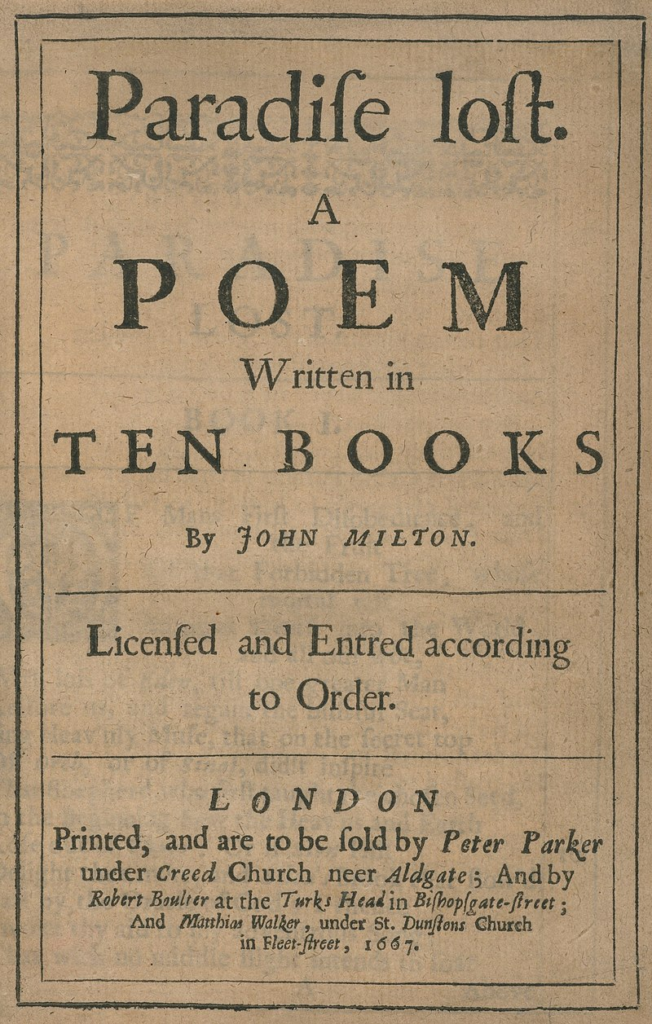
Unless we choose to decentralize and to use applied science, not as the end to which human beings are to be made the means, but as the means to producing a race of free individuals, we have only two alternatives to choose from:
Either a number of national, militarized totalitarianisms, having as their root the terror of the atomic bomb and as their consequence the destruction of civilization (or, if the warfare is limited, the perpetuation of militarism).
Or else one supra-national totalitarianism, called into existence by the social chaos resulting from rapid technological progress in general and the atomic revolution in particular, and developing, under the need for efficiency and stability, into the welfare-tyranny of a dystopia.
You pay your money and you take your choice.
Every one belongs to every one else.
Everyone works for every one else.
We can’t do without any one.

Mother, father, monogamy, romance.
High spurts the fountain.
Fierce and foamy the wild jet.
The urge has but a single outlet.
My love, my baby.
No wonder these poor pre-moderns were mad and wicked and miserable.
Their world didn’t allow them to take things easily, didn’t allow them to be sane, virtuous, happy.
What with mothers and lovers, what with the prohibitions they were not conditioned to obey, what with the temptations and the lonely remorse, what with all the diseases and the endless isolating pain, what with the uncertainties and the poverty–they were forced to feel strongly.
And feeling strongly (and strongly, what was more, in solitude, in hopelessly individual isolation), how could they be stable?
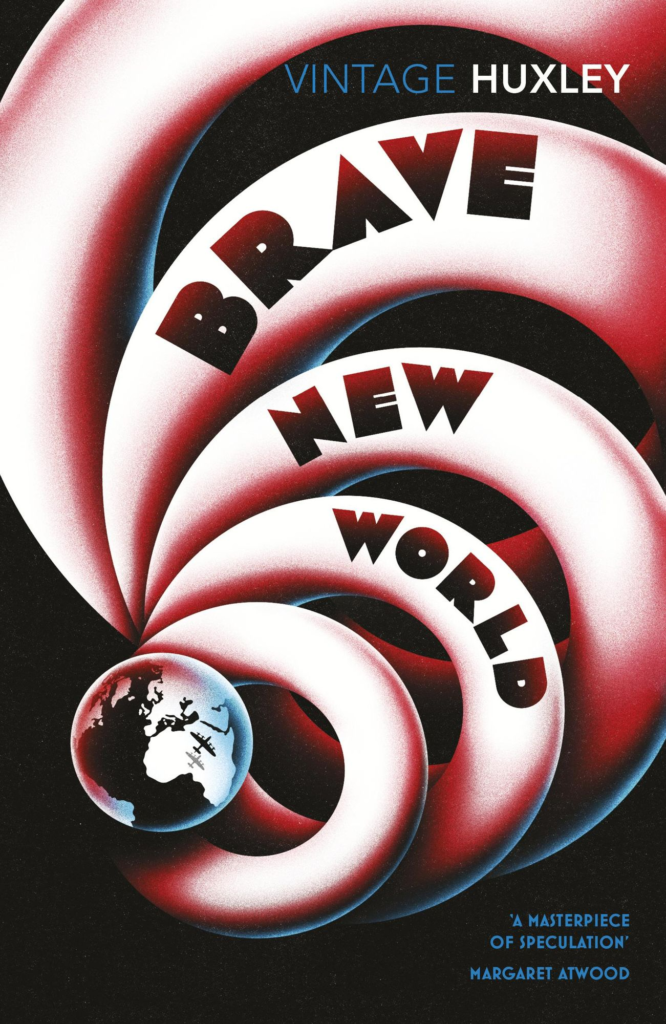
“Stability,” said the Controller, “stability.
No civilization without social stability.
No social stability without individual stability.“
“Fortunate boys!” said the Controller.
“No pains have been spared to make your lives emotionally easy – to preserve you, so far as that is possible, from having emotions at all.“
Soma:
- All the advantages of Christianity and alcohol.
- None of their defects.
- One cubic centimeter cures ten gloomy sentiments.
- A gram is better than a damn.
- A gram in time saves nine.
“The world’s stable now.
People are happy.
They get what they want and they never want what they can’t get.
They’re well off.
They’re safe.
They’re never ill.
They’re not afraid of death.
They’re blissfully ignorant of passion and old age.
They’re plagued with no mothers or fathers.
They’ve got no wives or children or lovers to feel strongly about.
They’re so conditioned that they practically can’t help behaving as they ought to behave.
And if anything should go wrong, there’s soma.“
“My dear young friend,” said Mustapha Mond, “civilization has absolutely no need of nobility or heroism.
These things are symptoms of political inefficiency.
In a properly organized society like ours, nobody has any opportunities for being noble or heroic.
Conditions have got to be thoroughly unstable before the occasion can arise.
Where there are wars, where there are divided allegiances, where there are temptations to be resisted, objects of love to be fought for or defended – there, obviously, nobility and heroism have some sense.
But there aren’t any wars nowadays.
The greatest care is taken to prevent you from loving any one too much.
There’s no such thing as a divided allegiance.
You’re so conditioned that you can’t help doing what you ought to do.
And what you ought to do is on the whole so pleasant, so many of the natural impulses are allowed free play, that there really aren’t any temptations to resist.
And if ever, by some unlucky chance, anything unpleasant should somehow happen, why, there’s always soma to give you a holiday from the facts.
And there’s always soma to calm your anger, to reconcile you to your enemies, to make you patient and long-suffering.
In the past you could only accomplish these things by making a great effort and after years of hard moral training.
Now, you swallow two or three half-gram tablets, and there you are.
Anybody can be virtuous now.
You can carry at least half your morality about in a bottle.
Christianity without tears – that’s what soma is.”
Mustapha Mond, the World Controller of Western Europe
Aldous Huxley, Brave New World
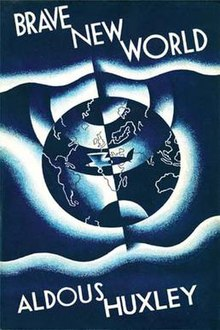
The Internet can be both a tool of connection and a force of cultural homogenization.
But there is a risk of online life replacing real-world experience.
Are we erasing our own stories?

I’d rather be myself.
Myself and nasty.
Not somebody else, however jolly.
Aldous Huxley, Brave New World
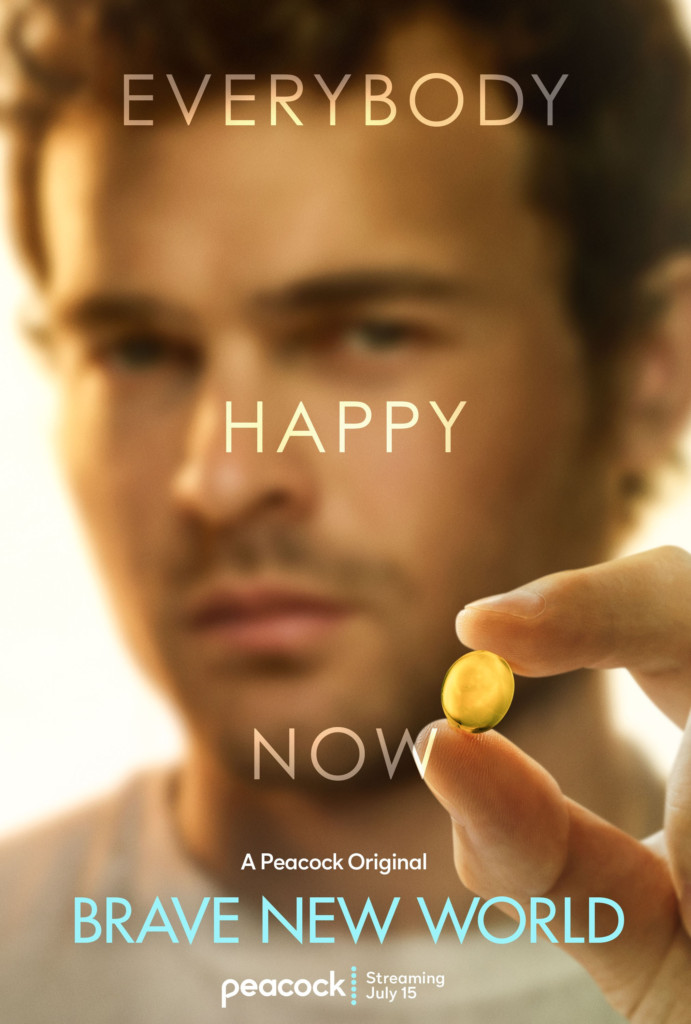
Digital curation (the filtered self) vs. authentic human existence (the unfiltered self) seems to be the struggle.
Digital curation is the selective presentation of life through media —what we choose to post, what we choose to highlight, and how we frame our existence for others to see.
It is life edited, life filtered.
On social media, people showcase their best moments, their happiest experiences, their most flattering angles.
In digital archives, history is sorted and arranged according to algorithms, shaping how we remember and engage with the past.
Even news and information are curated, tailored to personal preferences, reinforcing what we already believe rather than challenging us.
This curated self is polished, performative, and carefully constructed.
It is an illusion of control, a way to manage perception.
But in doing so, it often distances people from reality — both their own and that of others.
Real life, by contrast, is unedited.
It is messy, unpredictable and unscripted.
It includes failures, awkward silences, unglamorous moments and raw emotions.
It cannot be controlled the way a digital profile can.

“It makes me feel as though…” he hesitated, searching for words with which to express himself, “as though I were more me, if you see what I mean.
More on my own, not so completely a part of something else.
Not just a cell in the social body.“
Bernard Marx to Lenina Crowne, about an oncoming storm
Aldous Huxley, Brave New World

Authentic human existence is felt in deep conversations where neither party is performing.
It is in solitude, in introspection, in being present with one’s thoughts rather than constantly seeking validation.
It is in making mistakes, in feeling pain, in growing through experience rather than crafting an image of growth.
When digital curation dominates, there is a risk that people confuse performance for existence.
A well-curated life can feel rich, but it is often hollow.
The more people focus on managing their digital selves, the harder it becomes to simply be.
When was the last time someone took a trip without thinking about how to document it for social media?
When was the last time someone enjoyed a meal without first capturing it on camera?
When was the last time someone had a private thought that wasn’t immediately shared for likes, retweets.


How is it that I can’t, or rather — because I know quite well why I can’t — what would it be like if I could, if I were free — not enslaved by my conditioning.
“Don’t you wish you were free, Lenina?“
“I don’t know what you mean.
I am free.
Free to have the most wonderful time.
Everybody’s happy nowadays.“
He laughed.
“Yes.
‘Everybody’s happy nowadays.’
We begin giving the children that at five.
But wouldn’t you like to be free to be happy in some other way, Lenina?
In your own way, for example.
Not in everybody else’s way.“
“I don’t know what you mean,” she repeated.
Bernard Marx speaking to Lenina Crowne
Aldous Huxley, Brave New World
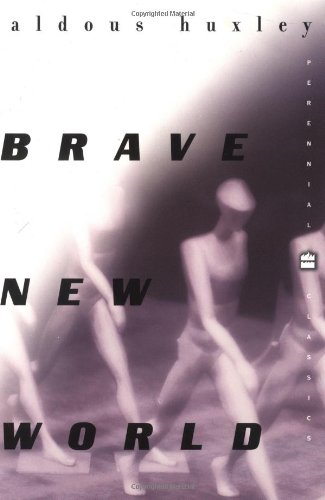
Perhaps the key is not to reject curation entirely but to recognize its limits.
There is value in storytelling, in shaping memories, in sharing meaningful moments.
But these should complement, not replace, real human experience.
Do we live for the moment, or for the post about the moment?
Do we connect with others for the sake of connection, or for the validation their attention brings?
Do we allow ourselves to exist in the quiet, in the unremarkable, in the unseen?
To live authentically is to accept the unedited version of ourselves, even when it is uncomfortable, unflattering, or unremarkable.

Words can be like X-rays, if you use them properly – they’ll go through anything.
You read and you’re pierced.
Aldous Huxley, Brave New World

Literature may be one of the last sanctuaries of authentic human existence in an age of relentless digital curation.
Unlike social media, which thrives on selective representation, literature embraces the full complexity of human experience.
It does not filter out the awkward, the painful or the mundane.
Instead, it captures life in all its rawness — its contradictions, its imperfections, its hidden depths.
A novel does not need to be “Instagram-able“.
It can be ugly, difficult, unresolved.
Just like life.
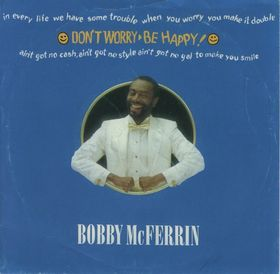
“One would think he was going to have his throat cut,” said the Controller, as the door closed.
“Whereas, if he had the smallest sense, he’d understand that his punishment is really a reward.
He’s being sent to an island.
That’s to say, he’s being sent to a place where he’ll meet the most interesting set of men and women to be found anywhere in the world.
All the people who, for one reason or another, have got too self-consciously individual to fit into community life.
All the people who aren’t satisfied with orthodoxy, who’ve got independent ideas of their own.
Every one, in a word, who’s any one.
I almost envy you, Mr. Watson.“
Aldous Huxley, Brave New World
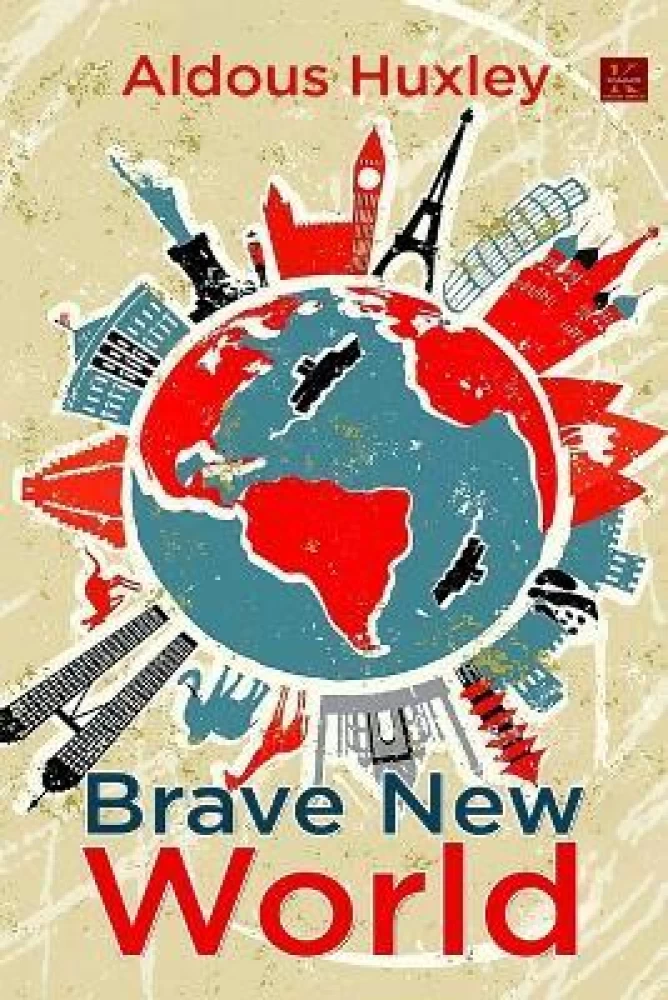
Great literature does not seek likes, follows or engagement metrics.
It speaks to the soul, often in solitude, without immediate validation.

Characters in literature are not curated personas.
They are flawed, self-contradictory and real in a way digital profiles rarely allow.

“Exposing what is mortal and unsure to all that fortune, death and danger dare, even for an eggshell. Isn’t there something in that?” he asked, looking up at Mustapha Mond.
“Quite apart from God–though of course God would be a reason for it. Isn’t there something in living dangerously?“
“There’s a great deal in it,” the Controller replied.
“Men and women must have their adrenals stimulated from time to time.“
“What?” questioned the Savage, uncomprehending.
“It’s one of the conditions of perfect health. That’s why we’ve made the V.P.S. treatments compulsory.“
“V.P.S.?“
“Violent Passion Surrogate. Regularly once a month. We flood the whole system with adrenalin. It’s the complete physiological equivalent of fear and rage. All the tonic effects of murdering Desdemona and being murdered by Othello, without any of the inconveniences.“
“But I like the inconveniences.“
“We don’t,” said the Controller.
“We prefer to do things comfortably.“
“But I don’t want comfort.
I want God.
I want poetry.
I want real danger.
I want freedom.
I want goodness.
I want sin.”
“In fact,” said Mustapha Mond, “you’re claiming the right to be unhappy.“
“All right then,” said the Savage defiantly, “I’m claiming the right to be unhappy.“
Aldous Huxley, Brave New World
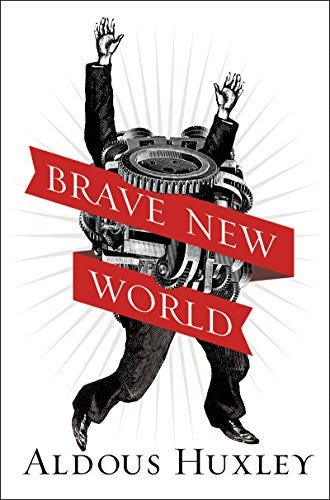
In a world where algorithms dictate what we see, literature resists curation by refusing to be simplified.
A well-written novel does not cater to a fleeting trend.
It endures because it speaks to something deeper than the moment.

Consider how classic literature still resonates today:
Leo Tolstoy’s Anna Karenina
- a study of love, jealousy, and societal constraints, long before relationships were reduced to dating-app bios.
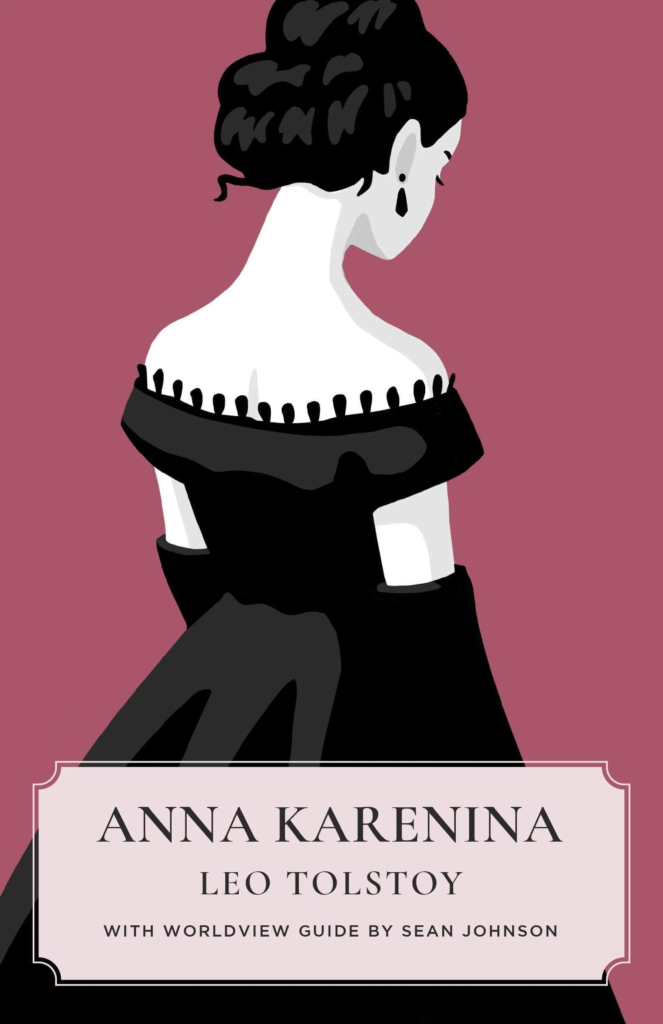
George Orwell’s 1984
- a warning about mass surveillance, long before social media turned us into willing participants in our own monitoring.


Ernest Hemingway’s The Old Man and the Sea
- a quiet meditation on perseverance, far removed from the attention economy of viral content.
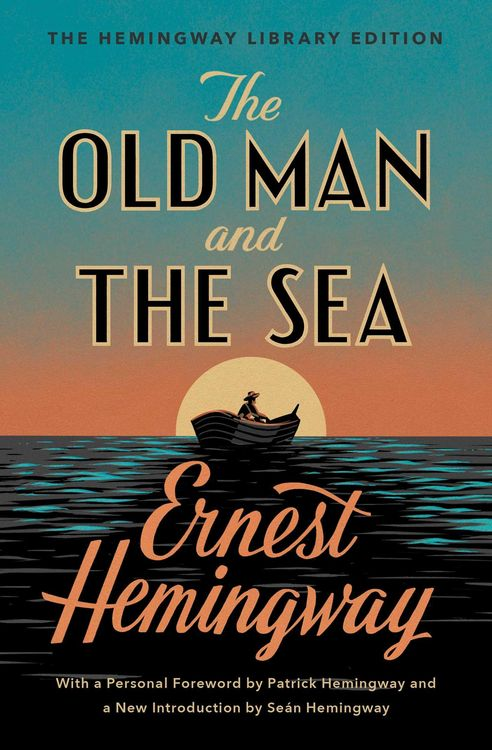
While digital curation trims away life’s imperfections, literature preserves them.
It reminds us that true understanding does not come from a neatly packaged narrative but from wrestling with complexity.

The curated self is concerned with how it appears.
The literary self is concerned with what it is.
When we read, we step out of the world of self-presentation and into the world of self-discovery.
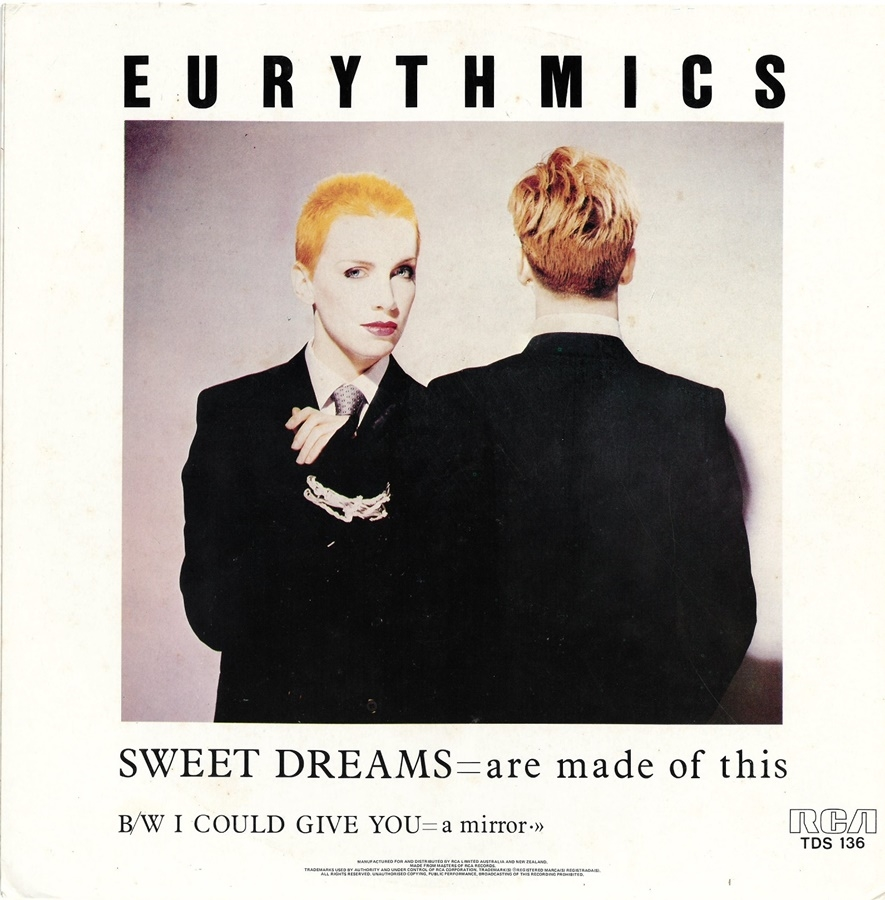
A great book does not ask us to perform.
It asks us to reflect.
A novel does not flatter our biases.
It challenges them.
A poem does not curate a perfect image.
It exposes the soul.
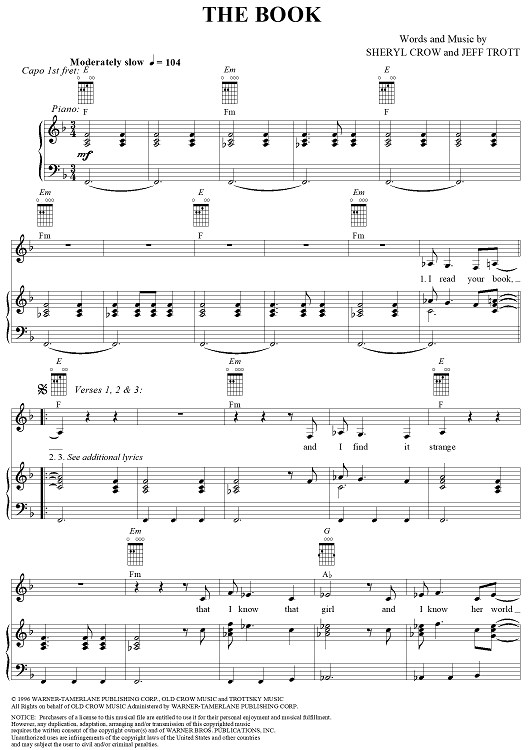
“O brave new world,” he repeated.
“O brave new world that has such people in it.
Let’s start at once.“
Aldous Huxley, Brave New World
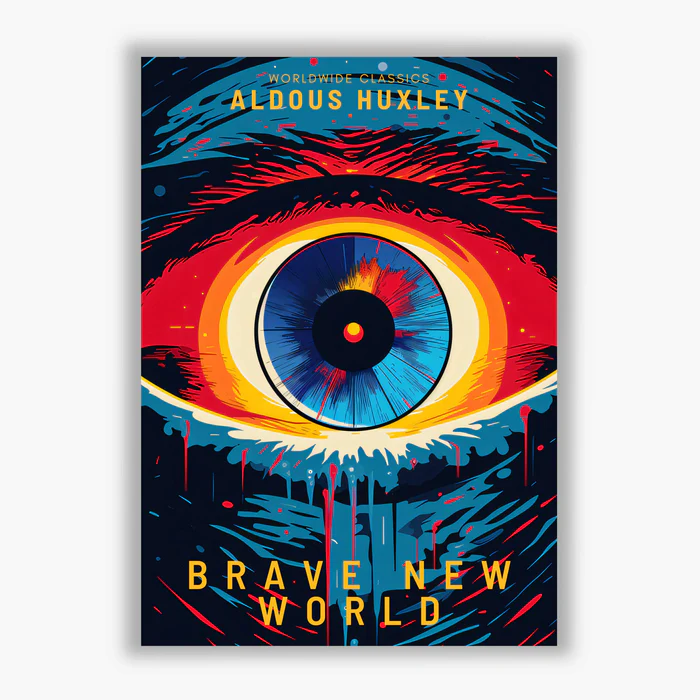
In an age where attention spans shrink and people prefer summaries over substance, can literature still hold its place?
Or will it become another artifact in the Museum of Forgotten Authenticity?
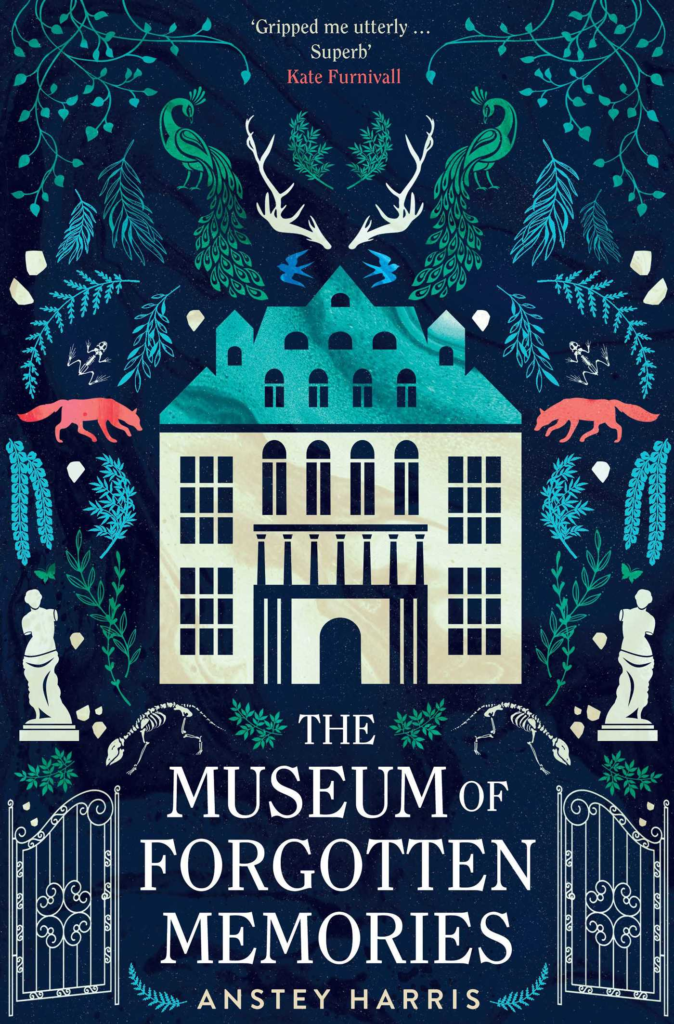
There is an urgency to actively preserving knowledge and stories, even when they are uncomfortable.
We have the right — and responsibility — to decide what we engage with, rather than letting others erase choices for us.
If we do not guard history, culture and truth, we risk becoming mere reflections of the forces that edit our reality.
This is the heart of the struggle:
Will we be active participants in shaping our understanding of the world, or passive recipients of curated narratives?
To actively preserve knowledge and stories — especially the uncomfortable ones — is an act of defiance against the forces that seek to control memory.
Autocracies, corporations, and even well-meaning institutions often attempt to “sanitize” history, erasing inconvenient truths in favor of palatable narratives.
But if we allow history to be rewritten, if we let books be banned, if we surrender to the algorithm’s dictation of what is worth knowing, we are complicit in our own intellectual erosion.
The danger is not just that knowledge disappears, but that people forget they ever had a choice in the first place.
When information is subtly removed, people stop questioning its absence.
When stories are replaced by more “acceptable” versions, people forget the original ever existed.
When voices are silenced, people assume they were never worth hearing.
True freedom isn’t just about having access to information:
It is about recognizing that we have the power to engage with it critically, rather than accepting what is pre-selected for us.
If we do not actively guard history, culture, and truth, then we risk becoming passive reflections of those who curate reality for us.
History loses its sharp edges — turned into something neat and nostalgic rather than a lesson to be learned.
Culture becomes a commodity — stripped of its depth, sold in bite-sized, digestible pieces.
Truth becomes malleable — reshaped by those who benefit from rewriting it.

Preserving knowledge is a deliberate act.
It requires:
- Reading widely — not just what is popular or easy, but what challenges us.
- Asking difficult questions — even when the answers make us uncomfortable.
- Defending the right to remember — ensuring that uncomfortable stories are not erased.
- Writing and speaking — because silence is complicity.
The forces that edit reality count on apathy.
But as long as people see the urgency, who question, who preserve, who remember:
Then there is hope.

What can we do to resist the erasure of truth?
We must choose awareness over oblivion:
Read widely.
Record actively.
Question authority over knowledge.

What disappears today may be the wisdom we desperately need tomorrow.

Bradbury (Fahrenheit 451) warns of a world where books — and the depth of thought they inspire burned in favor of shallow entertainment.
The distraction economy today is eerily similar, numbing us into passivity while vital information disappears.
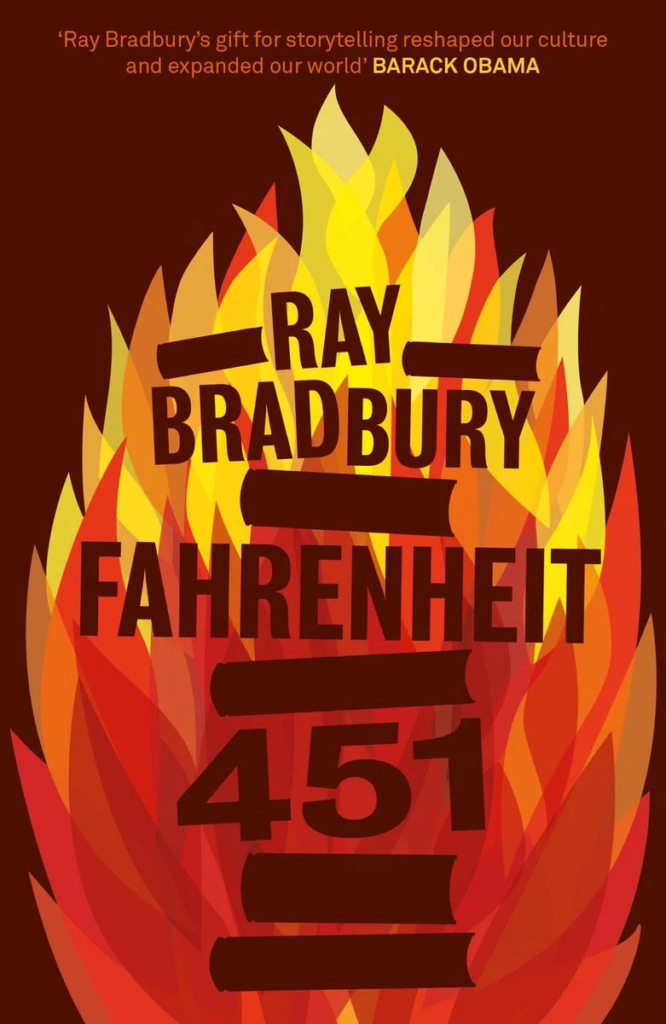
Orwell (Nineteen Eighty-Four) presents a world where the past is rewritten to align with the ruling party’s agenda.
This directly parallels the NYT article on vanishing government data and the way inconvenient truths are systematically erased.
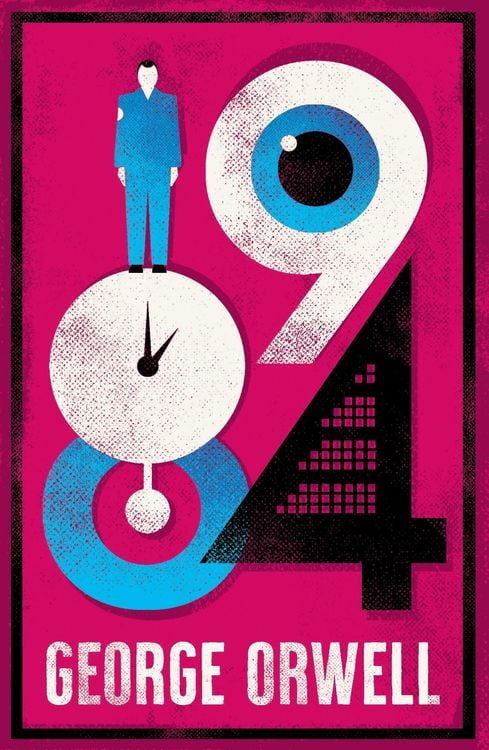
Huxley (Brave New World) envisions a society where discomfort is eliminated through mindless pleasure and drugs, preventing people from questioning authority.
This ties into the idea of expats forming an online culture divorced from reality, choosing digital escape over meaningful engagement with the world around them.
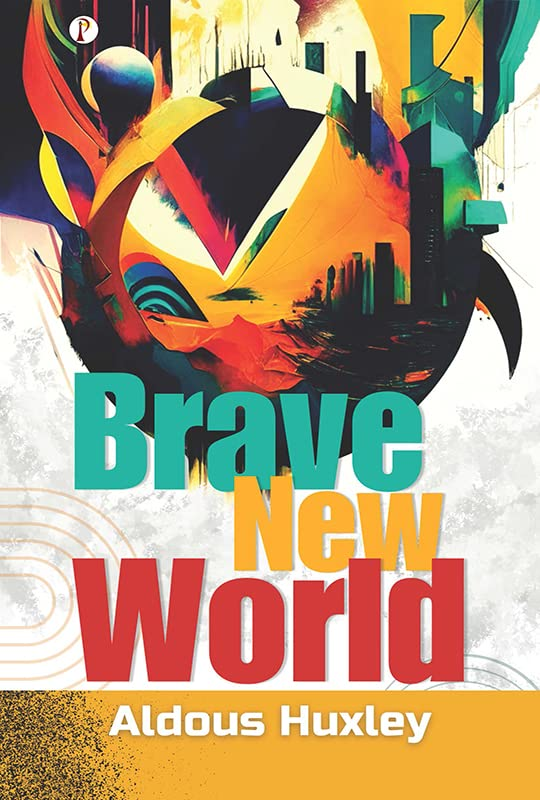
Socrates and Aristotle believed that the way we spend our time and direct our attention shapes our character and life.
Socrates is famously quoted as saying:
“The unexamined life is not worth living.”
This suggests that by reflecting on how we live, what we focus on, and what we devote our attention to, we form our understanding of the world and ourselves.
Socrates believed that self-awareness and the pursuit of virtue are central to living a meaningful life, indicating that our time and attention must be focused on good and meaningful pursuits to cultivate a virtuous character.
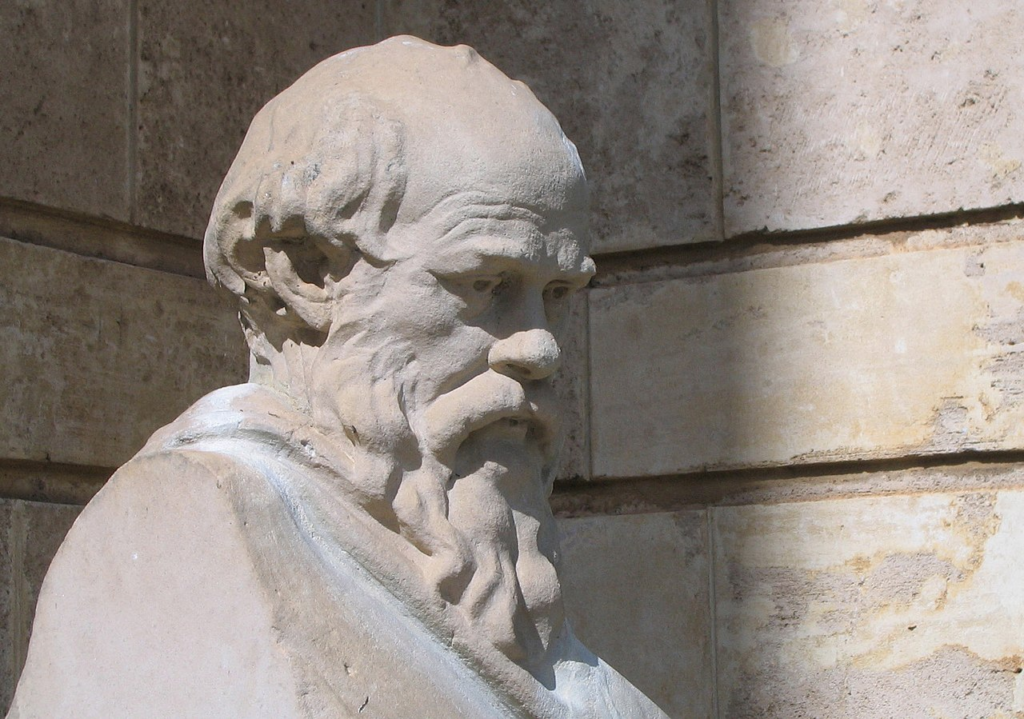
Above: Bust of Greek philosopher Socrates (470 – 399 BC)
Aristotle, his student, elaborated on this in his work Nicomachean Ethics.
He emphasized the importance of habit and practice in forming character.
He wrote:
“We are what we repeatedly do.
Excellence, then, is not an act, but a habit.”
What we give our attention to and how we spend our time becomes ingrained in our habits, which ultimately define our character.
For Aristotle, virtue is cultivated through habitual actions.
The time spent on them directly shapes who we become.
Both philosophers understood that attention is not merely a passive process but a force that shapes our lives and our identities.
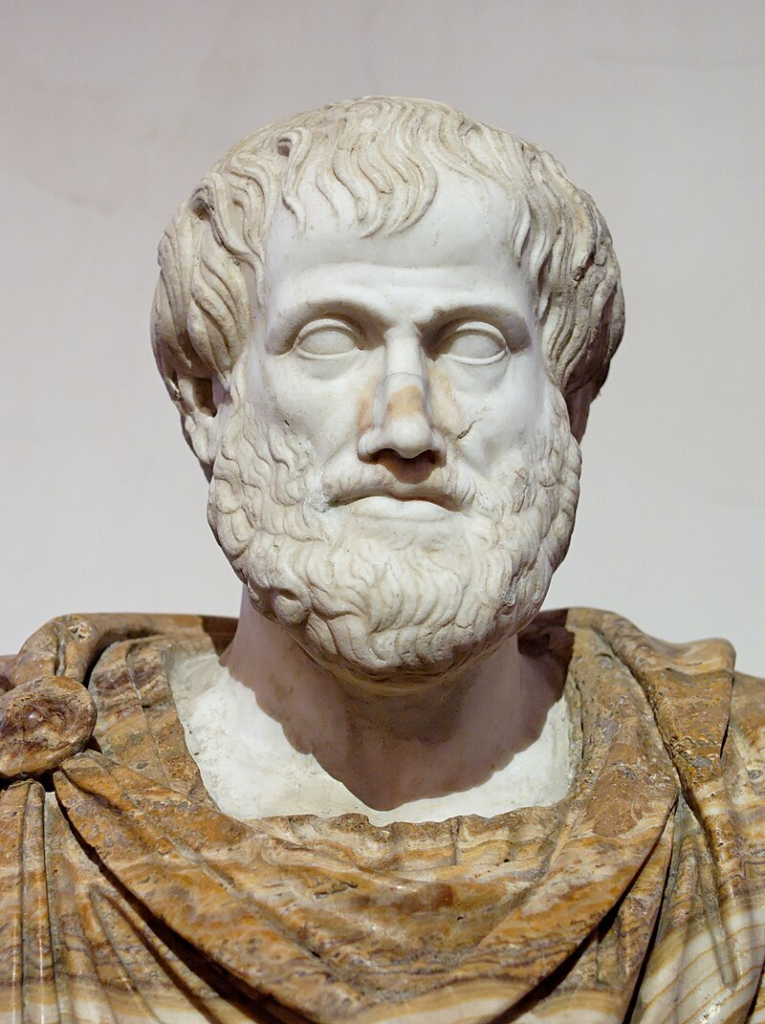
Above: Bust of Greek philosopher Aristotle (384 – 322 BC)
Epictetus, the Stoic philosopher who was born a slave and later became one of the most influential figures in Stoicism, often spoke about the importance of directing our attention and focusing on what we can control in order to shape our character.
One of his most famous teachings is from his Discourses:
“It’s not what happens to you, but how you react to it that matters.“
This reflects his core belief that our attention and focus should be directed toward our responses and inner thoughts, not external events, because we have control over our reactions and attitudes, not the world around us.
Epictetus also wrote in his Enchiridion (The Handbook of Epictetus):
“If you want to improve, be content to be thought foolish and stupid.“
He argued that we should focus on the development of our inner virtues — things like wisdom, courage, and self-discipline.
Our attention, in his view, should be directed toward the improvement of our mind and spirit, not toward fleeting external distractions or status.
For Epictetus, the character we build reflects where we place our time and attention — focusing on virtue, wisdom, and self-mastery instead of what is outside our control leads to true freedom and peace.
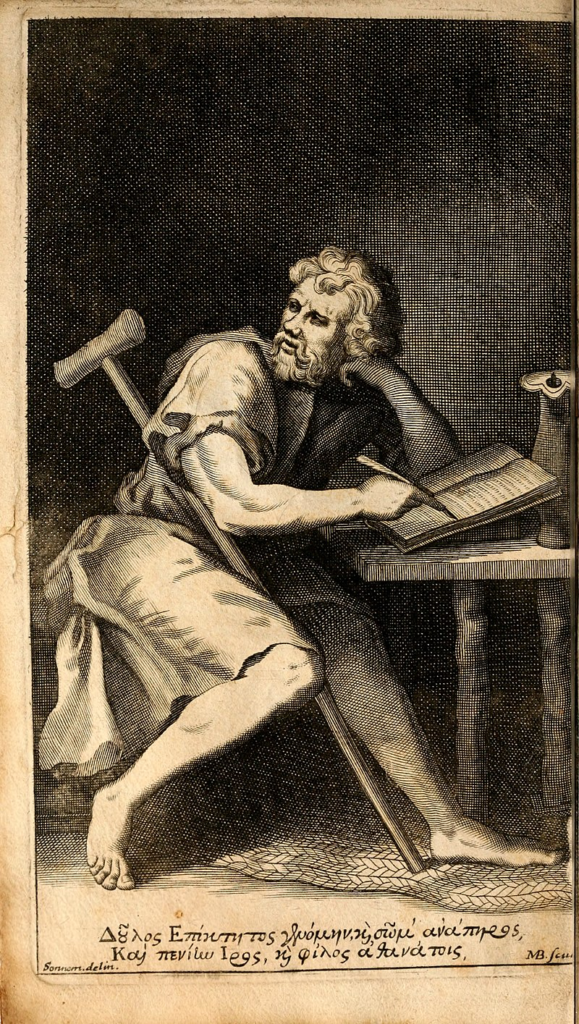
Above: Greek philosopher Epictetus (50 – 135)
The digital age has made information more accessible — but also more vulnerable.
There is a danger of losing knowledge, whether through intentional deletion, political agendas, or neglect.
The question remains:
What should we give our time and attention to, and who decides what we can choose from?
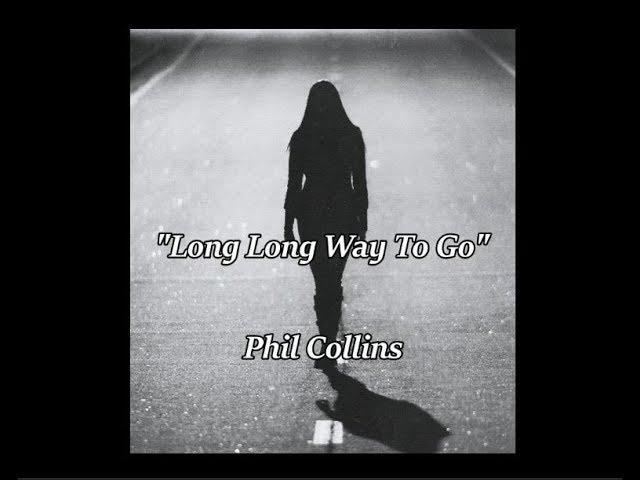
Echoes of dystopian warnings:
Bradbury, Orwell, and Huxley predicted a future where knowledge is controlled, erased, or drowned in distraction.
Are we living in their nightmare?

Fahrenheit 451:
Books burned, minds dulled by screens.
The modern parallel:
Vanishing data and the dominance of shallow digital entertainment.

Nineteen Eighty-Four:
The past rewritten to suit those in power.
Today:
Selective media coverage, government-deleted records, and algorithm-driven news bubbles.
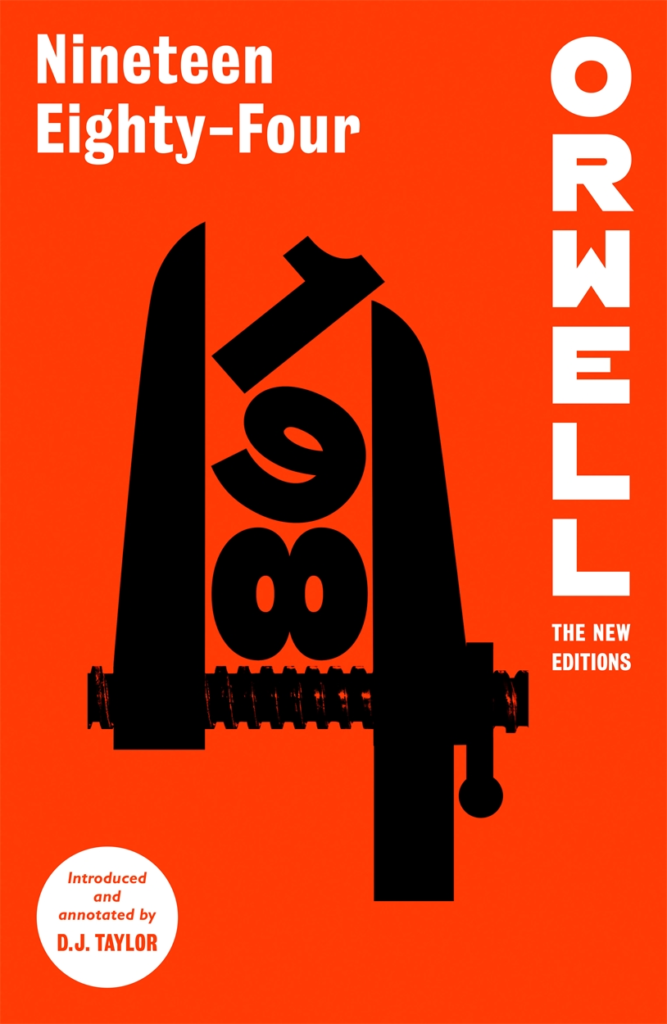
Brave New World:
A world numbed by pleasure, avoiding uncomfortable truths.
The Internet as a distraction machine, shaping global attention away from real crises.
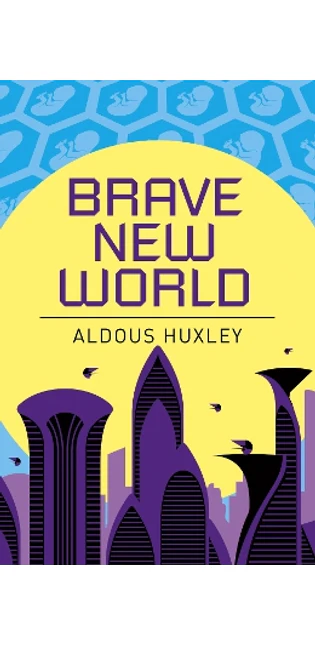
There is an urgency to actively preserve knowledge and stories, even when they are uncomfortable.
We have the right — and responsibility — to decide what we engage with, rather than letting others erase choices for us.
If we do not guard history, culture and truth, we risk becoming mere reflections of the forces that edit our reality.

Digital books and archives are vulnerable:
Files can be deleted, altered or made inaccessible by shifting corporate policies, censorship or technological failure.

The ephemeral nature of the Internet:
Websites vanish.
Links break.
Cloud storage is not forever.
What happens to knowledge when it exists only in bits and bytes?

Bradbury’s warning in Fahrenheit 451:
While his firemen burned books, today’s erasure is more insidious —censorship through deletion, algorithmic suppression and digital obsolescence.
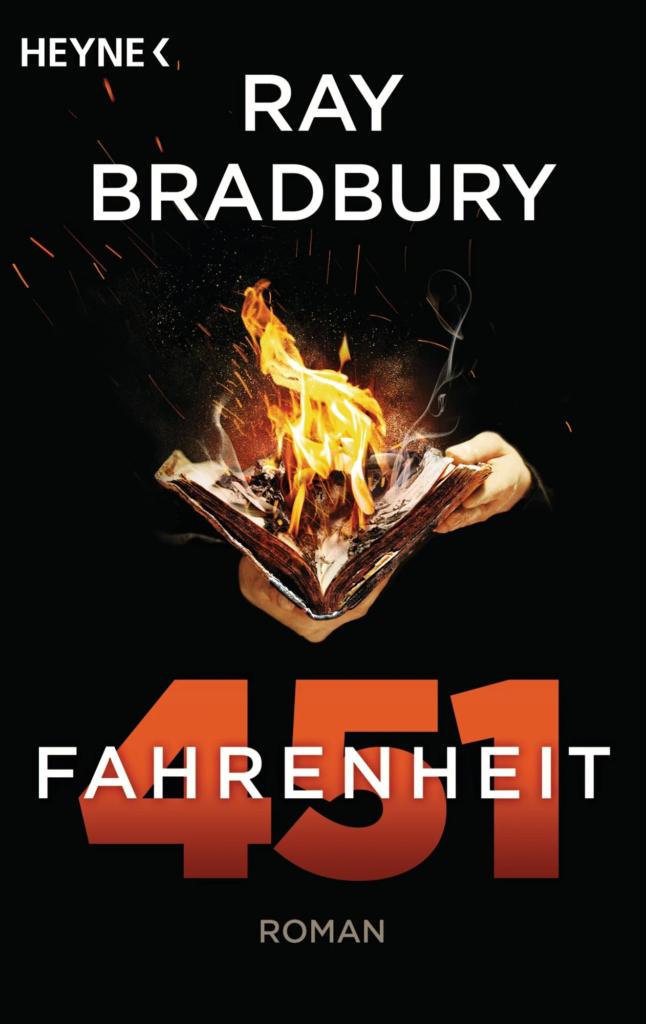
Orwell’s Nineteen Eighty-Four and the dangers of digital history:
When all records exist electronically, they can be modified or erased without a trace.
Who controls the past when books are no longer physical?
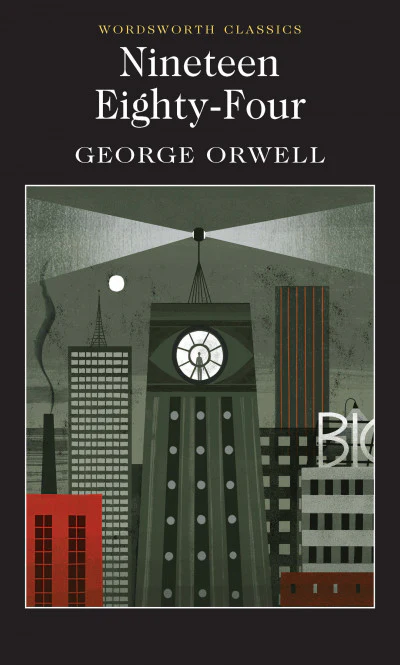
The personal responsibility to preserve knowledge:
Owning and maintaining physical books is an act of resistance against digital impermanence.
Libraries, archives and personal collections serve as bulwarks against the slow erosion of history.
Civilization is not preserved by data servers, but by people who read, remember and share printed knowledge.
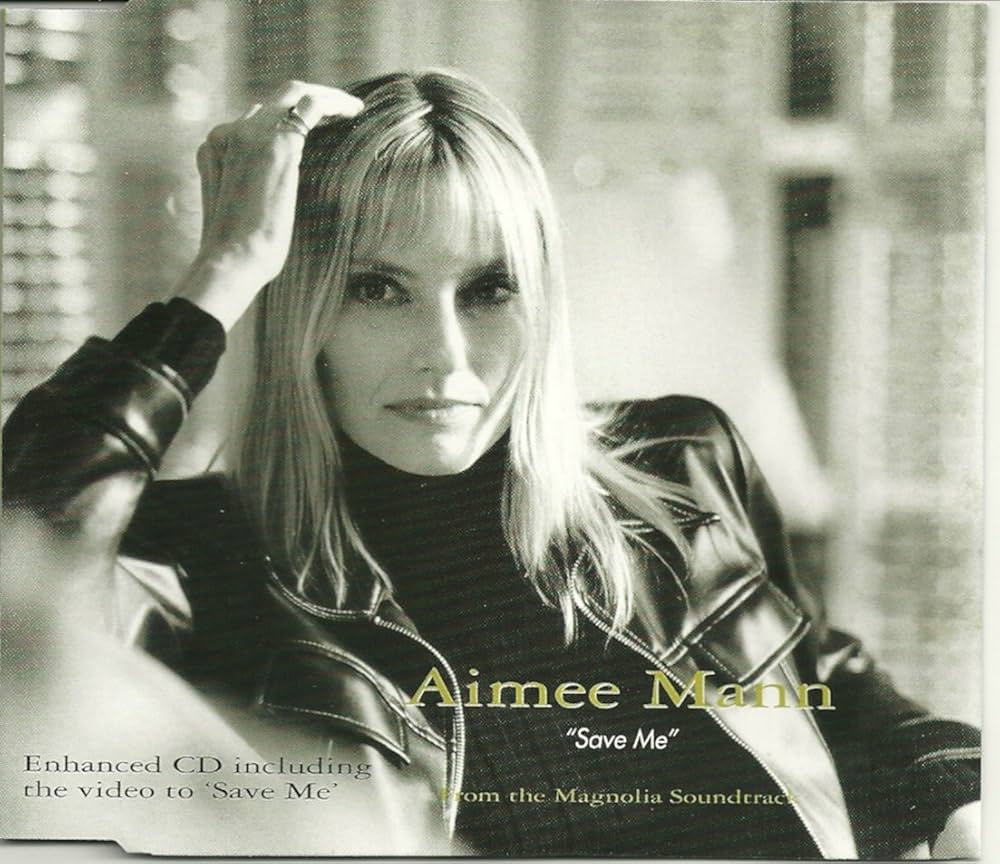
In an age where information can be erased, rewritten, or drowned in distraction, we must be the guardians of knowledge.
Digital dependence leaves us vulnerable.
If we rely solely on electronic records, we risk losing the wisdom of past generations to deletion, censorship or technological decay.
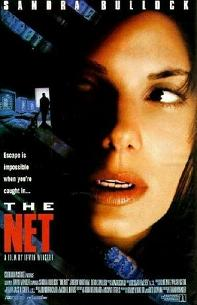
Fahrenheit 451 warned of book burning, but today, books don’t need to be burned if they are simply forgotten — replaced by digital convenience and the illusion that information is always accessible.
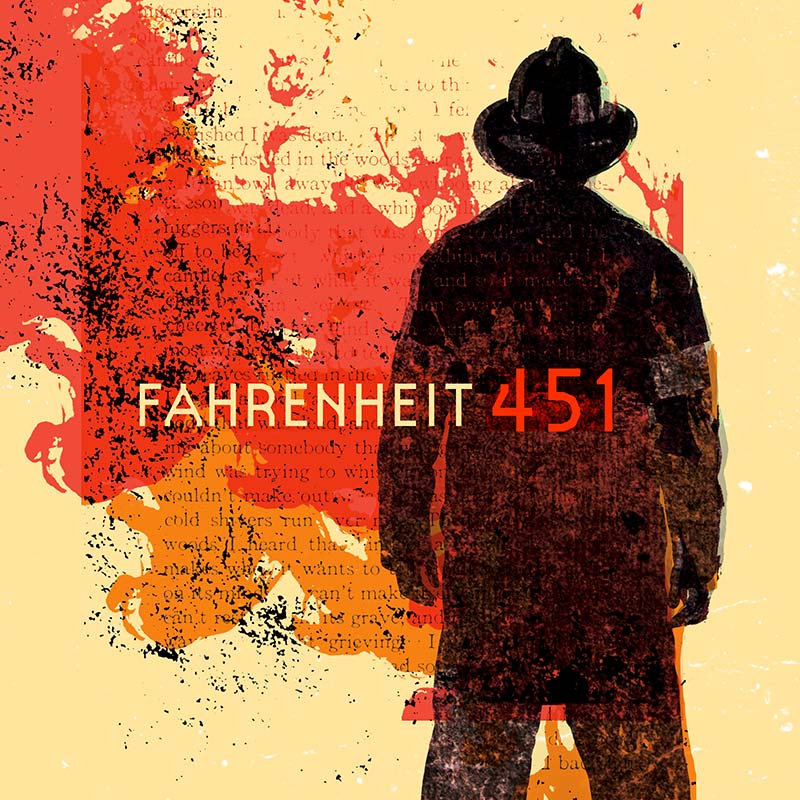
Nineteen Eighty-Four showed us how history can be rewritten.
When the past exists only in digital form, it is easier than ever to manipulate.
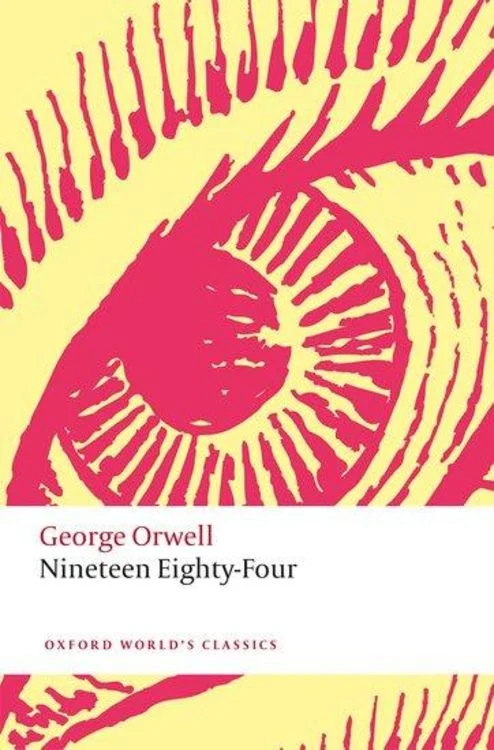
Brave New World cautioned that comfort can be a tool of control.
If we prioritize ease over effort, we may surrender our access to difficult but necessary truths.

What can we do?
Build personal libraries:
Own physical books.
Read them, lend them, protect them.
Every book on a shelf is a safeguard against digital amnesia.

Support independent bookstores and libraries:
These institutions are fortresses of knowledge.
We must keep them alive.
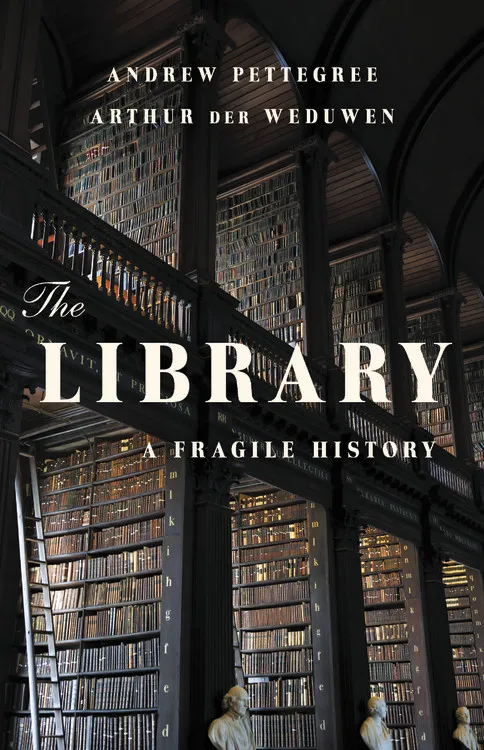
Print important documents and literature:
What is only digital can be deleted.
What is printed endures.

Challenge efforts to erase knowledge:
Question disappearing data, push for open access to information, and resist digital monopolies that control what we see.
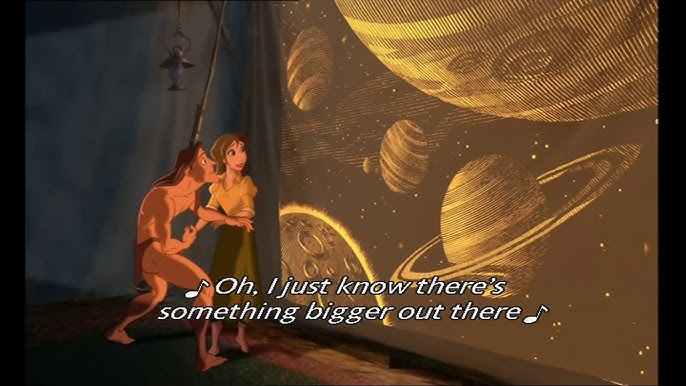
Above: Scene from Tarzan (1999)
Pass knowledge forward:
Teach younger generations the importance of books
Not just for their stories, but for their survival.

Above: The Spice Girls
Final Thought:
If we do not take responsibility for preserving knowledge, we risk losing it forever.
What we hold in our hands, we hold in trust for the future.
